This website uses cookies to ensure you get the best experience on our website. Learn more
- Australian Dollars
- British Pounds
- Canadian Dollars
- New Zealand Dollars
- South African Rands
- Swiss Francs
- U.S. Dollars
Talk to an expert +44 203 405 6666 Lines now closed
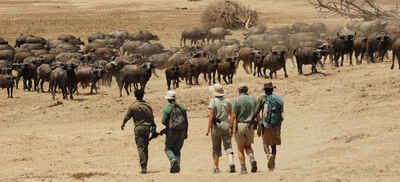
Zambia is well known for excellent guiding and top-class walking safaris.
...while some bushcamps in the South Luangwa exclusively offer walking safaris.
There's always plenty of time in between activities to relax with a drink...
...and watch the local wildlife!
From the smaller animals...
...to the biggest - there's a huge amount of game to be viewed in the different parks.
...you can find more luxurious lodges here as well...
...and every camp goes the extra mile to provide special touches to your safari.

Zambia Safaris
Like the butterfly that it resembles, Zambia is by turns flamboyant and shy – its showy attractions overshadowing more hidden gems.
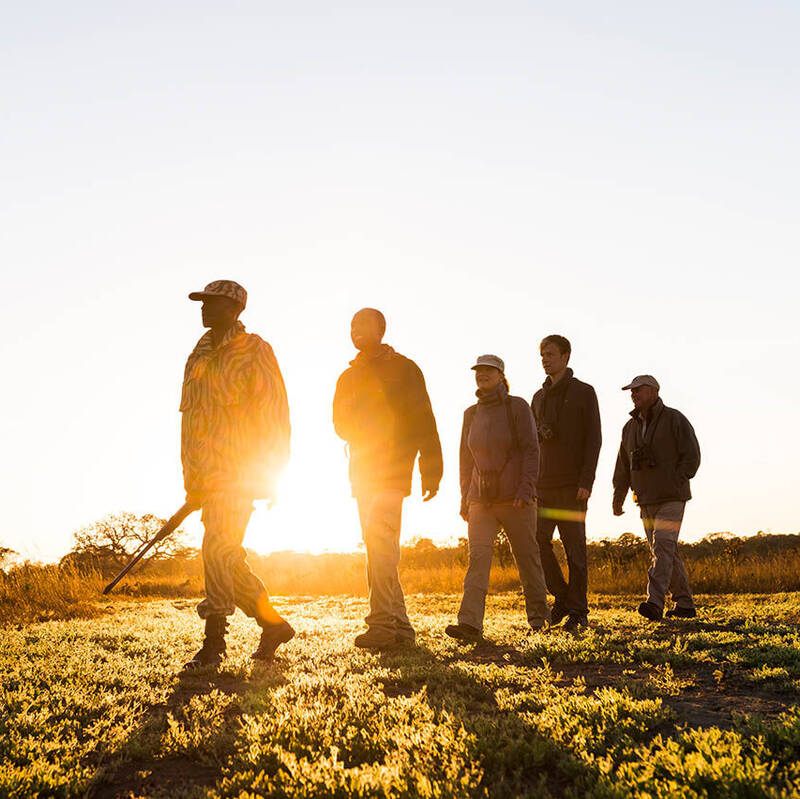
While the splendour of the Zambezi plunging over the Victoria Falls draws visitors by the thousand, lesser-known rivers tumble over rocky outcrops or cascade down deep fissures in the Rift Valley to create their own natural beauty, far from the crowds. Fanning out from the rivers comes the wildlife, protected within some of Africa’s top national parks. Firmly established are the Lower Zambezi and the South Luangwa, whose permanent water sources are a magnet for animals, especially towards the end of the dry season. Yet wildlife is not confined to these parks. Consider the raw wilderness of the vast Kafue, the remote North Luangwa, or the truly off-grid Liuwa Plain, the ancient hunting grounds of the King of Barotseland. Make your way to Kasanka for the annual bat migration, or to the Bangweulu Wetlands, whose papyrus swamps harbour the prehistoric-looking shoebill. The variety of wildlife is astonishing. Thrills, too, come in many guises. Think walking safaris with some of the best guides in the world, soaring in a microlight over Livingstone’s “Flight of Angels”, or canoeing down the Zambezi, the waters teeming with hippos and crocodiles. Then discover Shiwa Ng’andu, where rampant stone lions guard an English country house, complete with a royal lake. Or contemplate the simple stone cross marking the spot where David Livingstone’s heart is buried. Hidden gems indeed.
Zambia’s key safari areas
Top of the bill is South Luangwa National Park , which offers superb big-game safaris, day and night, plus some of Africa's best walking safaris. Explore from intimate, often privately-owned lodges with some of the best safari guides in the world.
Justifying double billing, the Lower Zambezi National Park sits beside the broad, languid Zambezi River. Come for boat trips, canoeing and great fishing, as well as game drives and walking safaris, all based at intimate safari camps fringing the riverbank.
Higher, cooler and less developed is Kafue National Park , home to species like cheetah that are rare elsewhere in Zambia. Worth including in any trip to this park is the highlight: Busanga Plains.
For a very adventurous element to a Zambian safari, consider the more remote North Luangwa National Park . Sought out by safari addicts, it has just a handful of tiny bushcamps that focus almost exclusively on walking safaris.
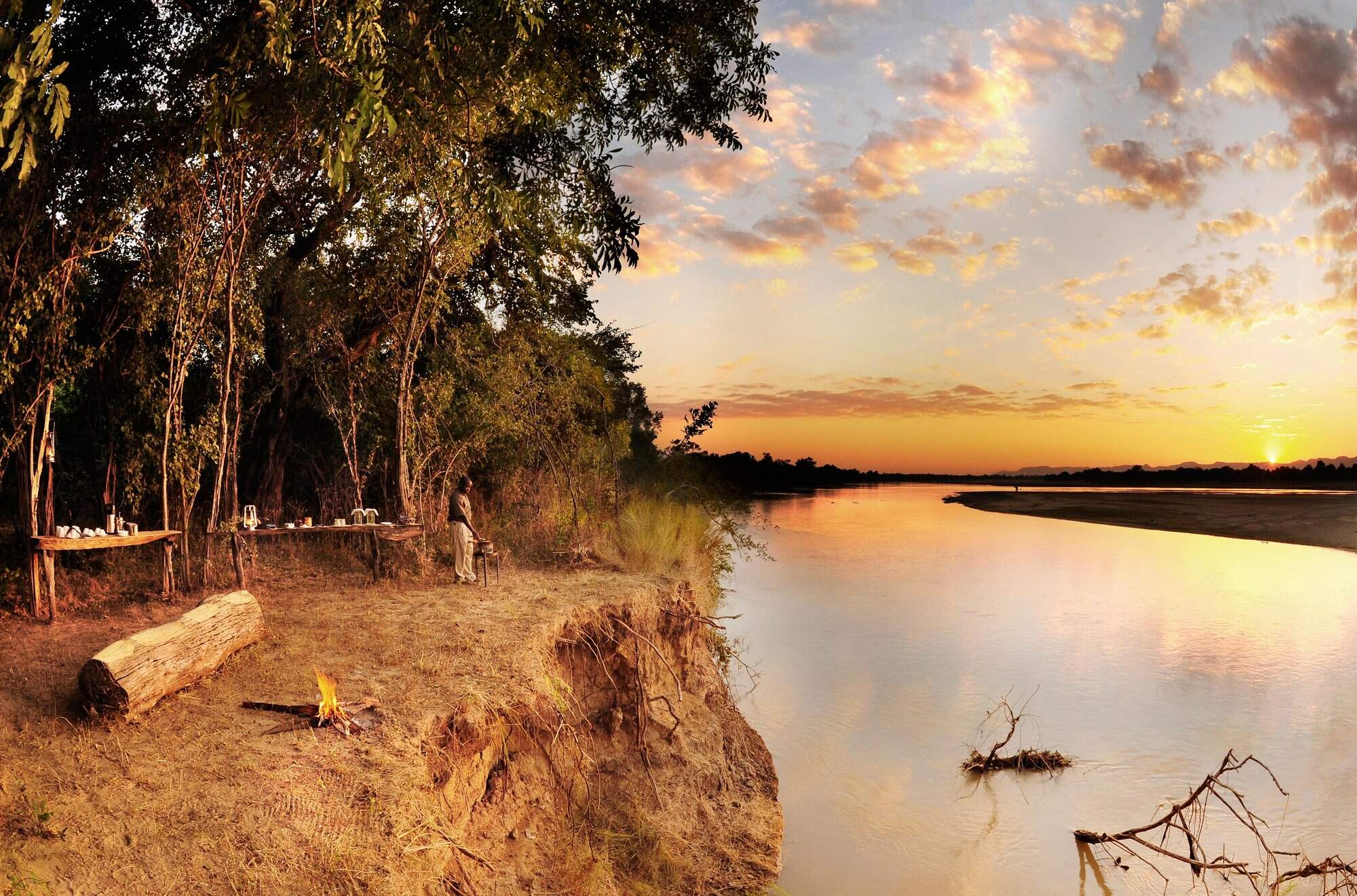
South Luangwa
39 places to stay
Plentiful wildlife and excellent birding combine with walking safaris, night drives and a range of lodges to underpin Zambia’s flagship national park.
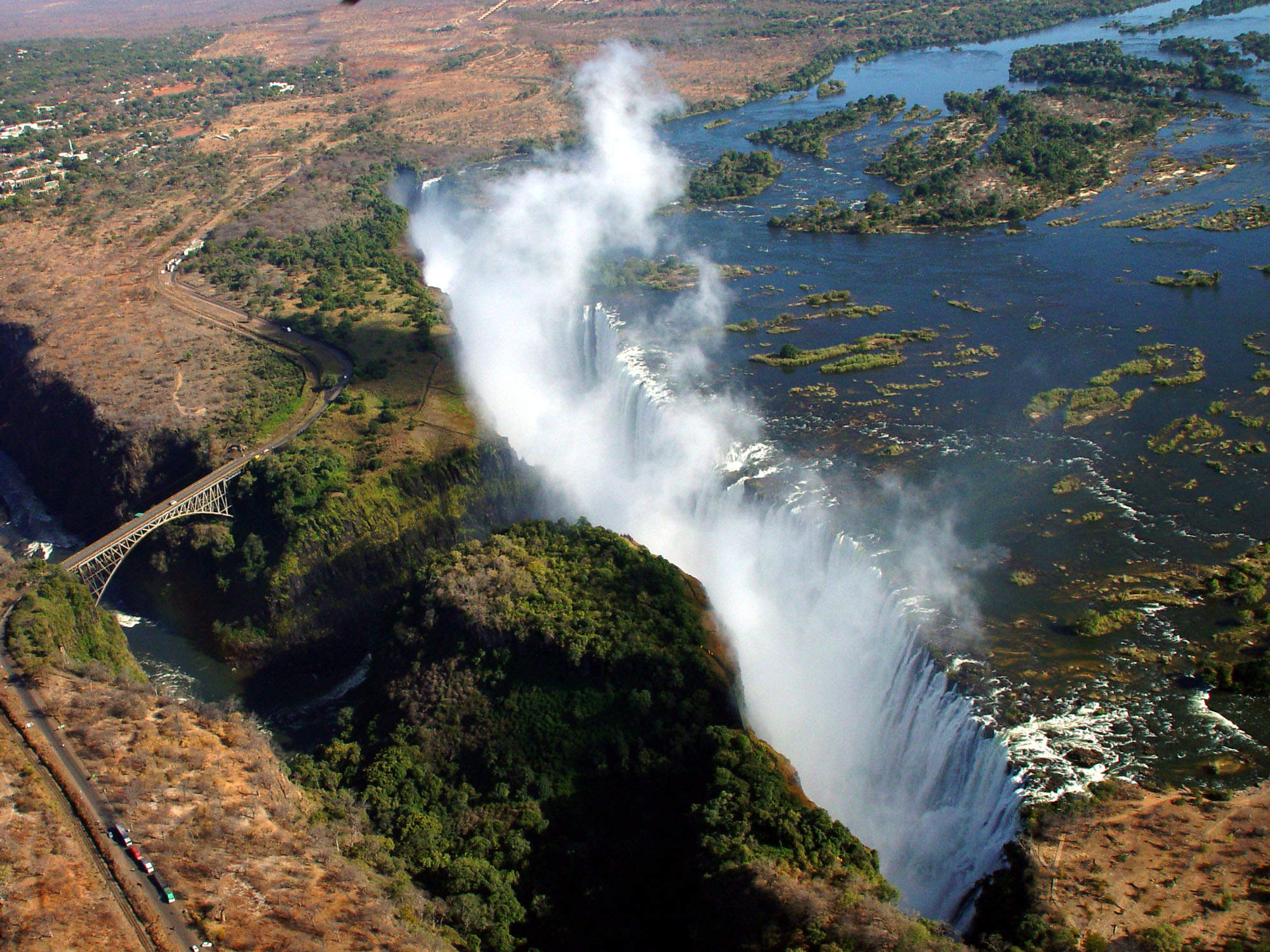
Livingstone
13 places to stay
Named after the legendary explorer, Livingstone is a must – for the Victoria Falls, for adrenalin-fuelled fun, or for sheer self-indulgence
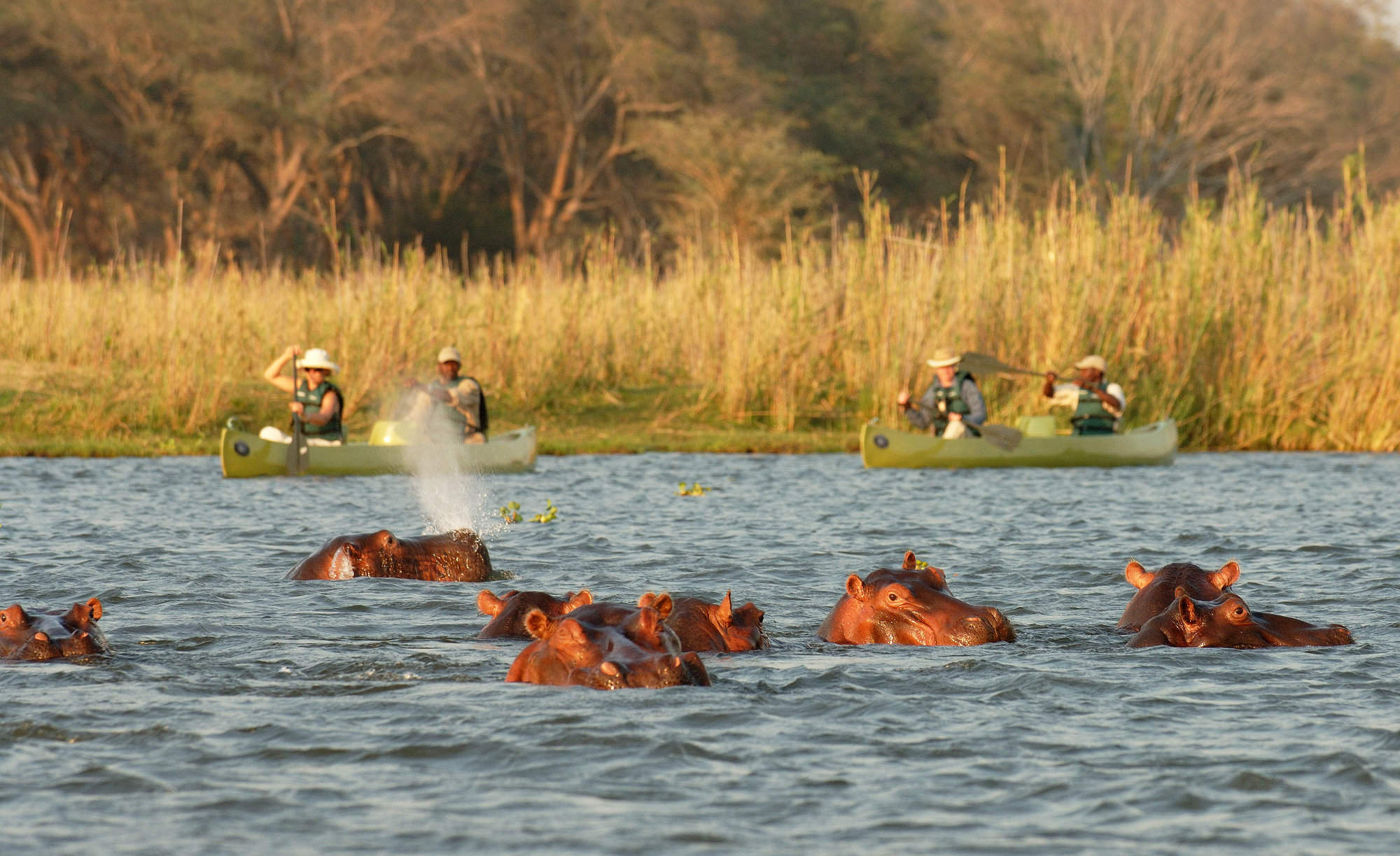
Lower Zambezi
A lifeline for wildlife, and an unbeatable backdrop for a safari, the majestic Zambezi River is the key to this exceptionally scenic park.
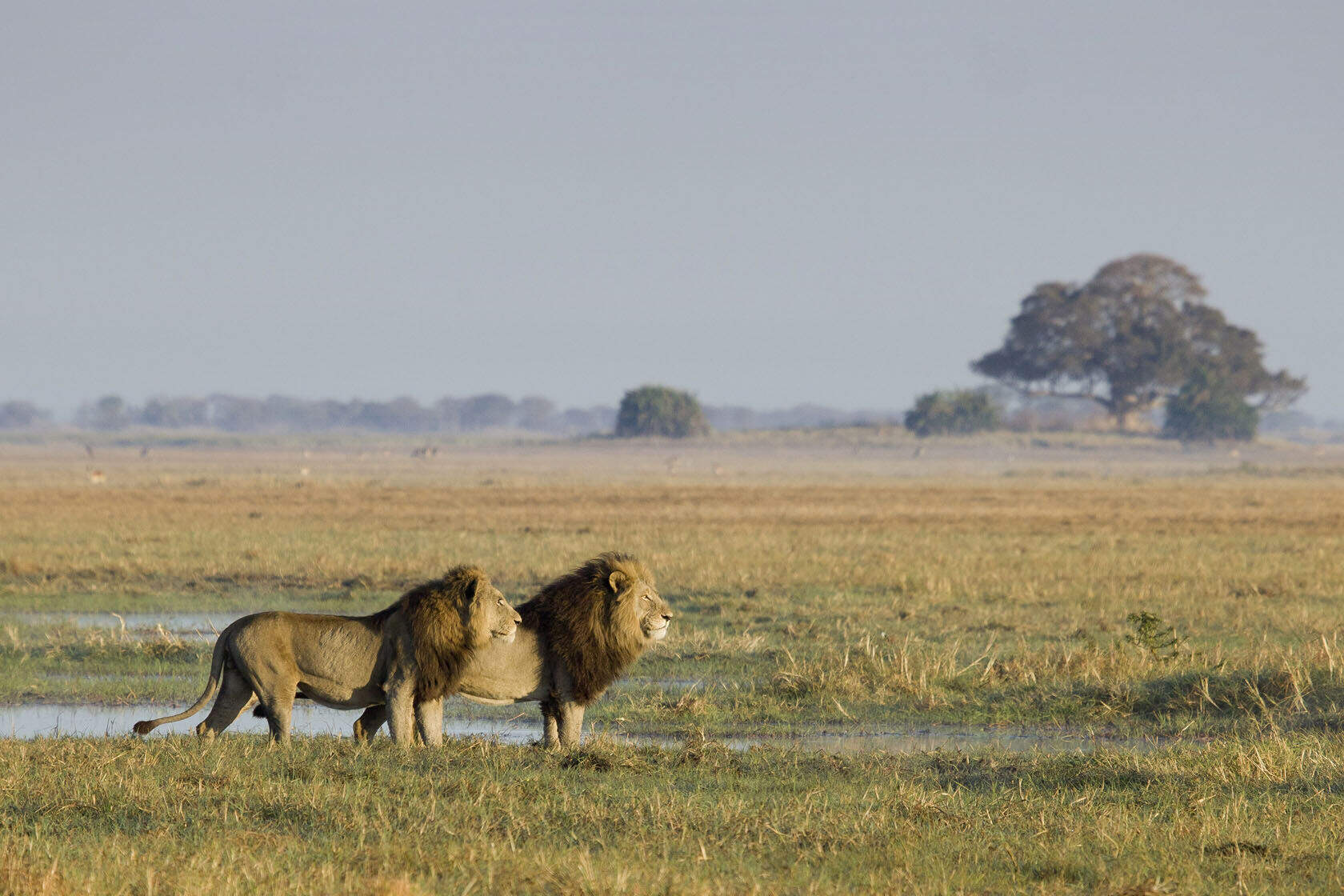
10 places to stay
Vast in size, diverse in landscape, varied in wildlife: the Kafue rewards those who are prepared to travel around.
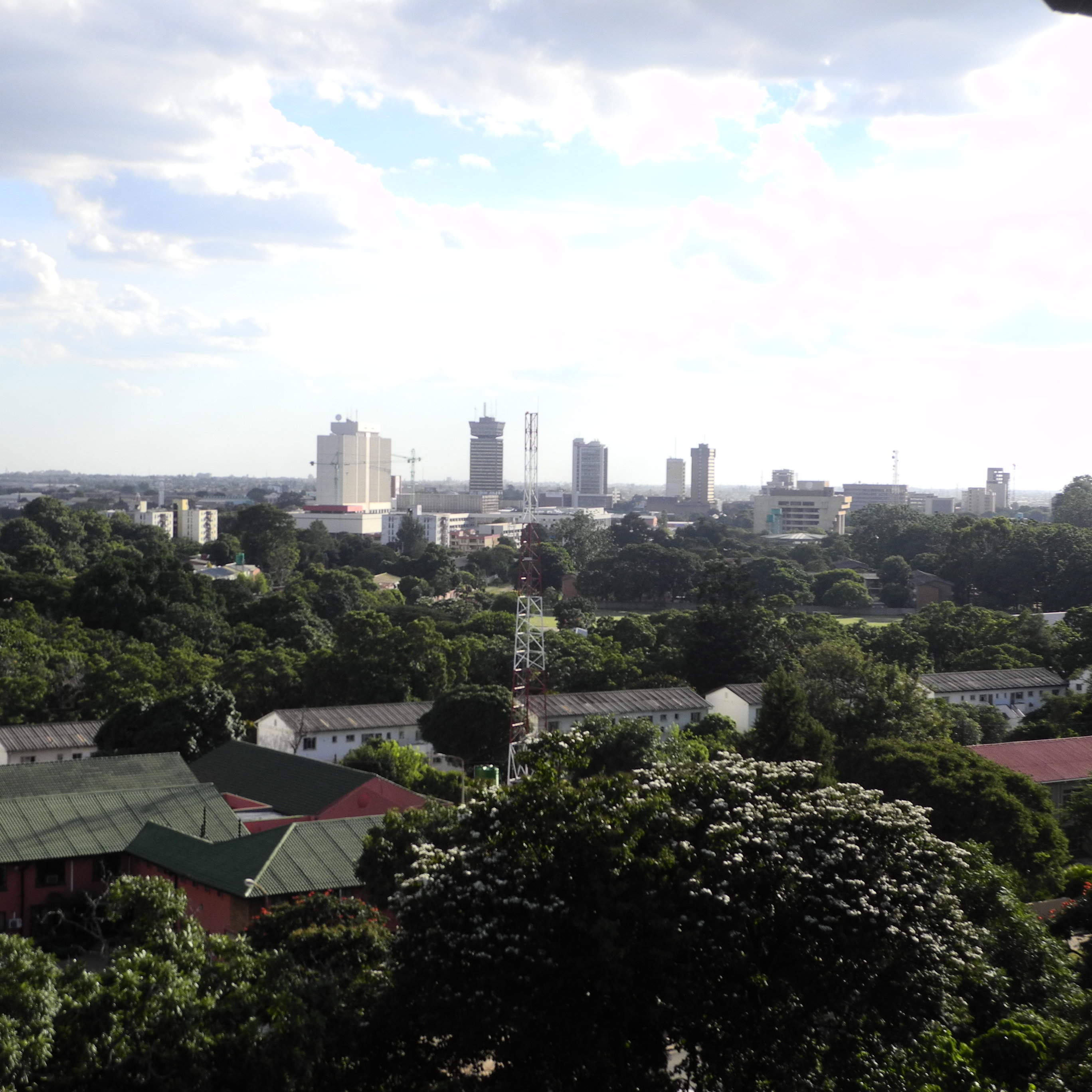
Lusaka area
6 places to stay
Overlooked by most visitors, Zambia’s capital is an intriguing blend of creature comforts and vibrant culture – as witnessed in its colourful markets.
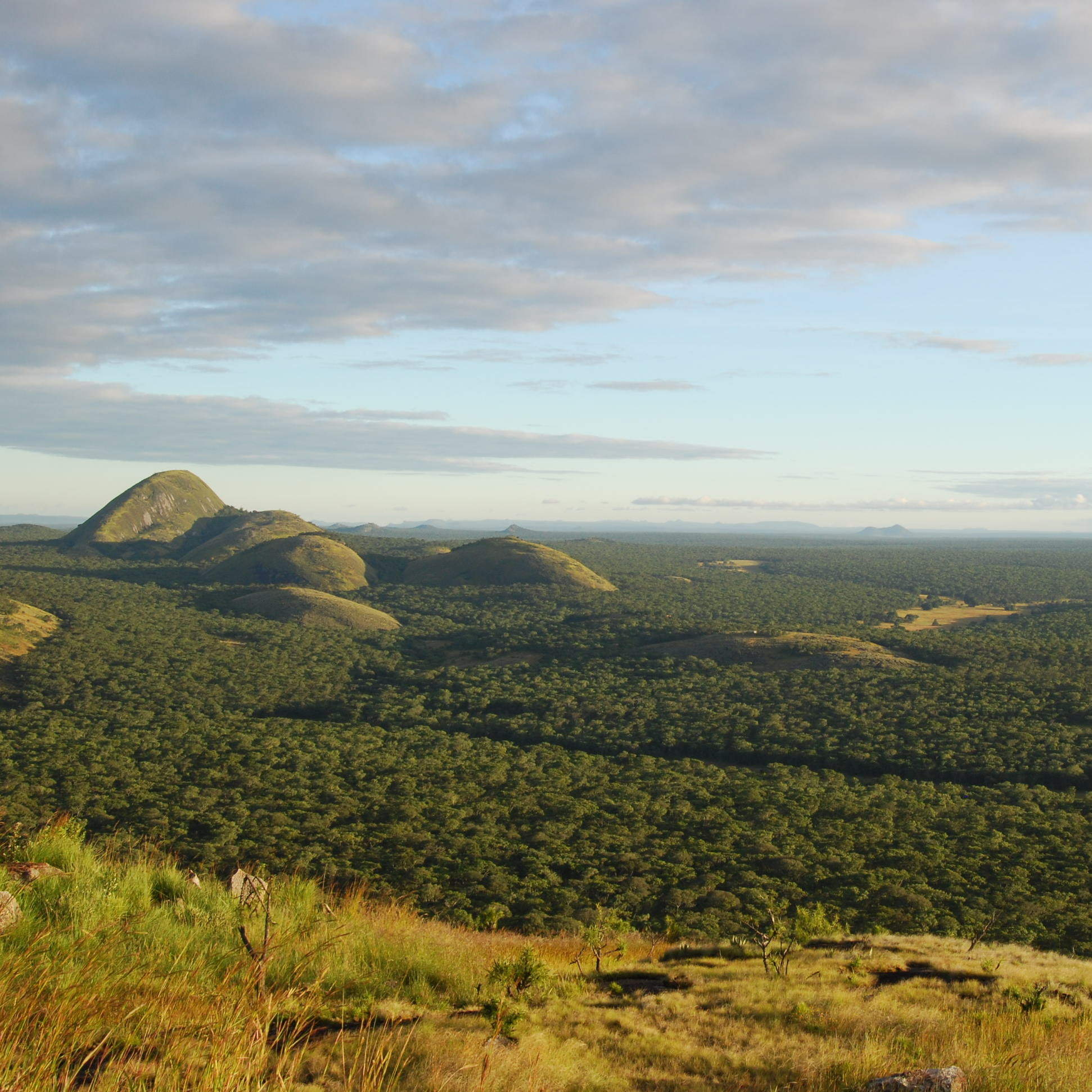
Northern Zambia
Lakes and waterfalls, bats and shoebills, even a grand stately home: the rarely visited north is a world apart from the rest of Zambia.
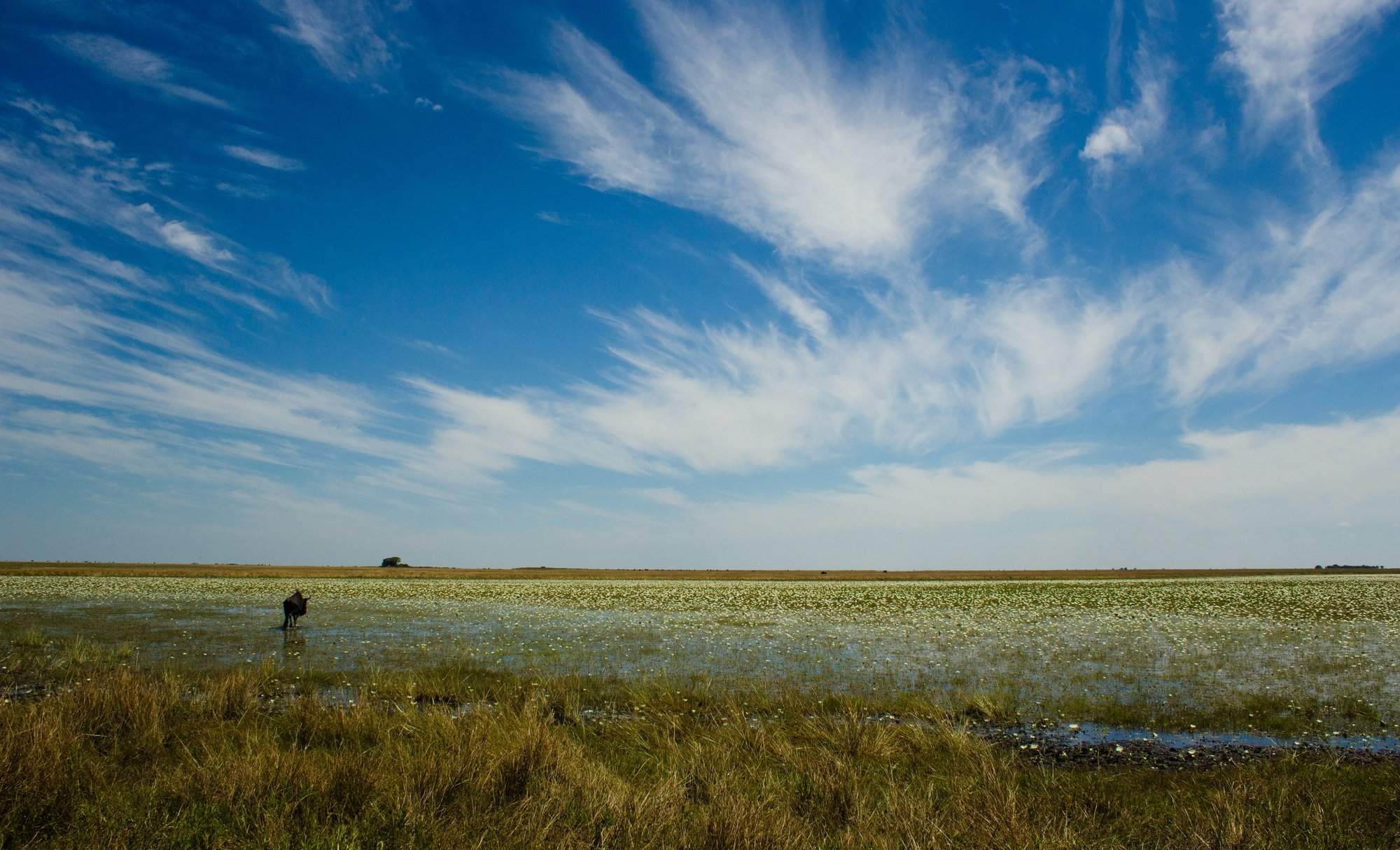
Liuwa Plain
3 places to stay
Isolated, remote and wild, Liuwa attracts wildebeest and zebra in their thousands, an extraordinarily rich birdlife – and very, very few visitors.
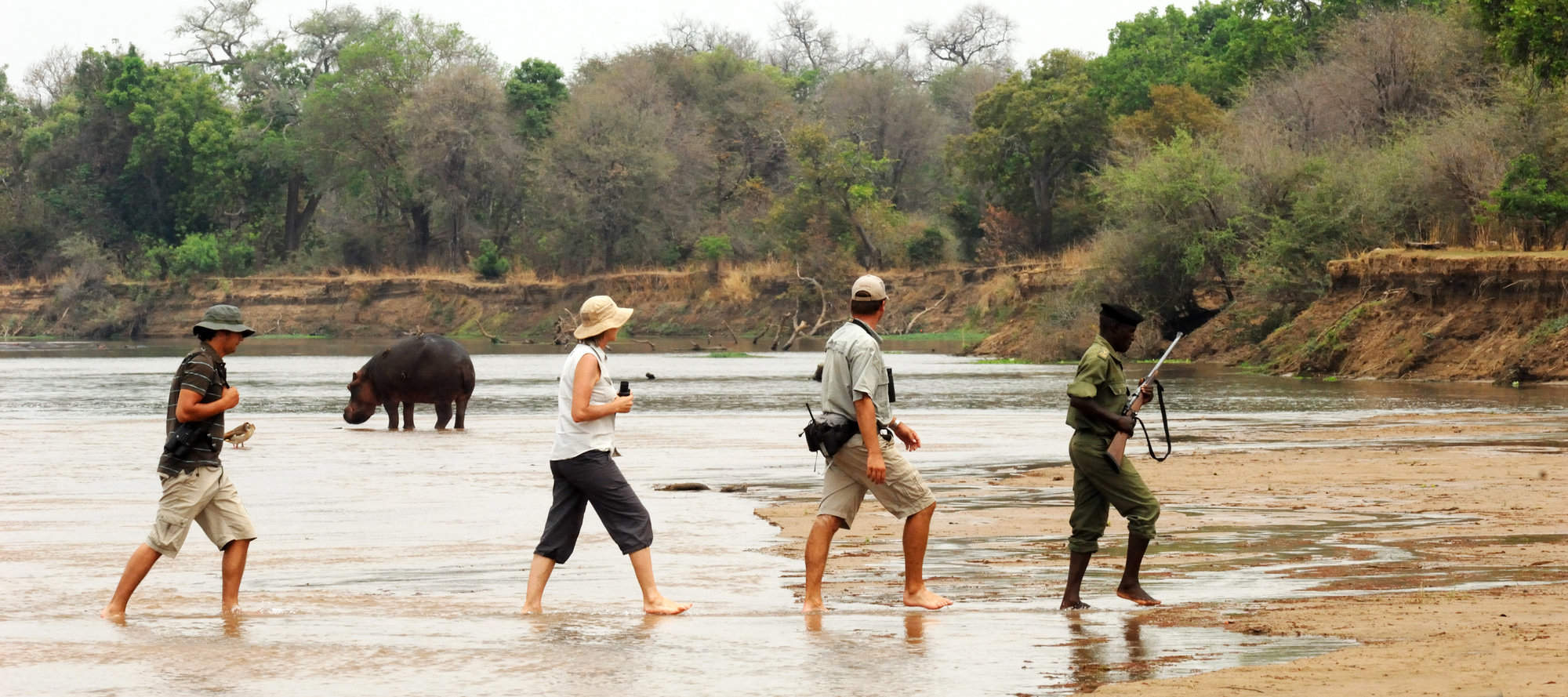
North Luangwa
2 places to stay
Wild, open, and firmly the domain of walking safaris, North Luangwa is a world away from its popular sibling to the south.
Ten top safari holidays in Zambia
To give you a taste of the options, we have pulled together ten suggestions for the perfect holiday to Zambia.
Ranging from five to 11 days, they feature all-inclusive safari lodges, excellent guiding and the incredible diversity for which Zambia is renowned – from the big predators of the national parks to adrenalin-fuelled walking safaris to the added bonus of the Victoria Falls .
As all our trips are tailor-made, these are just ideas. Whatever your interests – whether it’s taking in the country’s highlights or marvelling at the extraordinary fruit-bat migration, paddling a canoe along the great Zambezi or seeking out the remote Liuwa Plain – take a look, then give us a call and let us help you create your perfect safari.
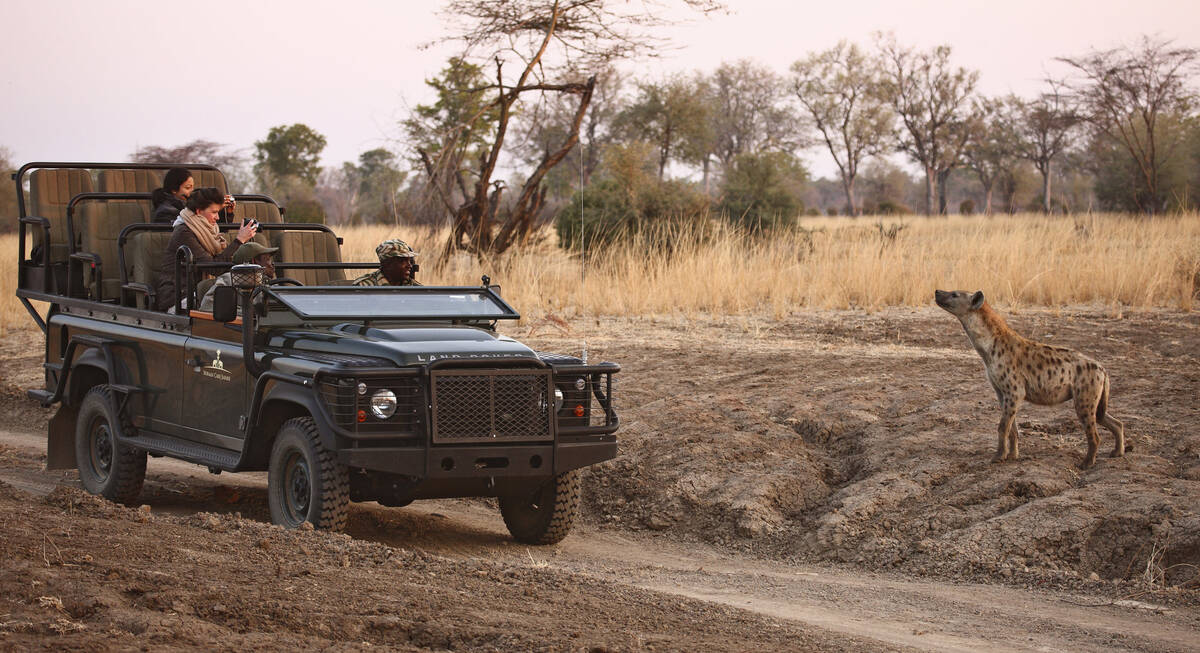
Puku Safari
11 days • 3 locations LUSAKA AIRPORT TO LIVINGSTONE AIRPORT
Discover South Luangwa’s prolific wildlife before exploring the wildly remote pans of Liuwa Plain National Park and relaxing in one of the Livingstone area’s most romantic and exclusive hideaways. A safari of luxury, style and impressive diversity.
US$13,200 - US$18,440 per person
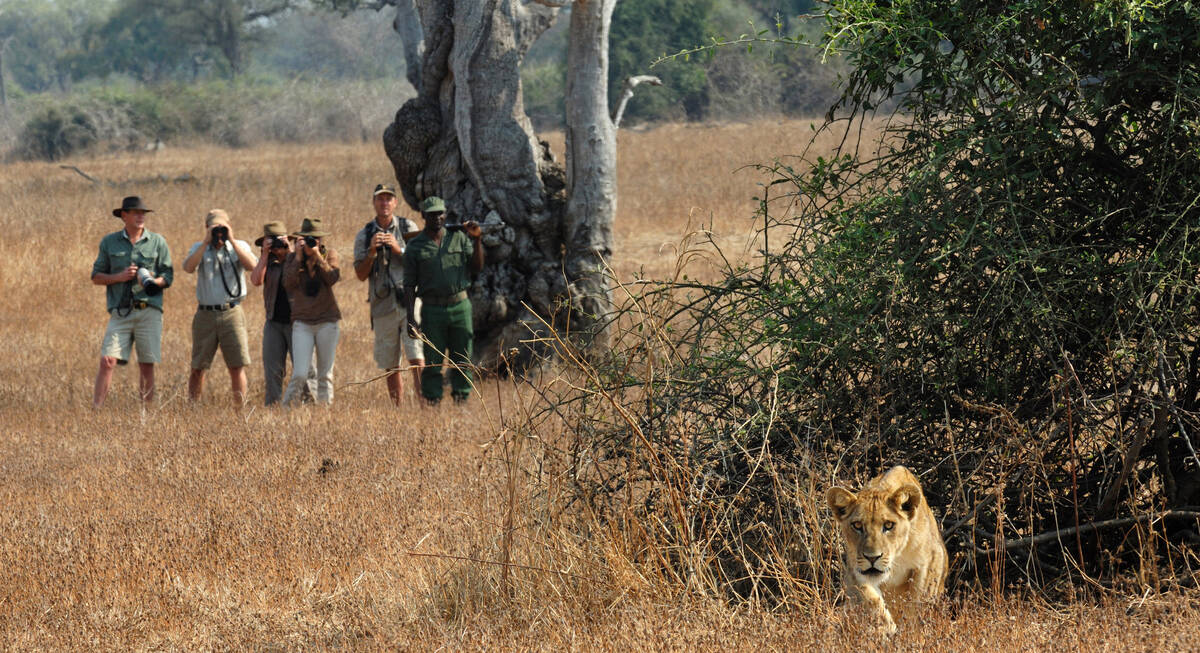
Perekani Walking Trail
10 days • 5 locations LUSAKA AIRPORT TO LUSAKA AIRPORT
Five smart but rustic bushcamps are the comfortable staging posts for this walking safari in South Luangwa. The route offers outstanding seclusion and rich wildlife with top-quality guiding throughout.
US$9,250 - US$11,500 per person
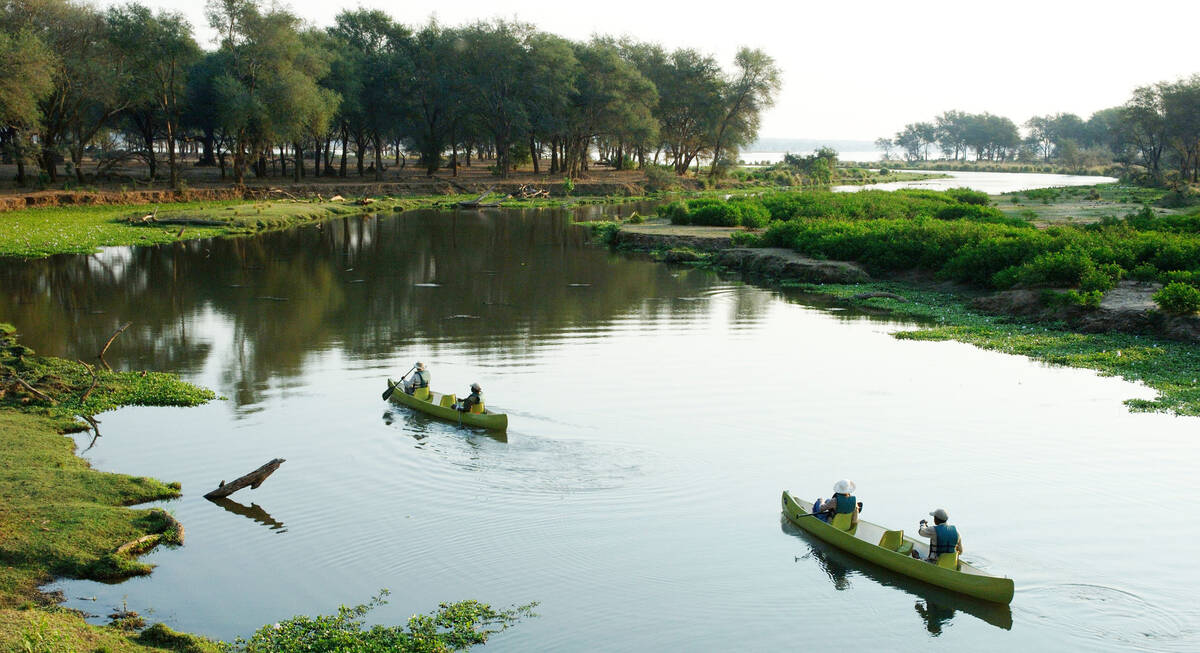
Crawshay's Zebra Safari
10 days • 4 locations LUSAKA AIRPORT TO LUSAKA AIRPORT
This superb safari combines two of Zambia’s best national parks, the South Luangwa and the Lower Zambezi. The camps are small and high quality with excellent safari guides.
US$9,760 - US$13,820 per person
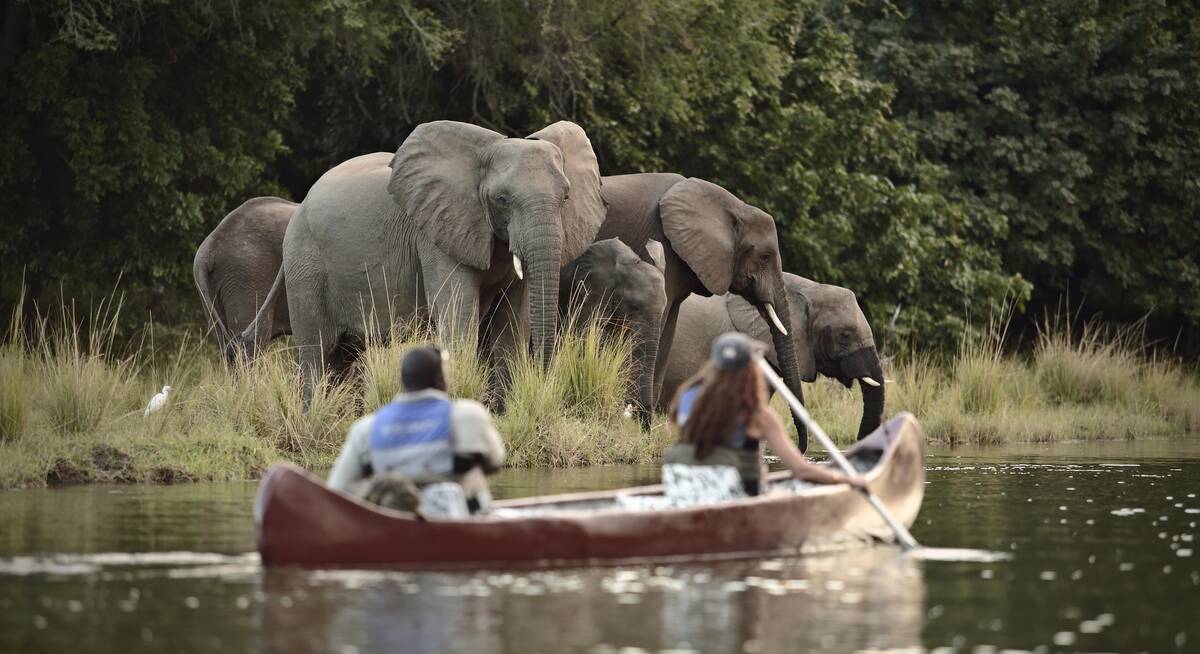
Duiker Safari
10 days • 3 locations LUSAKA AIRPORT TO LUSAKA AIRPORT
Three luxurious bushcamps in stunning riverside locations, split between the South Luangwa and Lower Zambezi national parks, offer a wide variety of expert-guided safari activities in stunning game-rich environments.
US$8,060 - US$10,020 per person
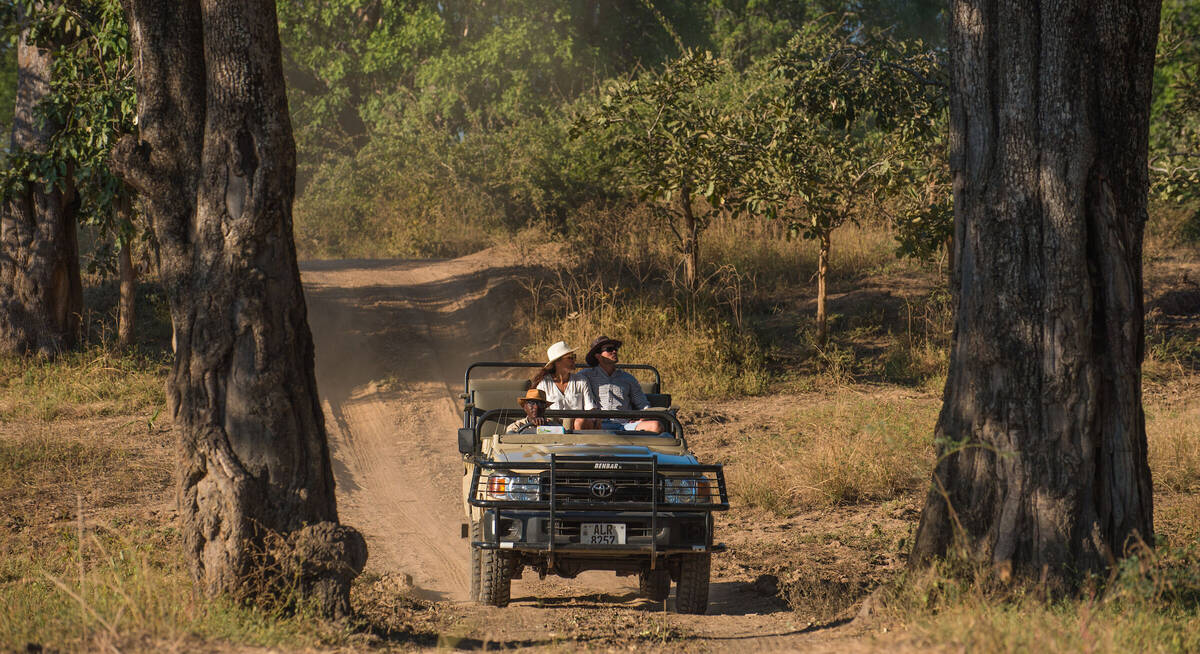
Hippo Safari
9 days • 4 locations LUSAKA AIRPORT TO LIVINGSTONE AIRPORT
Combining excellent game with aspects of remoter safari in South Luangwa, as well as the cultural delights of Livingstone, this trip also makes use of long-stay discounts, making it an excellent-value and well-rounded adventure.
US$7,480 - US$8,820 per person
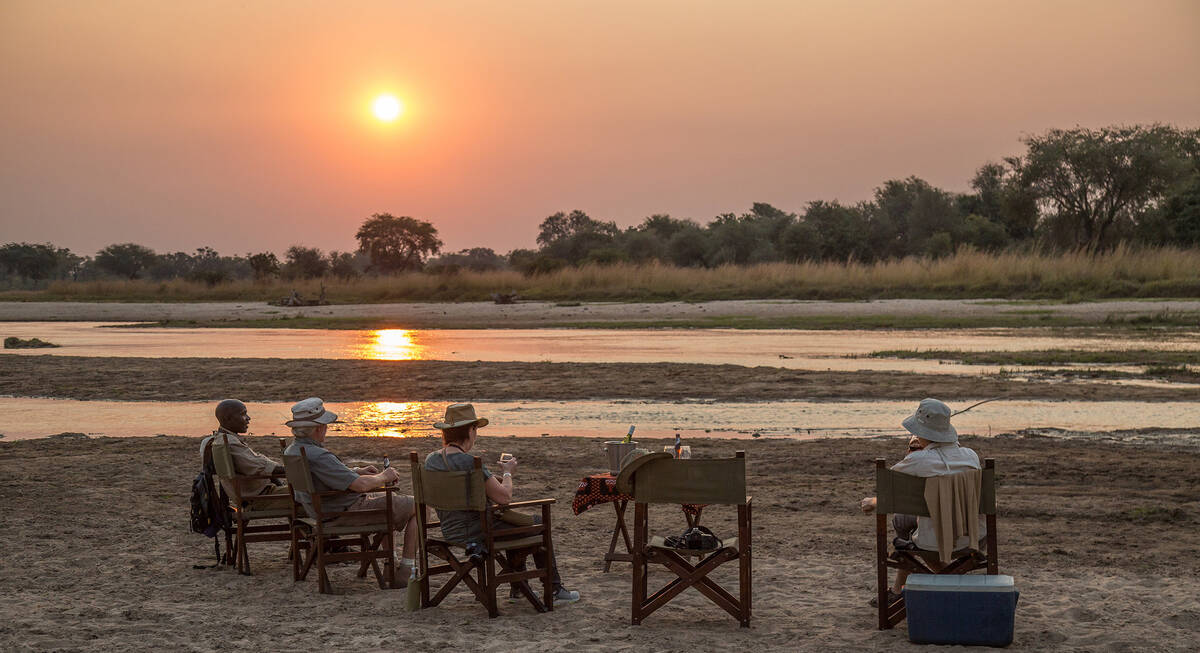
Giraffe Safari
9 days • 3 locations LUSAKA AIRPORT TO LUSAKA AIRPORT
A safari to the remotest parts of Zambia’s Luangwa Valley. Perfect for experienced safari goers and first-time Africa adventurers. Explore with expert guides whilst staying at small bushcamps.
US$8,390 - US$9,740 per person
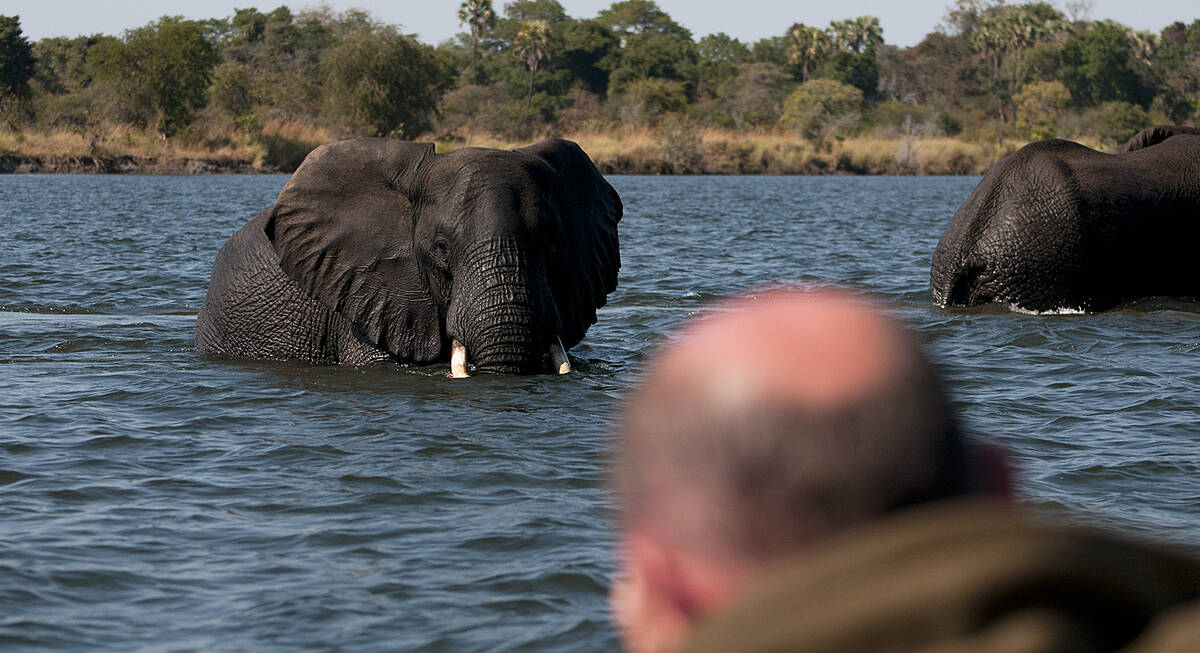
Defassa Waterbuck Safari
Stay in three intimate, owner-run camps during this exploration of Kafue National Park. Remote locations, true wilderness and a range of activities make for a real adventure off the beaten track.
US$8,240 - US$8,670 per person
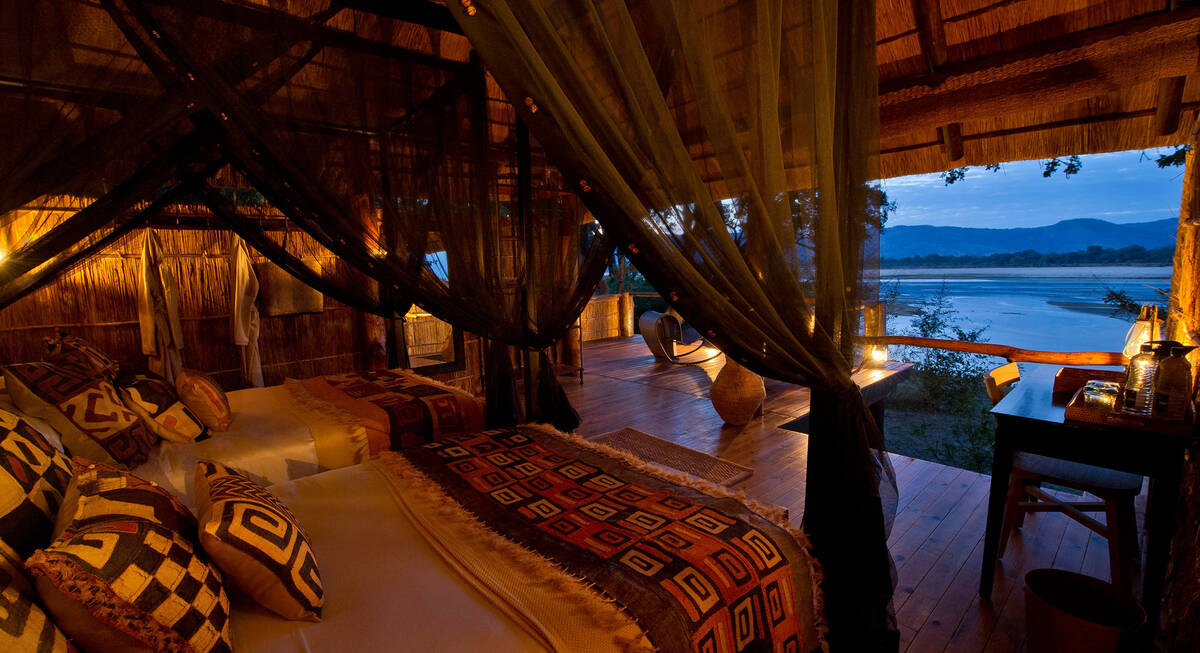
Civet Safari
9 days • 4 locations LUSAKA AIRPORT TO LUSAKA AIRPORT
Combining three intimate bushcamps in the quieter south of the South Luangwa, this safari will appeal to those looking for an interesting mix of walking and vehicle safari.
US$7,480 - US$9,230 per person
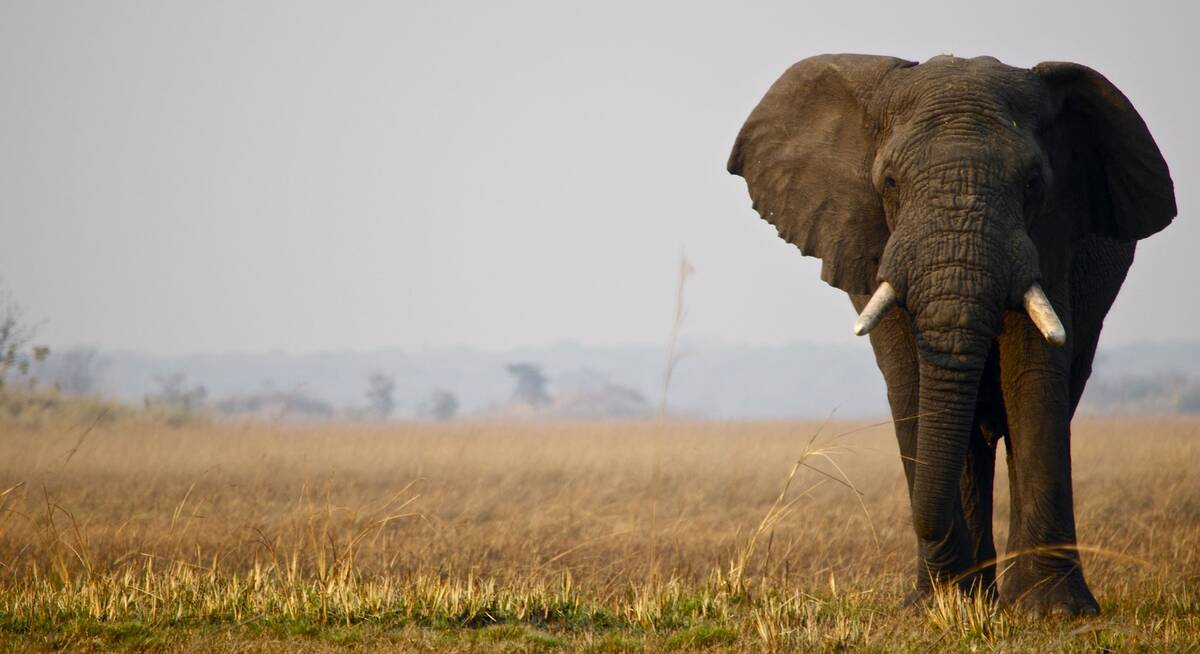
Purple Roller Safari
8 days • 2 locations LUSAKA AIRPORT TO LUSAKA AIRPORT
Explore the varied habitats and terrain of Kafue National Park with stays in two wonderfully remote bushcamps: sister camps that offer access to both the centre of the park and the wildlife-rich Busanga Plains.
US$8,790 - US$9,320 per person
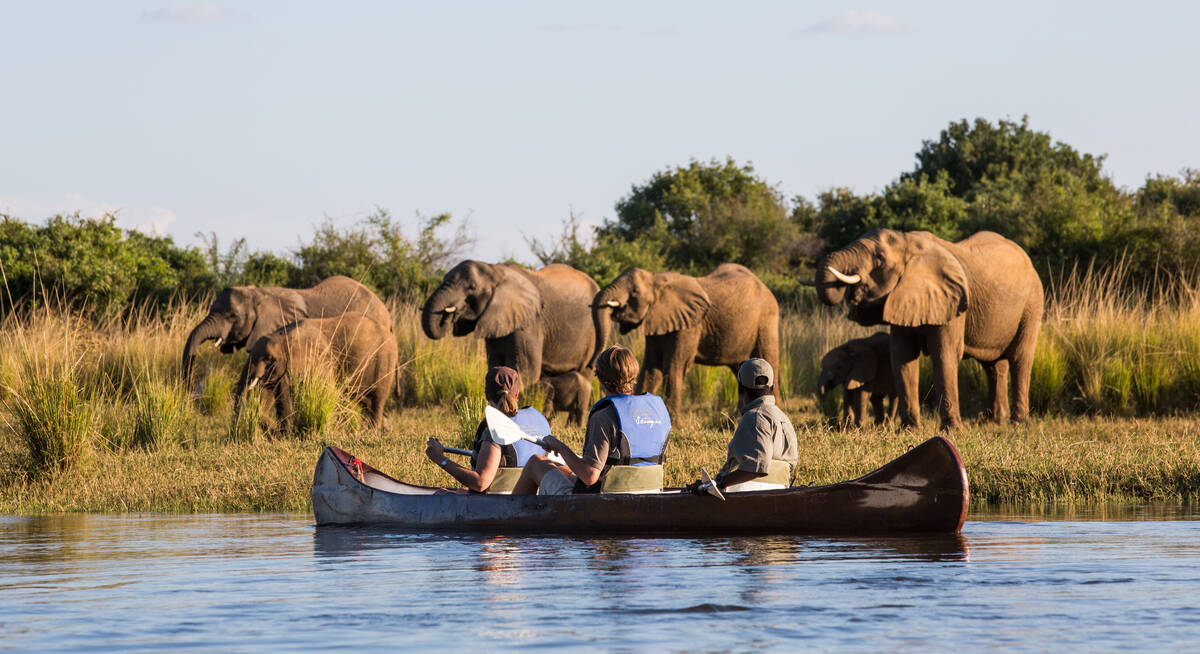
Greater Bushbaby Safari
The perfect safari for a family or group of friends during which to create everlasting memories. Visit Zambia’s two most productive wildlife parks staying in four-bedroom houses, designed in a unique and fun way.
US$9,400 - US$12,260 per person
View all holidays
Our travellers' 10 most recent Zambia safari reviews
We place considerable store on feedback from our travellers. Many of them kindly send us reviews of their trips and the places that they visit, and these in turn become an important part of the way we work.
They help us and our travellers to plan their trips; they're integral to keeping us bang up to date; and they're eagerly read by the lodges in Africa, who appreciate honest and constructive feedback that is guaranteed to be genuine.
All reviews of our Zambia holidays are published in full without us editing them. See all 1314 safaris reviews here , or click on a card below to read one of our most recent reviews in full.
Arrived 25 Apr 2024, 11 nights
"My Apr 2024 trip"
Overall rating: Excellent
Arrived 5 Aug 2024, 15 nights
"Zambia safari experiences, 2024"
Arrived 30 Jul 2024, 18 nights
"Our Jul, Aug 2024 trip"
Arrived 2 Aug 2024, 12 nights
"My Aug 2024 trip"
Arrived 2 Aug 2024, 14 nights
Arrived 28 Jul 2024, 15 nights
"My Jul 2024 trip"
Arrived 21 Jul 2024, 15 nights
"Return to Zambia 2024"
Arrived 18 Jun 2024, 15 nights
"Jun 2024 South Luangwa trip"
Arrived 11 Jul 2024, 17 nights
"My Jul 2024 Luangwa trip"
Arrived 24 Jun 2024, 11 nights
"My Jun 2024 trip"
See all Zambia reviews
Our travellers' wildlife sightings in Zambia
We suggest to our travellers that they keep a record of their sightings of key species, including the big cats, wild dog , buffalo , elephant , giraffe , hippo , hyena, zebra and various antelope.
Many of them find this an enjoyable part of their trip, and are happy to share their information with us after their safari adventure.
In turn, their feedback helps us to build an unparalleled picture of when and where Zambia’s key wildlife species are to be found: citizen science in action. Read how this survey works . Analysing this information enables us to present a unique picture of the likely chance of sighting these key animal species on your Zambia safari. Click on a species to find out more. For much more detail, see our interactive map showing the best locations for wildlife species in Zambia.
96% success
95% success
94% success
89% success
86% success
84% success
79% success
78% success
43% success
40% success
30% success
13% success
12% success
10% success
Where to find Zambia’s key wildlife species
Whenever our travellers to Zambia tell us of their wildlife sightings, it helps to improve our understanding of where and when you’re more likely to see the key animal species.
You’ll find the results of this research in many ways on our website – under the individual camps, on our dedicated wildlife pages, on our maps, and on our individual holiday pages.
So whether you’re in search of giraffe or wild dogs , or the elusive leopard is high on your wishlist, we can help. Take a look at our data-driven maps to find out the best places to seek them out amongst the abundant wildlife that roams Zambia’s national parks.
For a map of the best camps and lodges for sightings of an individual species, click on a card:
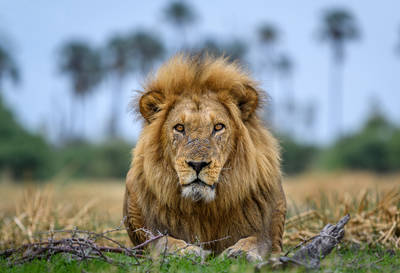
Panthera leo
Lions are at the top of the food chain and also most safari wish-lists, but with their numbers falling fast, any encounter with these majestic apex predators always feels like a privilege.
81% SUCCESS
3,214 sightings from 3,981 observations
Where to see lion in Zambia
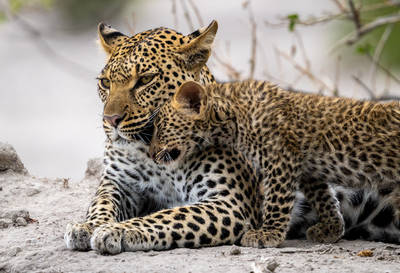
Panthera pardus
The most numerous of Africa’s big cats, leopard occur across many habitats, from wild tracts to populated areas. Their grace and their elusive nature make them a unique safari drawcard.
47% SUCCESS
2,064 sightings from 4,417 observations
Where to see leopard in Zambia
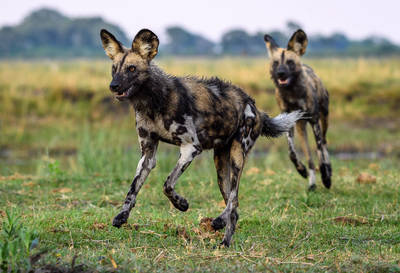
Lycaon pictus
African wild dogs are among the continent’s most compelling animals. Much misunderstood, these rare, tie-dyed canids are amazingly efficient hunters with a fascinating social life.
31% SUCCESS
930 sightings from 2,953 observations
Where to see wild dog in Zambia
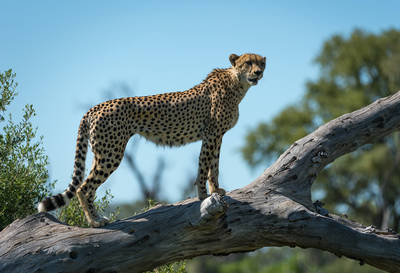
Acinonyx jubatus
The cheetah is the fastest land animal and the only cat that hunts by pure speed. Found largely in open grasslands, its slim, elegant form is today an increasingly rare sight.
33% SUCCESS
1,098 sightings from 3,364 observations
Where to see cheetah in Zambia
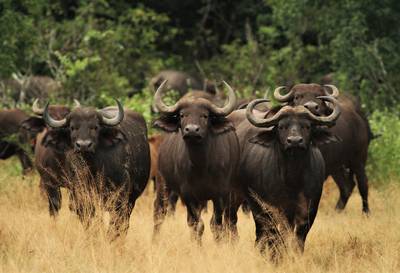
Syncerus caffer
One of the ‘Big Five’, buffalo earned a fearsome reputation in hunters’ tales. By contrast, big herds of these sociable bovids are placid, but mount formidable defences against predators.
83% SUCCESS
2,728 sightings from 3,301 observations
Where to see buffalo in Zambia
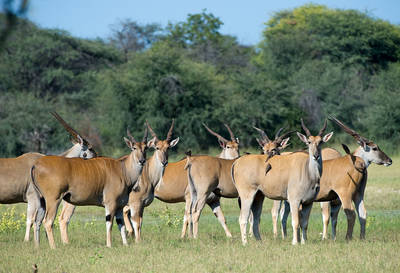
Taurotragus oryx
Africa’s largest antelope, eland are culturally important from prehistoric rock art to modern game farms. Though widespread, they are also shy so sightings are uncommon and often fleeting.
48% SUCCESS
1,526 sightings from 3,153 observations
Where to see eland in Zambia
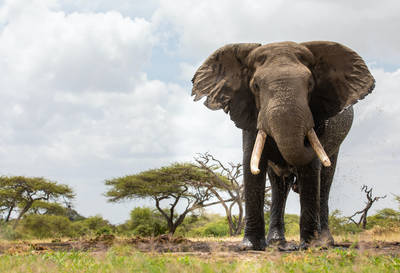
Loxodonta africana
By far the biggest of the so-called Big Five – indeed, the largest land animal on the planet – the elephant shapes the very landscape it inhabits and is a defining presence on any safari.
91% SUCCESS
3,876 sightings from 4,268 observations
Where to see elephant in Zambia
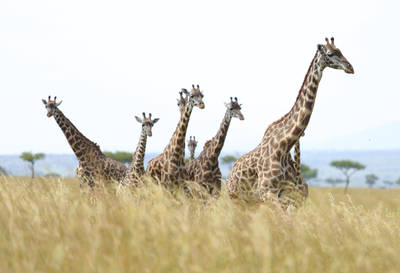
Giraffa camelopardalis
The world’s tallest land mammal, giraffes are herbivores which have evolved many unique adaptations. Their iconic outlines tower above the bush in many of Africa’s wildlife areas.
86% SUCCESS
3,723 sightings from 4,339 observations
Where to see giraffe in Zambia
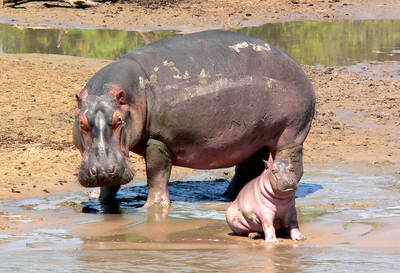
Hippopotamus amphibius
The territorial calls of the hippo create a signature soundtrack to Africa’s rivers & wetlands. Despite an endearing smile, this aquatic herbivore has a notoriously aggressive disposition.
89% SUCCESS
2,838 sightings from 3,178 observations
Where to see hippo in Zambia
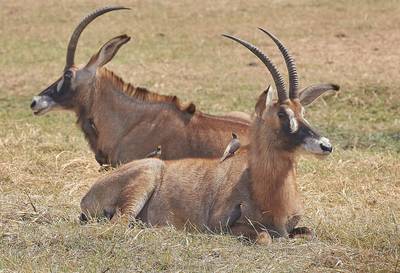
Roan antelope
Hippotragus equinus
Africa’s second largest antelope and one of its most handsome, with a powerful build and distinctive markings, roan are wary of people, but renowned for their bravery against predators.
24% SUCCESS
514 sightings from 2,178 observations
Where to see roan antelope in Zambia
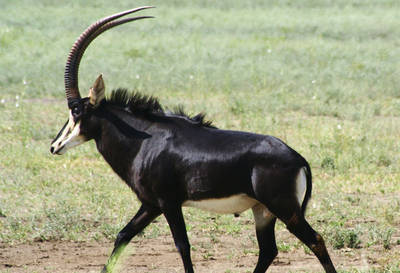
Sable antelope
Hippotragus niger
Perhaps Africa’s most beautiful antelope, sable are renowned for their combative nature, even holding off lions. Shy and restricted in range, sightings of sable are always special.
23% SUCCESS
494 sightings from 2,182 observations
Where to see sable antelope in Zambia
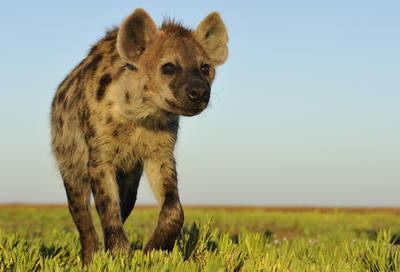
Spotted Hyena
Crocuta crocuta
The spotted hyena may be thought of as ‘ugly’ and ‘cowardly’. In fact, this versatile and intelligent carnivore is one of Africa’s most fascinating and warrants attention on any safari.
55% SUCCESS
2,301 sightings from 4,206 observations
Where to see spotted hyena in Zambia
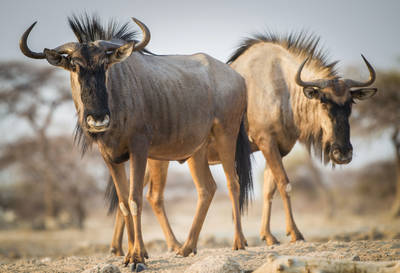
Connochaetes sp.
Superficially bovine in appearance, wildebeests are known for their spectacular migrations sometimes in huge numbers. These resilient animals are some of Africa’s most successful herbivores.
67% SUCCESS
2,625 sightings from 3,907 observations
Where to see wildebeest in Zambia
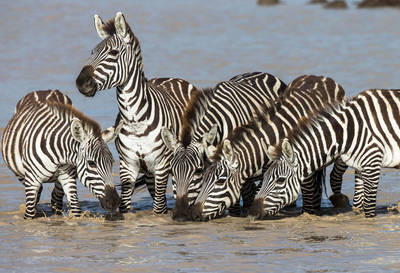
The zebra is a quintessential African animal: the horse in stripy pyjamas at the end of every child’s A–Z. There are three species, of which the plains zebra is much the most common.
84% SUCCESS
4,074 sightings from 4,851 observations
Where to see zebra in Zambia
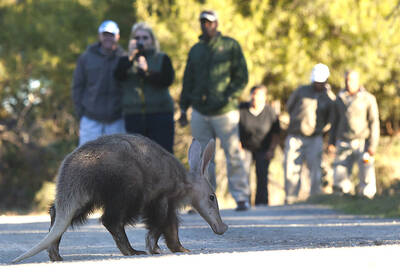
Orycteropus afer
The aardvark is one of Africa’s most bizarre and enigmatic animals. A shy, nocturnal termite-eater, signs of its presence may be scattered about the bush whilst sightings remain elusive.
75 sightings from 3,520 observations
Where to see aardvark in Zambia
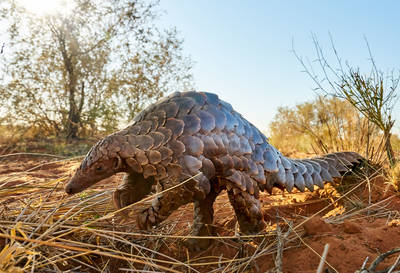
Smutsia sp.
Pangolins appear to be more pine cone than animal in their unique armoury of scales. These nocturnal, ant-eating oddities are not only highly elusive but also increasingly rare.
57 sightings from 3,542 observations
Where to see pangolin in Zambia
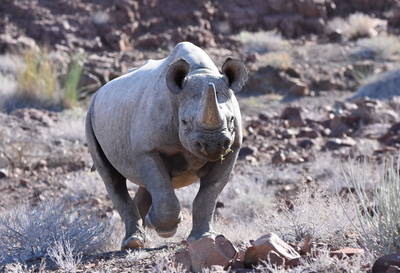
Black Rhino
Diceros bicornis
The black rhino is the smaller and rarer of Africa’s two rhino species but has the more fearsome reputation. Shy and heavily persecuted, it tends to stick to cover.
30% SUCCESS
651 sightings from 2,167 observations
Where to see black rhino in Zambia
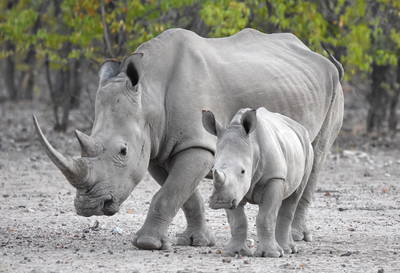
White Rhino
Ceratotherium simum
The white rhino is the largest and most numerous of the world’s five rhinoceros species. They are larger, easier to see and generally more approachable than the black rhino.
43% SUCCESS
518 sightings from 1,209 observations
Where to see white rhino in Zambia
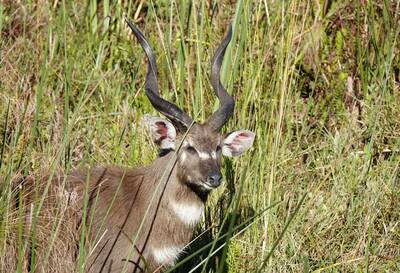
Tragelaphus spekii
The sitatunga is the most aquatic of Africa’s antelopes and specially adapted to its swampy habitats. Though widespread across Africa, only a handful of places offer reliable sightings.
18% SUCCESS
66 sightings from 358 observations
Where to see sitatunga in Zambia
When to go on a Zambia safari holiday
Most visitors to Zambia come between June and October, when the land is drying out after the rains and animals are seeking out water.
With days becoming hotter, and relatively cool nights, this is the most expensive time of year for a safari, and the only time for a walking safari at one of the small walking bushcamps.
November, April and May, the so-called “shoulder” season months when the weather is less settled, are quieter in terms of both visitors and wildlife, and costs are generally more moderate.
At the other end of the scale is the rainy or “emerald” season, broadly in December, January and February, when rates at camps that remain open are usually lower. At the peak of bird migration season, and with clear light, this can be an ideal time for birders and photographers .
Read more about Zambia’s weather and climate here.
Zambia in January
At the peak of Zambia’s rainy season, you can expect heavy rainfall for a few hours most days, with sunny spells in between. Temperatures remain high, reaching over 30ºC, with high humidity. The rainfall is yet to make a significant difference to the Victoria Falls, and the flow of water here remains low. The landscapes are green and lush and the air crystal clear, but with the abundance of water the wildlife disperses, and the thick bush can restrict sightings. It severely limits walking safaris too. Migrant birds boost the species count at this time. With seasonal rivers in flood and dirt roads and airstrips unusable, many camps in Zambia become inaccessible, and close. Only a few lodges in the central Kafue and the South Luangwa remain open. Few people visit in January, so the parks are incredibly quiet and the camps charge their lowest rates.
- Peak of rainy season: hot & humid, with rain for a few hours most days
- Majority of camps closed throughout the month
- Bush incredibly green & lush, with clear air – great for photography
- Big game dispersed & thick bush makes sightings difficult
- Very few visitors: the cheapest time to visit
This is not a great time to visit
Weather in January
Zambia in February
February remains in the heart of the rainy season, with dramatic thunderstorms delivering a few hours of rain most days, interspersed with clear sunny skies. There is still an abundance of water in the environment, dispersing game and closing camps. With the thick bush, game viewing is limited and walking safaris restricted, but the swollen rivers allow some activities that would be unavailable in the dry season, such as boat trips on the Luangwa River. After a couple of months of rain, water will once more be making its way to the Zambezi River, and the flow of water over the Victoria Falls will start to pick up. Visitor numbers and costs at the few open camps remain low.
- Peak of rainy season: hot & humid with rain for a few hours most days
- Most camps closed throughout the month
- Bush lush & green: good for photography but poor for game viewing
- Very few visitors, & the cheapest time to visit
- Water levels at Victoria Falls still low, but starting to pick up
Weather in February
Zambia in March
March is the last month of the rainy season in Zambia, and there are still heavy downpours most days. Water levels are at their highest making it difficult to get around the country. Temperatures still reach over 30ºC most days, too, with the rain causing high levels of humidity. Many camps remain closed, and the thick bush limits game viewing and walking safaris. However, many animals are raising young at this time of year, with predators taking advantage of the easy prey, so sightings can be incredible, if sporadic. Wild dogs in the South Luangwa are particularly active at this time of year. With clear air and increasingly frequent blue skies as a backdrop, photography can be spectacular. The birding remains excellent as thousands of birds prepare for their winter migration.
- Peak of rainy season, hot & humid, with rain for a few hours most days
- Bush remains green & lush: good for photography but poor game viewing
- High abundance of animals with young
Weather in March
Zambia in April
As the rains change from intense downpours to lighter and sporadic showers, April is very much a transitionary period in Zambia. The landscape remains exceptionally green and lush, with sparse viewing of larger wildlife. Although camps start to reopen in April, most remain closed, and others that were open at the start of the year may shut to prepare for the coming dry season. This is the first month of the year when it’s possible to visit the Lower Zambezi. The Zambezi River will be at its highest level with the Victoria Falls in full flow, but with huge amounts of spray kicked up views of the waterfall are often obscured.
- Tail end of the rainy season; hot & humid with light rain most days
- Some camps reopen; possible to visit the Lower Zambezi
- Bush still green & lush: good for photography; poor for game viewing
- Victoria Falls in full flow but with poor views
Weather in April
Zambia in May
May is typically the first month of the dry season. While there is the chance of an odd shower, the majority of days are clear and sunny. As winter approaches, temperatures start to drop, with most days reaching highs of around 26ºC. As the landscape dries out, access to the parks improves, and all but the most remote bushcamps reopen. After five months of rain there is still a lot of standing water, but despite the thick bush May marks a distinct improvement in game viewing, and clear air is a continuing bonus for photographers. The end of the month can be a popular time for visitors, taking advantage of typically good weather, improved game viewing, and the last of the low-season rates offered by the camps.
- Start of the dry season in a typical year, with mostly clear & sunny
- Majority of camps open
- Bush still green & lush, with clear air for photographers
- Game viewing starts to improve
- Last month of low rates at the camps
A good time to visit, with pros & cons
Weather in May
Zambia in June
Zambia sees virtually no rainfall in June, with a strong chance of sunny days throughout. The humidity drops dramatically and, as winter approaches, temperatures reduce, falling to around 10ºC at night but still warming to 25ºC during the day. The landscape remains lush but the bush starts to die back significantly, improving visibility for game viewing and walking safaris. All the camps in the South Luangwa and Lower Zambezi are open by the start of June. While some have a ‘shoulder season’, others start charging their highest rates. The water coming over the Victoria Falls starts to recede, reducing the mist and spray kicked up, providing better views of the waterfall itself.
- Reliably sunny days, but dropping temperatures, especially at night.
- All camps in the South Luangwa, southern Kafue & Lower Zambezi open
- Wildlife viewing continuing to improve
- Increased visibility & cool weather perfect for walking safaris.
- Viewing of the Victoria Falls at its best
A very good time to visit
Weather in June
Zambia in July
As the dry season continues, vegetation and long grasses have mostly died back and water starts to become scarce. Wildlife starts to cluster around the major sources of water and the game viewing approaches its best. July is the first month of winter, and while daytime temperatures are in the 20s Celsius, temperatures at night can drop to single digits. Early morning and late evening drives in open vehicles are particularly cold, and blankets and hot water bottles are often provided. Visitor numbers increase significantly and space at popular/small camps can get tight. Nearly all properties are now charging their highest rates. Even floodwaters on northern Kafue’s Busanga Plains have now receded, and all camps in Zambia are open.
- Warm, dry days; cold, crisp nights
- Significantly improved game viewing
- Walking safaris are unrestricted by vegetation, with good temperatures
- Approaching peak season, so significant increase in costs
- Northern Kafue now accessible
Weather in July
Zambia in August
By August, the vegetation has died back and wildlife is now congregating around the remaining water sources, providing excellent game viewing. With virtually no chance of rain you are almost guaranteed sunny days, although dust and smoke in the air means a visible haze starts to appear on the horizon. Temperatures can drop below 5ºC at night but climb to the 20s Celsius during the day. Jackets and gloves are recommended for morning and evening drives. This is one of the most popular – and most expensive – months to travel. European school holidays have little impact on travel within Zambia, but they do increase international flight costs, and all camps are charging their highest rates.
- Very dry with warm days but cold nights
- Excellent wildlife viewing, as animals congregate around water holes.
- Haze developing on the horizon, potentially affecting photographs
- Cool temperatures & clear sightlines: ideal for walking safaris
- Peak season: camps & flights at their most expensive
Fantastic: the very best time to visit
Weather in August
Zambia in September
September is the most popular, and arguably the best, time of year to travel. Rain is almost unheard of so humidity is low, and temperatures are starting to climb. Morning drives are more comfortable, with daytime temperatures normally in the low 30s Celsius. Water is scarce, so wildlife clusters around the few remaining sources. Game viewing is very nearly at its best, with a good chance of seeing interactions between species. Camps are charging their highest rates and are at their busiest, with popular camps often fully booked more than a year in advance. A significant haze sometimes appears on the horizon, impacting on landscape views and affecting photography. Depending on the rainfall in the wet season, the Victoria Falls can start looking dry, with more cliff face than waterfall on show.
- Dry hot days with clear skies, & warm nights
- One of the best months for wildlife viewing
- Dust & smoke creates a haze over the landscape
- Peak season: camps are expensive & often full
- Victoria Falls starting to look dry
Weather in September
Zambia in October
As the dry season peaks, the landscape in October is brown and barren, with little ground-level vegetation, though the promise of rain may bring the occasional shower. Temperatures can be uncomfortably hot, reaching over 40ºC in the daytime and rarely dropping below 20ºC at night. This is particularly challenging on walking safaris and in camps without air conditioning. A thick haze on the horizon sometimes turns photographic backgrounds grey-brown rather than sky-blue. The lack of water sees hippos and crocodiles cram themselves into the few remaining shallow rivers, with other wildlife carefully skirting around them in order to drink. Game viewing is at its absolute best, and you’re most likely to see hunts in October. On the Zambian side, stretches of the Victoria Falls become a dry cliff face.
- The best month for wildlife viewing
- Very hot both night & day, with little chance of rain
- Air can be very hazy with dust & smoke, so not great for photography
- Victoria Falls largely dry on Zambian side
- Camps less busy & some start to drop their rates
Weather in October
Zambia in November
November typically marks the end of the dry season. Although the timing of the rains is always uncertain, temperatures remain reliably high and the humidity builds as the rains approach. While you may avoid the rains in the first week of November, it’s not unusual to see some spectacularly heavy thunderstorms, followed by an explosion of green growth. Wildlife disperses rapidly after the rains, no longer restricted to limited waterholes closely monitored by predators. However, Kasanka’s bat migration is at its peak, and wildebeest gather on Liuwa Plains. Many remote camps close, and those that remain open significantly drop their rates. The initial rains have little impact on the Victoria Falls, but do significantly reduce the atmospheric haze.
- Typically the start of the wet season; very hot and humid
- Increased chance of heavy rain as the month progresses
- Greatly diminished game viewing once the rains arrive
- Bat migration in Kasanka, and wildebeest migration in Liuwa
- Camp rates lower, & visitor numbers reduced
Weather in November
Zambia in December
December is typically the first month in Zambia’s rainy season, with heavy thunderstorms most days interspersed by sunny spells. Temperatures start to fall, but still reach over 30ºC in the daytime, with high levels of humidity. As the rainfall increases it brings plentiful water into the landscape, encouraging the growth of thick green vegetation. Wildlife remains in the national parks and sightings are possible, but overall game viewing is poor. Access to the parks becomes problematic and all but a handful of camps around the entrance to the South Luangwa and the centre of Kafue national parks close. Those that do remain open charge their lowest rates and are very quiet. The rain removes any smoke and dust from the air, returning the sky to a dazzling blue that is great for photographers.
- Start of rainy season, with hot, humid & wet days
- Poor game viewing as wildlife disperses & bush thickens
- Majority of camps close; others charge their lowest rates
- Landscape green with blue skies; photographic opportunities improve
- Victoria Falls still dry
Weather in December
Country guide
A guide to visiting Zambia
For many travellers, Zambia is known primarily for the grandeur of the Victoria Falls , yet a safari in Zambia is no mere add on.
Threaded with permanent rivers that prove a magnet for animals, Zambia is home to an enticing network of national parks, often less visited than their counterparts in Botswana , Tanzania or Kenya , and some considerably wilder.
While traditional wildlife safaris with great guiding are the mainstay of safari holidays in Zambia, the option of top-class walking safaris is an added bonus.
Night drives are a further draw, permitted in all of Zambia’s national parks, and affording the opportunity to see a broader range of animals, from the amusing porcupine to the normally elusive leopard. And creature comforts come courtesy of small safari lodges, many of them still owner-run and highly individual.
How to safari in Zambia
How to get around on a zambia safari, what to expect from a zambia safari lodge, why choose a walking safari in zambia – and where, zambia in context: history, environment & people, maps of zambia: two styles.
Zambia’s natural diversity is thrown into relief with different styles of maps. Zoom into the areas and then the lodges on our maps for some amazing views of what the country is really like.
At first glance, the country appears to be solidly green, a verdant land of trees and grasslands that supports a huge range of wildlife. Zoom in closer and you’ll understand why: the land is threaded with a network of rivers, some culminating in huge – occasionally manmade – lakes; others – like the Zambezi – broadening out as it snakes east, and forming the country’s southern border.
Click onto any of the markers, and follow the links in the bubbles until you find maps of these areas, with precise locations for the various safari camps and lodges.
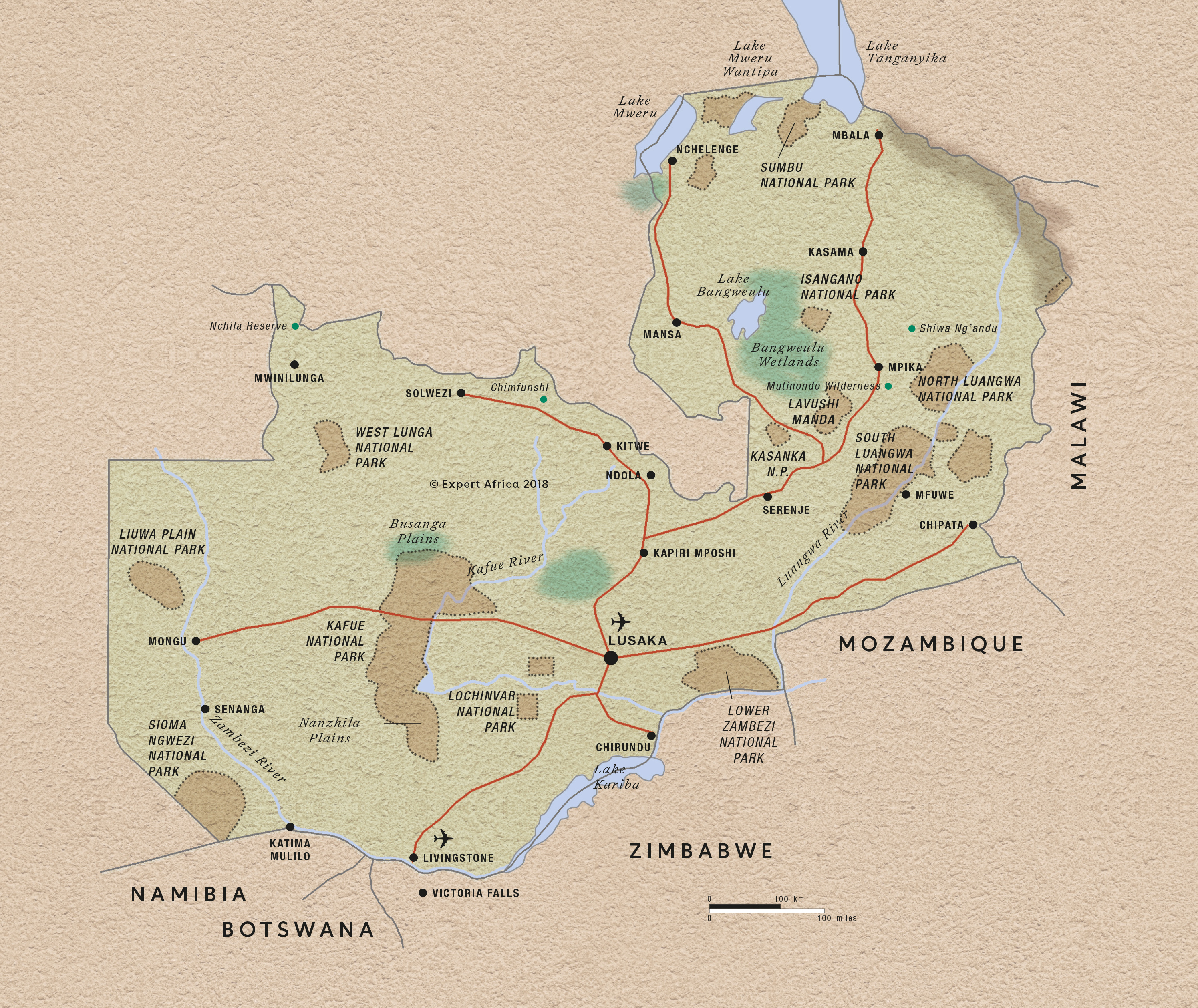
Need inspiration?
Let our trip chooser narrow down the options for you
Understanding more about travel in Zambia
Travelling to and around Zambia is a joy, especially with our team of specialists behind you, but it always helps to understand a little of what to expect.
Whether you’d like to know more about international and internal flights to and around Zambia, or need a quick fact-check on things such as currency and language, read on. Read, too, about Zambia’s attitude to LGBT travellers, and check out our advice on the sometimes complex subject of tipping.
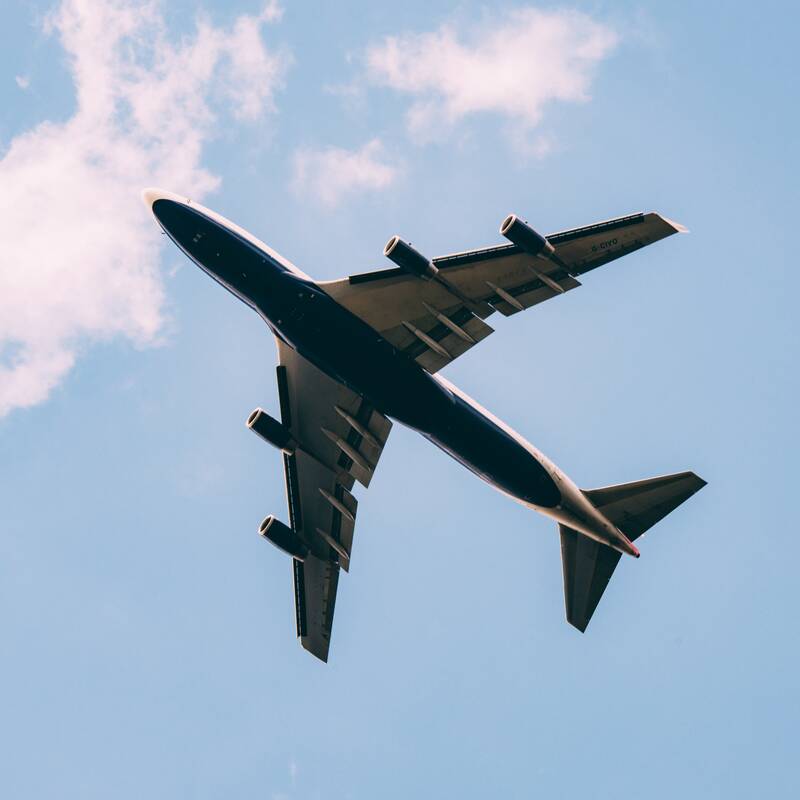
Flights to Zambia
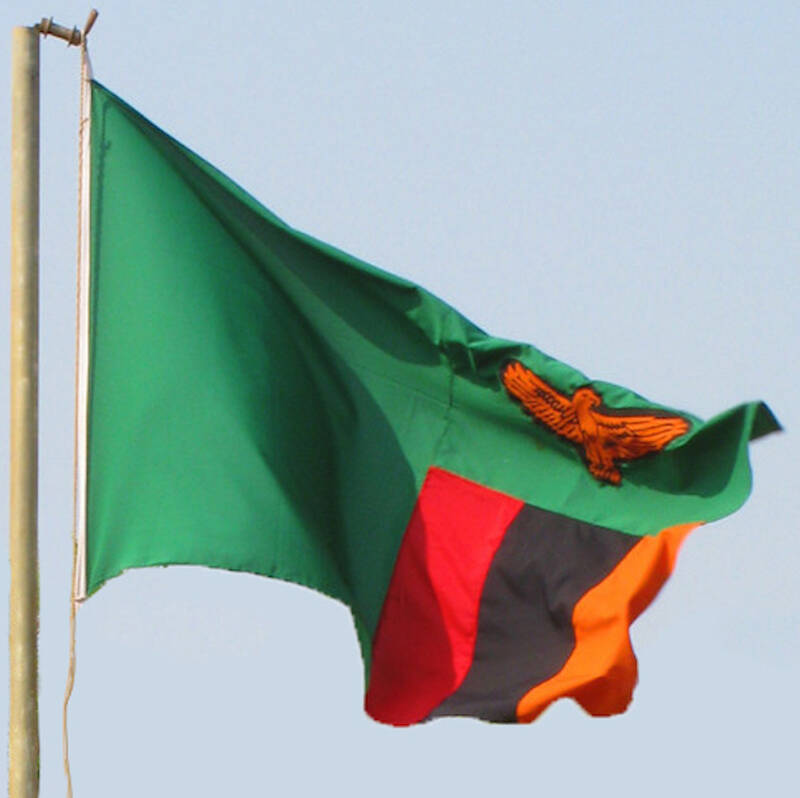
Zambia general info
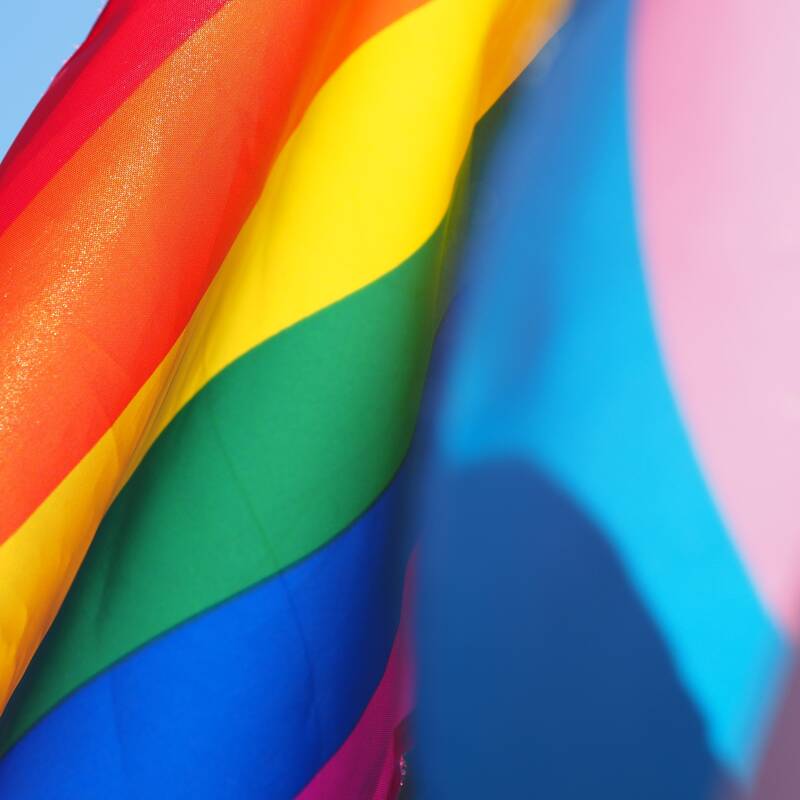
LGBT travel in Zambia

Tipping in Zambia
While we rarely arrange flights to Zambia for our travellers, as booking direct with the airlines is less expensive, we will organise a seamless itinerary that fits with your flight schedule. From the UK, there are no longer any direct flights to Zambia, so the best options are to fly with Emirates, Qatar Airways or Ethiopian Airlines, all of which have connecting flights from London (and many mainland European cities) to Lusaka . Ethiopian Airlines also operates a flight via Addis Ababa to Livingstone . It is also possible to fly with British Airways via Johannesburg, connecting with an onward flight operated by their subsidiary, Airlink, to Lusaka . Travellers from the USA can fly with United Airlines via Johannesburg, or with Emirates via Dubai. For internal flights, Zambia’s domestic airline, Proflight, operates regular flights between the Zambian capital and the country’s safari destinations, including the South Luangwa .
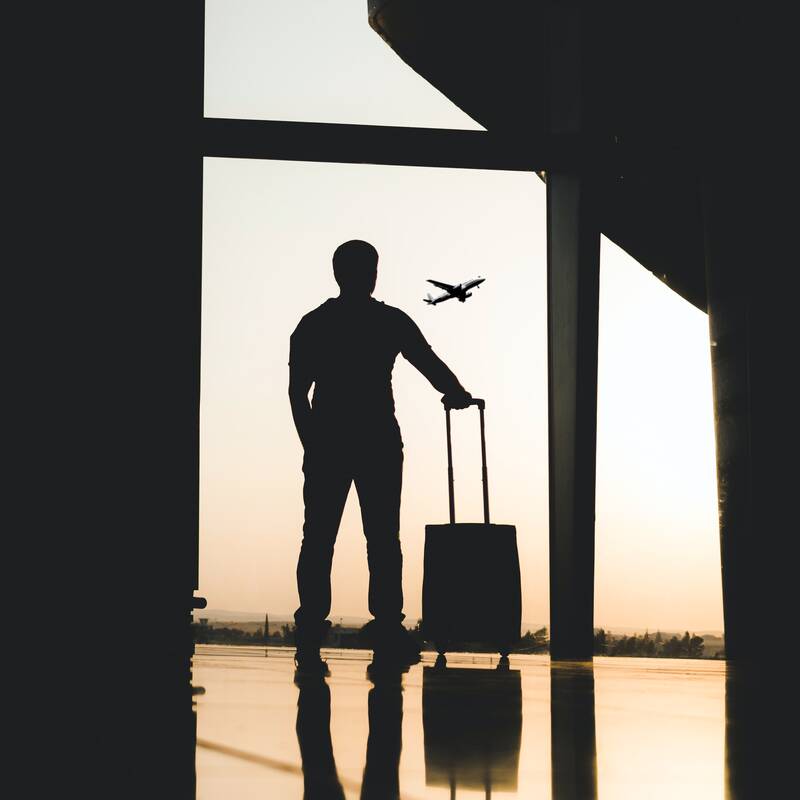
Zambia general information
Zambia’s currency is the Zambian kwacha (ZMW), but most safari camps and other tourist venues charge in US dollars, or UK pounds. Most will also accept credit cards, albeit at a surcharge, so if you’re heading on safari, you’re unlikely to need any kwacha. The country's official language is English, which is spoken by most people. Beside this, there are more than 70 different dialects spoken in Zambia, with the most common being Bemba; Bemba is also used for administration and education. Many travellers require a visa for Zambia, but at the time of writing (April 2024) most passport holders can obtain these on arrival, either free of charge or using UK pounds or US dollars cash.
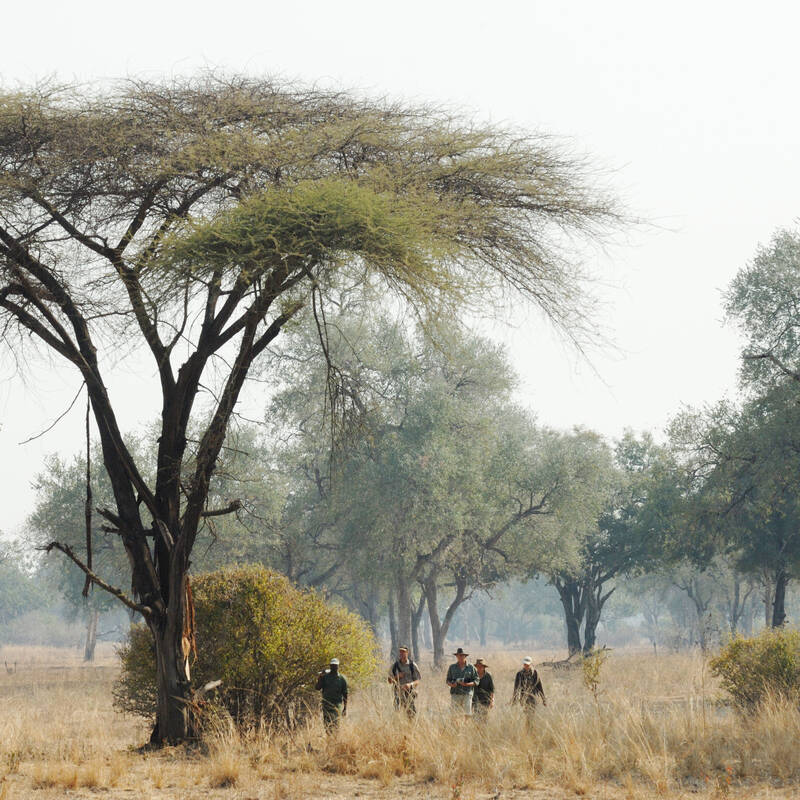
Lesbian, Gay, Bisexual and Transgender (LGBT) travel to Zambia
In the 30 years or so that we have been organising trips to Zambia, we have never heard of any problems experienced by our LGBT travellers due to their sexuality, and some have returned to the country several times. We believe this reflrects the general culture in Zambia, where the majority of people are friendly and welcoming, and care little about a visitor’s gender or sexuality. In our experience, LGBT travel to Zambia has proved to be safe and uneventful. However, we believe it’s important for our travellers to be aware of the current laws in the country, and the opinion of the general population, so do please check your government's latest travel advice before you go.
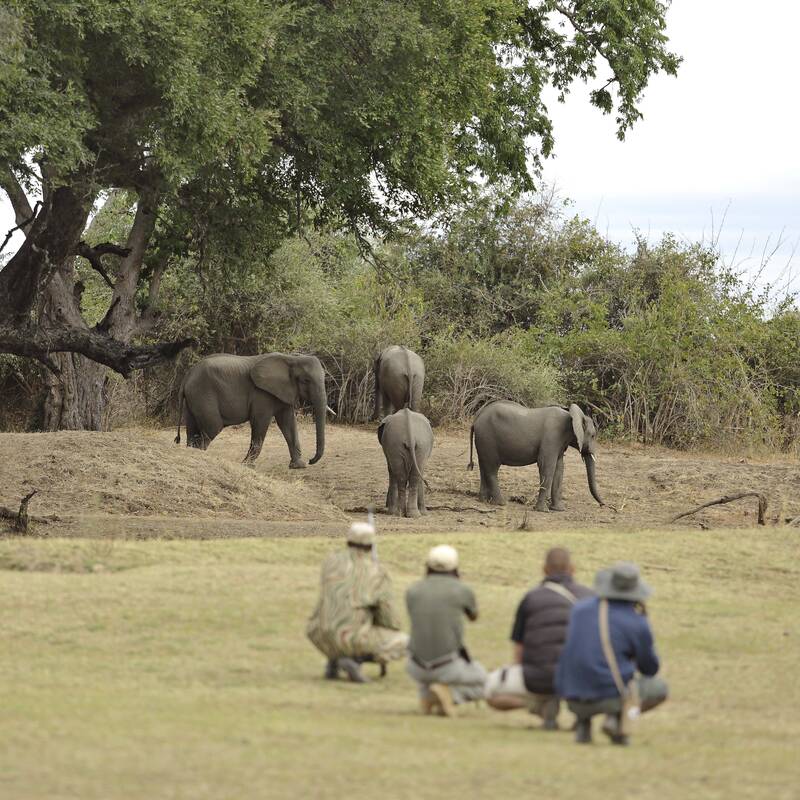
The most important thing to remember about tipping in Zambia, as in many other countries, is that it’s voluntary – and should depend on the standard of service. While we would encourage our travellers to tip in recognition of good service, we’d ask you to bear in mind that excessive tips can throw out the balance of the local economy. Deciding who to tip, and when, is as important as how much. Behind every successful safari is a dedicated team of staff who work hard to ensure that you enjoy your trip. It makes sense, then, to consider tipping them as well as your guide and waiter. Usually we recommend tipping just once, at the end of your stay. Many lodges have a staff tip box, but you could also place tips in a labelled envelope or series of envelopes to prevent any misunderstanding.
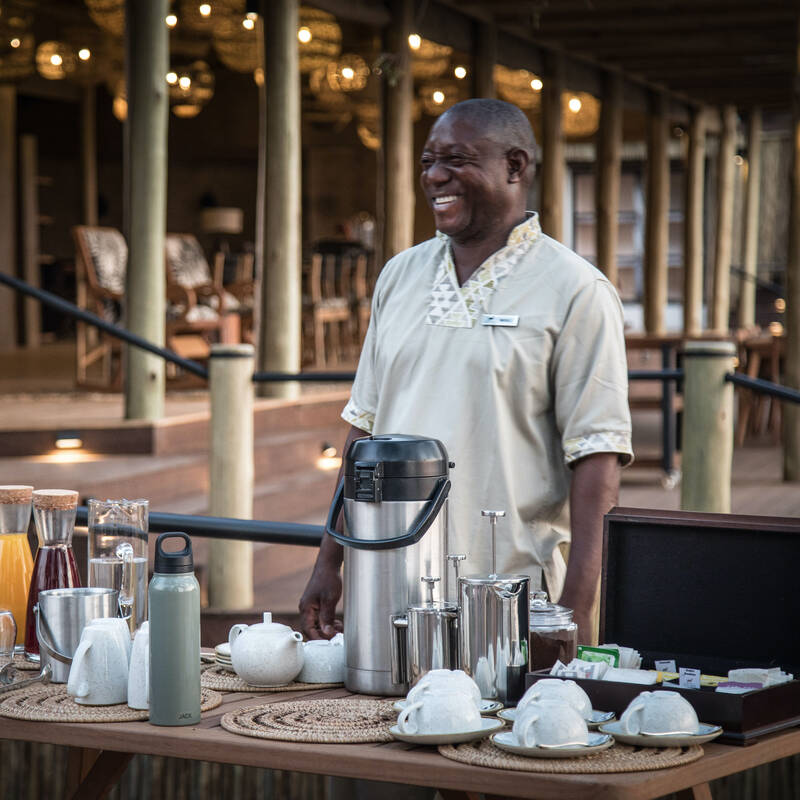
Zambia safari holidays
In our experience, many Zambian areas remain fairly “wild”, and many of its camps are still firmly in the “authentic” bracket, making this exceptional country a truly rewarding choice for a safari holiday.
Zambia’s small safari bush camps – some still owner-run – are renowned for their warm hospitality and great walking safaris . In all the main national parks, you’ll also find some of Africa’s best safari guides, thanks to their exceptional standards of guide training.
North and South Luangwa , in particular, are renowned for top-class walking safaris, whilst the Lower Zambezi National Park offers superb boat trips on the Zambezi River. Add in the Victoria Falls , one of the seven natural wonders of the world, and you have the makings of an unrivalled safari.
Take a look through our selection of safari holiday suggestions below, then call us , so that one of our Zambian experts can help you to design your own personal trip.
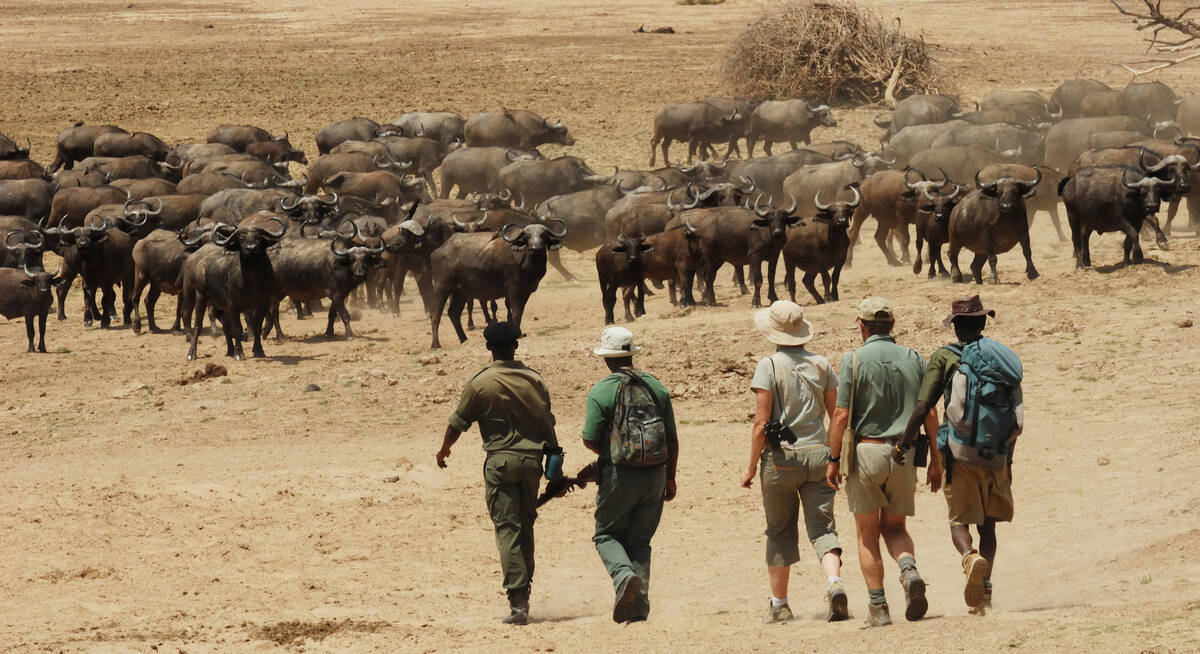
Scrub Hare Safari
7 days • 3 locations LUSAKA AIRPORT TO LUSAKA AIRPORT
Camps run by welcoming owners with a passion for their environment are rare, and Tafika is one of the best. Combine this with walking safaris at equally excellent bushcamps for the best of the South Luangwa.
US$6,040 - US$7,210 per person
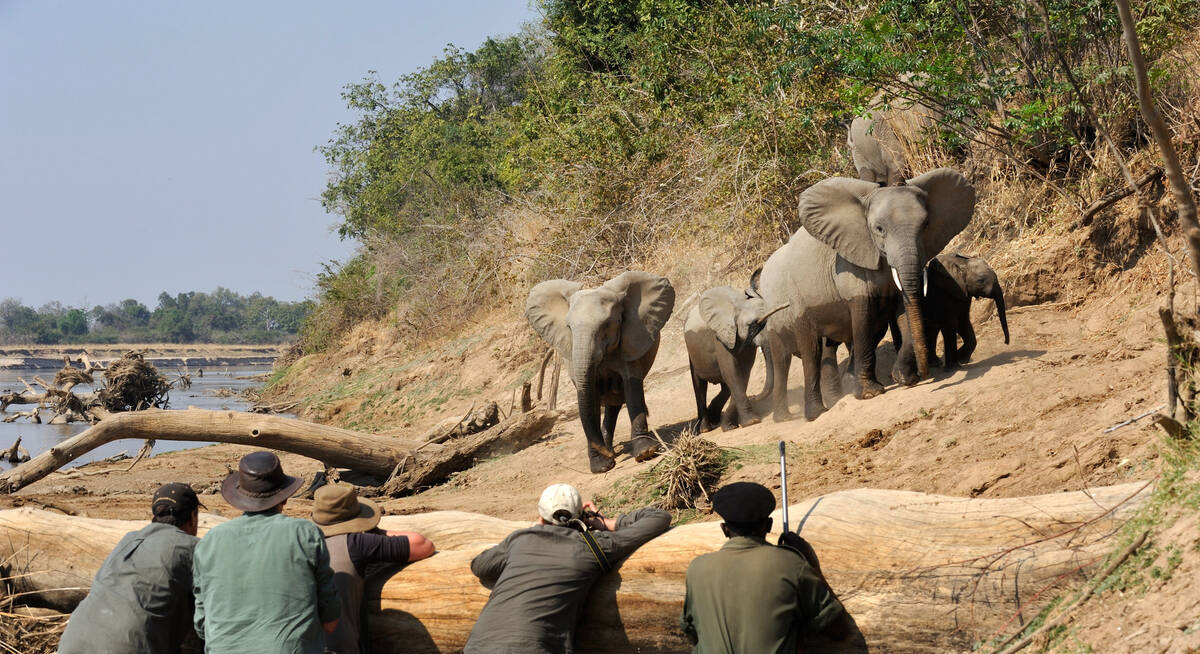
Boehm's Zebra Safari
7 days • 2 locations LUSAKA AIRPORT TO LUSAKA AIRPORT
This safari combines two high-quality owner-run camps in a very productive region of the South Luangwa. The guiding is excellent and with its hides this safari is perfect for serious photographers.
US$7,130 - US$9,410 per person
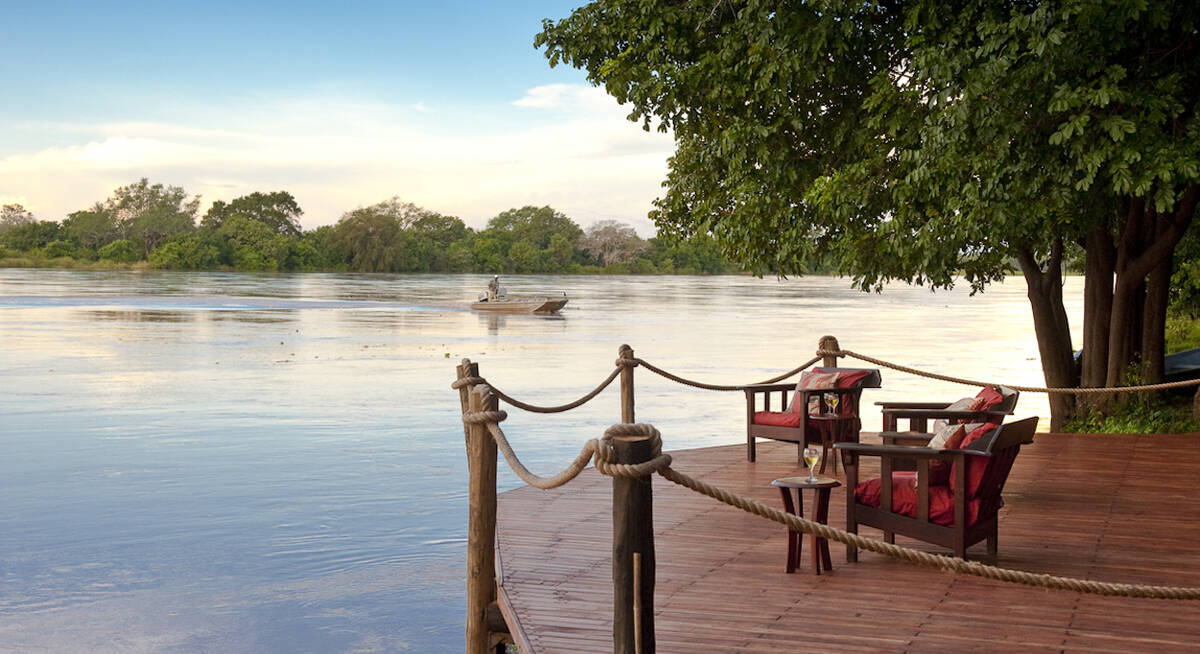
Hyena Safari
11 days • 4 locations VICTORIA FALLS AIRPORT TO LILONGWE AIRPORT
Mix relaxation and adventure on a safari combining the South Luangwa with Victoria Falls and the beaches of Lake Malawi. These three locations are among the most iconic in southern Africa.
US$8,630 - US$11,910 per person
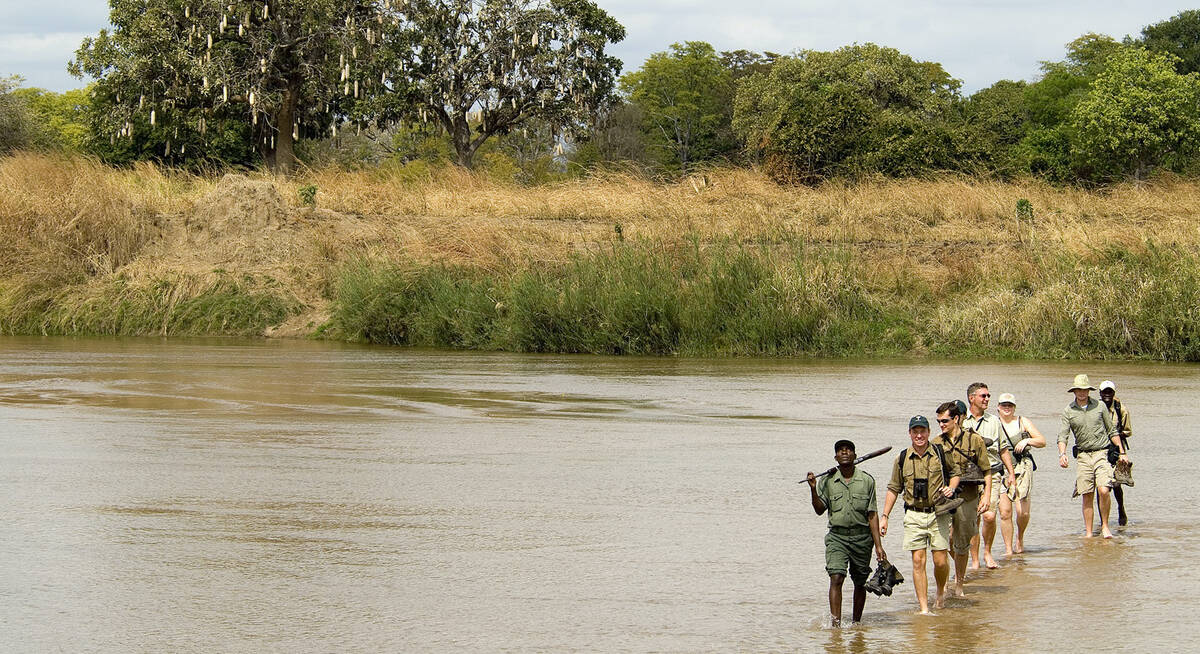
Robin Pope Walking Safari
The definitive, original mobile walking safari; explore the remote north of the South Luangwa on foot while staying in a simple mobile camp that moves with the group.
US$6,500 - US$7,870 per person
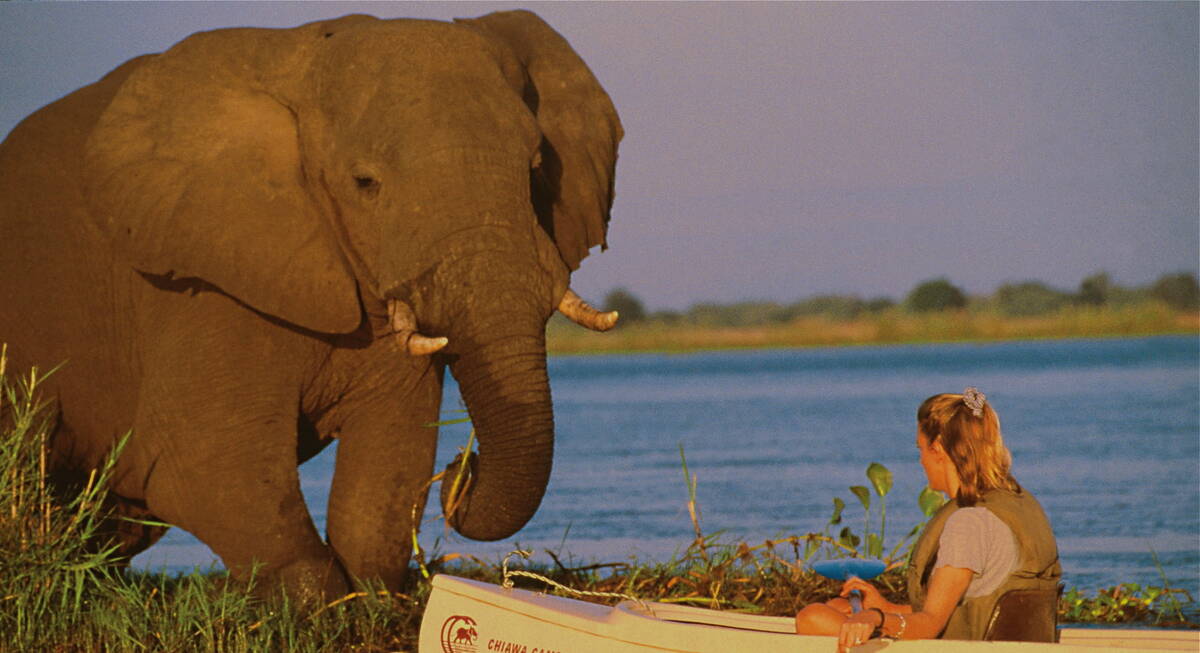
Slender Mongoose Safari
5 days • 2 locations LUSAKA AIRPORT TO LUSAKA AIRPORT
A detailed exploration of Lower Zambezi from two top-notch sister camps, each in a prime location in the national park. Expect a high level of care, first-class guiding and superb wildlife.
US$6,270 - US$8,400 per person
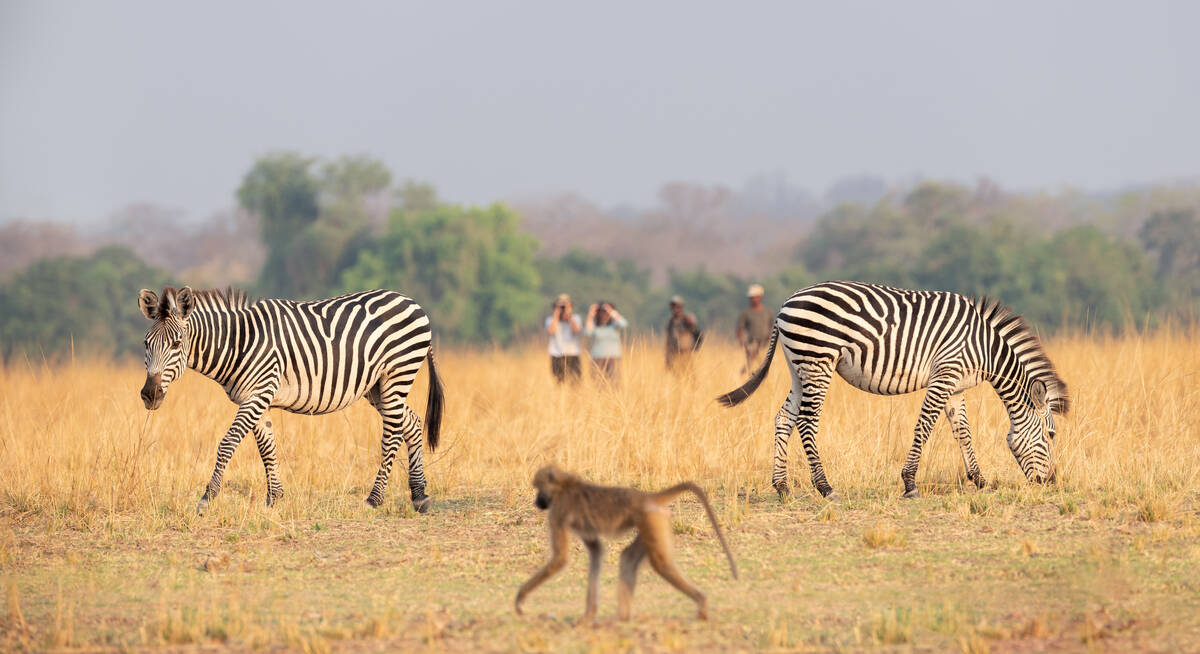
Vervet Monkey Safari
Explore the world-class wildlife of Zambia’s South Luangwa and Lower Zambezi national parks in considerable luxury, guided by experts from two sister camps renowned for their excellent level of care.
US$8,370 - US$10,990 per person
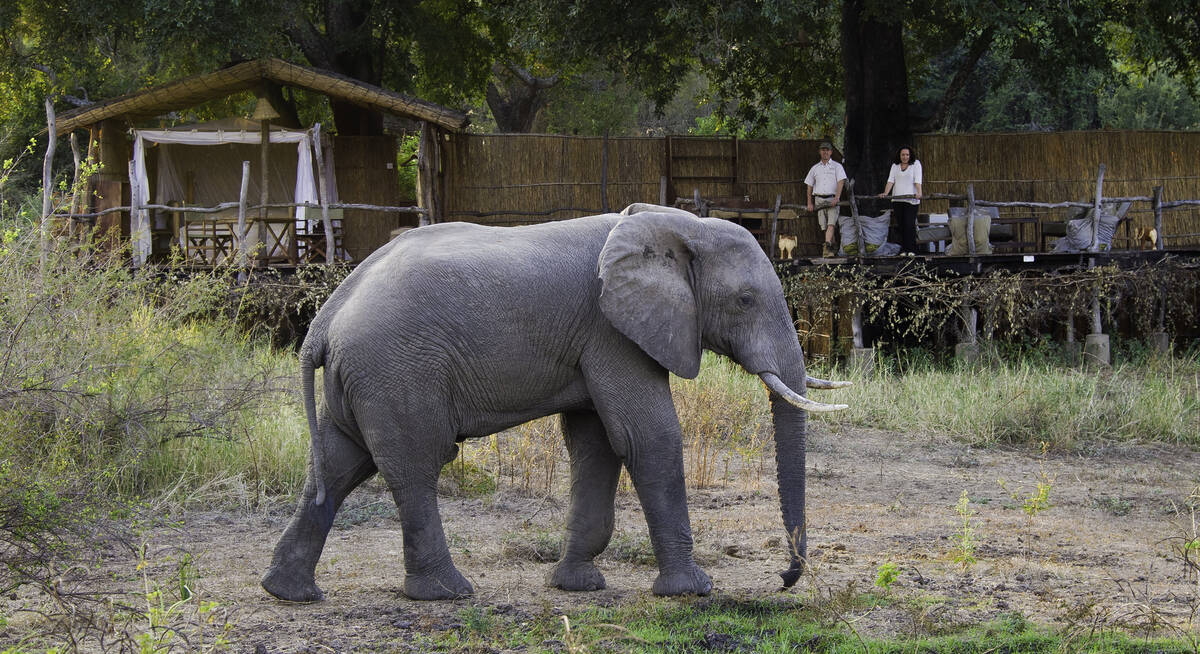
Fruit Bat Safari
6 days • 2 locations LUSAKA AIRPORT TO LUSAKA AIRPORT
Offering a highly specialised experienced, this safari uses two simple bases for access to South Luangwa and Kasanka National Parks. Visit between October and December when you will witness the world’s largest mammalian migration of millions of fruit bats.
US$4,980 - US$5,530 per person
Let us help you customise your trip
All of our holidays on this site are just ideas; none are fixed. All of our trips are tailor-made, so we'll always adapt them to suit you. Talk to an Expert and let us help you to work out your perfect trip.
Talk to an Expert
Call us now! We’ll match you with the Specialist in our team who is best suited to help you. Then together we can start planning your trip.
Set up your itinerary
Based on our experience and your ideas, your specialist will create a detailed, costed itinerary. We’ll refine it together, until we have a trip that you’re perfectly happy with.
Prepare for your trip
The same Specialist will make the seamless arrangements for your trip, send you detailed travel documents, and be available to answer any questions before you depart.
Travel with peace of mind
After you set off, you’ll be cared for by our partners in Africa, most of whom have worked with Expert Africa for decades. And if you ever need us urgently, we’re available 24/7.
When you return
We love to learn about your trip, and so will always be grateful if you’ve the time to give feedback to your Specialist when you return.
Where to stay in Zambia
Ask us for more details of what’s where, and what’s likely to suit you best!
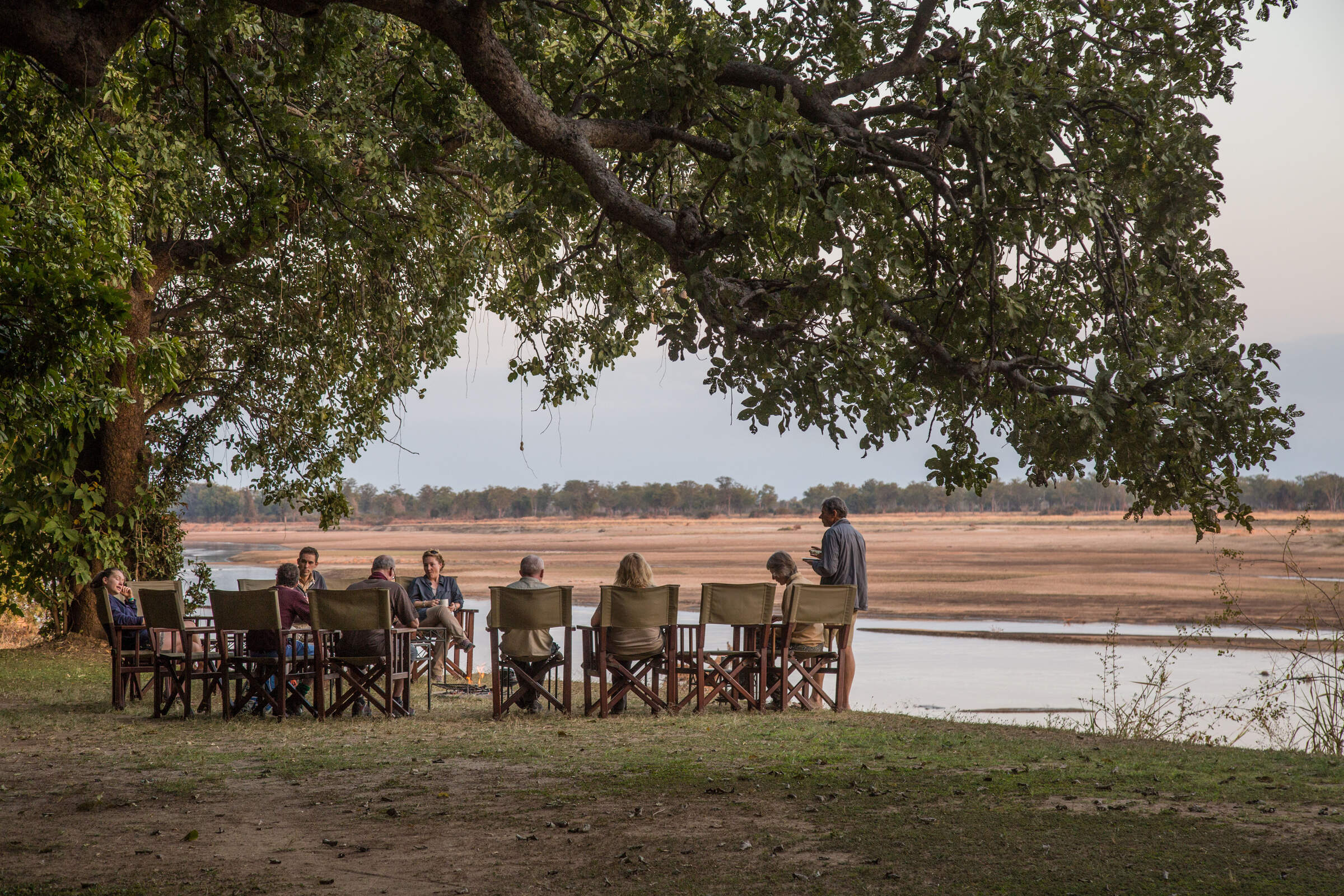
One of the best camps in Zambia, Tafika is naturally built, combining excellent service and food with top guiding skills for a superb wildlife experience.
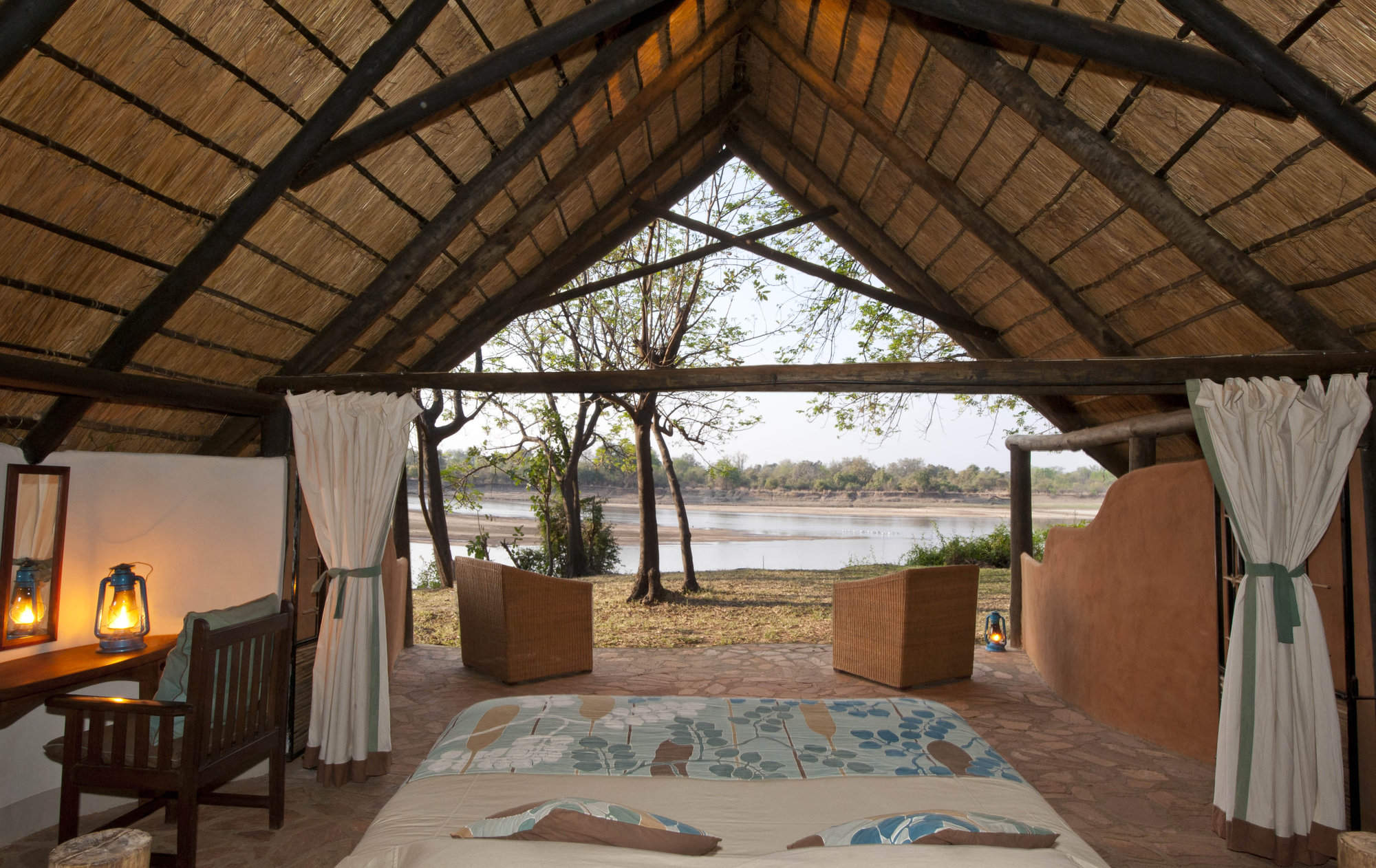
On the banks of the Luangwa River, with its own access to the national park, the intimate Nkwali is open year round.
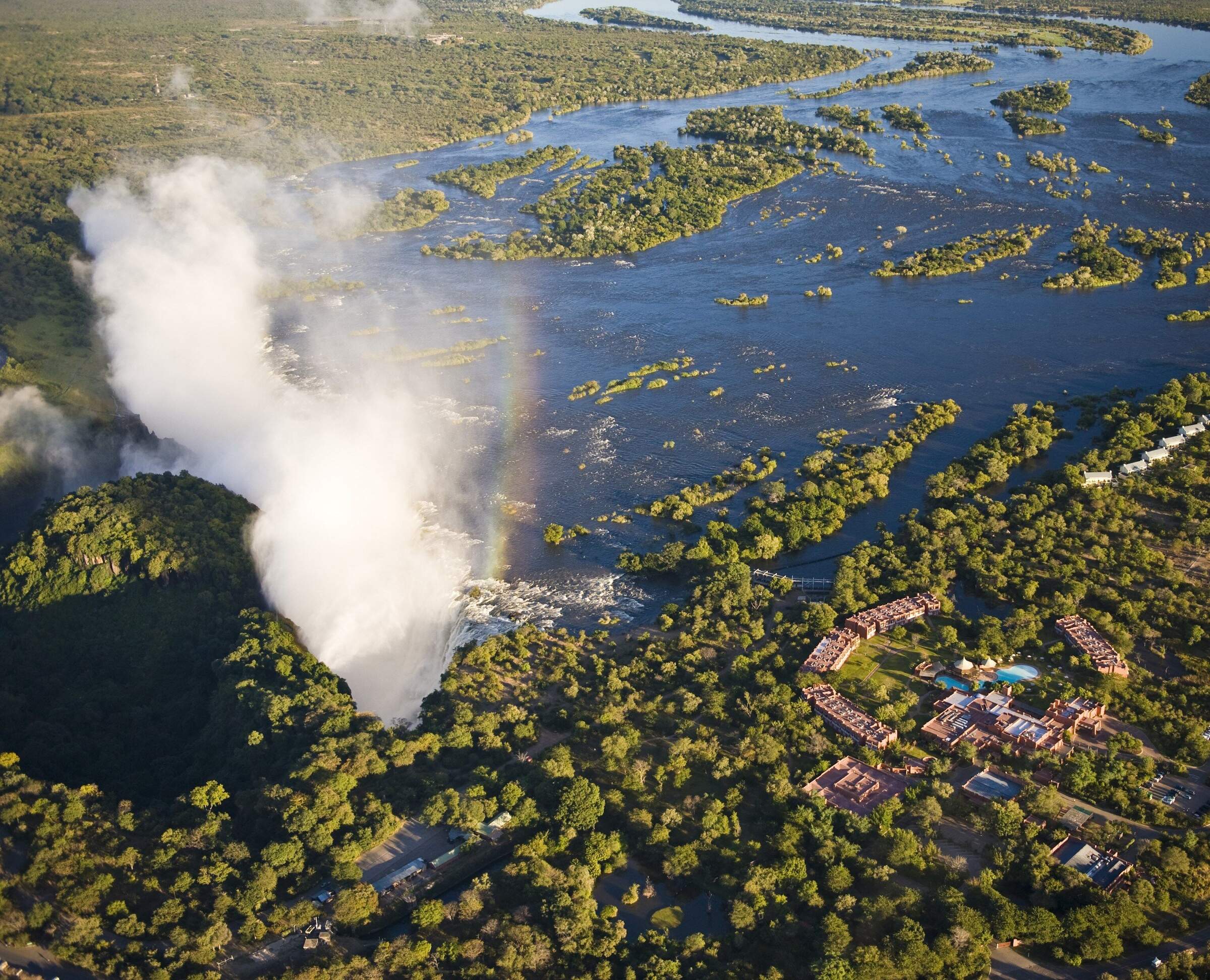
Avani Victoria Falls
Just a few minutes' walk from the Victoria Falls, with access for guests included, the Avani features good facilities in peaceful grounds at a modest price.
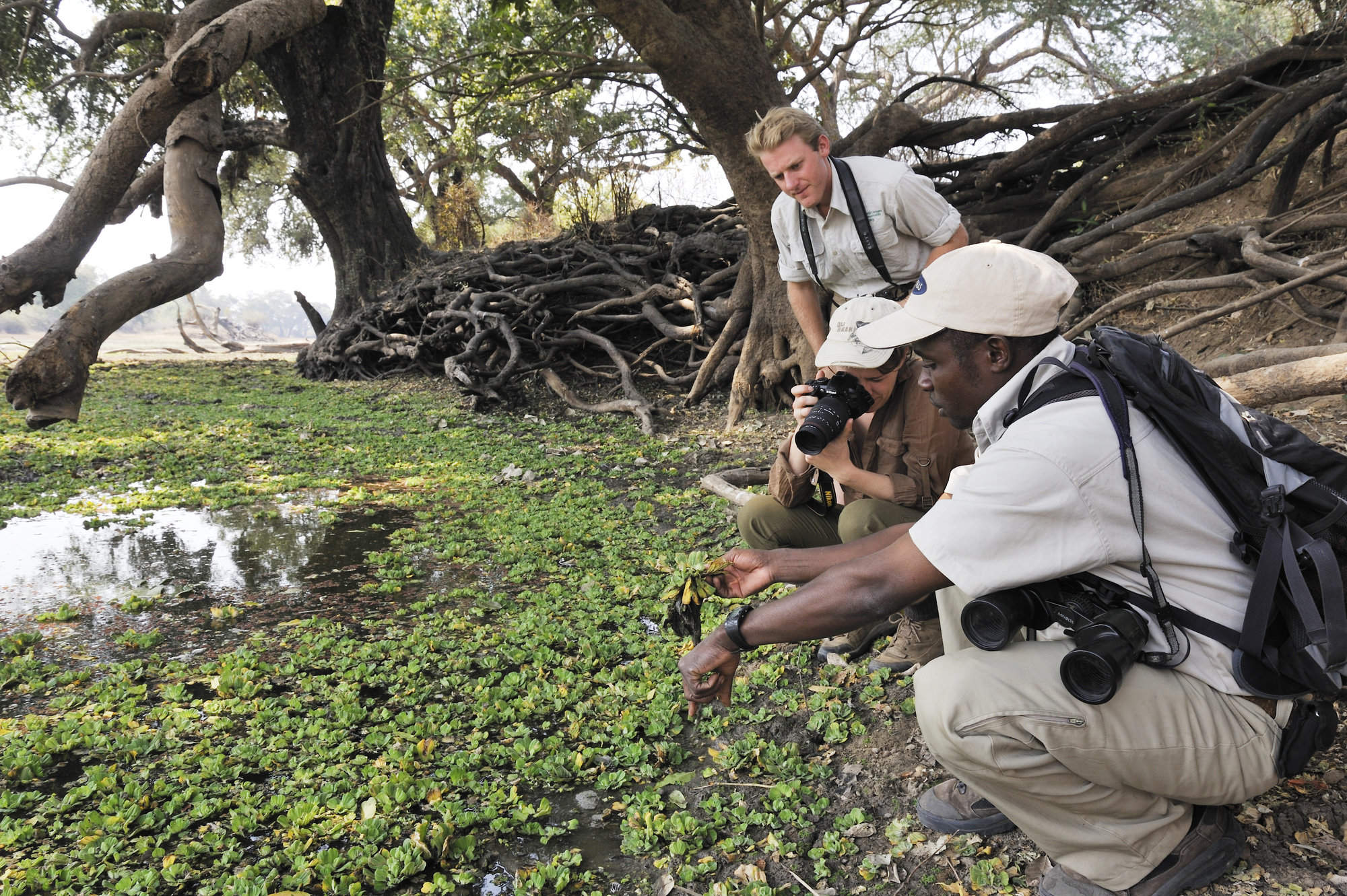
Kaingo Camp
Small and owner-run, the riverside Kaingo occupies a a quiet but excellent game area, with a series of wildlife hides and a focus on photography.
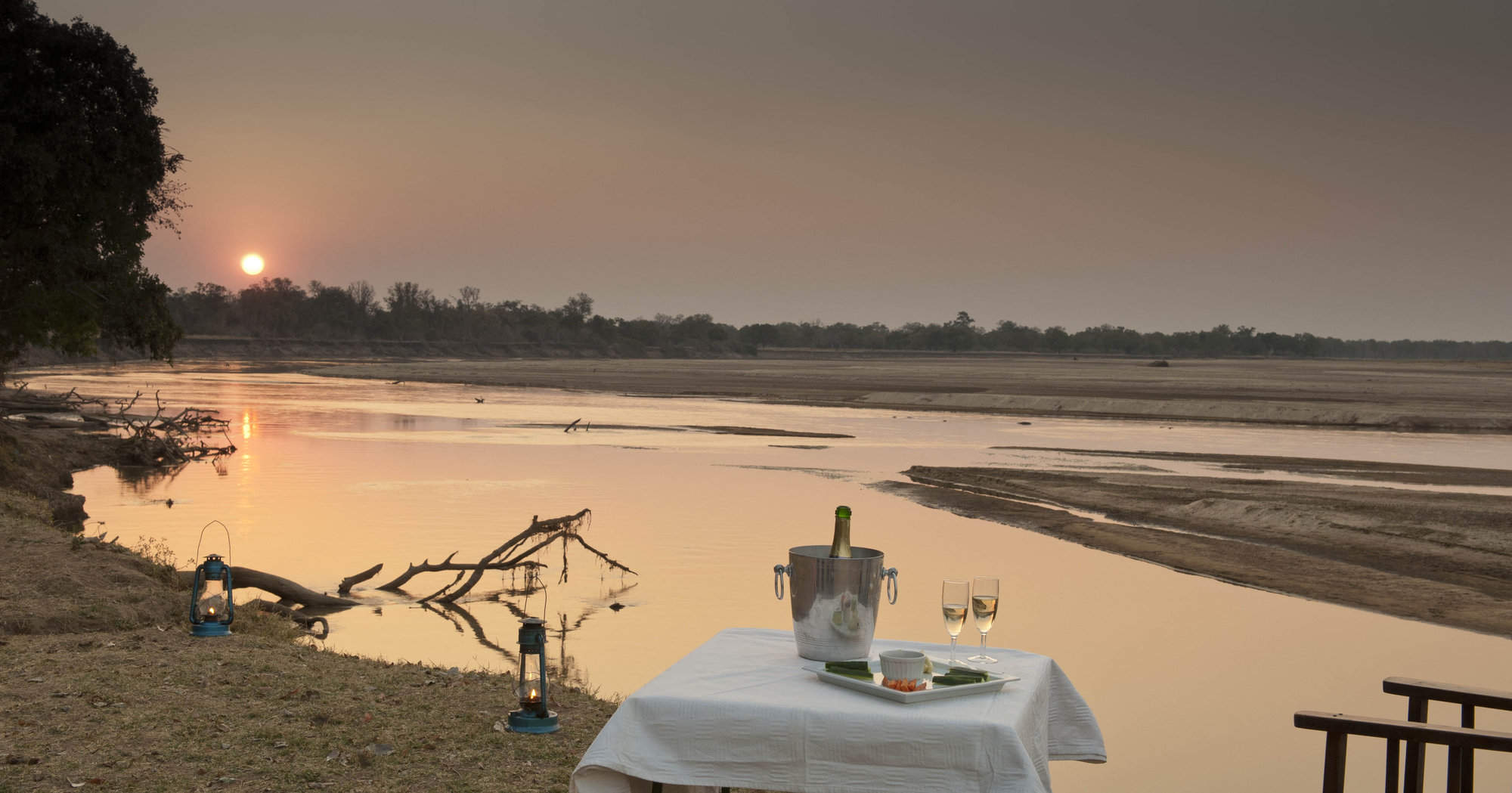
One of the Luangwa's oldest camps, Nsefu is a great safari camp in a remote, beautiful and game-rich location with top-rate guiding.
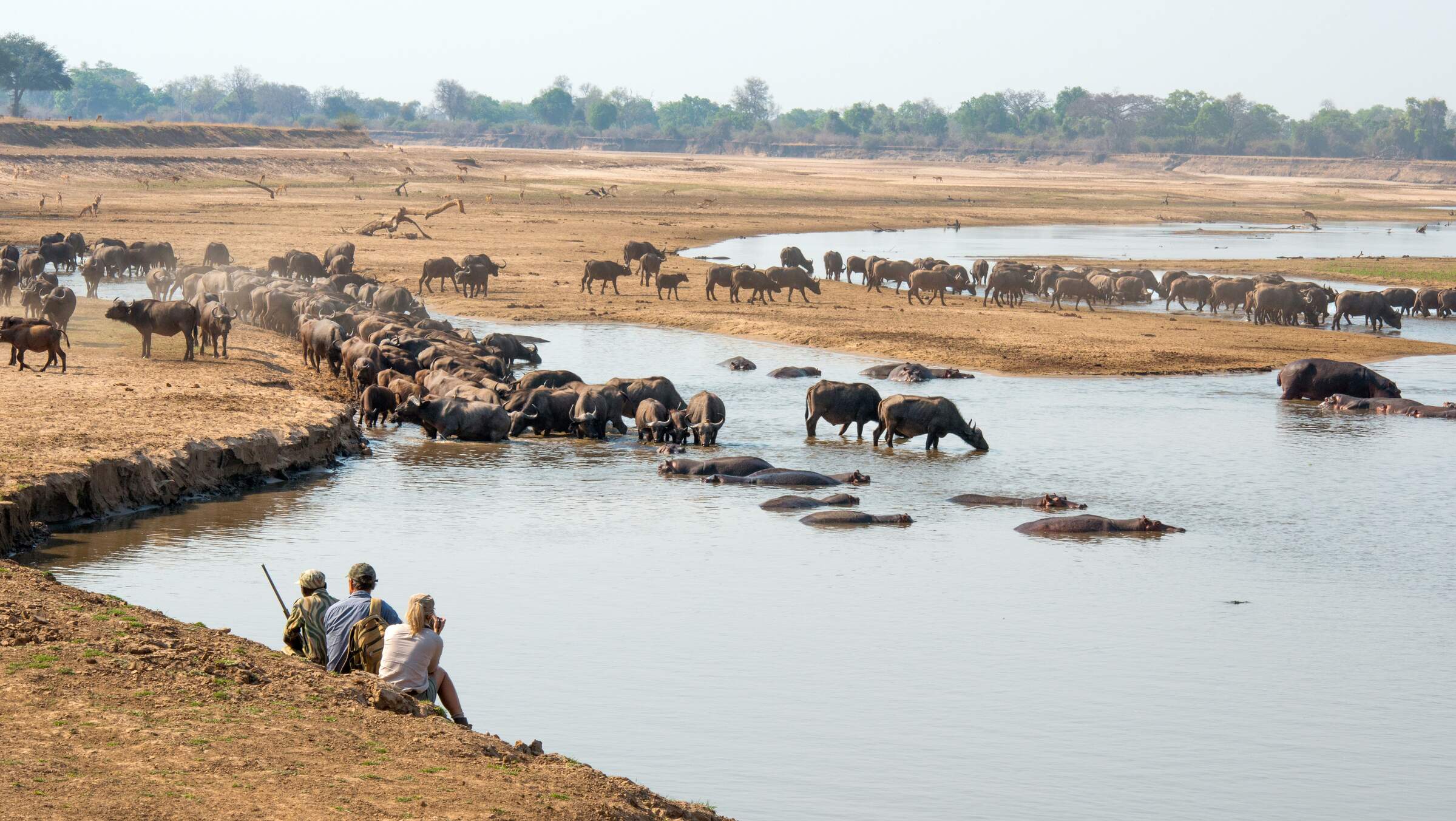
Mwamba Bushcamp
Small, remote and owner-run, Mwamba offers first-class walking, 4WD safari drives and superb hides, with excellent guides and a real bush feel.
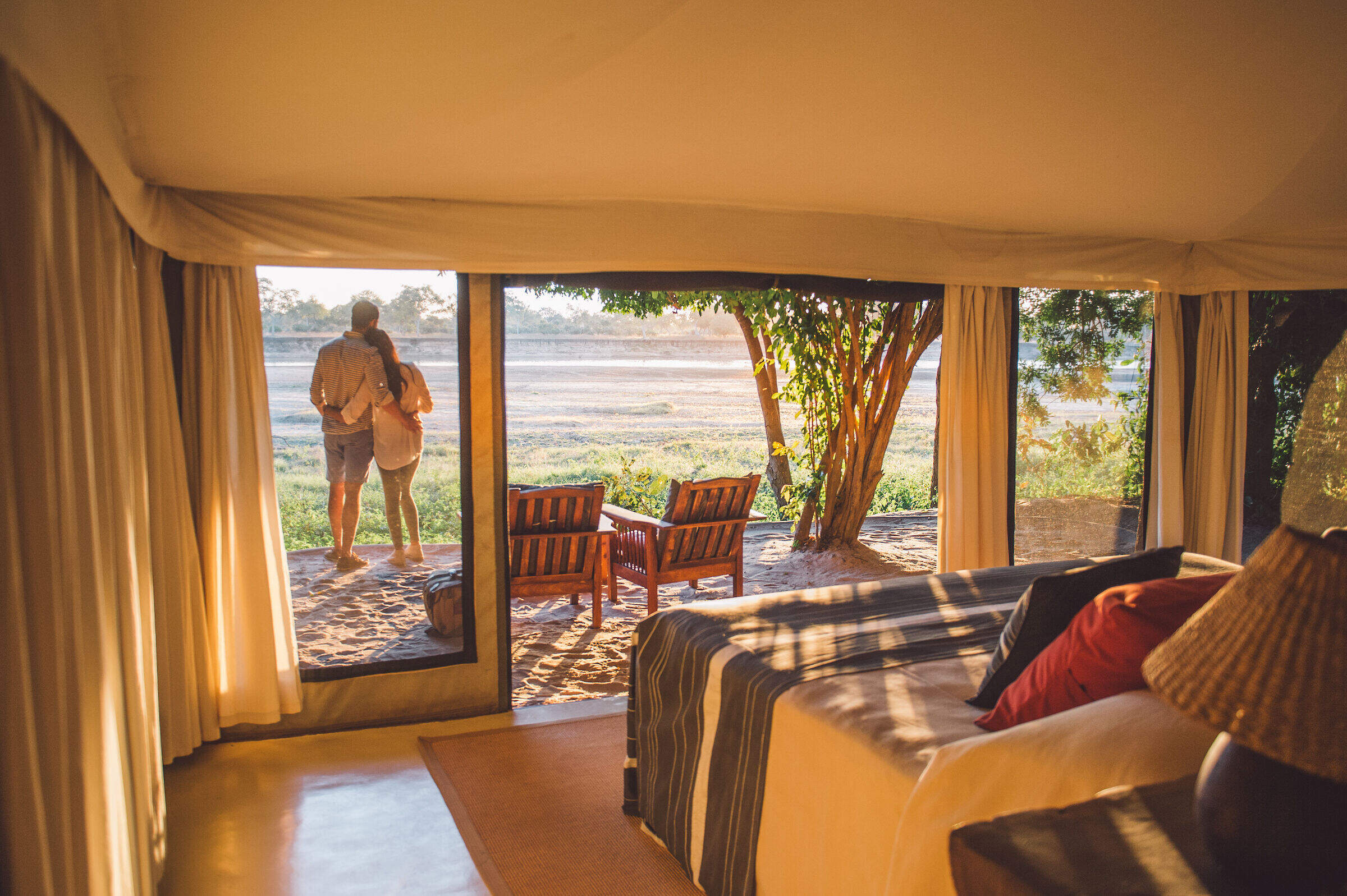
One of the Luangwa's best camps, in a beautiful, remote bush location, Tena Tena is very small, exceedingly well-run and has top-rate guiding.
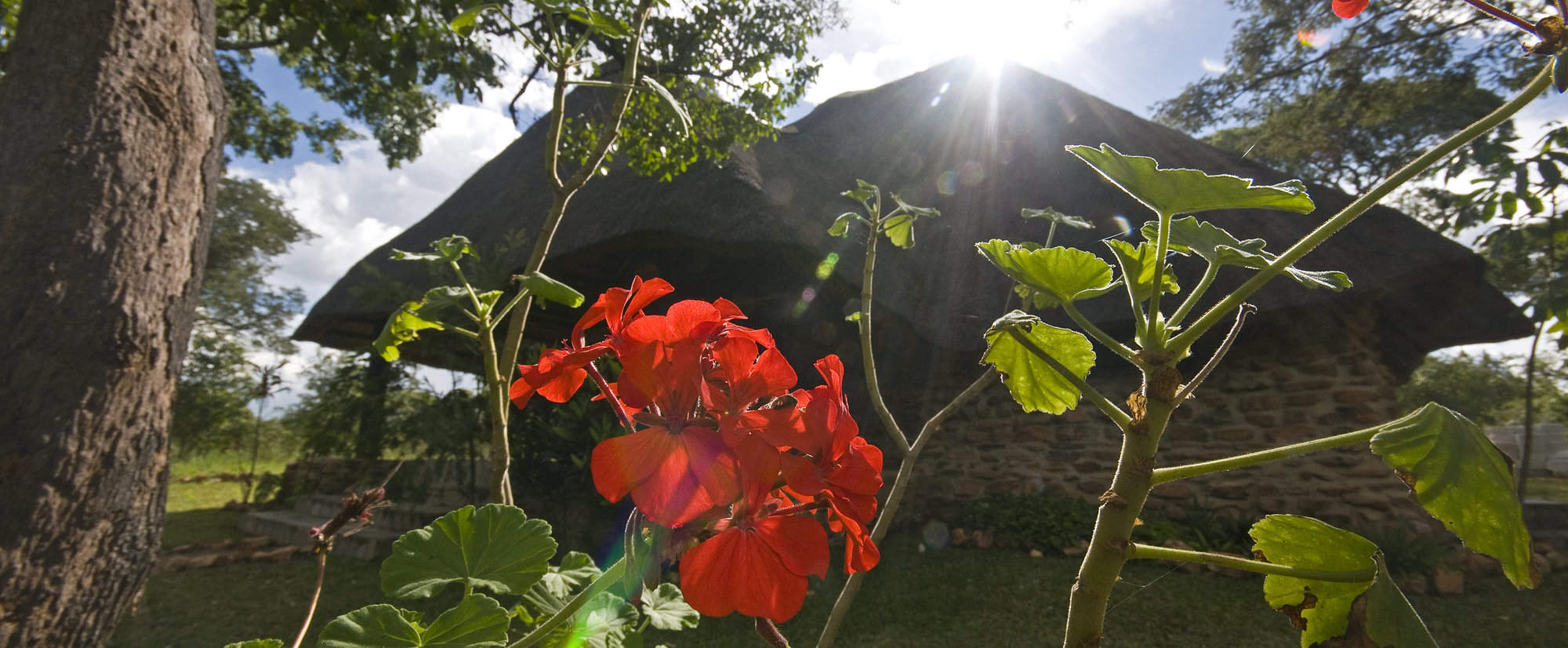
Pioneer Camp
Pioneer Camp, situated 14 kilometres from Lusaka's international airport is ideal for a night's stopover at the end of your trip.
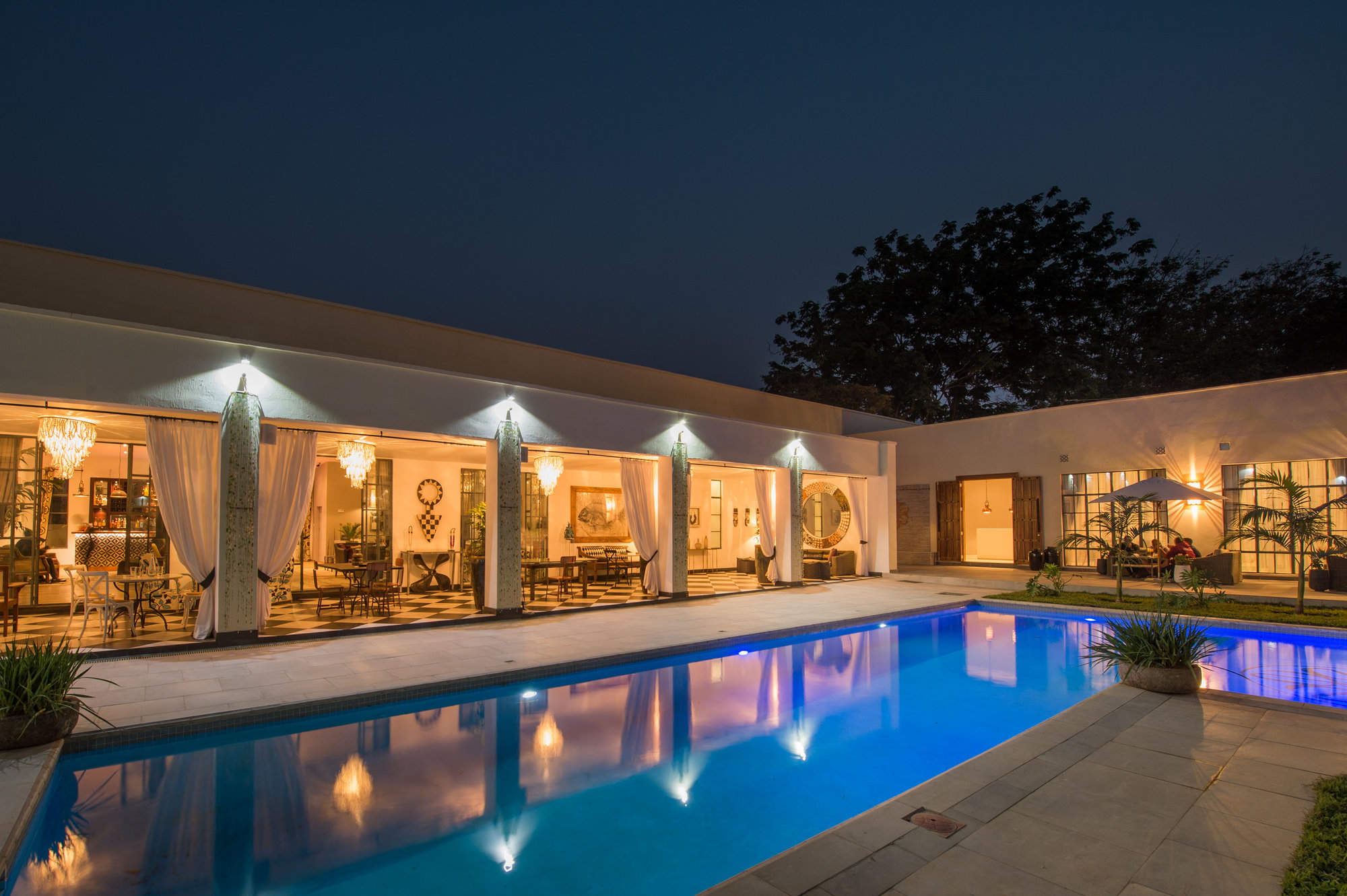
Latitude 15
Latitude 15 is a decidedly eclectic boutique hotel in Lusaka's suburbs, with a modern, Africa-chic style and an excellent restaurant.
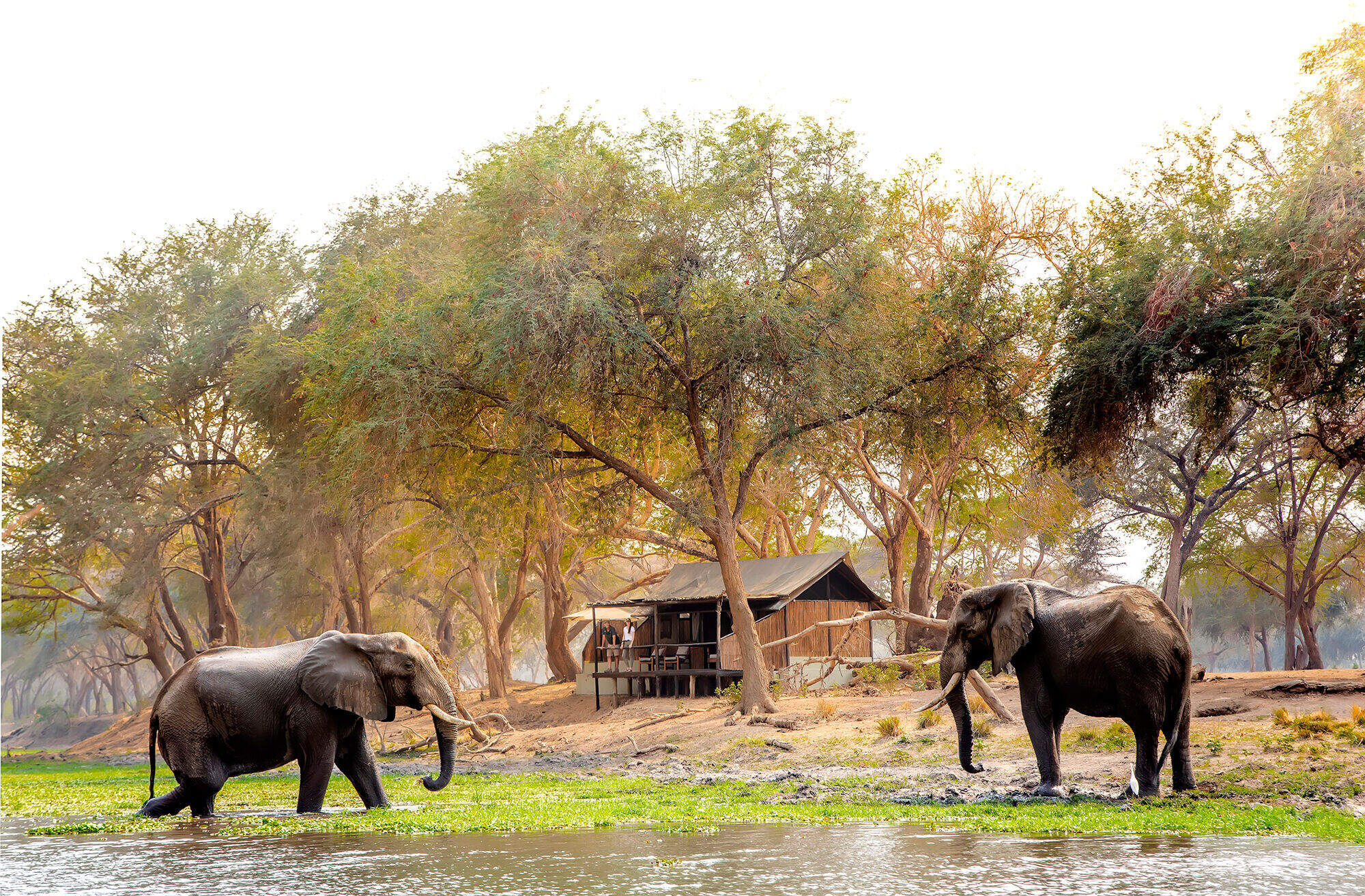
Old Mondoro Bushcamp
For an intimate safari in the Lower Zambezi, with superb guiding, Old Mondoro is up there with the best.
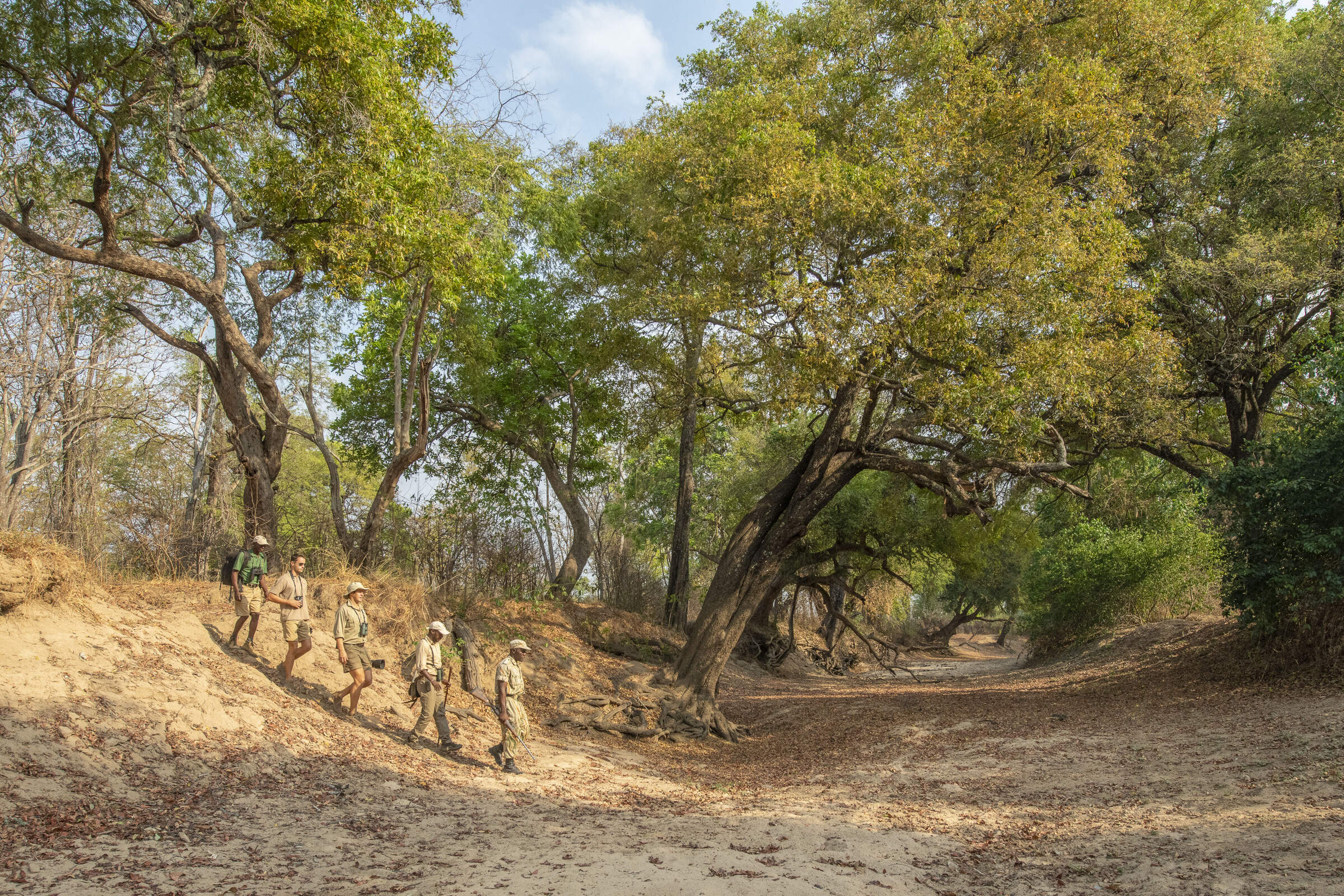
Chikoko Tree Camp
Chikoko Tree Camp is an excellent small, rustic bushcamp that concentrates on walking safaris, and is run by a top-quality operation.
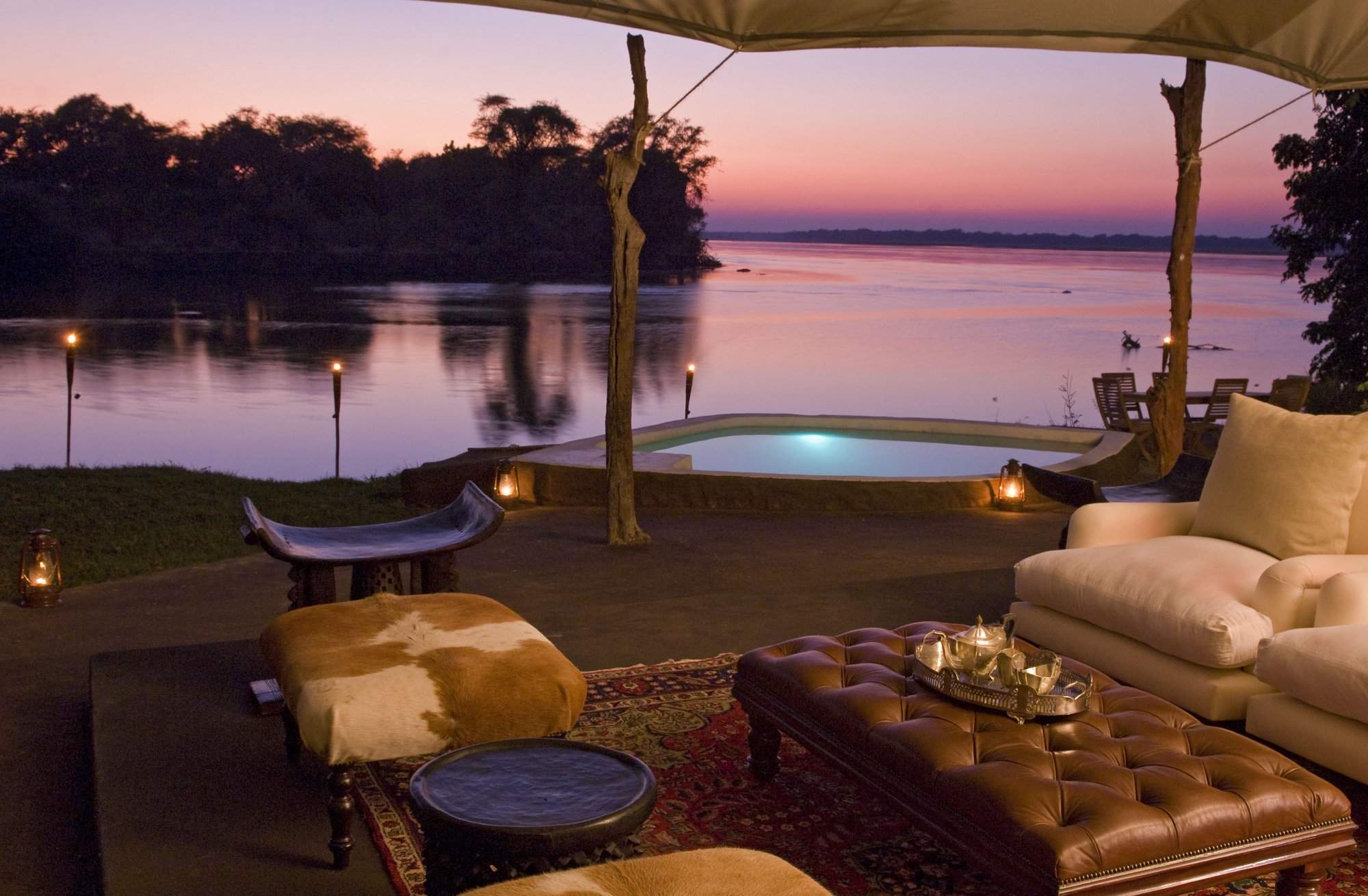
Chongwe River Camp
A blend of the stylish and traditional in a most picturesque site in the Zambezi Valley, Chongwe River Camp offers an excellent safari experience and real value for money.
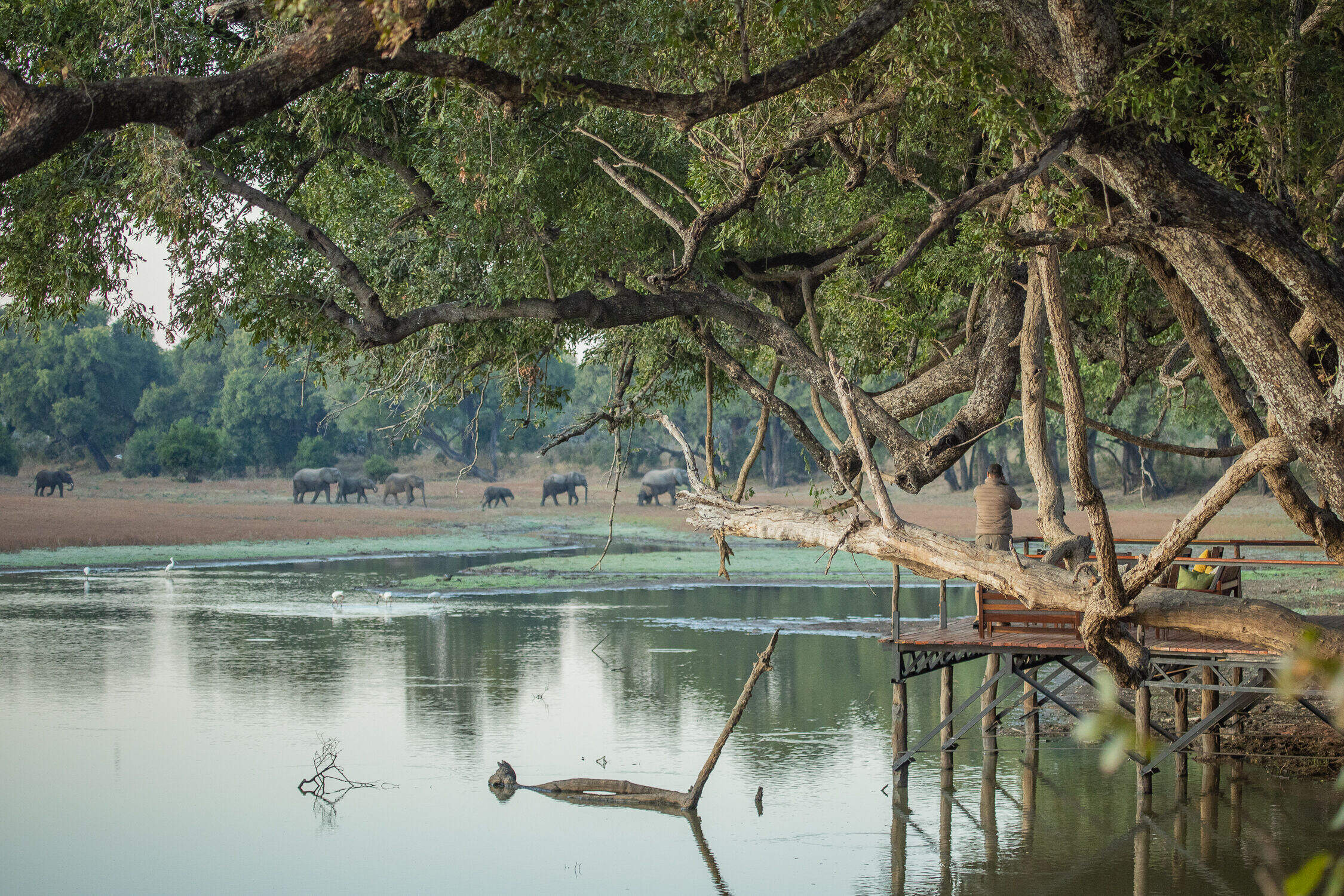
Big Lagoon Camp
Big Lagoon Camp is a great little rustic bushcamp built to high standards that focuses on excellent walking safaris, with the emphasis on top wildlife guides.
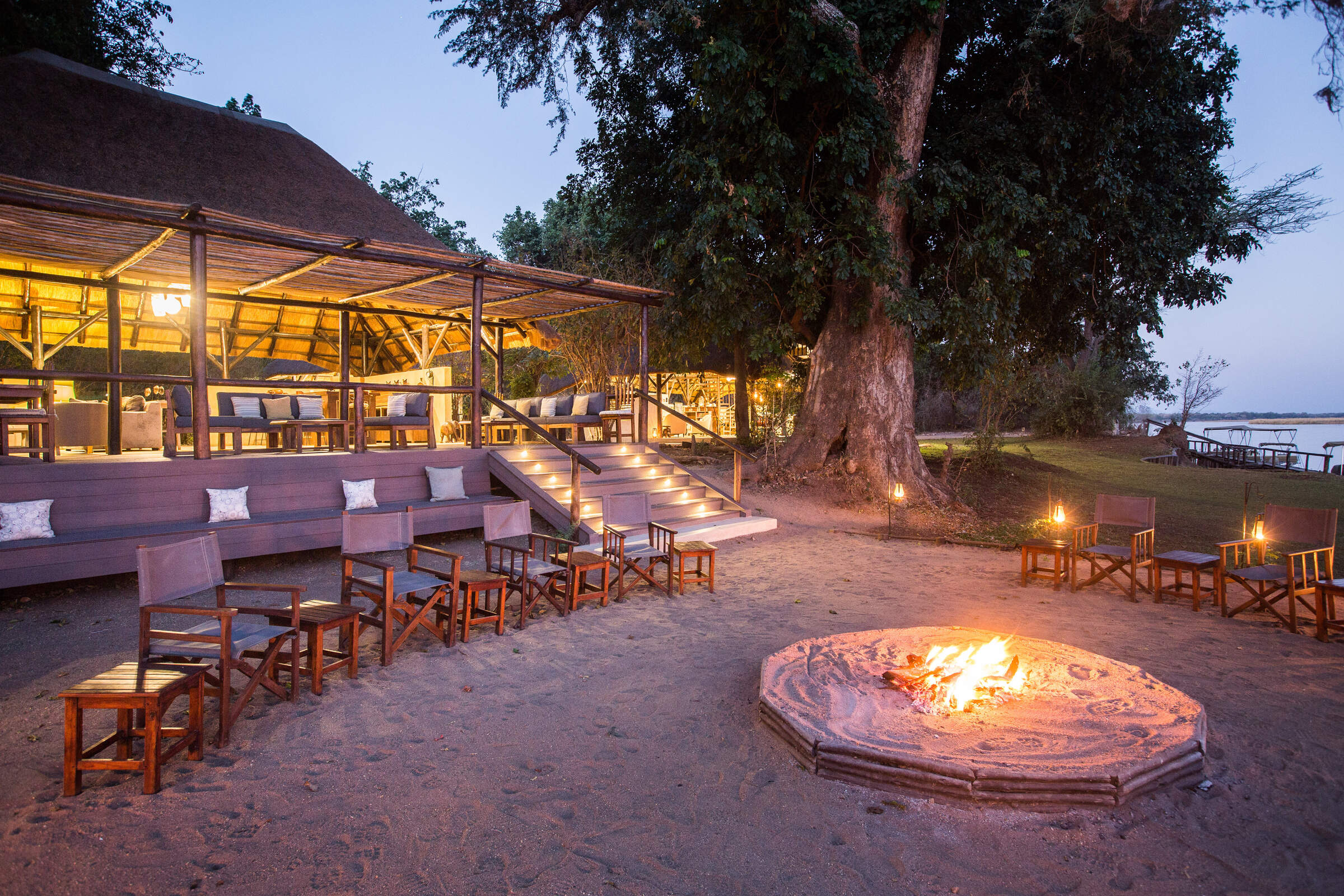
Chiawa Camp
One of Zambia's top safari camps, Chiawa is family owned and run, offering superb service and a flexible approach from a location well inside the Lower Zambezi National Park.
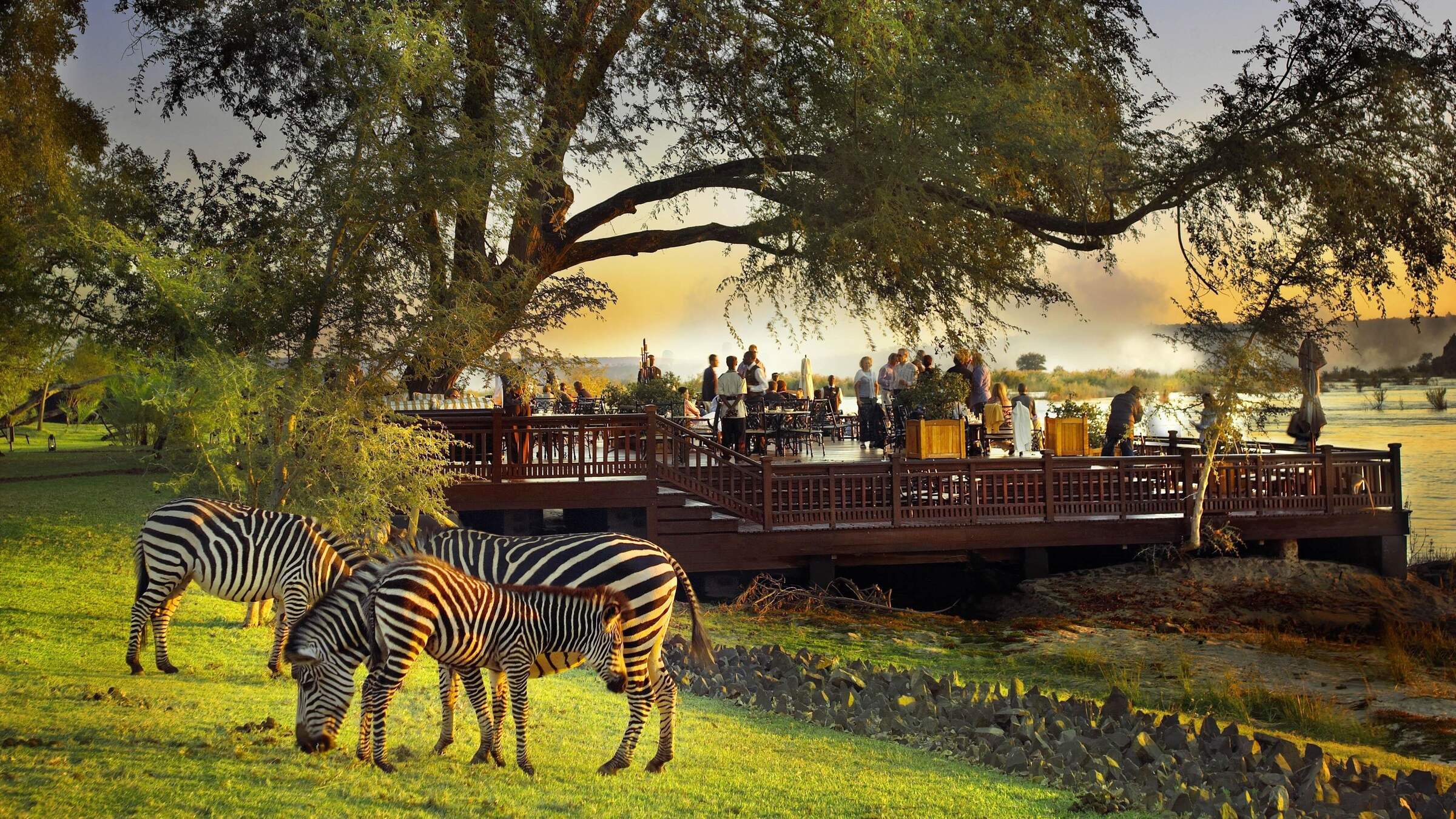
Royal Livingstone Hotel
Conveniently located just a short walk from the Zambia. side of the Victoria Falls, the colonial-style Royal Livingstone has beautiful grounds and small but quite luxurious rooms.
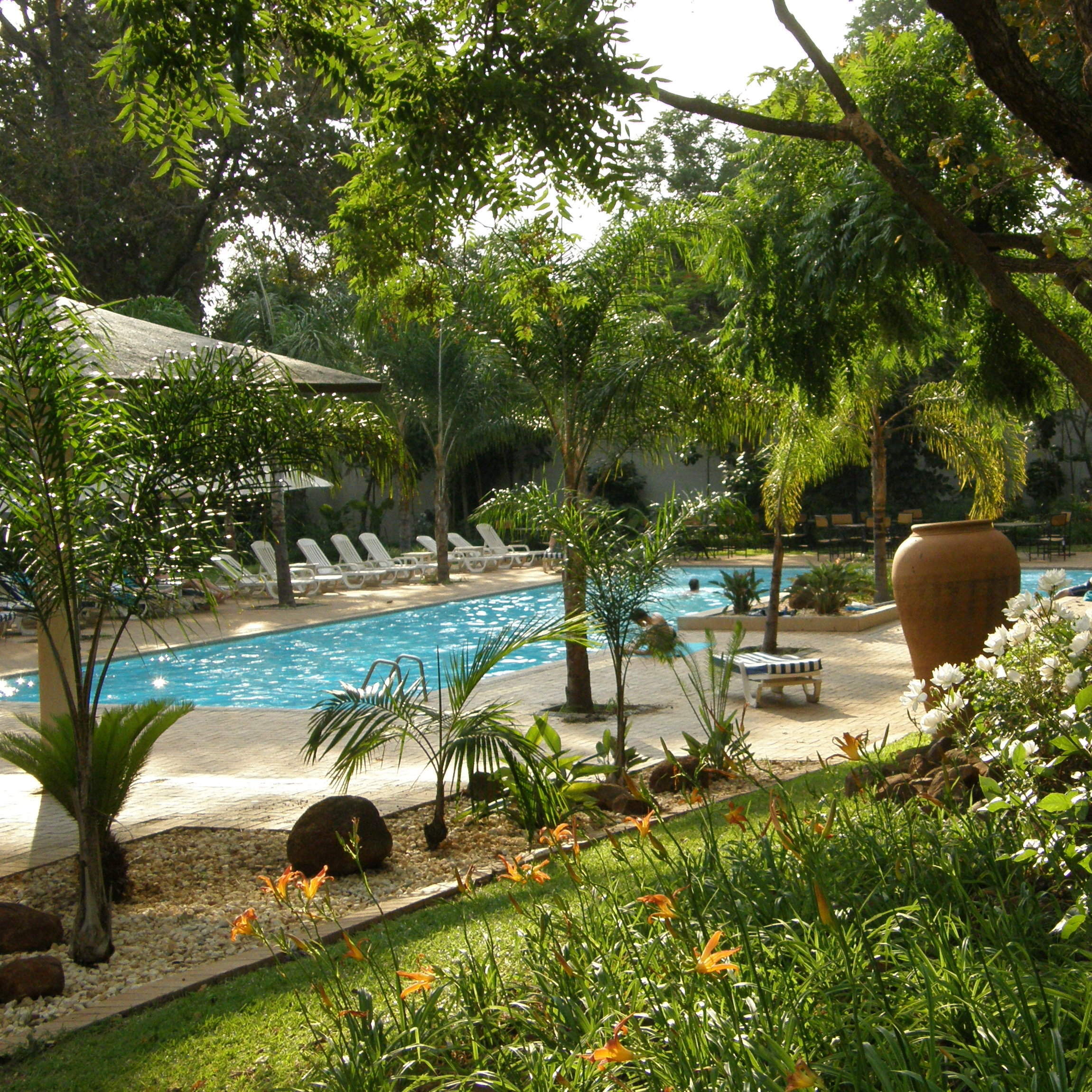
Taj Pamodzi Hotel
Lusaka's Taj Pamodzi Hotel is a typical large hotel, which may be useful as a stop-over for the beginning or end of a safari in Zambia.
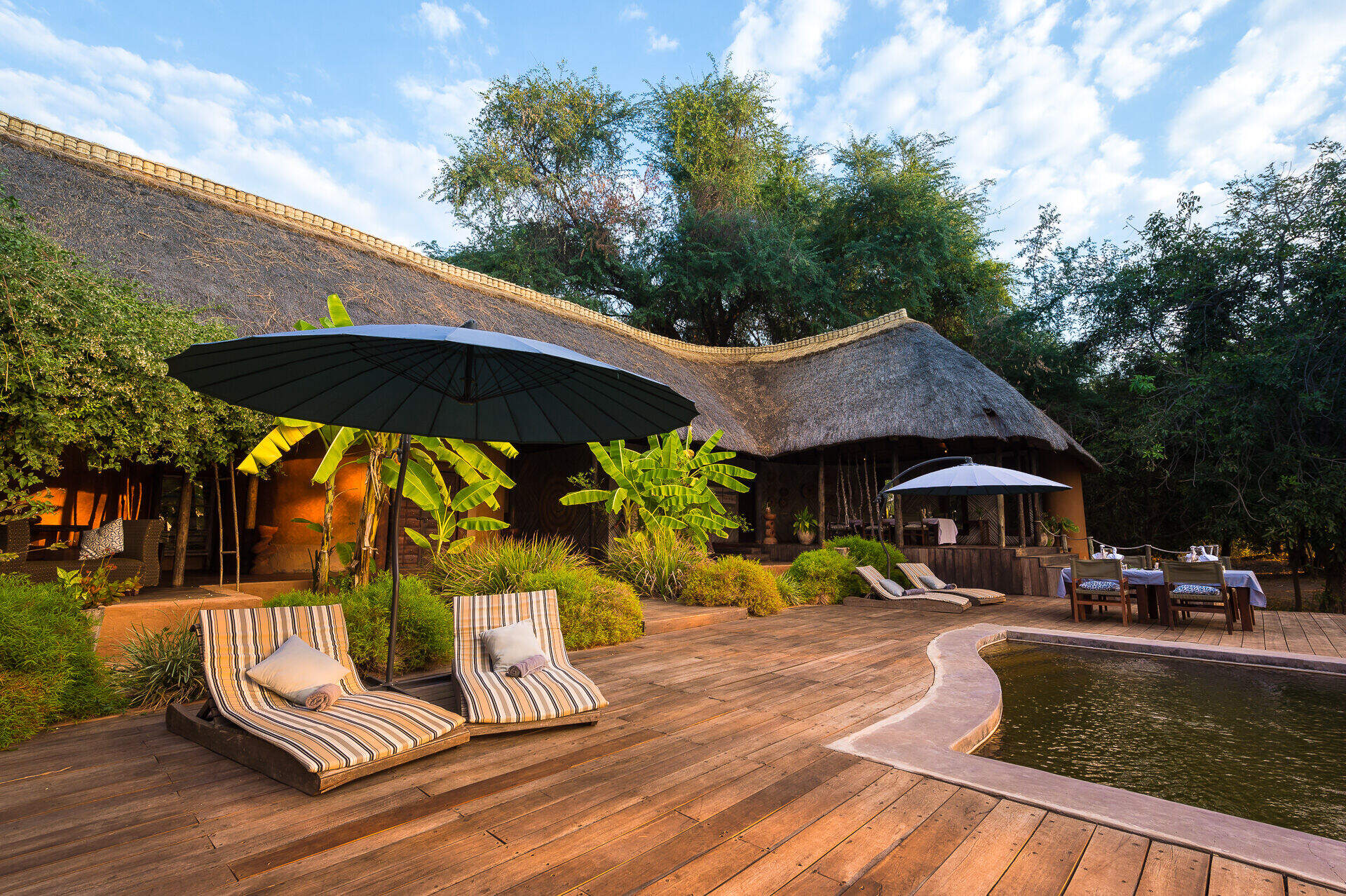
Luangwa River Camp
Luangwa River Lodge is a small and consciously stylish lodge in the Mfuwe area, overlooking the Luangwa River and the South Luangwa National Park beyond – an area renowned for great game.
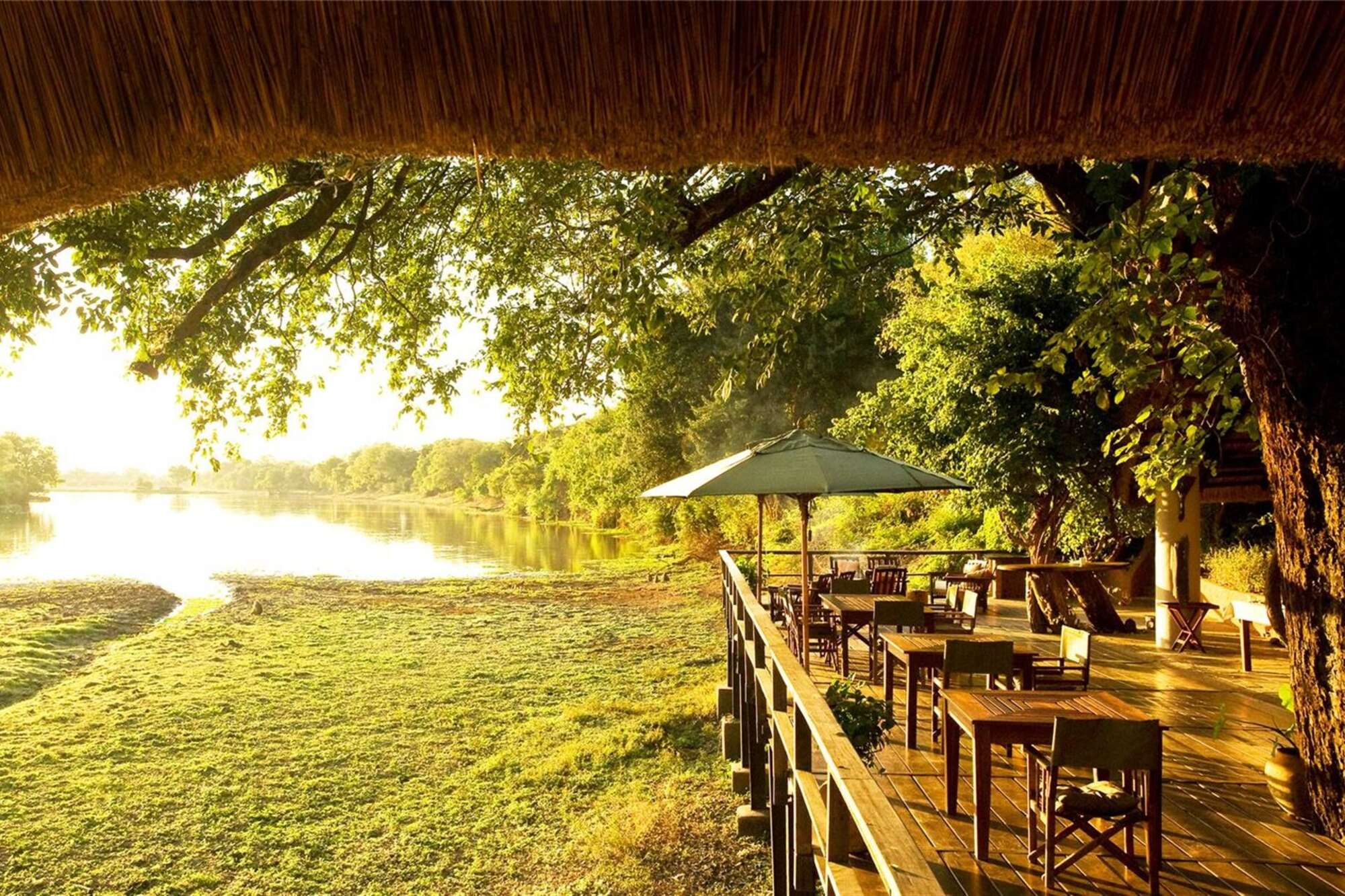
Kapani Lodge
Kapani Lodge is now the main office base for Norman Carr Safaris, one of the Luangwa's oldest safari operations.
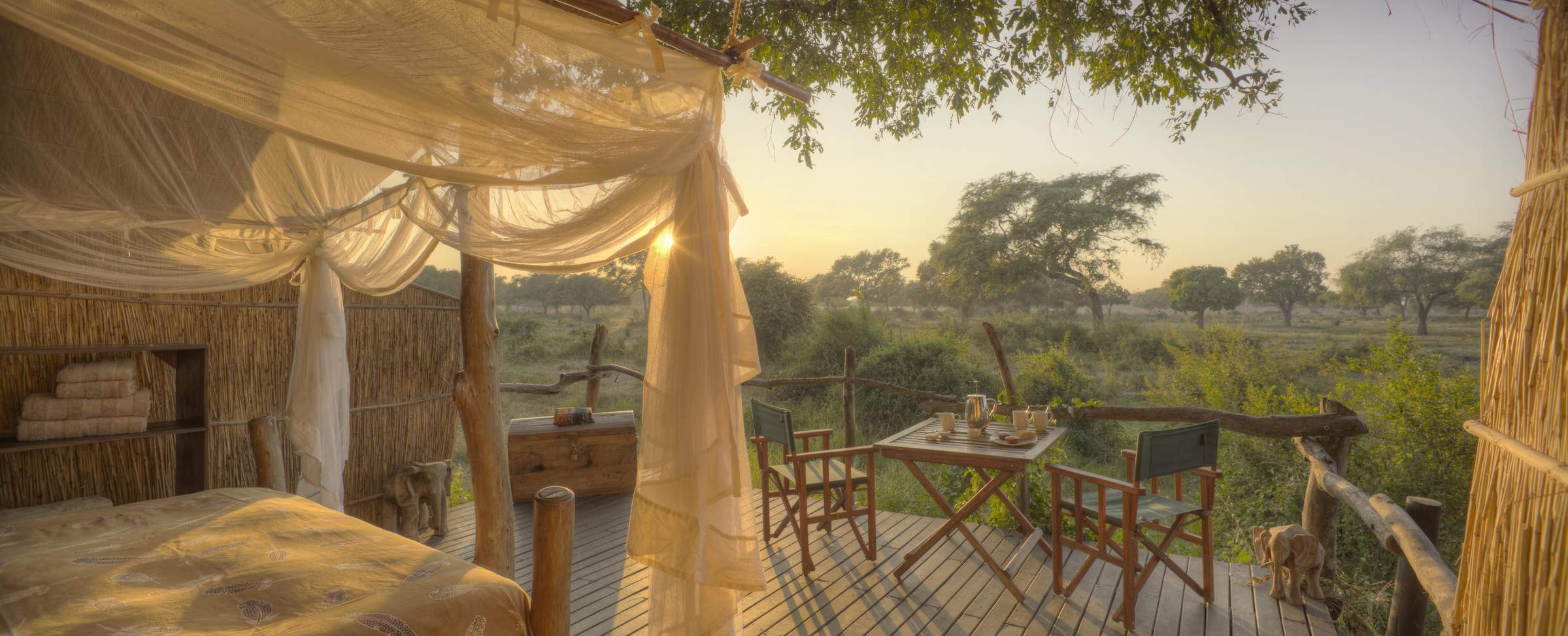
Flatdogs Camp
A relatively big safari camp, Flatdogs offers value for money with great guiding and good food in a comfortable, relaxed setting.
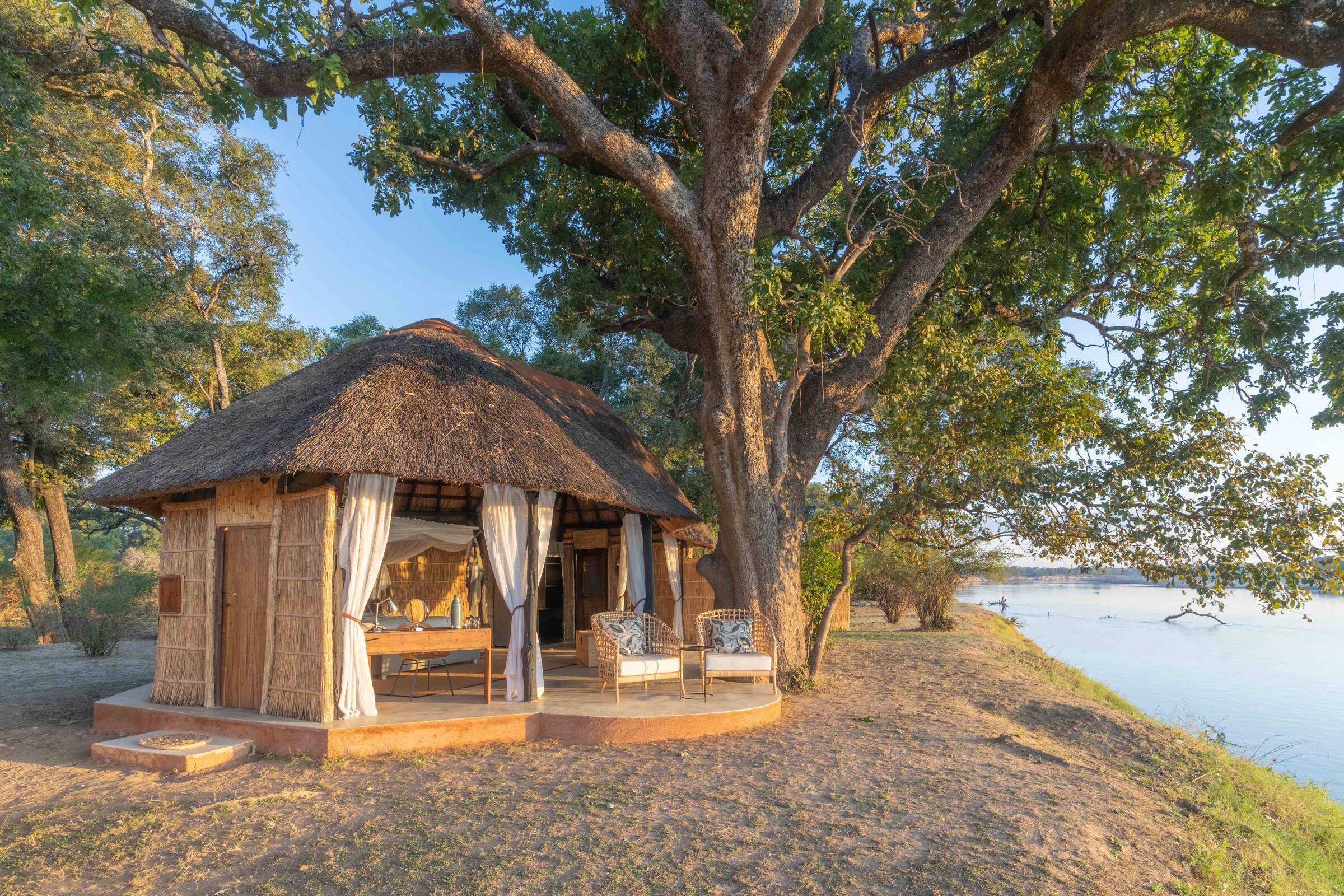
Mchenja Bushcamp
Set in a shady ebony grove on the banks of the Luangwa, Mchenja is a smart tented bushcamp. It combines well with Kakuli and Nsolo – its sister camps with a focus on walking safaris.
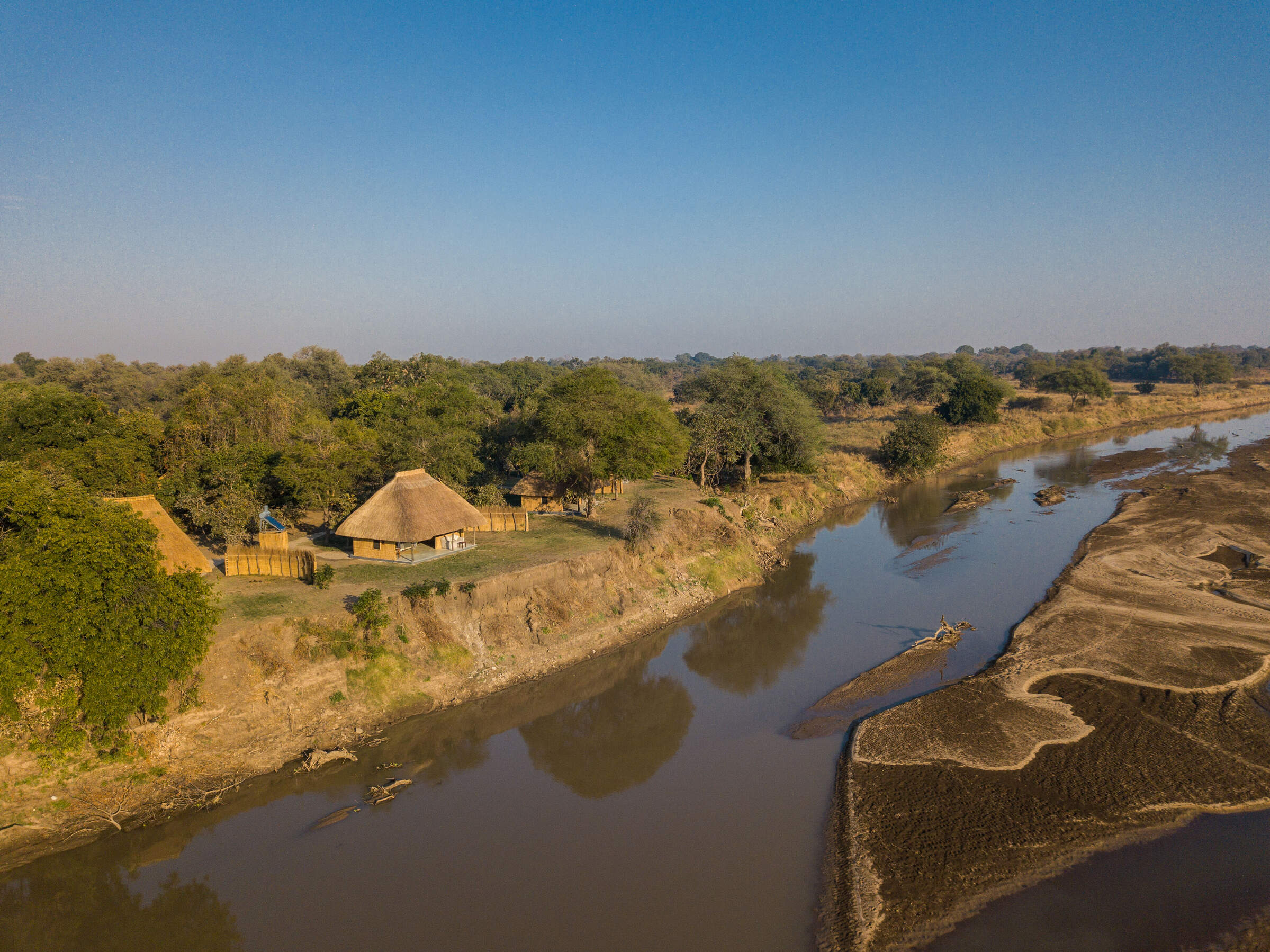
Kakuli Bushcamp
Beside the Luangwa River, Kakuli is a comfortable tented bushcamp offering 4WD safaris and walking safaris – the best of which are camp-to-camp walks linking Kakuli with its nearby sister camps.
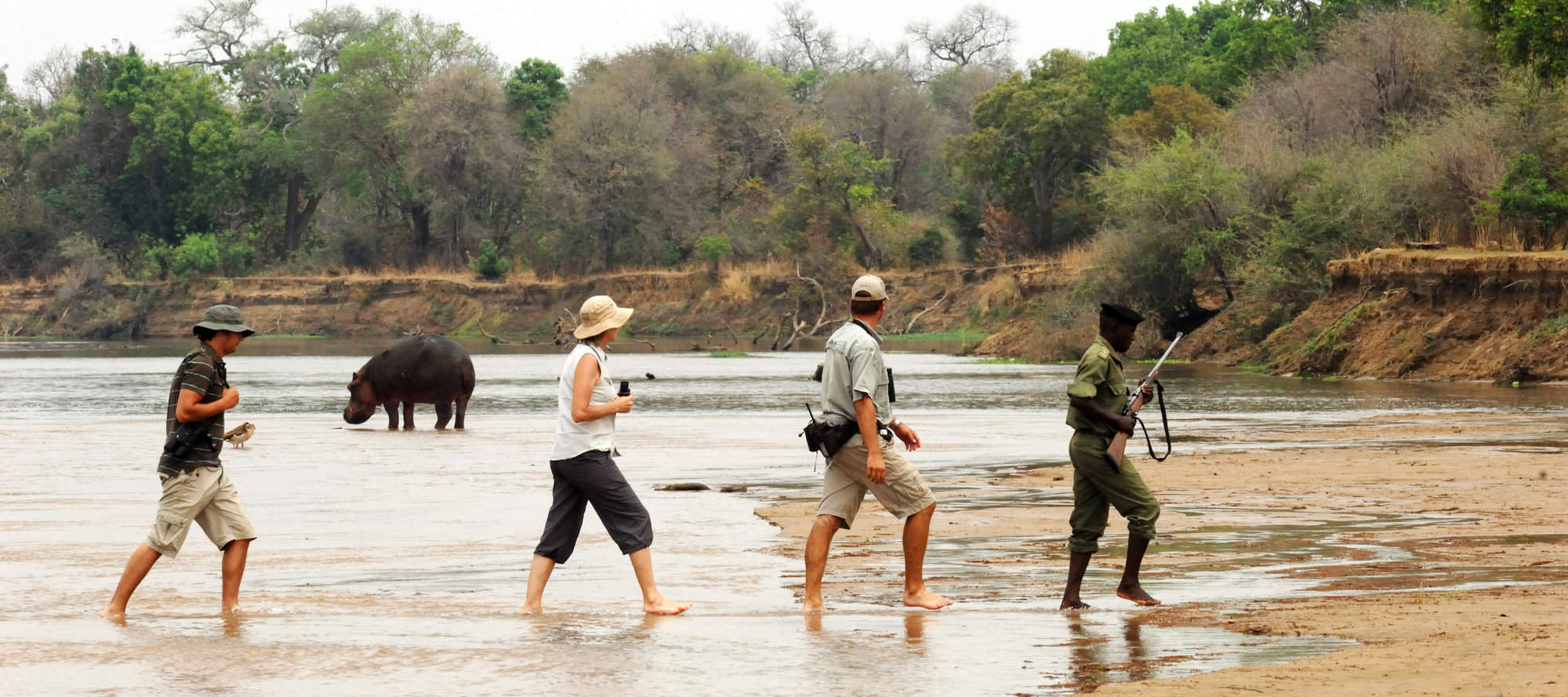
Mwaleshi Camp
Mwaleshi is a particularly remote and rustic bushcamp in North Luangwa National Park that concentrates purely on walking safaris. It's very small, but run by a top-quality operation – so come here for walking safaris run by super guides and an excellent wildlife experience.
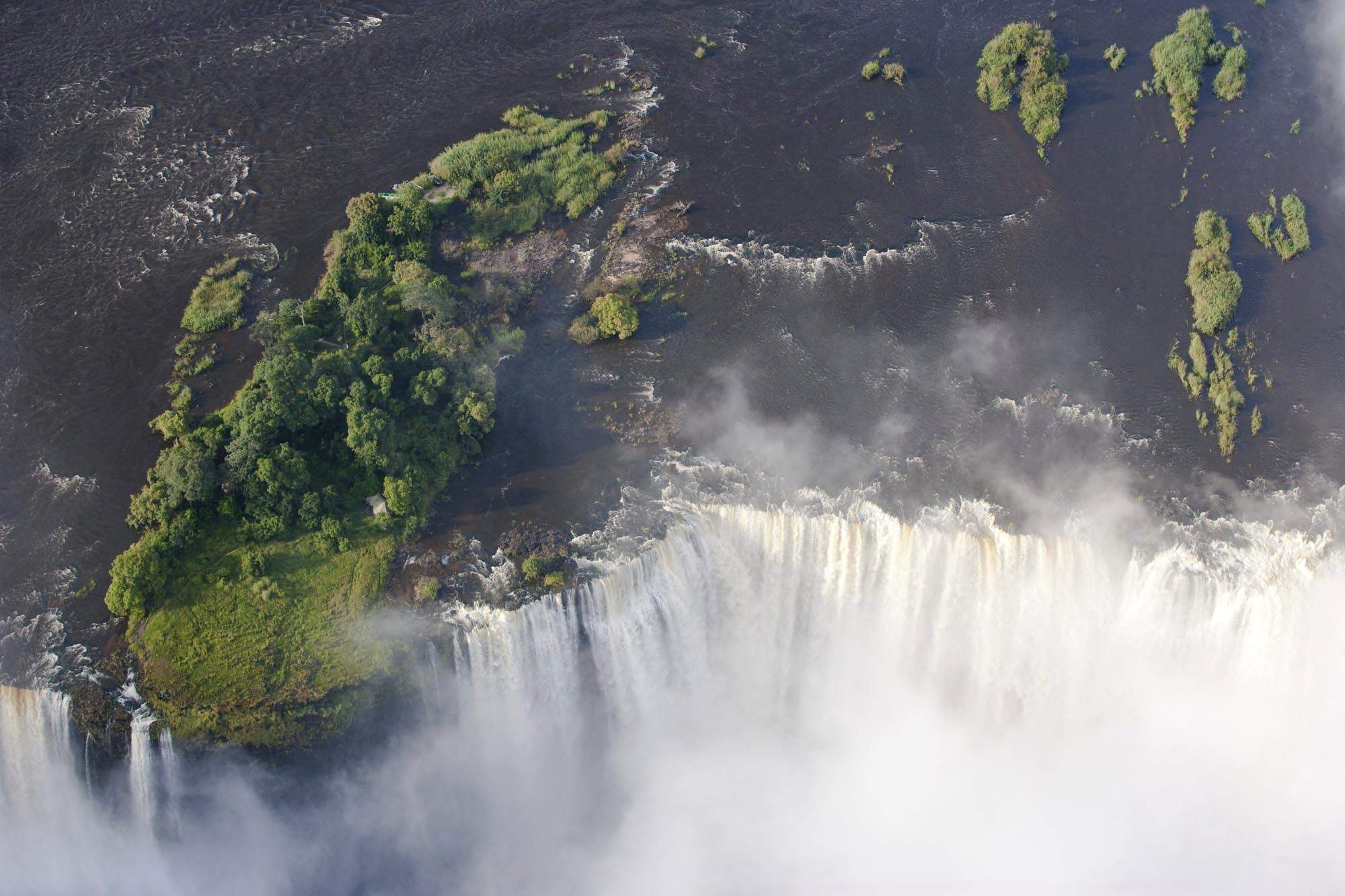
Secluded on the banks of the Zambezi, less than 20km from the Victoria Falls, Tongabezi is one of the most exclusive lodges in Zambia.
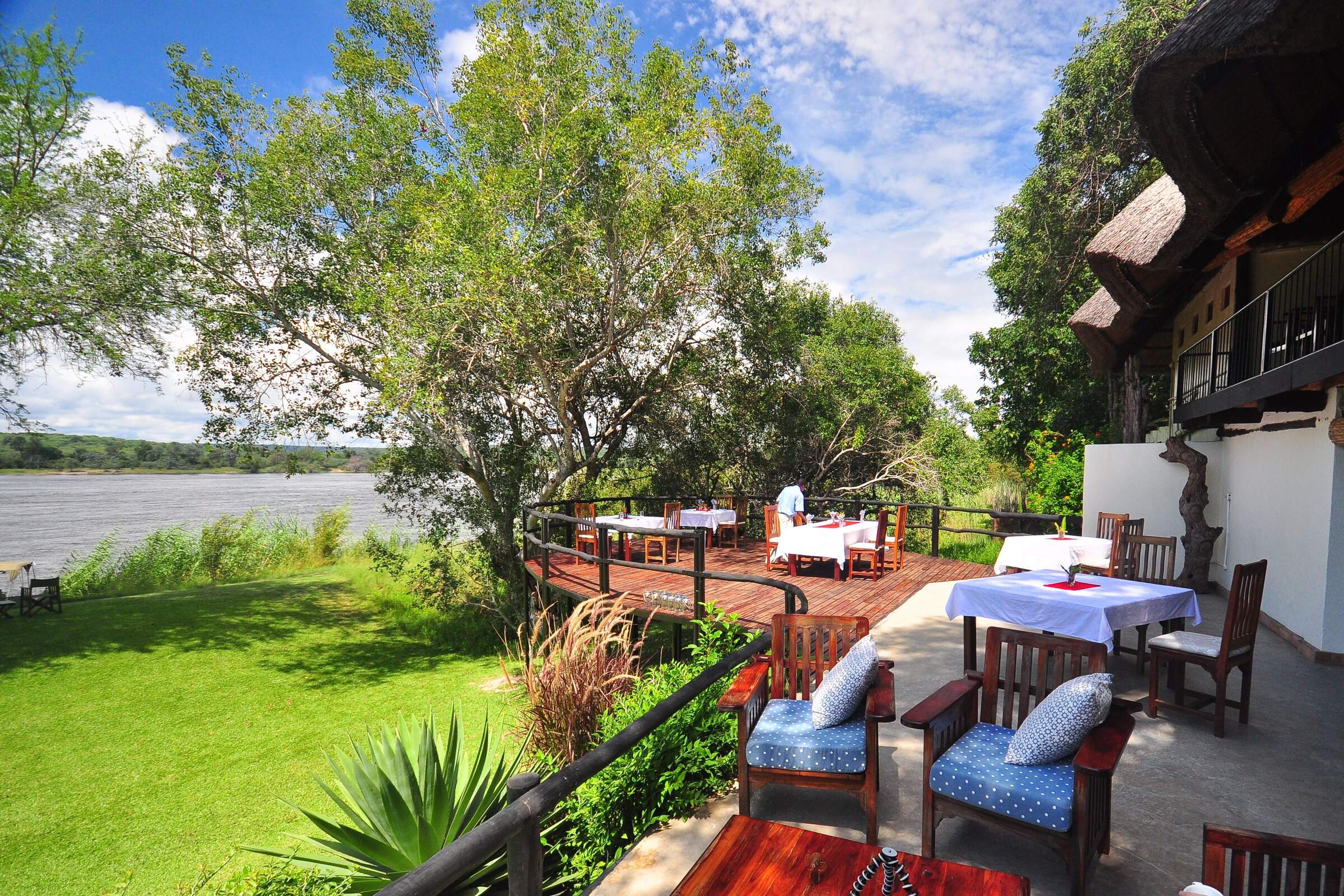
Waterberry Lodge
Offering great value for money and within easy reach of the Victoria Falls, Waterberry is a small, family-friendly lodge on the banks of the Zambezi River.
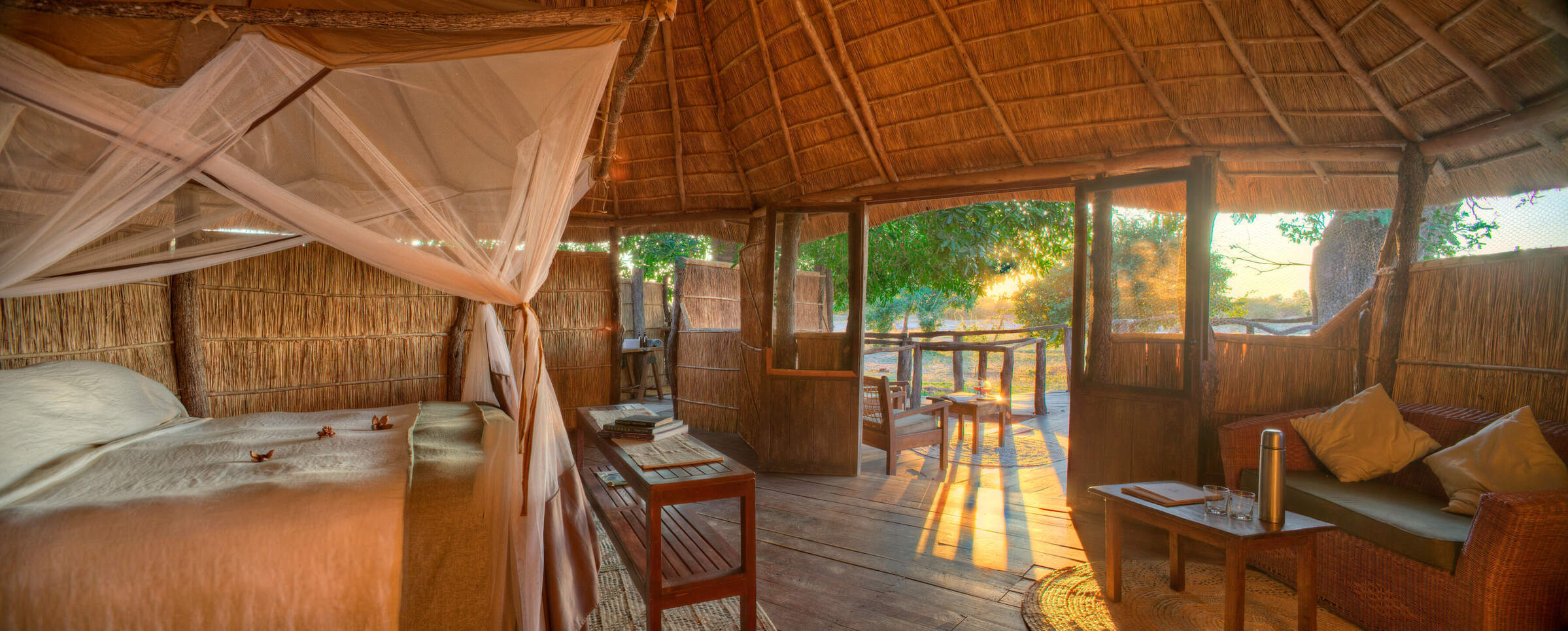
Nsolo Bushcamp
Nsolo is a small, comfortable bushcamp overlooking one or two pools in the usually dry Luwi riverbed. It concentrates on walking safaris in an interesting and diverse area, led by a knowledgeable guide.
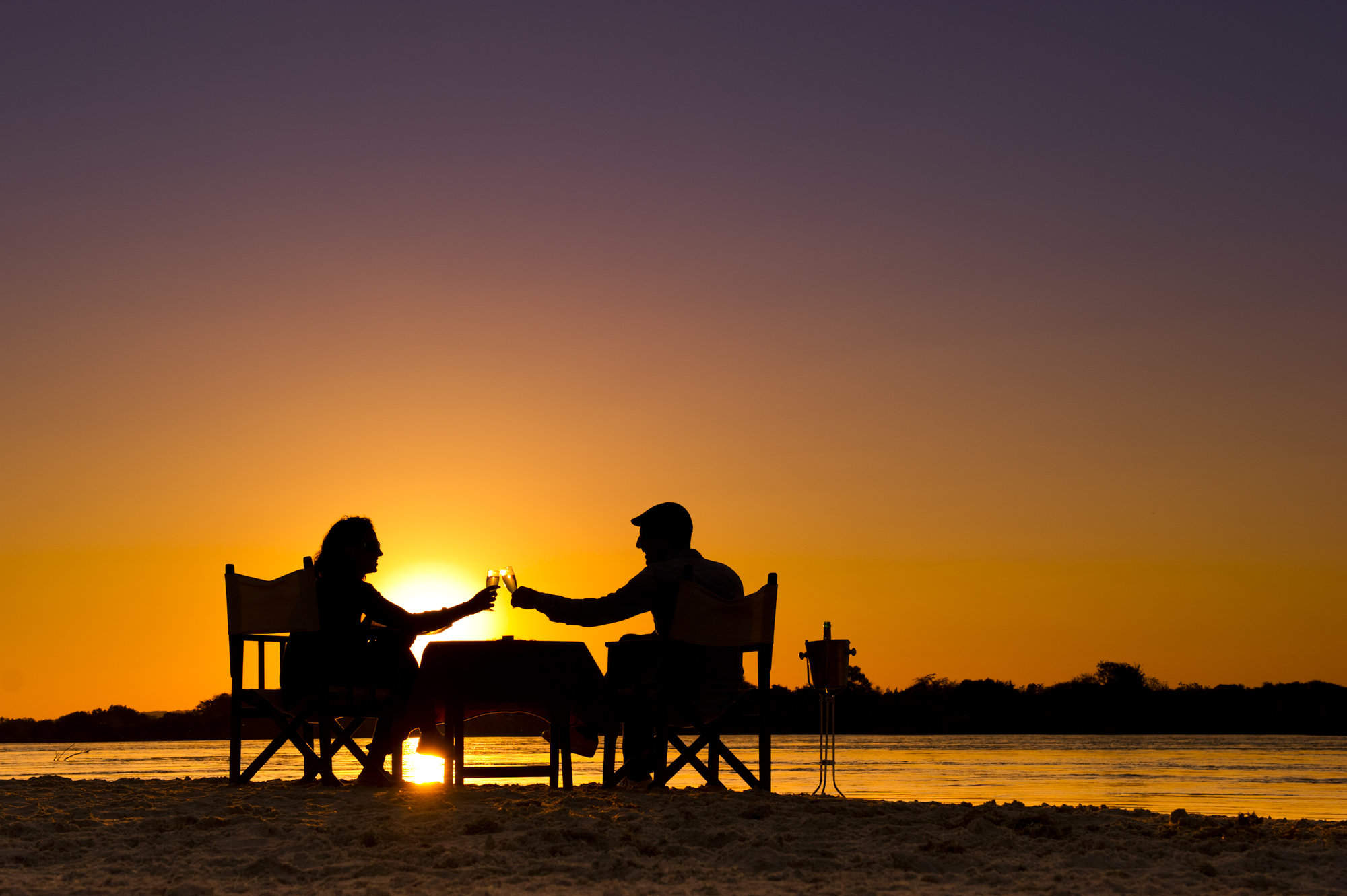
Islands of Siankaba
In a lovely location on the Zambezi upriver of the Victoria Falls, Islands of Siankaba provides a tranquil setting to relax at the start or end of a safari to Botswana or Zambia.
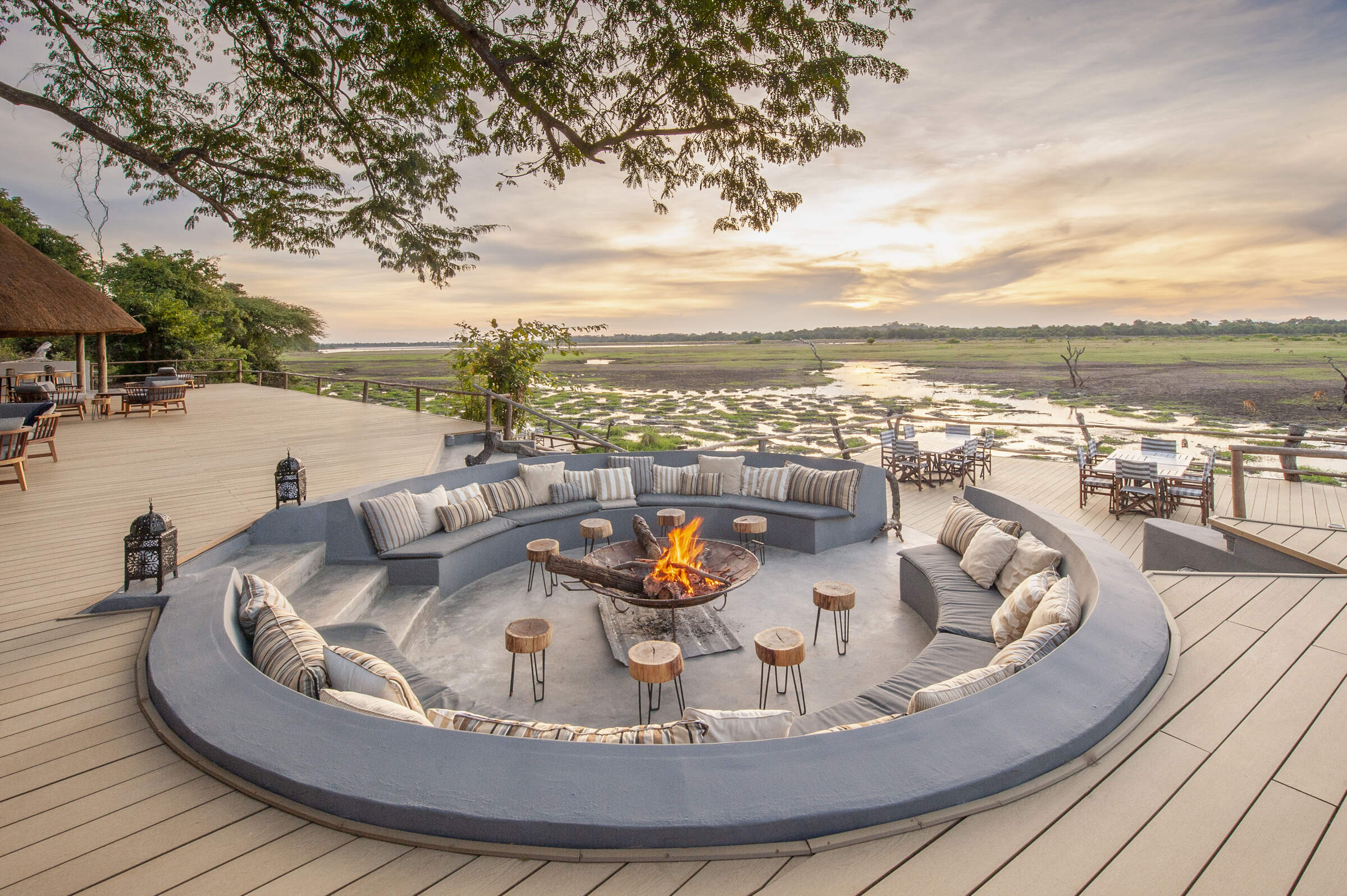
Kafunta River Lodge
Kafunta is a laid-back, friendly and good-value lodge on the outskirts of South Luangwa National Park.
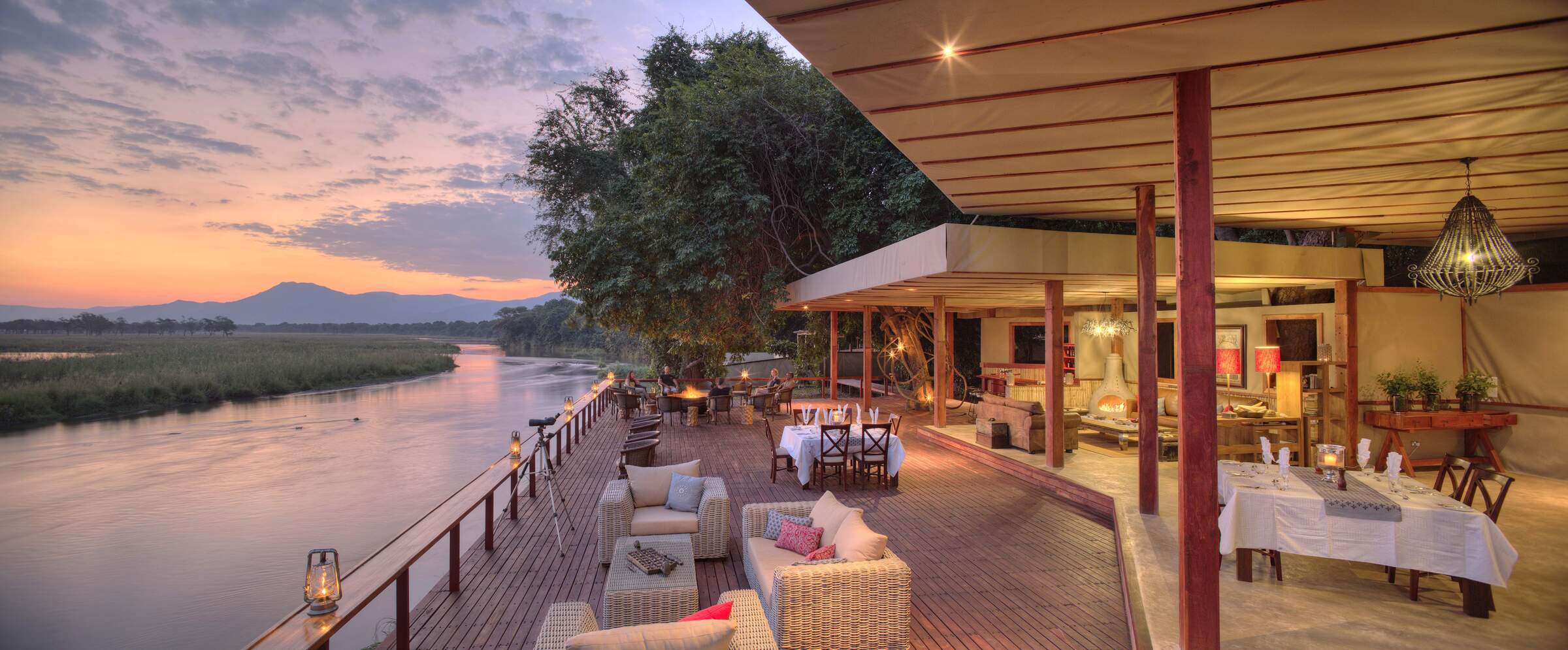
Sausage Tree Camp
Sausage Tree is a high-quality safari camp offering a luxurious stay and excellent personal service deep inside Zambia's Lower Zambezi National Park.
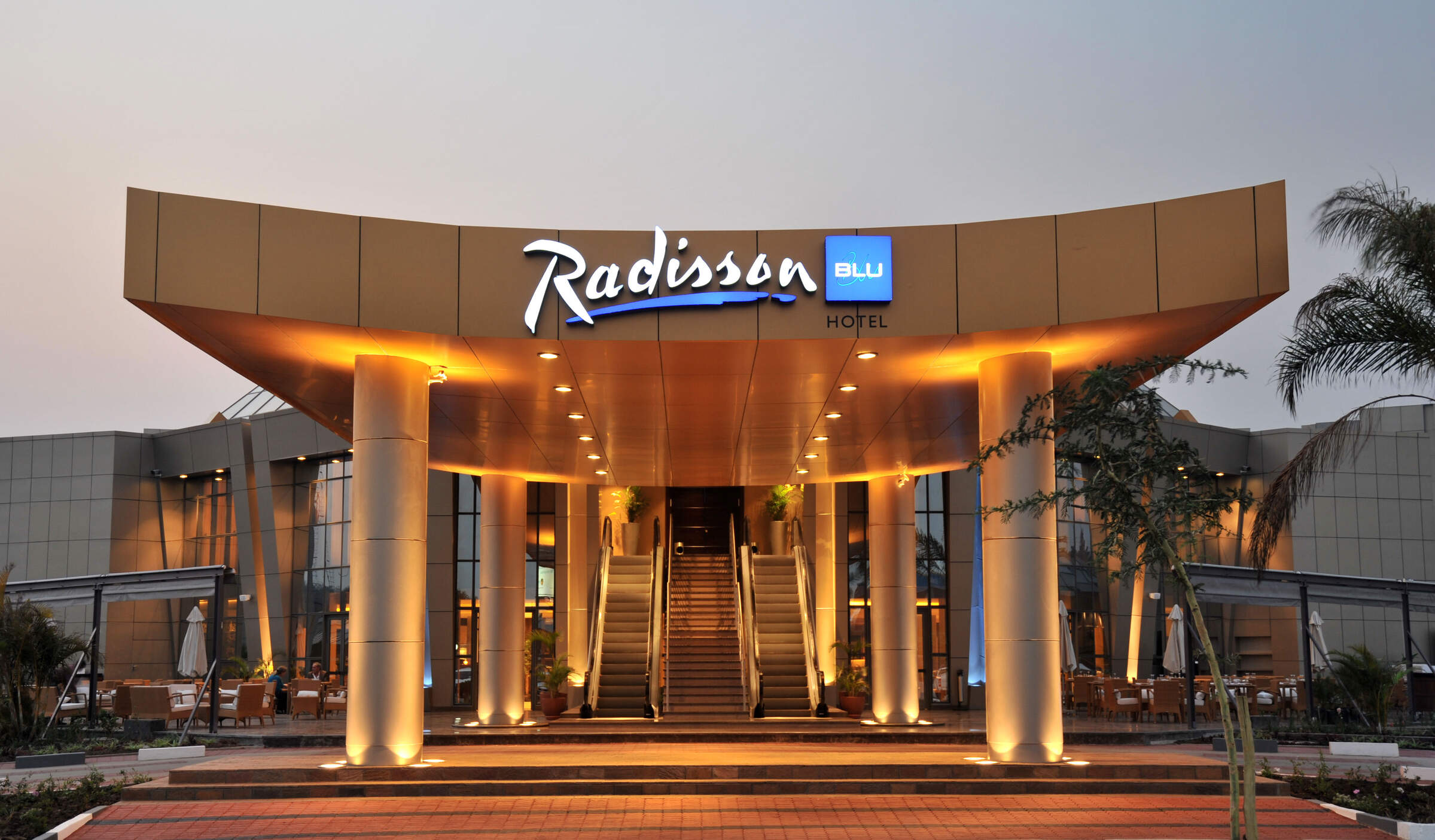
Radisson Blu Hotel
Radisson Blu is a modern hotel with friendly staff, spacious rooms and good facilities just 20 minutes’ drive from Lusaka Airport.
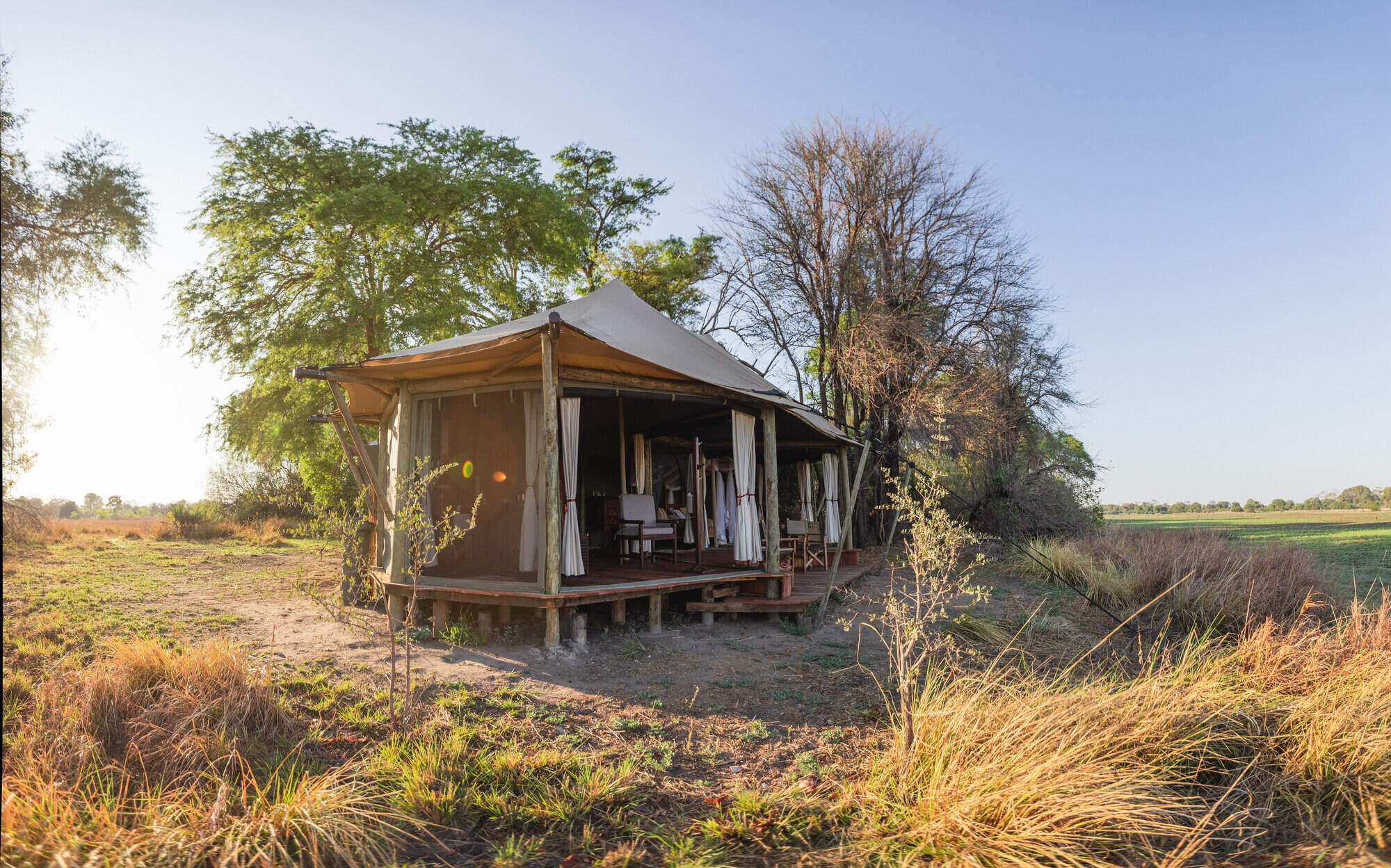
Musekese Camp
Musekese is a small owner-run tented camp, offering great guiding and a high degree of personal service in a stunning wilderness area, with modest game.
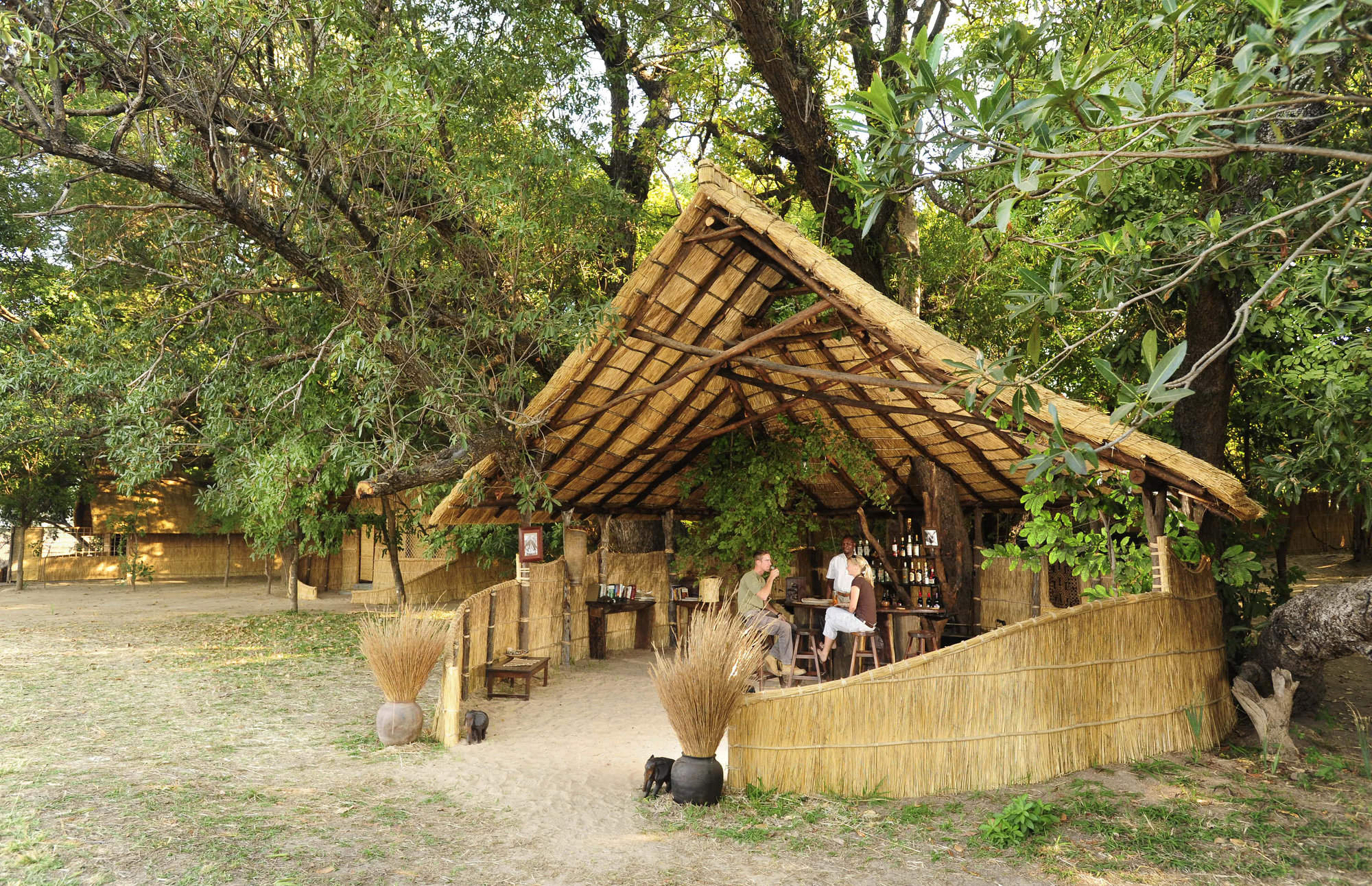
Luwi Bushcamp
In a remote part of the South Luangwa National Park, Luwi is a rustic bushcamp whose emphasis is on walking safaris with great guiding and a chance of seeing some rarely seen and elusive antelope.
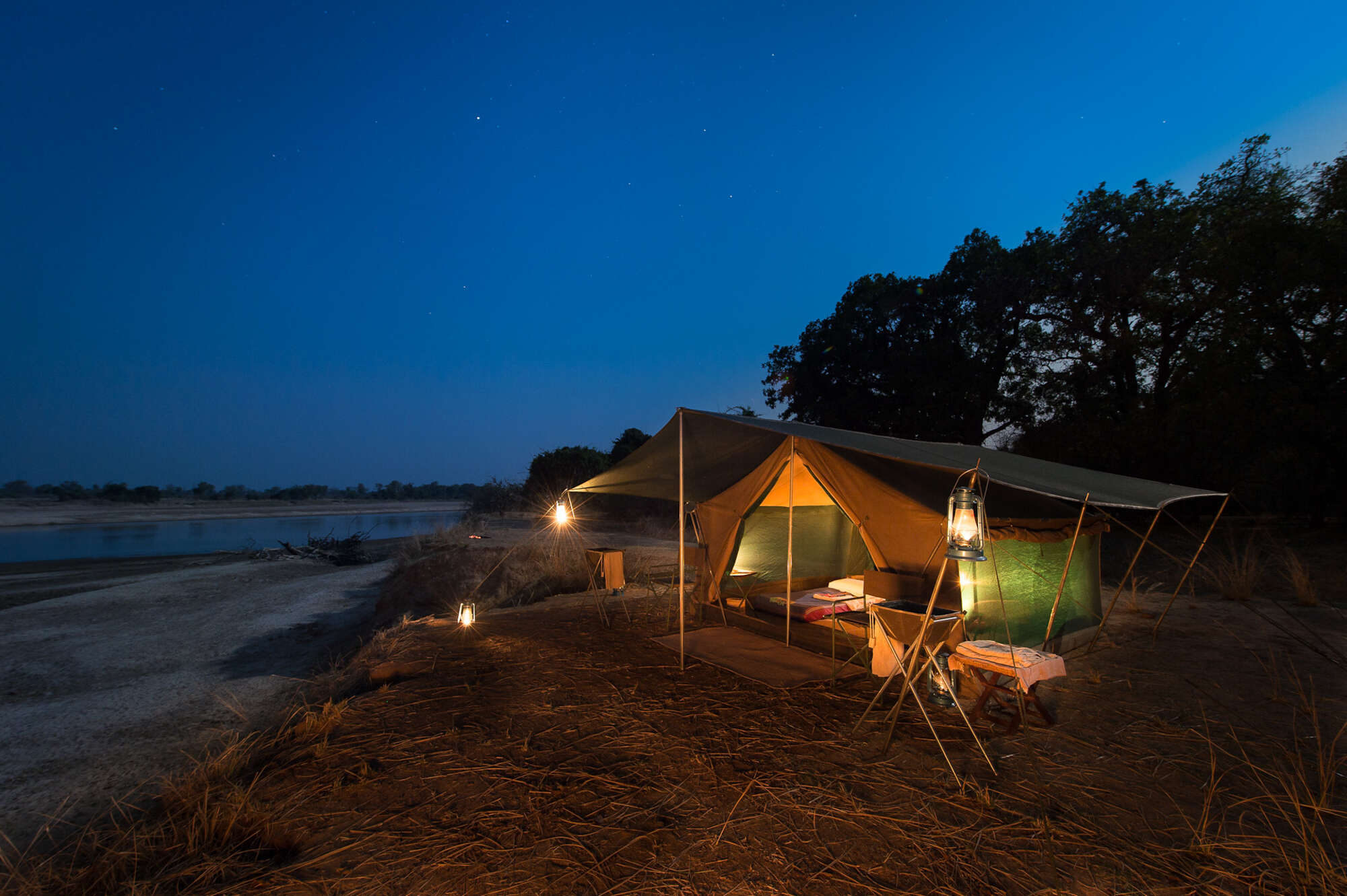
Robin Pope bush-camp
RPS bushcamping in South Luangwa National Park, Zambia
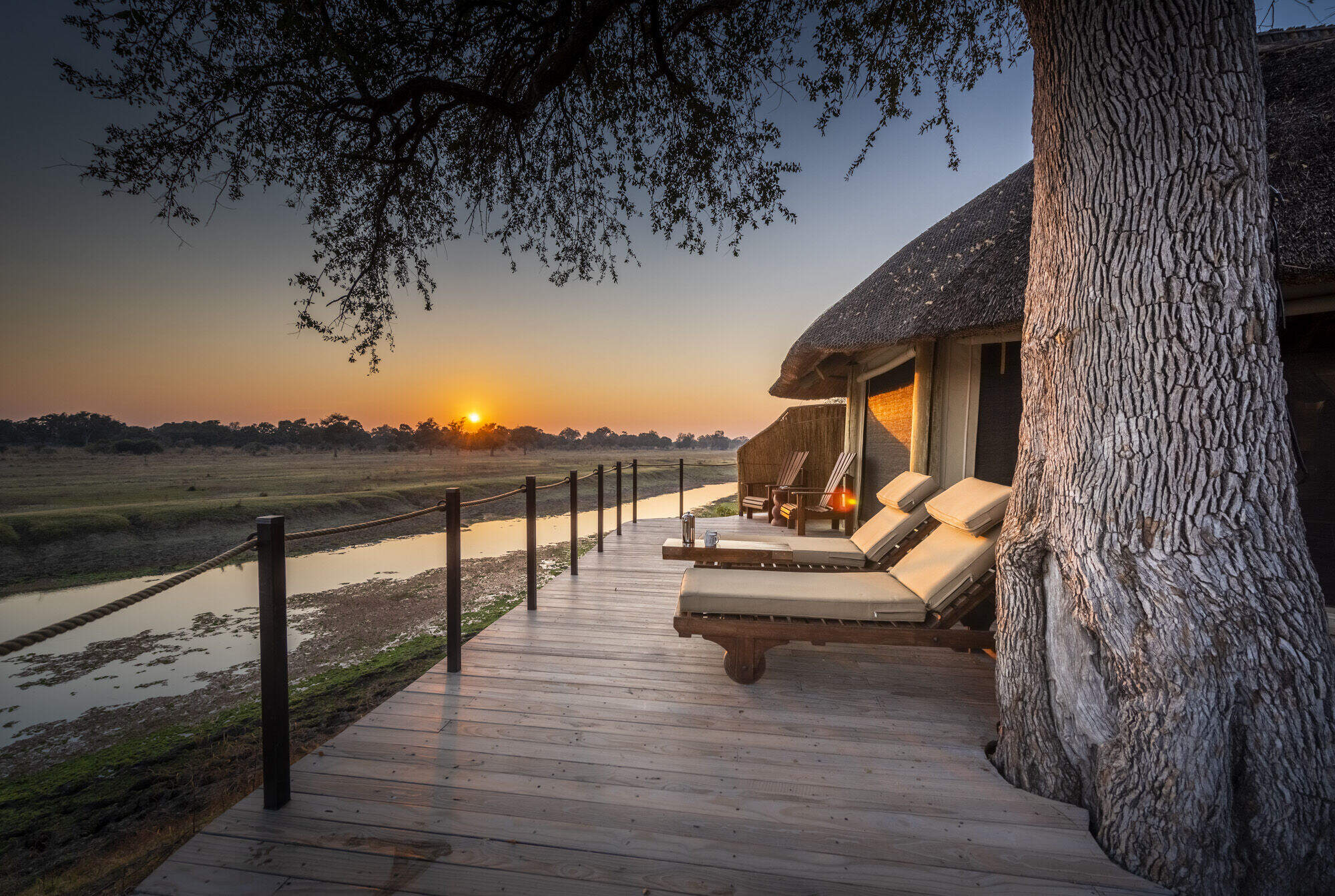
Lion Camp is an established and comfortable camp with a swimming pool, located near to the game-rich Lion Plain in the northern part of South Luangwa National Park.
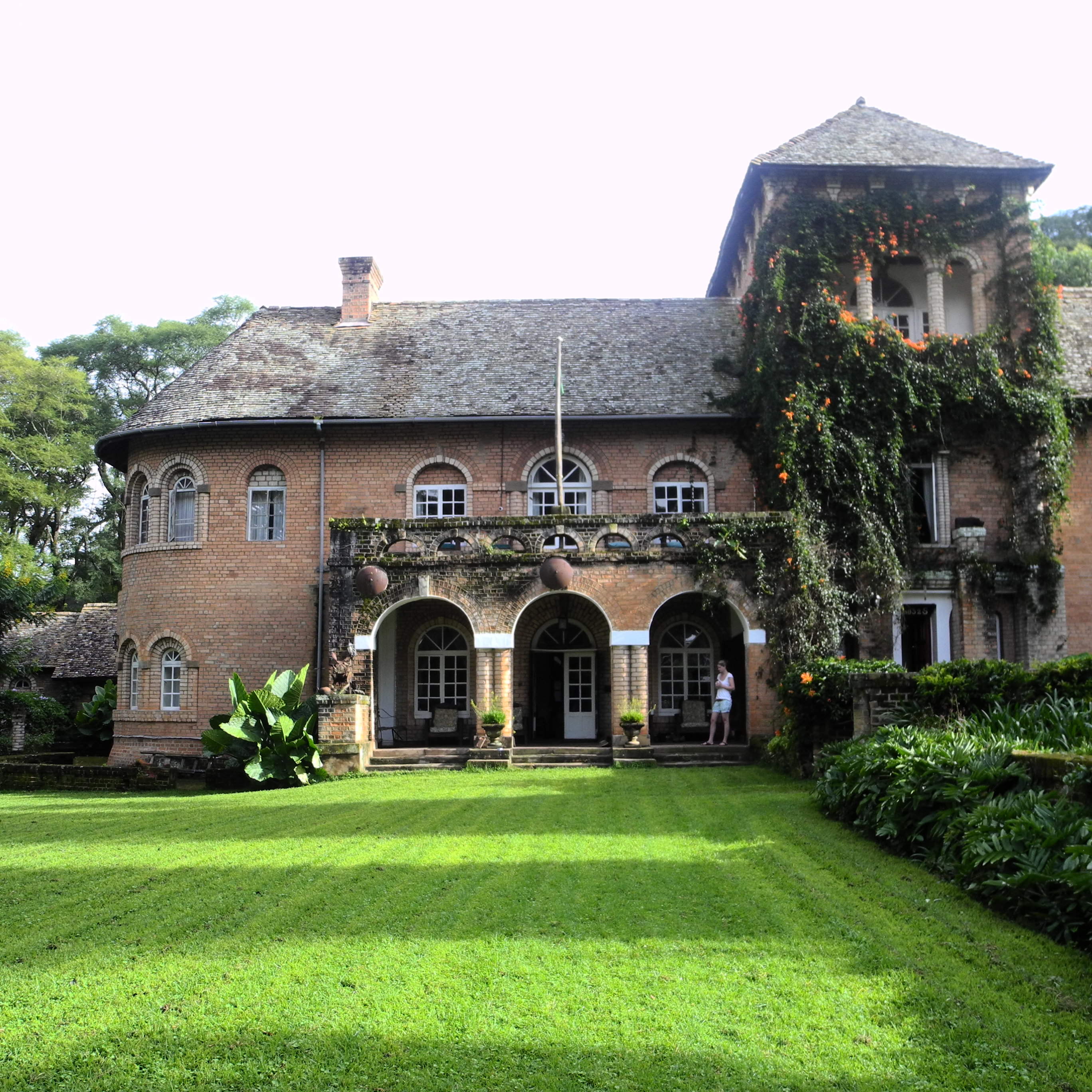
Shiwa Ng'andu
The Old Manor House at Shiwa Ng’andu is a fascinating cultural and historic stopover, either before, after or during a safari.
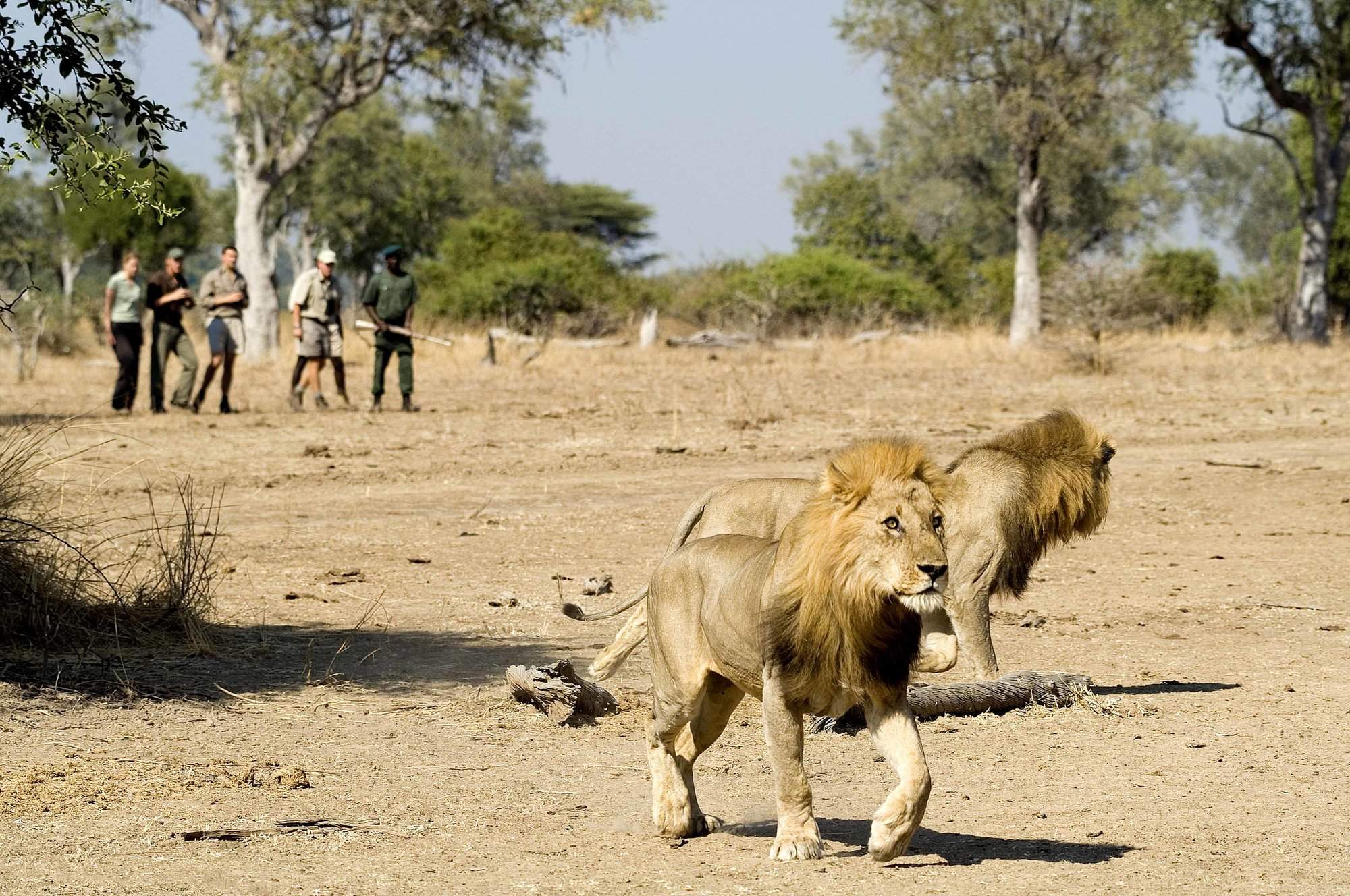
Robin Pope mobile
RPS mobile safari camps are at the heart of their set-itinerary walking safaris in South Luangwa National Park, which start and finish at a permanent camp.
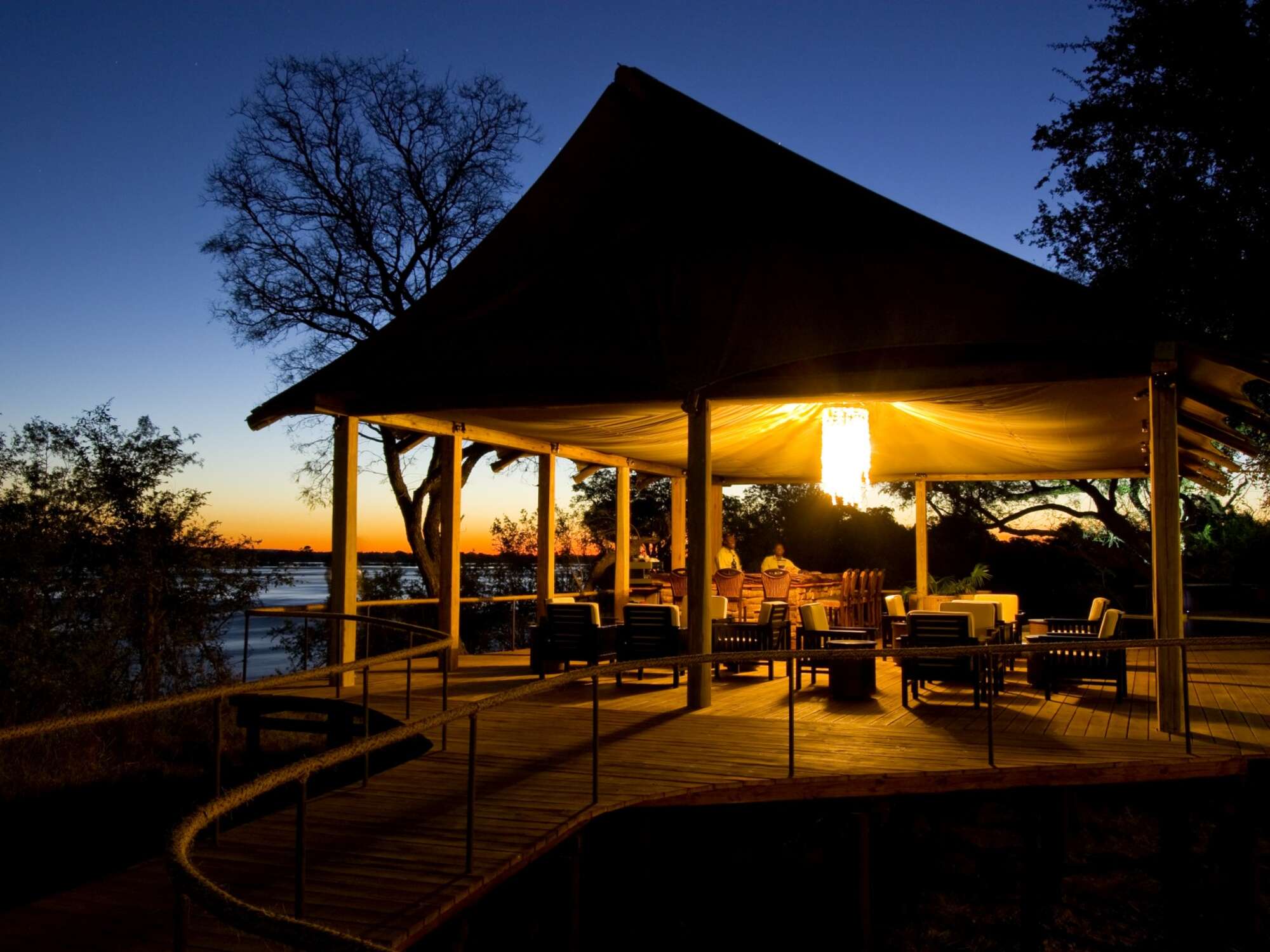
Toka Leya Camp
The new Toka Leya Camp stands beside the Zambezi inside Mosi-Oa-Tunya National Park – so wildlife often passes through. It's a comfortable tented camp which has great service and includes a range of activities.
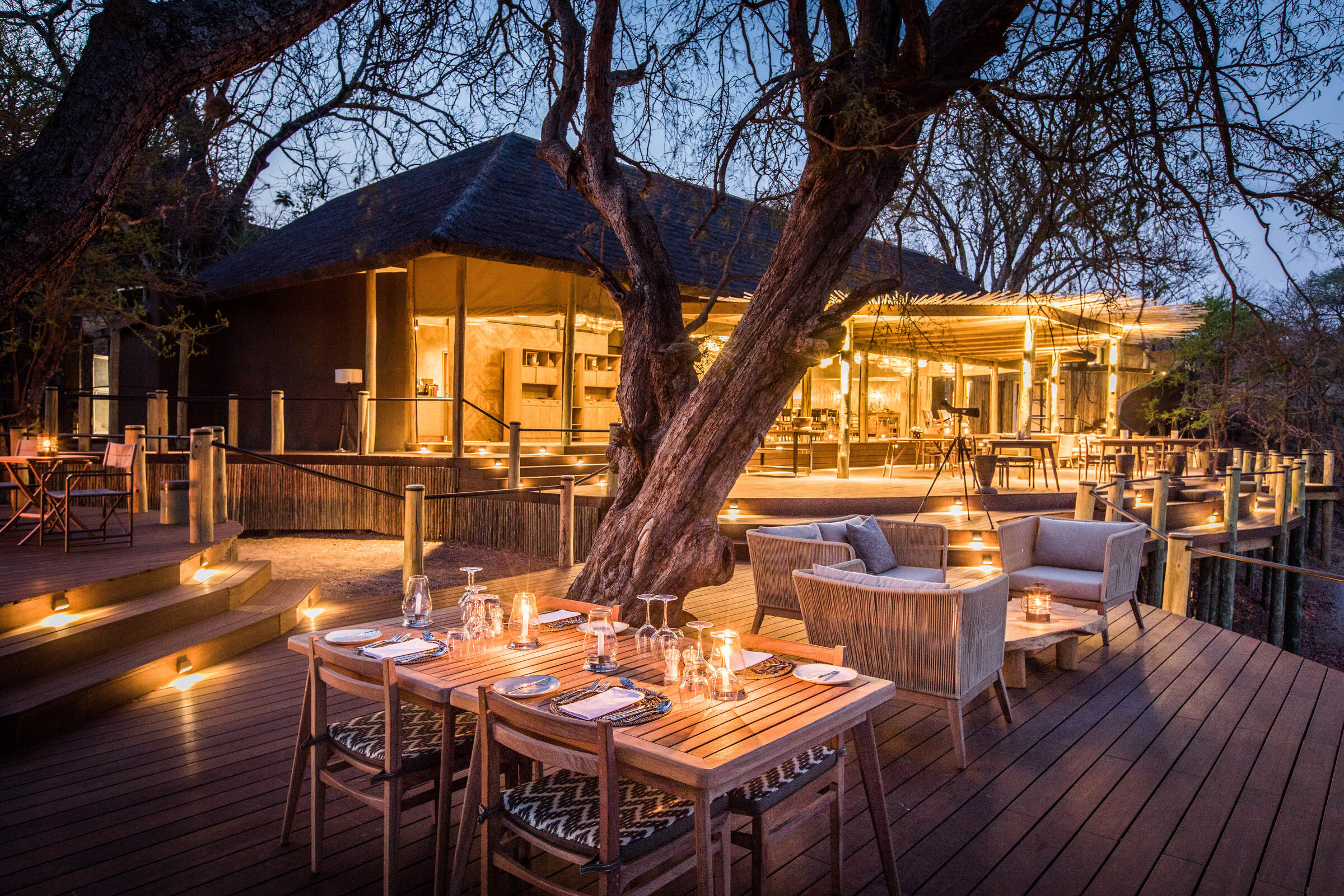
Puku Ridge is a luxurious designer camp set in a stunning location, high on a hill overlooking a floodplain within South Luangwa. Explore from here on 4WD safaris and walks.
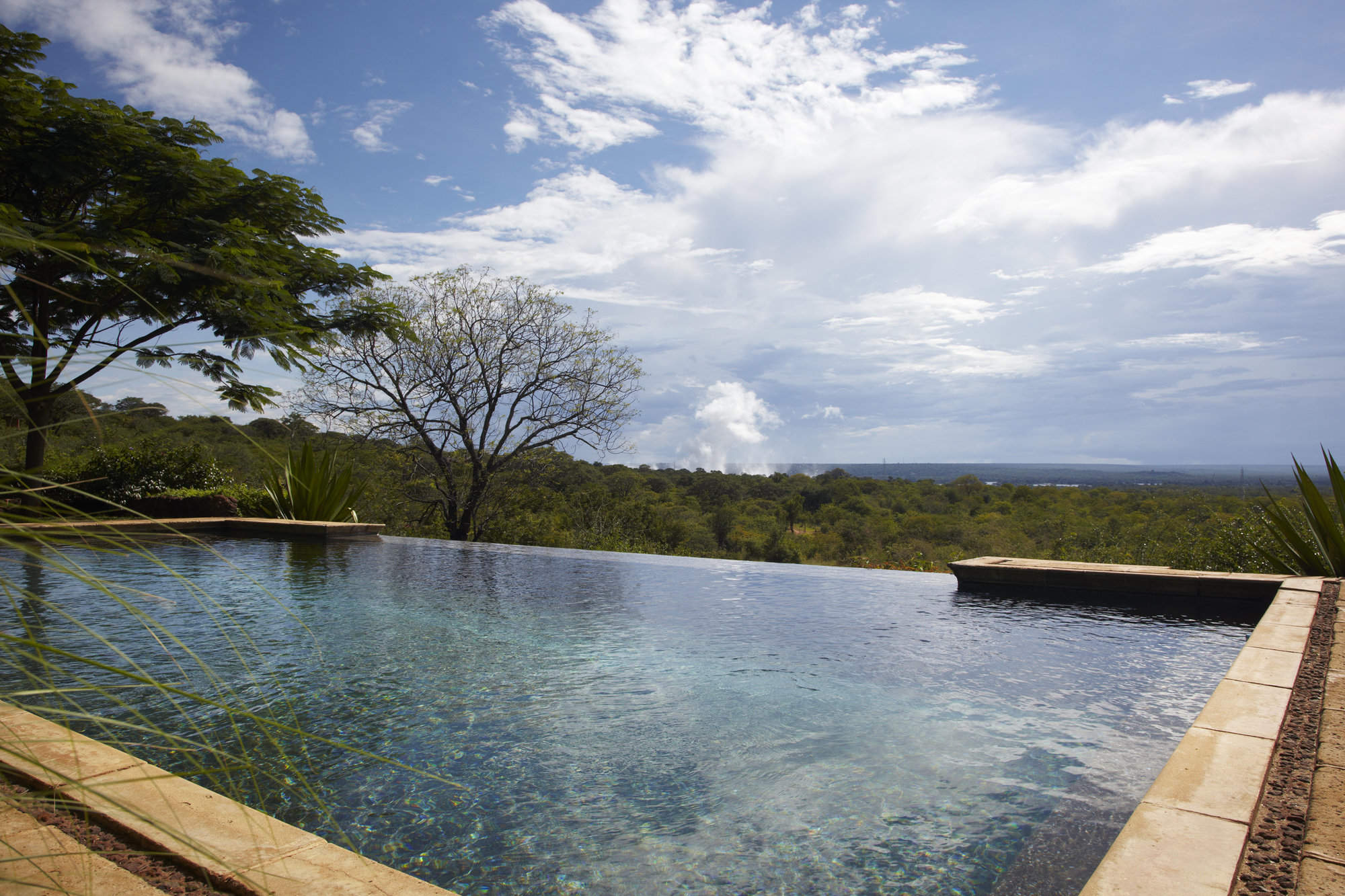
Stanley Safari Lodge
Stanley Safari Lodge has views of Victoria Falls spray from all the rooms, and is a convenient base for exploring the Zambezi River area.
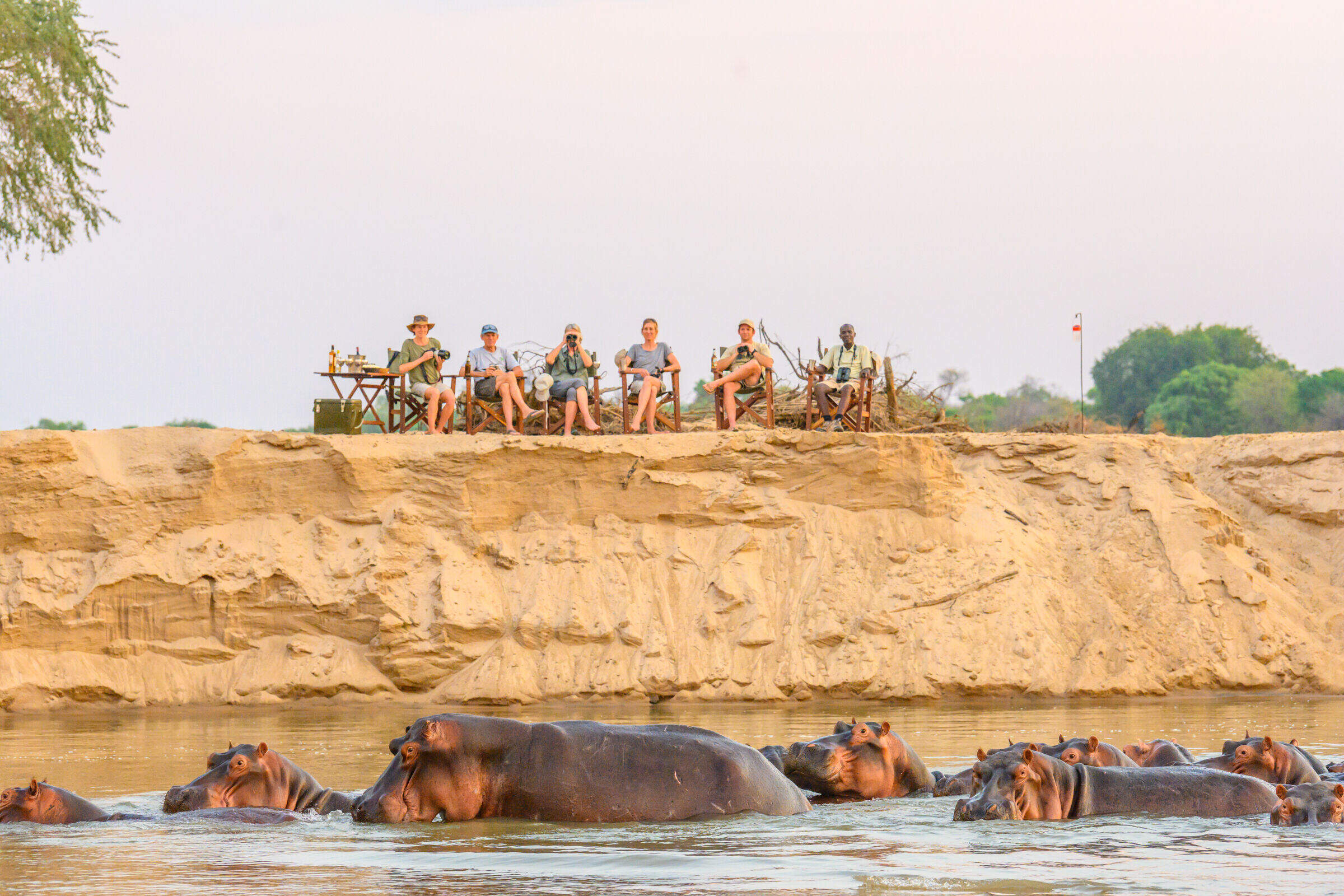
Takwela Camp
Remote, wild and very small, Takwela Camp offers excellent guiding on both walking safaris and game drives in Zambia's North Luangwa National Park.
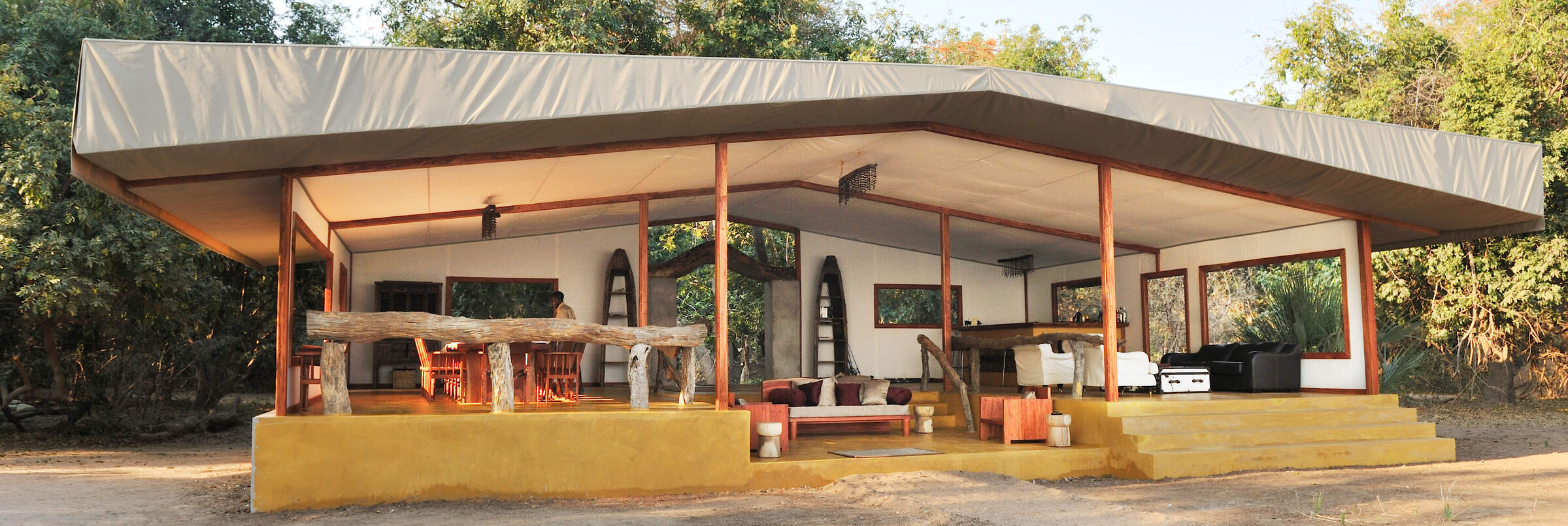
Potato Bush Camp
Potato Bush is located right in the heart of the Lower Zambezi National Park, with privately guided activities taking you on game drives, walks, boat trips and canoeing.
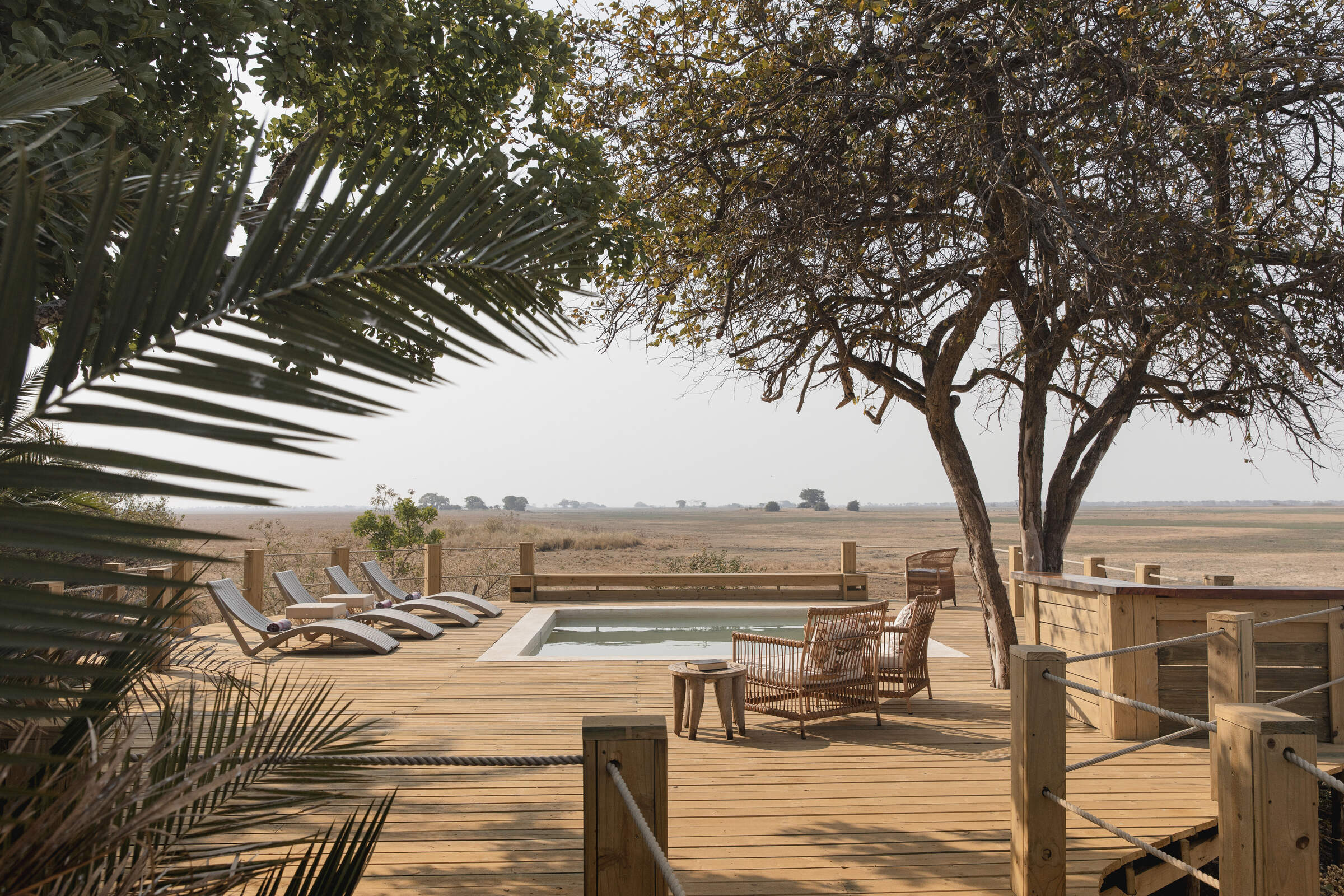
Busanga Bushcamp
Busanga Bushcamp is a small but comfortable tented bushcamp (max 8 guests) which makes a great base for a wildlife safari to the Busanga Plains.
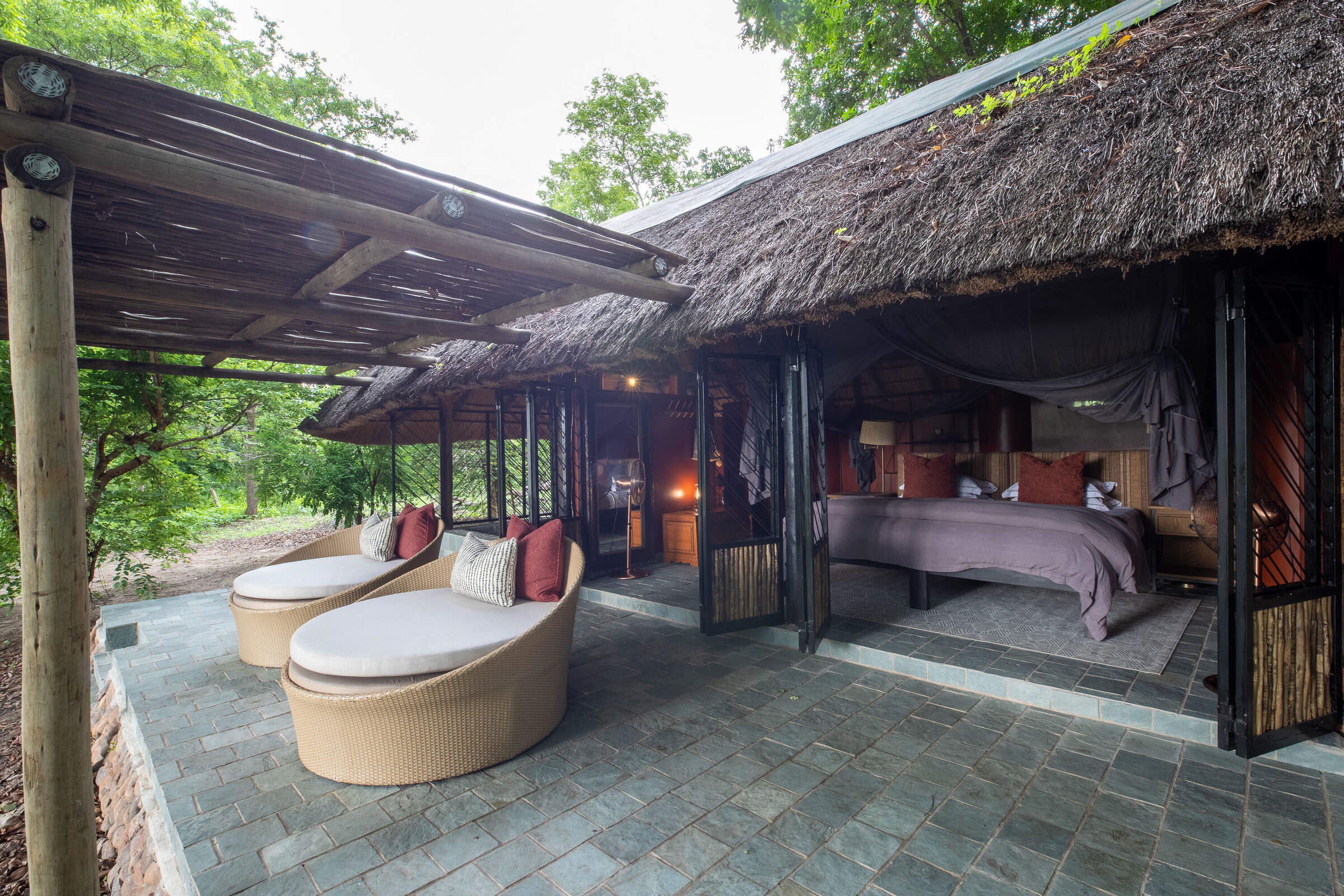
Kapamba Bushcamp
In the remote far south of South Luangwa National Park, Kapamba is a small and very comfortable bushcamp offering good walks and game drives.
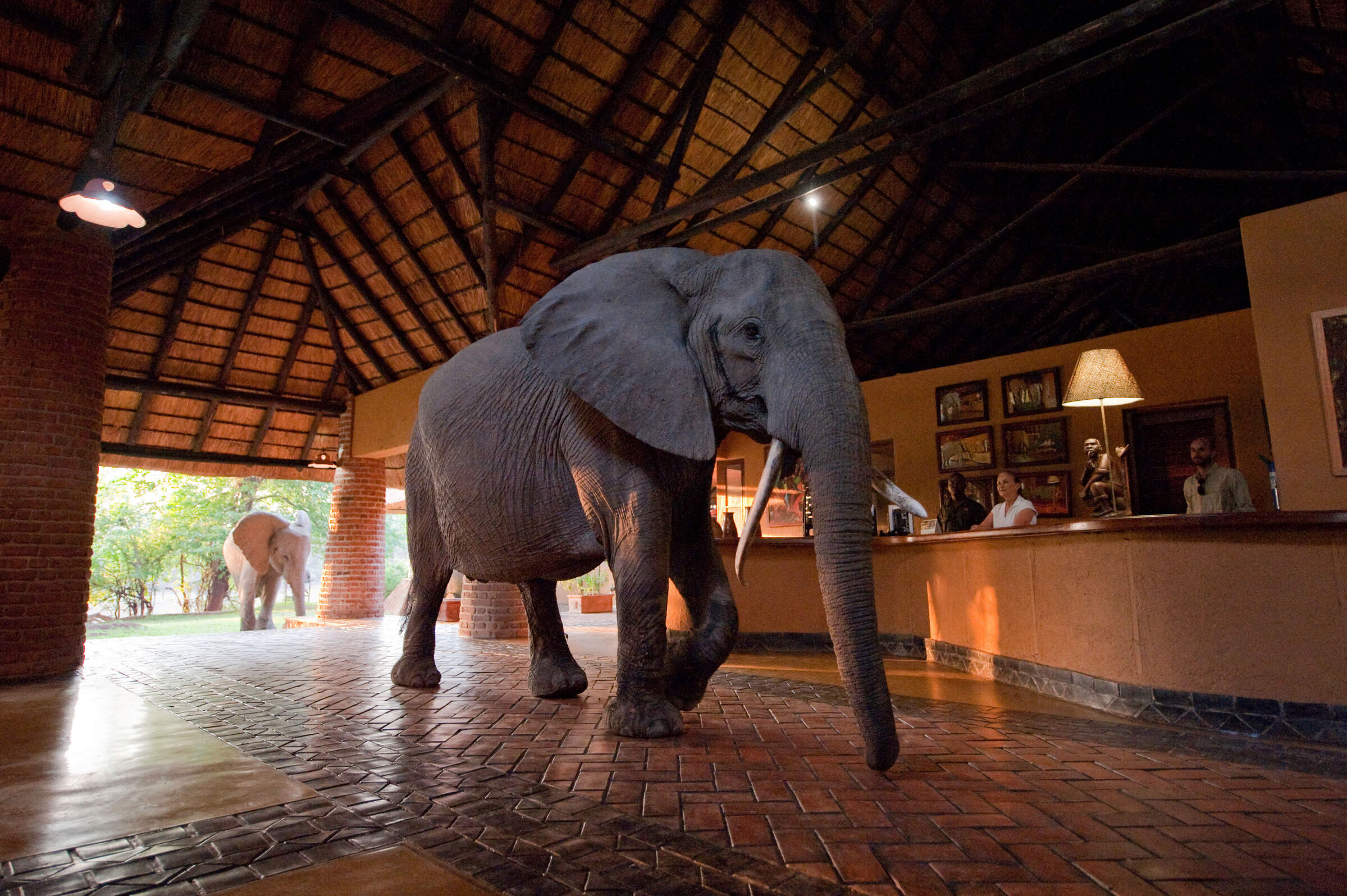
Mfuwe Lodge
In a game-rich area close to the South Luangwa’s main Mfuwe Gate, Mfuwe Lodge is relatively large by park standards, but it’s stylish, modern and family friendly.
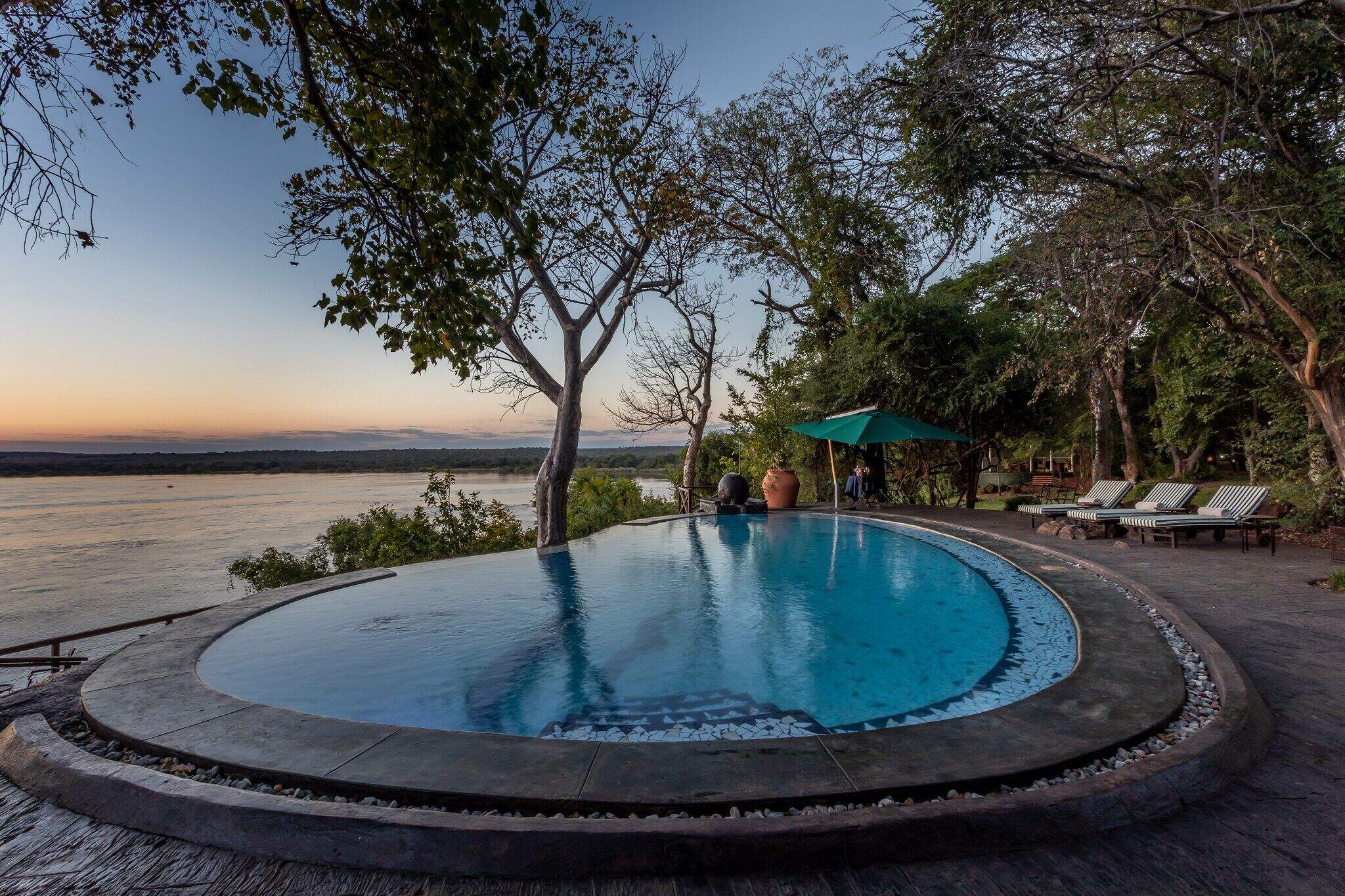
The River Club
The River Club, near Zambia's town of Livingstone and the Victoria Falls, overlooks the Zambezi River.
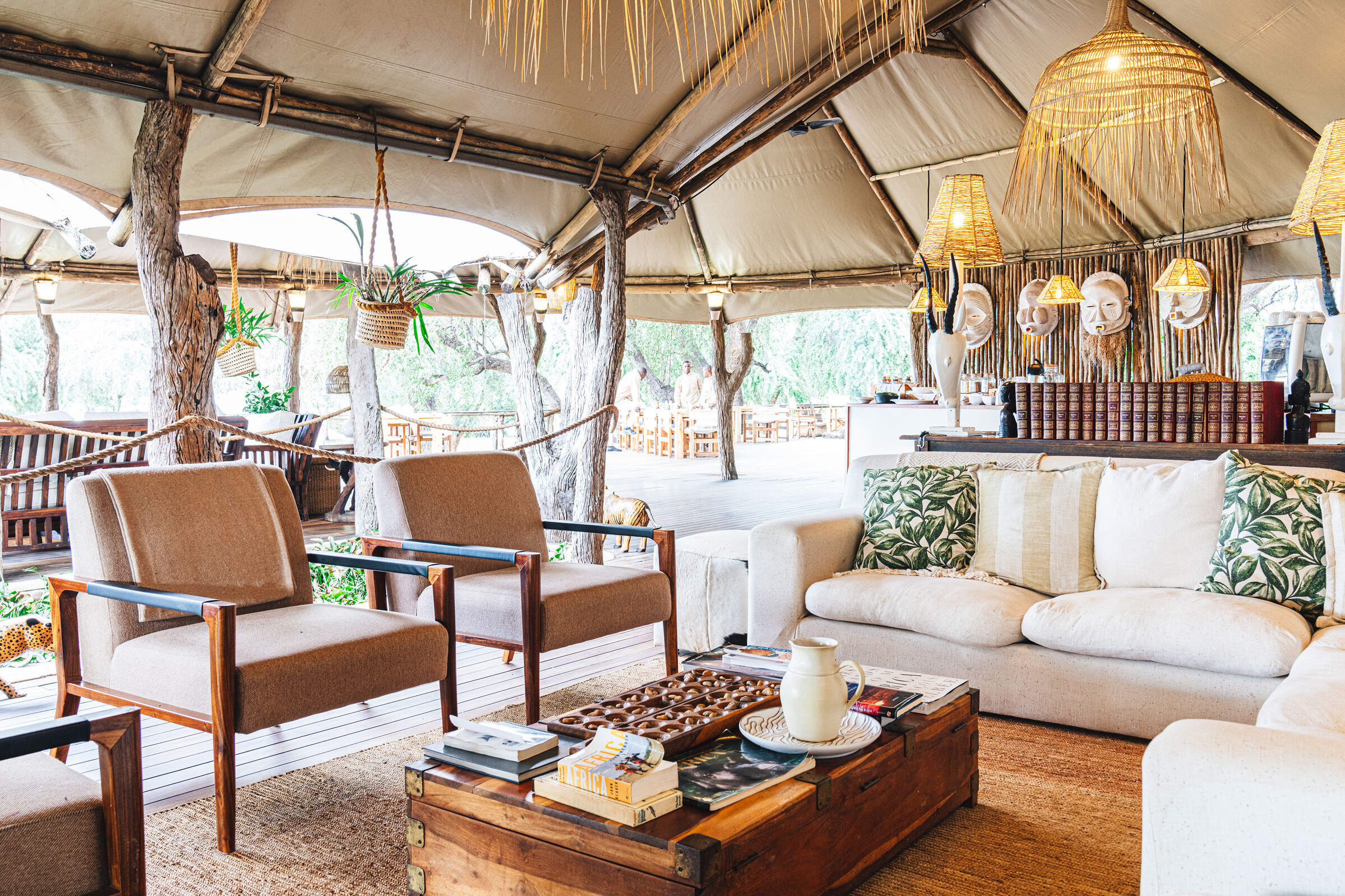
Anabezi Luxury Camp
Anabezi Luxury Tented Camp offers a high degree of understated luxury in a very lovely, quiet part of the Lower Zambezi with outstanding wildlife.
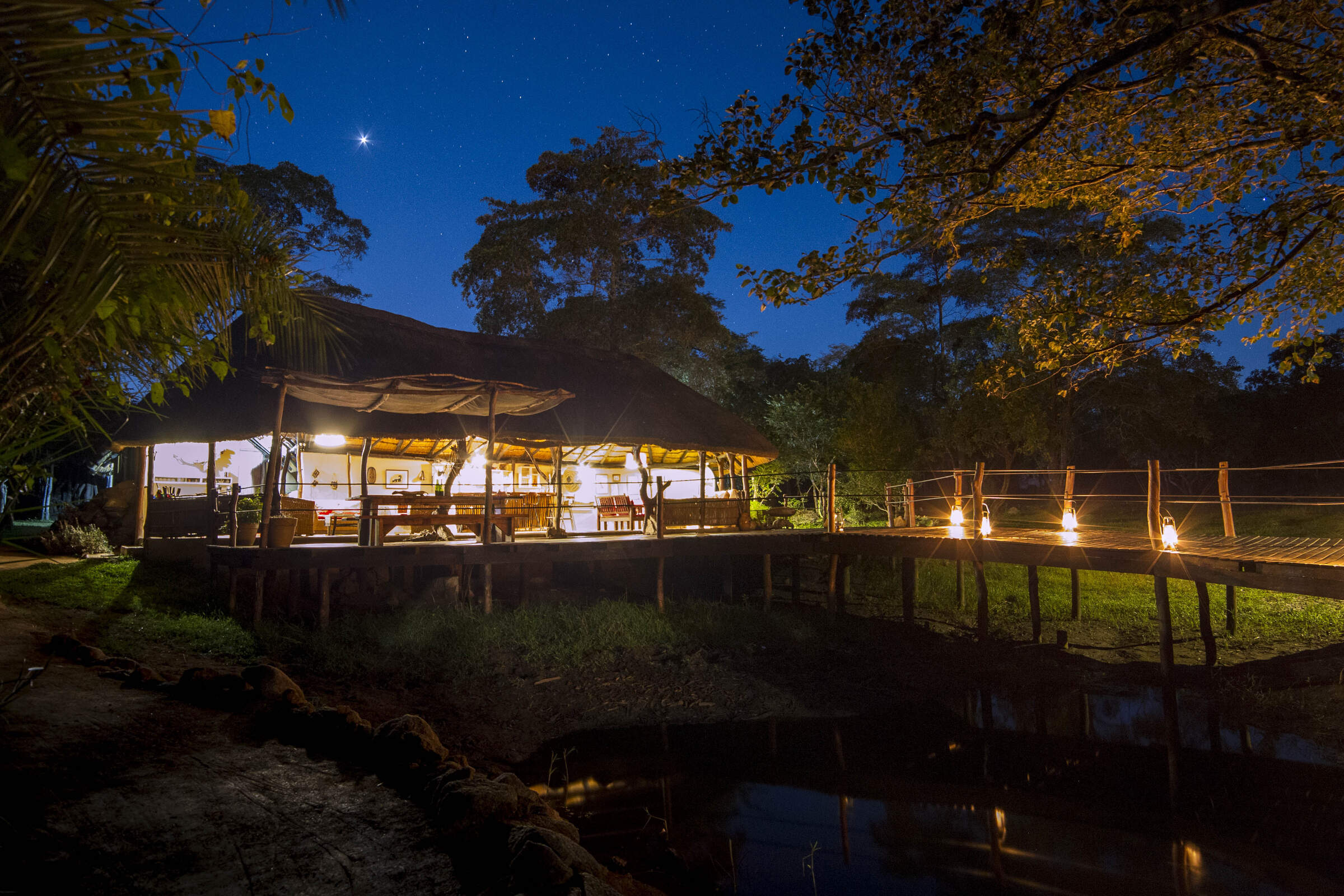
KaingU Lodge
KaingU Lodge, in the centre of the southern part of Zambia's vast Kafue National Park, is in a great location for exploring this section of the Kafue River
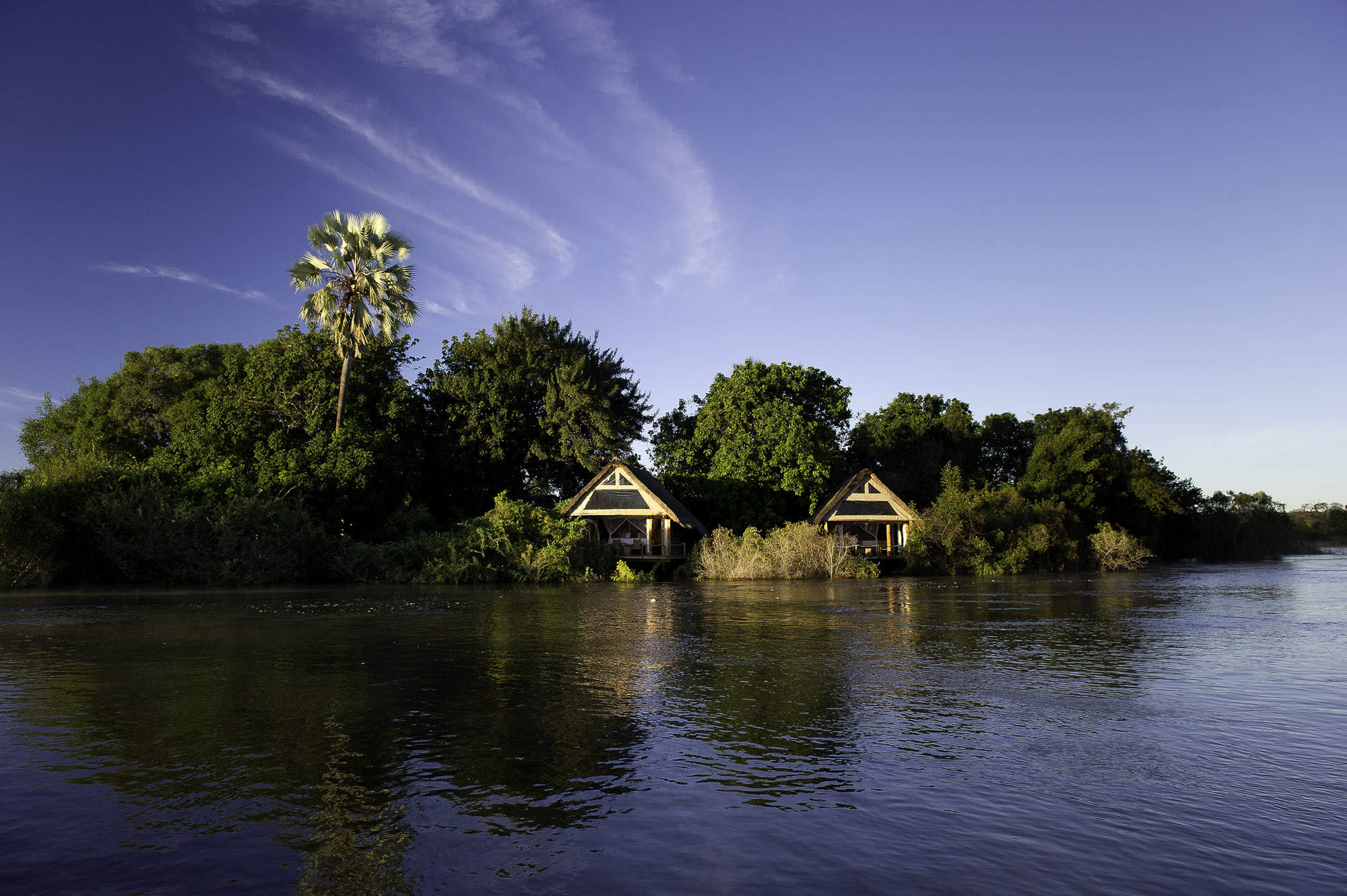
Sindabezi, near Zambia's town of Livingstone and the Victoria Falls, is an island in the middle of the Zambezi River
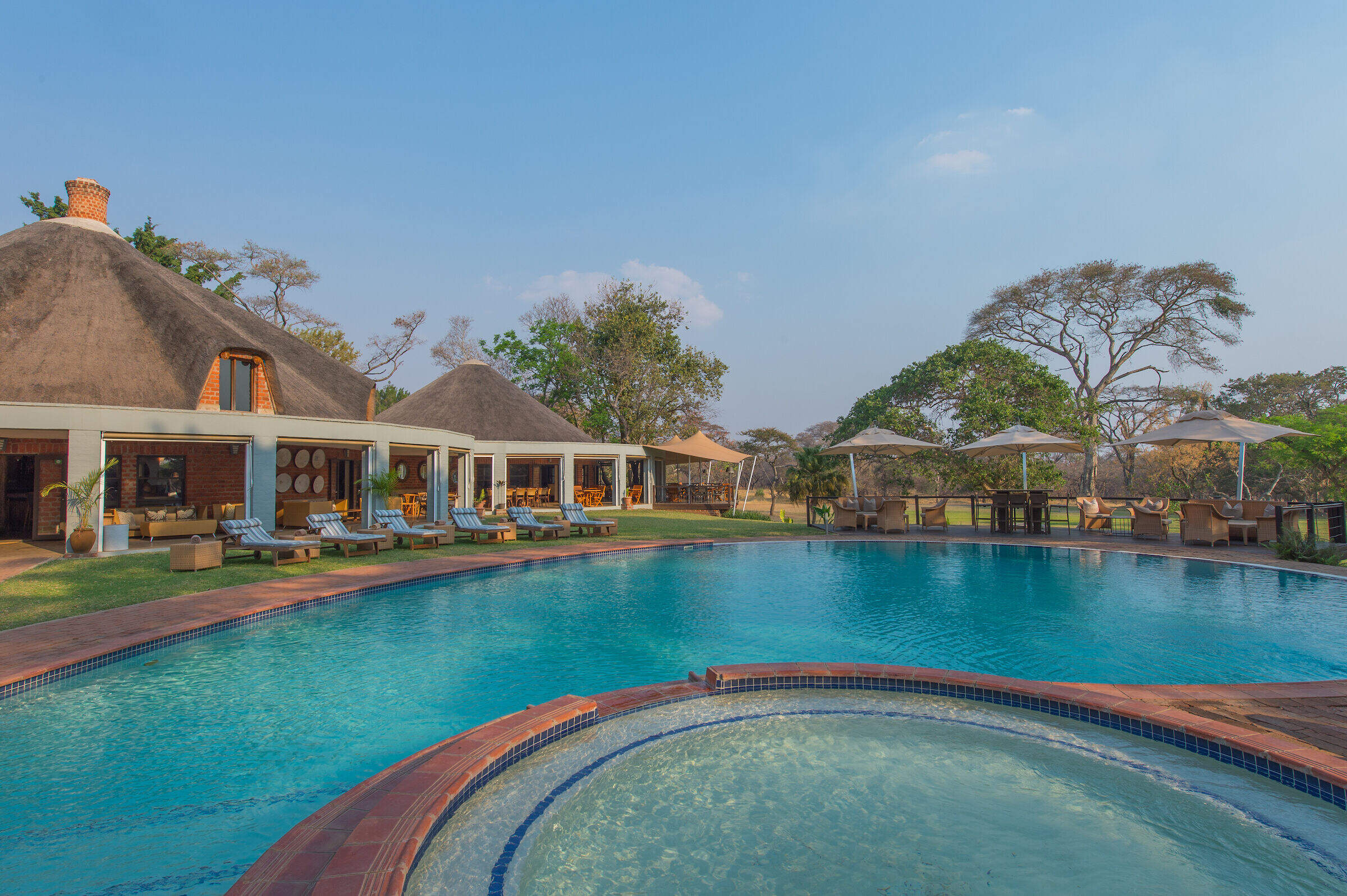
Lilayi Lodge
Lilayi is a boutique lodge on the outskirts of Luaska, located on its own game farm in a lovely rural setting.
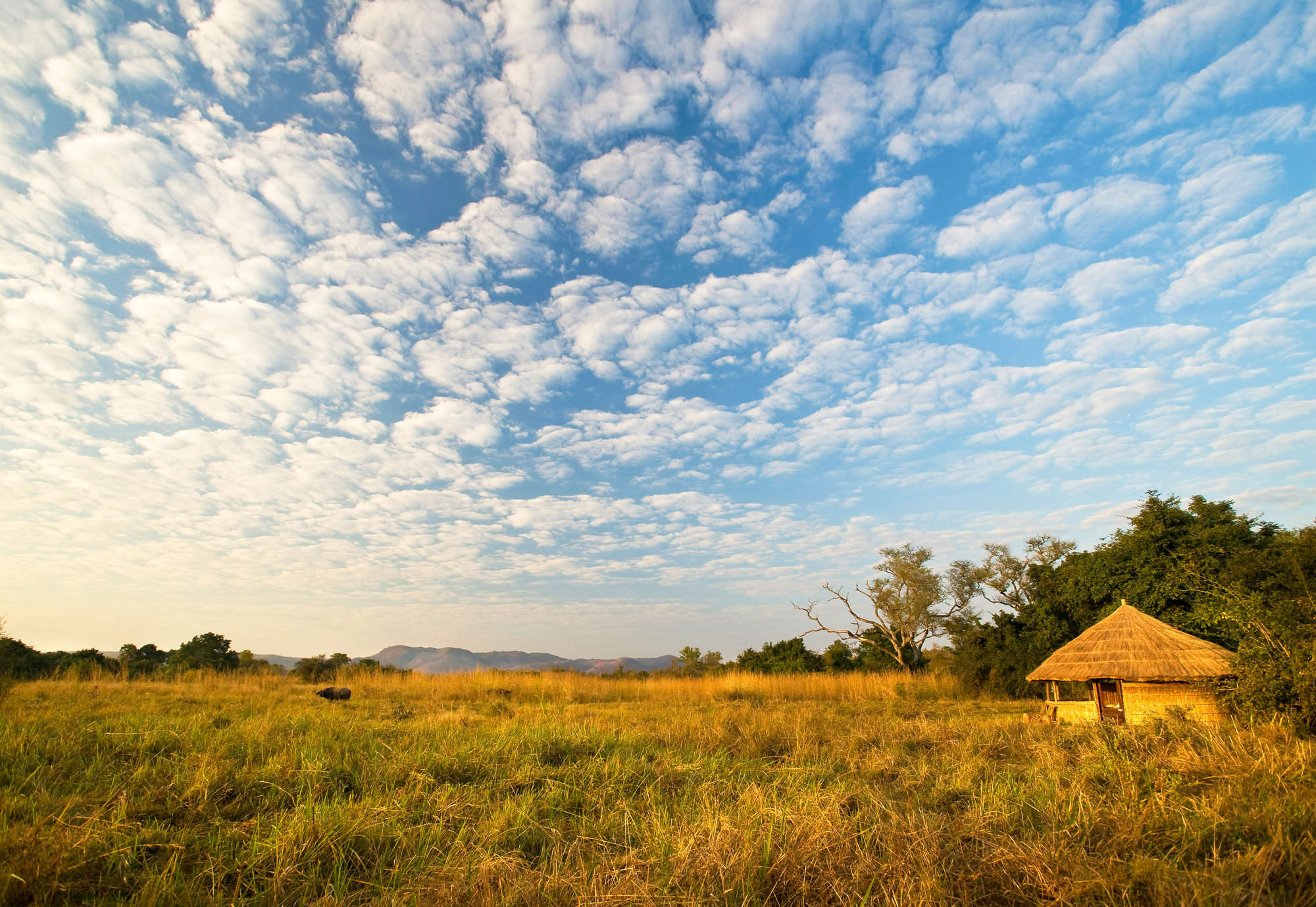
Kuyenda Bushcamp
Kuyenda Bushcamp is a classic bushcamp with particularly delightful hosts and offers top-class walking safaris in South Luangwa National Park.
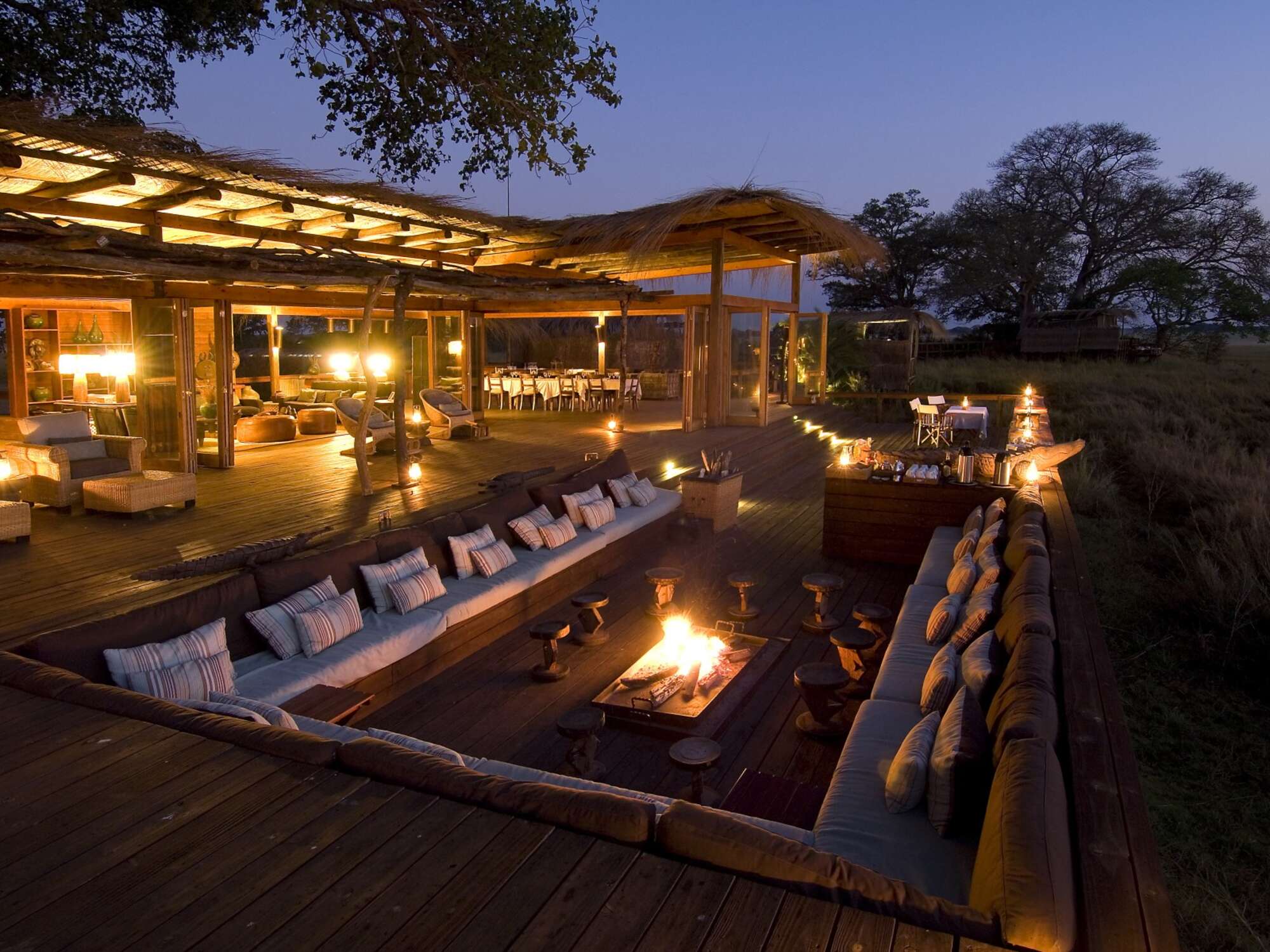
Shumba Camp
Shumba is a high-spec camp built on a tree island in the magical Busanga Plains. It opens in May, when the birdlife is particularly amazing; as the dry season progresses, the game can become remarkable.
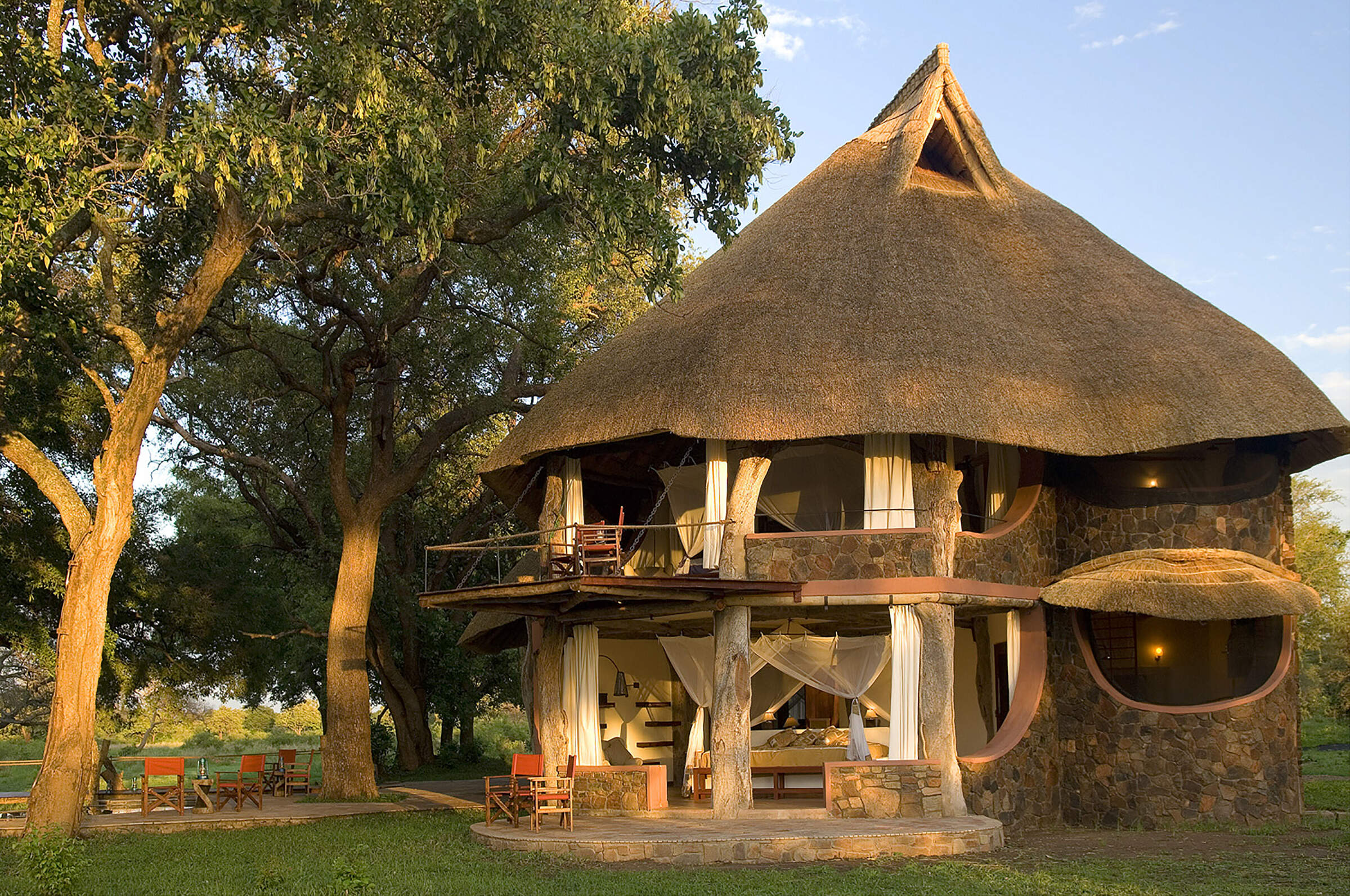
Luangwa Safari House
Luangwa Safari House is a vast and very smart four-bedroom house specifically designed for families and small groups, and offering an exclusive and flexible safari experience.
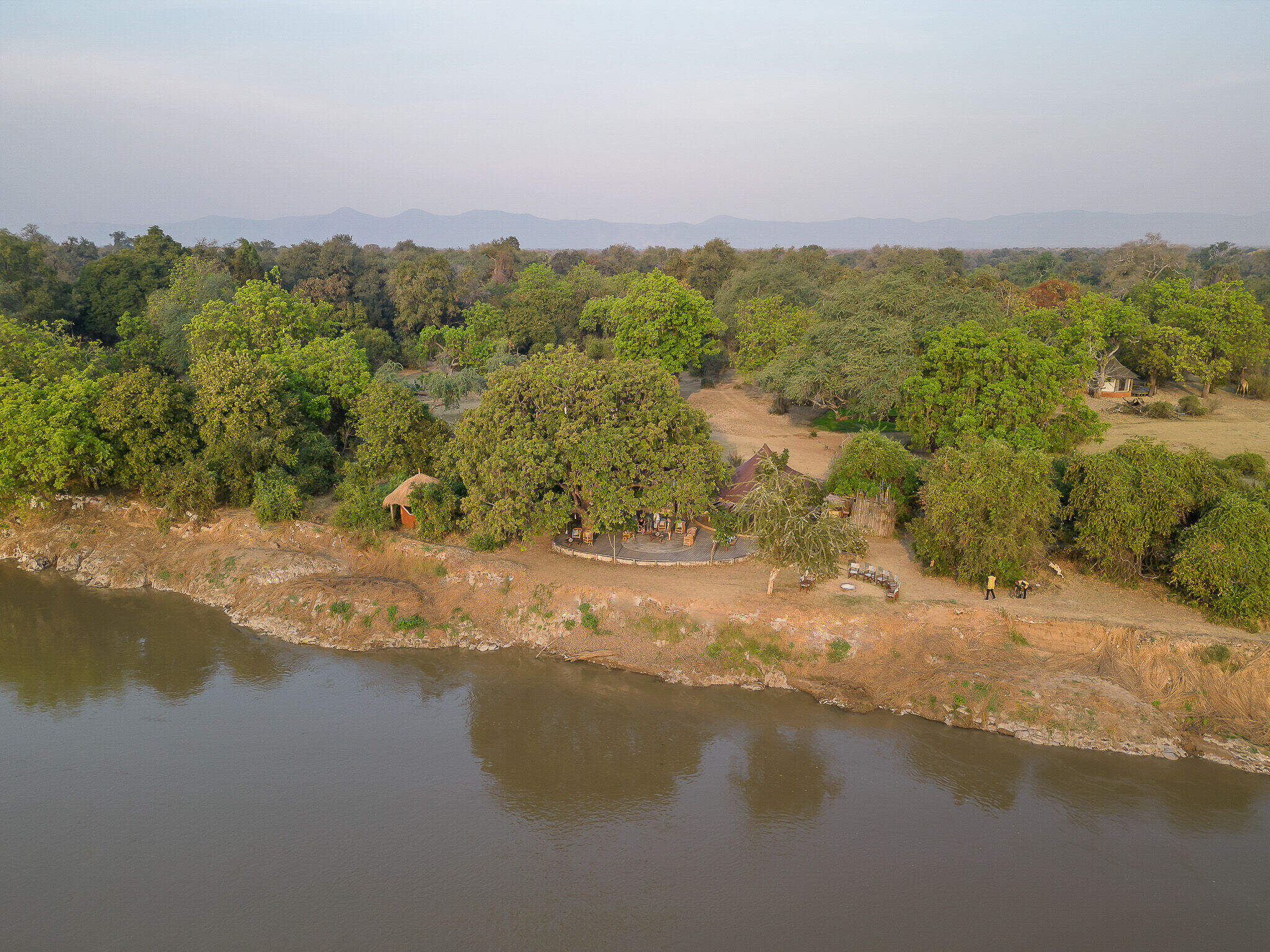
Three Rivers Camp
In the remote far south of South Luangwa National Park, Three Rivers Lodge sits at the confluence of three of the valleys rivers.
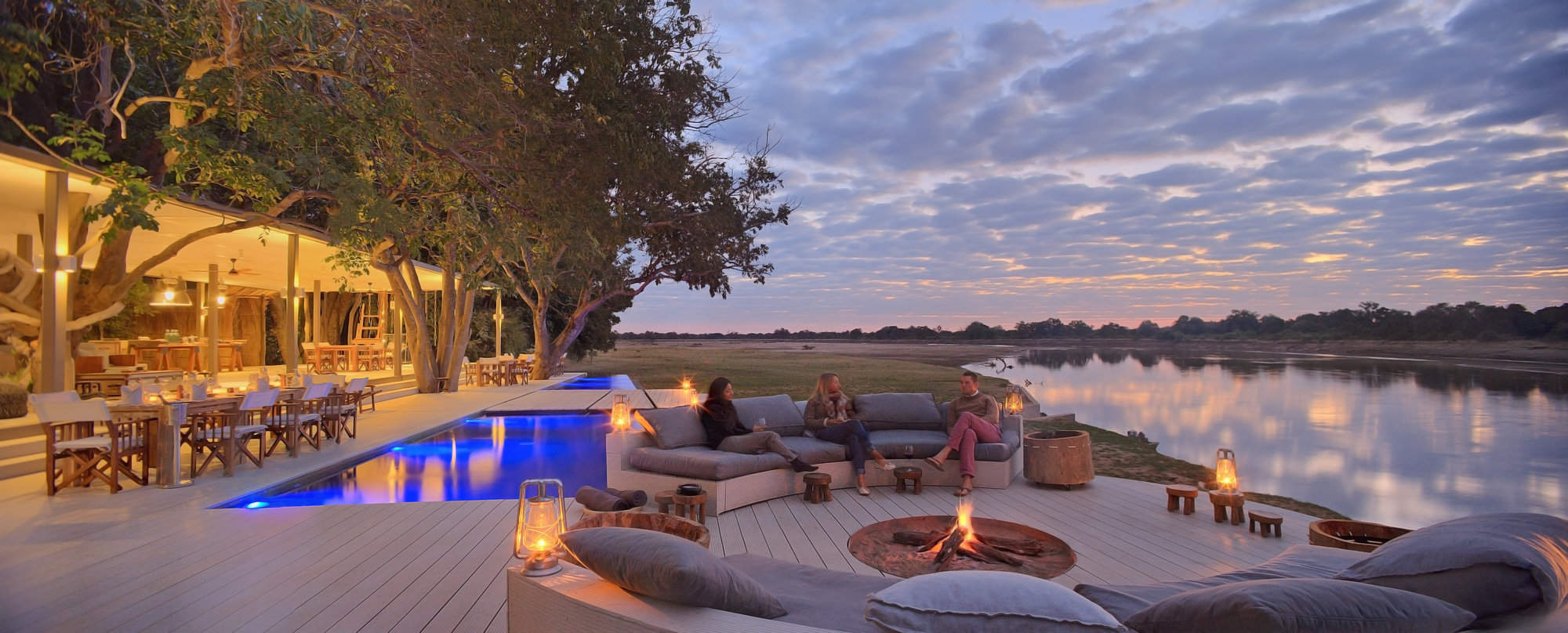
Opened in early June 2013, Chinzombo offers luxurious and stylish accommodation with very high levels of service and excellent guiding.
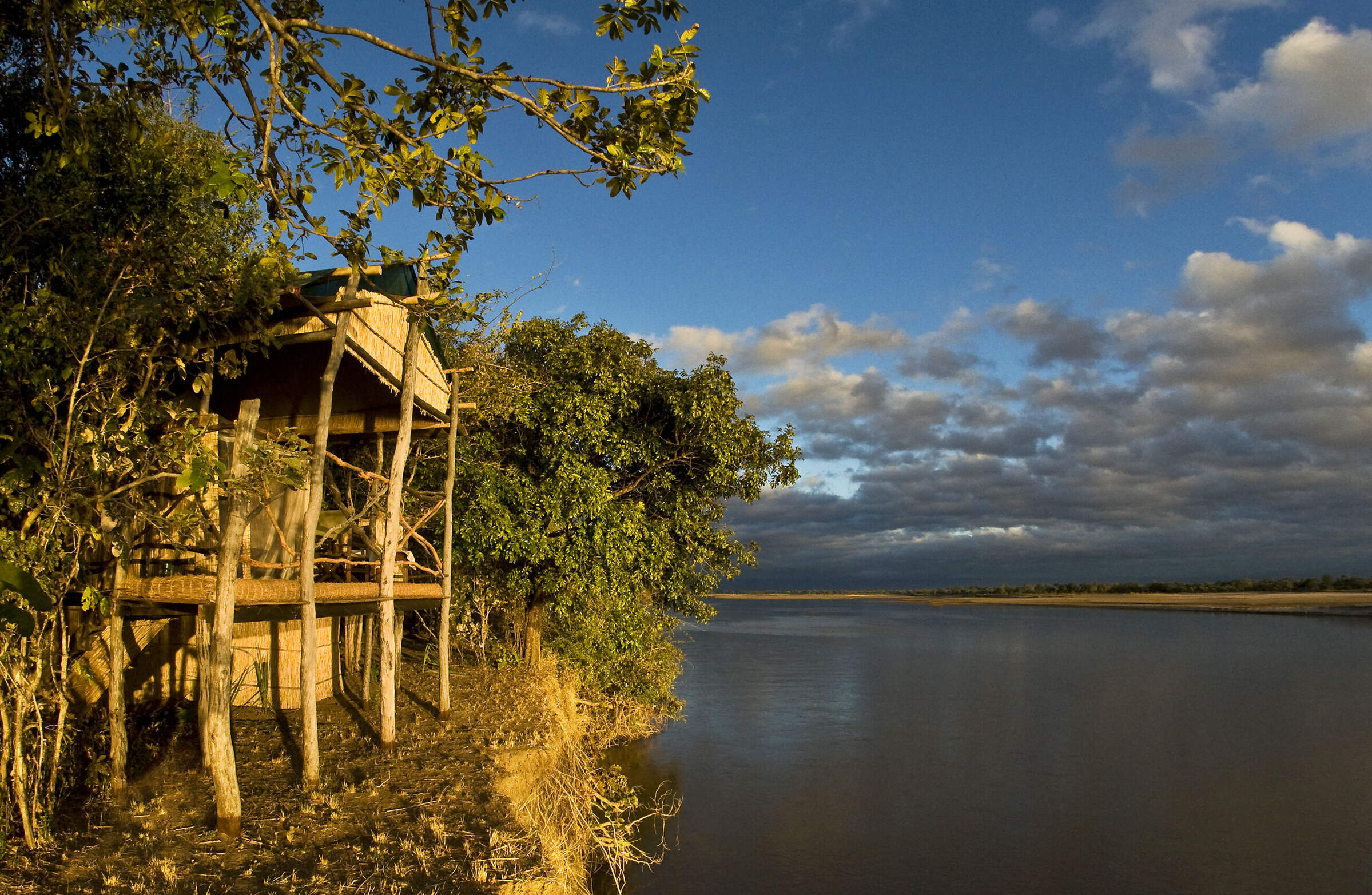
Island Bush Camp
Island Bushcamp is a good-value, rustic, walking-only camp, in arguably one of the most remote parts of the South Luangwa, well away from all other camps.
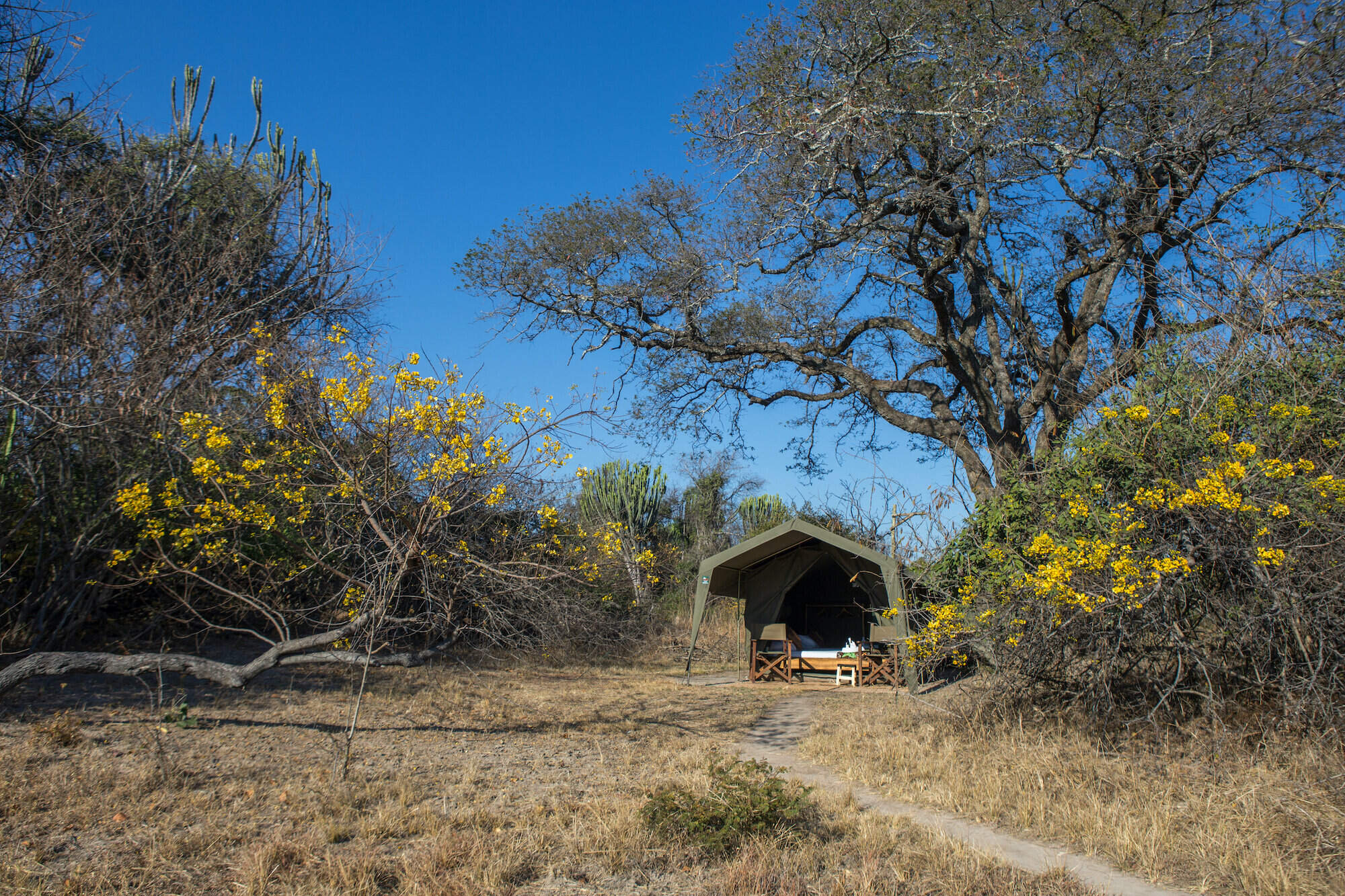
Ntemwa Busanga Camp
Ntemwa Busanga Camp is a simple but comfortable camp on the southern tip of the Busanga Plains which combines well with its sister camp, Musekese.
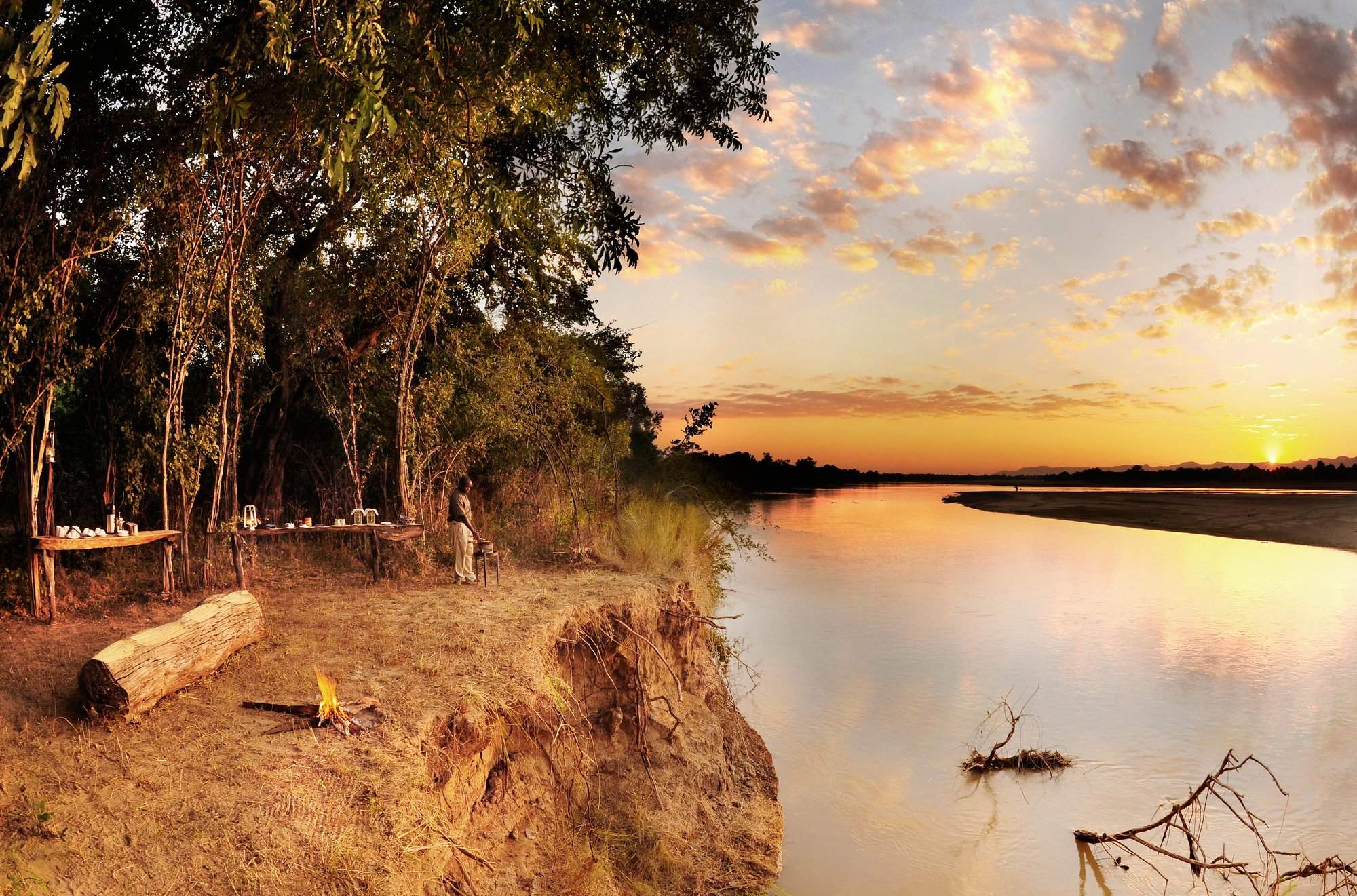
Bilimungwe Bushcamp
A smart bushcamp with four very spacious chalets, Bilimungwe offers interesting walking safaris in pretty riverine woodland, as well as day and night safari drives.
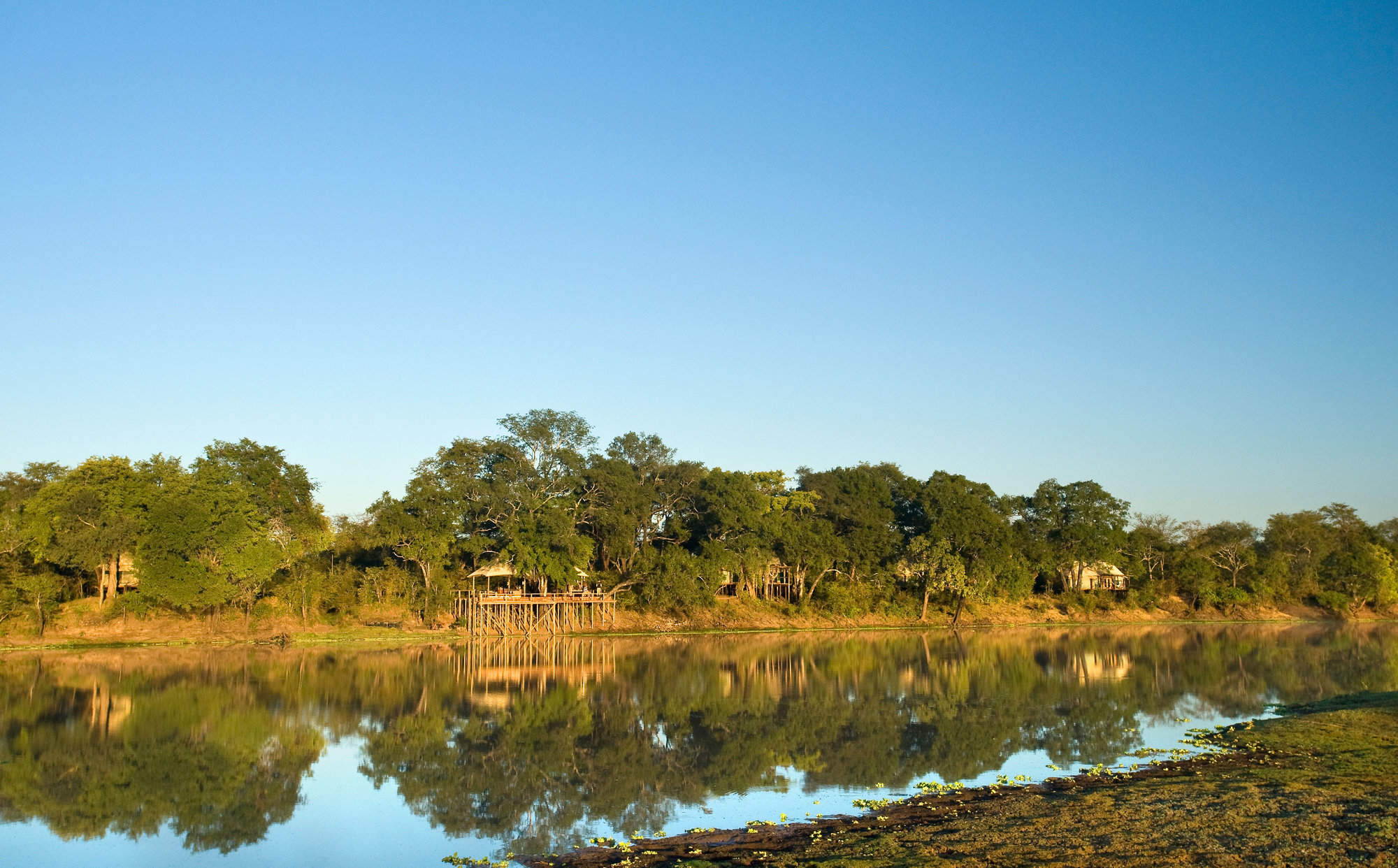
Chindeni Bushcamp is a very modern and minimalist camp, which is a far cry from your traditional bushcamp and unlike most of the other camps in South Luangwa.
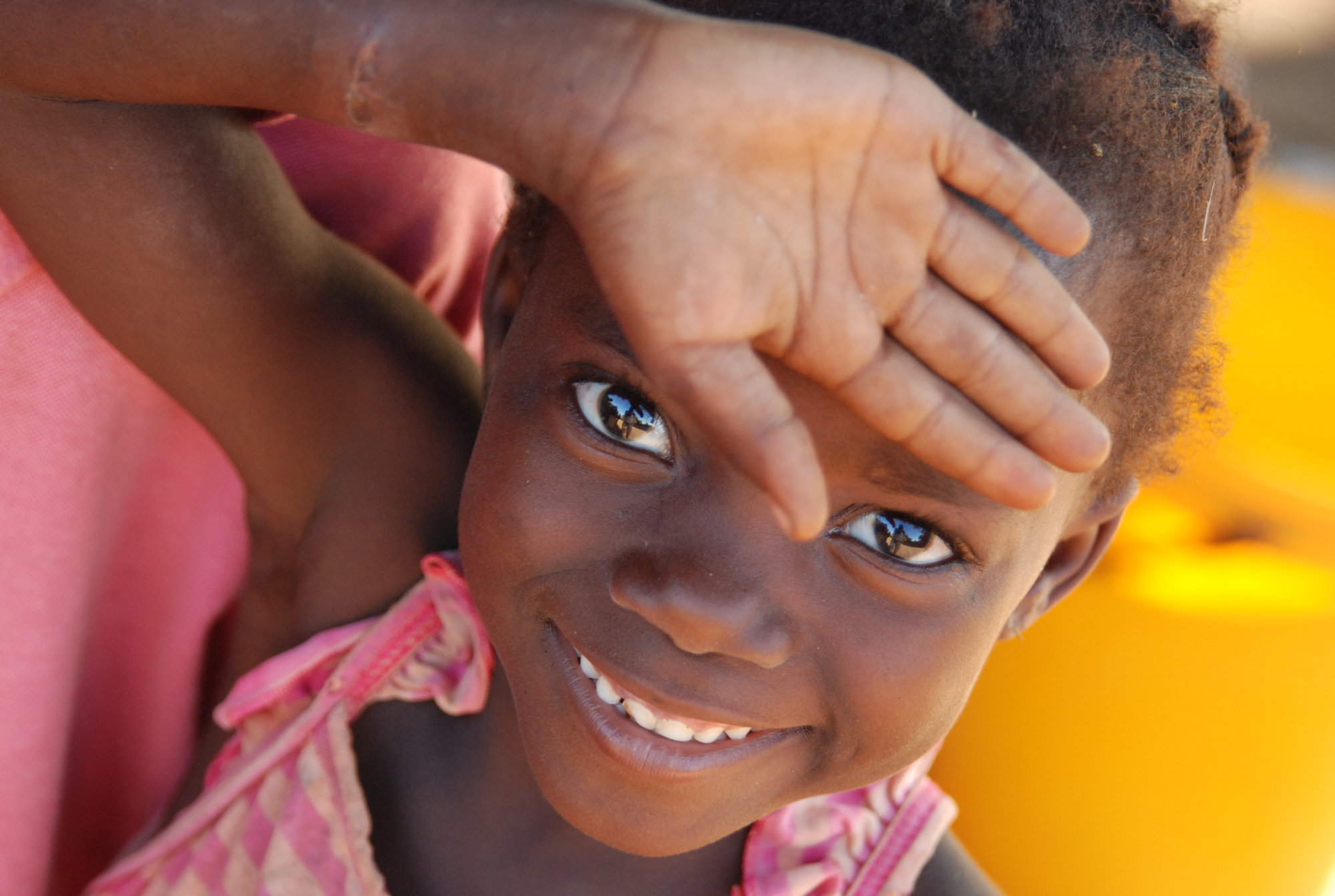
Kawaza Village
Kawaza Village – beside the South Luangwa National Park, offers guests the rare opportunity to appreciate local village life. Visit for a few hours or stay overnight.
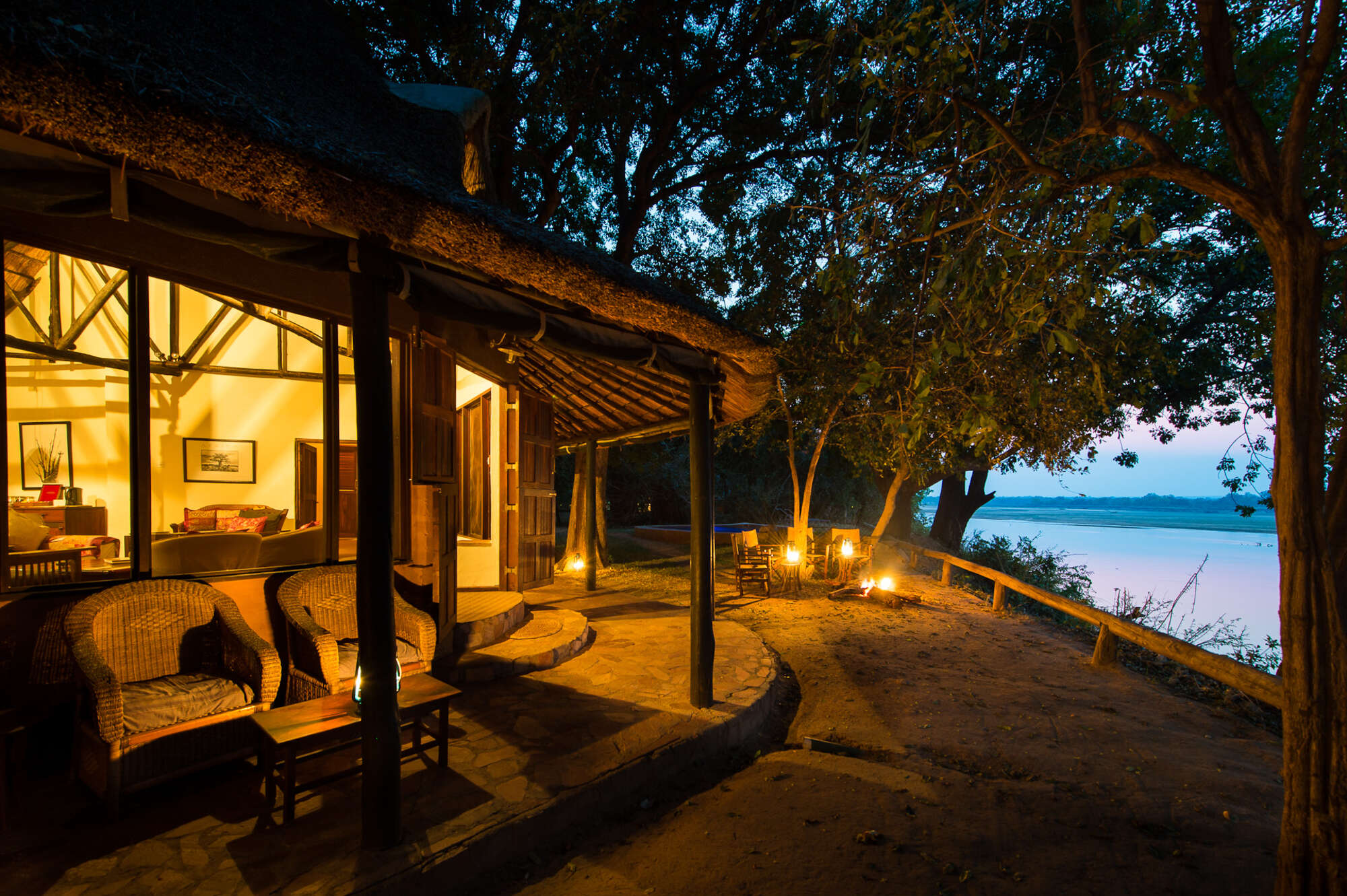
Robin's House
With your own expert guide, private vehicle, chef and valet, the two-bedroom Robin's House offers an exclusive, flexible safari experience – and is open year round.
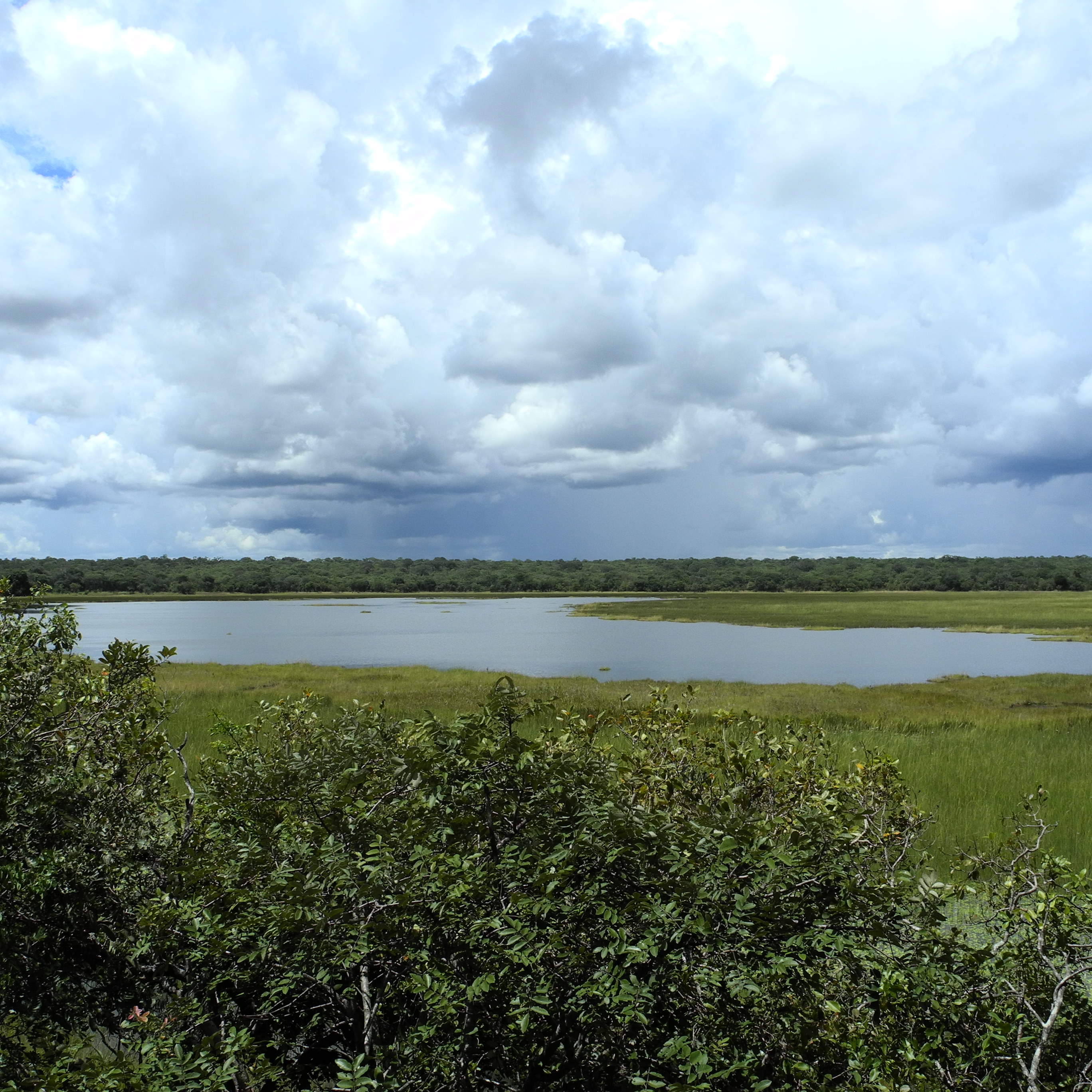
Wasa Lodge offers easy access to Kasanka National Park, best visited in November and December to see the millions of fruit bats that arrive in the area.
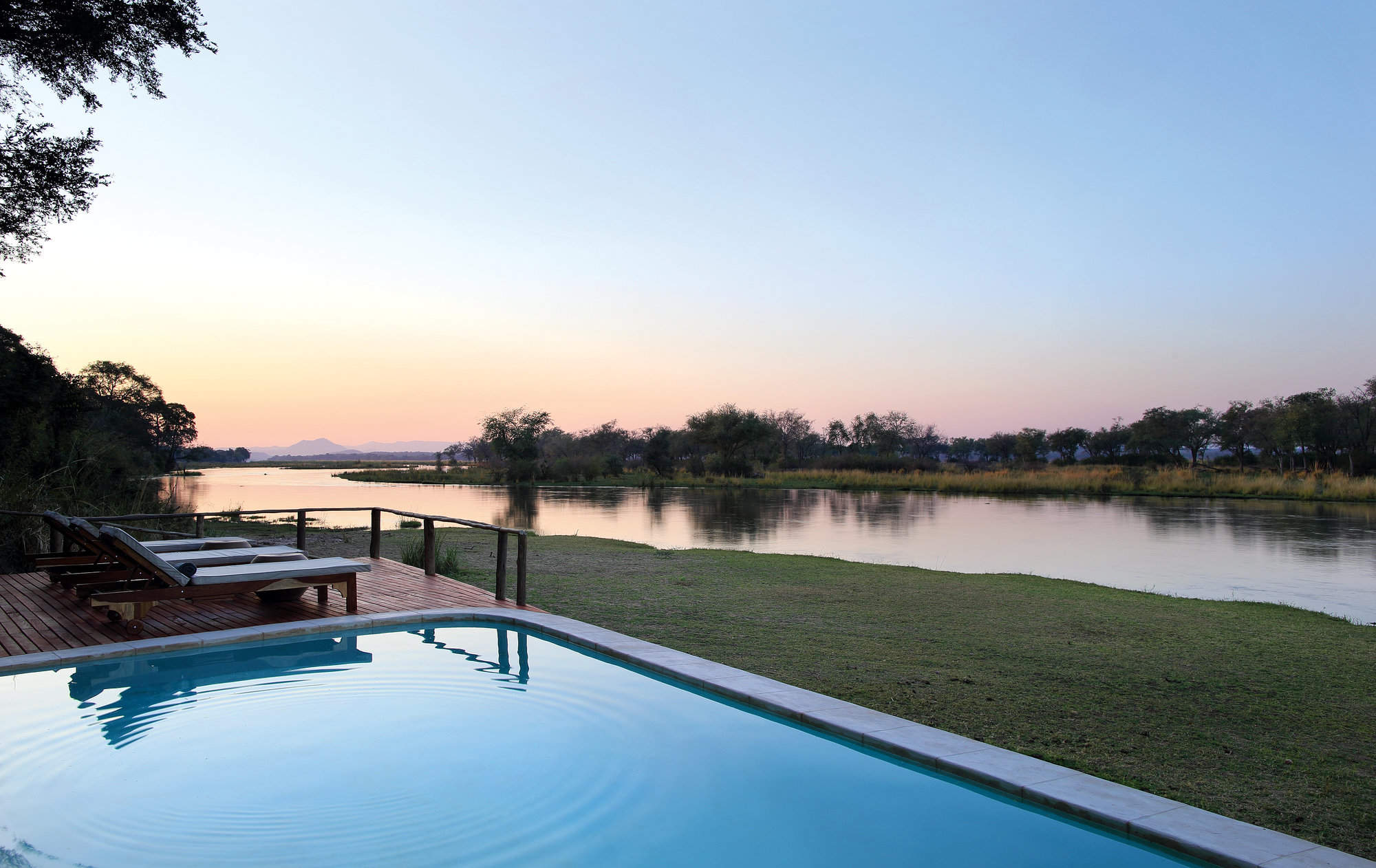
Opened in 2015, Amanzi is an intimate and rustic yet luxury camp in a very quiet area of the Lower Zambezi, with plenty of wildlife and good birding.
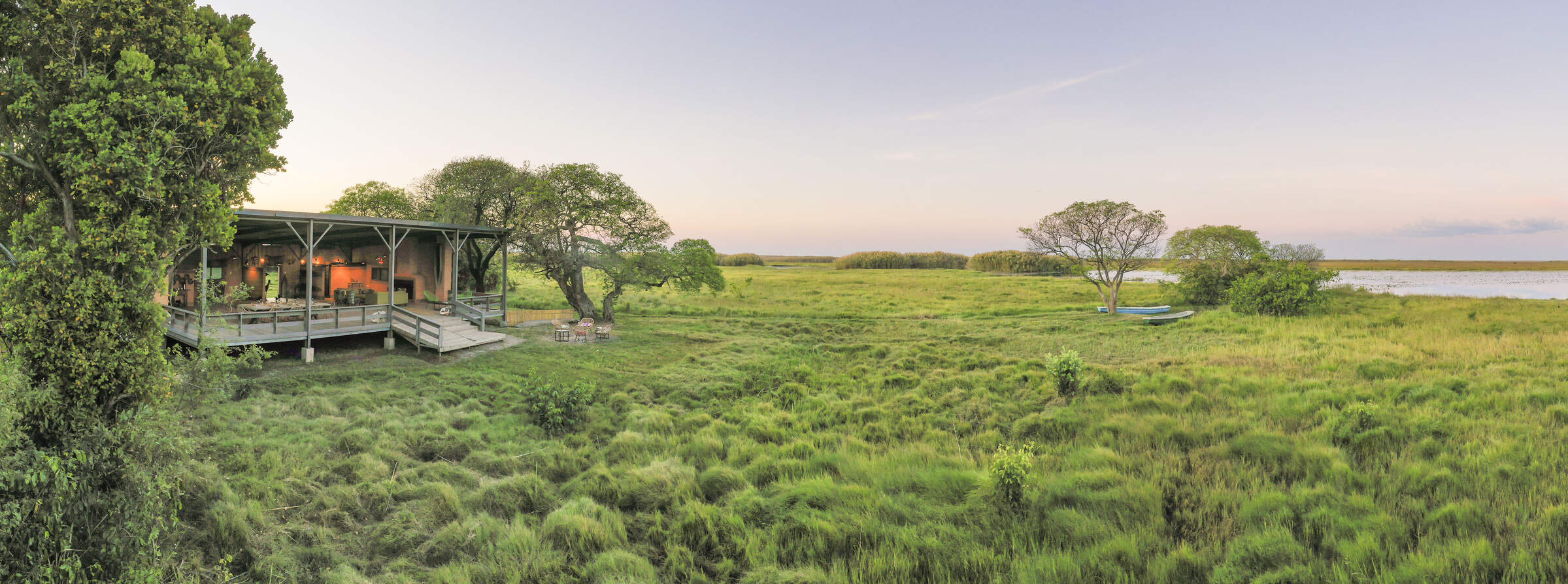
Shoebill Island Camp
Shoebill Island Camp stands on the southern edge of the Bangweulu Wetlands. It's a remote spot, and a very simple camp - but if you want to see Shoebills then it is one of the best places in Africa.
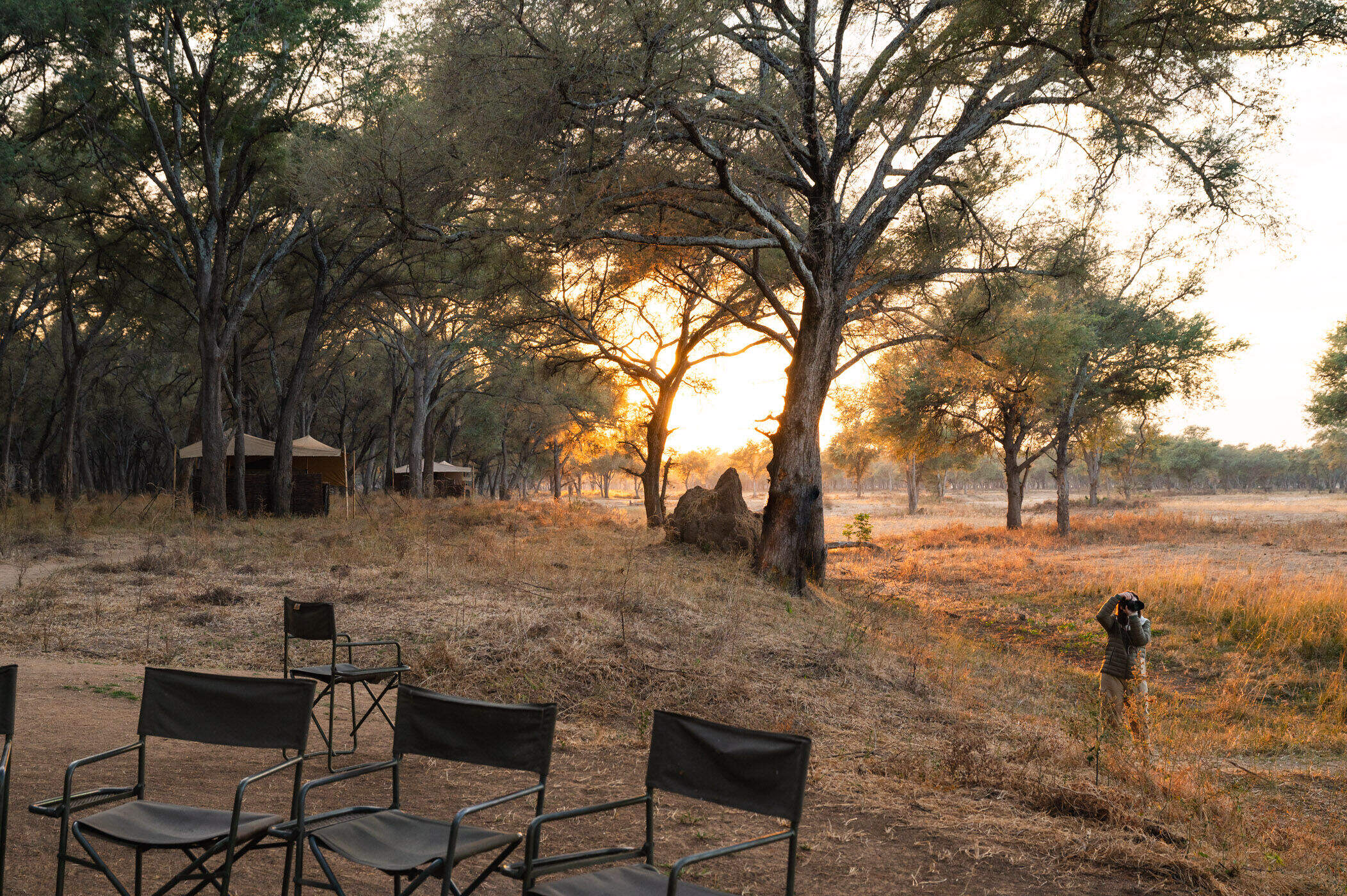
Kutali Camp
Kutali Camp offers the opportunity to experience the wilderness of Zambia’s Lower Zambezi National Park, in this simple tented camp located on Kulefu Island.
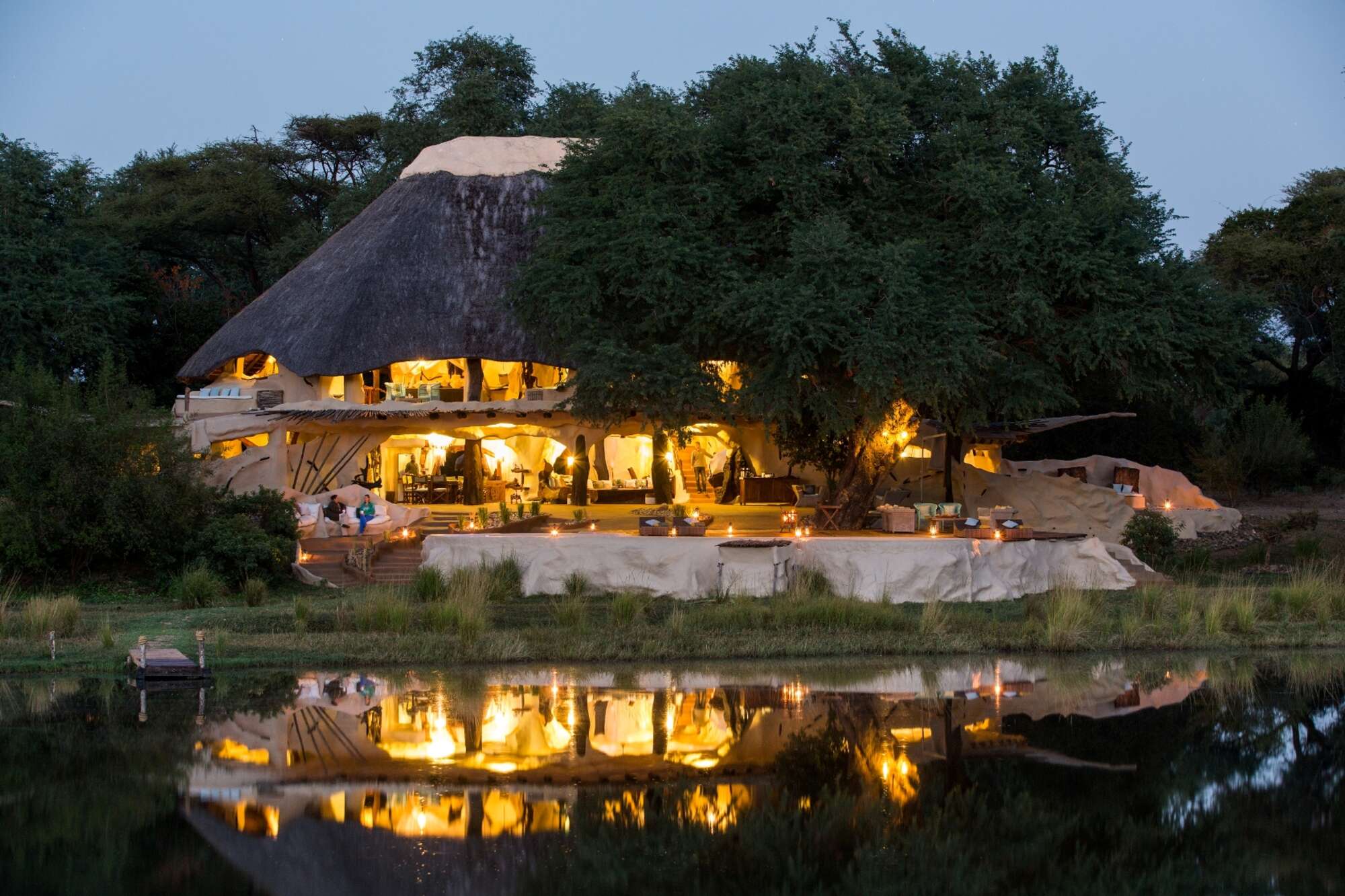
Chongwe River House
Chongwe River House is a stylish four-bedroom house designed for the exclusive use of families and small groups, affording the ultimate in flexibility on safari.
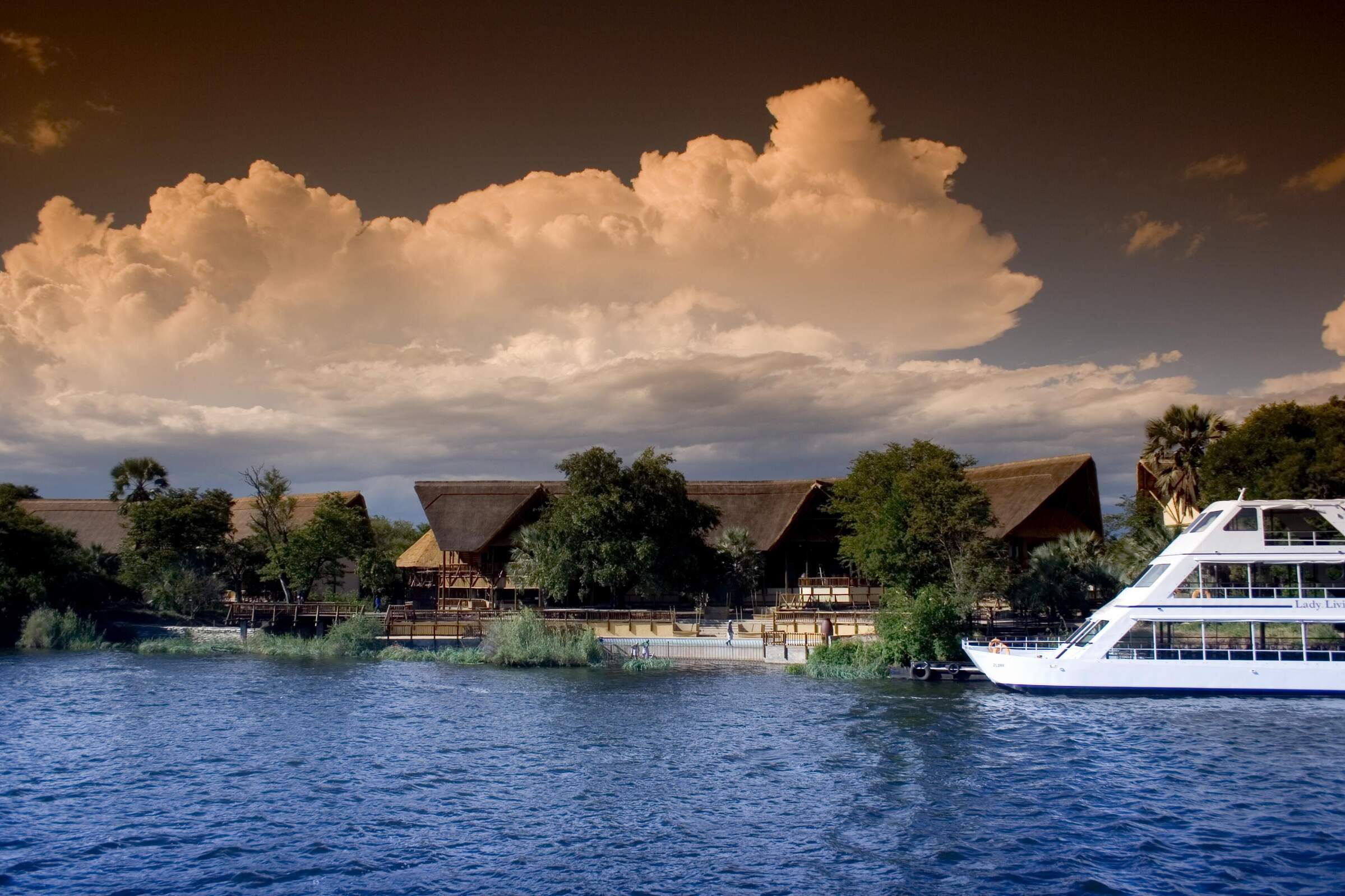
David Livingstone Lodge
The four-star David Livingstone Safari Lodge is in a lovely spot on the edge of the Zambezi River in Zambia, close to the Victoria Falls.
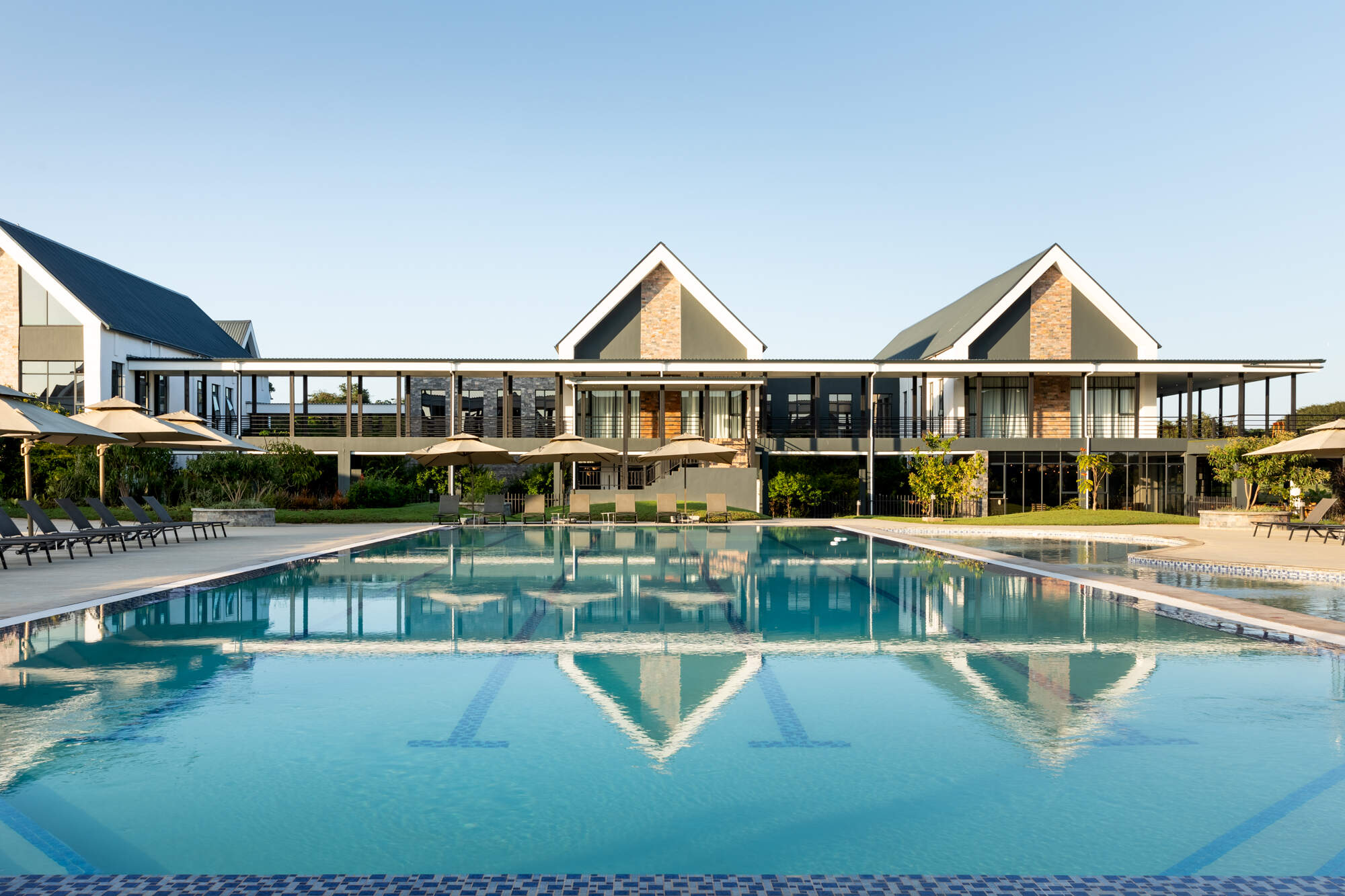
Ciela Resort
Ciela Resort and Spa is a smart, luxurious hotel close to Lusaka’s International Airport, with substantial grounds, a golf course and several dining options.
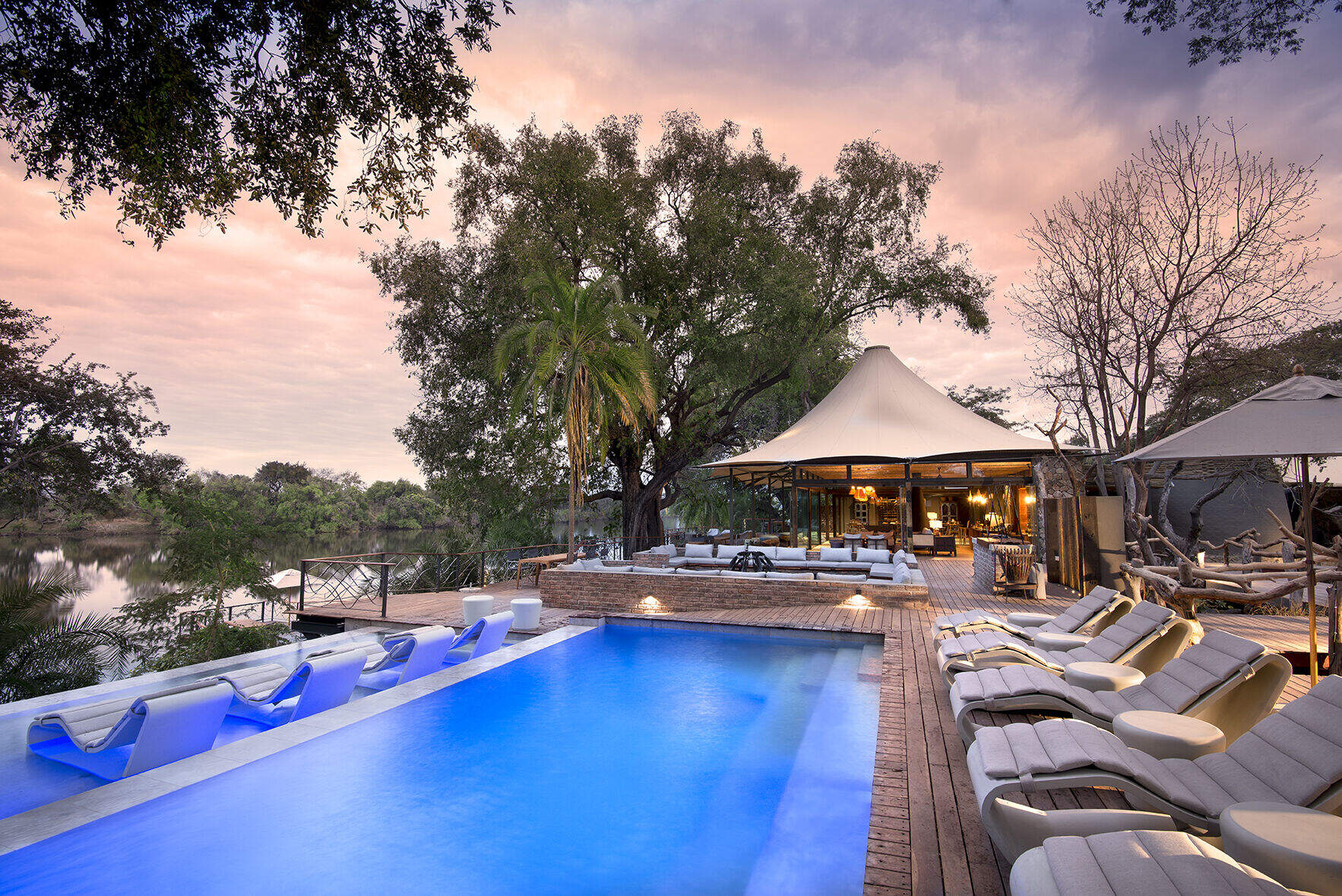
Thorntree River Lodge
Rebuilt in 2017, Thorntree River Lodge is one of the best riverside lodges in Livingstone, with a strong sense of the environment and straightforward access to the Falls.
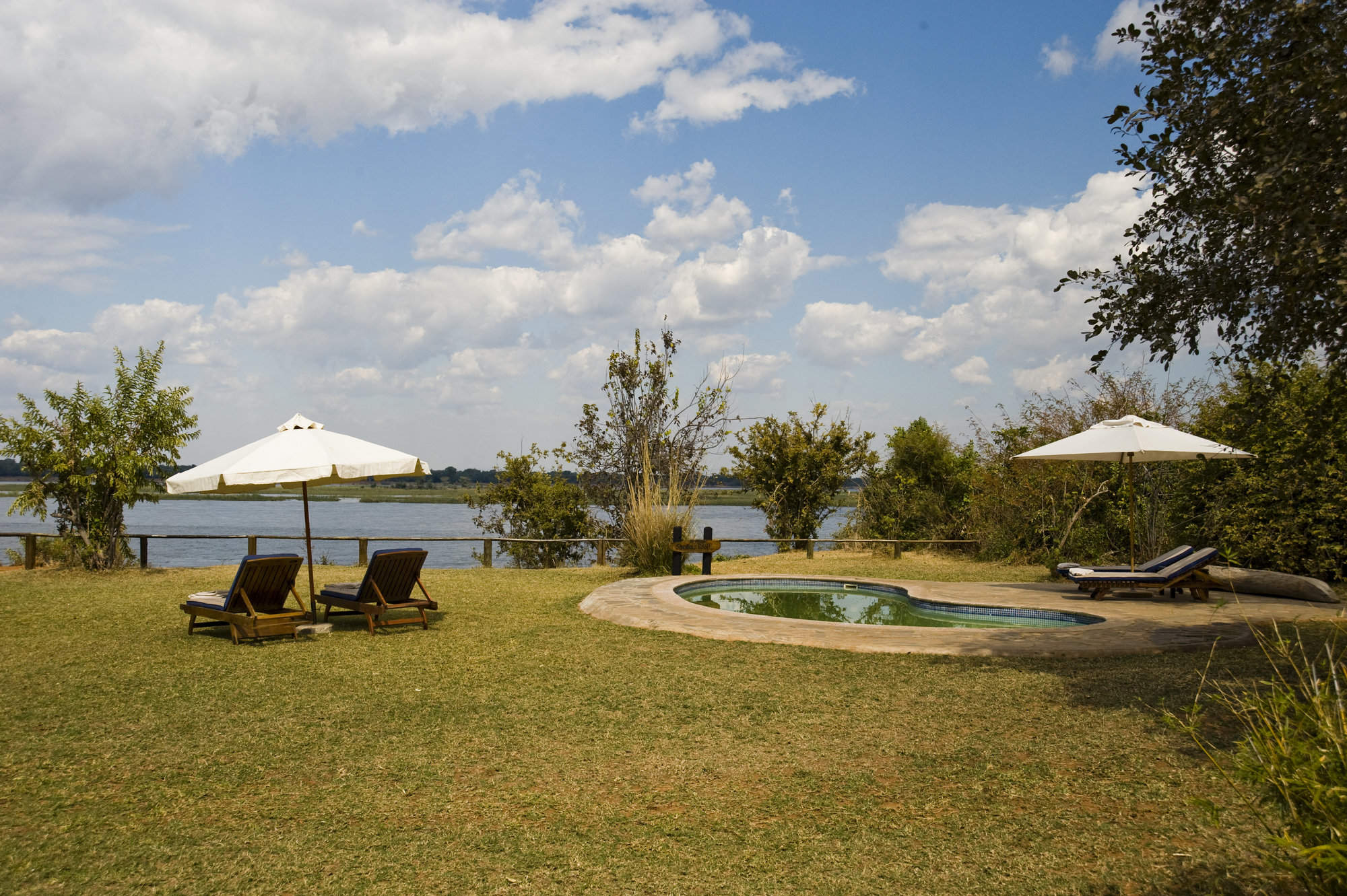
Kasaka River Lodge
Kasaka River Lodge is a relatively simple, family-friendly camp. It's outside the Lower Zambezi National Park and, with a recent change of ownership for the better, it offers a great-value safari destination.
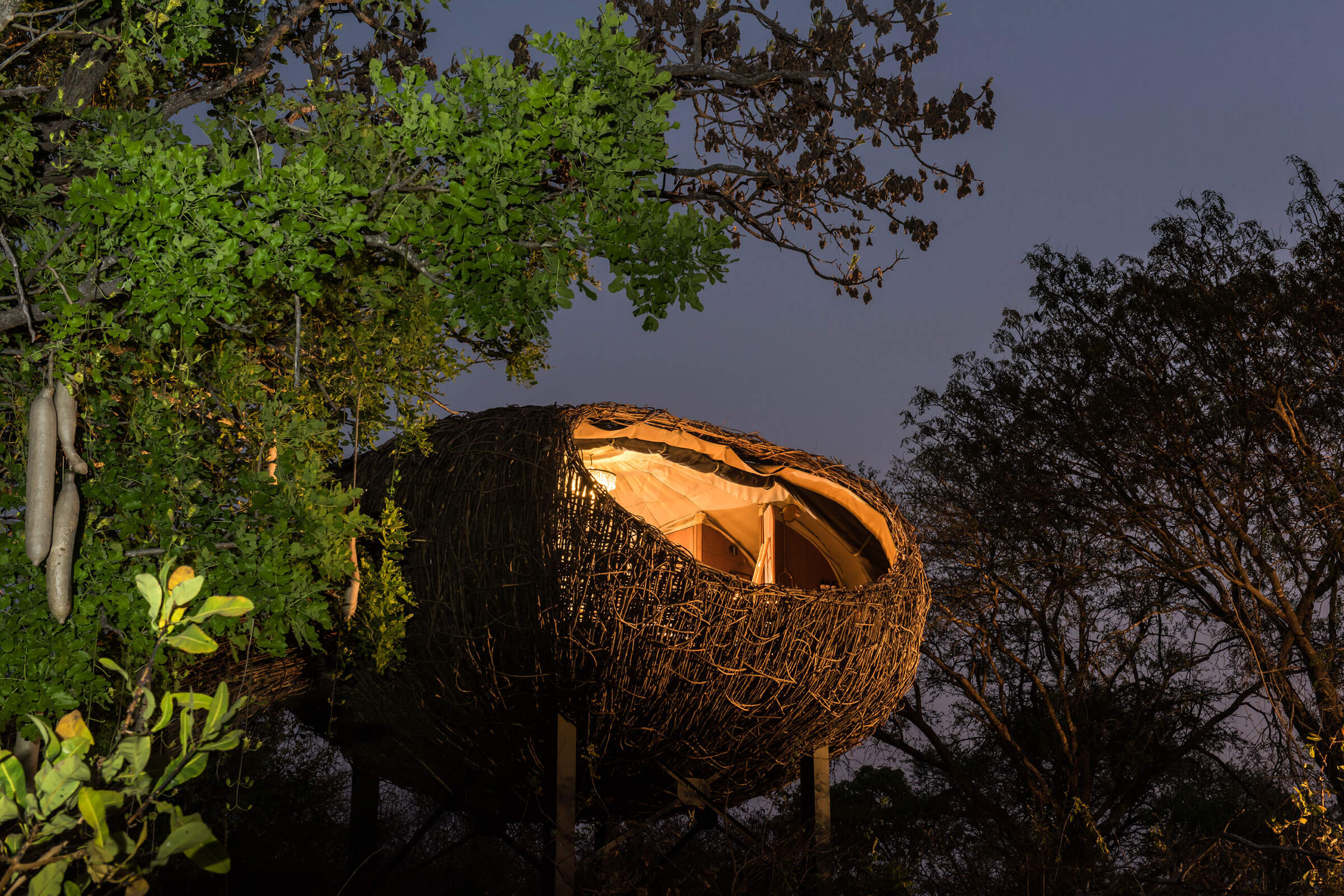
Chisa Busanga
Opened in mid 2021, Chisa Busanga Camp is a beautifully designed, small, intimate and rustic camp.
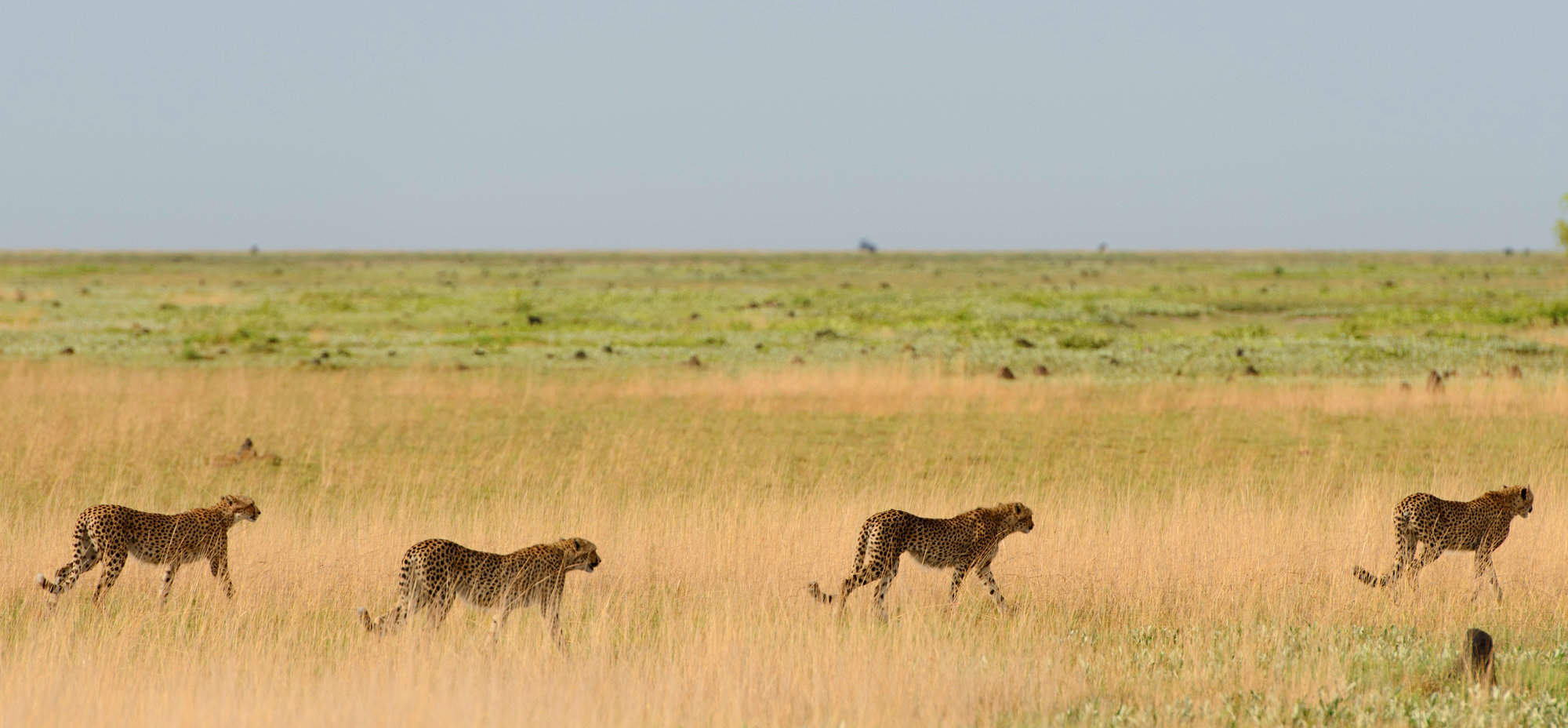
Matamanene Camp
Matamanene Camp, in the heart of Liuwa Plains National Park, is the only safari camp for hundreds of miles – it's in one of the most remote corners of Africa.
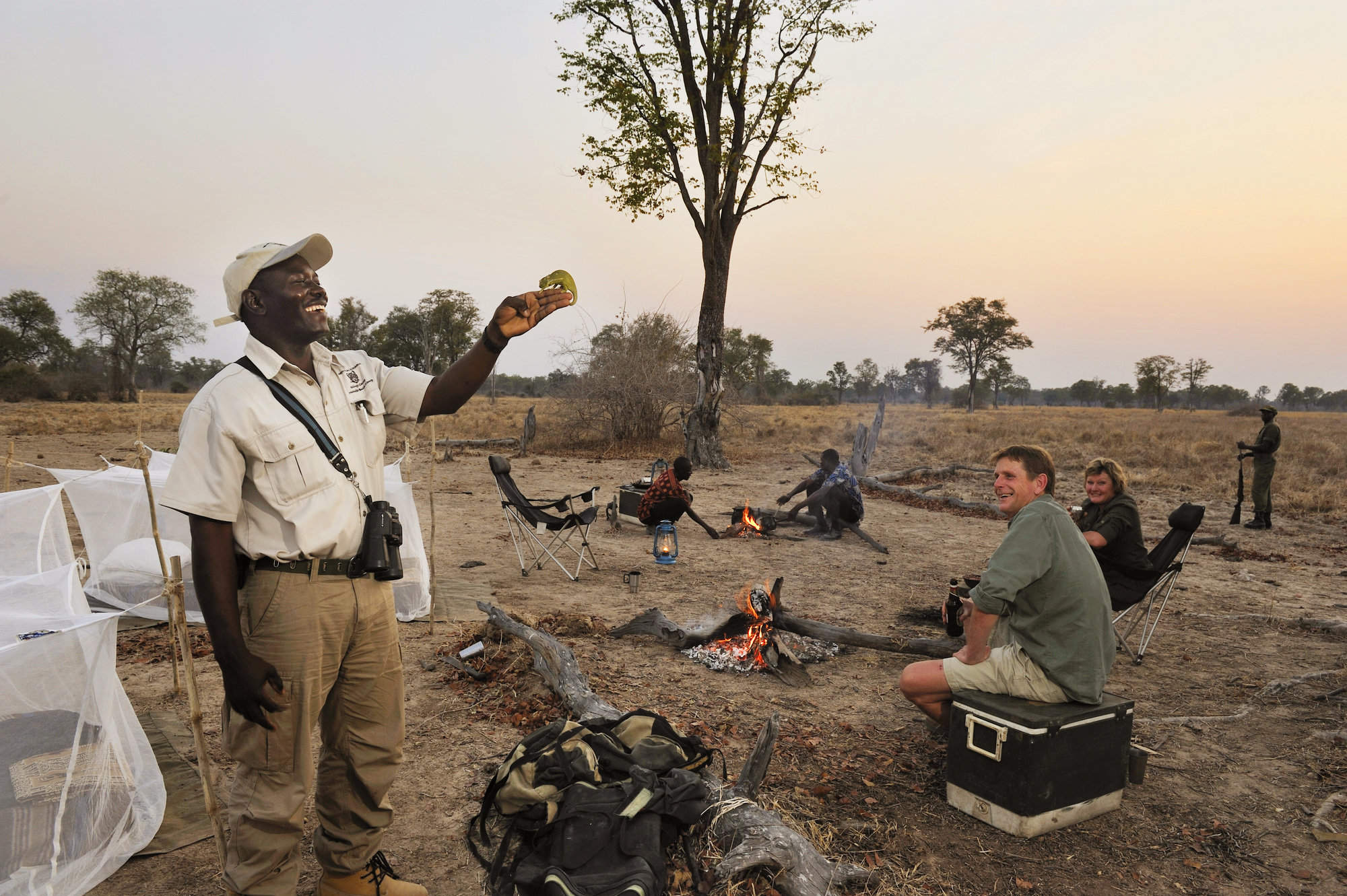
Mwamba Camp-out
The Mwamba-Camp Out allows you to have an incredibly adventurous night in the bush, sleeping under mosquito nets with activities led by some of the best guides in Zambia.
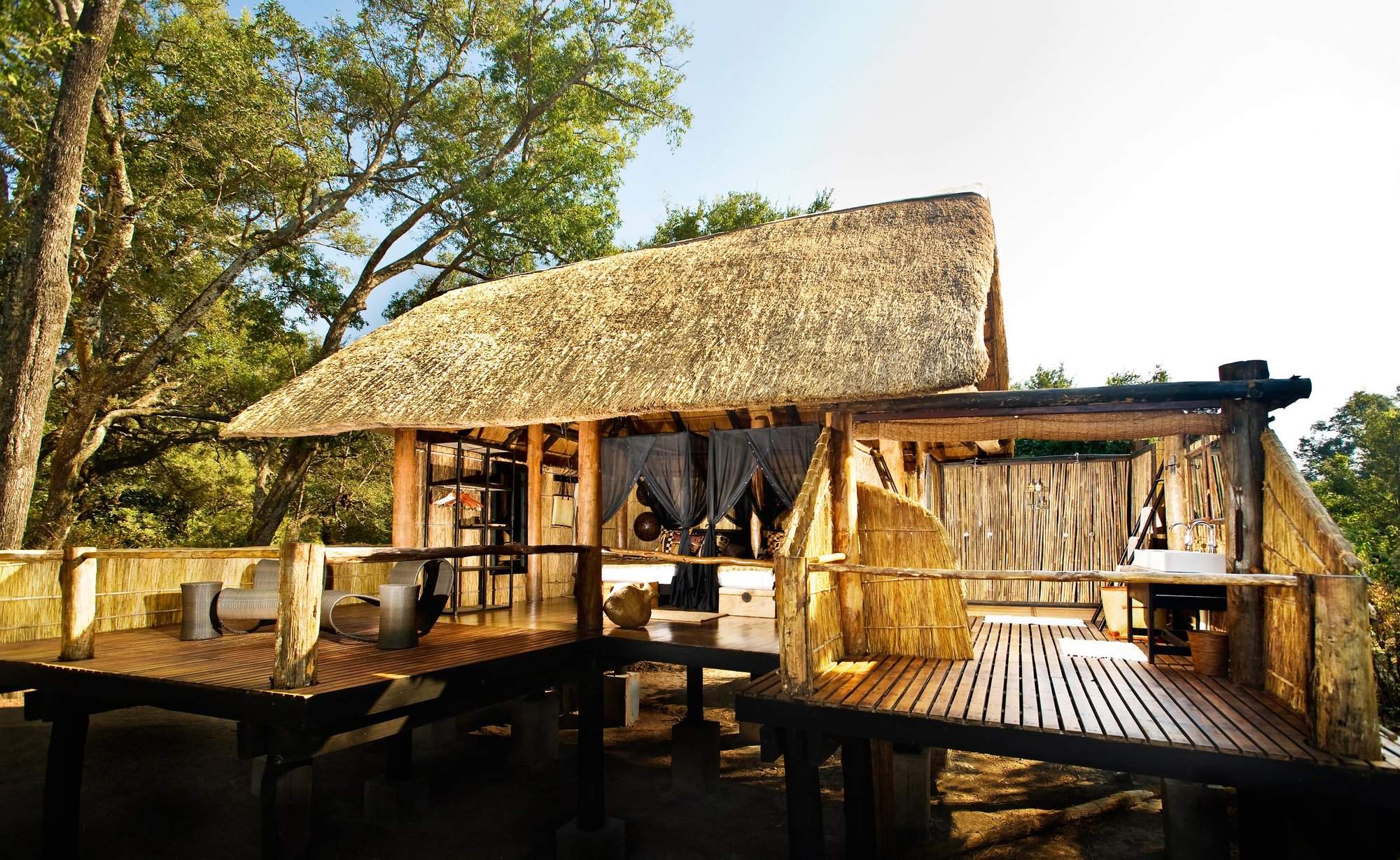
Chamilandu Bushcamp
A comfortable little bushcamp, Chamilandu has a picturesque setting by the Luangwa River, in an area with a range of habitats to explore on foot and by 4WD.
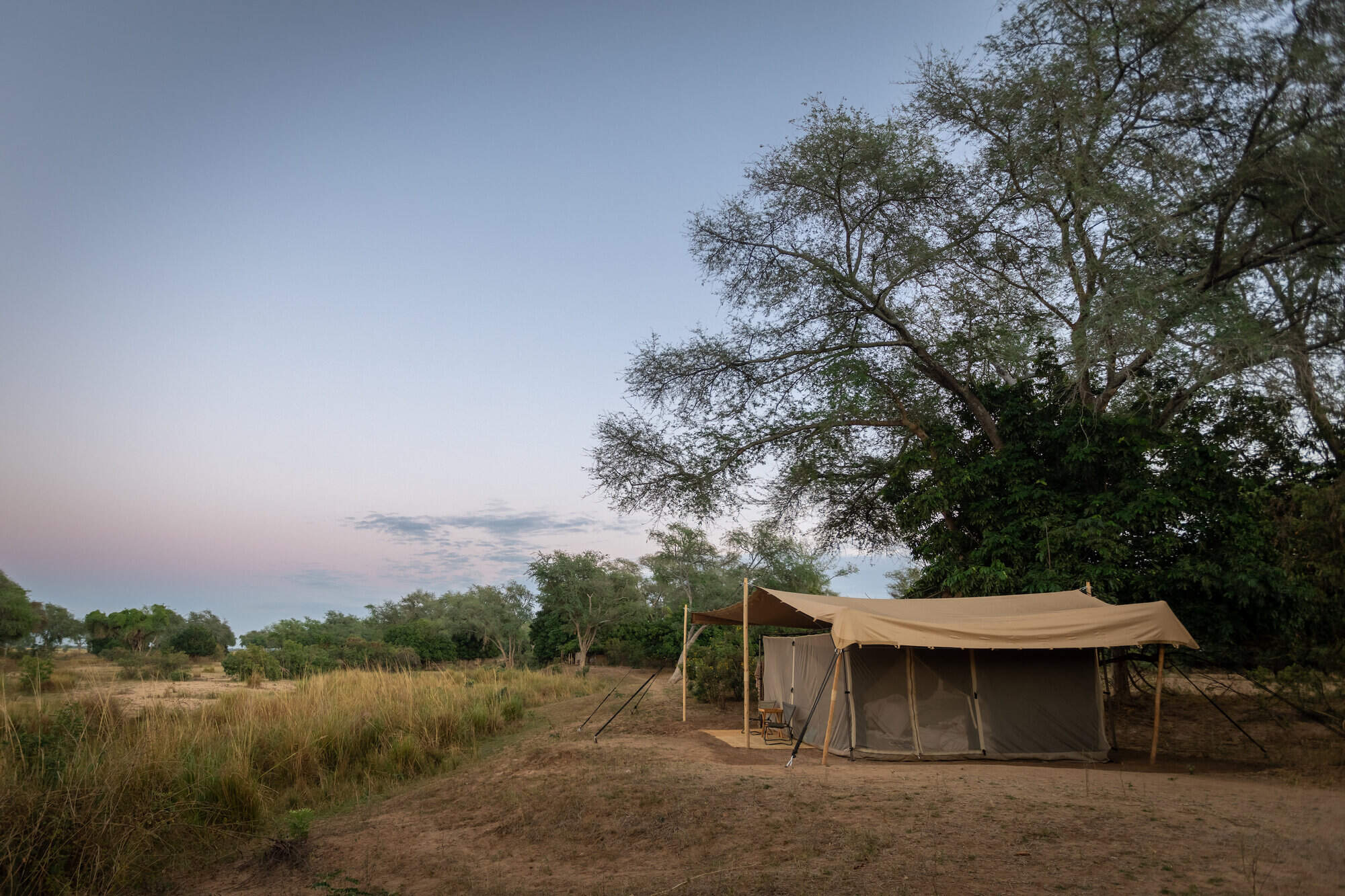
Chula Island Camp
Chula Island Camp offers the opportunity to experience the wilderness of Zambia’s Lower Zambezi National Park, in this simple fly-camp located in a natal mahogany grove on a small island on the Zambezi River.
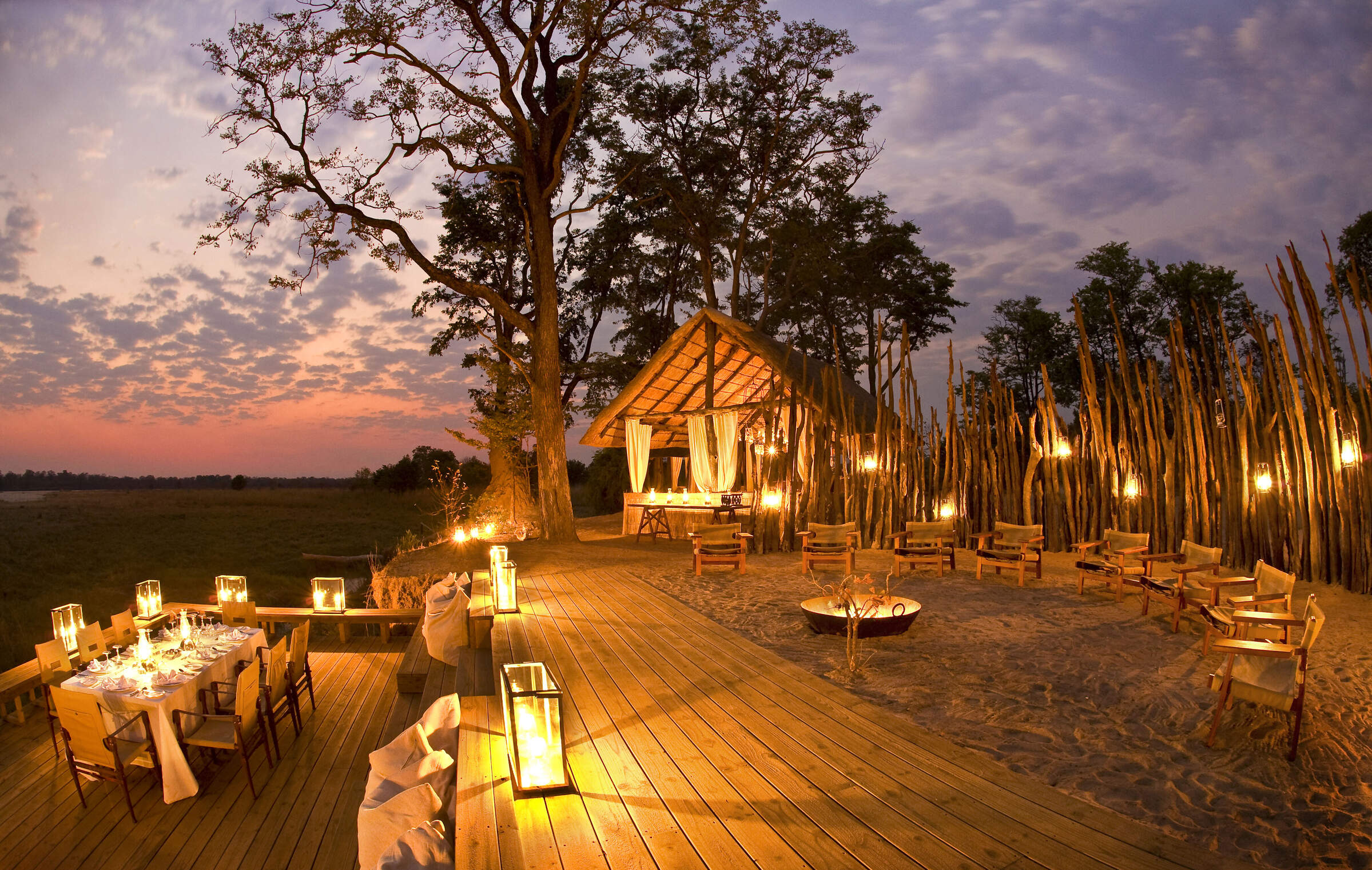
Zungulila is a small, comfortable tented bushcamp with an emphasis on walking safaris, in the remote southern section of the South Luangwa.
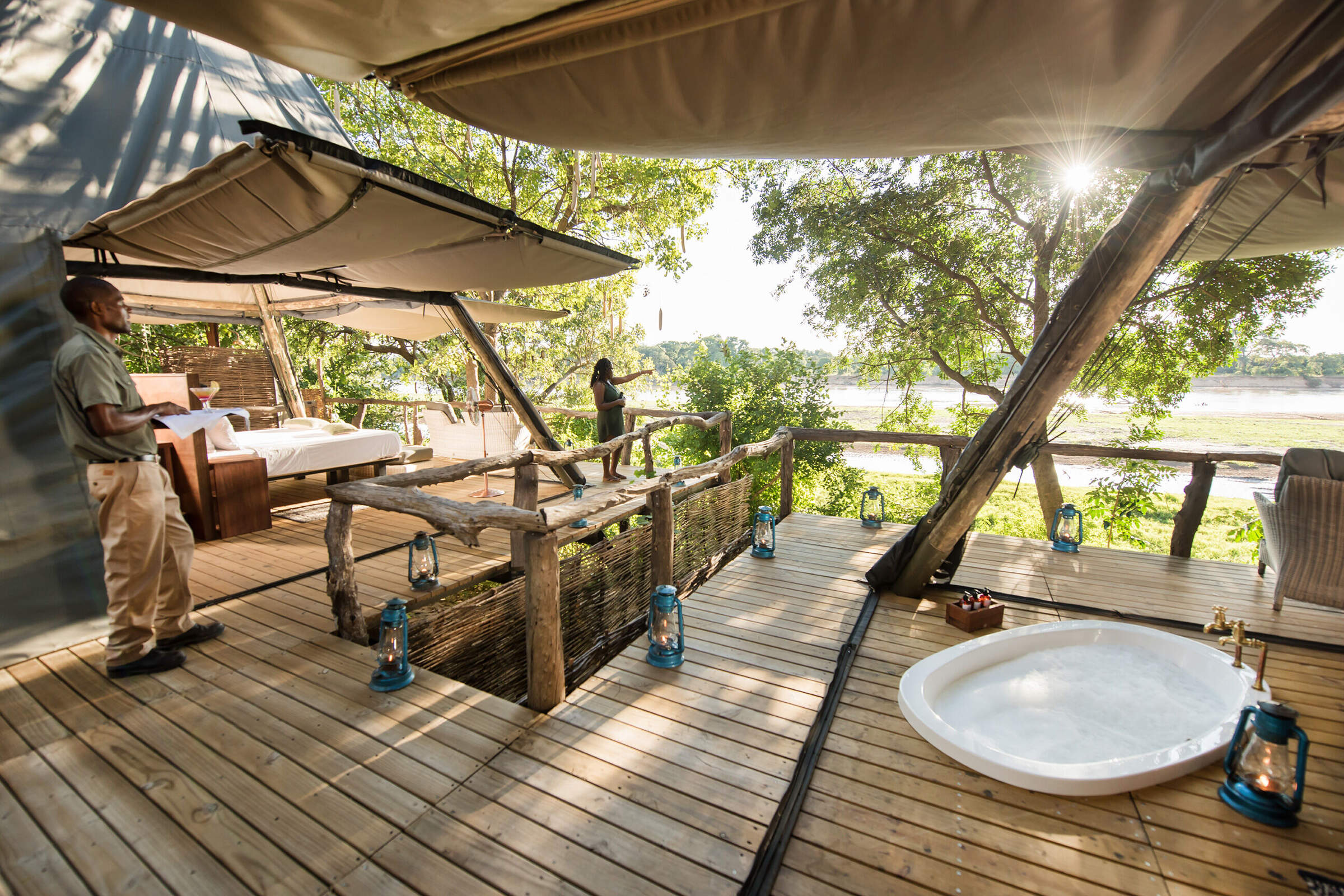
Shawa Luangwa
Opened in June 2021, Shawa Luangwa Camp is a small, intimate and rustic camp, with a good location in a remote section of the South Luangwa National Park.
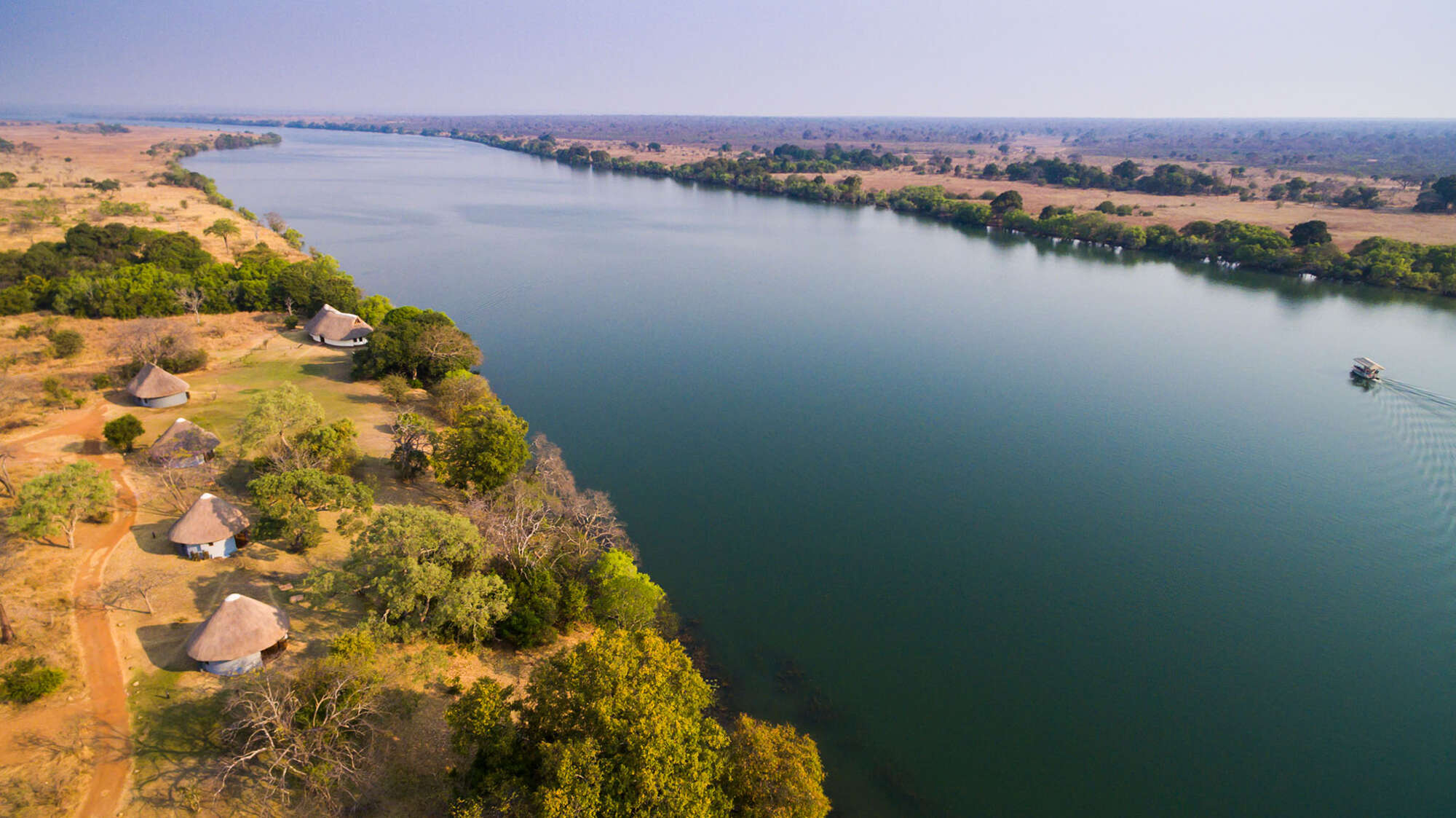
Mukambi Safari Lodge
Mukambi Safari Lodge is a solidly built, comfortable property just off the main road from Lusaka, making it one of the most convenient camps in Kafue.
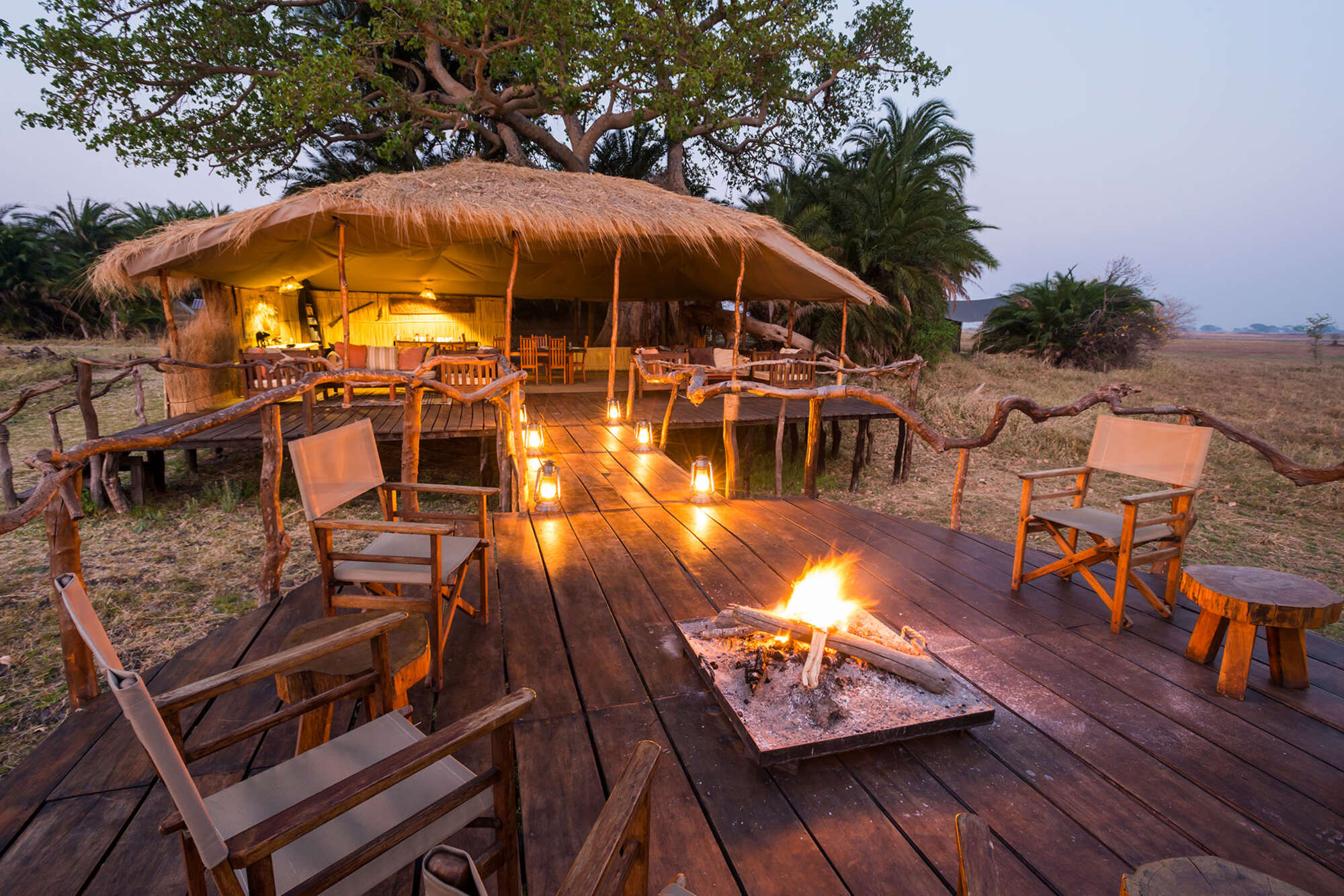
Mukambi Plains Camp
Mukambi Plains Camp is a rustic, tented property located in the middle of the vast Busanga Plains in Kafue National Park.
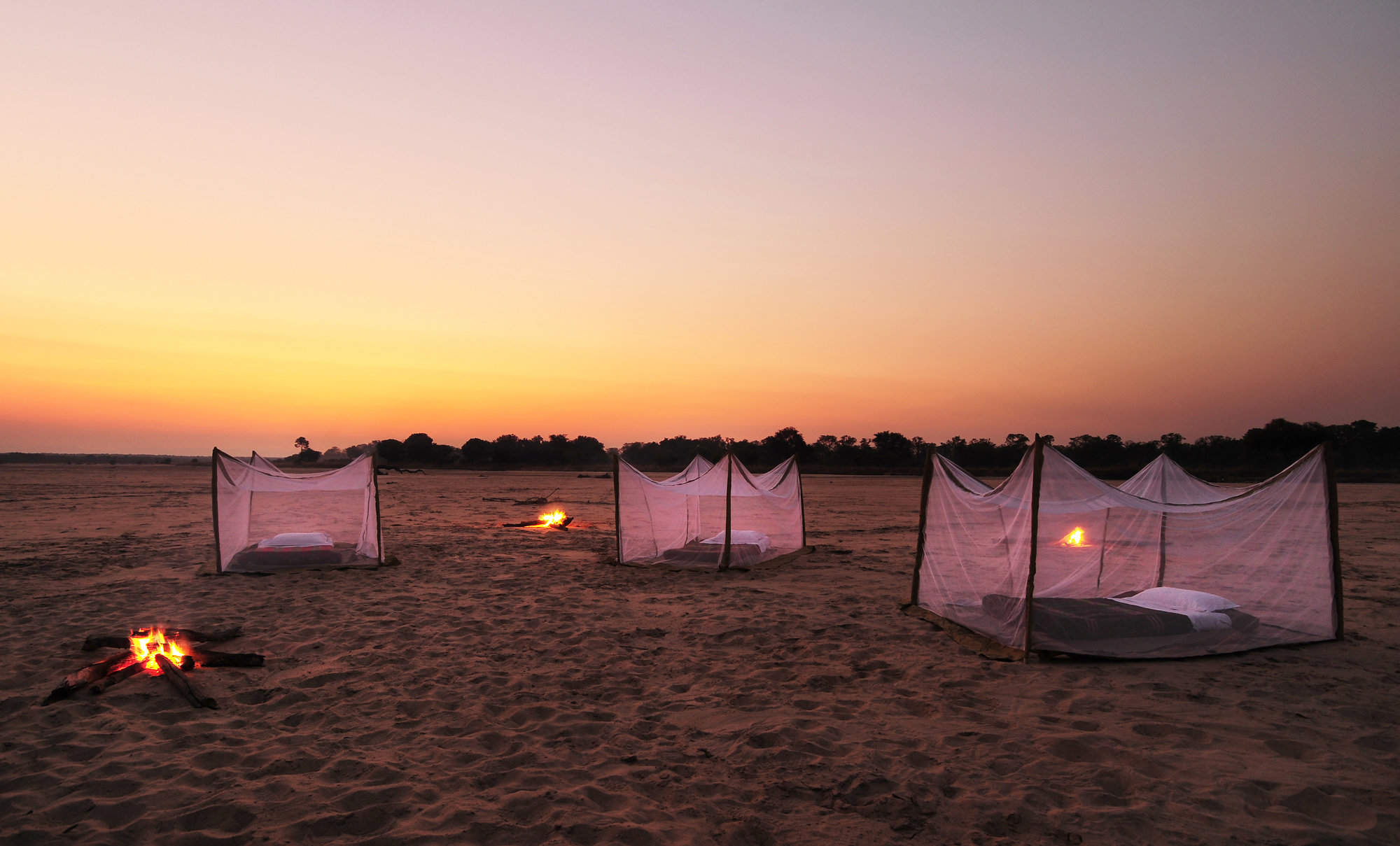
Luwi Riverbed Sleepout
For an adventurous night in South Luangwa National Park, come and sleep out in the bush, around a campfire, with an experienced guide and game scout.
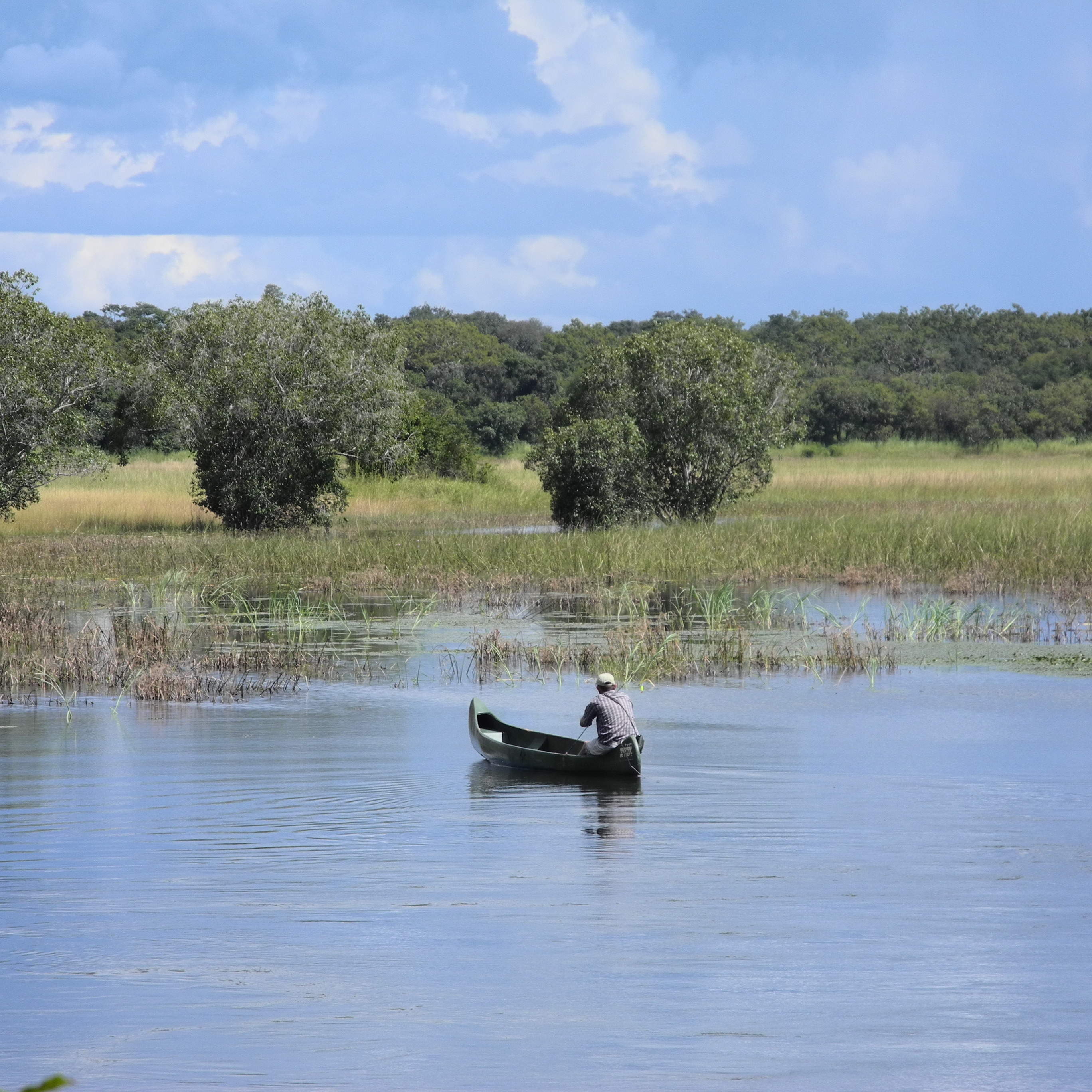
Luwombwa Lodge
Luwombwa Lodge in Kasanka National Park, northern Zambia
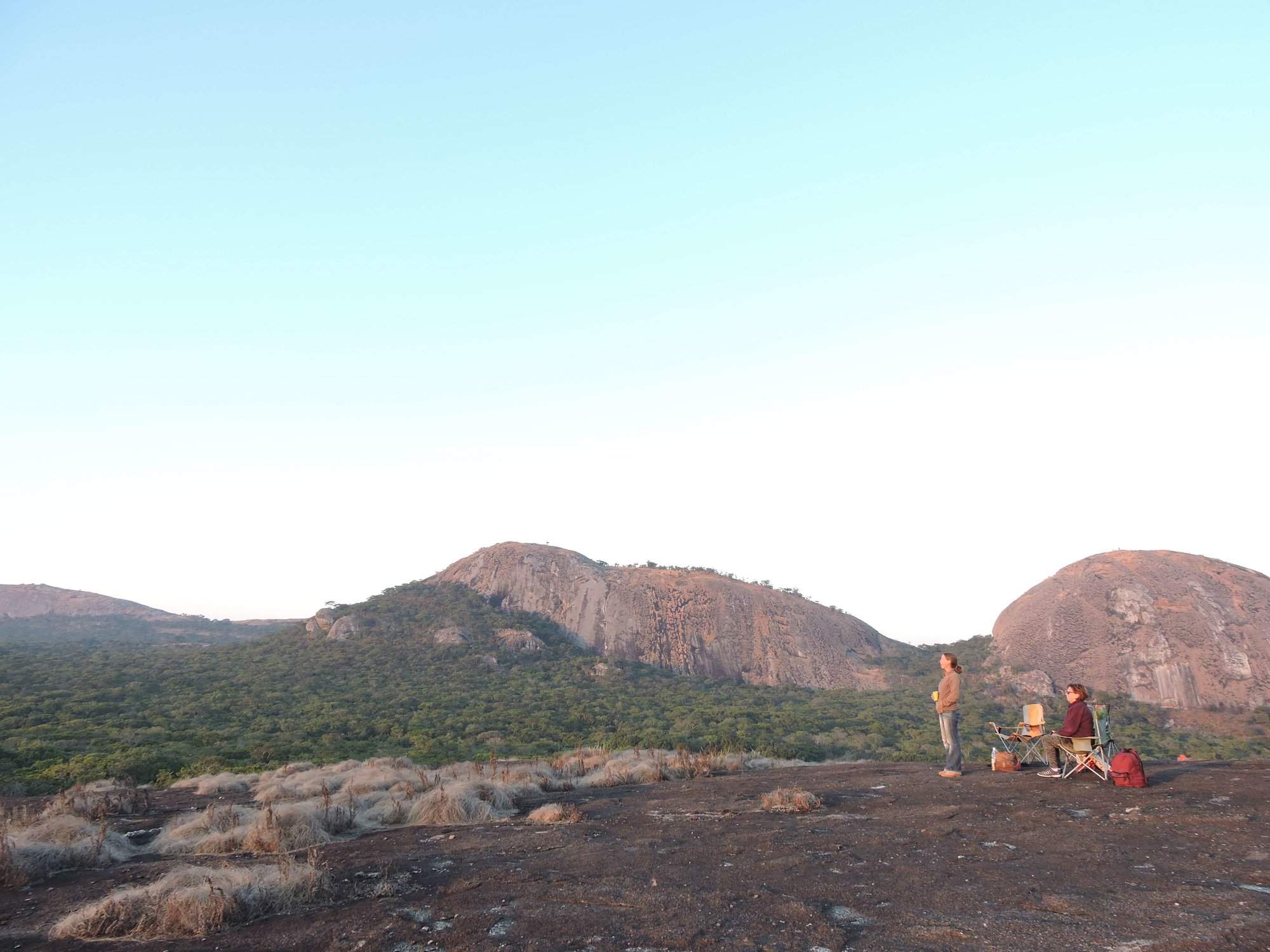
Mutinondo Wilderness
Visiting Mutinondo Wilderness near Mpika in northern Zambia - the accommodation, wildlife, birds and animals

Chichele Lodge
Currently in the final stages of an extensive rebuild, Chichele Presidential Lodge stands high within the park, with superb views, and is due to reopen in early 2025.
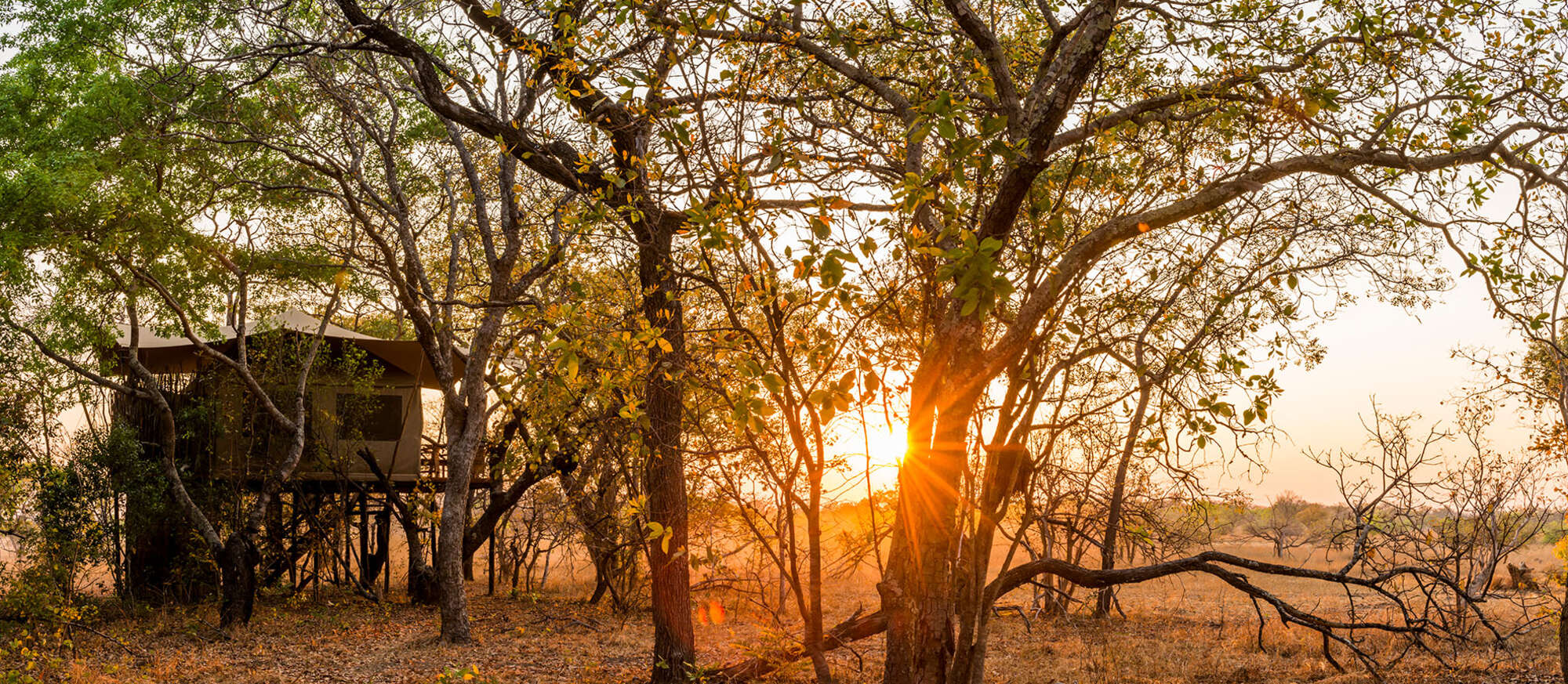
Fig Tree Camp
Fig Tree camp is in the centre of Kafue National Park, and in addition to having a stunning location is well placed to start or end your trip in the park.
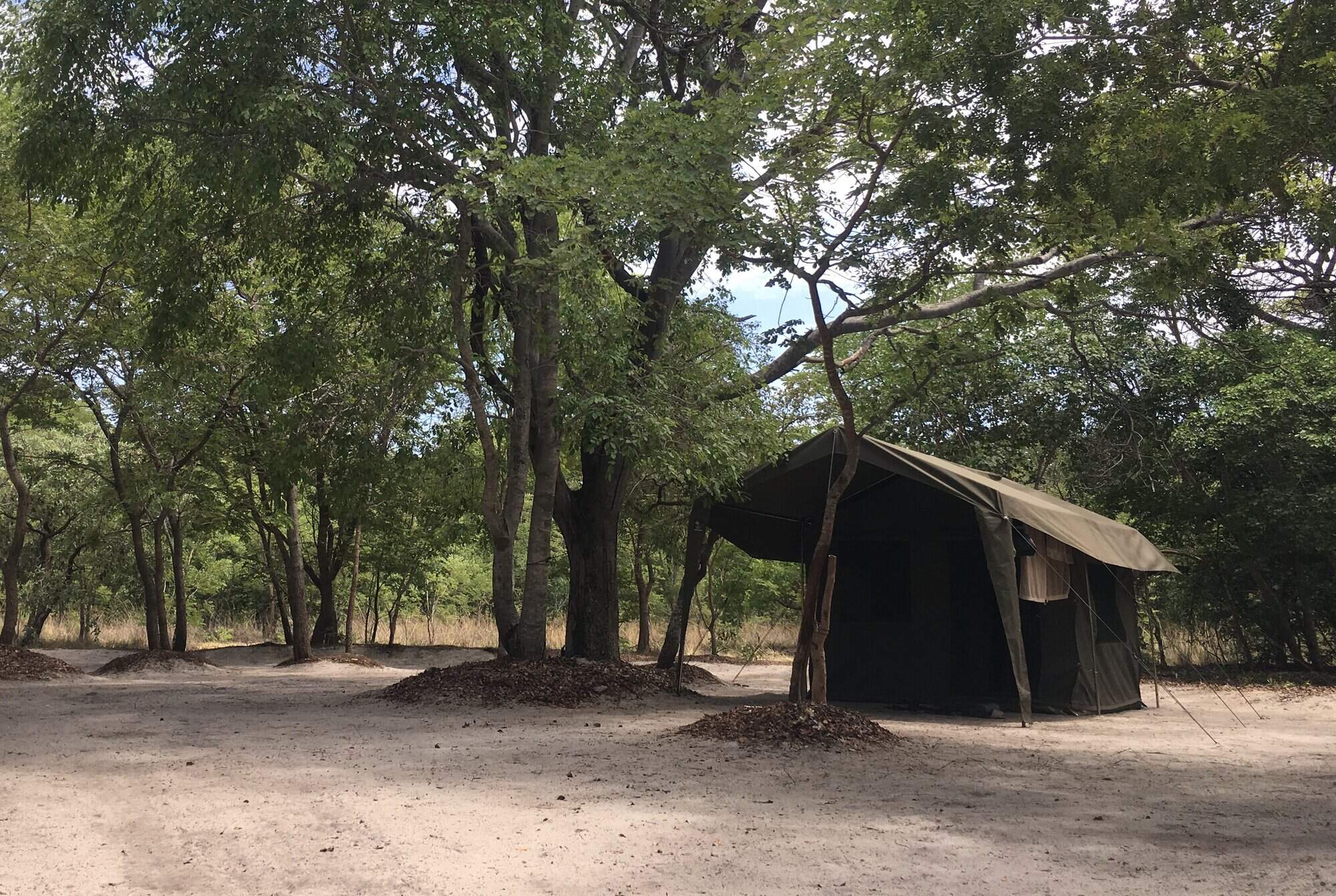
Liuwa Plains Mobile Safari
Liuwa Plains Mobile Safaris offer a remote and authentic safari adventure, into the heart Liuwa Plain National Park.
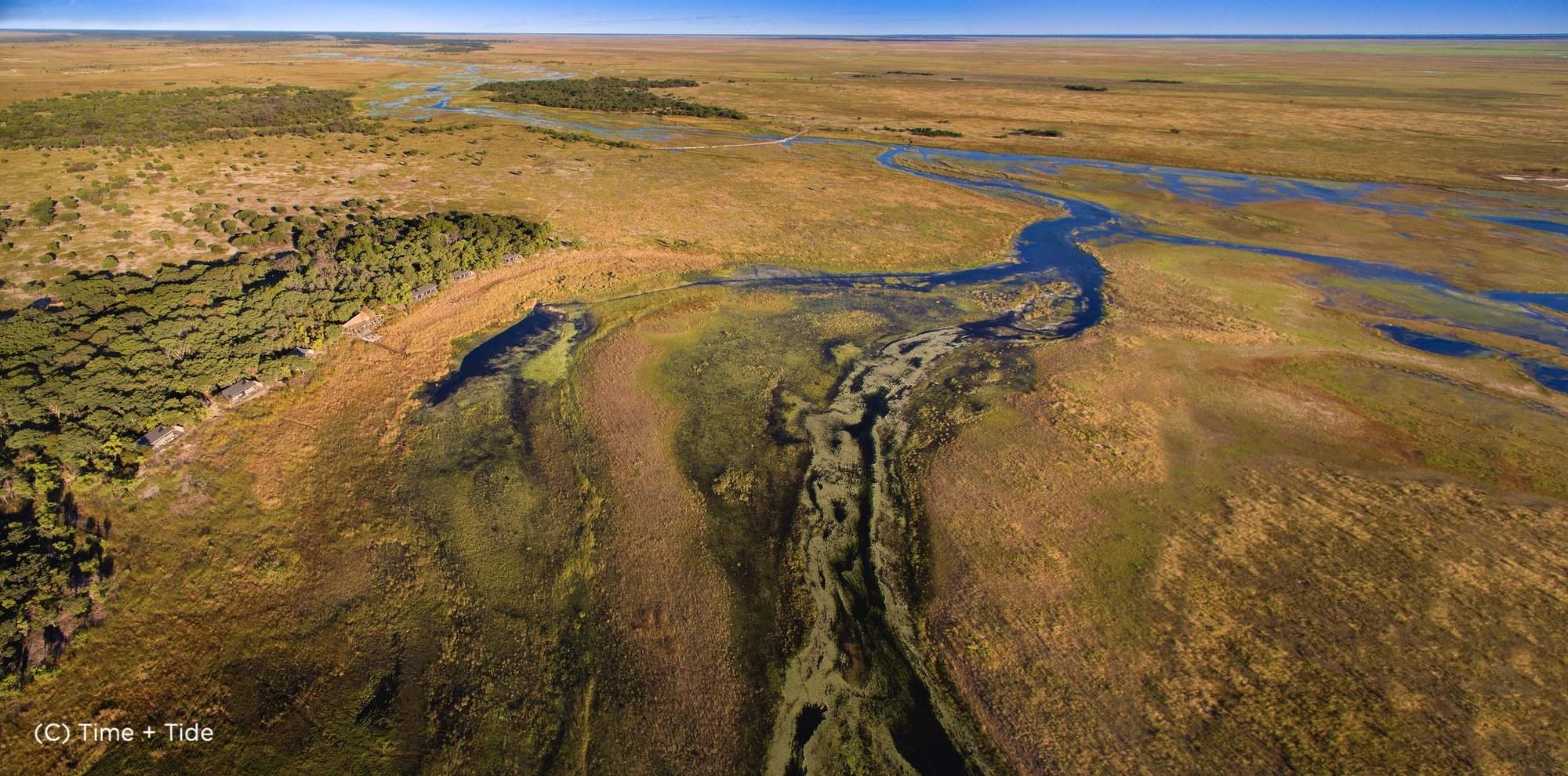
King Lewanika Lodge
King Lewanika Lodge, opened in 2017, is the only permanent safari camp in Liuwa Plain National Park.
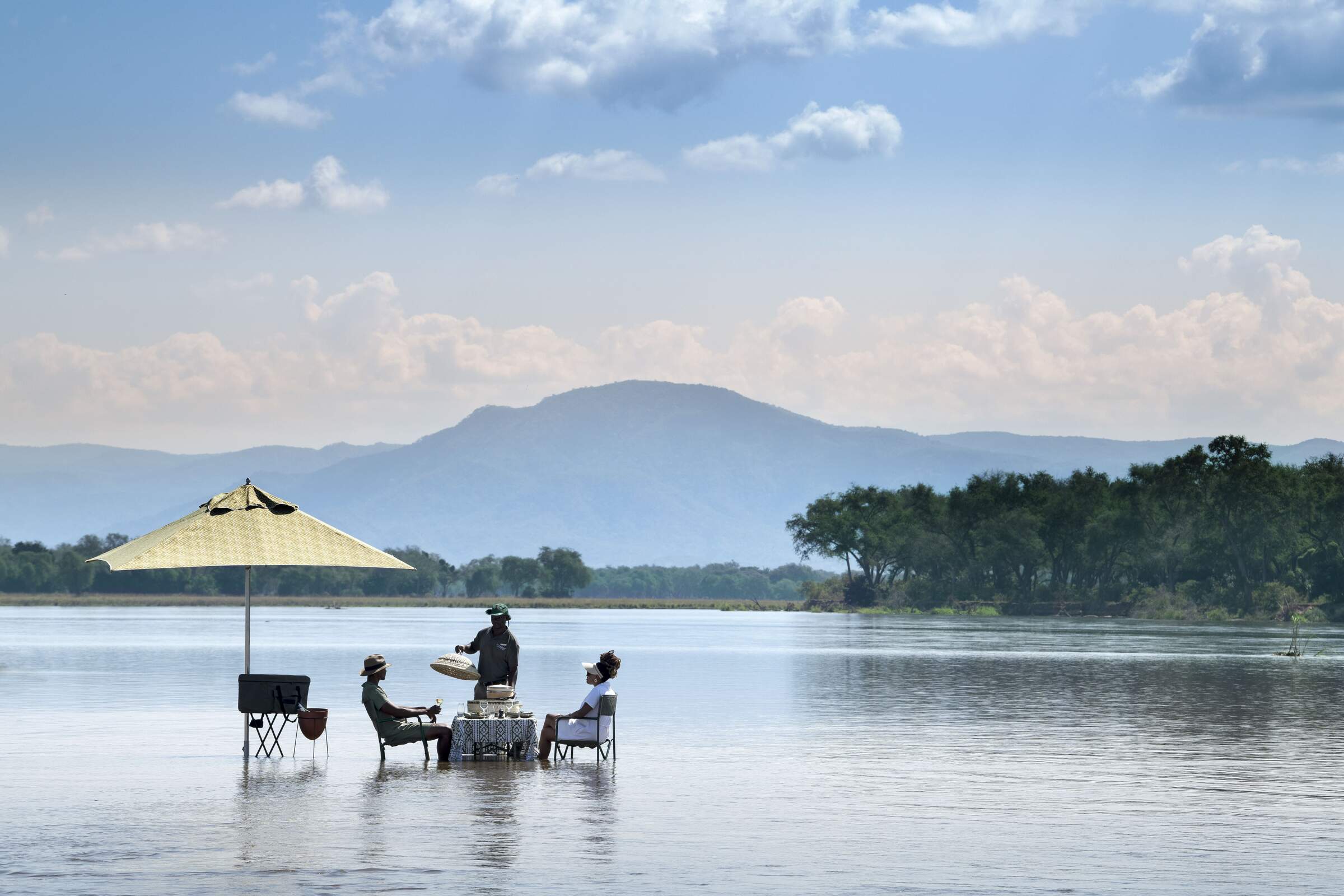
A chic safari spot, luxurious Lolelbezi is the Lower Zambezi’s newest camp and offers a mix of walking, canoeing and game drives led by excellent guides.
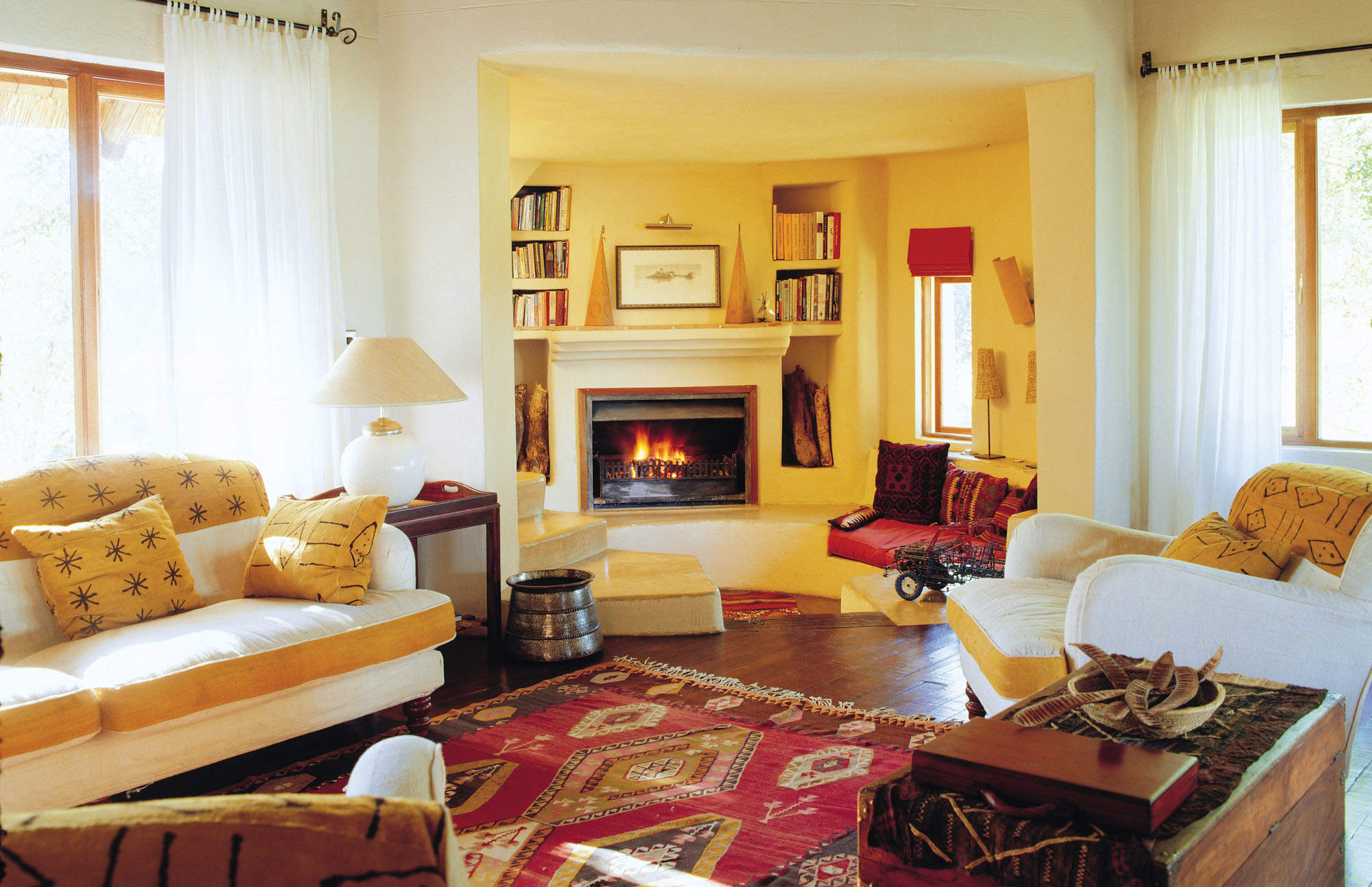
Tangala House
Tangala House, the family home near Zambia's town of Livingstone and the Victoria Falls
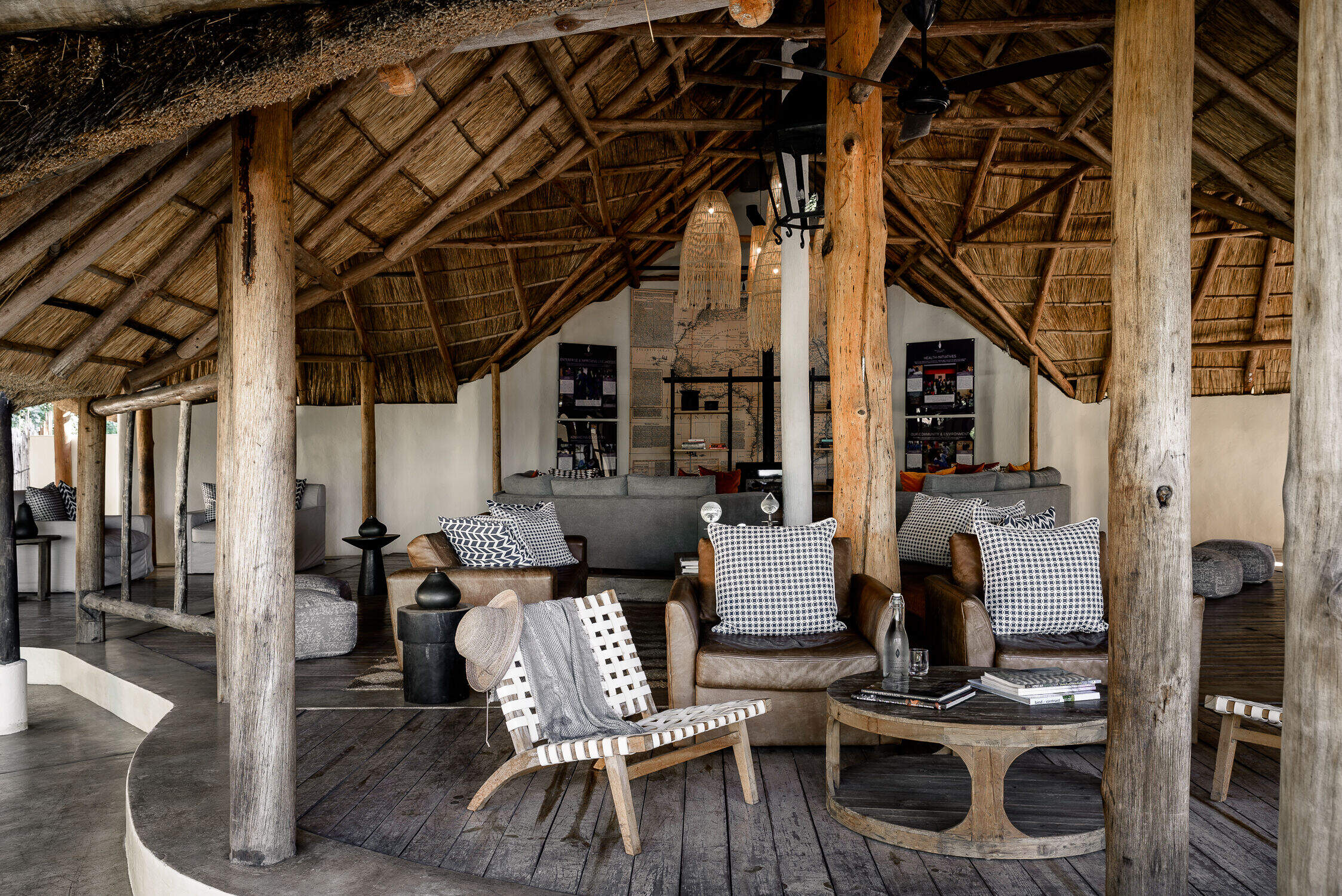
Sussi & Chuma
Sussi & Chuma combines a luxurious, laid-back camp with a good location on the Zambezi River, with quick access to the Victoria Falls.
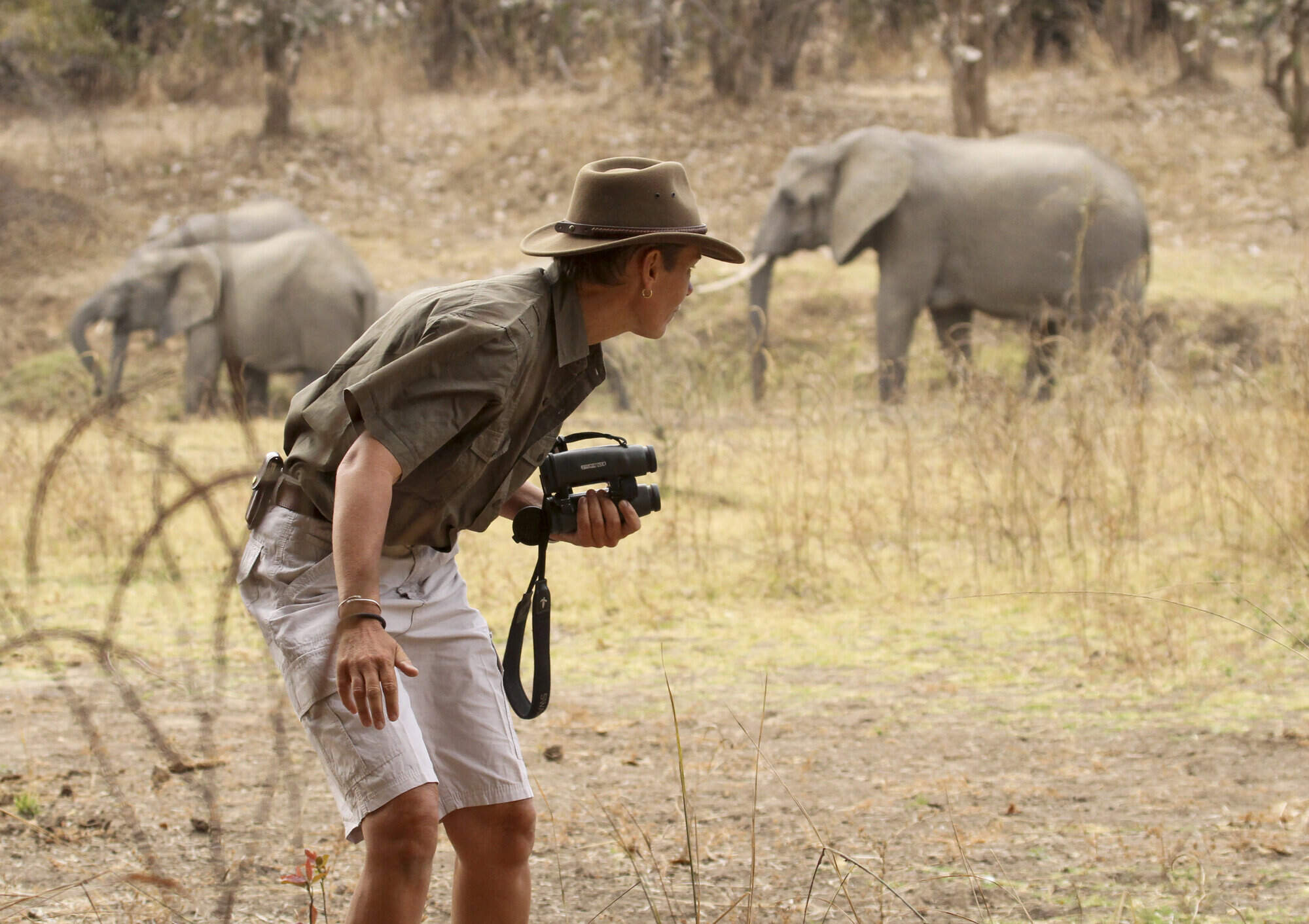
Mapazi Camp
Mapazi Camp is a basic safari camp in the far north of the South Luangwa, with walking safaris led by renowned guide Deb Tittle.
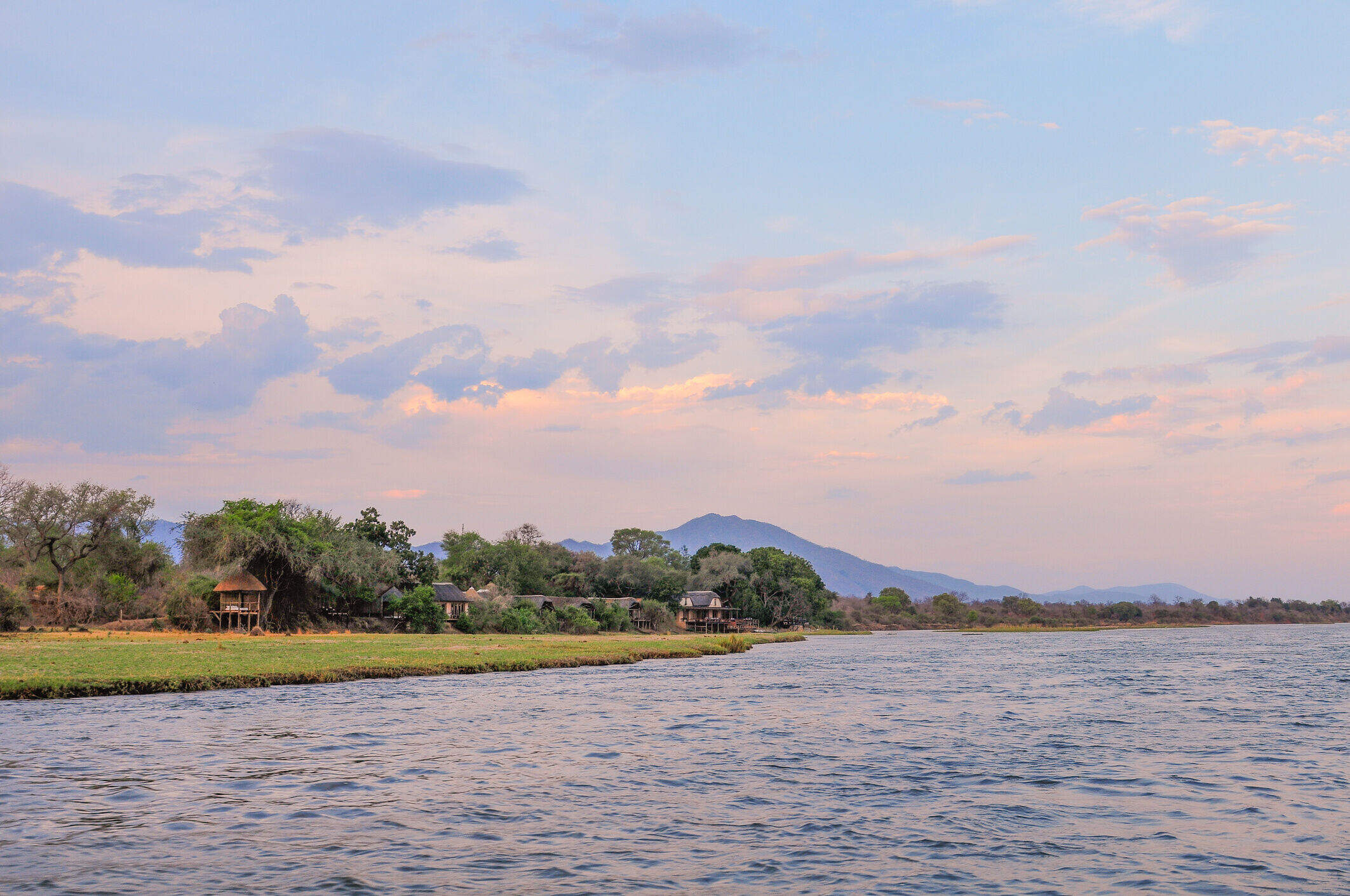
Royal Zambezi Lodge
This family-friendly lodge is located just on the outskirts of the Lower Zambezi National Park, in a great location overlooking the river.
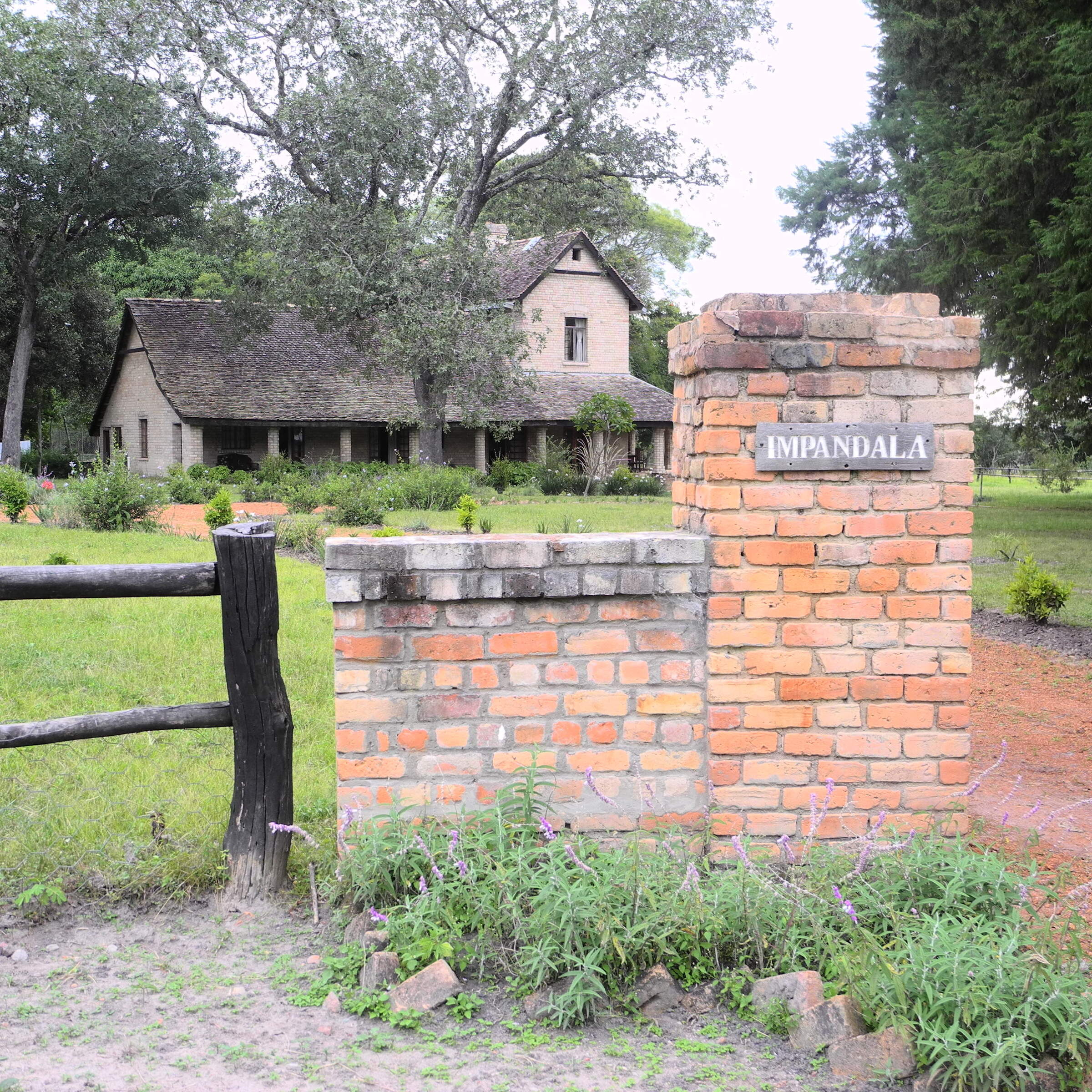
Impandala House
Situated in the grounds of the historic Shiwa Ng'andu manor house, Impandala House works well as a base for families or small groups to explore northern Zambia.
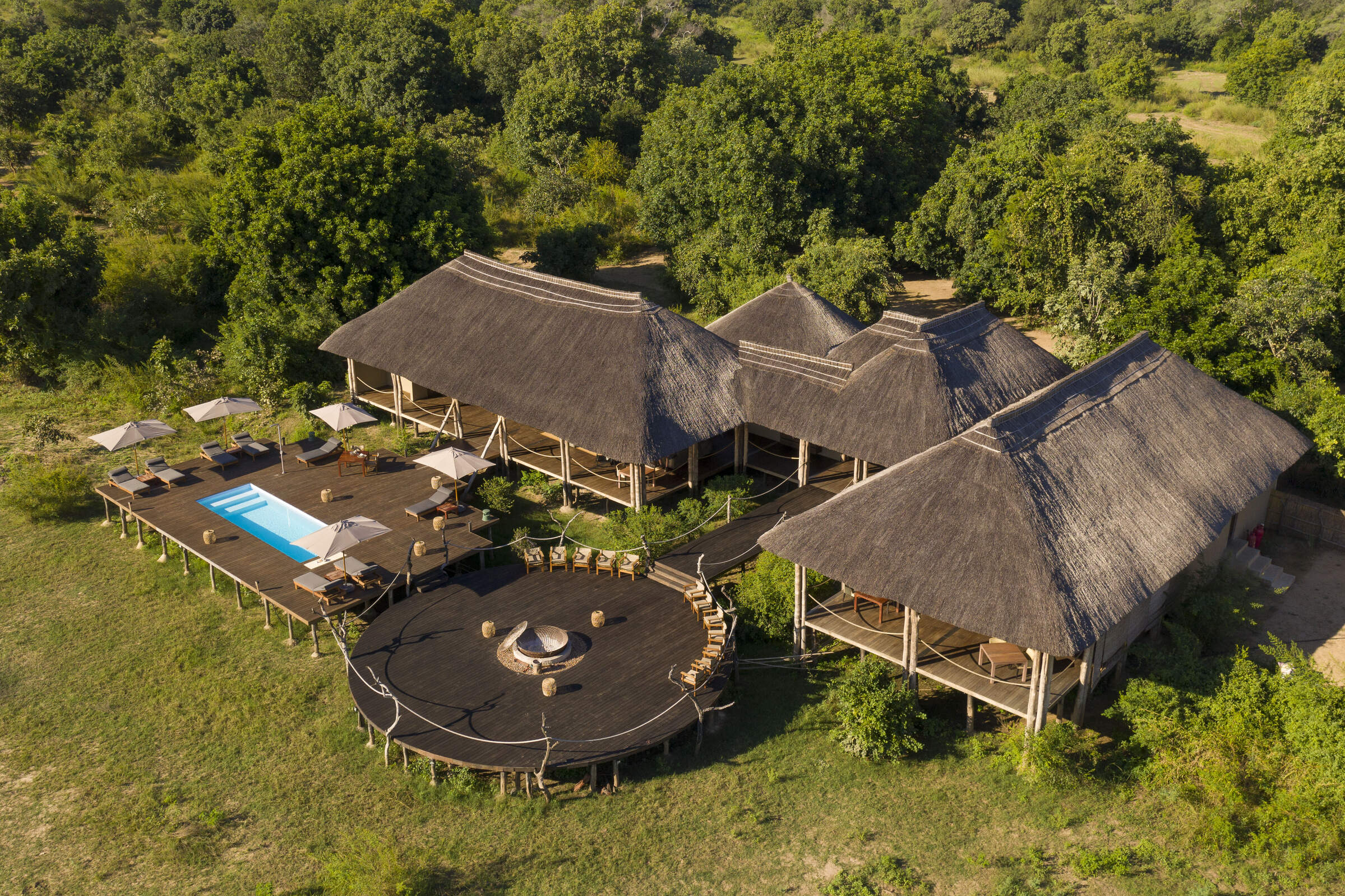
Chikunto Safari Lodge is a more traditional property in the South Luangwa National Park, sitting on a peninsula of land created by the meandering Luangwa River.
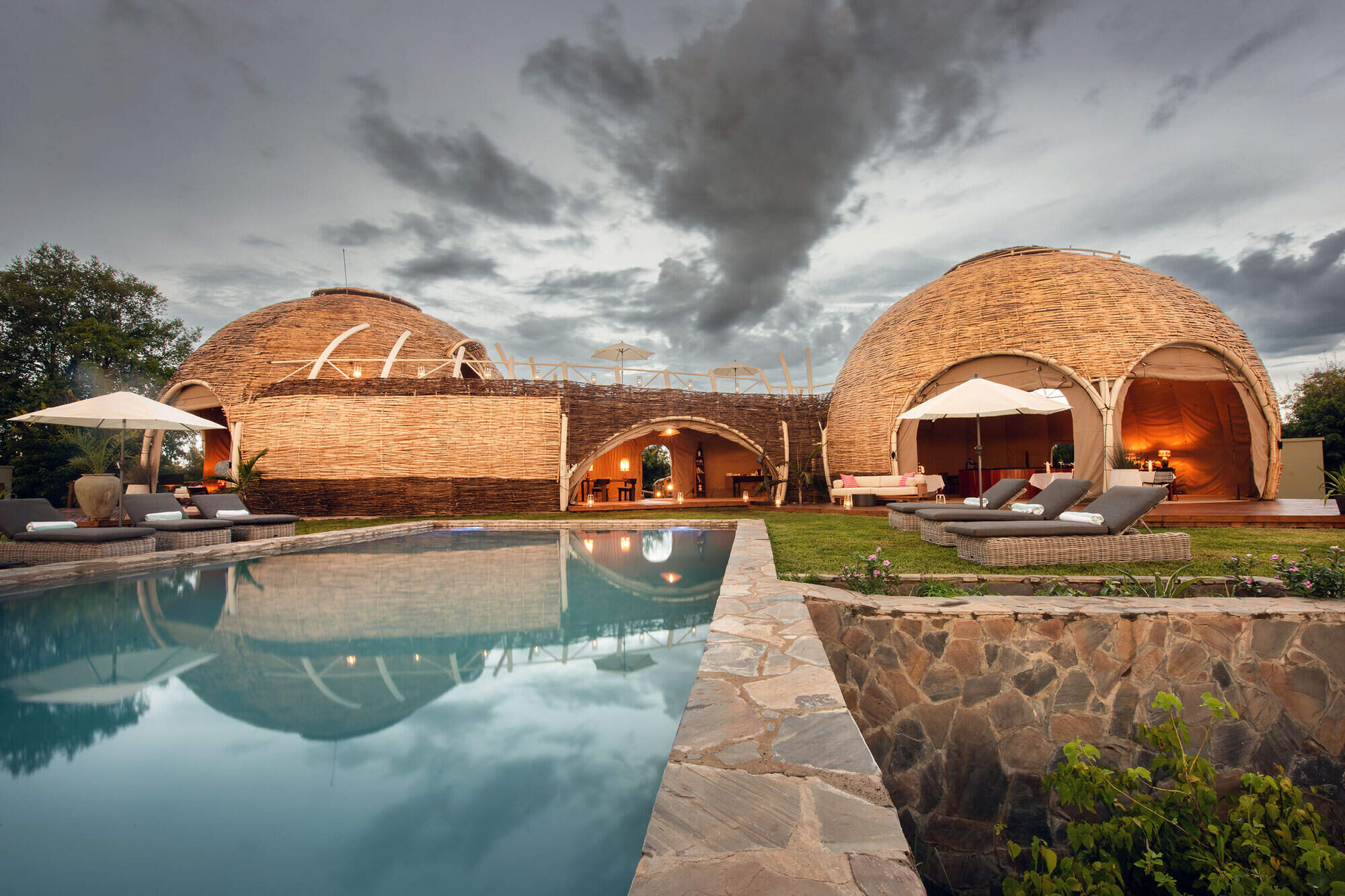
Ila Safari Lodge
Ila Safari Lodge is a comfortable lodge just outside Kafue National Park, with convenient access from Lusaka.
Special types of holiday to Zambia
Zambia’s safari attractions include many that appeal to individual travellers, whether on family holidays or travelling solo, with interests that range from birdwatching and photography to culture – and even adrenalin activities.
A few safari camps are set up for photographers , with specially trained guides and wildlife hides that offer superb vantage points. Those hides can be equally valuable for birdwatchers , who may be intent on seeking out the country’s 750+ bird species, or trekking in search of the rare shoebill.
While some camps genuinely welcome children, families often prefer the flexibility, relaxed atmosphere and space offered by Zambia’s private houses – the perfect spot for a family safari holiday .
Honeymoon visitors will find romantic hideaways and secluded private dinners, whereas solo travellers will appreciate the shared activities and dining that’s the norm elsewhere. And for culture, there’s no more fascinating place than Shiwa Ng’andu .
To find out more, or to get the lowdown on horseriding, wellbeing or even adrenalin sports at Victoria Falls , talk to us and we’ll help you to organise your perfect safari holiday.
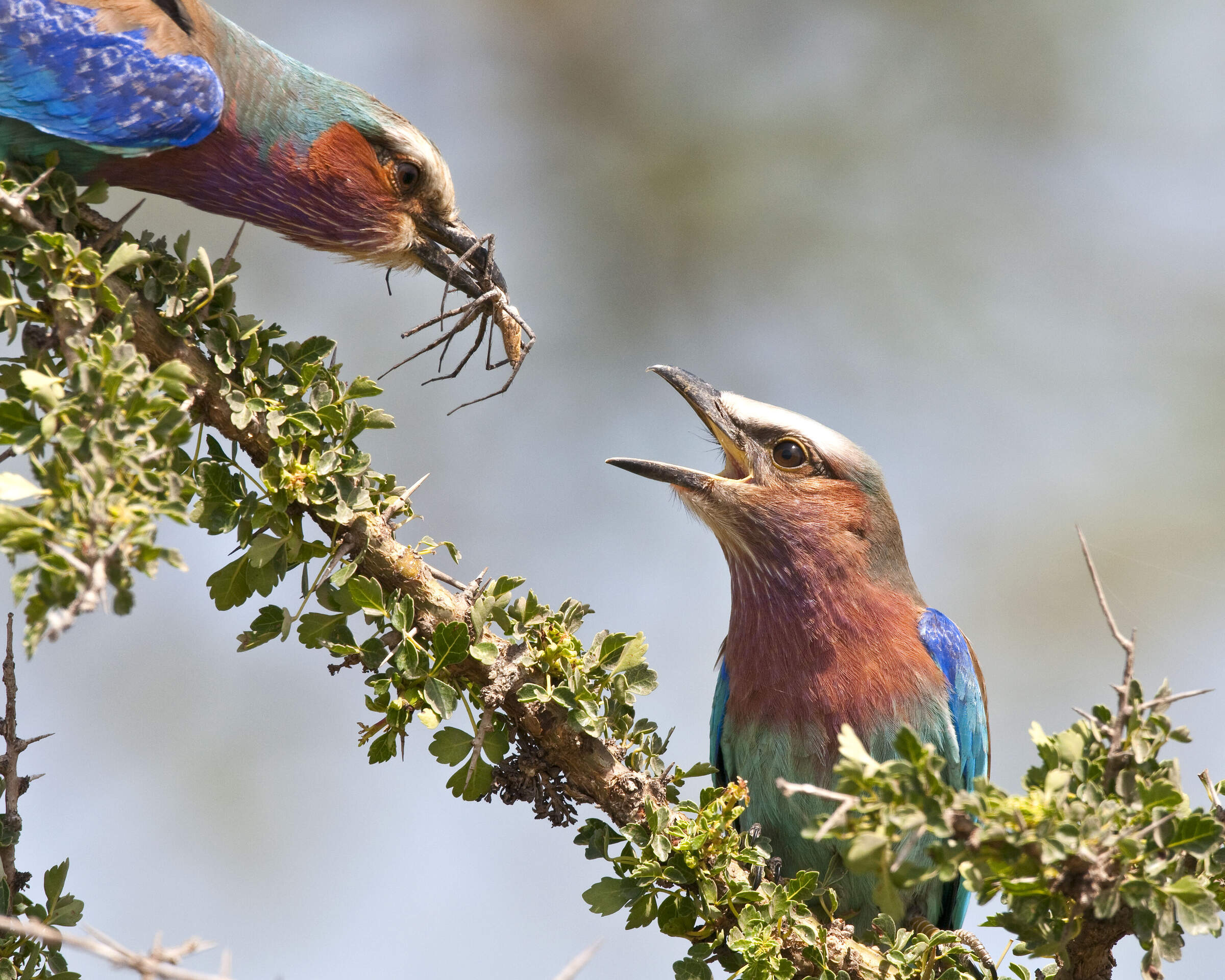
Birdwatching
Diverse habitats, discreet hides and superb guiding.
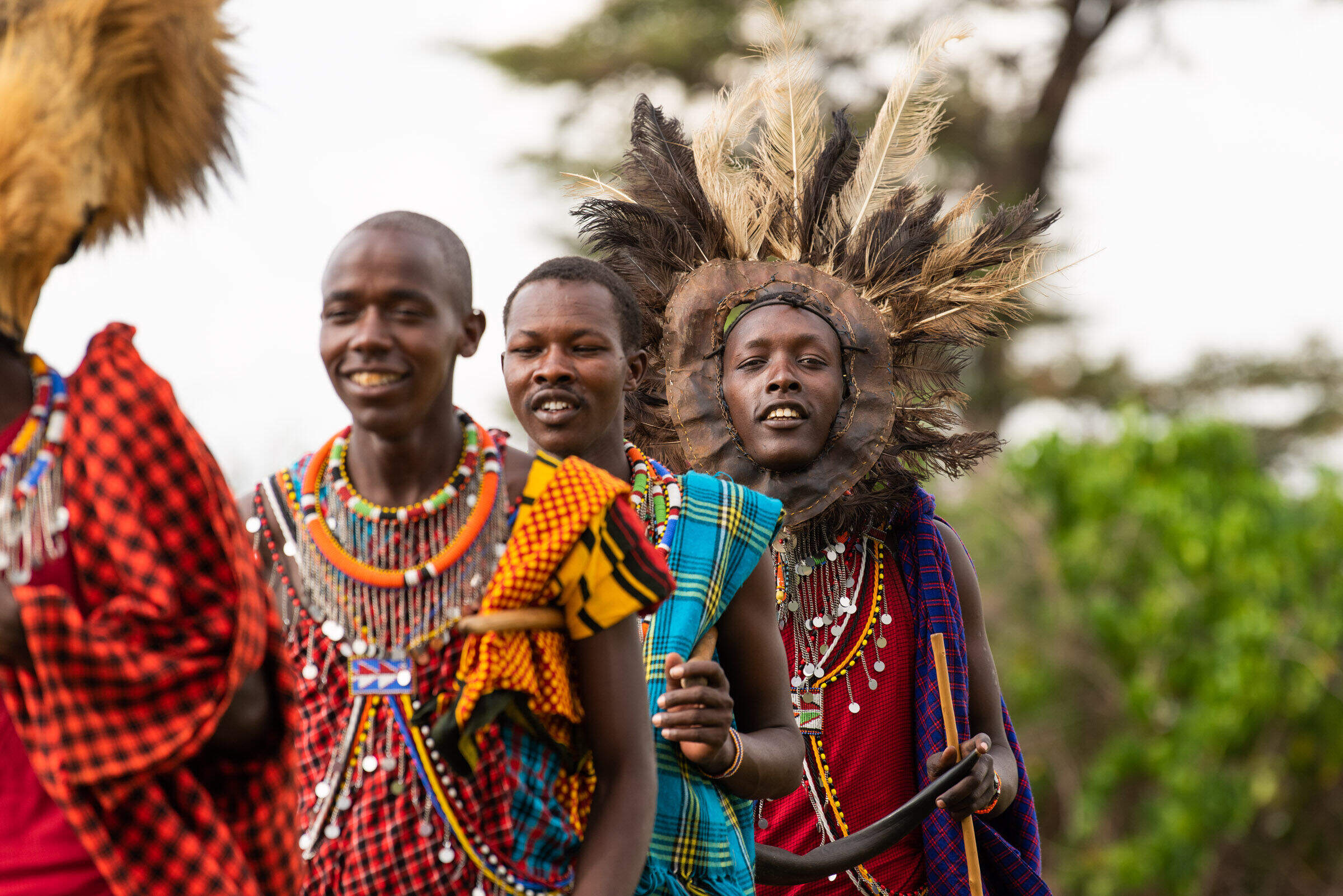
Cultural experiences
Get an insight into Africa's cultures and history.
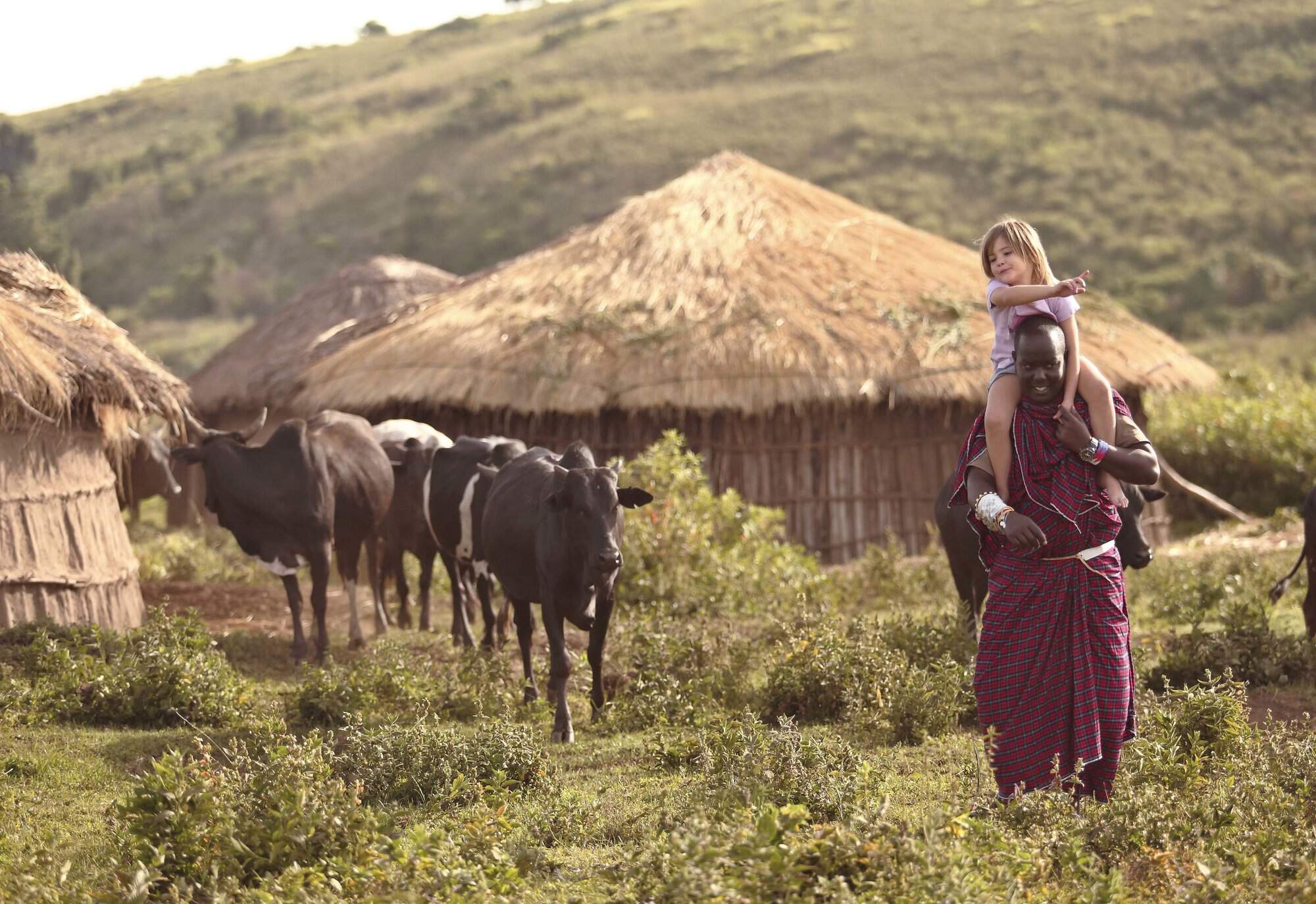
Family holidays
Hand-picked camps for an incredible family safari.
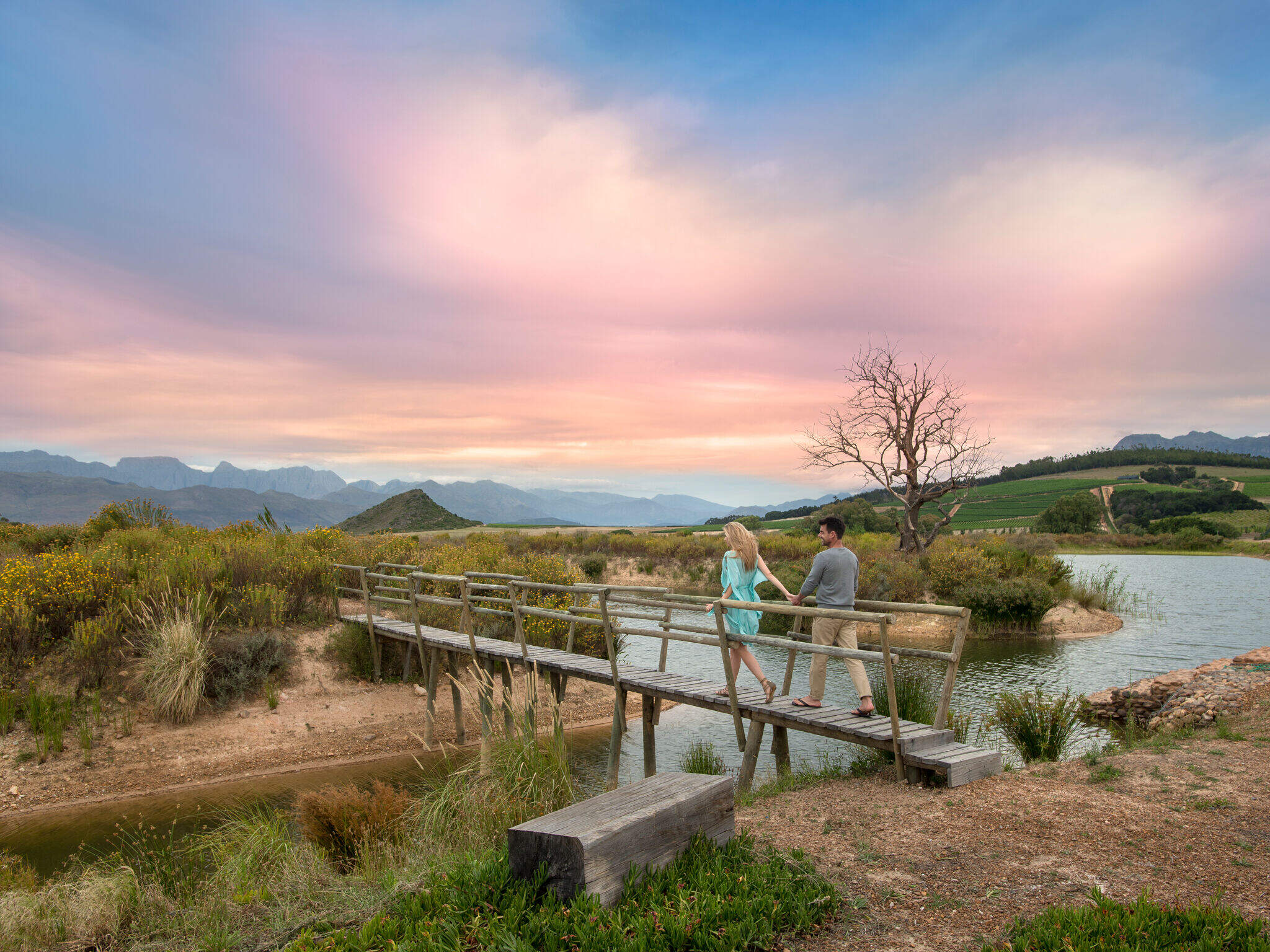
Romantic safaris and castaway island retreats.
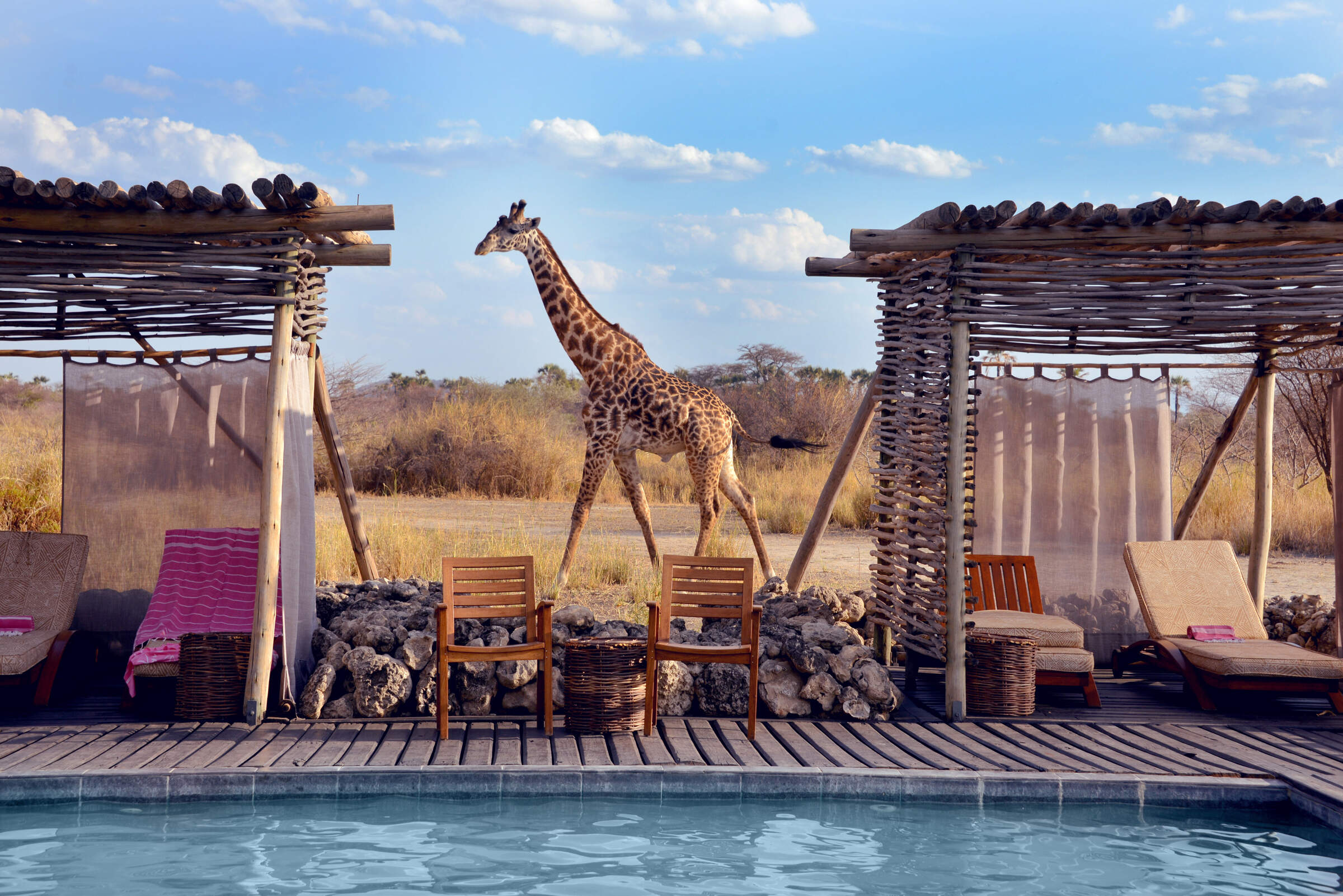
First-class service, scenic vistas and unparalleled comfort await you during these carefully selected luxury holidays.
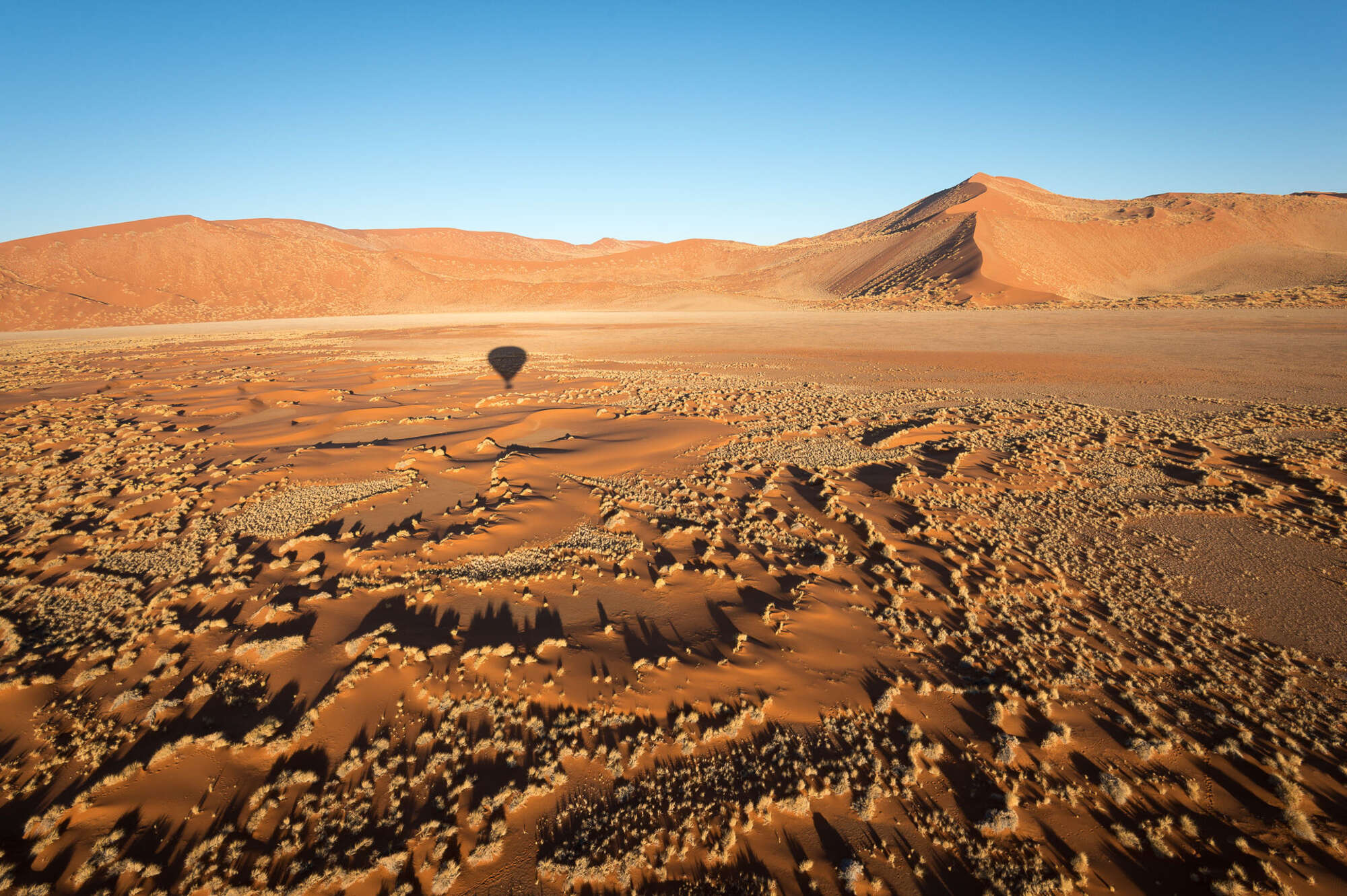
Photography holidays
Great holidays to suit the keen photographer.
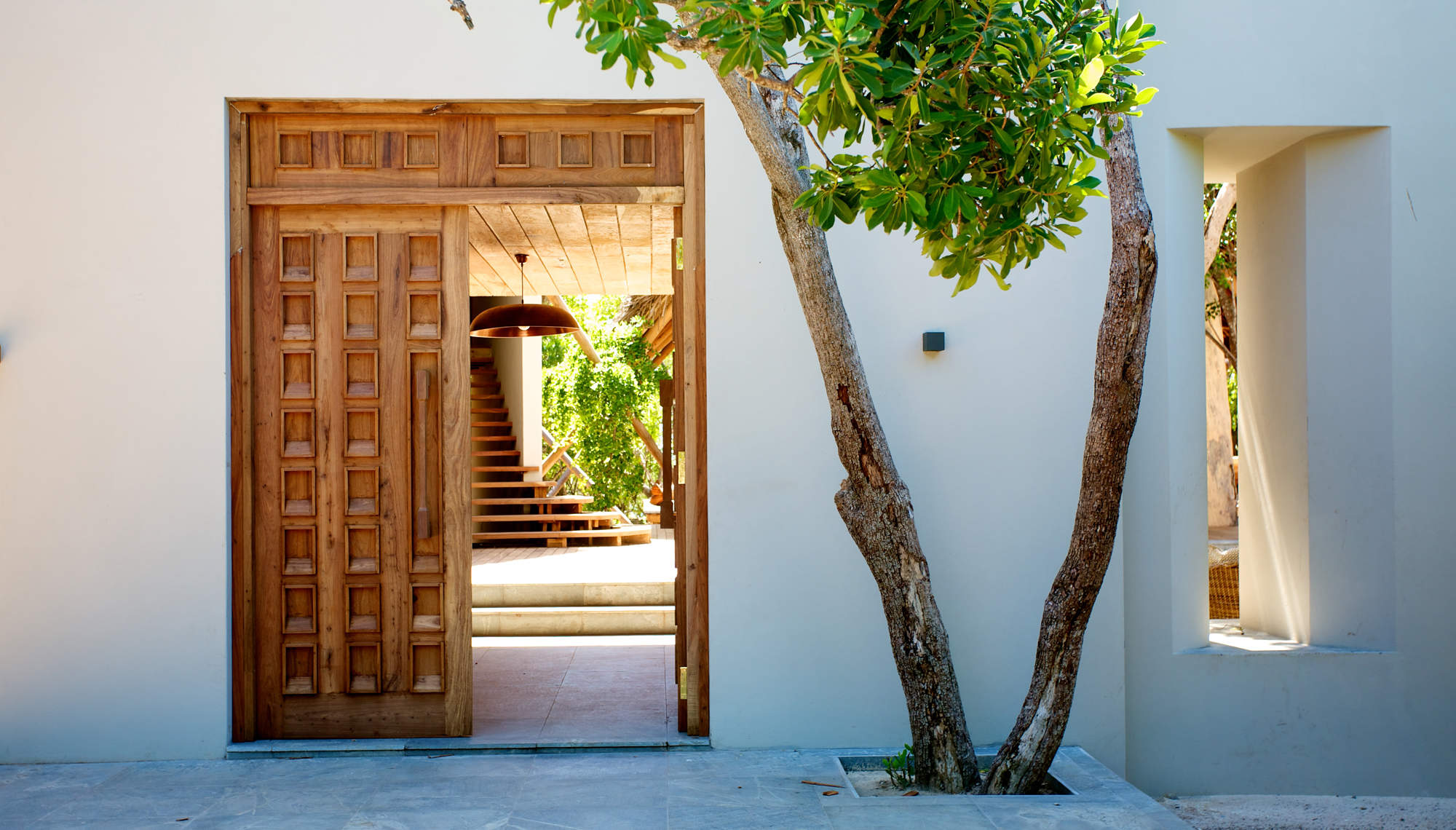
Private villas & houses
Enjoy Africa with just your friends & family
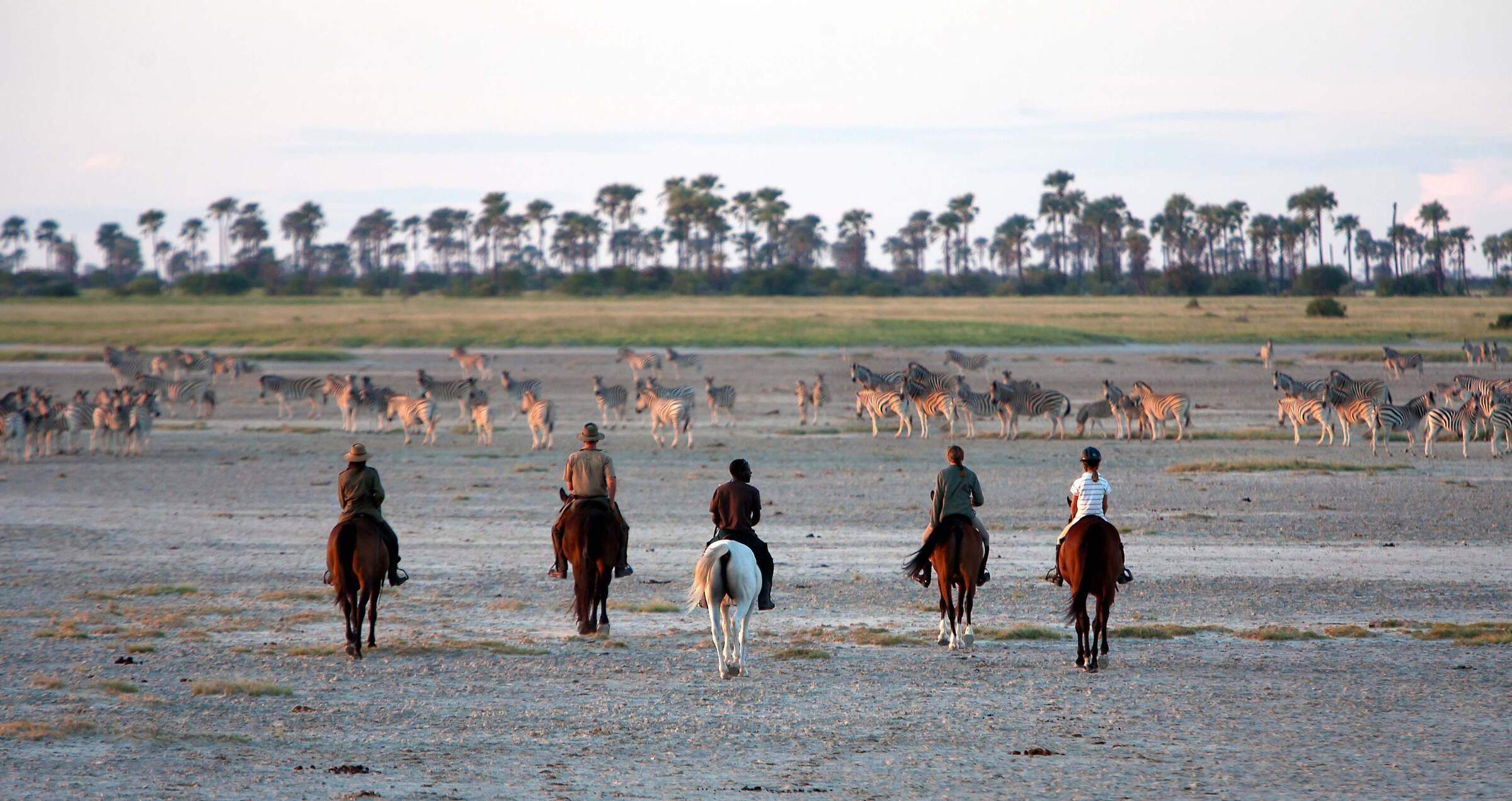
Riding holidays
Explore Africa's wilderness on horseback.
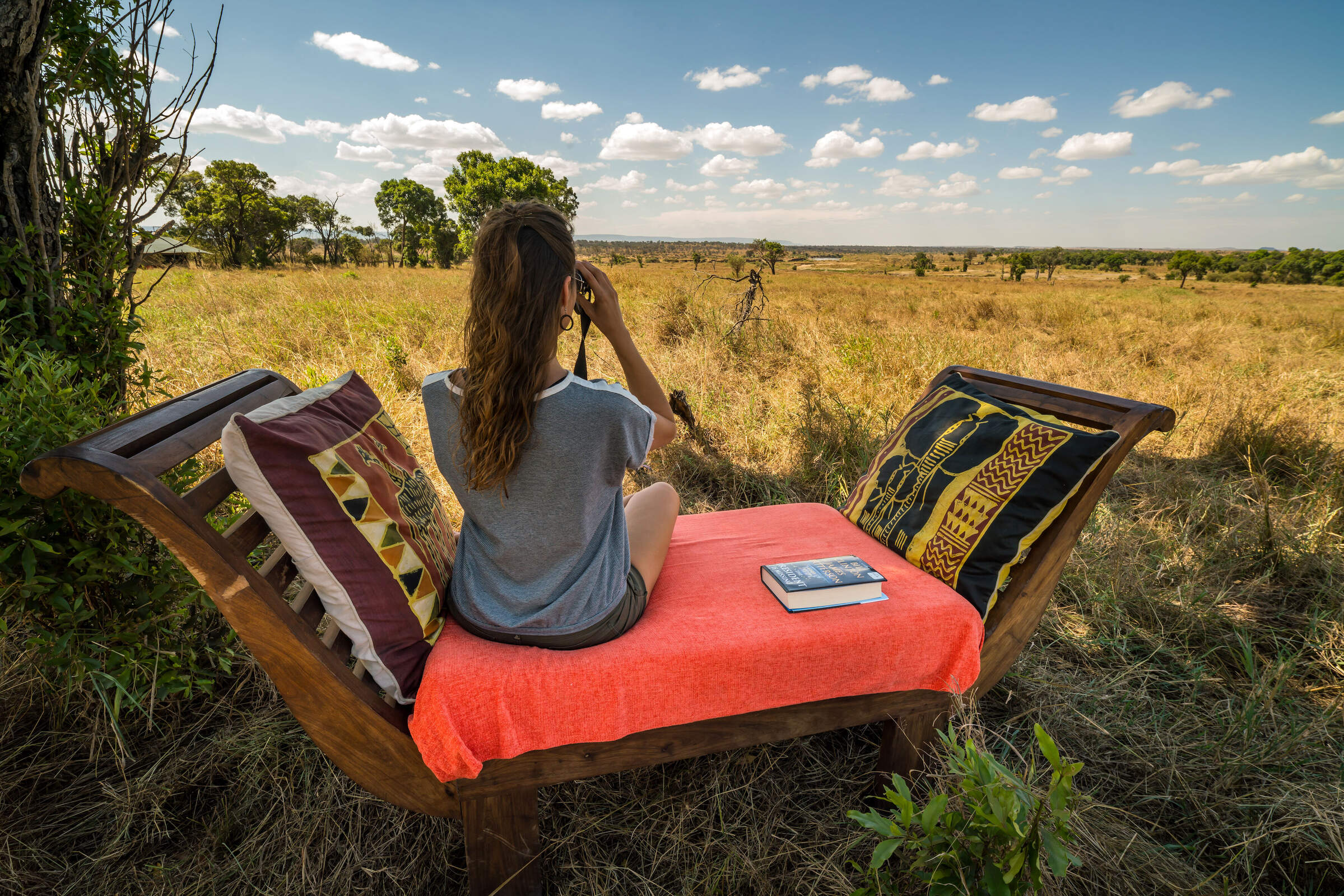
Solo Travel
Trip ideas ideally suited for a solo traveller.
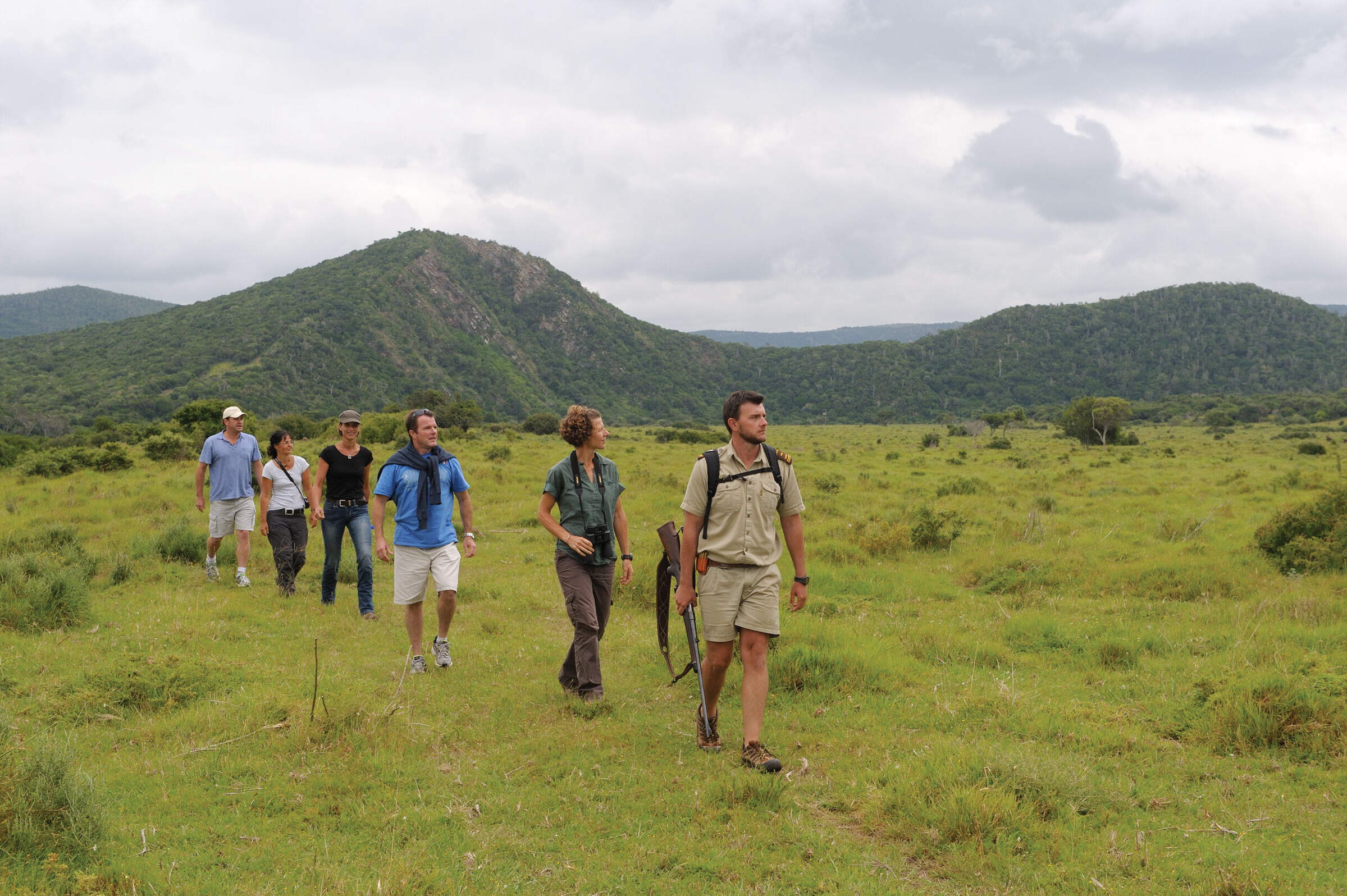
Explore Africa's most scenic trails on foot.
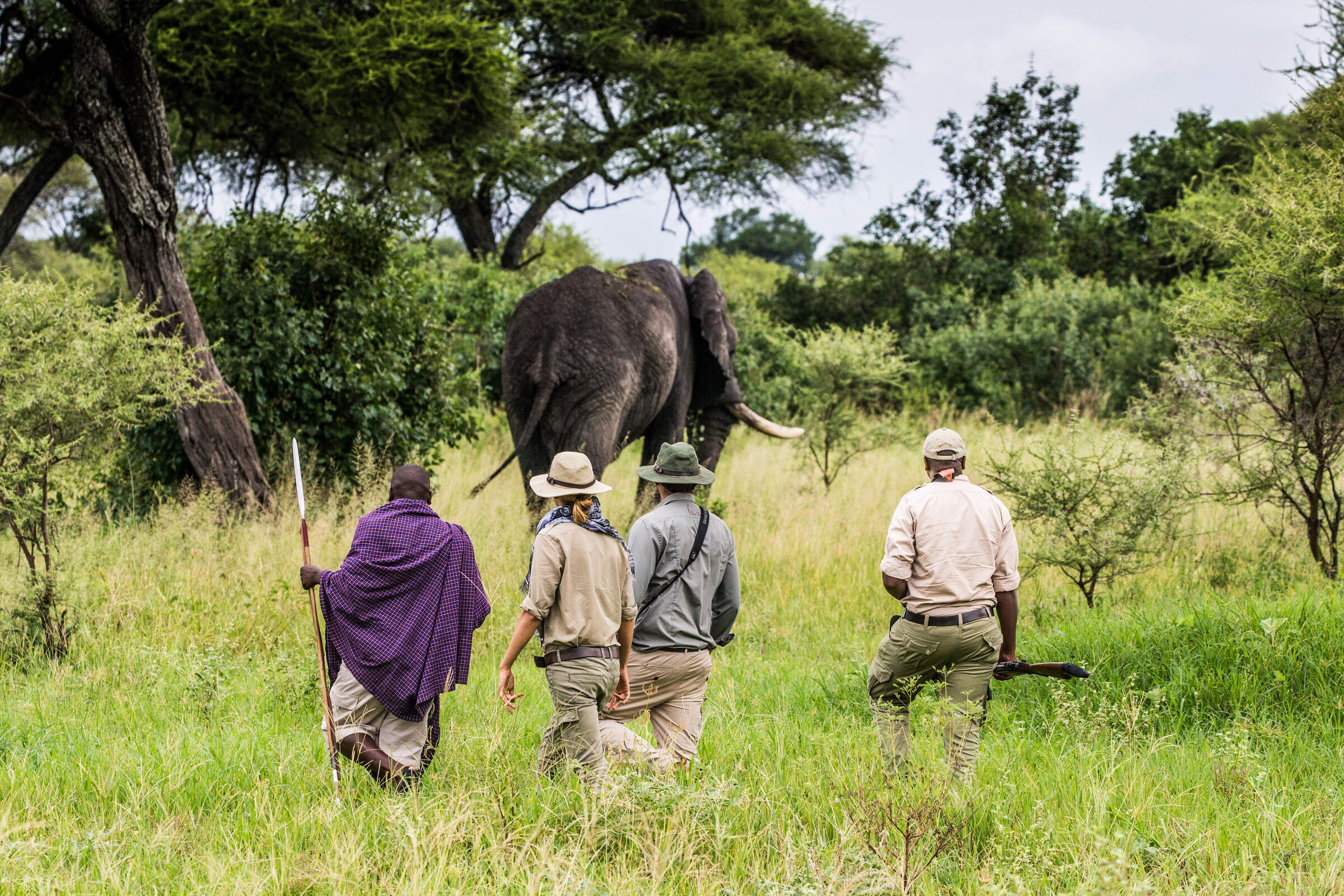
Walking safaris
Explore Africa's untouched wildernesses on foot.
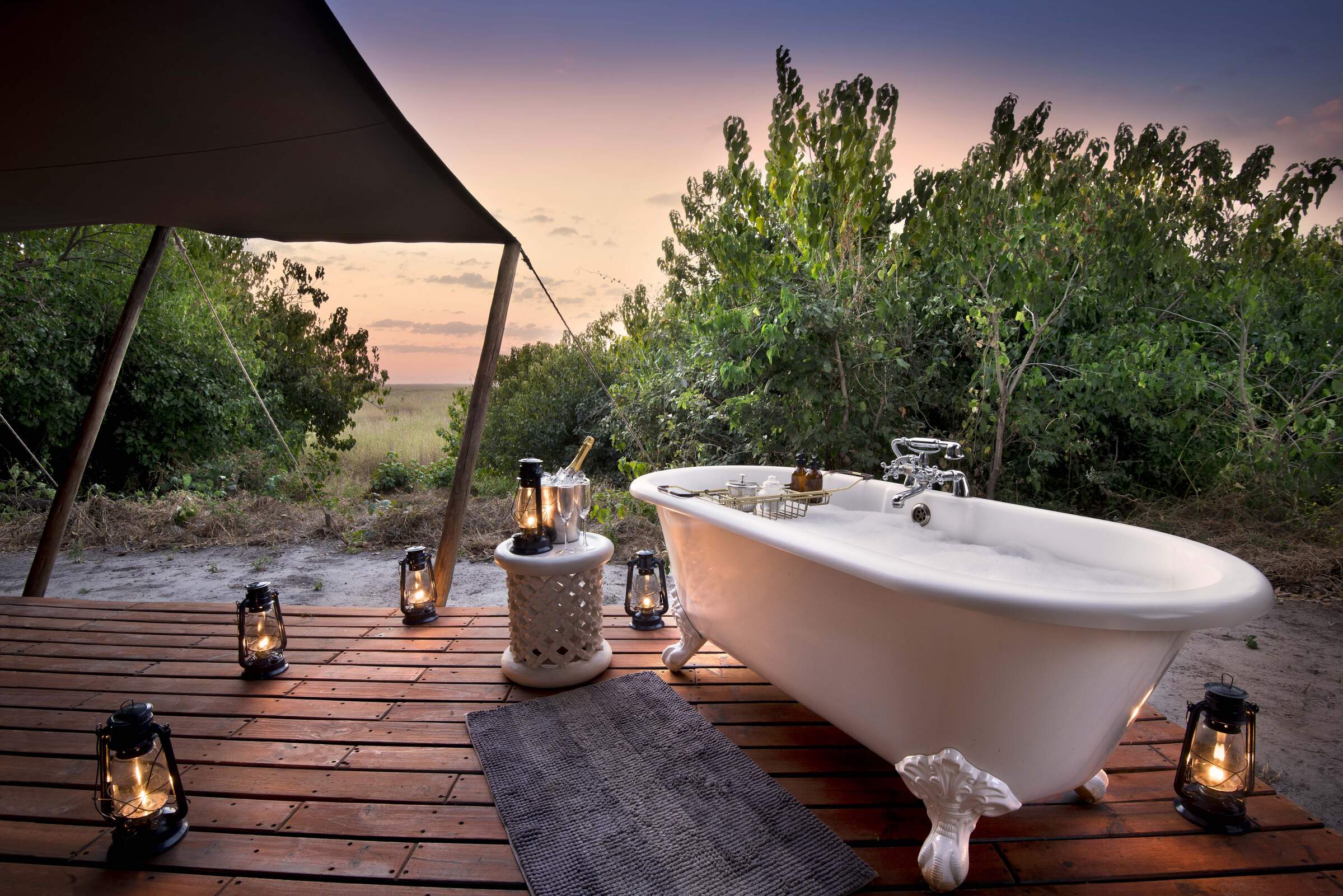
Wellness escapes in stunning locations
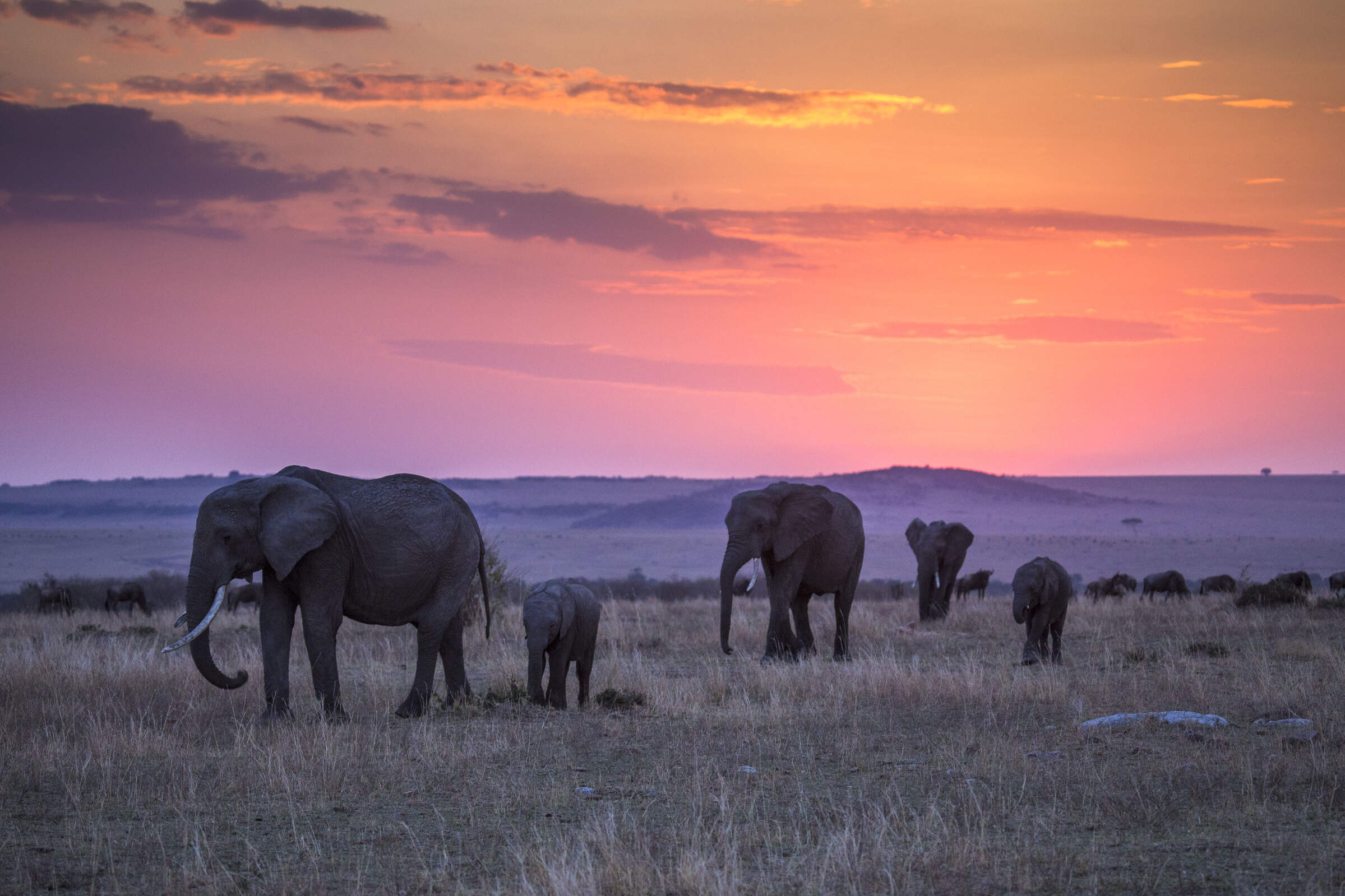
Wildlife safaris
These trips include hard-hitting game and fascinatingly elusive species alike, as well as superb guiding and a variety of diverse ecosystems.
Frequently Asked Questions
Zambia FAQs
Planning a holiday to Zambia can throw up all sorts of seemingly trivial questions, the sort of thing you’d like to ask someone you know.
Yet these questions are important, so below we’ve included some of those that we’re frequently asked – from how long you need for a Zambia safari to what you can expect to eat and what sort of activities you can enjoy.
No matter what you’d like to know, please don’t hesitate to ask us ; we’re here to help.
How long should I stay?
What’s a typical day on safari in zambia, what sort of food can i expect on safari, what’s it like on a zambia walking safari, what activities can i do on a zambia safari, our other african destinations.
As specialists in safari destinations, we at Expert Africa are well-placed to ensure that you choose the right country for your safari holiday.
As an alternative to Zambia, consider the more rustic Zimbabwe , where wildlife guiding is equally impressive and the Victoria Falls, a highlight of Zambia, can also be experienced.
If Zambia or Zimbabwe feel a little too “wild”, or you’d like to experience the more open savannah of East Africa, take a look at Kenya or Tanzania , whereas for a self-drive holiday, Namibia is a must.
Botswana may be costly, but its exclusive private concessions are a big draw for many, coupled with the natural grandeur of the Okavango Delta, whereas in Rwanda , visiting a family of mountain gorillas is a once-in-a-lifetime opportunity.
Then there are the countries where beaches and watersports can be combined with a safari: think Kenya , Mozambique , Malawi and South Africa , or how about an idyllic island add-on to Zanzibar or even the Seychelles ?
The choices are many and varied, so do call us ; we’re here to help you plan your perfect safari.
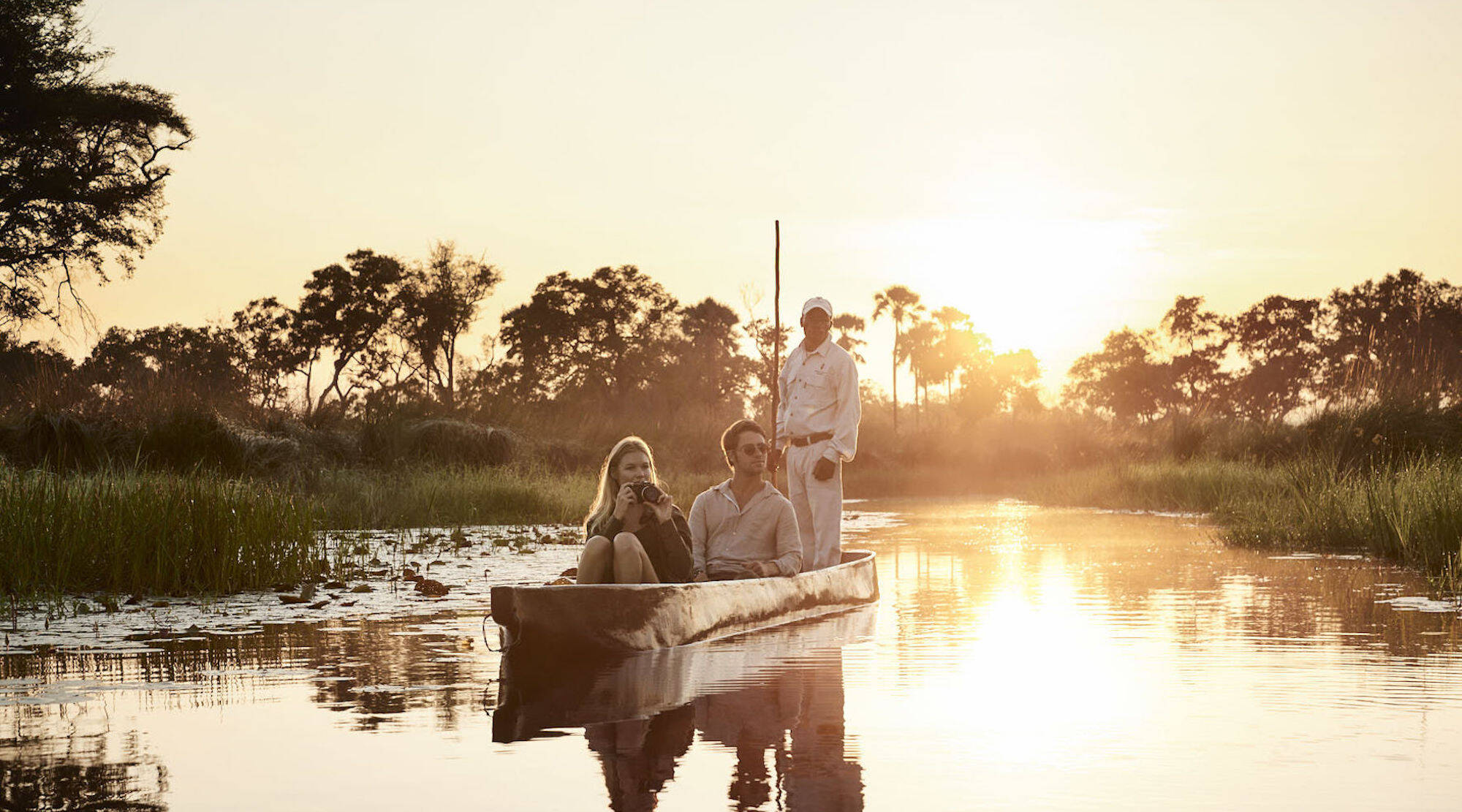
With big game, glamorous lodges and one of the greatest unspoilt wildernesses on Earth, Botswana is perhaps Africa's most exclusive safari destination.
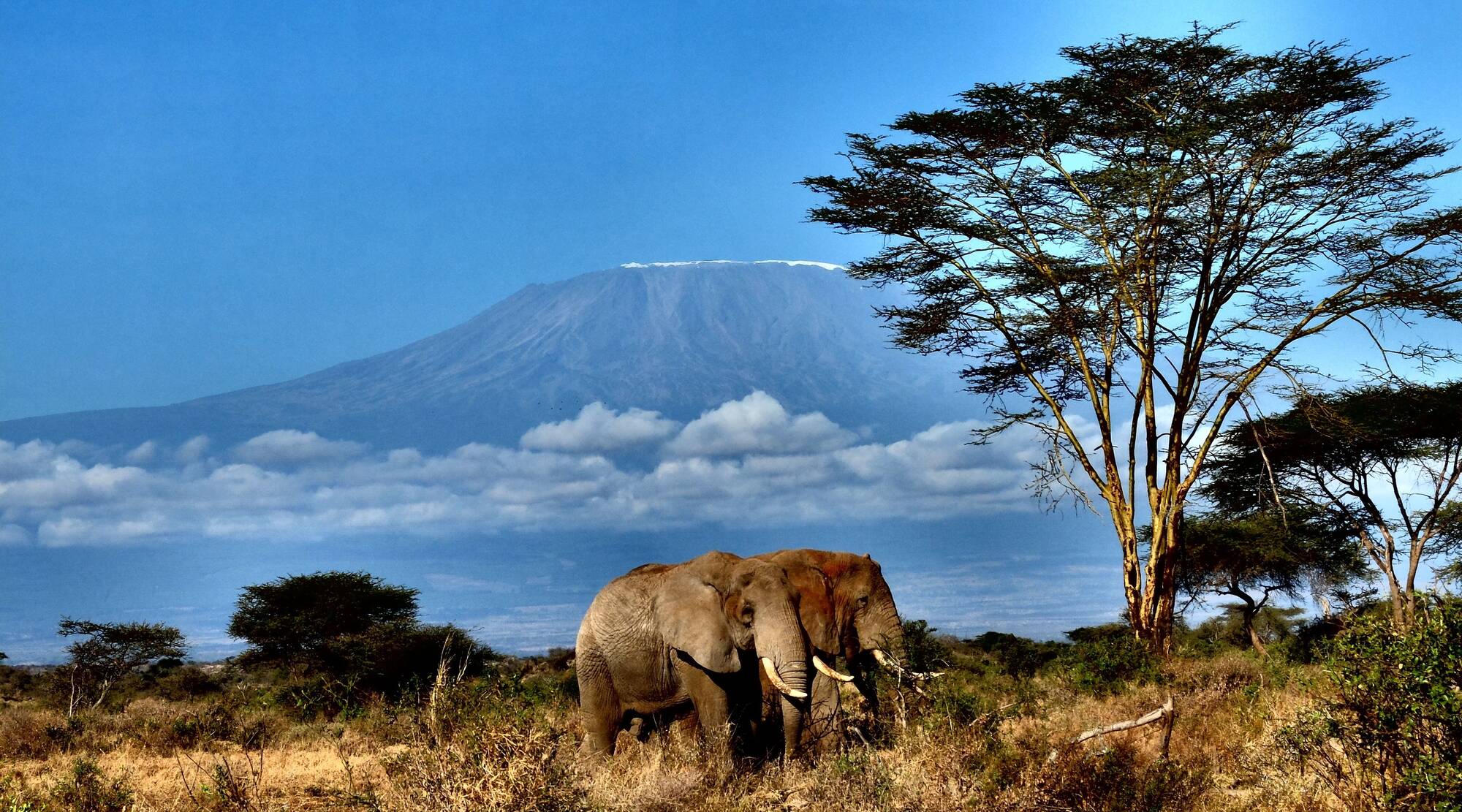
Humanity’s ancestors lived in Kenya, which is now home to people speaking 42 languages, and some of Africa’s rarest, most magnificent wildlife.
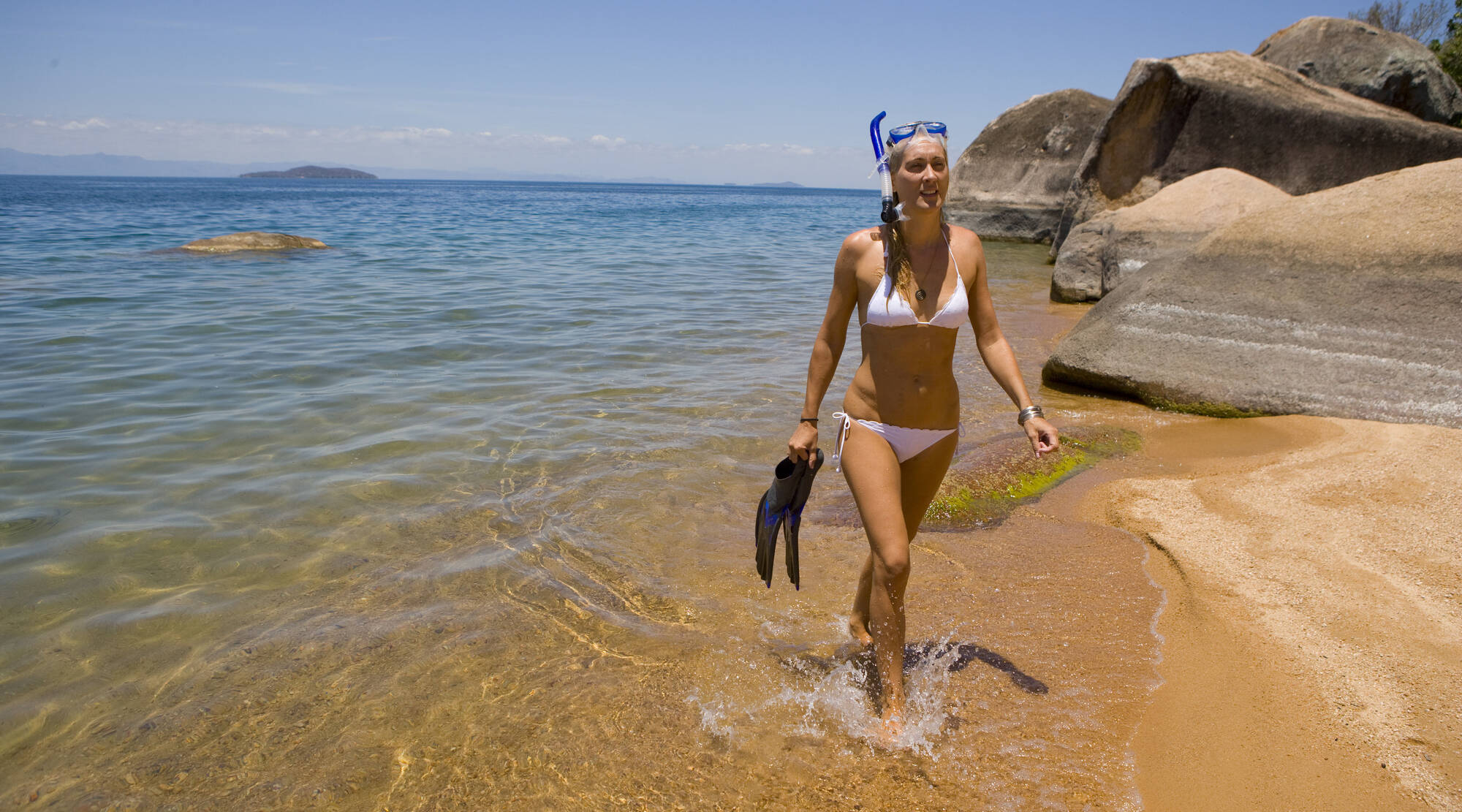
With tropical rivers, Rift Valley plateaux, the crystal-clear waters of Lake Malawi and a stunning lakeshore, Malawi invites relaxed exploration.
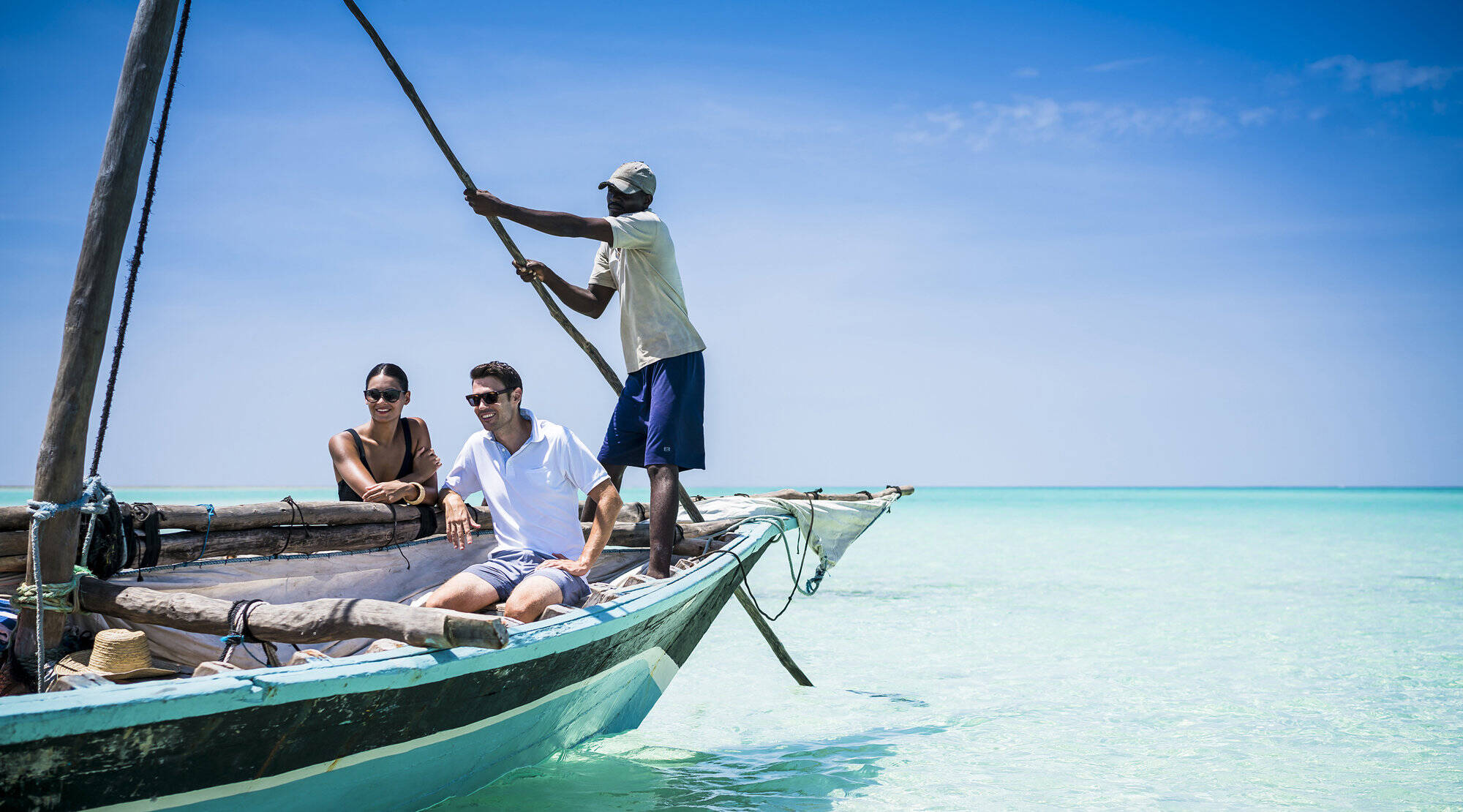
An ocean paradise protected by world-class marine parks, Mozambique’s idyllic archipelagos offer heavenly hideaways, outstanding diving and laid-back luxury.
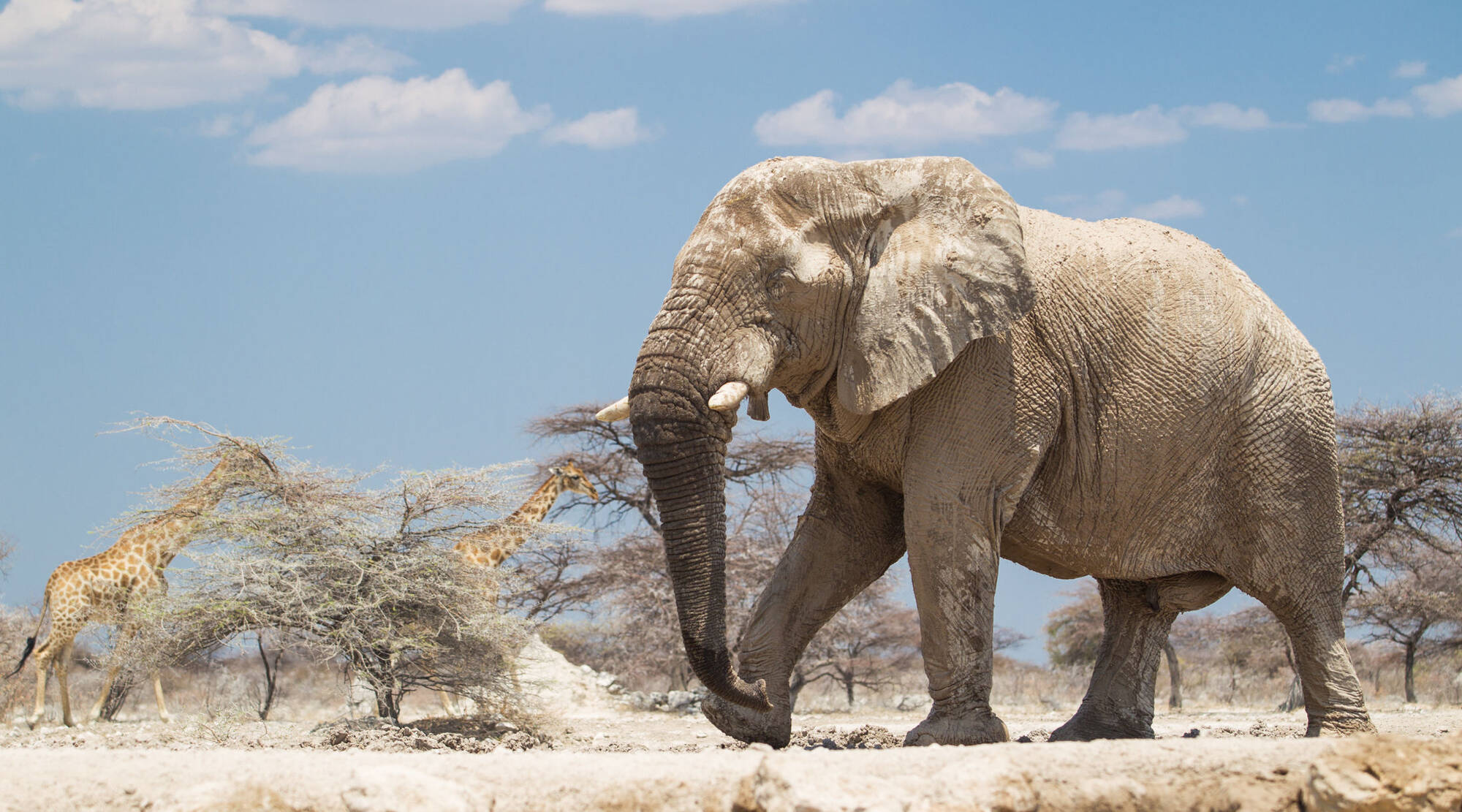
Spectacular scenery, diverse wildlife and a rich cultural heritage await discovery by air, with a guide or on a self-drive adventure.
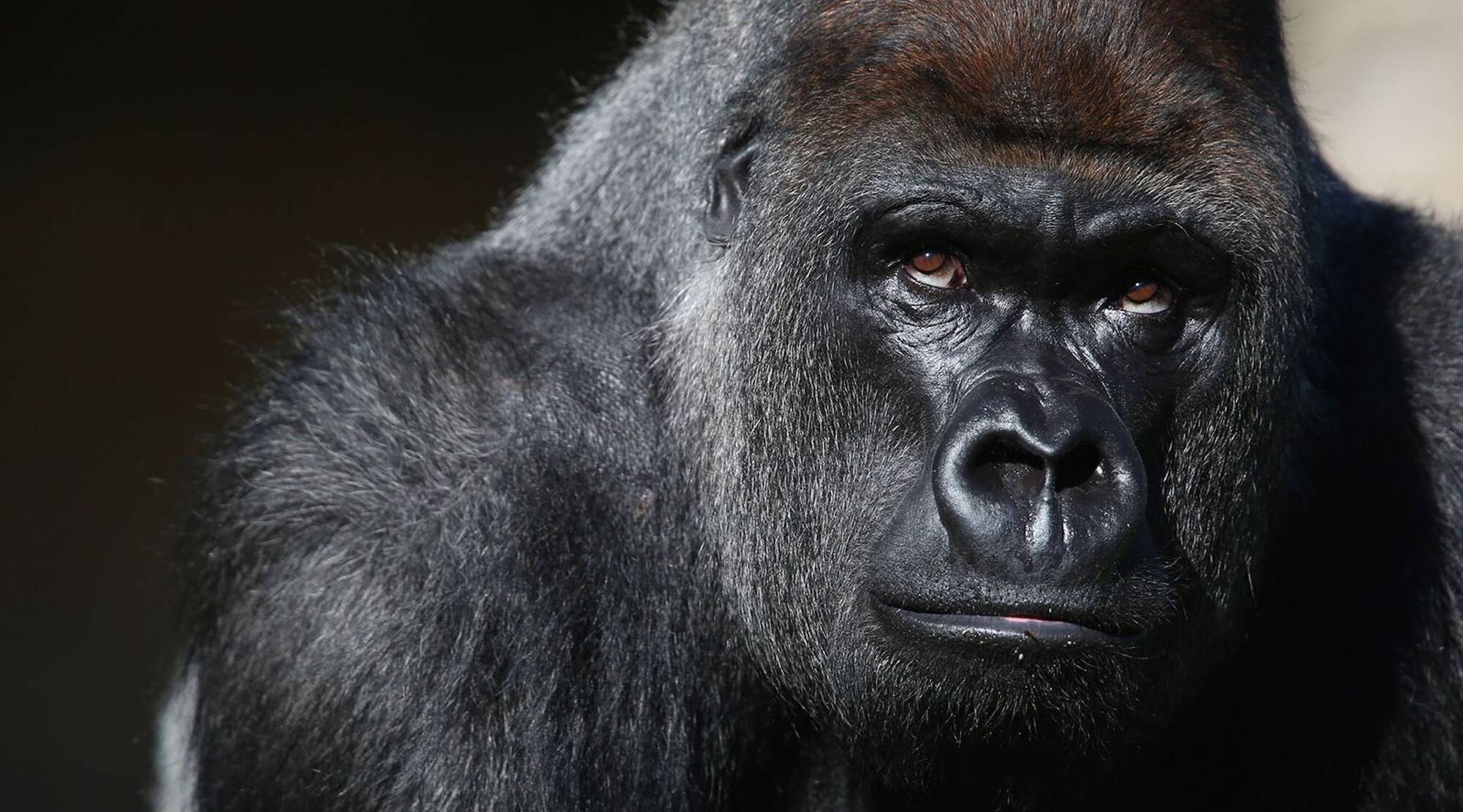
This small, mountainous country offers Africa’s best gorilla treks, other good safari options and a profound human element in every trip.
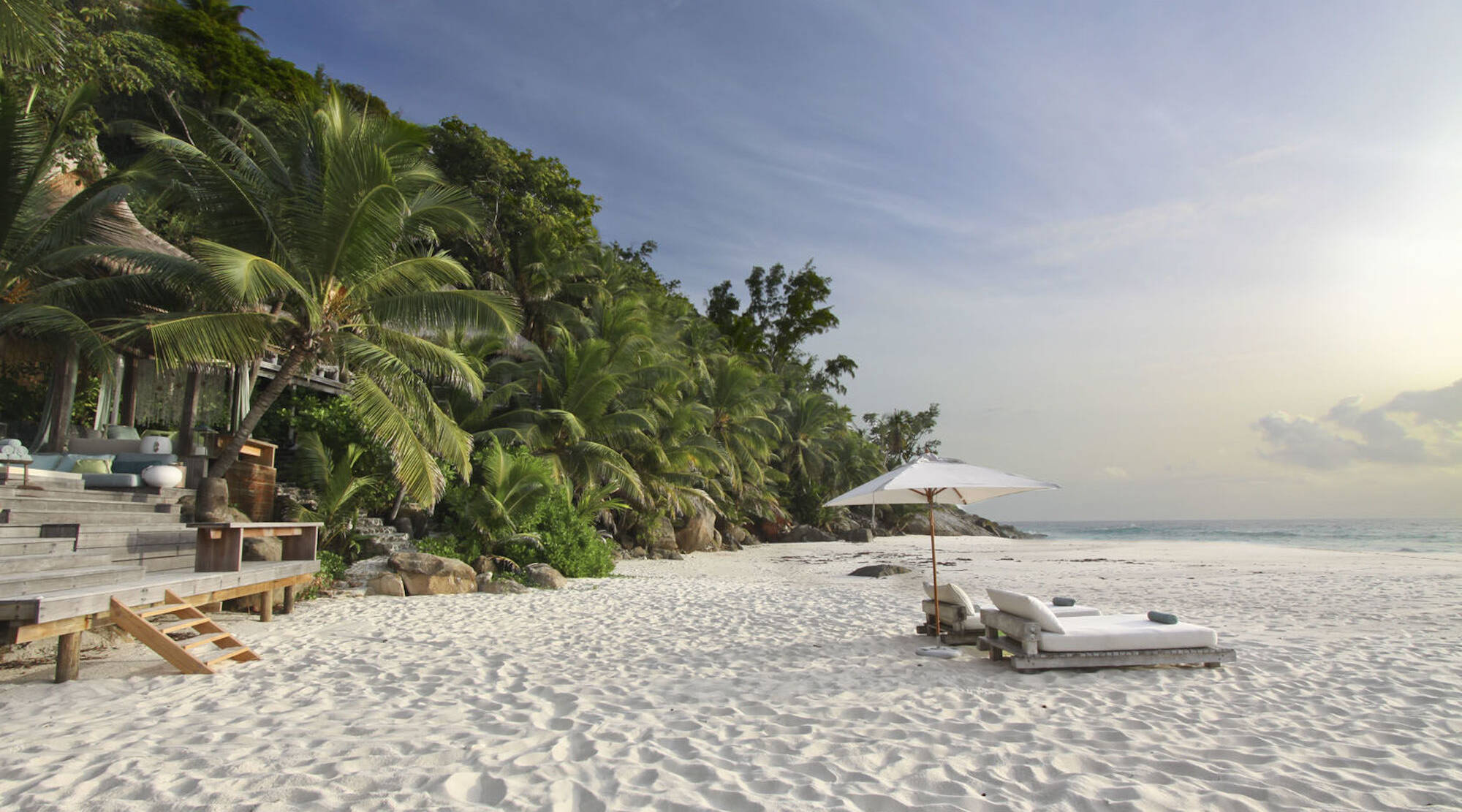
The ultimate glamorous getaway: the lush islands of Seychelles are enchantingly beautiful and stylish sanctuaries for both wildlife and ocean-lovers.
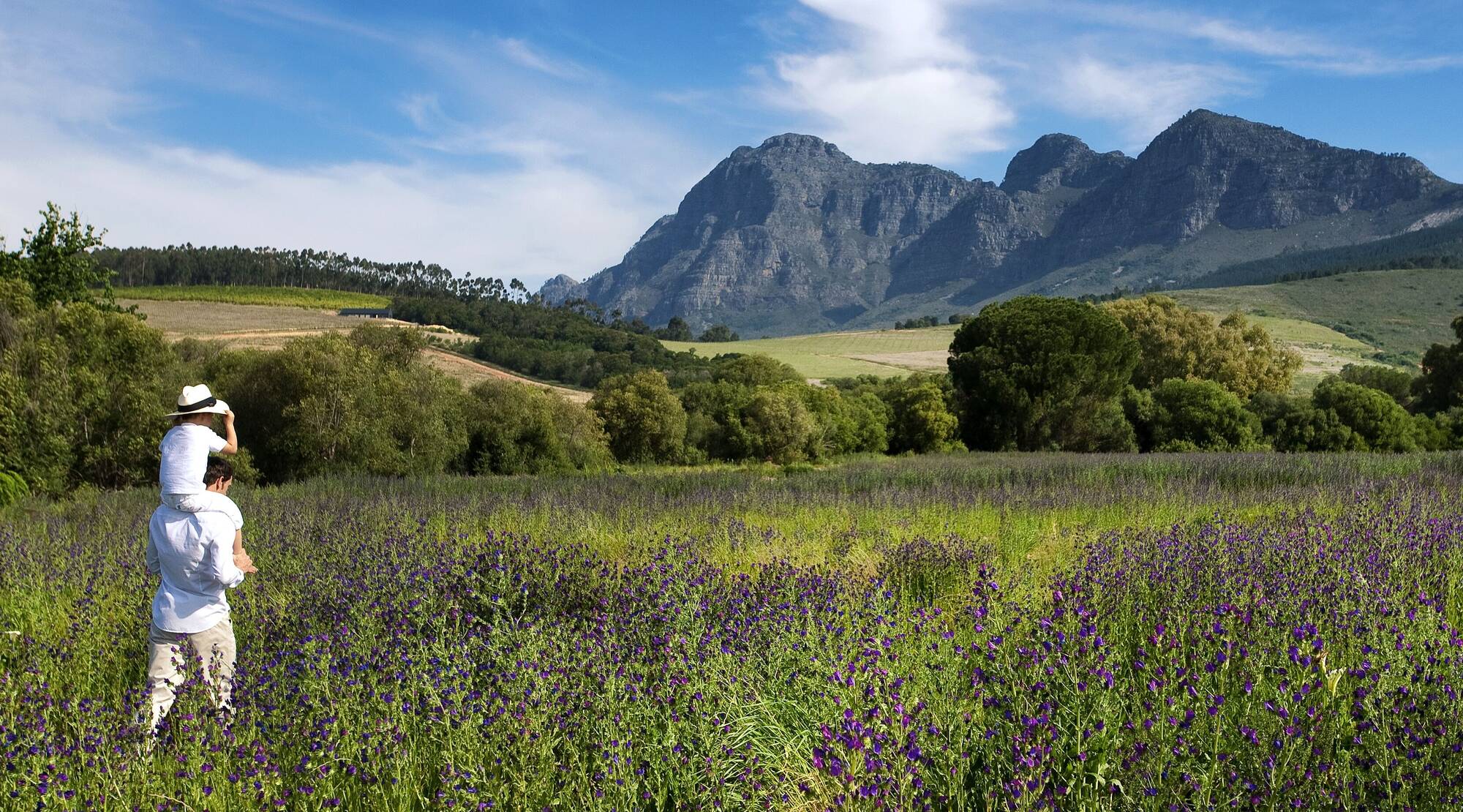
South Africa
Cosmopolitan Cape Town, world-class wineries, brilliant ‘Big Five’ safaris and spectacularly diverse scenery make South African holidays fabulously exciting and enjoyable.
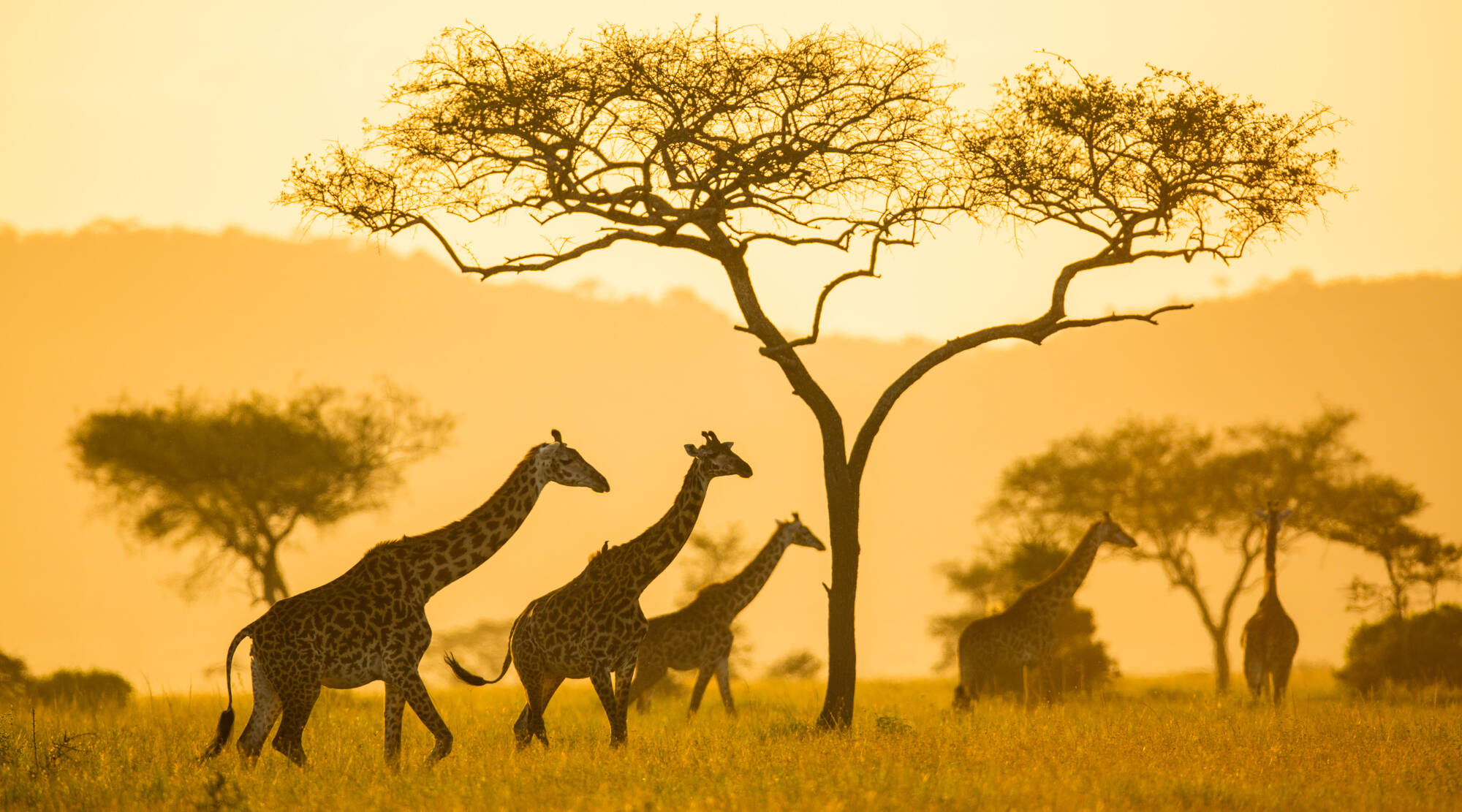
East Africa’s biggest country has a wide range of parks to explore and some of the Indian Ocean’s best island retreats.
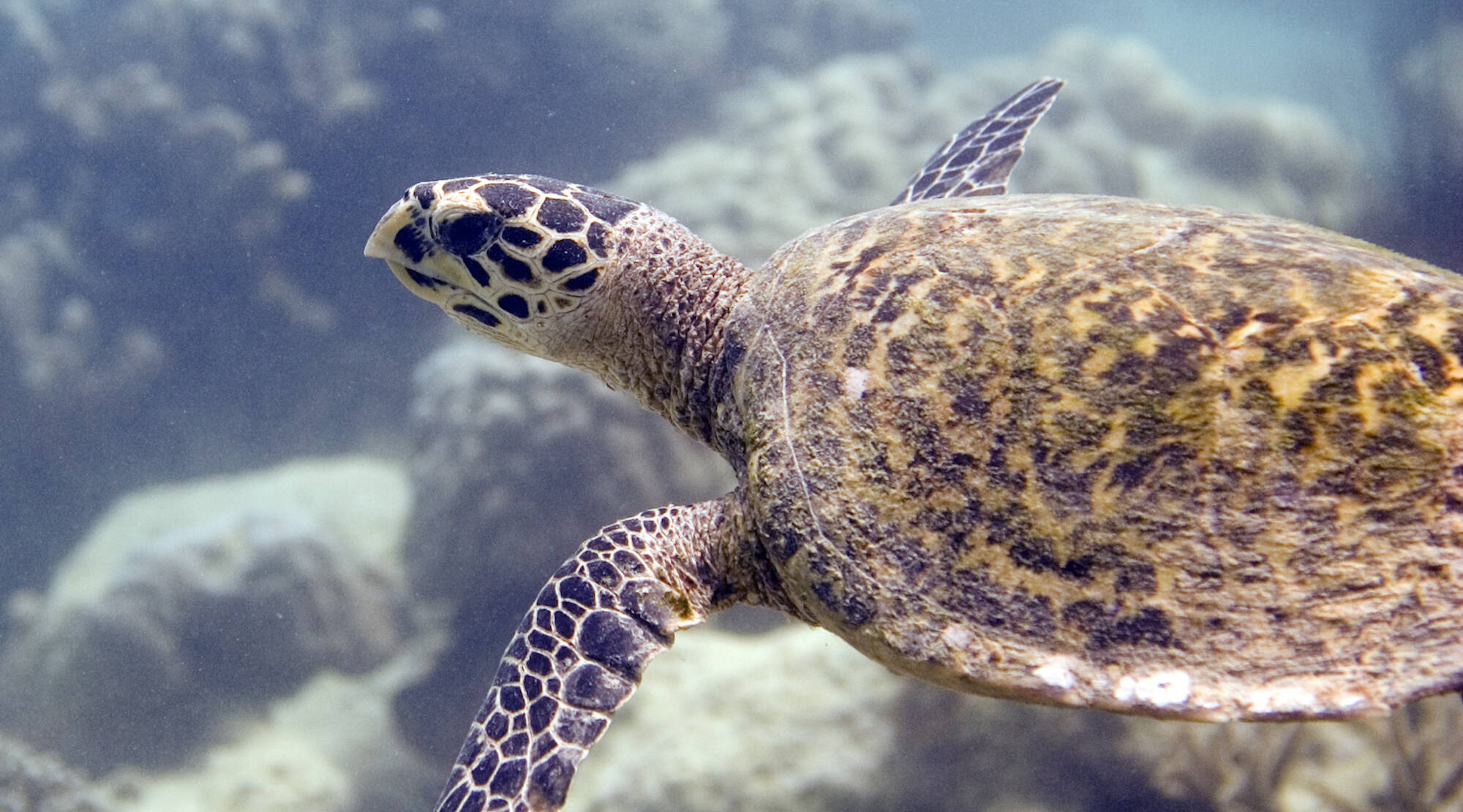
The ultimate Spice Island: Zanzibar’s mystique, marine life and chic beach retreats make it Africa’s most alluring archipelago.
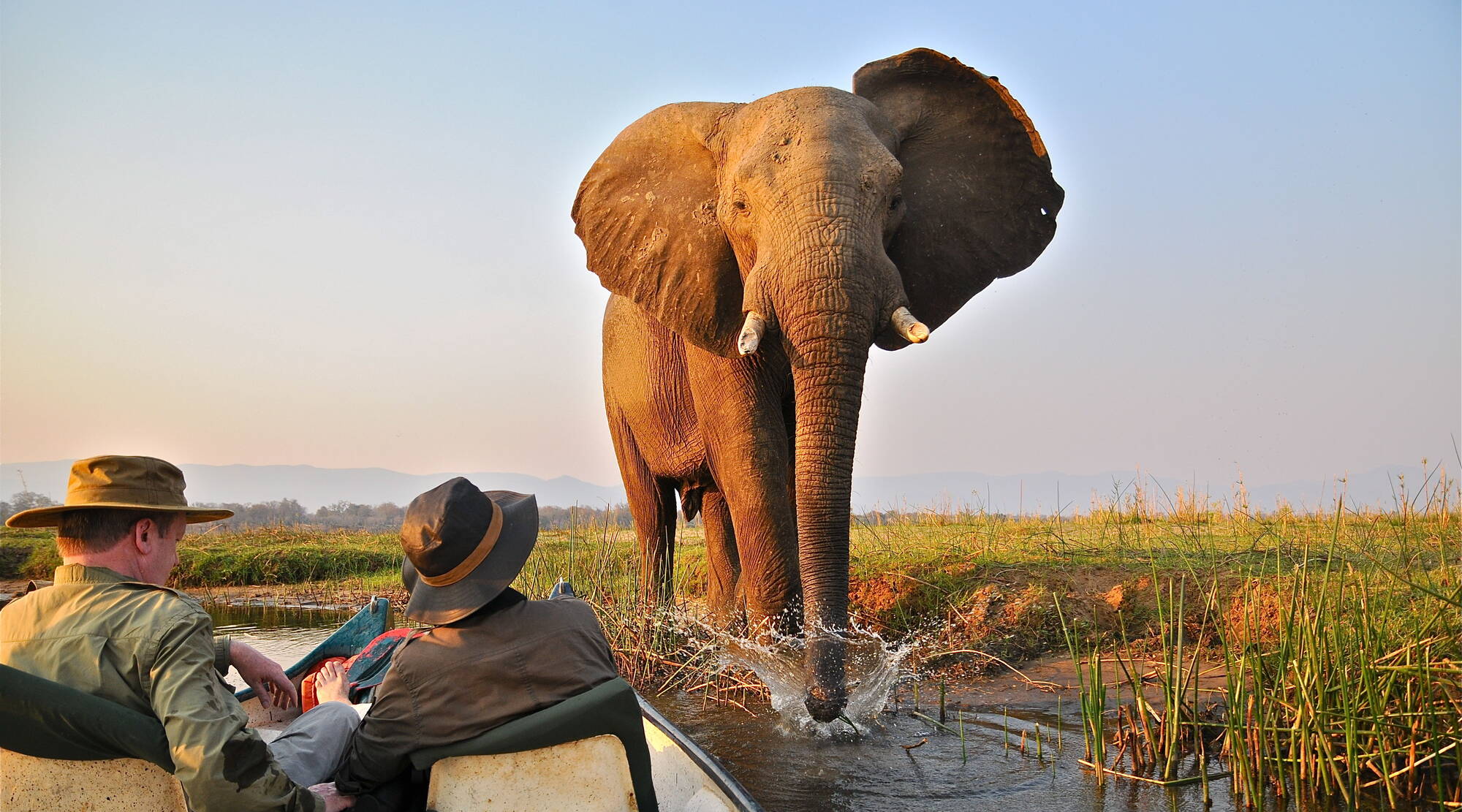
Stunning national parks teeming with game, plus Africa's finest professional guides and the spectacular Victoria Falls: Zimbabwe is enthralling.
Elephant safari in Linyanti
Login to Expert Africa
Sign in with password
Sign in with email link
New to Expert Africa? Create an account
Forgotten your details?
It's free & quick to set up
- Save your wish-list
- Send us an enquiry
- Pay online for your trip
- Subscribe to our newsletter
- Give us feedback on your trip
- Full site benefits of the site
Need some help? Talk to our team

Stay in the know with Expert Africa
Join our newsletter. Get the latest on new camps and lodges, insights from our team, uplifting conservation stories and more...
A few more details and you're subscribed
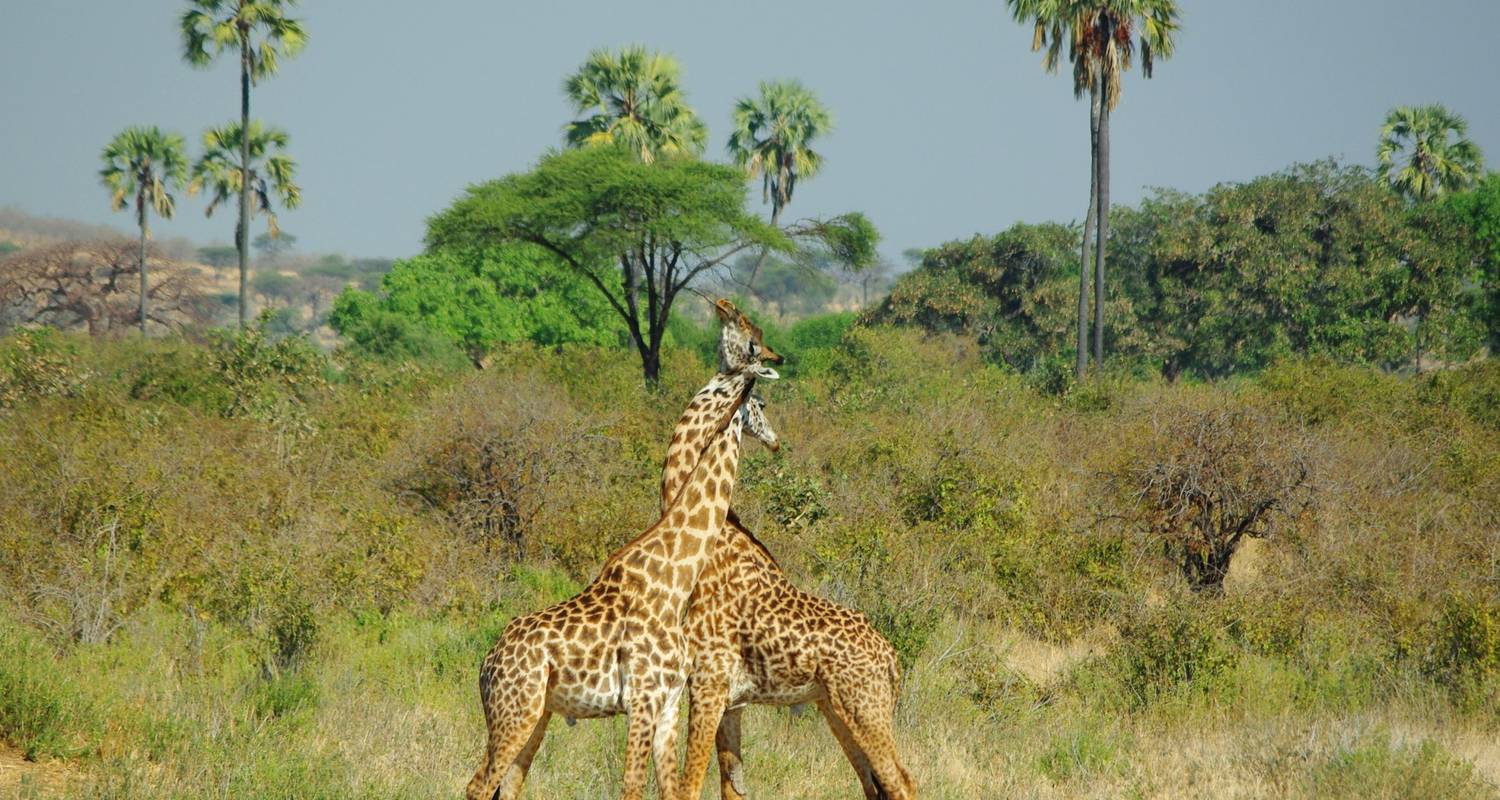
Zambia Safari Tours
- Choose from 19 Zambia tours
- 50+ verified reviews from TourRadar travelers
- 24/7 customer support
10 best Zambia safari tour packages
Compiled by

Nadine Zambia travel expert at TourRadar
4 days - Explore Lochinvar National Park for bird-watching and Batwa Culture Tour
Kanzwa short holiday break excursion - 2 nights safari tour to kafue national park - central region, 7-days zambia safari adventure - livingstone & kafue np, zambia's best parks, kafue 6 days / 5 nights budget safari, zambezi canoe safari, from livingstone: 3-days safari travel to kafue national park (southern part), budget lower zambezi national park wildlife-focused safari (4 days)., nyati big-5 classic “best of zambia” safari experience: lower zambezi, kafue (busanga plains) and south luangwa national parks – 11 days, liuwa, kafue, south luangwa np- exploring zambia's wilderness.

- Venture into the world’s best bird-watching paradise.
- Culture Tour with the Batwa indigenous people
- Exciting viewing of a rare lechwe subspecies; The Kafue Lechwe.
“The park itself is enormous… Probably best combined with one of the other more 'animals on tap' parks.” Lynette Elliott, traveled in October 2023

- Get away from the busy Lusaka city life for some fresh air in Africa's true wilderness THE Kafue National Park in a limited time-space.
- Explore the one-size-fits-all 3-day, 2-night wildlife safari trip ideal for individuals, organized groups or private individuals.
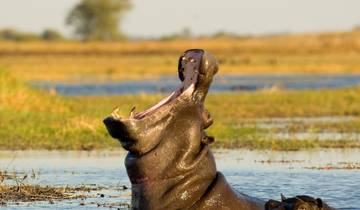
- Christmas & New Year
- Take a helicopter flight over Victoria Falls
- Enjoy a sunset cruise with wildlife viewing
- Explore Victoria Falls on a guided tour

- Drive through Lusaka to the Zambezi valley
- Spot wildlife in South Luangwa National Park
- Experience night game drives and river walks

- Drive through Kafue National Park's vast terrain
- End your adventure with a drop-off in Lusaka
- Explore Lake Ithezi-Thezi on a game drive
“The scenery and landscapes keep changing, the animal sightings are countless, nature puts on a show beyond imagination every hour of every day.” Levente Toth, traveled in September 2012
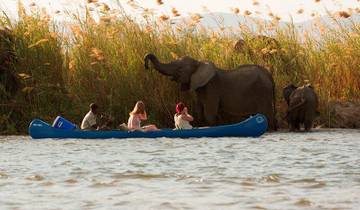
- Kayak & Canoe
- Canoe down the Zambezi River
- Go on game walks and drives
- View a variety of wildlife
“Not only that, but booking and discussion about plan was smooth. His team is well committed to provide good experience for customers.” Zarko Dudic, traveled in September 2023

- Get-away from the busy Livingstone city life for some fresh air in Africa's true wilderness: THE Kafue National Park.
- Check out the first "state house" of the colonial administrators of Zambia in Kalomo.
- Visit the elephant orphanage and see wonderful conservation work by volunteers.
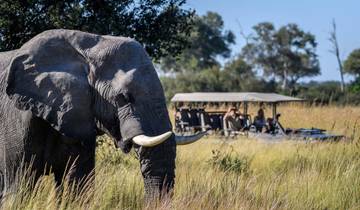
- Enjoy and interact with the locals during a village tour of Chiawa village.
- Spoil yourself with a memorable wildlife viewing visit to the Lower Zambezi National Park, undiscovered wildlife gem of Zambia.
- Explore Zambezi River basin on game drives and canoe/boat rides
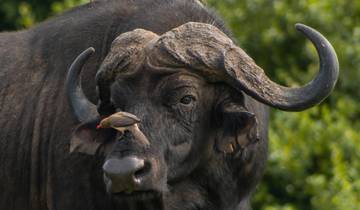
- Spoil yourself with a memorable wildlife viewing visit to the South Luangwa National Park ( a world-renowned wildlife haven).
- Get up close to some of Africa’s most stealthy predators in the South Luangwa National Park.
- Explore Zambezi River basin on game drives and canoe/boat rides.
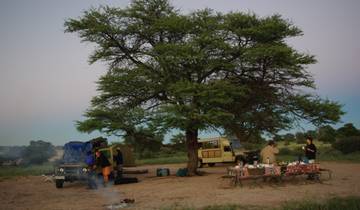
- Enjoy game drives and camping in Kafue NP
- Explore Victoria Falls on your first day
- Spot wildlife in Liuwa Plains National Park
More about Zambia
Discover TourRadar

11 Best places to stay for Safari in Zambia
Planning a safari in Zambia ? This is your guide to the best accommodations in the heart of Africa . With the thundering Victoria Falls, the enchanting Lower Zambezi National Park, the untouched Kafue, and the untamed wilderness of South Luangwa National Park and the remote North Luangwa, Zambia is one of the most inspiring and beautiful countries for a safari in Africa.

The places you choose to stay can make or break your safari trip in Zambia. In this guide, I share my hand-picked accommodations across Zambia, ensuring that you will leave Zambia in awe with lasting memories of some of the best safari experiences in Africa.
Find the best places to stay for Safari in Zambia here:
Wild Dogs Lodge in Lusaka
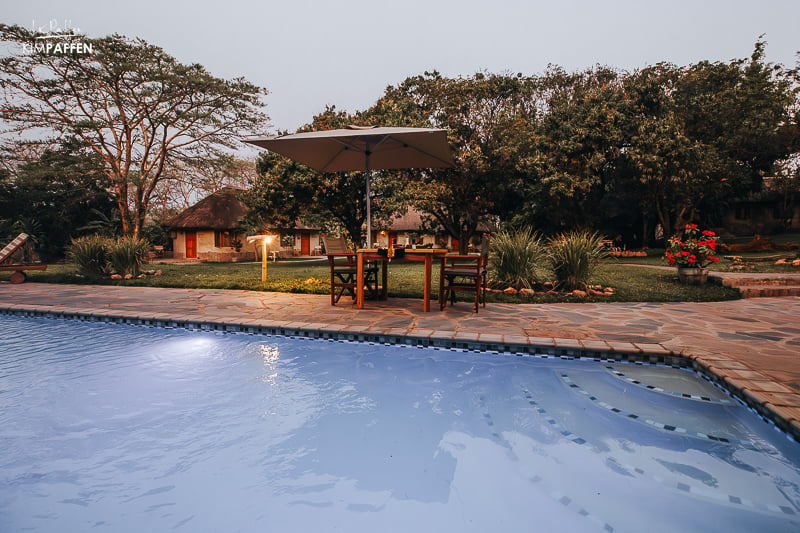
After a short 2-hour flight with Proflight Zambia from Johannesburg to Lusaka Airport, you can reach Wild Dogs Lodge in Lusaka within 15-20 minutes. The lodge offers an airport transfer at 20 USD per vehicle. Roads in Lusaka are pretty good, but for the last 8 minutes over a dirt road you will get the ‘African massage’.
The first word that came into my mind when entering Wild Dogs Lodge was peaceful. It's a peace of the African bush in the middle of Lusaka city and therefore a great start for your safari in Zambia.
Family-owned African-style Lodge
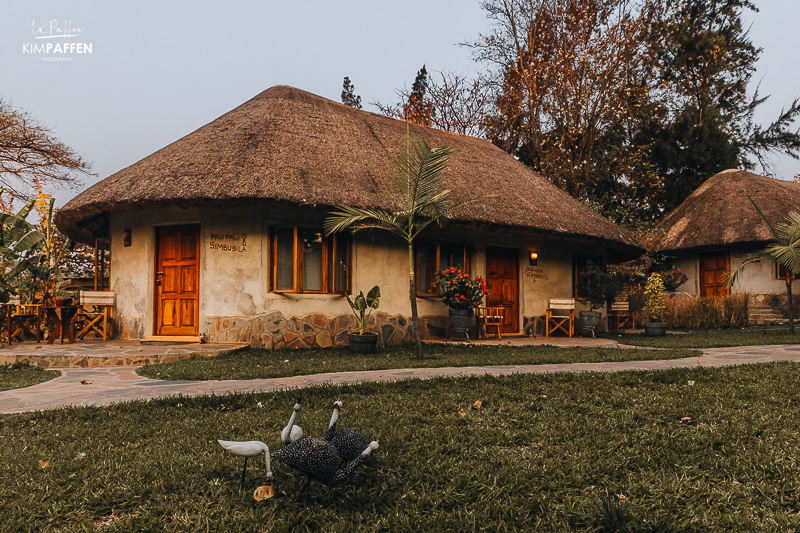
It’s an intimate (german-owned) lodge with only 10 African-style rooms under 4 thatched chalets hosting up to a maximum of 20 people.
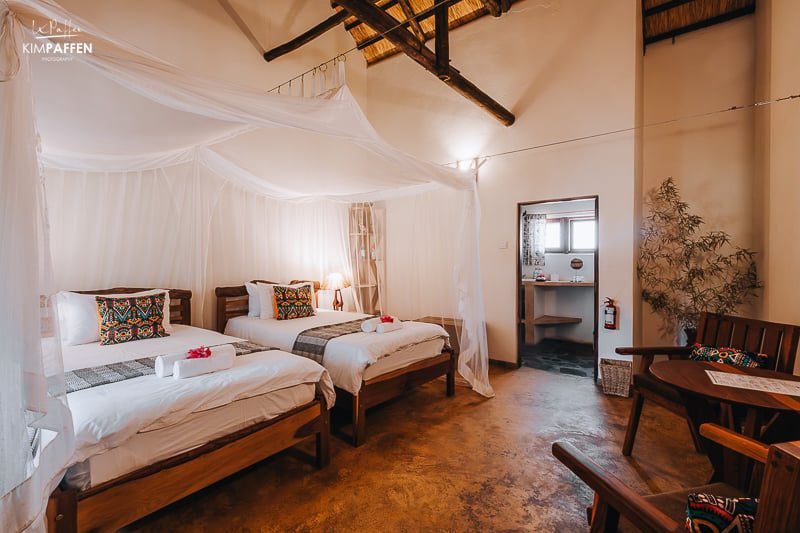
All cottages - that have fruit names like Mango, Pawpaw, and Guava - face the peaceful garden and the swimming pool with a few sun loungers. The 18-meter-long pool is perfect to cool off on a hot day and to swim a few laps.
Beautiful shady bird-rich garden
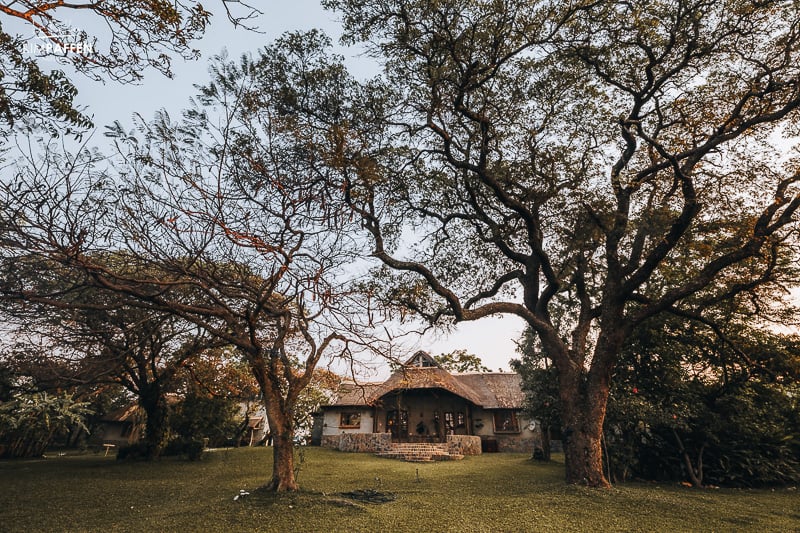
The cottages are in a beautifully decorated green garden with amazing Lozi & Jacaranda trees offering enough shady spots. Ernest, the gardener, loves to show you around the garden where you can find several Mango and Avocado trees.
Birds also favor Wild Dog’s garden, for example, the Blue Waxbill, Woodpecker, Woodland Kingfisher, and the always present BulBul. Waking up, and hearing the sounds of these birds, is a very peaceful feeling.
Delicious food with fruits and veggies from their garden

Breakfast, lunch, and dinner are on the terrace surrounding the pool. They have a 24-hour coffee/tea station available for guests and the food was good. For breakfast, you can choose eggs of your choice. I loved their light lunch; a salad with chicken strips. For dinner, I had their delicious beef filet in garlic, onion, and champignons with various vegetables.
Wild Dogs Lodge also has their vegetable garden where they grow green pepper, lettuce, spinach, eggplant, and so forth.
Best place to stay in Lusaka

In summary, I couldn’t think of a better green place to stay in Lusaka . An excellent location in a wonderfully decorated garden with good healthy food options and the friendliest professional team; the best place to start your safari in Zambia. Wild Dogs Lodge also offers a two-deck conference area. Book your stay at Wild Dogs Lodge .

Pioneer Camp in Lusaka
If you’re a bit more on a budget, check out Wild Dogs Lodge’s rustic sister camp, named Pioneer Camp with accommodations ranging from a camping place, and basic thatched tents to higher standard safari and miombo chalets with ensuite bathrooms. It’s also a great place for birding!
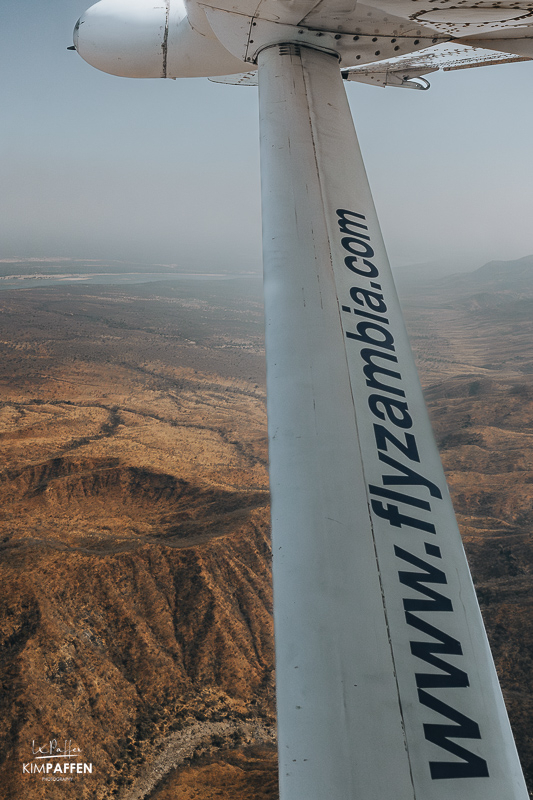
The most convenient and fastest way to get from Lusaka to the best places for a safari in Zambia is by airplane. Proflight Zambia offers scenic flights to most safari destinations in Zambia like Kafue National Park, Lower Zambezi National Park, South Luangwa, and North Luangwa.
Mukambi Safari Lodge in Kafue
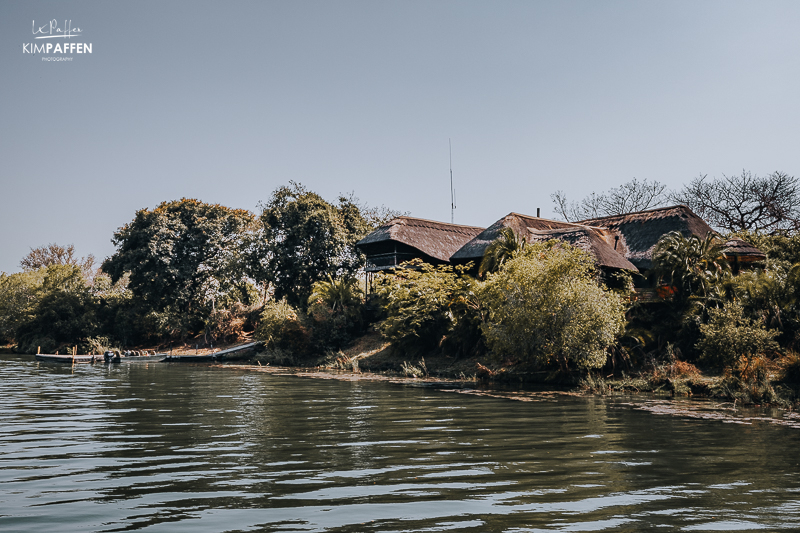
A 4 to 5-hour drive from Lusaka takes you to Mukambi Safari Lodge , on the doorstep of Kafue National Park . Driving down to Kafue, also known as Zambia’s untouched treasure, you don’t see any souvenir stalls or small markets which shows that the masses did not yet discover the park. You only see a few rural villages and a few vegetable and fruit stalls.
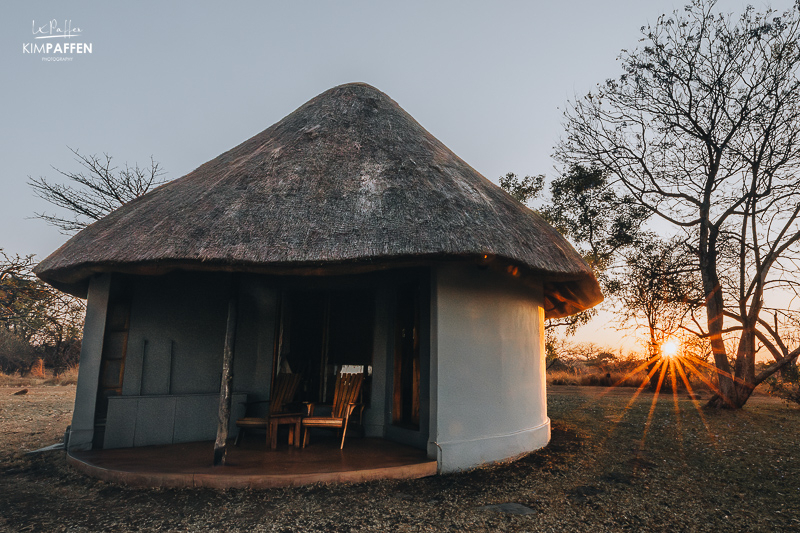
The closer you get to Kafue, the more ever-beautiful and picturesque Baobab trees are showing up in the landscape. The last few kilometers, the landscape is turning into a more densely vegetated area and once you turn off from the main road, you will most likely see the first antelopes, like Impala or Puku.
Enchanting viewing deck
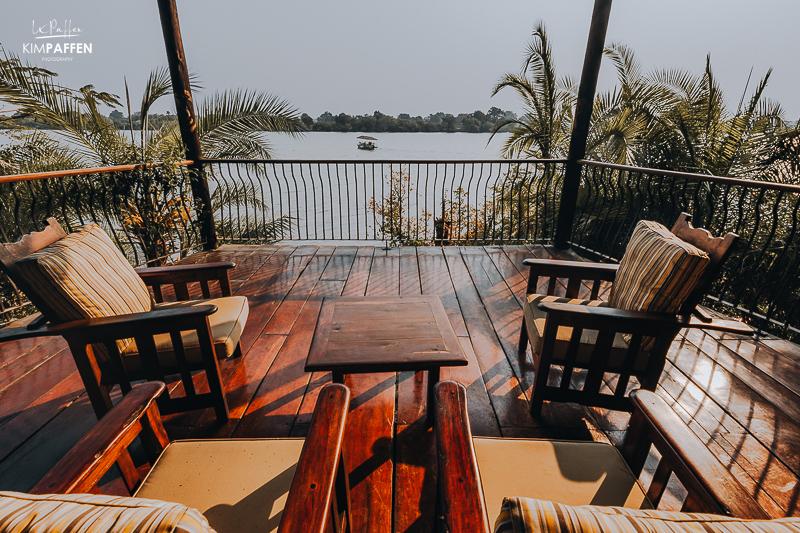
The first thing you notice when entering Mukambi Lodge is that this wonderful place is located right on the banks of the Kafue River with an upper and lower viewing deck to watch hippos and an occasional crocodile. The surrounding plants also attract many birds. If you close your eyes, the only thing you hear is the sound of a shrike or a bulbul and the flowing water of the river.
Room with a view
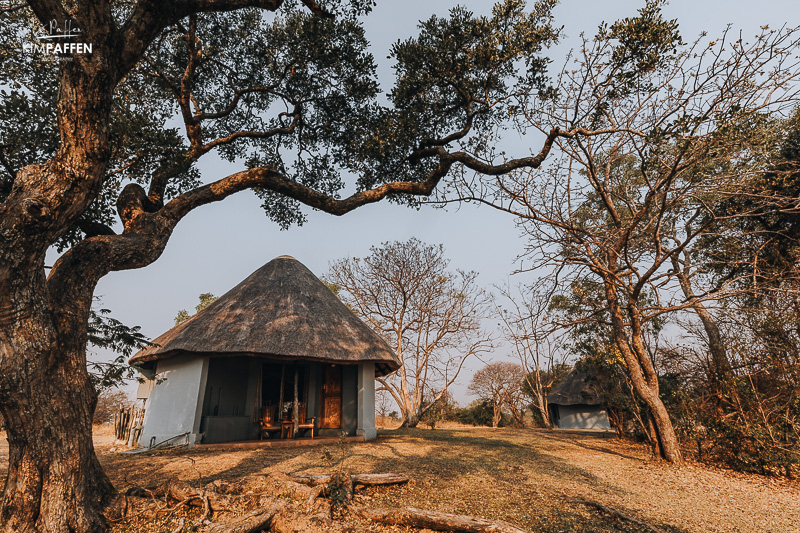
Mukambi Lodge has 10 rounded en-suite chalets (rondavels) and 4 luxury tents overlooking the Kafue River. They are a few meters apart from each other to ensure privacy.
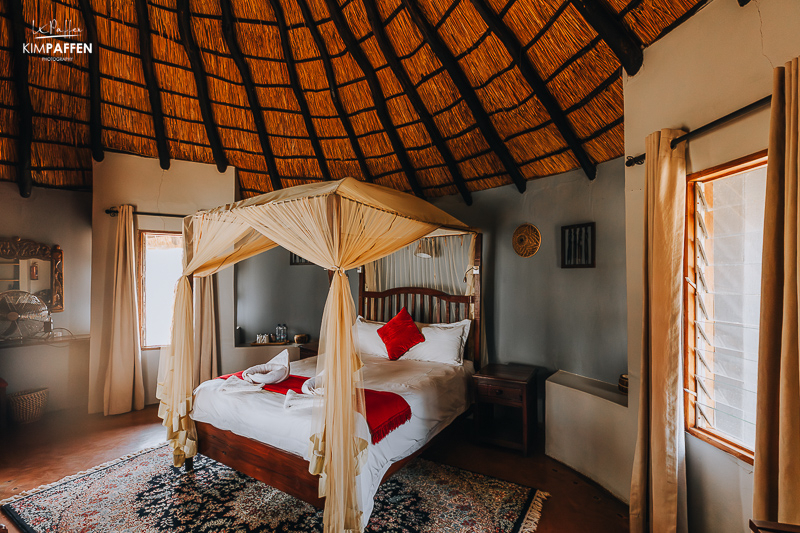
The beds are very comfortable, and you will definitely enjoy the view of the river from your private terrace while local wildlife passes by your rondavel, including puku, impala, baboons, and monkeys. And not to forget about the birds singing their songs. After having a resident hippo that unfortunately died, Mukambi Lodge also has a resident wild cat !
Activities Mukambi Safari Lodge
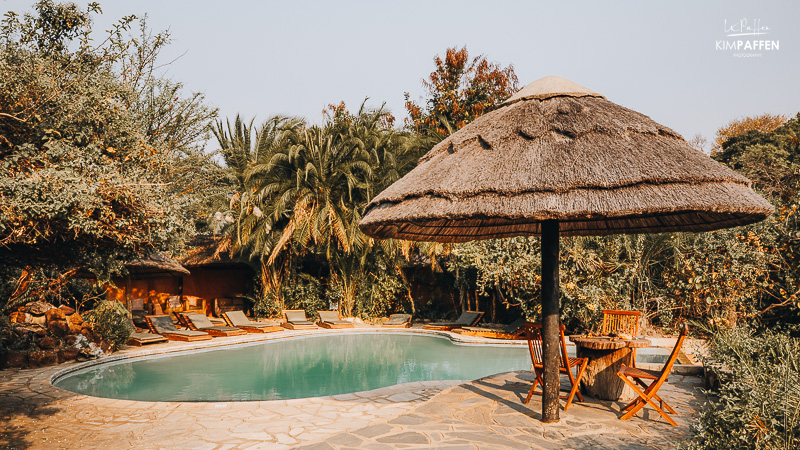
Apart from game drives and walking safaris , you can also opt for a fishing trip or a sunset boat cruise on the Kafue River .
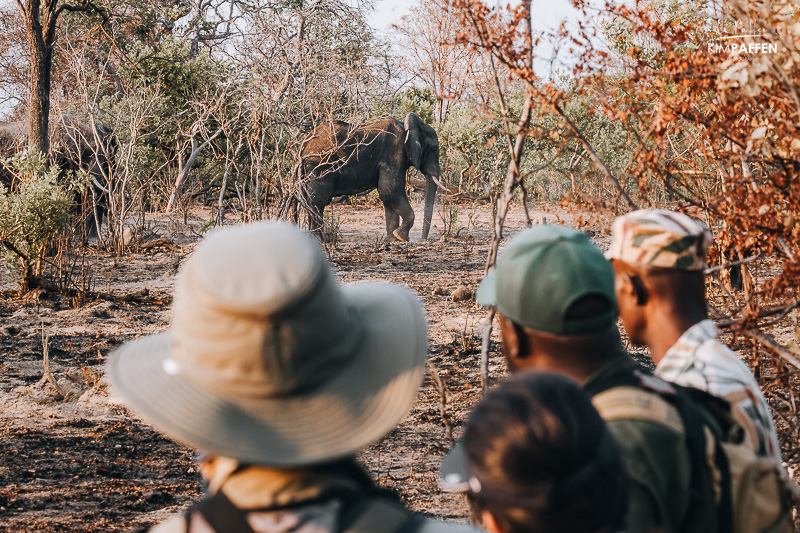
We opted for a walking safari and a game drive in Kafue National Park. Our first walk in Zambia treated us with a bachelor herd of 3 elephants. We watched them from a safe distance to not interfere with their daily lives.

The Kafue area is beautiful with various shrubs and trees, including beautiful Baobab trees and Lala palm trees.
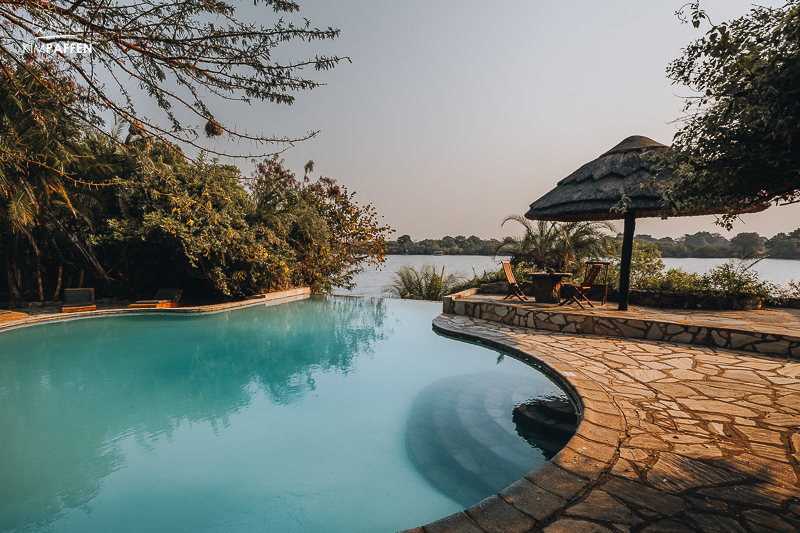
After your morning safari in Kafue National Park, the infinity pool is the perfect place to relax and cool off or treat yourself to a relaxing massage.
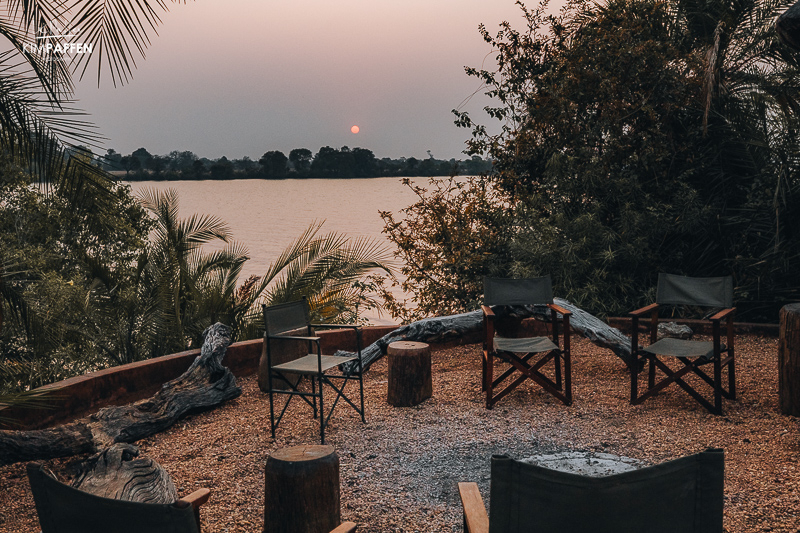
When coming back from your sundowner safari in the afternoon, join the campfire to gaze into the fire and see the milky way unfold. A perfect ending of a day spent in the African bush.
Safari Tour Kafue National Park
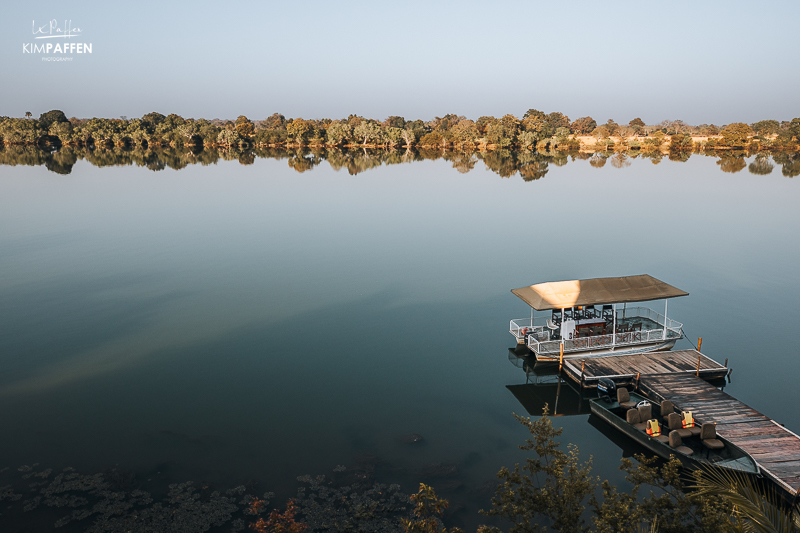
Mukambi Lodge is the perfect gateway to Kafue National Park with several areas worth exploring. If you have enough time, plan a minimum of 2 to 3 nights in each of the camps that are part of Mukambi Safaris: Busanga Plains Camp (July to October), Fig Tree Bush Camp (May to November), and Mukambi Safari Lodge (All year round). This way, you will have the best experience of all that Zambia’s untouched gem offers.
Book a 6-day safari tour in Kafue National Park or the 8-day (shared) Full Kafue Experience that includes all the camps of Mukambi Safaris and experience the best Kafue has to offer. Another option is a 12-day safari tour Best of Kafue National Park and South Luangwa .
Wonderful team and knowledgeable guides

Mukambi Safaris is a Dutch family-owned business since 2002. Mukambi’s knowledgeable guides rotate in all the camps and Busanga Plains is among their favorite areas to guide because it’s known for special wildlife sightings.
The team at Mukambi is lovely. I forgot my Apple Mouse at the lodge and they did everything in their power to transfer it from Kafue to South Luangwa. Just perfect. Zikomo Robyn and staff! I will be back to explore more of Kafue National Park.
Chiawa Camp in Lower Zambezi
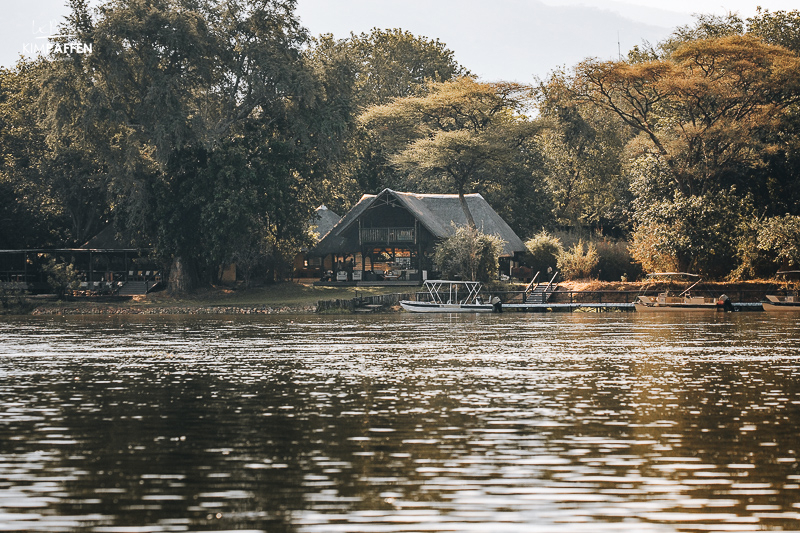
After a 35-minute scenic flight with Proflight from Lusaka to Jeki Airstrip it’s another hour to the family-owned multi-award-winning Chiawa Camp, but a surprising scenic ride! First, you hop on a short game drive through the Jeki area welcomed by many Lilac Breasted Rollers, baboons, and various antelopes.
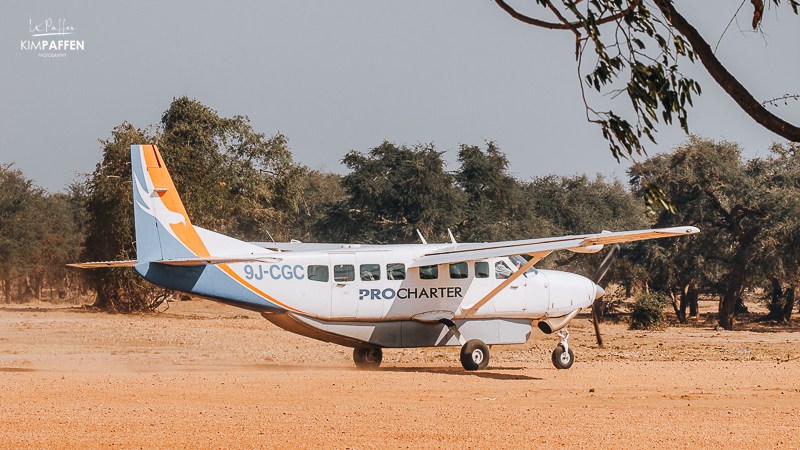
Then, a small motorized boat takes you in 40 minutes to Chiawa Camp cruising the Zambezi River, with amazing sightings of elephant crossings, many hippos, and incredible views of the Zambezi River and its channels.
The pioneer in Lower Zambezi National Park
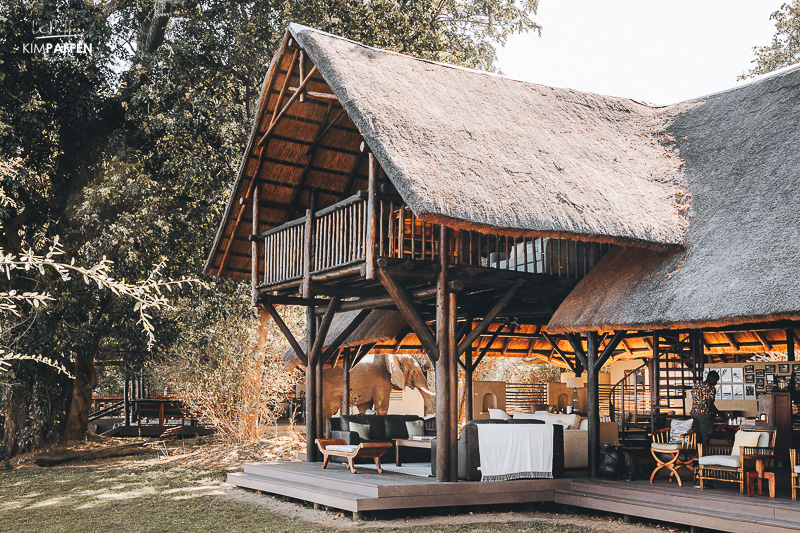
Once you arrive at the camp, you are already smiling from ear to ear and the friendliest staff is waiting at the deck to welcome you with open arms. A great first impression of Chiawa Camp , which is the first camp to settle on the banks of the mighty Zambezi River.
Safari experience of a lifetime
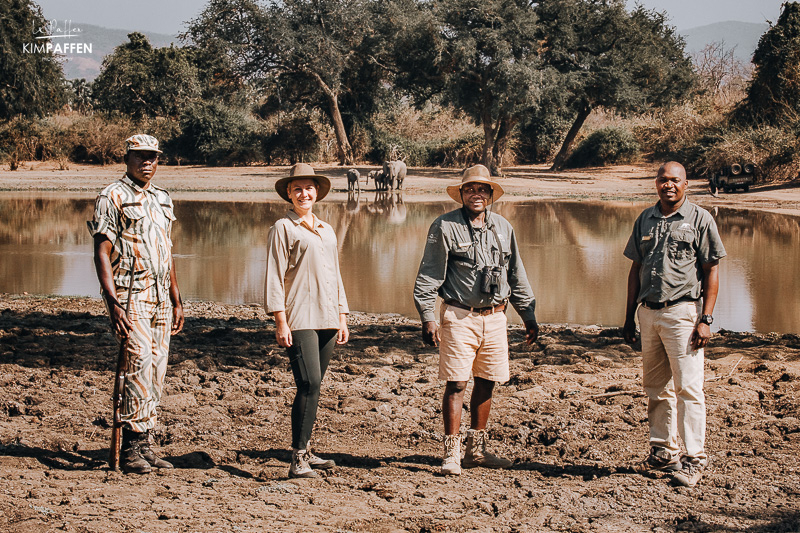
Lower Zambezi National Park is one of Africa’s most scenic wildernesses offering some of the best safari activities in Zambia and Africa.
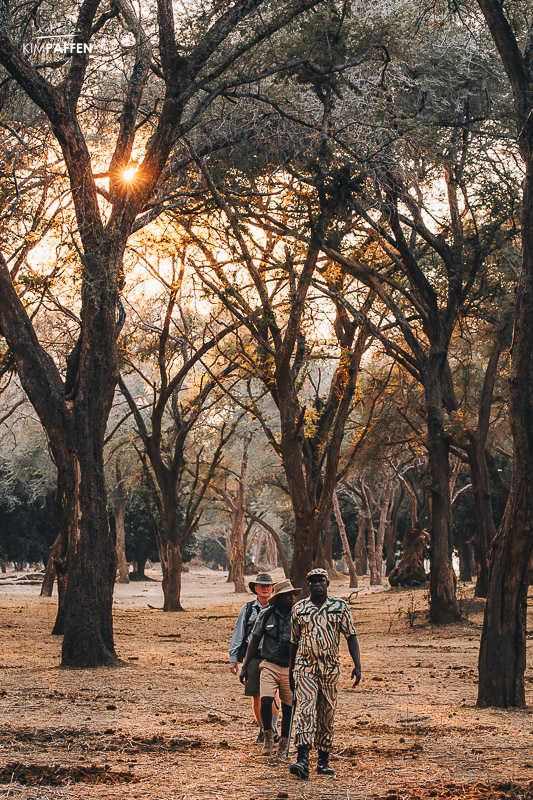
Apart from the wildlife-rich game drives led by high-quality guides, Chiawa Safaris also offers unique walking safari experiences through the magical winter thorn forest and along the lagoon with lots of elephant encounters.
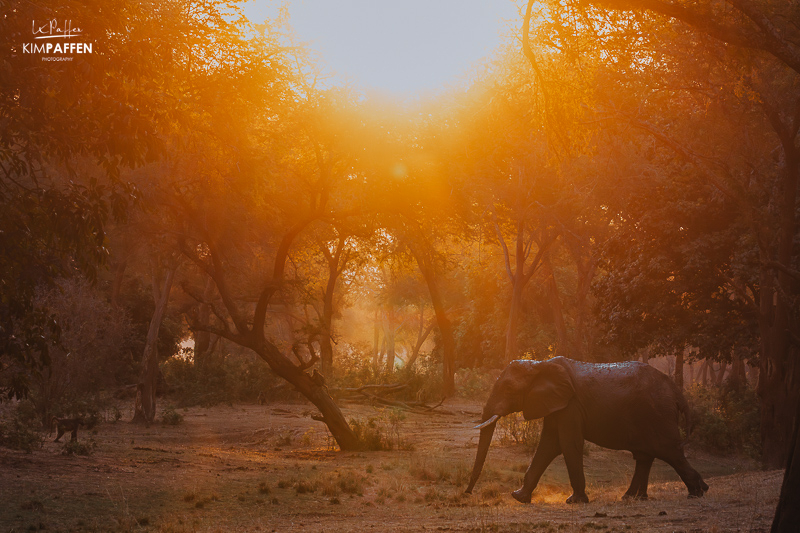
The activities that make Chiawa Camp even more unique are the water-based Lower Zambezi safari activities, like a canoeing trip through the Zambezi channels with amazing wildlife sightings that include up-close vistas of crocodiles, hippos, elephants, many birds, baboons, and several antelope species while peacefully floating on the water, listening to the sounds of nature.
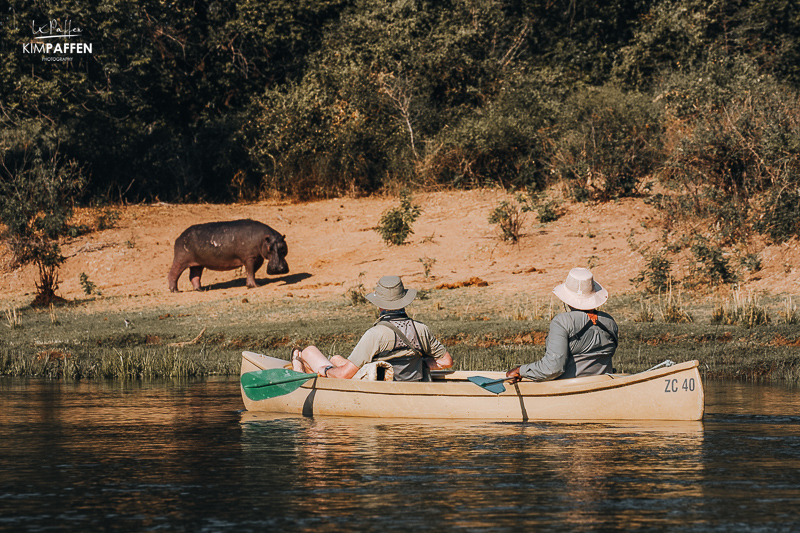
Ending your canoe safari with a sundowner overlooking the Zambezi River that reflects the orange colors of the setting sun is magical.
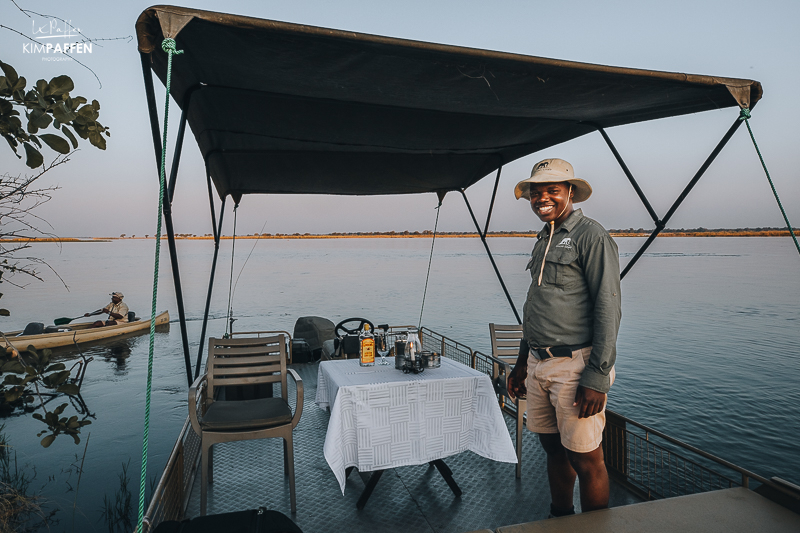
Because of the strict regulations, I assure safari lovers of seeing very little to no human activity while paddling the waters of the Zambezi River which provides that extra exclusive feel of being the only ones on the river.

Other things to do on safari in Lower Zambezi National Park are night game drives , boat safaris using stable pontoon boats, and tiger fishing. What I loved about Chiawa’s night game drive was the use of a red filter on the spotlight and car to not disrupt the animal’s behavior. It was the only place in all of Zambia where they used this red light.
Elephants & Buffalo visit Chiawa Camp
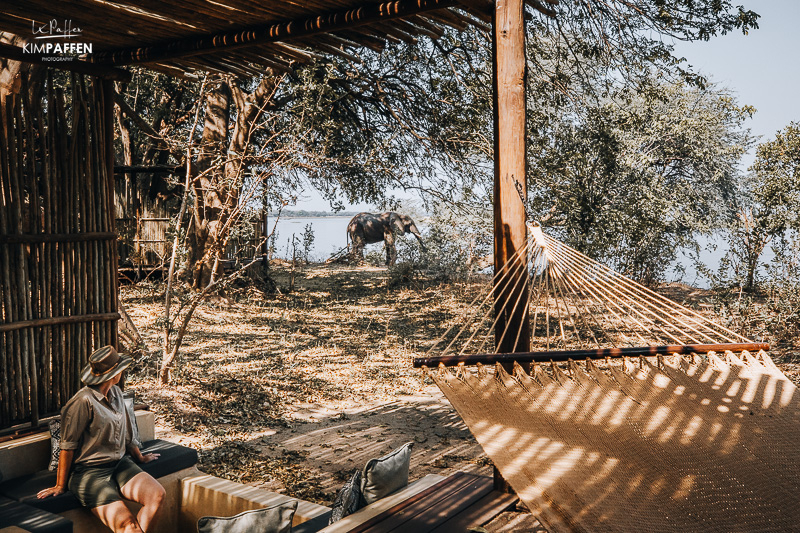
You don’t have to drive far to see wildlife. And even better, elephants visit Chiawa Camp daily as the camp is in the middle of a prime wildlife zone within Lower Zambezi National Park.
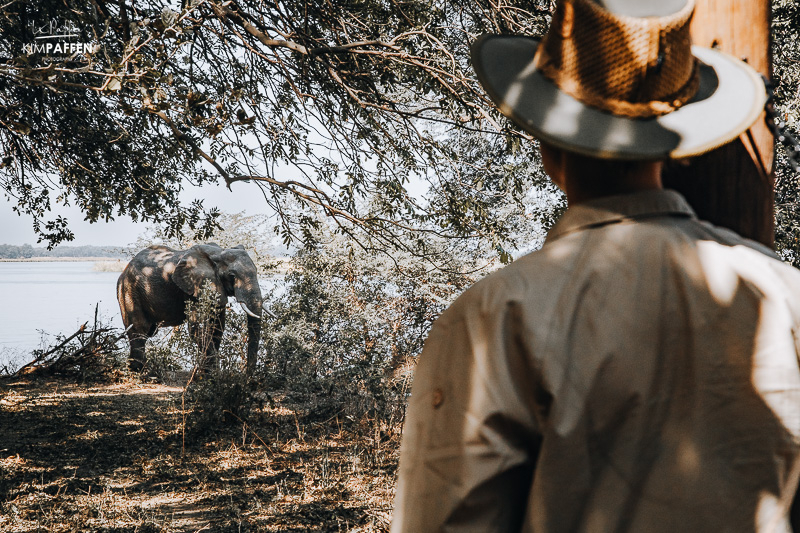
Other wildlife to spot (even within the camp) are lion , leopard, buffalo, waterbuck, hippos and crocodiles. I had a buffalo grazing next to my tent one evening and enjoyed viewing the elephants from my private veranda.
Quality food on beautiful locations
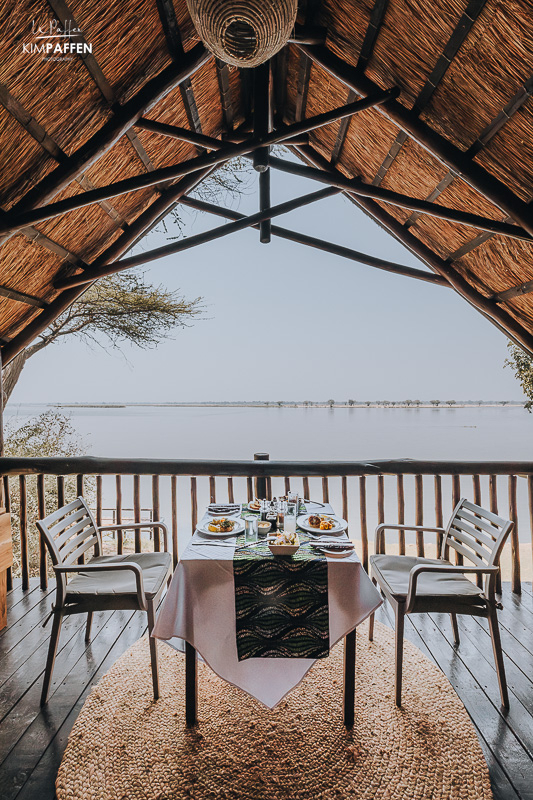
Chiawa’s food is delicious, and I like their effort to prepare different spots to enjoy lunch.
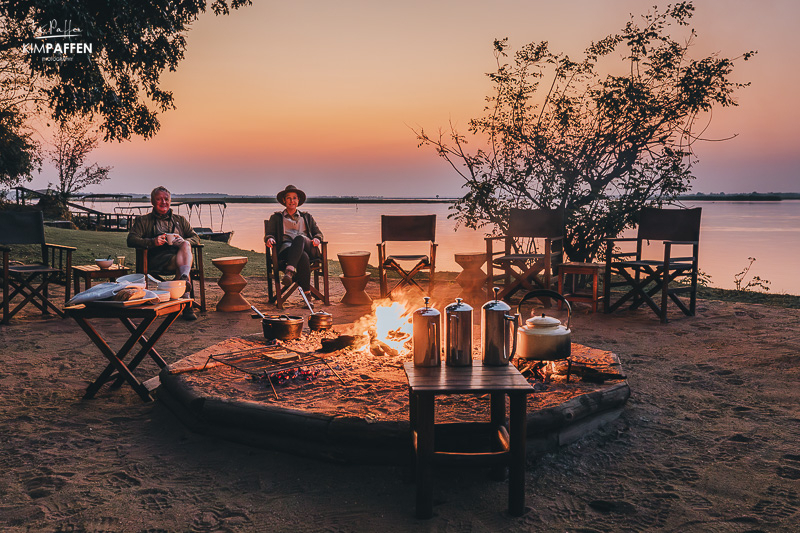
They serve breakfast on the bank of the river at the fire while you can enjoy the slowly rising sun. One day, we had a champagne lunch on the boat while enjoying the river views and another day we sat on the upper deck.
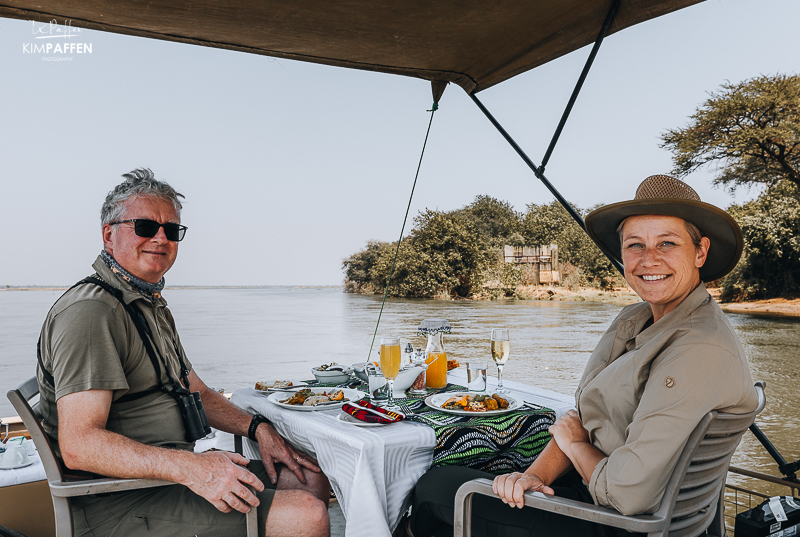
Just before they serve dinner from their main dining area, the staff gathers to sing a song or two to invite us for dinner; a proper choir with regular rehearsals and their album which you can buy at the lodge to support them.
Luxury Safari Tents with plunge pool
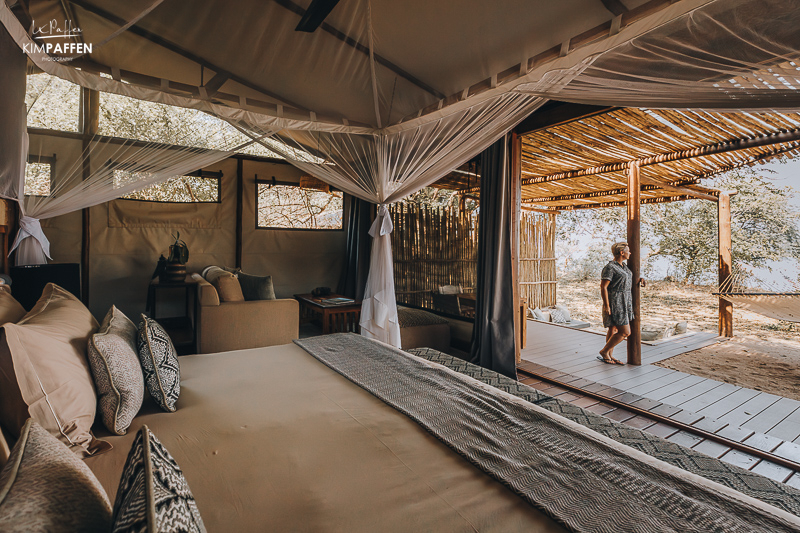
The 100 square meters safari tents are very spacious with a comfortable super-king sized bed, a lounge area, and an enormous bathroom plus an extra outdoor ‘waterfall’ shower for that extra bush feeling.

Via a sliding door, you enter your private shaded veranda that includes a dining table, leather safari chairs, and ‘bench wallow’; a sunken lounge area and an on-demand plunge pool . I also loved the hammock to chill in between the Lower Zambezi safari activities.
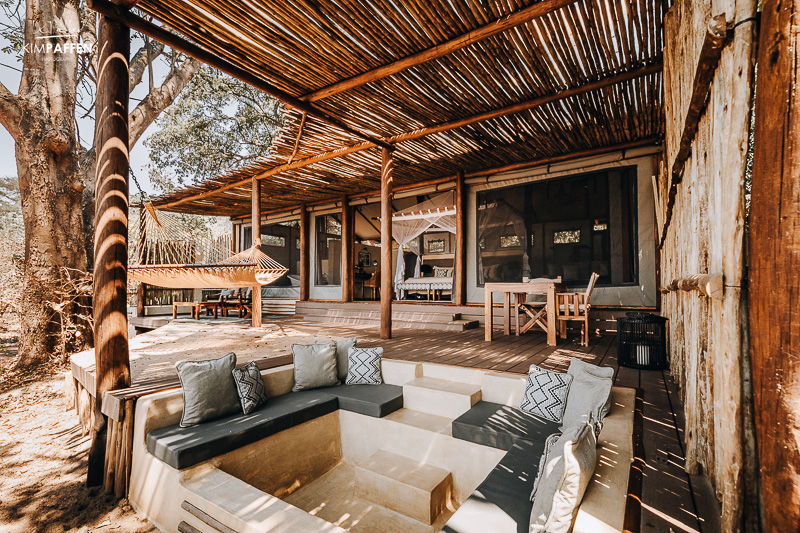
Reusable water bottle
Chiawa Camp wins the prize for the best water bottle gift. Several camps are offering reusable water bottles to their clients which is a great way to reduce the use of plastic water bottles but I found Chiawa’s water bottle the most convenient and appealing. It’s not only a gift to take home, but a gift to nature in an effort for a cleaner and healthier environment.
Travel Tip for your Safari in Zambia : not all camps provide reusable water bottles or a water bottle to take home as a gift, so please bring your reusable water bottle that keeps your filtered water cold instead of asking for a plastic water bottle.
Best place to stay in Zambia
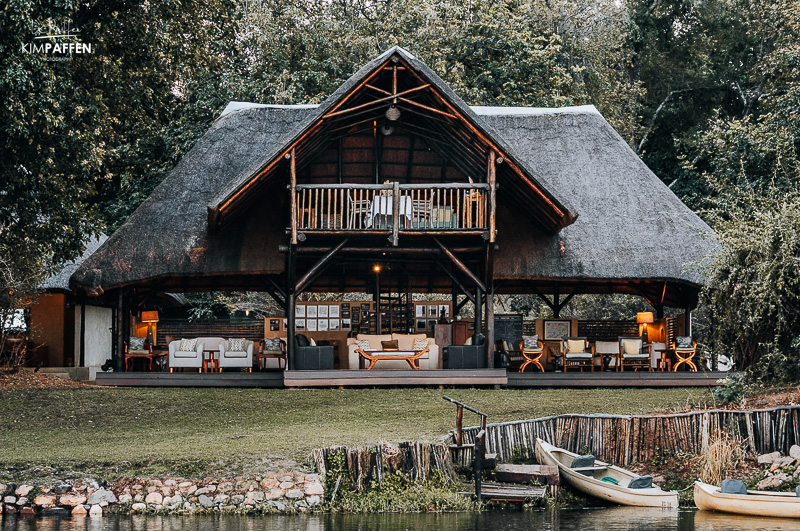
Chiawa Camp is my number one pick as the best place to stay in Zambia and Lower Zambezi National Park became one of my favorite new wildlife parks in all of Africa. Want to include Chiawa Camp in your Zambia Safari Tour? Check out the 15-Day Luxury Zambia Safari & Waterfalls Holiday .
Old Mondoro Lower Zambezi National Park
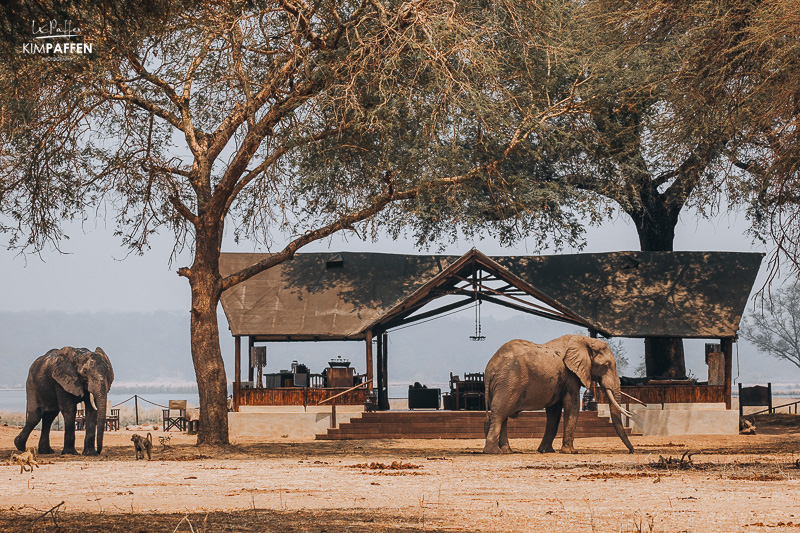
Old Mondoro , part of Chiawa Safaris, is a wildlife photographer’s paradise offering a more intimate and rustic option to enjoy Lower Zambezi National Park. With only 5 chalets, this is the perfect place to stay for that authentic raw African bush feeling with incredible wildlife encounters.
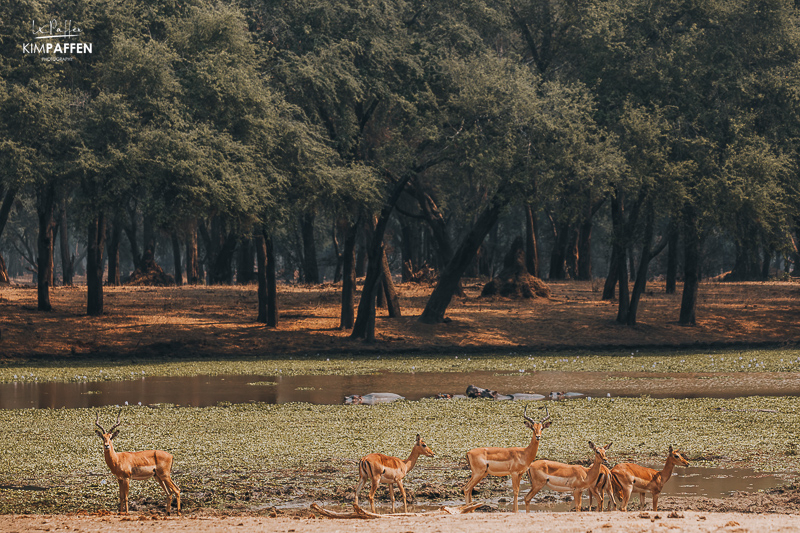
Old Mondoro Camp is within a winter thorn forest and elephants are always present which means the staff has to drive you to your chalet. It’s also the place with one of the best toilet views in Africa.
Chindeni Bush Camp in South Luangwa
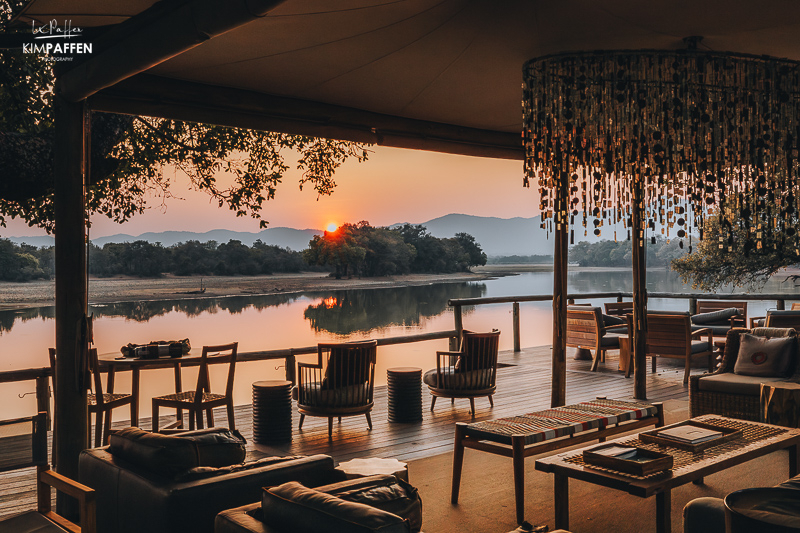
Chindeni is a lovely luxurious tented camp on the edge of an oxbow lagoon in South Luangwa National Park in Zambia with the N’Chindeni Hills providing a wonderful backdrop. I love the fact that this stylish but rustic bush camp is in a remote area of Zambia’s Honeypot in the middle of the bush, where the magic happens.
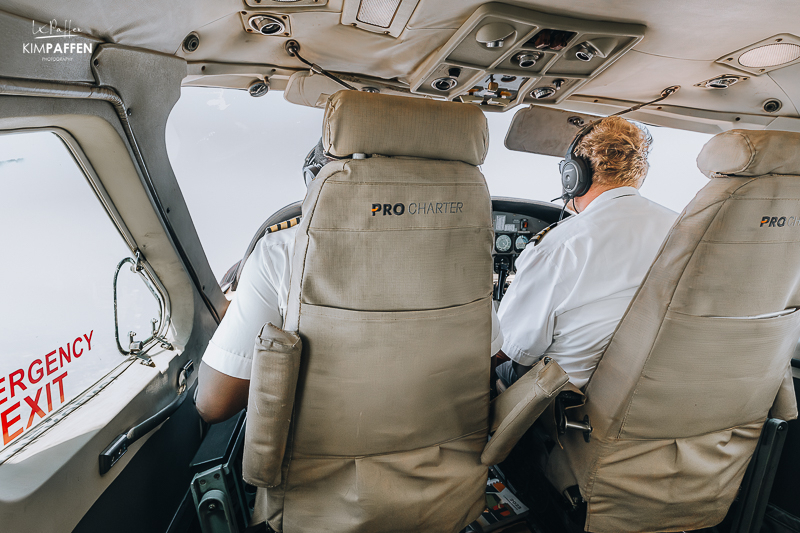
You can reach South Luangwa from Lusaka by road or by air with Proflight Zambia . From Mfuwe airstrip, it’s a 45-minute drive to the Bushcamp Company’s main lodge, Mfuwe Lodge ; famous because of the elephants passing the reception hallway to feed on their wild Mango tree. From Mfuwe Lodge it’s another 2,5 hour drive to Chindeni Camp.
Intimate bush camp offering prime wildlife viewing
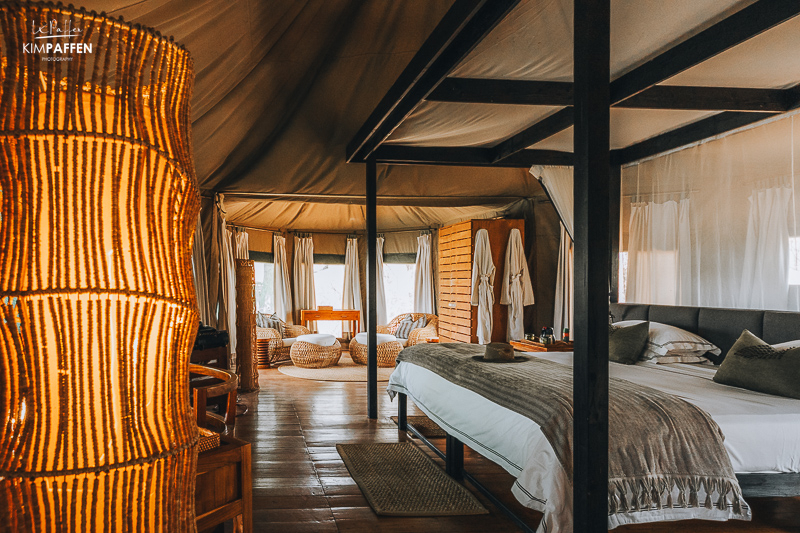
With only 4 luxurious tented chalets, raised on decks with a private veranda overlooking the lagoon, it gives you the perfect intimate feel. The main area is a huge wooden deck surrounded by Ebony trees with the same magical views of the lagoon where elephants pass to drink, hippos wallow around, or wild dogs run along the tree line.
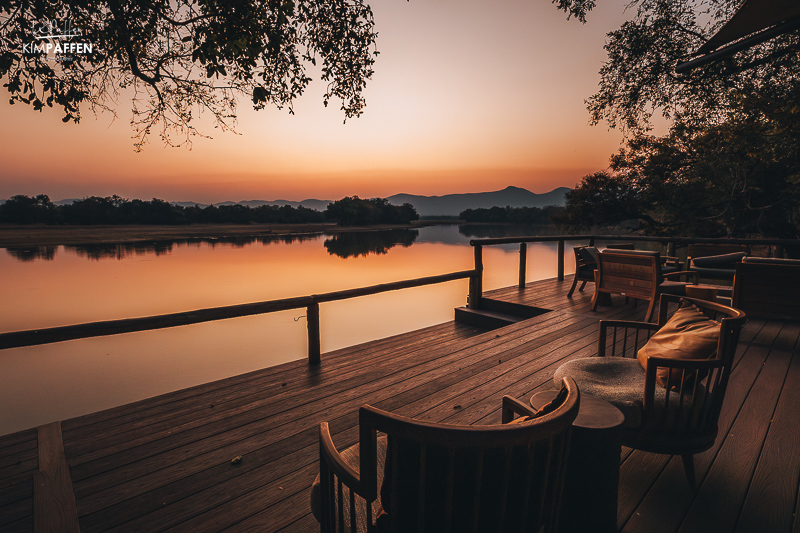
These special views never get boring and the sunrise at Chindeni Camp is simply stunning.
Things to do at Chindeni Camp
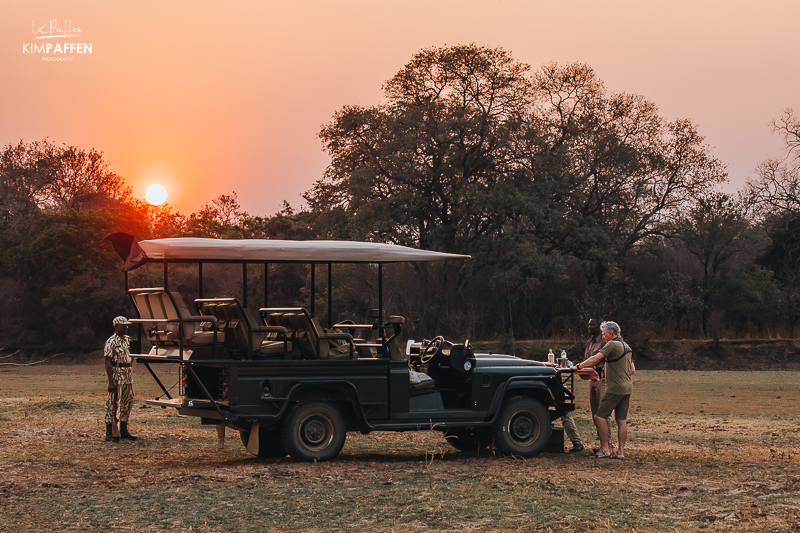
At Chindeni Bush Camp, you can do several safari activities , that include walking safaris, scenic sundowners, game drives, and night drives .

Prince was the perfect guide. He had a wealth of knowledge about all things nature; also the smaller things.
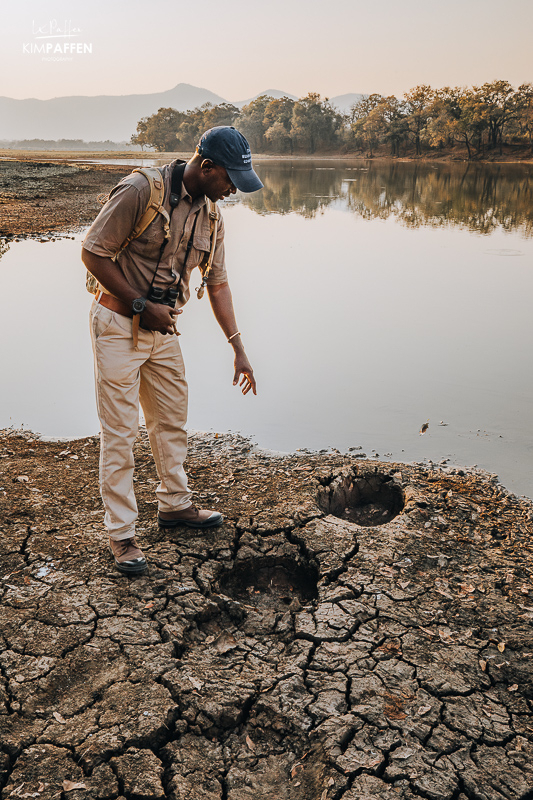
I enjoyed going on game walks with him, but also the afternoon drive was fun and very informative.
Walking Safari is King
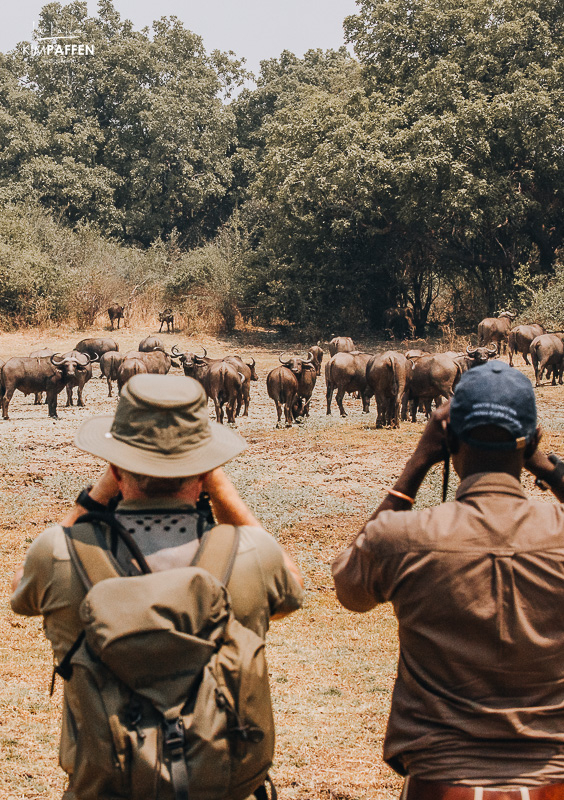
South Luangwa is the pioneer of walking safaris . Foot safaris differ from game drives as you will see so much more, for example, leopard scratches on a Natal Mahogany, rubbings of elephants along the bark of several trees, aardvark droppings, remains of animals, and sunbirds drinking the nectar of the sausage tree flowers.
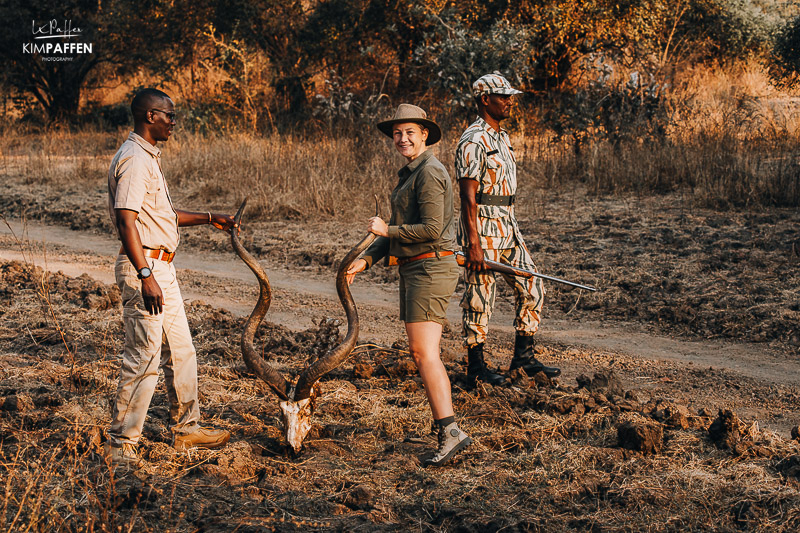
On our first morning, we saw two lionesses that were part of a bigger pride of 7 lions , famous for hunting hippos. Also, special was seeing an Ant Lion (part of the small five), and trees that grow on top of a termite mound, showing how old the termite mound already is. Another great sighting was a flock of yellow-billed storks catching catfish while being chased away by an African fish eagle who stole their fish.
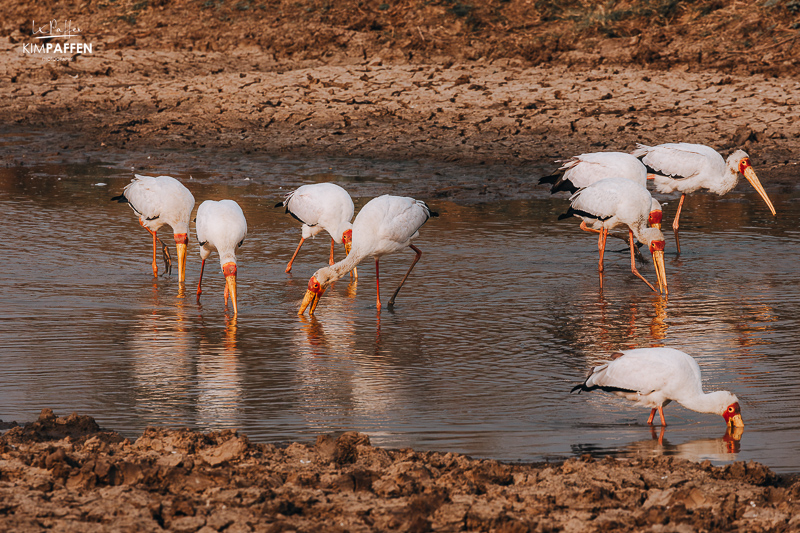
On our fruitful night drive , we saw for example a leopard, a leopard cub on its own, a serval, two genets and hippos grazing on the land.
Abundance of wildlife
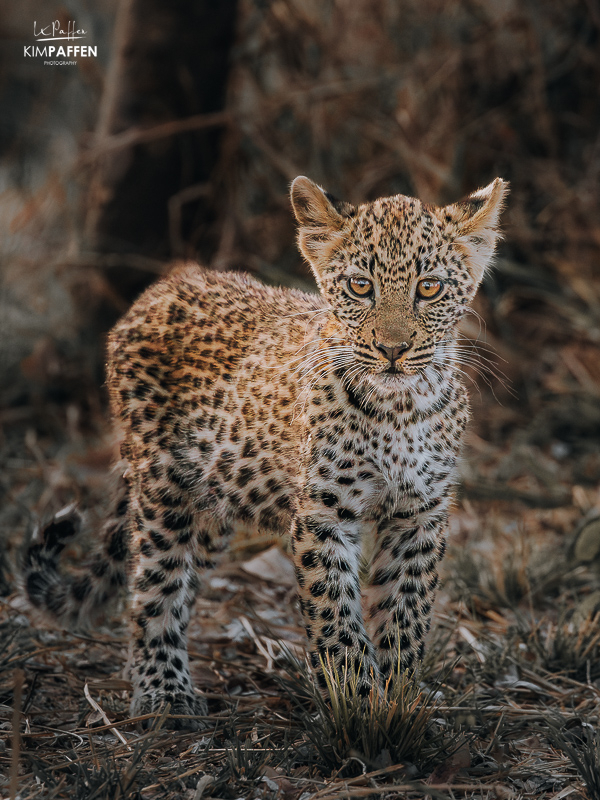
Other animals we spotted on our walks during our 2 nights at Chindeni: leopards, elephants, hippos, a herd of buffalo, giraffes, wild dogs, a leopard with a kill, wild dogs with pups, kudu, crocodiles, and hyenas.
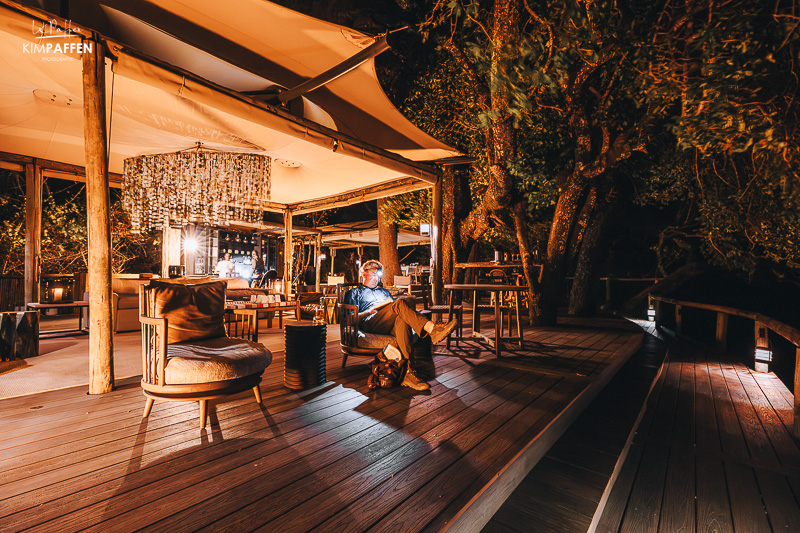
So you honestly can’t go wrong booking at Chindeni Camp as the surroundings of the camp offer an abundance of wildlife right at your doorstep.
Conscious Bushcamp Company
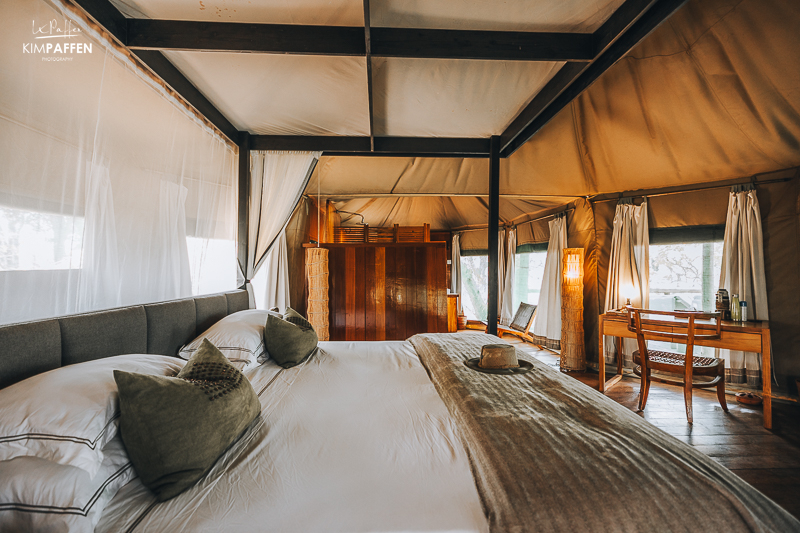
The Bushcamp Company has 3 lodges and 6 bush camps. What makes them special is that they are the only safari operator in the Southern section of South Luangwa National Park and they can pride themselves on the intimate nature of their small, exclusive bush camps in awe-inspiring and remote locations, far from other camps and tourists.
Check out this 9-day safari tour that includes Mfuwe Lodge and one of their bush camps to experience splendid South Luangwa and Zambezi Valley.
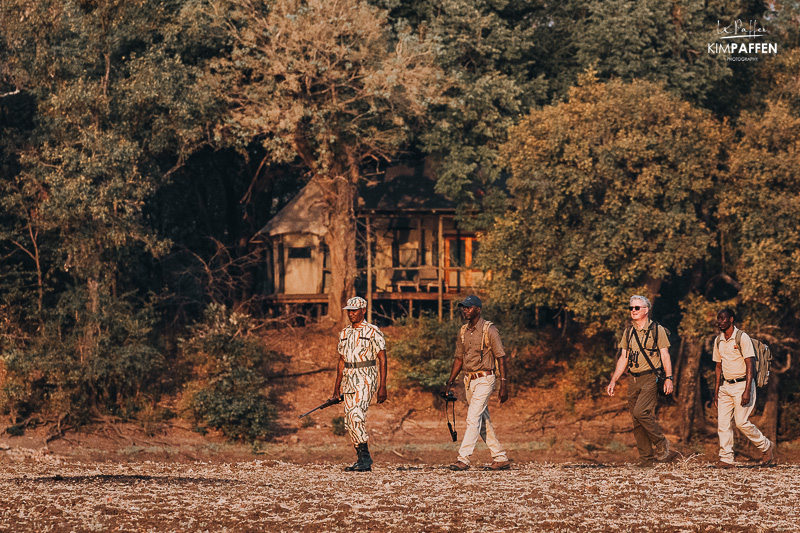
What I also love about Bushcamp Company is that they give every client a water bottle as a gift to take home . The message on the bottle says ‘Refilling this bottle reduces annual consumption of single-use bottles by up to 55,000’. A magnificent gift to the environment and the bottle keeps your water cool for a minimum of 12 hours!
Every client also receives an elephant keyring for conservation . The proceeds from the sale of these colorful key rings benefit elephant conservation in South Luangwa National Park and you get them in all the colors of the rainbow.
Chamilandu Bush Camp in South Luangwa
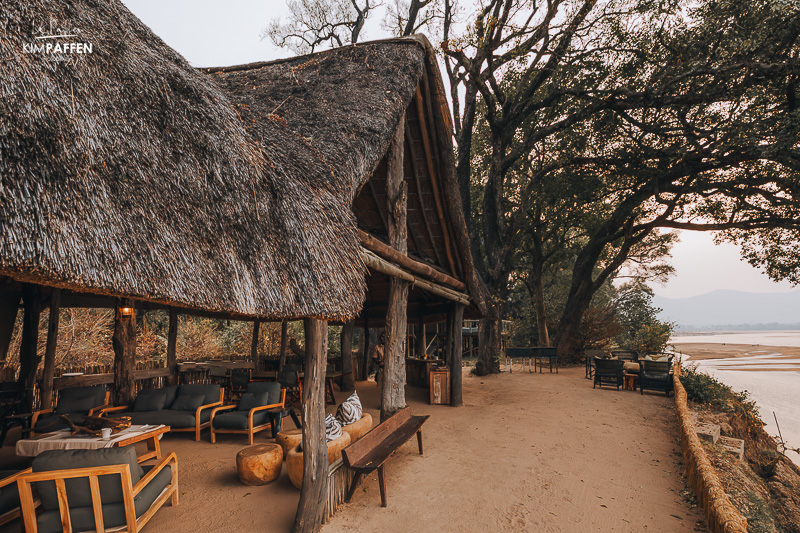
Chamilandu Bush Camp is not too far from Chindeni Camp, both owned by The Bushcamp Company. Chamilandu has a more rustic feel than Chindeni because their rooms are semi-open to the African bush. It's a great camp for the well-traveled Africa lover.
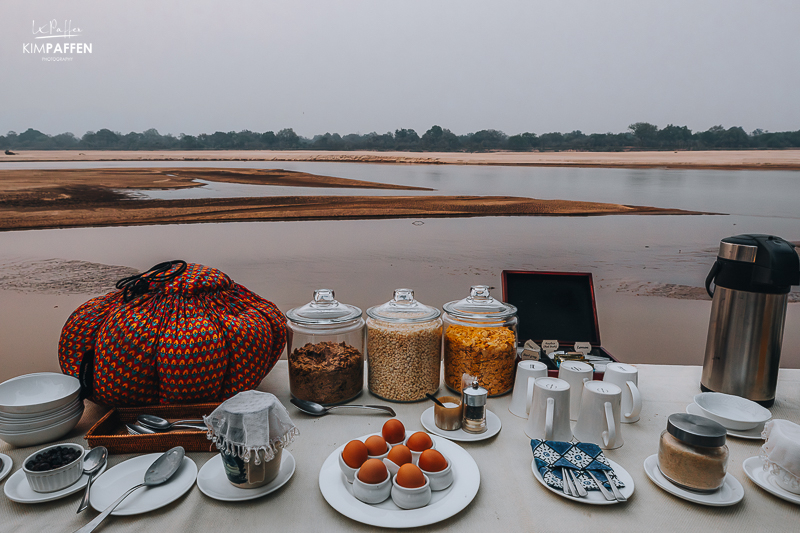
Unfortunately, I didn't get to experience the camp to its fullest because I arrived very late in the evening when it was already dark and we left the following morning very early for a walking safari to Chindeni Camp. However, I loved the setup and the views of the river while enjoying the early morning light.
Luangwa Bush Camp in South Luangwa
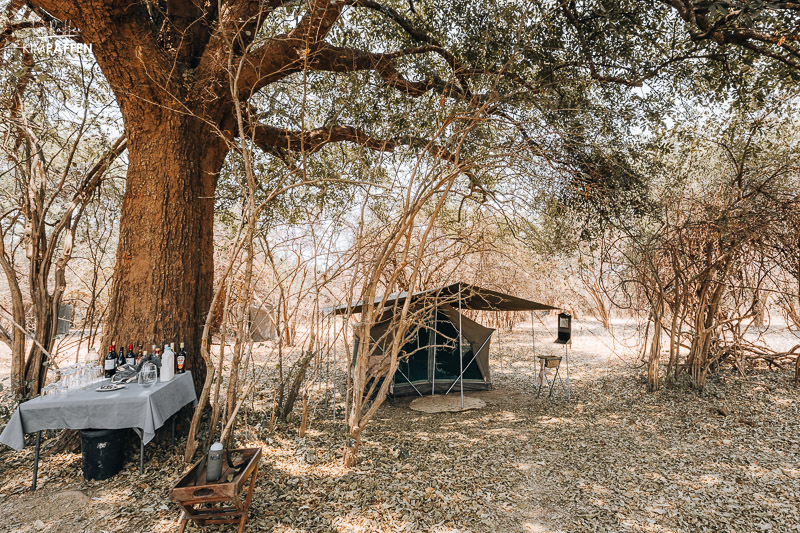
At Luangwa Bush Camp from Robin Pope Safaris , you go back to basics as you will be camping in the middle of South Luangwa's wilderness with views of the Luangwa River. While this is not a luxury lodge experience, you will find luxury in being disconnected from the world and fully connected to nature instead. It's at this place, where I felt I could recharge my battery.
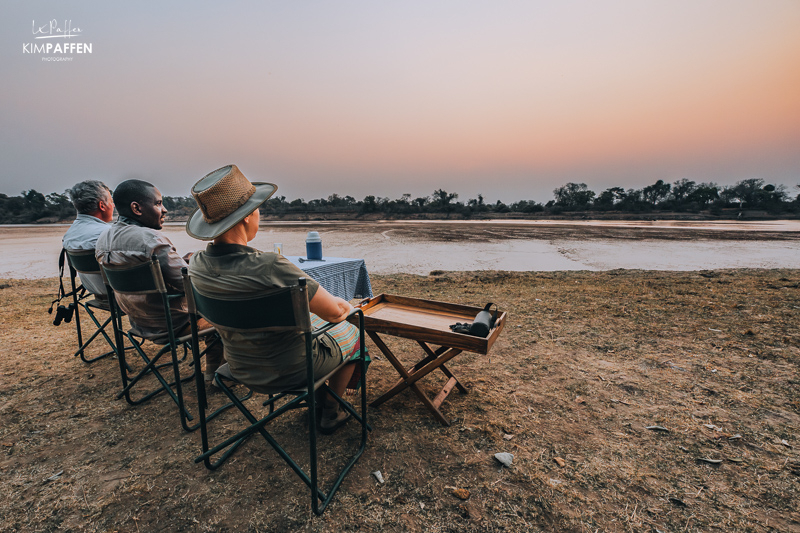
Hearing the laugh of a Hyena or a Lion's roar while sleeping in a canvas tent is truly something special; a different kind of luxury. Even the hot bucket shower felt like a wonderful gift as I didn't expect to have hot water while camping in the middle of the bush, but Luangwa Bush Camp has all you need! Even their breakfast, lunch, and dinner are great as they get the food from their Nsefu camp.
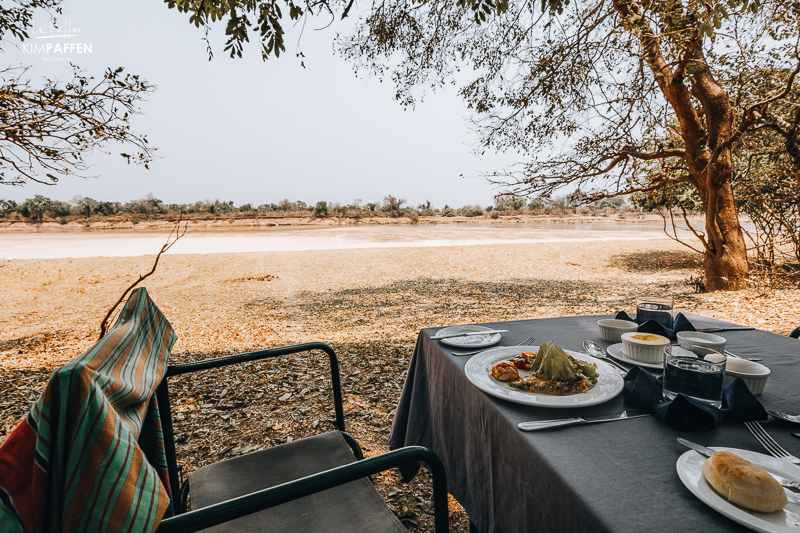
From Tena Tena Camp we did a walking safari to Luangwa Bush Camp. This was a very exciting walk as we spotted a leopard roaming in the distance, discovered Aardvark tracks, found a tooth of a leopard, saw beautiful trees and elephants, and a skull.
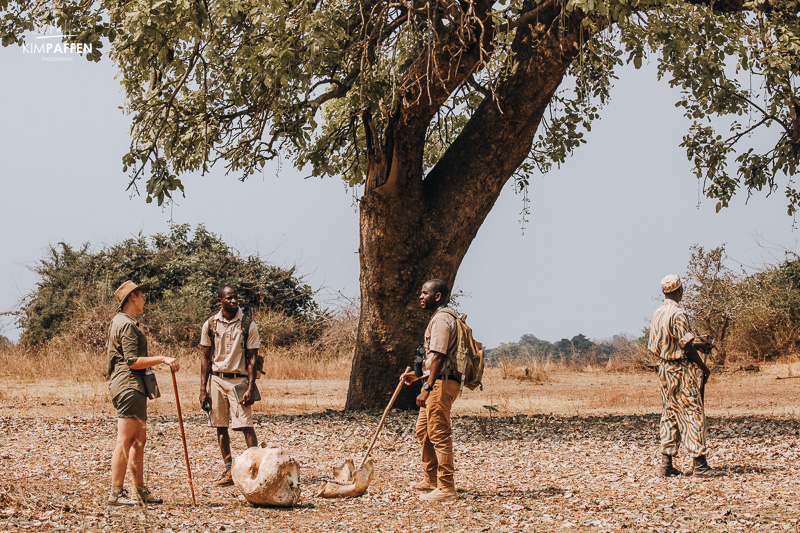
After arriving at the tented camp, you can't do more than relax in your tent or watch birds and animals like hippos along the Luangwa River.
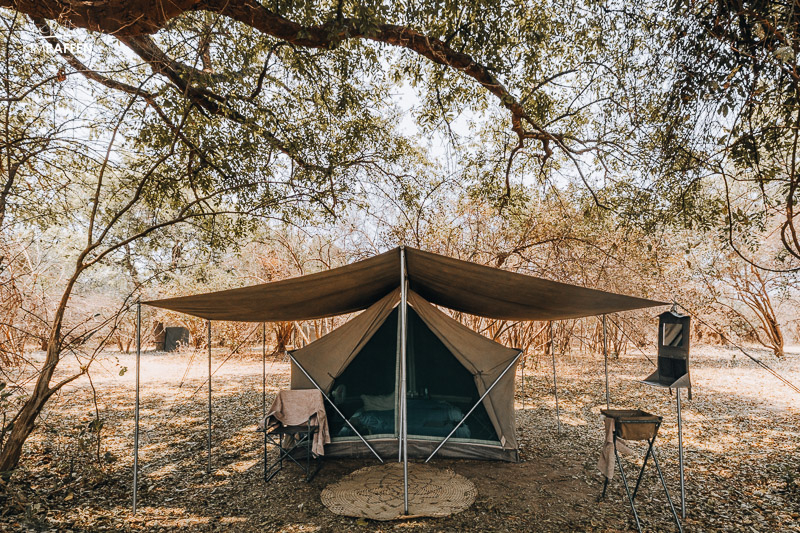
After lunch, we did another walk around the camping area with interesting sightings of a hippo carcass and giraffes that seemed very relaxed in our presence.
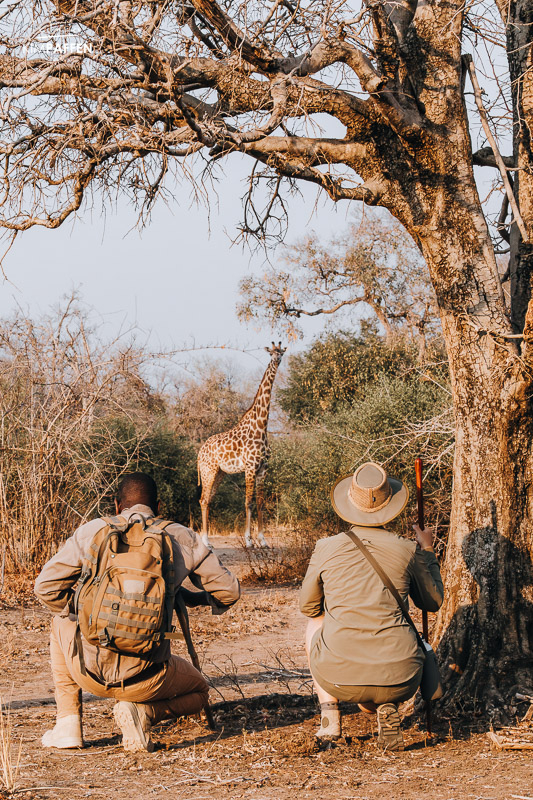
For a different safari experience, I highly recommend bush camping in South Luangwa National Park with Robin Pope Safaris. This off-the-grid bush experience is one of the reasons this camping adventure is one of my top places to stay for a safari in Zambia.
Mwaleshi Camp in North Luangwa
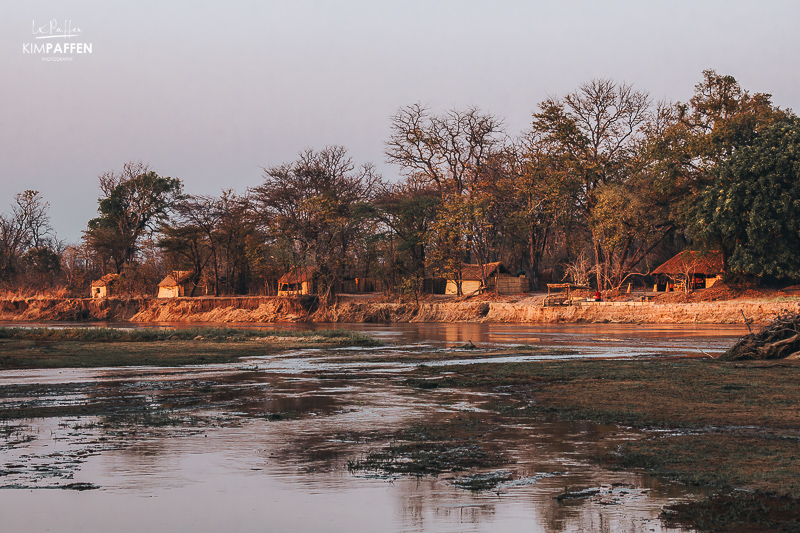
Mwaleshi Camp is a rustic bush camp on the banks of the Mwaleshi River 10 km upstream of the confluence with the Luangwa River. It’s the only camp in the vast wilderness of North Luangwa National Park offering 4 chalets, operating from June 15 until the end of October. The camp is part of Remote Africa Safaris and the easiest way to get to the camp is by plane from RASAir , Remote Africa’s in-house Cessna 210. It’s a 40-minute flight from Mfuwe Airport in South Luangwa with scenic views of the Luangwa River.
Remarkable, remote, and rustic
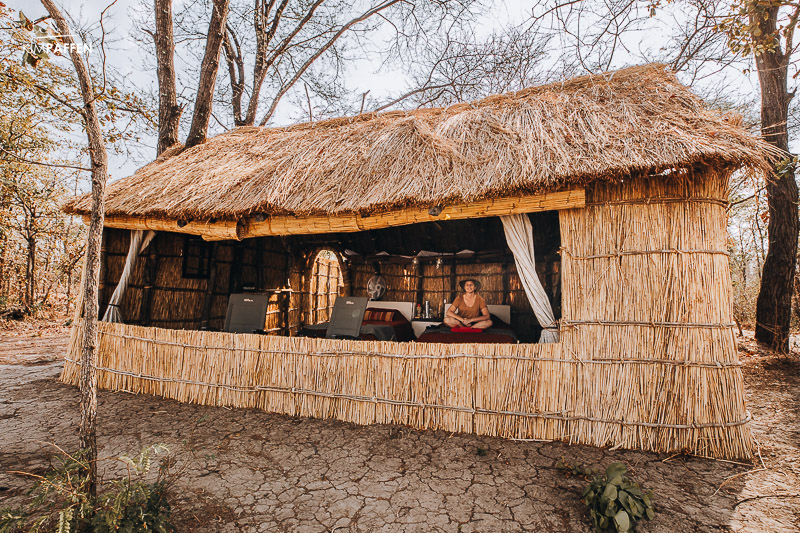
The feel of the North differs from the South. There’s no distraction of other people or cars passing and Mwaleshi is one of the in total two camps inside the park. The other camp, Takwela, is also part of Remote Africa Safaris but that camp is in a different area of North Luangwa.
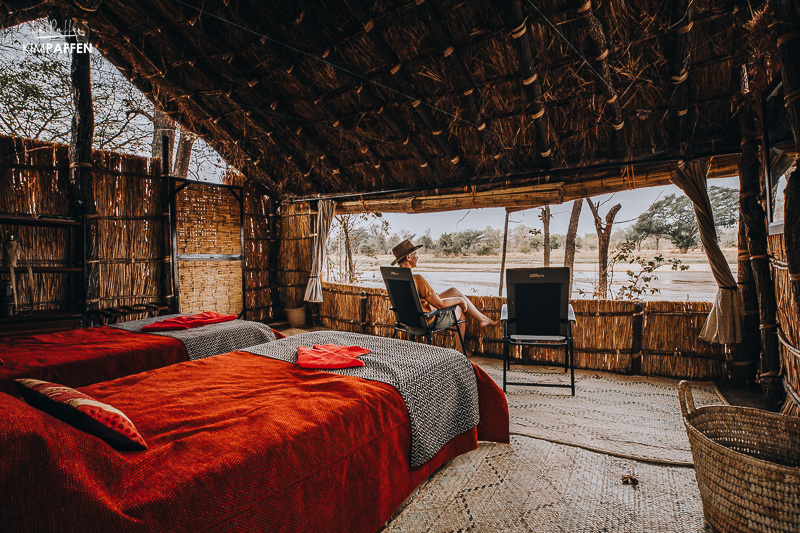
The camp is very rustic and might not be for everyone, especially if you’re a first-time Africa visitor but I rank Mwaleshi Camp and its surrounding nature as one of the favorite places I stayed in Africa .
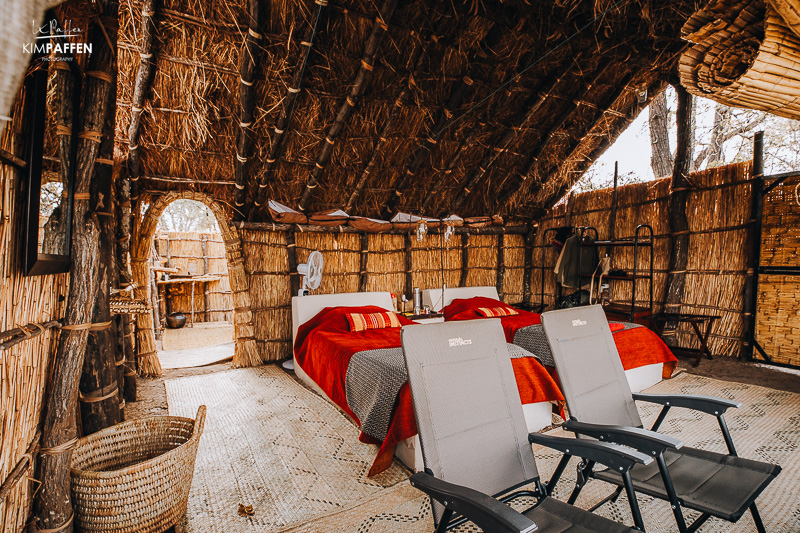
The remoteness of the camp and the semi-open cottage built with natural materials only using local skills, is what makes it so exclusive. Also, the purity of the walks into areas with no roads adds to the exclusivity.
Only Black Rhino population in Zambia
The area along the Mwaleshi River offers a chance to see the Big Five (and wild dog) on foot and North Luangwa is a hotspot for lion, kudu, Zambia’s endemic Cookson’s wildebeest, elephant, wild dog, and black rhino .
Mwaleshi Camp is within a 120 km 2 black rhino sanctuary , another reason this hidden gem is worth visiting. According to Birdwatch Zambia, there are 416 species of birds and the Luangwa Valley is also one of the top 10 lion strongholds of Africa.
Pure Nature Connection
With no Wi-Fi, cell phone connection, or electricity it is purely a connection to nature here. Use all your senses to connect to nature and enjoy being present in the very moment. It’s the perfect place to recharge your battery and I recommend a minimum of 4 days to fully immerse yourself into this remote luxury for the best experience.
Waking up to the sun rising over the Mwaleshi River while having your breakfast around the fire and listening to the sounds of the birds is a perfect start of the day and a great way to prepare yourself for a 4-hour walking safari. In the afternoon, you go out for another 2.5 to 3-hour walking safari ending with a sundowner while watching the sun set over the Mwaleshi river.
Home-cooked cuisine
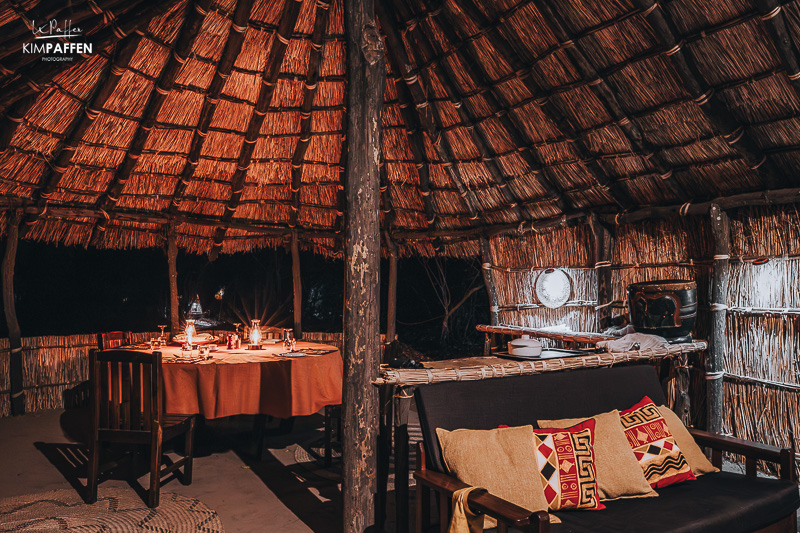
Back at the camp, you can enjoy a perfect candlelight dinner, cooked over a wood fire. They bake the homemade bread with coals in the ground and their fresh vegetables come straight from their vegetable garden .
Most inspiring guide & camp manager
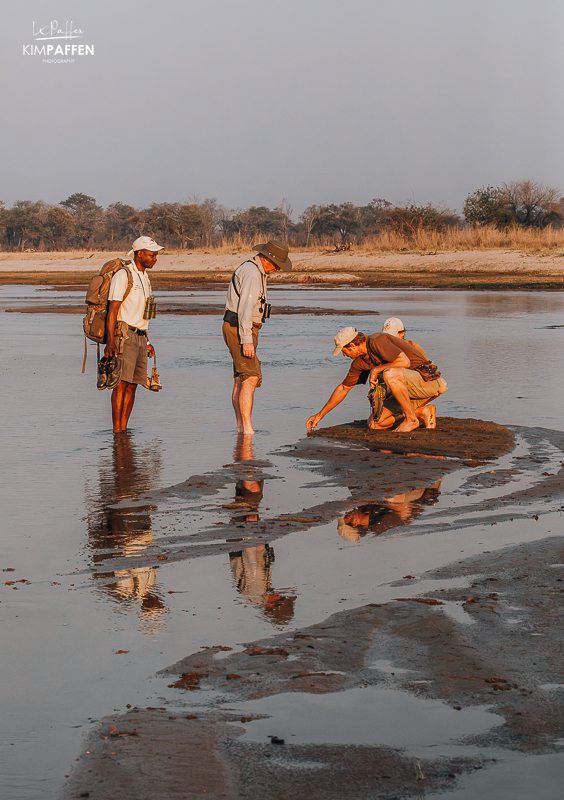
A guide can make or break your safari. Brent was honestly one of the most inspiring souls I have met . He’s extremely passionate about all things nature, sharing his knowledge philosophically.
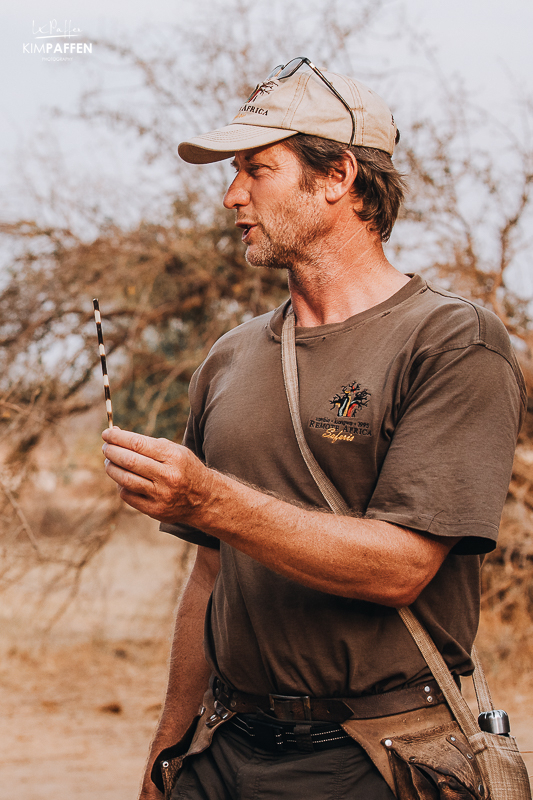
A very interesting person to listen to with a pleasant voice; the perfect person for a TedTalk if you ask me. Brent is the kind of guide that makes you want to go back to that place.
Royal Livingstone Victoria Falls
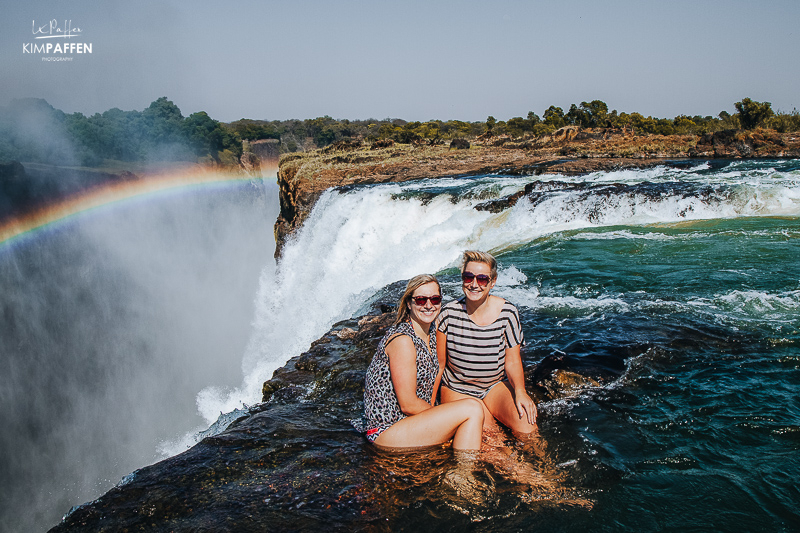
The Royal Livingstone Victoria Falls is a very expensive hotel part of the Anantara Hotel Group, so it's not for everybody. I haven't slept here myself, but I visited this luxury property a few times for lunch and a delicious high tea. This hotel has been included in the list of the best places to stay in Zambia because it serves as the departure point by boat to Livingstone Island for the Devil's Pool activity.
The Victoria Falls Waterfront in Livingstone
The Victoria Falls Waterfront is a much more affordable place to stay in Livingstone. It's close to Victoria Falls, overlooking the Northern banks of the Zambezi River, and is only 10km away from the famous Victoria Falls, the smoke that thunders. The lodge also has a swimming pool, braai facilities, and a lively bar.
Best places to stay for Safari in Zambia
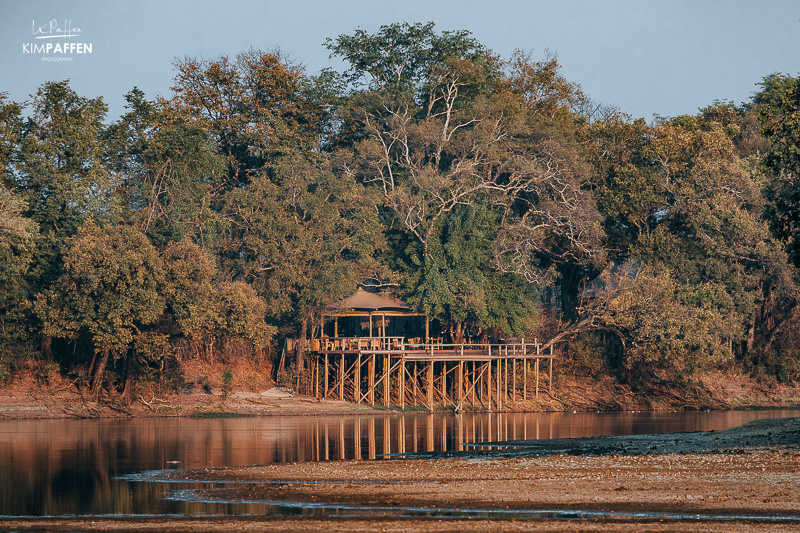
Most of the best places to stay are intimate bush camps and exclusive safari lodges in Zambia's most pristine wilderness areas , such as Lower Zambezi National Park, Kafue National Park, South Luangwa National Park, and North Luangwa National Park. If you are looking for a real remote safari experience with an abundance of wildlife away from the crowds, choose Zambia as your next safari destination! It's one of Africa's underrated countries for safari but I'm 100% sure you won't regret traveling to one of the safest countries in Africa. Be ready for awe-inspiring natural wonders and Zambia's enchanting wilderness.
Here’s a summary of my 11 hand-picked favorite accommodations to stay for safari in Zambia :
- Wild Dogs Lodge in Lusaka
- Pioneer Camp in Lusaka
- Mukambi Safari Lodge in Kafue National Park
- Chiawa Camp in Lower Zambezi National Park
- Old Mondoro in Lower Zambezi National Park
- Chindeni Camp in South Luangwa National Park
- Chamilandu Bushcamp in South Luangwa National Park
- Luangwa Bush Camping
- Mwaleshi Camp in North Luangwa National Park
- Royal Livingstone Victoria Falls
- The Victoria Falls Waterfront in Livingstone
Do you have tips for lodges that deserve to be part of this list too? Share your tips in the comments or invite me to visit your lodge. Check out this selection of Zambia Safari Tours to book your next safari in Zambia.
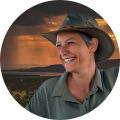
Take a look

Extraordinary Safaris. Lasting Legacies. We are long-established safari experts combining high quality wildlife viewing and specialised guiding into a unique guest experience.
Classic Zambia Safaris is one of the few remaining owner–run operations in Zambia, a country with one of the richest wildlife heritages on the African continent. Our camps are located in the heart of two of the leading national parks in Zambia and are the perfect spots from which to explore and experience African wildlife at its very best.
Kafue National Park
Musekese camp.
Musekese Camp is perched on the edge of a spectacular lagoon in Northern Kafue, home to a plethora of wildlife
Ntemwa-Busanga Camp
A rustic bush camp in a secluded wilderness area on the southern edge of the famed Busanga Plains
Lower Zambezi National Park
Kutali camp.
Kutali Camp is located under a stunningly cool Winterthorn forest on the secluded Kulefu Island in the remote eastern sector of the park
Chula Island Camp
Founded in 2019, Chula Island Camp is located on Katengahumba Island with just 5 stunning guest tents overlooking the Zambezi River.
North Luangwa National Park
Kutandala camp.
*coming in 2025!

Experiences
One of the best aspects of our safaris is the variety of experiences on offer; whether it’s a love of photography, walking, big game or just wanting to feel a little closer to nature, we’re here to provide the best possible safari and make it your trip for your memories.

Why Classic Zambia?
prime locations.
High density of large carnivores
From reservations to in-camp guiding
Quality Guides
Some of Africa’s finest
Ease of Booking
Internal logistics and transfers covered
Conservation
The reason we exist
Get in touch to book!
‘’I wish the world was twice as big and half of it was unexplored.’’ David Attenborough aptly describes the allure of a truly untouched wilderness. Do such areas still exist? Yes, but they are hard to find in this day and age. The story behind Classic Zambia harks back to this exploratory ethos…

Conservation is at the heart of what we do
Musekese Conservation is a Zambian run Non-Profit organisation. We help to provide resources for conservation projects working across the Musekese-Lumbeya area. Our primary focus is to establish law enforcement and research initiatives that contribute to the preservation of wildlife and communities within the Kafue National Park.
Plan your adventure today
TOP DESTINATIONS
- Kruger Park
- Okavango Delta
- Serengeti National Park
- Victoria Falls
TOP COUNTRIES
- South Africa
TRAVEL DEALS
View All Travel Deals
SOUTHERN AFRICA
East africa, indian ocean islands, top experiences.
- Beach Holidays
- Family Safaris
- Honeymoon Safaris
- Desert Safaris
- Luxury Rail Safaris
- Multi-Generational Safaris
- Positive Impact Safaris
Photographic Safaris
Walking Safaris
WILDLIFE SAFARI
Big Five Safaris
Birding Safaris
- Gorilla Trekking Safaris
- Migration Safaris
- Mobile Camping Safaris
- Horseback Safaris
FEATURED EXPERIENCES
Comfort levels, property types.
- Tented Camps
- Boutique Hotels
Featured Safari Collections
- Imvelo Safaris
- Natural Selection
- Elewana Collection
- Ker & Downey Botswana
GET TO KNOW US
- Meet The Team
- Pricing Explained
- Traveller Reviews
- Traveller Stories
- Why Book With Us?
- HerdTracker
- Safari Cost Calculator
- South Africa In 360
- Trusted Safari Partners
- Newsletter Sign Up
What are you looking for?
- Multi-generational Safaris
- Positive Impact
- Meet the team
- Why book with us?
- Herdtracker
- Safari Cost Estimator
Hello traveller!
It's in Cape Town now.
We're sorry. Our safari planners aren't available now. Our office hours are 08:00 - 19:00 (GMT+2).
Call us to speak to an experienced safari planner.
Alternatively, we recommend...
Schedule a phone or Zoom call with one of our safari planners
Complete our travel enquiry form to connect with a safari planner
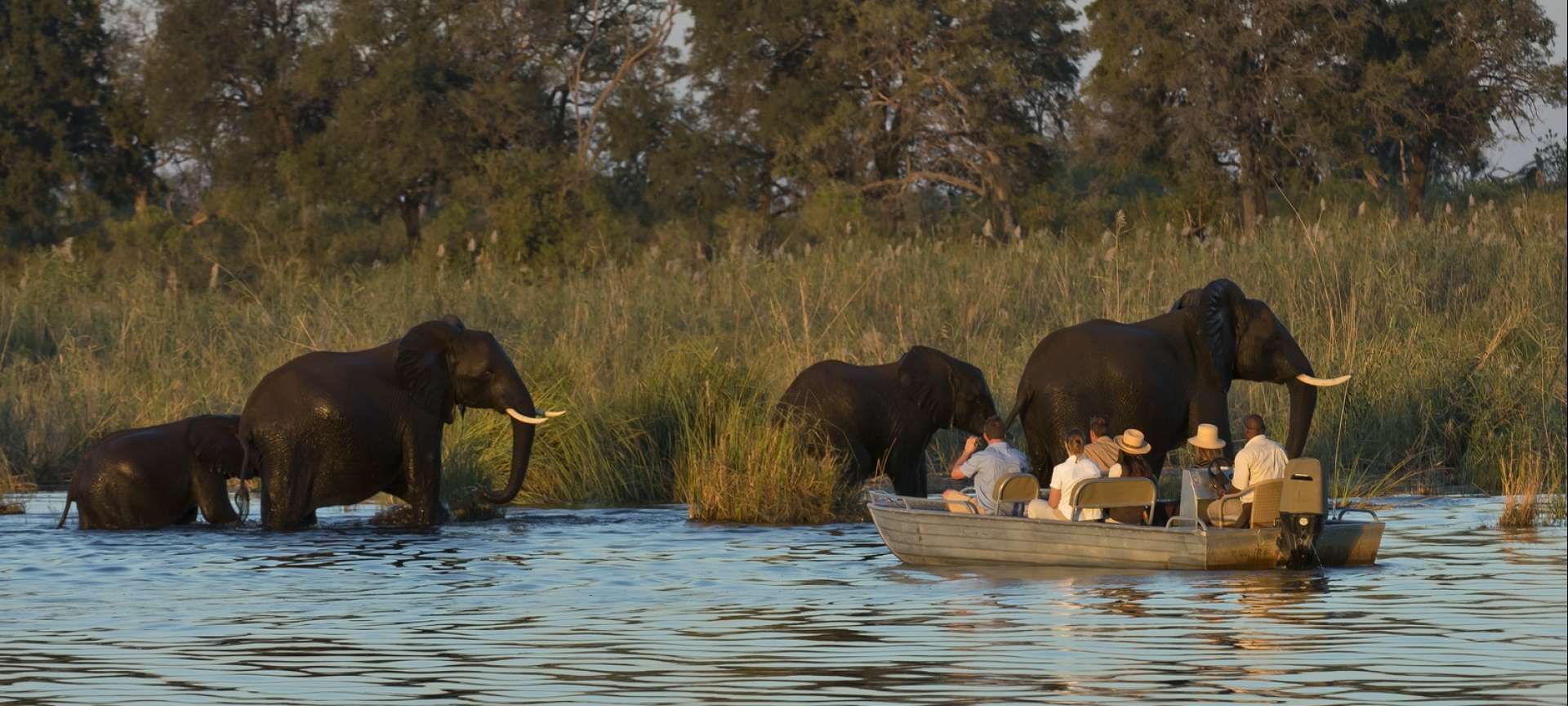
- Zambia Safari
The ultimate guide to your next Zambia Safari
- Zambia Gallery
- Where to go
- Experiences
- Travel Advice
Get to Know Zambia

By Diane Du Plessis
Safari Travel Planner
Date Published: 2 January 2014
Zambia is an undiscovered treasure trove of Africa, offering a pristine and unspoiled safari experience. Journey from Livingstone, the country’s adventure capital where the Zambezi and Victoria Falls—Mosi-oa-Tunya—provide endless thrills, to the exceptionally remote Busanga Plains in northern Kafue National Park. At 5.5 million acres, Kafue is one of the largest and oldest protected regions in Africa, and it is here you’ll encounter wildlife in the most natural, wild way.
Zambia’s wonderfully secluded parks and reserves see far fewer crowds than more popular destinations, giving you the freedom to explore at your own pace. Whether it’s walking safaris through the wildlife-rich South Luangwa, canoeing on the Zambezi River, or classic game drives through the Lower Zambezi, Zambia promises an unforgettable adventure.
Zambia Video
How it Works
View our recommended safaris for inspiration and get ready to plan your dream safari
Contact us or fill out an enquiry form and one of our travel experts will help you tailor make your perfect safari
Enjoy an authentic African experience.
Why you should go to Zambia?
Wildlife encounters.
- Big Five : Zambia is home to the Big Five—lions, leopards, elephants, rhinos, and buffalos. National parks like South Luangwa, Kafue, and Lower Zambezi offer some of the best opportunities to see these majestic animals in their natural habitat.
- Diverse Wildlife : Beyond the Big Five, Zambia boasts an incredible variety of wildlife, including hippos, crocodiles, giraffes, zebras, and over 750 bird species. This makes it a must-visit destination for wildlife enthusiasts.
Scenic Beauty
- Victoria Falls : One of the Seven Natural Wonders of the World, Victoria Falls, locally known as Mosi-oa-Tunya (“The Smoke That Thunders”), is a breathtaking sight. The falls offer spectacular views and adventurous activities like white-water rafting and bungee jumping.
- Unique Landscapes : From the lush floodplains of the Zambezi River to the expansive savannas of Kafue National Park and the dense forests of the North Luangwa, Zambia’s varied ecosystems offer stunning scenery and unique safari experiences.
Cultural Richness
- Traditional Villages : Engage with local communities and learn about Zambia’s rich cultural heritage. Visit traditional villages and experience the customs and daily life of the local people.
- Cultural Festivals : Zambia hosts numerous cultural festivals throughout the year, such as the Kuomboka ceremony, which showcases traditional music, dance, and rituals, providing a deeper understanding of Zambia’s vibrant culture.
Luxury and Comfort
- Exclusive Lodges and Camps : Stay in luxurious safari lodges and tented camps that provide exceptional comfort, service, and immersive wildlife experiences. Many lodges offer private verandas, infinity pools, and bespoke dining experiences, ensuring a memorable stay.
- Gourmet Cuisine : Enjoy gourmet cuisine that blends local flavors with international culinary standards, prepared by skilled chefs, offering a taste of Zambia’s culinary delights.
Adventure and Activities
- Game Drives : Experience thrilling game drives led by expert guides who help you track and spot wildlife, ensuring you make the most of your safari adventure.
- Walking Safaris : Zambia is renowned for its walking safaris, offering an up-close and personal connection with nature. Walk through the bush with knowledgeable guides and experience the wild like never before.
- Canoe Safaris : Explore the Zambezi River on a canoe safari, gliding past hippos, crocodiles, and a myriad of birdlife, offering a unique perspective of Zambia’s natural beauty.
Accessibility and Infrastructure
- Well-developed Infrastructure : Zambia boasts excellent roads, well-maintained camps, and numerous entry points, making it accessible and convenient for travellers.
- Tourism Services : As a popular tourism destination, Zambia offers a wide range of services that ensure a smooth and enjoyable safari experience.
Responsible Tourism
- Conservation Efforts : Your visit supports vital conservation initiatives aimed at protecting Zambia’s diverse ecosystems and wildlife. Many lodges and camps are involved in conservation projects that safeguard both the environment and local communities.
- Community Support : Engage in responsible tourism practices that benefit local communities, fostering sustainable development.
A Zambia safari offers an extraordinary blend of wildlife, luxury, adventure, and culture. From the iconic Victoria Falls to the rich traditions of local communities, it’s easy to plan a transformative Zambia safari experience that will leave you with memories to cherish for a lifetime.
Where to go in Zambia
Zambia boasts a variety of must-visit destinations, each offering unique experiences. From iconic natural wonders to vast national parks teeming with wildlife, there are countless places to explore and enjoy. Discover the diverse landscapes and enchanting beauty that Zambia has to offer.
- Kafue National Park
- Kasanka National Park
- Lake Kariba
- Liuwa Plain National Park
- Lower Zambezi National Park
- North and South Luangwa National Park
- North-Eastern Zambia
- Sioma Ngwezi and Ngonye Falls National Park
- Southern Zambia
- Victoria Falls in Zambia
- Western Zambia
- Where to Go in Zambia
Kafue National Park is Zambia’s largest wildlife reserve and one of the biggest in Africa. It covers more than 22000km² (8494 square miles), and the terrain varies significantly from north to south.
The park’s top third is separated by the M9 highway, and rivers, large and small, define this northern section. Seasonal floodplains and far-reaching, wildlife-rich wetlands dominate northern Kafue, and as the Kafue River flows south, the surrounding area becomes increasingly drier.
Large sections of Kalahari wood and grassland make southern Kafue a perfect home to ever-growing populations of plains game and the park’s largest concentrations of elephants.
Highlights of Kafue National Park In Zambia
Birders will delight in the extreme northwest of the park, where the Busanga Swamps, an official Ramsar site, attract close to 500 species, including large flocks of herons, egrets, and endangered Wattle cranes. This area is perfect for anyone interested in bird-watching safaris .
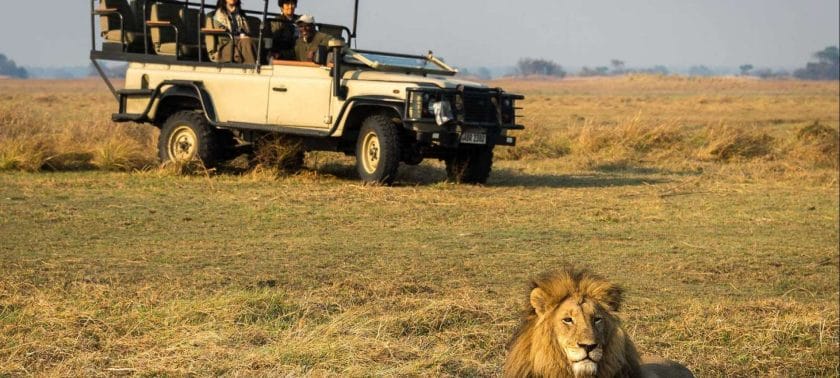
Numerous antelope species are also common in the north, especially kudu, bush buck, eland, reedbuck, duiker, grysbok, lechwe, and waterbuck. Buffalo and elephants can be found in large herds further south.
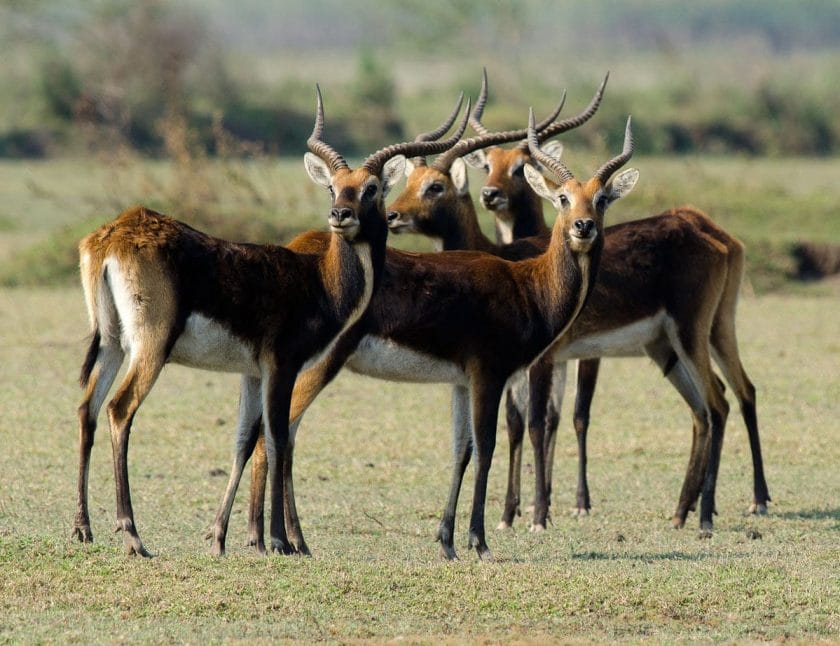
Lions are widespread, and there’s a particular lion pride in Busanga, which is known for climbing trees. Leopards are frequently spotted in forested areas, especially during night drives, though these are only permitted with certified guides booked through a camp or lodge.
Walking safaris are best during winter, while boat safaris are available along the Kafue River during the wet summer.
Travel Tips for a Kafue Safari in Zambia
- The tarred M9 (also known as the Mongu Road) provides year-round access to the north, and Kafue’s main gate, Hook Bridge, can be reached in a four-hour drive from Lusaka.
- The park’s extensive internal road network is 4×4 only, however, and much of it is totally inaccessible from late November through April when heavy rains turn the dirt tracks to mud.
- Wildlife is generally more prolific in the north of the park and is also where many luxury lodges in Zambia provide all-inclusive safari packages. Many stay open all year, offering fly-in safaris to avoid the bad roads.
- Camps in the central and southern sections tend to be more affordable, but without access by air, they usually close during the worst of the rains.
Kasanka National Park is Zambia’s only privately managed park, run by the Kasanka Trust charity in partnership with the local community. At slightly less than 400km2 (154 square miles), it’s also one of Zambia’s smallest, lying just south of the Bangweulu Wetlands near the border with the Democratic Republic of the Congo.
With its wonderful papyrus marshes, swamp forests, and miombo woodland, it’s one of Zambia’s most beautiful reserves. The many crisscrossing rivers and seasonal swampy pools support an incredible number and variety of birds. Kasanka is best known for its annual bat migration, which takes place in late November and early December each year.
Highlights of a Kasanka Safari in Zambia
Kasanka has limited big game but supports several interesting antelope species, including the rare sitatunga, which is relatively common here. Crocodiles and hippos are also plentiful, while buffalo, elephants, and leopards are present but rarely seen.
The major wildlife attraction is the annual bat migration, which begins in November. Up to 10 million bats, with wingspans of over half a meter in diameter, cloud the skies in an incredible swarm – small predators and scavengers pouncing on any that fall.
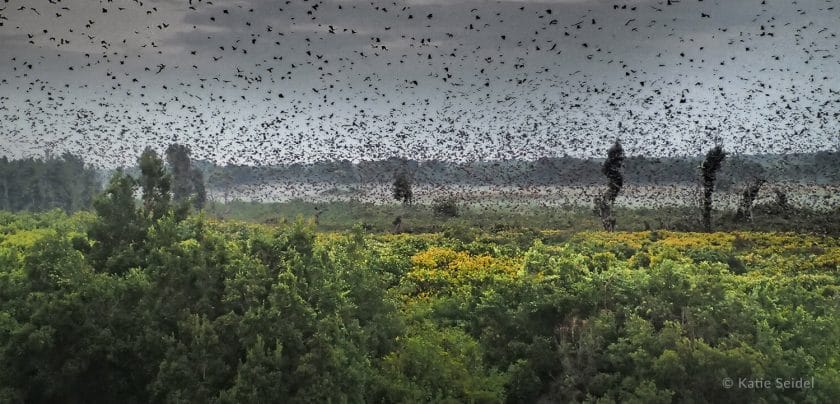
The park is also home to almost 500 species of birds, an astonishing number considering its small size. Which makes it the perfect location for photographic safaris in Zambia .
Fishing and canoe trips are available on the Luwombwa River, although river fishing is banned across Zambia from December to March. Many visitors combine Kasanka with a trip to the nearby Bangweulu Wetlands to see the shoebills and endemic Black lechwe.
Practical Advice on a Kasanka Safari
- A holiday in Kasanka is excellent for experienced self-drivers with fully-equipped 4x4s. Access is relatively straightforward along the tarred T2 from Lusaka, which is in good condition for most of the way.
- Within Kasanka park, there are well-managed campsites with toilets and shade, and the roads are easily manageable during the dry season (although not at all in the wet). Fly-in Kasanka safaris are also available – there’s an airstrip near Wasa Lodge. Wasa Lodge is the park’s main camp, and all visitors must report here on arrival.
- Guided, multi-day bat safaris can be booked through various operators, and self-drivers can arrange local bird and fishing guides at Wasa Lodge. It’s best to book these in advance to ensure availability, especially during the bat migration season.
Lake Kariba is the world’s largest man-made dam by volume, extending over 5000km2 (1930 square miles) along Zambia’s southern border. Completed in 1959, the dam provides hydroelectric power to Zambia and Zimbabwe, and fish stocks – mainly tilapia, kapenta, and the prized tigerfish – are also shared.
Access to the Zambian side of the lake is relatively limited, with Sinazongwe and Siavonga the only two towns of any significance. Siavonga is the larger, a sleepy lakeside holiday village popular with locals and only a few hours’ drive from Lusaka. Sinazongwe is much smaller and less developed, and most head to Siavonga as their base for exploring the lake.
Highlights of Lake Kariba
The Zambian side of the lake is far less wild than Zimbabwe, and there are no game reserves along the northern shore.
For wildlife safaris , you’ll have to visit one of two large islands, Chete or Chikanka, both in the southwest and accessible from Sinazongwe. Chete is the larger of the two, and guided game walks are possible.

There’s a small population of elephants, some leopards, and plenty of crocodiles, hippos, and birds. Chikanka is privately owned, with a single, dedicated fishing lodge. It’s one of many fishing options on a Lake Kariba holiday, with tigerfish as the most sought-after catch.
Various expeditions can be arranged from Siavonga – from live-aboard houseboats to private motorboat trips and canoes. Siavonga is also right next to the dam wall, and by flashing your passport, you can walk out onto it, or catch a boat from Siavonga for a dam-wall cruise.
Practical Advice for a Lake Kariba Holiday
- It’s not safe to swim along Lake Kariba’s shallow shoreline due to the waterborne parasite bilharzia, and the high numbers of crocodiles and hippos. It’s generally okay to swim further out in deeper water, so a quick dip from your houseboat is usually fine.
- There are good roads to both Siavonga and Sinazongwe, but Siavonga is easier to reach as it’s closer to Lusaka. Any holiday visit to Lake Kariba is primarily about houseboats and/or fishing, so if you’re not into either, you might want to look elsewhere. If you’re after boating and fishing, you can’t go wrong.
- There are hotels, lodges, and campsites in Siavonga to suit a range of budgets, and whereas fishing is banned on Zambia’s rivers from December to March, Lake Kariba is exempt, with fishing year-round.
One of Zambia’s most remote national parks, Liuwa Plain, lies west of the upper Zambezi River, close to the border with Angola. It’s made up of vast grasslands with a smattering of pans, dotted here and there with palms and clumps of Kalahari woodland.
As with much of northern Zambia, large areas of the park are flooded during the rainy season (December to April), and even in the drier winter months, it’s difficult to reach and explore.
Those who can find a way there often feel like they have the entire park to themselves. With its abundant wildlife, panoramic views, and genuinely low visitor numbers, Liuwa Plain exudes tranquility and a sense of total, magical isolation.
Highlights of Liuwa Plains National Park in Zambia
Liuwa Plains most prominent single attraction is its annual Blue wildebeest migration . Comprising an estimated 40,000 animals or more, it’s the second-largest of its kind in the world.
The migration takes place around November each year as rising water levels force the herds southeast in search of fresh grazing. Liuwa Plains birdlife is another major draw, with some of its pans holding water year-round.
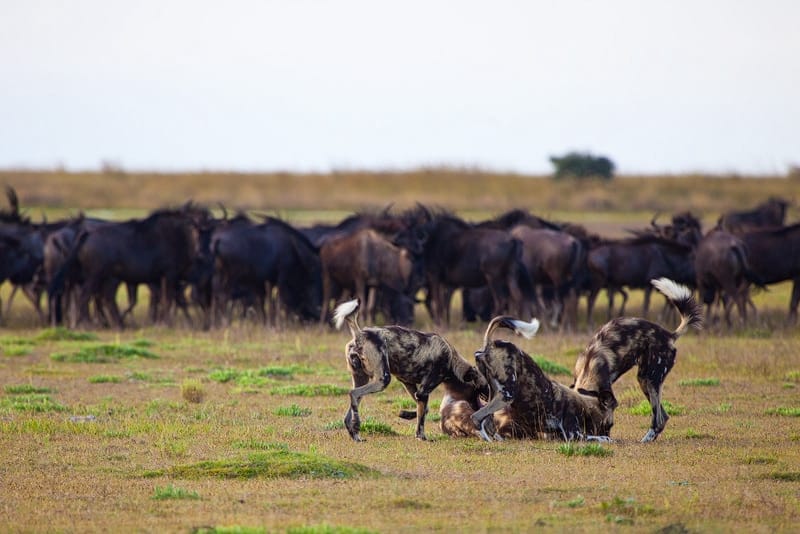
These pans attract a surprisingly large variety of species, including marabou and saddle-billed storks, spoonbills, and herons, plus a noteworthy bird rarely found in groups elsewhere – the Slaty egret. Another notable highlight is the hyena population. Estimated at around 600, they take the top spot as Liuwa’s apex predator.
Practical Advice for a Liuwa Plain Safari
- The best time to visit Liuwa Plain National Park for holiday is in November, when the wildebeest migration starts to gather steam. It’s also the last chance to catch the best game viewing before the ensuing rains render the network of dirt tracks impassable.
- The park is closed to self-drive travellers between December and May, with wet-season access by fly-in Zambia safaris only. Accommodation is limited to one very luxurious lodge, which operates most of the year, and a handful of basic seasonal campsites dotted along the wildebeest migration route. Permits (and a map of the park’s 4×4 network) are available from the town of Kalabo, south of the park.
Lower Zambezi National Park is one of Zambia’s premier wildlife destinations, certainly in the top three with South Luangwa and Kafue. Wildlife viewing is best along the rivers, which border the park on three sides.
The Zambezi River is the region’s main water source and the major attraction, both for visitors and game. There are no campsites inside the park, and all the lodges and tented camps are mid-range to luxury.
Highlights of Lower Zambezi National Park
The Lower Zambezi is known for its large populations of buffalo and elephants, which congregate along the Zambezi River during the dry winter months. Lions, leopards, and hyenas are also common, as well as large numbers of hippos and crocodiles.
If you’re feeling adventurous, you can take to the river itself – most lodges offer short canoe and/or boat excursions. Multi-day canoe safaris are also available, ranking among Africa’s most extraordinary experiences.
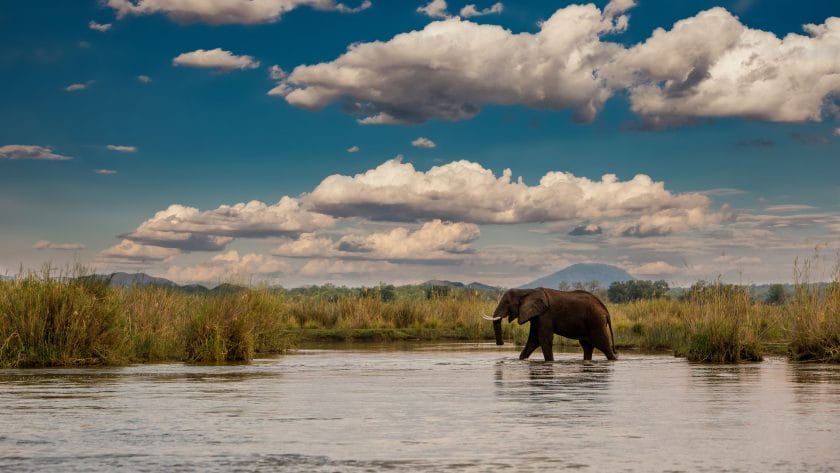
Although not without risk, these canoe safaris are truly unique, with experienced river guides leading small groups between the crocs and hippos down one of southern Africa’s wildest, most spectacular rivers.
Also on the river, tiger fishing is very popular, and the best conditions are between August and October. Many lodges cater specifically to anglers drawn to the area by the enormous tigerfish on offer.
Travel Tips for a Lower Zambezi National Park Holiday
- May to November is the best time to visit the Lower Zambezi, and the prime game-viewing season begins in June. October and November can get extremely hot, however, with daytime temperatures well over 40°C/104°F.
- Once the rains begin (usually by mid-November), most camps inside the park close. Between January and April, all the park’s lodges shut down, but there are year-round lodges and campsites outside the park, across the Chongwe River.
- Within Lower Zambezi National Park, there is no budget accommodation. Self-drivers can camp along the Zambezi to the west. Many visitors opt for a fly-in safari or drive to Chirundu and take a boat transfer from there.
- Several safari operators offer Lower Zambezi packages to the region, often at better rates than booking directly with a lodge.
South Luangwa National Park is arguably the best wildlife-viewing destination in Zambia. It has several excellent lodges and tented camps , with more budget accommodation available just outside the park at Mfuwe Bridge.
This Mfuwe section of the park gets relatively busy and can sometimes feel a bit touristy. The best options are further north along the Luangwa River, where there’s a mix of mid-range to luxury lodges and mobile camps, many open year-round.
Both parks offer day and night guided game drives and some of the best walking safaris in Africa .
Highlights of a North and South Luangwa Safari
South and North Luangwa are famous for their walking safaris, which are led by expert guides through some of Africa’s best game-viewing territories.
South Luangwa is home to many rare and endemic species, including Thornicroft’s giraffe, Cookson’s wildebeest, and Crawshay’s zebra, and there are plenty of elephants, buffalo, lions, and especially leopards.
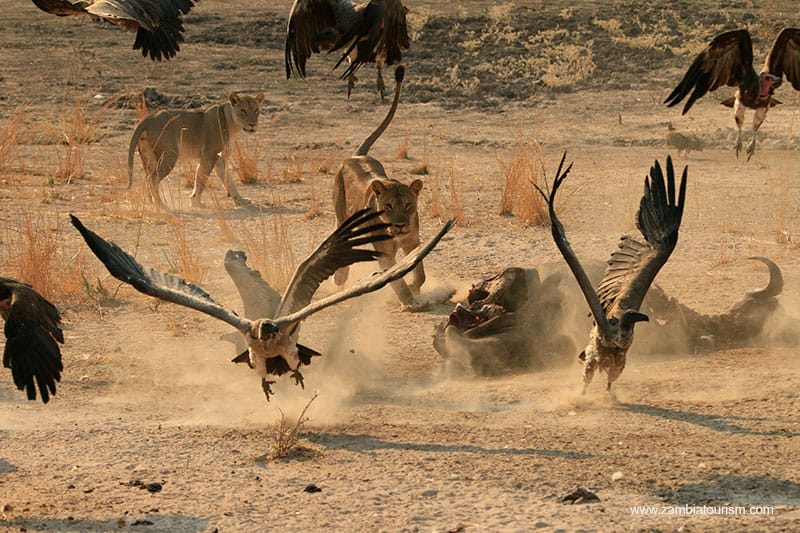
In late October, before the start of the rains, thousands of hippos gather in the Luangwa River’s deeper pools – an incredible spectacle as they jostle and fight for space.
Unlike most of Zambia’s parks, many camps in South Luangwa stay open during the rainy season, with boat safaris the major attraction. As the Luangwa River breaks its banks, shallow-draft vessels can navigate into the flooded riverine groves, one of Zambia’s unique safari highlights.
Practical Advice on a North and South Luangwa Safari
- Of all Zambia’s national parks, South Luangwa has the best network of all-weather roads, so both boat and game drive safaris are possible during the rainy season.
- During the dry season, fully-sufficient self-drivers can explore North Luangwa’s rough network of dirt tracks, a wild and beautiful adventure best done in convoy and with some previous 4×4 experience.
- October and November can get brutally hot in the Luangwa Valley, with temperatures well above 40°C/104°F. Walking safaris are not recommended; the best time to walk is between May and September.
- Fly-in North and South Luangwa Safaris are available throughout the year, and package deals booked through reputable agents are often cheaper than going direct to the lodges.
North-eastern Zambia is a vast, varied region – a mix of lush, open grassland, thick riverine forest, beautiful rivers, wetlands, and lakes. To the south, the Luangwa Valley area is the most accessible – by Zambian standards – and South Luangwa National Park is one of the country’s best, and most popular wildlife destinations .
Further north, access becomes increasingly difficult. The Great North Road, the T2 highway from Lusaka, is the north’s main artery. While it’s generally kept in reasonable condition, most secondary roads are rough and challenging and can be completely impassable in the wet season.
Many of the region’s few visitors forgo the bumpy, time-consuming roads and opt instead for fly-in North-Eastern Zambia safaris to the more remote highlights: North Luangwa and Kasanka National Park and the Bangweulu Wetlands.
Highlights of a North-Easter Zambia Safari
South Luangwa National Park is arguably Zambia’s best for wildlife. It offers the best combination of natural beauty, accessibility, wildlife, and a range of lodges, camps, and Zambia safari activities.
The Luangwa Valley is where the first-ever commercial walking safaris began, and they’re still a highlight of the region. They’re especially worthwhile in the more isolated North Luangwa National Park, known for its expert guides and pristine, largely unvisited wilderness.
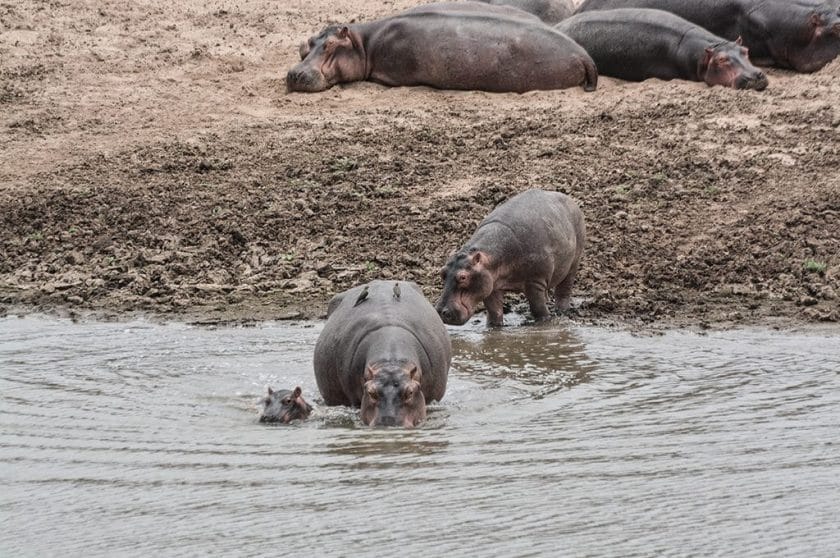
Northwest of Luangwa Valley, the Bangweulu Wetlands are wonderfully wild and remote. The few brave adventurers who visit usually do so for the endemic Black lechwe and the remarkable 1.5m-tall shoebill, which with its goofy smile could have been plucked from a fanciful Disney animation.
Nearby Kasanka National Park is a beautiful reserve and home to a sky-darkening, 10-million-strong bat migration in November and December each year. If you’re in the area, be sure to visit Shiwa Ng’andu estate, the incredible early 20th-century project of British-born Stewart Gore-Browne, who became one of Africa’s greatest champions for autonomy and self-rule. There are hot springs, fishing, canoeing, rafting, and guided walks nearby.
Practical Advice for a North-Easter Zambia Safari
- If you’re planning to drive, don’t drive alone. A northeastern Zambia safari tour is extremely challenging and remote and is only recommended for experienced 4×4 enthusiasts, ideally traveling in a convoy.
- Fly-in safaris are the norm here, and all the major camps and lodges offer air transfers, usually from Lusaka. It’s a good idea to book your entire trip with a single, reputable agent – they’re often cheaper than booking directly with a lodge.
- You’ll also get better rates if you stick with just one safari operator. The more prominent operators run multiple camps and lodges, with deals for more extended stays across their properties.
- Be aware that similar prices don’t necessarily denote a similar style. The most remote lodges are much more expensive to run, and you’ll pay a premium for the wildest, most exclusive locations.
Covering 5,000km² (1930 square miles) of Kalahari woodland, Sioma Ngwezi is Zambia’s third-largest national park. Tucked away in the country’s southwestern corner, it’s bordered by the Kwando River to the west (which also forms Zambia’s border with Angola) and Namibia to the south.
Once heavily affected by cross-border poaching, Sioma Ngwezi is seeing a revival. This has been made possible by several factors, including a slowly improving local infrastructure, good tourism numbers to nearby Livingstone, and, most importantly, the park’s inclusion in the Kavango Zambezi Transfrontier Conservation Area.
Combined with the impressive Ngonye Falls National Park further north, this is one of Zambia’s up-and-coming regions. A steady return in wildlife numbers makes it an exciting prospect for adventurous travelers.
Highlights at Sioma Ngwezi And Ngonye Falls National Park
Sioma Ngwezi has a history of excellent giraffe sightings. Although wildlife is still scarce and relatively skittish, small populations of Zambia’s other species still occur and are growing, including leopards, lions, and spotted hyenas.
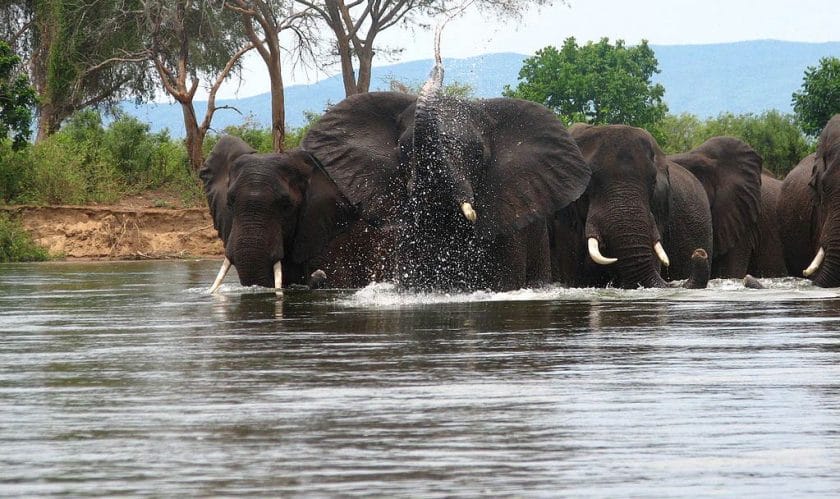
Water is also scarce, so the best wildlife viewing is just after the summer rains when the animals congregate around the drying pools. At just 25m/82ft high, Ngonye Falls may not be as grand as Victoria Falls, but what it lacks in stature, it makes up for in its impressive volume.
There’s also the chance to swim, fish, kayak, or go white-water rafting, all this far from the much busier Livingstone, a bumpy four-hour drive away.

Practical Advice for Sioma Ngwezi And Ngonye Falls National Park
- The best time to visit Sioma Ngwezi and Ngonye Falls national parks is from May to early June, just after the rainy season.
- Many of Sioma Ngwezi’s dambos (wetland pools) will still have water, and it’s the most prolific period for wildlife viewing.
- The falls at Ngonye (about 120km/74mi further north) are also at their best while the river is high.
- Unfortunately, the road from Livingstone is heavily potholed for long stretches. Still, with brand new tarmac laid further north, there’s hope that this southern section of the M10 will be resurfaced soon, making the journey from Livingstone much easier.
- Driving in Sioma Ngwezi is strictly 4×4 only, and there are no facilities inside the park.
Zambia’s southernmost region is also its most popular, dominated by the mighty Zambezi River, which flows east from the town of Sesheke to Mozambique. The river forms Zambia’s southern border with Namibia and Zimbabwe, and along this strip, you’ll find the country’s best infrastructure.
The T1 and T4 highways, which stretch from Livingstone to Lusaka and Lusaka to the Malawi border, are the country’s two major arteries. Naturally, the towns along these two main roads are the busiest but also the best equipped for travelers to Zambia. These are the access points for the country’s top highlights: Victoria Falls, Lake Kariba, and the Lower Zambezi National Park.
Highlights of a Southern Zambia Safari
Victoria Falls is one of the major highlights of Southern Africa . Although there are fewer viewpoints on the Zambian side, visiting the falls from Mosi-oa-Tunya National Park provides visitors with a quieter alternative to Zimbabwe’s much busier Victoria Falls National Park.
Further down the Zambezi, Lake Kariba is another highlight. With just a handful of small resorts on its northern shores, a few days on Lake Kariba is the perfect Zambia holiday if you enjoy fishing, canoeing, or simply relaxing on a stately houseboat.
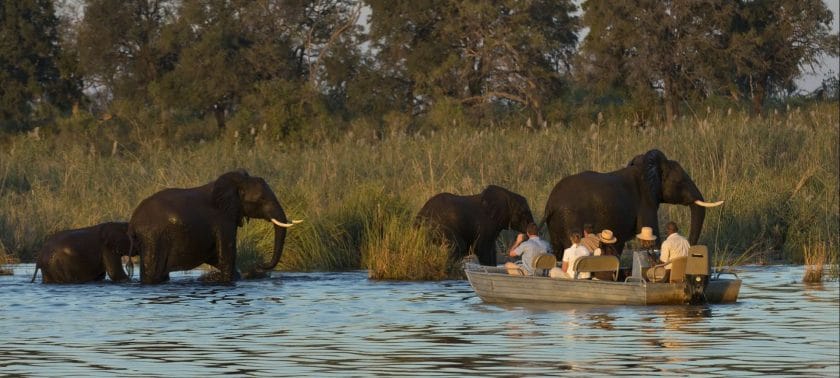
The lake also boasts a small number of game-rich islands, although passionate wildlife lovers should look to scratch that itch a little further east on a safari to Lower Zambezi National Park. Arguably the best park in the country, this magnificent reserve holds its own against Africa’s best. An open-top vehicle safari in Zambia here is not to be missed.
Practical Advice for a Southern Zambia Safari
- Zambia’s T1 and T4 highways are in relatively good condition, but sections are still severely degraded, and travel times, even over short distances, tend to be longer than expected.
- Allow plenty of time between destinations and avoid driving at night. Swimming in Lake Kariba’s shallows is also unsafe.
- The lake is home to numerous crocodiles and hippos, and the waterborne parasite bilharzia is an ever-present threat, especially along the shoreline.
- Southern Zambia is an excellent year-round safari destination, but it can become sweltering from late September until the rains begin in November.
- High temperatures and humidity make this region especially risky for malaria, so take appropriate precautions.
Arguably Africa’s most famous attraction, the 1.7km/1mi wide Victoria Falls, lives up to its hype, especially when viewed in full flow. At its peak between February and May, more than 550 million liters of water (enough to fill 220 Olympic-size swimming pools) spills into the Batoka Gorge every minute.
You can view the falls from Zambia and Zimbabwe, but Zambia tends to be quieter and more intimate. The flow may not reach the Zambian side from August to December, but day trips into Zimbabwe can be easily arranged.
Highlights of Victoria Falls in Zambia
Mosi-oa-Tunya National Park is well-geared for travelers, with an intimate network of pathways and viewpoints, a restaurant, and numerous information boards. The Zambian side also boasts what is probably the falls’ most dramatic viewpoint – the Knife Edge Bridge, which is completely shrouded in mist during peak flow.
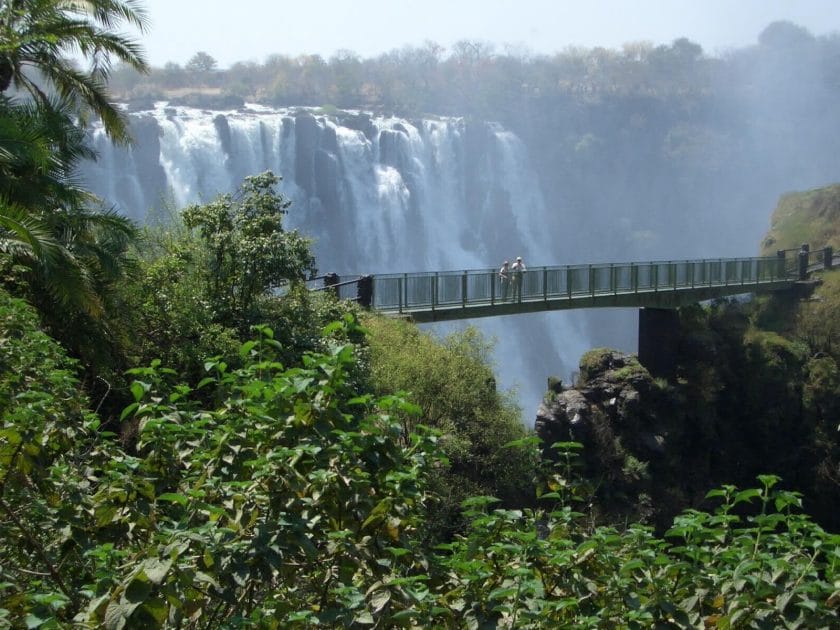
Above the falls, Livingstone Island and the Devil’s Pool are only accessible from the Zambian side, the latter a spectacular swimming spot right on the edge of the falls. It’s a major highlight, but for the brave only, and only open between August and January.
If adventure activities are your thing, there’s also skydiving, bungee jumping, abseiling, and white-water rafting. The rafting is also best between August and January when the river is lower, and the more difficult rapids are safe to run.
Travel Tips for a Victoria Falls holiday in Zambia
- It’s difficult to recommend the best time to visit Victoria Falls . Swimming in the Devil’s Pool is only possible when the water level is low (from August to early January), and white-water rafting is also best during this period.
- On the other hand, peak flow is incredible to see. These months, from February to May, give the falls its local name: Mosi-oa-Tunya, ‘The Smoke That Thunders’.
- If you’re visiting Victoria Falls during peak flow, take a raincoat and waterproof shoes (or flip-flops). You’ll certainly get soaked if you don’t. Plastic ponchos are also available to rent at the park’s entrance; an extra one will help shield your camera.
- There’s no shortage of hotels, lodges, and tented camps in the area. The upmarket lodges are generally along the upper stretch of the Zambezi River, above the falls, while more affordable backpackers and hotels can be found in Livingstone town.
Western Zambia’s topography is primarily defined by two of its most significant rivers: the Zambezi and the Kafue, which have carved broad valleys into Zambia’s plateaus over the millennia. Heavy rains from November to January cause them to swell over onto the surrounding grasslands, creating extensive, swampy floodplains for a few months each year. Several pans dot the region, and some hold water year-round.
At the extreme west, Kalahari sand dominates, while miombo woodland, papyrus swamps, and a handful of evergreen forests make up the remaining major flora. The region suffered during southwest Africa’s border conflicts of the 1970s and 80s, and it’s still one of Zambia’s least developed areas.
These days its parks are bouncing back fiercely, and new tar roads east of the Zambezi are making access significantly more manageable.
Highlights of a Western Zambia Safari
Western Zambia encompasses the wildest stretch of the Zambezi River, and its highlights are equally untamed.
A handful of isolated lodges and camps make the most of the area’s aquatic riches, offering challenging but exceptional tiger and bream fishing opportunities.
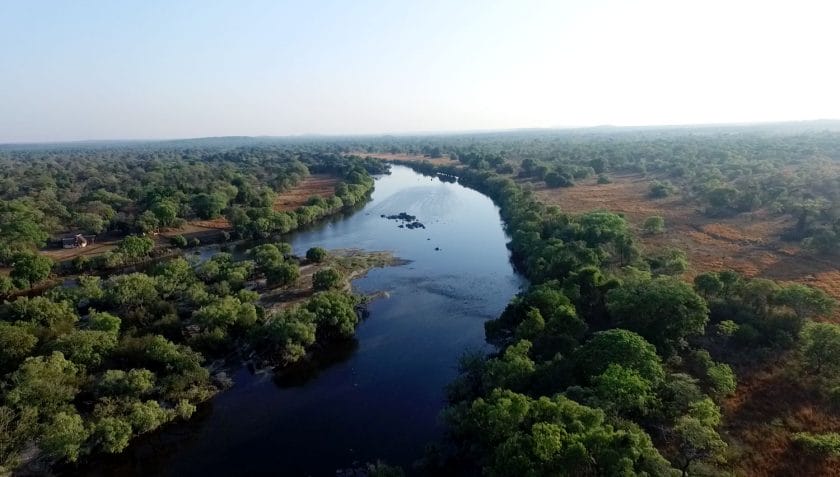
Seasoned off-road enthusiasts will find the Kalahari sand equally challenging, and exploring this region in a 4×4 requires good backup and patience. Rewards come in the form of quiet, underexplored parks such as Sioma Ngwezi National Park and the magnificent (and more easily accessed) Liuwa Plain National Park, as well as natural wonders such as Ngonye Falls.
Combine this with the resurgence of nearby Kafue National Park , Zambia’s biggest national park, and it’s an unmissable region for a truly wild experience.
Practical Advice on a Western Zambia Safari
- Sparsely populated, wild, and untamed – the features that make this region attractive for the adventurous also make it essential to be well prepared, especially if you’re self-driving.
- As a rule, fuel becomes scarcer the further north you travel, so fill up in the south and always carry extra. Much of the extreme west is undrivable during the rainy season, as are large parts of the Kafue Valley.
- It’s highly inadvisable to travel in one vehicle only – a small convoy of three or more is best. A GPS and prior 4×4 experience are essential.
- For most travelers, it’s recommended to book an all-inclusive stay with a lodge or tented camp, either within one of the parks or along the Zambezi River. Allow them to handle your transfers, which will typically be from Livingstone.
- Not all lodges operate during the rainy season, but those that do usually offer fly-in options. Reduced prices are sometimes available to encourage bookings, and it can be an excellent time to visit, especially for peace and quiet and the abundant birdlife.
- Note that fishing is banned on the Zambezi River from December to the end of February.
Zambia, a captivating destination in southern Africa, offers a wealth of natural beauty, wildlife, and cultural heritage.
From the breathtaking Victoria Falls to the rich biodiversity of its national parks, Zambia promises unforgettable experiences for every traveller.
Here are some must-visit places in Zambia.
1. Victoria Falls

Overview: Known locally as Mosi-oa-Tunya, meaning “The Smoke That Thunders,” Victoria Falls is one of the most stunning natural wonders of the world. This UNESCO World Heritage site spans the border between Zambia and Zimbabwe and is renowned for its breathtaking beauty and immense power. The falls’ thunderous roar and mist create a captivating atmosphere that mesmerises visitors.
Unique Facts:
- Largest Waterfall: Victoria Falls is one of the largest waterfalls in the world, with a width of 1,708 metres and a height of 108 metres.
- Rainforest: The constant spray from the falls sustains a unique rainforest ecosystem.
- Adventure Hub: The area is a hotspot for adventure activities such as bungee jumping, white-water rafting, and microlight flights.
- Devil’s Pool: During the dry season, you can swim in the natural rock pool right on the edge of the falls.
2. Livingstone

Overview: Named after the famous explorer David Livingstone, this historic town is the gateway to Victoria Falls and offers a range of cultural and adventure activities.
Beyond its historical allure, Livingstone’s lively community, characterised by diverse cultural traditions, festivals, and warm hospitality, adds a dynamic and welcoming atmosphere.
- Livingstone Museum: The oldest museum in Zambia, it offers extensive exhibits on Zambian history, culture, and natural history.
- Adventure Capital: Known as the adventure capital of Zambia, Livingstone offers activities like bungee jumping, gorge swings, and helicopter flights over Victoria Falls.
- Cultural Tours: Visitors can explore local villages and markets to experience the vibrant culture and traditions of the Zambian people.
- Historical Sites: The town has numerous historical sites, including the Victoria Falls Bridge, which was completed in 1905.
3. South Luangwa National Park

Overview: South Luangwa National Park is famed for its prolific wildlife and pioneering walking safaris. This park offers one of Africa’s most authentic and thrilling safari experiences.
Its unique landscapes, from dense woodlands to open plains, provide the perfect backdrop for spotting an array of wildlife.
- Wildlife Density: Home to over 60 species of mammals, including a significant population of leopards and one of the highest concentrations of hippos.
- Bird Paradise: Over 400 bird species can be found here, making it a haven for birdwatchers.
- Walking Safaris: South Luangwa is the birthplace of walking safaris, allowing visitors to experience wildlife up close.
- Baobab Trees: The park features ancient baobab trees, some of which are over a thousand years old.
4. Lower Zambezi National Park

Overview: Lower Zambezi National Park, located along the Zambezi River, offers stunning landscapes and diverse wildlife. The park’s unique combination of river and land-based activities provides a dynamic safari experience, where the interplay of water and wildlife creates unforgettable moments.
- Zambezi River: The park’s main feature is the mighty Zambezi River, which attracts a wide range of wildlife.
- Canoe Safaris: Lower Zambezi is renowned for its canoe safaris, allowing close encounters with hippos and crocodiles.
- Fishing: The river is famous for sport fishing, particularly for tiger fish.
- Night Safaris: Unique night safaris offer the chance to see nocturnal animals such as leopards and hyenas.
5. Kafue National Park
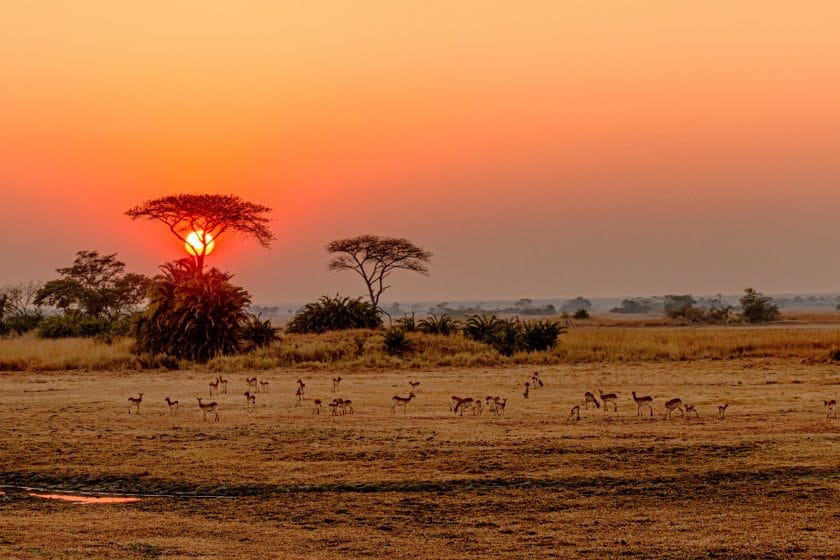
Overview: As Zambia’s largest national park, Kafue offers a vast and remote wilderness teeming with wildlife. It is one of the oldest parks in Africa, established in 1924, and covers an area of about 22,400 square kilometres. Kafue’s diverse ecosystems, from wetlands to savannahs, support a wide array of species.
- Busanga Plains: This seasonal floodplain is a prime spot for viewing large herds of antelope and predators like lions and cheetahs.
- Diverse Habitats: Kafue’s varied landscapes include miombo woodlands, riverine forests, and floodplains.
- Endemic Species: The park is home to several rare and endemic species, such as the red lechwe and the elusive sitatunga antelope.
- Birdlife: With over 500 bird species, Kafue is a paradise for birdwatchers.
6. Liuwa Plain National Park

Overview: Liuwa Plain National Park is renowned for its dramatic landscapes and the second-largest wildebeest migration in Africa. It offers a unique and remote safari experience, where vast plains stretch to the horizon and wildlife roams freely in a pristine environment.
- Wildebeest Migration: Liuwa Plain hosts Africa’s second-largest wildebeest migration, with tens of thousands of wildebeest moving across the plains.
- Lions of Liuwa: The park is famous for its resilient lion population, particularly the story of Lady Liuwa, a solitary lioness who lived in the park for many years.
- Cultural Heritage: Liuwa Plain has a rich cultural history, with the Lozi people having lived in harmony with the wildlife for centuries.
- Birdwatching: The park is a birdwatcher’s dream, with over 330 species recorded, including the endangered wattled crane.
Zambia’s diverse destinations provide a rich tapestry of experiences for travellers. Whether you’re seeking the awe-inspiring beauty of Victoria Falls, the immersive wildlife encounters of South Luangwa and Lower Zambezi, or the remote and untouched wilderness of Kafue and Liuwa Plain, Zambia promises an adventure of a lifetime.
Explore the vibrant town of Livingstone for a blend of culture and thrill. Plan your trip to Zambia and discover the beauty and wonder of this incredible country.
Travel with Confidence
With over 20 years of experience, our team will help you tailor your itinerary to your perfect adventure., 24/7 support, personalised, popular zambia safaris.
Experience the thrill of a Zambian safari, where you can witness an abundance of wildlife in their natural habitats. Zambia is renowned for its walking safaris, game drives, and river safaris, providing unforgettable encounters with nature. Whether you prefer exploring on foot, by vehicle, or by boat, there are numerous options to suit every adventurer.
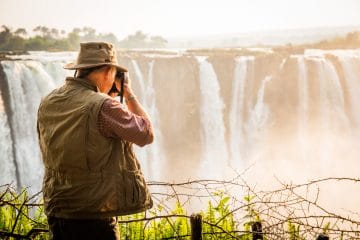
Livingstone Discovery
Zambia Livingstone Victoria Falls
From $ 1570 /USD
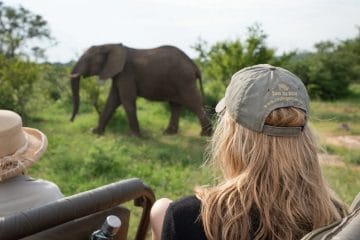
South Luangwa and Lower Zambezi Safari
Zambia South Luangwa Lower Zambezi
From $ 6090 /USD
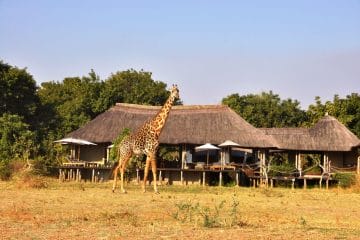
Cape Town, The Falls and South Luangwa Safari
Southern Africa South Africa Cape Town Zambia Livingstone South Luangwa
From $ 6290 /USD
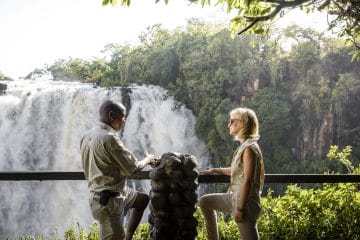
Zambia Safari Adventure
Southern Africa Zambia South Luangwa Lower Zambezi Victoria Falls
From $ 6515 /USD
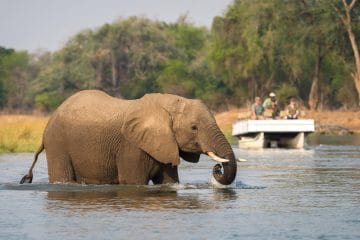
Luxury Vic Falls, Hwange and Mana Pools Safari
Southern Africa Zambia Livingstone Zimbabwe Hwange Mana Pools
From $ 8230 /USD
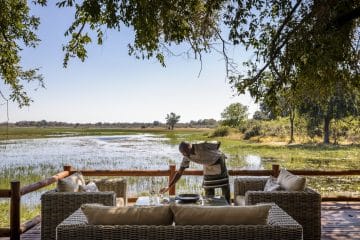
Vic Falls, Chobe and Delta Luxury Fly in Safari
Zambia Victoria Falls Botswana Chobe Okavango Delta
From $ 7620 /USD

22 Zambia Safaris to choose from
Stay for 4 - 10 days
Experience our Tailor-made Tours in Zambia
When is the best month to travel to zambia.
Choosing the right time to visit Zambia can enhance your travel experience. Different seasons offer unique advantages, from ideal wildlife viewing during the dry season to vibrant landscapes and excellent bird watching during the wet season. Understanding the seasonal variations can help you plan the perfect trip tailored to your interests.
- Zambia in January
- Zambia in February
- Zambia in March
- Zambia in April
- Zambia in May
- Zambia in June
- Zambia in July
- Zambia in August
- Zambia in September
- Zambia in October
- Zambia in November
- Zambia in December
Our Recommended Tours in Zambia
Discover Africa offers carefully curated tours to help you experience the best of Zambia. Our recommended tours are designed to provide a perfect blend of adventure, wildlife, and cultural immersion. Enjoy expertly planned itineraries that ensure a memorable journey through Zambia’s most captivating regions.
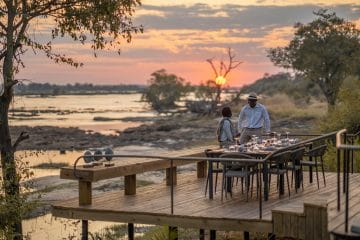
Zambia Discovery Safari
Southern Africa Zambia Victoria Falls Kafue South Luangwa
From $ 9370 /USD
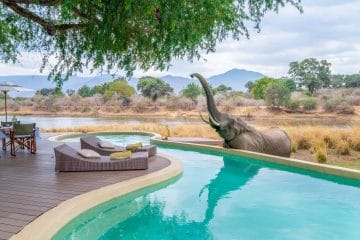
Best of Zambia Safari
Southern Africa Zambia South Luangwa Lower Zambezi
From $ 10900 /USD
Looking for Something Unique?
For those seeking a truly unique experience, Zambia offers off-the-beaten-path adventures and hidden gems. Explore extraordinary activities and lesser-known destinations that promise unforgettable moments. Whether it’s engaging with local communities or discovering hidden natural wonders, there are endless opportunities for unique experiences in Zambia.
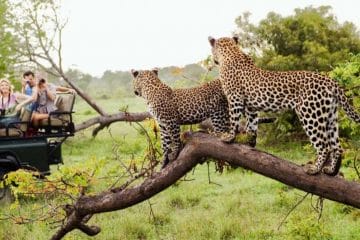
Honeymoons in Africa
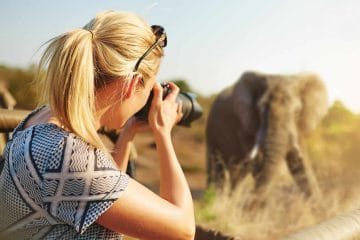
Family and Kid-Friendly Safaris
Zambia Safari Reviews
Hear from our guests who have experienced the wonders of Zambia. Their stories of exceptional trip planning, life-changing adventures, and memorable experiences reflect the magic of our safaris and the unmatched beauty of Zambia. Visitors have marvelled at the sight of Victoria Falls, thrilled at close encounters with the Big Five, and enjoyed the serene beauty of Zambia’s landscapes. Cultural interactions with local communities, combined with the luxury and comfort of our lodges, have turned their safaris into unforgettable adventures. Come and experience the awe-inspiring wildlife, stunning scenery, and unique cultural heritage that our guests rave about.
Exceptional service!
South Africa Family Safari Review
Stuart, Australia 10 Jul 2023
I'll never travel without an agent again.
Kenya Safari Review
Sarah Kirkpatrick, Canada 20 Feb 2020
100% thrilled with discover africa and matthys..
Big Five Safari Adventure Review
Jodi, Canada 14 Mar 2019
Very nice etosha holiday, thanks to discover africa safaris.
Etosha National Park Safari Review
Wasén, Sweden 01 Dec 2017
A wonderful time in sa and botswana.
South Africa and Botswana Adventure
Gerry, United States 10 Jun 2016
Highly recommended tour operator which exceeded our expectations. thank you.
Discover Africa Holiday Review
Kerfoot Family, Australia 02 Jan 2008
Ready to plan your tailor-made safari.

Vihann Van Wyk, Safari Travel Planner
Free safari planning advice from destination experts
See zambia in your comfort.
Zambia caters to all travel styles, offering a range of accommodation and transport options to suit your preferences. From luxurious safari lodges and tented camps to budget-friendly guesthouses and self-catering chalets, Discover Africa ensures you’ll find the perfect place to stay. Travel at your own pace with self-drive safaris, expertly guided tours, or exclusive private charters, providing a comfortable and personalized experience throughout your journey. Enjoy the freedom to explore this iconic destination in a way that suits you best, whether it’s an intimate bush escape, a family adventure, or an exhilarating self-drive safari.
- A Luxury Zambia Safari
- Affordable Zambia Safari
- Budget Zambia Safari
Zambia has several superb luxury tented camps and lodges located in some of Africa’s most remote, unspoiled wildlife areas. Private, all-inclusive luxury packages are available from between $600 and $1200 a day, which is good value compared with luxury safaris in Botswana and South Africa.
At the lower end of this relatively broad price range, the quality is still of a very high standard, and it’s this, along with its exceptional wildlife and relatively quiet national parks, that makes a luxury safari in Zambia an extremely competitive luxury safari destination.
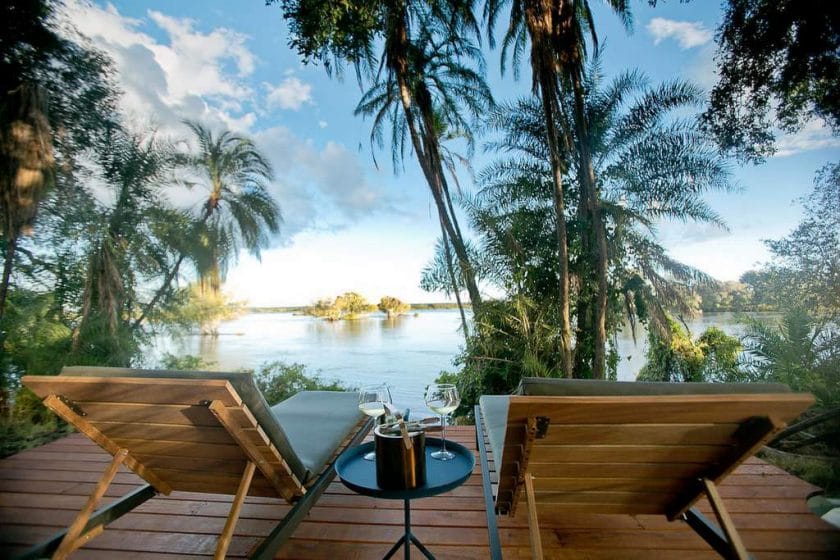
Most of Zambia’s luxury safari lodges are concentrated in South Luangwa National Park and the Lower Zambezi National Park, along the banks of the Zambezi River. Lodges along the Zambezi offer unforgettable canoe safaris and sunset boat cruises, with excellent bird life and large elephant, buffalo, and hippo populations. South Luangwa National Park is famous for its walking safaris and wilderness trails, with all of the Big Five, except the rhino, in abundance.
For more affordable luxury, try Victoria Falls and Kafue National Park, or for the ultimate in exclusivity, head northwest to Liuwa Plain National Park for Africa’s second-largest wildebeest migration . Liuwa Plain has only one permanent camp inside the park, offering one of Zambia’s most luxurious private lodge experiences.
Affordable safaris in Zambia offer the best value for money in their midrange and more luxurious deals, with all-inclusive safari tours often significantly cheaper than equivalent packages elsewhere in Africa.
Equivalence is difficult to measure, but the quality and exclusivity of Zambia’s midrange camps and lodges are hard to beat. All-inclusive safaris are also the easiest way to see Zambia’s most pristine wilderness areas and enjoy some of the best wildlife-viewing conditions in Southern Africa.
At the lower end of the price range, you’ll find short, fully-catered camping safaris from between $175 and $200 a day, provided you’re willing to join a group. Tours usually run from Lusaka or Livingstone, with a few days in Kafue and/or one of the other nearby parks.
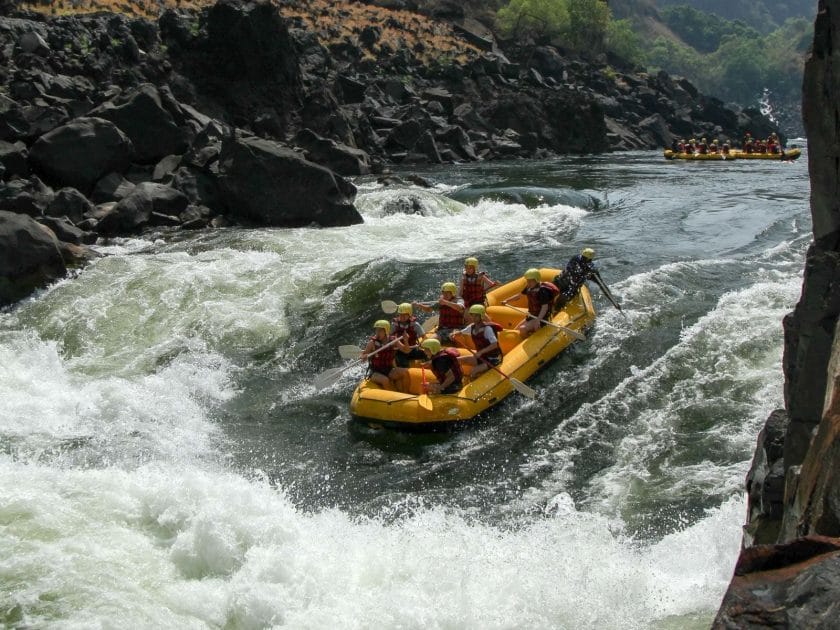
Short safaris in Zambia like this can be an excellent add-on to a more budget-conscious holiday. In contrast, longer, fully-catered safaris in Zambia are available from $1200 to $1800 a week, depending on the number of lodge nights and activities included.
Self-catering, private houses are also an option, usually located in excellent game-viewing areas. Prices can vary wildly, however – anything from $400 to $4000 a night. This can still represent good value for families and groups of six or more, although food and wildlife activities are usually not included.
More exclusive, private safari packages start at around $350 a day, and these will probably also include a few nights of comfortable, full-catered camping.
Budget $450 to $600 daily for private, all-inclusive lodge or tented camp deals. In this bracket, you can expect high-quality guiding, exclusive, pristine wilderness areas and lodge and tented camp accommodation at near-luxury standards.
Zambia offers excellent value on exclusive safaris and wildlife activities, but budget travelers in Zambia will struggle to make the most of what’s available. This is partly because many of Zambia’s best wilderness areas are extremely hard to reach, with wonderfully isolated lodges that are expensive to run.
Getting to these areas can hit the budget hard, with long 4×4 transfers or charter flights required. Staying close to Livingstone and/or Lusaka will reduce costs but limits your options to the immediate area. Renting a camping-equipped 4×4 is the most affordable way to explore Zambia properly, especially if you’re traveling in a small group.
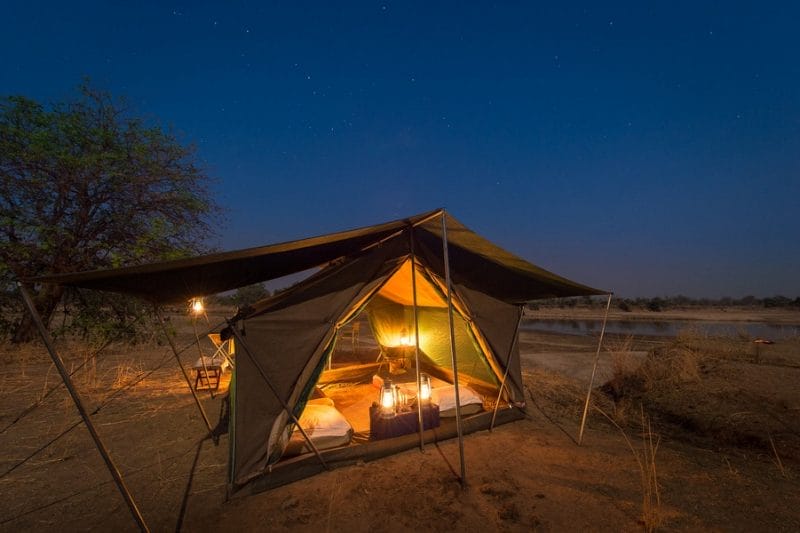
With four people in a vehicle, you can expect to spend around $120 per person per day, including fuel, camping, park fees, and food. Be aware, however, that Zambian roads can be challenging, and some previous 4×4 experience is highly recommended.
On a very tight budget, your best bet is to base yourself in Livingstone and take advantage of the excellent adventure and safari options nearby. These can be pricey, too, with a Victoria Falls bungee jump at $160 a person and white-water rafting at $130 a day.
A double room at a backpacker starts at around $45 a night, so if you’re just passing through Zambia, you’ll probably spend about $50 a day on basic accommodation, food, drinks, and public transport. This can quickly become $150 a day with a guided safari and a few adventure activities thrown in.
Holiday Styles and Options in Zambia
Zambia offers a variety of holiday styles to suit every traveller. Whether you seek adventure, relaxation, or cultural immersion, options abound. Enjoy thrilling game drives, serene bush walks, vibrant cultural tours, or luxurious retreats. Customize your trip with activities like guided safaris, bird watching, local community visits, and wildlife photography. Discover Africa’s tailored packages ensure a memorable and personalized experience in Zambia.
- Active Holiday in Zambia
- Adventure Holiday in Zambia
- Birding Safari in Zambia
- Photographic Holiday in Zambia
- Relaxed Holiday in Zambia
- Romantic Holiday in Zambia
- Walking Safari in Zambia
Zambia’s village communities hold centuries of traditional wisdom to stop you in your tracks. Still, it’s Mother Nature’s ‘Smoke that Thunders’ (known as Victoria Falls to most) that steals the show as Zambia’s standout attraction. Thrilling Zambia safari activities play worthy supporting roles in Victoria Falls’s show-stopping spectacle.
Zambia is home to what is arguably the best whitewater river on earth. From the start of your adventure beneath Victoria Falls, this is a trip with it all. With great fun, warm whitewater rapids, and stunning beaches to camp on, Zambia is so much more than a natural wonder and a river. You’ll see incredible wildlife during your active holiday in Zambia, sometimes even from your hotel.
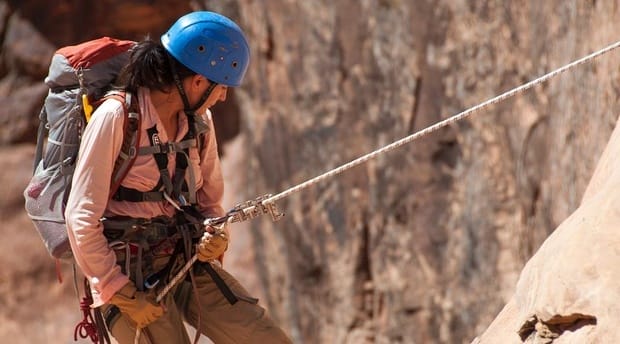
Combine rivers reflecting the sunrise, crashing waterfalls, and an animal-populated wilderness, for an unforgettable active holiday in Zambia. To follow nature’s path on foot is an experience as special as the diverse landscape you’ll explore. You’ll be mesmerized by the slower pace of life that flows in line with the rise and fall of the great Zambezi River, and awestruck by the raging rapids of Victoria Falls.
White-water River Rafting in Zambia
Batoka Gorge is considered to be one of the best stretches of commercially run river in the world and provides one of the most intense sensory thrills fathomable. It has twenty-three whitewater rapids and striking scenery deep within the sheer black cliffs, which afford the adrenaline junkie a wild roller-coaster ride along a route carved over millennia by the Great Zambezi.
From March to July, only the last 13 rapids can be attempted when the river is high. From June to February, all 23 are navigable as the water subsides.
Abseiling on a Zambia vacation
Expert tour operators ensure a safe and highly enjoyable experience for clients. On reaching the base of the gorge, you can walk out or be hauled back up. The walk back up has been designed as an integral part of the day’s activities. A gentle slope with plenty of rest stops has been chosen. It’s a pretty walk, especially when all the trees are in leaf during the wetter summer season from November to March.
Gorge Swinging on a Zambia Safari
These activities are operated on a spectacular site above rapid number 7. You will freefall for about 50 meters before swinging out into the middle of the gorge.
After several pendulum swings, you’ll be lowered to the ground, where you can take a track back up to the top of the gorge. This can also be done as a tandem.
For a true adventure, a self-drive 4×4 safari through Zambia is guaranteed to thrill. It’s best done well into the dry season (mid-June to October), when tracks inside the national parks are at their driest, and there’s less chance of getting stuck. Even then, thorough preparation, good backup (minimum two vehicles), and some previous African 4×4 experience are essential.
Zambia is one of Southern Africa’s most challenging off-road destinations, and you’ll need to be entirely self-sufficient. Essentials include a good map, a GPS with up-to-date software (Tracks4Africa is best), vehicle-recovery equipment, spare tires, a compressor, extra fuel, food, medical supplies, and a satellite phone for emergencies.
If you’re keen on self-driving but feel a little daunted, hop-in guides are sometimes available from camps inside Zambia’s national parks . For around $50 a day, a guide can provide both route and road advice and local wildlife and bird expertise.
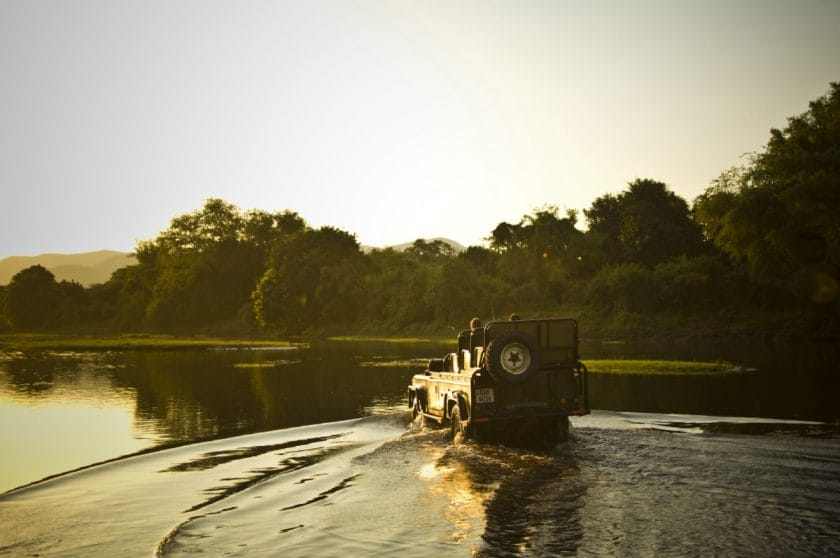
It’s a great way to heighten the experience, save time and reduce stress, especially for less-experienced drivers. For multi-day trips, guides typically bring their own tents and food. They can be hired via reputable in-country safari operators, but check availability well in advance.
The most popular, and probably the easiest, 4×4 route is up from Livingstone/Lusaka into the Luangwa Valley. The road from Lusaka is tarred (though badly potholed in places), and the network of tracks inside South Luangwa National Park is manageable, even for relatively inexperienced drivers.
Campsites for self-drivers are outside the park, so head for Mfuwe Bridge and take day trips from there. From South Luangwa, the more intrepid can head even further north and explore the network of more demanding dirt tracks that cross North Luangwa National Park. The remote wilderness, an abundance of game, and a lack of other travelers mean you’ll likely have excellent wildlife sightings entirely to yourself.
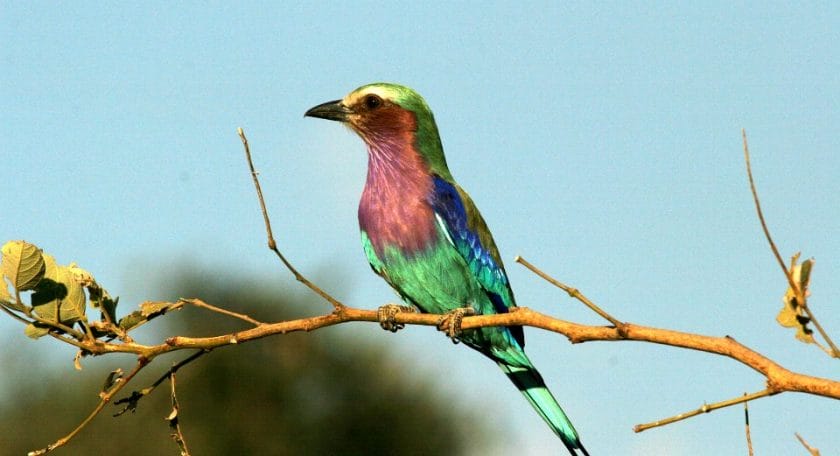
Kafue National Park is another popular option for self-drive safaris in Zambia. A tar road from Lusaka provides good access to Hook Bridge Gate, and in the dry season, the internal network of roads is extensive and very productive for spotting wildlife.
Western Zambia and the upper Zambezi River area are among the more adventurous regions for experienced drivers. New tar roads have made access to parks such as Liuwa Plain easier, but there’s still an extensive network of sandy tracks on either side of the Zambezi River that feel remote and will test your navigation skills.
A smattering of tiger fishing camps along the river with good facilities complete a truly wild experience. Some even offer multi-day river safaris up through the Barotse Floodplain to the Angolan border. For those who love being out on the water, a guided river-whacking adventure with wild camping along the Zambezi River is the kind of experience that will live on in the memory for a lifetime.
If you want to try a change from the more traditional abseiling, then you can also try rap jumping, where you descend the rock face facing the ground and keep pushing off from the rock face as you head towards the bottom of the gorge.
River Boarding in Zambia
For the more adventurous, it’s possible to experience river boarding on the great Zambezi. Armed with a body board, a wetsuit, a life jacket, helmet, and fins, you will embark on a river journey playing in the currents, charging the rapids, and surfing some of the world’s biggest freshwater standing waves.
The most notable difference between river surfing and rafting is that you are entirely responsible for managing your own vessel on the river. Instructors teach and guide you, but in the end, it’s you taking on the rapids.
Zambia is the ideal destination for a birding safari – one of the rarest birds in Africa, the Shoebill, is found there. Zambia is a hot birding location with over 700 species found throughout the diverse ecosystems. One of the best times for birding safaris in Zambia is just before the summer rains arrive, when the arrival of many migrant species increases the local population.
Most of the avifauna is found on the Central African Plateau as this region has a diversity of ecosystems. Several hotspots include Bangweulu Swamps, Lochinvar National Park, the South Luangwa National Park, and Kafue. Another great spot with a dam that attracts a wide array of species is the Chimfunshi Wildlife Orphanage .
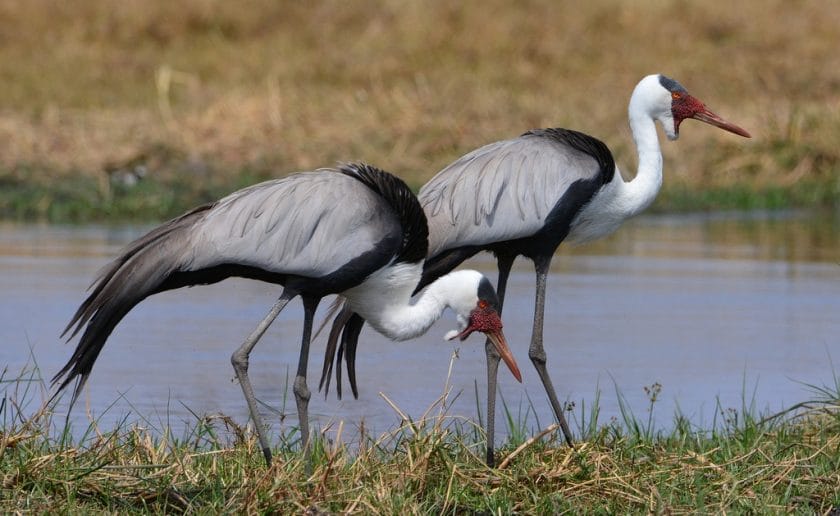
A canoeing safari offers a unique way to spot birds on safari in Zambia . Drift down the river with binoculars and a checklist in hand. Expect lots of excellent game sightings too. Choose from a tranquil upper Zambezi cruise just above Victoria Falls, or paddle down the lower Zambezi with game parks close by for a wilder adventure.
Lochinvar National Park is a small 450km2 (173 square mile) game park on the Kafue floodplains with 428 known species. Most game lodges in Zambia have expert guides who are skilled bird spotters and will be happy to take you on walks or drives through the bush.
Lochinvar National Park for Bird-watching in Zambia
The Lochinvar National Park is one of the best places in the world to see water birds in significant concentrations. Thousands arrive during the summer months when the rains occur. Although the park is accessible, there are no serviced campsites, so you need to be completely self-reliant.
It’s a great place to see the endangered Wattle Crane, Greater and Lesser Flamingos, and watch the daring acrobatics of the African Skimmers. There are numerous duck species, including the Whistling Duck and Fulvous duck. Additionally, there are many species of waders to delight as well.
It’s not just waterfowl that birders can look forward to, as the park is home to over 50 species of raptors, including Black Sparrow hawks and Peregrine falcons. Keep an eye open for the Narina Trogon and yellow-throated Sandgrouse.
South Luangwa National Park for bird-watching in Zambia
Perhaps a more accessible region for excellent birding safaris in Zambia is the South Luangwa National Park, home to around 400 of the 732 species found in Zambia. Birding here is at its best at the end of the dry season when the lagoons begin to recede. The best time to visit is during the wet season in summer, between November and March.
Zambia is an incredible country to photograph, with its stunning wilderness landscapes, superb birdlife, and some of the best opportunities for up-close wildlife interactions in Africa. Every corner of the country has something to offer, but two experiences, in particular, stand out.
In late winter, ideally just before the rains begin in November, keen photographers should head to Liuwa Plain National Park, where tens of thousands of Blue wildebeest gather in the second-largest wildebeest migration in Africa (after the Serengeti).
Then, for something truly unique, try a wet season photographic safari in Zambia to the Luangwa Valley and explore the swollen Luangwa floodplain by boat, drifting across the mirror-like waters through a dreamscape wilderness of half-submerged trees.

Of these two photographic safari options , Liuwa Plain is perhaps the trickier to undertake. If you’re self-driving, then some prior 4×4 experience is essential, and it’s best to travel in convoy, especially if you’re going for the wildebeest migration, which coincides so closely with the onset of the summer rains.
It’s difficult to time the journey precisely, and if the rains begin early, local rivers can flood quickly, turning roads to mud and making driving near impossible. Unless you’re experienced, joining an organized tour for photographic safaris in Zambia is best. Dedicated Zambia photographic safaris are available, specifically aimed at capturing the wildebeest.
There’s also a single high-end luxury lodge in Liuwa Plain National Park where guests can fly in and photograph the region on private game drives. Liuwa Plain is a fantastic birding destination year-round, but the coming rains signal the return of migrant species, and the wet season is the best time to photograph them in their breeding plumage.
Just about every kind of holiday in Zambia is intrinsically relaxing – there’s something especially rejuvenating about spending time in such wild, pristine wilderness. That said, there’s perhaps nothing more quintessentially relaxing than a fishing holiday, and a fishing holiday on a fully-catered houseboat is hard to beat.
Whether to fish or not is entirely up to you, of course. You could just as easily sip cocktails on the deck, watching the fish eagles fish instead, in between more drinks and naps. Lake Kariba is a beautiful place to unwind like this, and the sleepy town of Siavonga is where most of Zambia’s houseboat fleet is based.
Many of Lake Kariba’s houseboats operate from the Zimbabwean side – Kariba town is the focal point for houseboat adventures. The lake is enormous enough to accommodate hundreds of vessels without feeling crowded, but the Zambian side is the least busy, with even less chance of seeing other boats as you cruise.
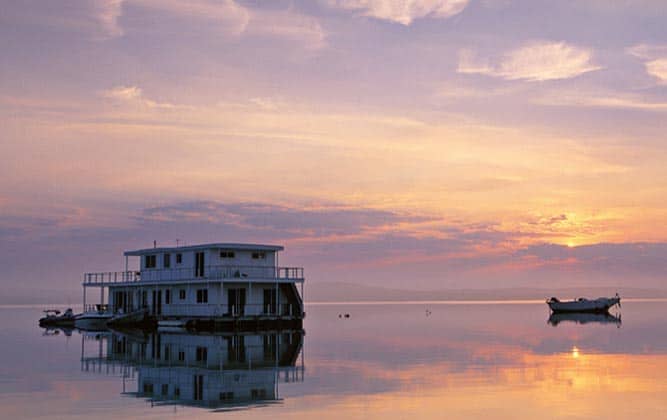
On multi-day voyages, you’ll explore the lake’s many inlets, then drift out towards the center to take in the vast scale. Hippos and crocodiles are common along the lake shore, but they rarely venture out to disturb the deeper waters.
Smaller launches can be towed behind the main houseboat allowing anglers to search out fishing spots more easily. There’s good fishing on Lake Kariba throughout the year, but locals say that months containing the letter ‘r’ are best for tigerfish.
September and October are perfect for tigers, and the season continues throughout the summer months when fishing on Zambia’s rivers is banned. Most operators will provide fishing gear and bait, but you’ll need to check carefully when booking and place any orders in advance.
Houseboat holidays are ideal for larger groups, with most offering cabin berths for between 10 and 30 people. They always come fully crewed, and fishing guides can be arranged. Whether you’d like to self-cater or hire a chef is up to you.
Several excellent, laid-back fishing lodges are also dotted around the lake – another very tranquil option if you’re not in a group. Again, fishing is not compulsory; you can always relax by the pool or take a sunset cruise.But do try to get out on the water at some point during your stay and let some of Kariba’s magic soothe your tensions.
Zambia’s tented camps and lodges are growing in stature. They may not yet be as well-known as those in neighboring Botswana and South Africa. Still, they offer excellent value and are ideal for couples and honeymooners looking for an all-inclusive romantic break .
Zambia has a reputation for smaller, more intimate camps and lodges. These are often owner-run, with attentive, friendly guides and staff who are supremely knowledgeable about the local fauna and flora and extremely accommodating to guests.
Many of Zambia’s best intimate lodges are also situated in the most pristine corners of the country. These stunning, hard-to-reach wildlife areas are often empty of other visitors, with no access for day trippers and no other camps or lodges for miles around.
Spending time in the such magnificent, unspoiled wilderness is a romantic experience that feels like a dream. Think of elephants sauntering past your flung-back chalet windows and outdoor sunset baths overlooking the African plains. Of course, it’s also the sort of experience that comes at a price – expect to pay anything from $600 to over $1000 a person a night for the most exclusive tented camps and lodges.
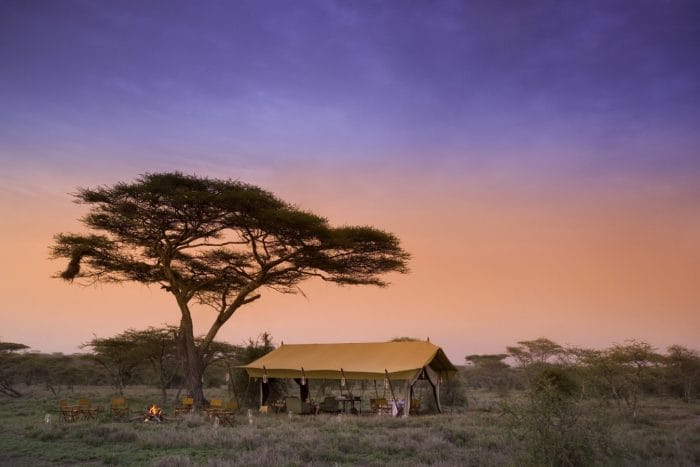
This will usually include park fees, all meals, alcoholic beverages, wildlife excursions, activities, and transfers. For an all-inclusive romantic safari in Zambia, this is very competitively priced for the region, especially considering that a safari in Zambia offers some of the best wildlife viewing in Africa.
For that once-in-a-lifetime experience with a loved one, a safari in Zambia is an underrated delight that still feels like Africa’s best-kept secret. To top it all off, include a few days at Victoria Falls – one of Africa’s great highlights and arguably the most impressive waterfall in the world .
The falls are most inspiring from March to June when the flow of water is at its greatest and vast plumes of mist and spray pour into the skies. If you live in the region, it makes an excellent spontaneous break. Local carriers offer frequent flight specials to Livingstone, and last-minute package deals, many aimed specifically at couples, are also regularly available.
Whether it’s a sunset cruise on the Zambezi River , a walk through the evergreen forests of Mosi-oa-Tunya National Park, or a helicopter flip over Victoria Falls, a romantic holiday in Zambia will not disappoint.
For a more active holiday, try a walking safari in Zambia. Zambia is arguably the best country in Africa for guided game walks and is widely recognized for its enthusiastic and highly knowledgeable field guides.
Now widespread throughout southern Africa’s major parks, the concept was first introduced in the Luangwa Valley, which remains the county’s top walking safari destination . Luangwa’s walking safaris are small-scale and extremely popular. So popular, in fact, that some trails book out far in advance. You’ll need to start planning up to two years ahead if you want to experience the best trails in peak season.
Walking safaris come in various forms, the most strenuous being multi-day mobile safaris, where you’ll hike from temporary camp to temporary camp, covering eight to 12km each day. The pace is generally slow and steady, with plenty of breaks to appreciate the surroundings.
It’s far more active than sitting in a vehicle, but the idea is to take things slowly and really get closer to nature. Zambia’s safari guides will turn every tiny detail into a captivating story – from the barest hint of an animal’s paw print to the tiny flowers and insects buzzing by.
Encountering predators on foot is extremely rare, but there’s a huge thrill just knowing they’re around. There’s always some danger with being out in such wild country on foot, but with such experienced guides, the risks are very low.
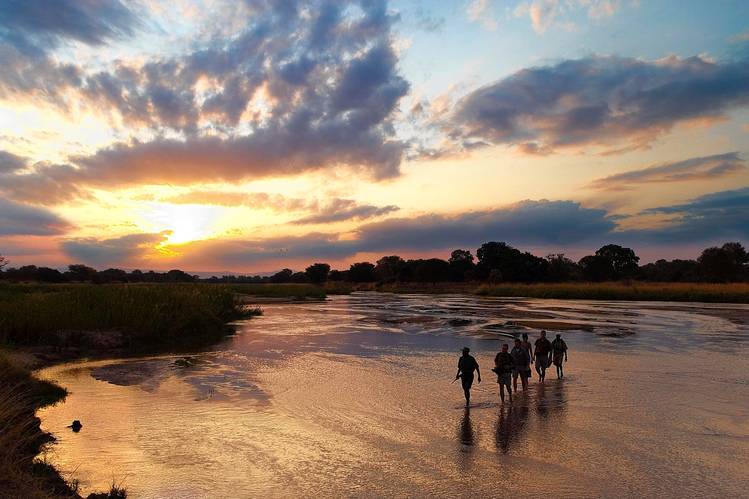
North and South Luangwa, the Lower Zambezi, and Kafue National Parks offer excellent walking safaris , and June to September is the best time to go. October is prime game-viewing season, but it can be too hot for comfortable walking, except perhaps in the very early morning.
If you like the idea of a walking safari, but not a multi-day hike, then shorter day and half-day excursions are also available (in fact, they’re the norm). These are often the highlight of any safari in Zambia – definitely not to be missed if the opportunity arises!
Consider a guided canoe safari on the lower Zambezi River for an even wilder active holiday. Again, half and full-day options are available from most camps in the region, or you can paddle the entire length of the Lower Zambezi National Park, finishing up on the Mozambique border.
As with the multi-day walking safaris, these canoe safaris are not meant to be overly strenuous. If a headwind kicks up, it can be heavy going, but the route is always run downstream and not intended to be a workout.
Again, there are risks involved, this time mostly from grumpy hippos. It’s one for the more adventurous as you’ll be carrying your gear and camping wild along the riverbank each night. This is one of Africa’s wildest stretches of river, and big game sightings are virtually guaranteed.
Who is Travelling to Zambia with you?
Planning your Zambia adventure? Tailor your journey with experiences designed for every type of traveller. Whether you’re exploring with a loved one, embarking on a family adventure, discovering solo, celebrating a honeymoon, or enjoying a trip with friends, Zambia offers unique and unforgettable experiences for all. Select your travel type to find the perfect itinerary and make the most of your safari holiday.
- Couple Holiday in Zambia
- Family Safari in Zambia
- Solo Holiday in Zambia
Because of its relatively late start in the global safari market, Zambia is perfectly positioned to offer couples the kind of unique experiences that its neighbors cannot. Many of its lodges, hotels and tented camps are small, intimate, and owner-run, which means there is healthy competition and a real commitment to giving guests a once-in-a-lifetime, truly memorable experience.
Finding the best region for a couples holiday in Zambia depends mainly on your budget. For remote exclusivity, wildlife destinations such as Liuwa Plain National Park on the Barotse Floodplain and South Luangwa National Park in the Luangwa Valley offer the kind of all-inclusive, fly-in Zambia safaris befitting a Hollywood-style honeymoon.
Generally, the more central parks, such as Kafue National Park and Lower Zambezi National Park, have a broader range of accommodations to suit couples looking for a more affordable break. Then there are the Upper and Lower Zambezi valleys, where close proximity to airports in Livingstone and Lusaka make destinations such as Victoria Falls and Lake Kariba great for couples and honeymooners looking for a short holiday.
Highlights of a couple of safaris in Zambia
For couples who love wildlife holidays, Zambia offers something genuinely unique. Towards the end of the rainy season, as the rivers swell to bursting and turn much of the landscape into inaccessible wetlands, a handful of lodges remain open, offering guests the chance to fly in and experience a safari by boat.
Certain lodges in Liuwa Plain and South Luangwa National Park are best known for these ‘Emerald Season’ experiences. Floating through extraordinary scenes of submerged trees beneath dense, green canopies alive with birds makes for a romantic safari vacation unrivaled anywhere else in the world.
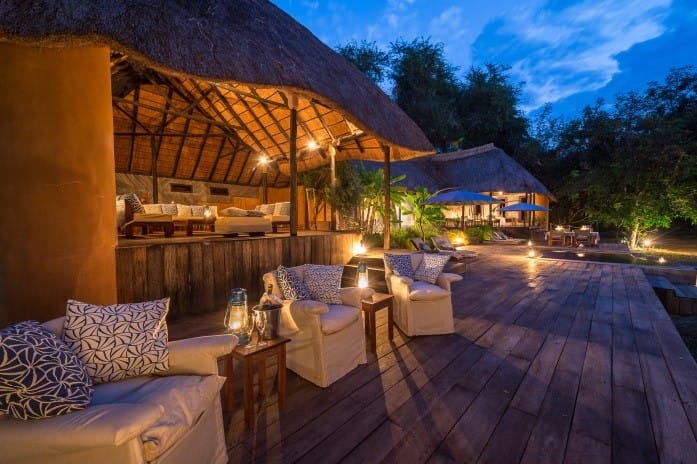
More affordable safaris and some of the best dry-season game viewing in Zambia can be found inside the Lower Zambezi National Park, where 4×4 self-drive travelers are welcome, and the scope of accommodation includes budget lodges, luxury tented camps, and campsites.
Of course, no couples’ holiday is complete without a visit to Victoria Falls . The go-to African destination for romance has it all – sunset cruises on the Zambezi River, the wild rush of water over Mosi-oa-Tunya’s misty walkways, and a range of all-inclusive holiday packages for a wide range of budgets.
Travel Tips for a couple safaris in Zambia
- Because Zambia’s lodges, hotels, and tented camps are usually smaller and more intimate than those of its neighbors, they also tend to get booked up quicker. Book at least six months in advance to avoid disappointment, and a year in advance if possible.
- Ensure you have up-to-date health and travel insurance and vaccination certificates. Guests should consider their choice of clothing too.
- Revealing items, such as very short shorts and short skirts, can offend and are generally frowned upon.
- Homosexuality is illegal in Zambia, and public displays of affection (whether same-sex or heterosexual) may also cause tension. However, it should be noted that these attitudes are more relaxed within the confines of lodges and hotels.
- While rates are generally given as per person sharing, some lodges will offer special couples’ rates for extended stays. It’s important to ask whether these include Zambia’s compulsory bed levy, which is from $10 a person a day and can add up quickly if not included in the price.
The last decade has seen a marked rise in family-friendly safaris in Zambia, with reduced prices for children and more activities geared towards kids and young adults. Not all lodges allow children, and some have age restrictions of eight or 12. Families, especially those with very young children, can find excellent value and flexibility in Zambia’s growing selection of exclusive-use safari houses.
These can be found throughout the country, especially in the prime wildlife regions around the Lower Zambezi and South Luangwa National Parks. The upper Zambezi Valley – Livingstone, Victoria Falls, and surrounds – is also well-suited for a family holiday. Several tour operators, lodges, and hotels have facilities and itineraries that cater to all ages.
As Zambia’s tourism hub, Livingstone has a variety of half-day and day tours with relatively short transit times that give families some flexibility when choosing what to do each day. Zambia’s major parks offer excellent wildlife and nature, so choose a destination based on a lodge or hotel’s family policy rather than focusing on a specific region. The Lower Zambezi and Luangwa Valley offer the broadest range of family-friendly safari accommodations , from low-key camps and private houses to high-end luxury lodges.
Highlights of a family-friendly safari in Zambia
Zambia has excellent potential for a memorable family holiday for families with teenagers (and older). Whitewater rafting down the Zambezi River, bungee jumping from Victoria Falls Bridge, and abseiling into the Bakota Gorge are activities where bragging rights and family bonding are guaranteed.
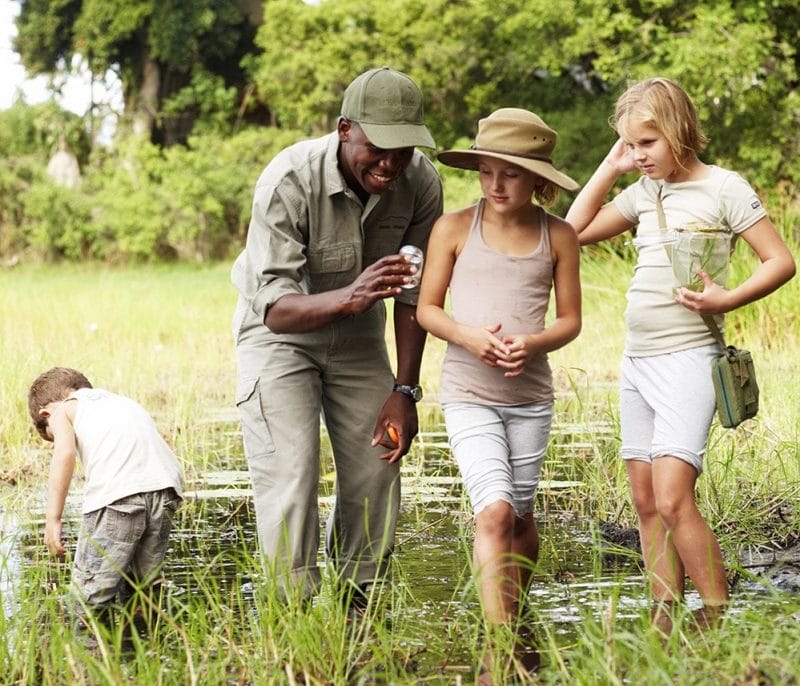
For the younger ones, a half-day tour of Victoria Falls or a visit to the Victoria Falls Snake Park or Crocodile Ranch tops the list of highlights in and around Livingstone. Zambia also boasts some of the best walking safaris in Africa . In fact, it’s in the Luangwa Valley where the concept of walking safaris first began. Zambia’s award-winning guides undergo rigorous testing, and many are specifically trained to guide young adults.
Walking through the bush with some of the world’s best safari guides can be the perfect recreation for inquiring young minds. However, it should be noted that national parks do not allow children under 12 to join a walking (or canoeing) safari. Various camps also impose higher age limits, so you must check with your hotel, lodge, or tented camp operator before you book.
Travel Tips for a family-friendly safari in Zambia
- Ensure that your family’s immunizations are up to date, especially those for measles, mumps, rubella (MMR), tetanus, polio, diphtheria, hepatitis A and typhoid. Immunization against rabies, hepatitis B, and TB are also recommended.
- Zambia is a malaria area, so you’ll need to consult your doctor on the available prophylaxis options for children.
- Note that some lodges that allow families also insist that those traveling with children (under eight mostly) should reserve a private vehicle and/or guide for game drives.
- Make sure you’re clear on all aspects of your accommodation’s family policy before you make a booking.
- Although it may not be the most prolific period for wildlife sightings, families should also consider visiting Zambia for safari in the shoulder- or off-seasons – April, May, and November. Lodges are generally quieter then and thus often more amenable to hosting younger children. Rates are also lower out of season, and family discounts are more frequently available.
As Zambia’s road and transport infrastructure continues to develop, even its more remote regions will become exciting options for solo holidays in Zambia. For the time being, however, the country’s more isolated corners are best explored in company, ideally with an extra vehicle as a backup if you’re planning to self-drive.
In general, solo travelers in Zambia will have the best experience by basing themselves in more populated regions with good infrastructure, a host of established tour operators, and a community of fellow travelers to meet and team up with.
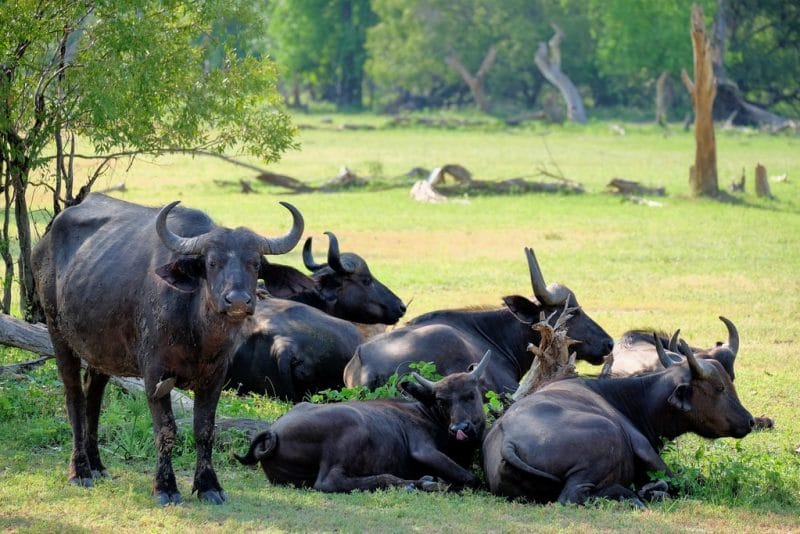
Livingstone delivers best on all of these. Its proximity to Victoria Falls, Mosi-oa-Tunya National Park, Kafue National Park, and even Lake Kariba means that a holiday centered in Zambia’s southernmost town is still the best option for those going it alone.
Lusaka, Zambia’s capital, is the other good alternative. Many group tours start in Lusaka, and you’ll find several trusted operators offering safaris and adventure holidays in the country’s central and northern regions, especially to Lower Zambezi National Park, Lake Kariba, and South Luangwa National Park.
Highlights of a solo safari in Zambia
Visiting Victoria Falls itself is a must. The walkways through Mosi-oa-Tunya National Park, which borders the falls and the stretch of the Zambezi River above them, are safe, fun, and easy to navigate alone.
Further options for solo travelers include a sunset cruise, kayaking, the famous Victoria Falls bungee jump, white-water rafting, or tiger fishing on the Zambezi River. Although the Zambezi flows through six countries, here – above Victoria Falls – is where travelers can experience Africa’s ‘River of Life’ at its finest and most spectacular.
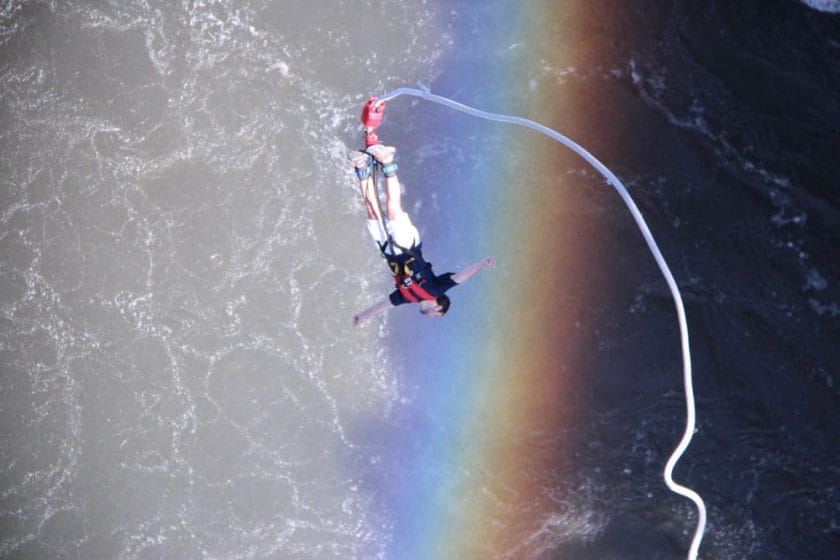
North of the falls, Kafue National Park is great for wildlife lovers and can be visited by joining a two or three-day group tour from Livingstone. More adventurous solo travelers in Zambia can head further afield to the Barotse Floodplain and Ngonye Falls on four or five-day tiger fishing safaris.
Almost equidistant from Lusaka and Livingstone, Lake Kariba is another top highlight, with everything from water sports to Big Five game viewing safaris on offer.
Travel Tips for a solo safari in Zambia
- Solo self-driving is not recommended in Zambia for safari. While the country is relatively safe and its people among the friendliest on the continent, the lack of infrastructure outside its built-up areas makes it extremely risky to travel alone.
- As a solo traveler in Zambia for safari, your safest (and indeed most affordable) option is to join one of the many group safaris offered by private tour operators. These usually start and end in Livingstone or Lusaka, and everything from budget camping to more luxurious group adventures is available. Ensure you have up-to-date health and travel insurance and vaccination certificates.
- English is widely spoken in Zambia, but learning a little about the local customs and attitudes is always appreciated. It will also help keep you from becoming a target for thieves and swindlers.
- These are not a major problem in Zambia, but be especially careful and attentive in tourist hotspots. It’s best not to walk alone at night, especially in larger towns, and to move confidently and purposefully during the day. Take particular care when drawing money and don’t carry more than you need with you on the streets.
What You Need To Know
Planning a trip to Zambia involves considering several important factors to ensure a smooth and enjoyable experience. From understanding visa requirements and health precautions to knowing the best times to visit and local customs, having the right information will help you make the most of your journey. Discover Africa provides essential tips and insights to help you prepare for an unforgettable adventure in this iconic wildlife destination.
- Zambia vs Botswana
- Zambia vs Namibia
- Wildlife in Zambia
- Zambia Travel Advice
- Visa Requirements for Zambia
- Travelling to Zambia
- Public Transport in Zambia
- Cash and Payments in Zambia
- Is Zambia Safe?
- At Your Lodge in Zambia
- Zambia Food and Tipping Practices
- The Cultures of Zambia
- Shopping and Markets in Zambia
- Packing List for Zambia
- Vaccinations for Zambia
- Medical Emergencies in Zambia
- Healthcare System Zambia
- Travel Insurance for Zambia
- Languages in Zambia
- When to Go on a Zambia Safari
When choosing between a safari in Zambia or Botswana, it’s clear that both are incredibly protected and have outstanding wildlife and national parks. Still, each is tailored to a very different style of traveler.
Botswana is possibly the best self-drive safari destination in Southern Africa, with decent connecting roads, plentiful wildlife, plenty of inexpensive campsites, and an effective bureaucracy that makes camp and national park bookings pretty simple with a bit of practice.
A Botswana Safari can also be considered one of the most luxurious safari destinations in Africa , with many first-rate luxury lodges, most especially in and around the Okavango Delta. Though a Botswana safari caters to both confident self-drive 4×4 explorers and well-heeled safari-goers, quality mid-range and more affordable luxury accommodation can be difficult to come by.
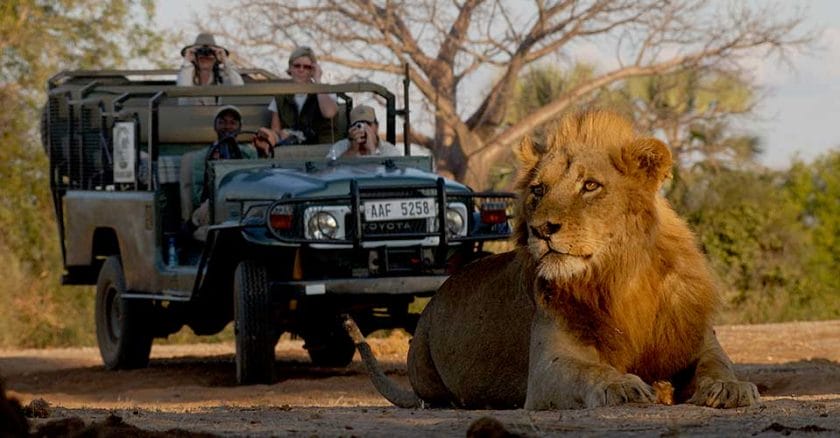
When comparing Zambia vs. Botswana in this category, a Zambia safari has much more to offer, with outstanding luxury experiences that are often half the price of comparable lodges in Botswana and private, exclusive-use houses and smaller eco-lodges that provide great value, especially for families and larger groups.
Zambia’s poorer-quality highways and more difficult-to-access wilderness areas make self-drive travelers’ lives much more difficult. Many who accept the conditions are rewarded with some of Africa’s finest nature and desert views, but self-drive visitors are few and far between.
When comparing Zambia vs. Botswana, this low-density exclusivity separates a Zambian safari as the perfect location for a luxury safari experience that won’t break the bank.
But it’s Zambia’s two ‘most unique’ attractions that are also its most famous. Both are shared along the border with Zimbabwe, and both are the biggest of their kind in the world. In full flood, Victoria Falls boasts Earth’s largest sheet of falling water, and downstream, Lake Kariba is the world’s largest man-made dam by volume.
Both offer superb adventurous and more sedate activities as well, from white water rafting, bungee jumping, and skydiving to canoe safaris, fishing, and houseboat cruises .
Zambia and Namibia are two of Southern Africa’s best safari destinations, but in many ways, they couldn’t be more different. Both have vast, isolated wilderness areas where intrepid travelers can find themselves entirely alone.
But where Zambia offers a more traditional safari experience of lush, sprawling parks and abundant wildlife, Namibia is far more desolate, with breathtaking desert views and wildlife confined to a few key areas.
Both Zambia and Namibia have excellent luxury lodges and cater very well to high-end travelers. If you’re on a budget, however, a safari in Namibia is more affordable, mainly because of its more developed road and camping infrastructure, which makes self-drive holidays easier.
Driving in Zambia can be challenging, especially during the summer rains when many roads become impassable. This keeps visitor numbers low, even in the best wildlife viewing areas, an ideal setting for Zambia’s smaller, owner-run bush camps, which can offer exclusive wildlife experiences at excellent value for money.
Namibia is perfect if you love the thought of being completely independent, adore isolation and stunning views, and are more focused on the wilderness than the wildlife. A safari in Zambia, however, has some of the best game viewing and guided safaris in Southern Africa, a chance to see rare and iconic species far from any crowds, and the opportunity for action and adventure on the Zambezi River – a flight over Victoria Falls or a cruise on Lake Kariba.
Technically, Zambia has all the Big Five, but rhinos are extremely rare and confined to the Mosi-oa-Tunya (Victoria Falls) and North Luangwa National Parks. Elephants, buffalo, and lions are common across multiple parks, however, and Kafue, South Luangwa, and the Lower Zambezi are all well-known for leopards.
Look beyond the Big Five, and you’ll find Zambia full of fascinating rare and endemic species such as Black lechwe, Crawshay’s zebra, and Thornicroft’s giraffe. Liuwa Plain National Park hosts Africa’s second-largest wildebeest migration in November each year, and Kasanka National Park’s 10 million fruit bats take to the skies from October to December.
Zambia is one of the wettest countries in southern Africa, and the rivers and lakes offer excellent fishing alongside thriving populations of hippos and crocodiles. The Zambezi River is famous for its tigerfish, and numerous fishing lodges can be found throughout its length.
May to October is the best time for wildlife viewing when the weather is drier and the vegetation is at its thinnest. This makes the animals easier to spot, and the lower winter temperatures are also more pleasant.
By mid-October, however, it’s already getting scorching, and when the rains arrive in November, they can make the roads in the more isolated regions completely impassable. For this reason, many camps close their operations completely between December and March, with April, May and November considered the lower-rate shoulder season.
There are so many ways to experience a safari holiday in Zambia that an entire book would be required for an exhaustive pre-holiday checklist. If you’re on an all-inclusive fly-in safari, for example, then just about every need will be thoroughly taken care of, from food to flight transfers to emergency evacuation services.
Not so at all if you’re planning a self-drive safari. Zambia is perhaps the most challenging country to self-drive in southern Africa and should only be considered if you have prior 4×4 experience.
There is, however, some information that pertains to all visitors. Travel documents (passports and immunizations) must be up-to-date, and travel insurance is essential and required for entry into the country (you can also buy it at the border).
Besides the usual narcotics, explosives, and pornography, palm tree products and henna are also banned. Electronic items should be listed (with serial numbers) and declared upon entry. It’s a rarely enforced regulation, but a spot check could create unnecessary problems and delays.
While drunk without trouble by locals, tap water tends to upset travelers’ stomachs, so it’s best to buy bottled water to be safe. Very importantly, Zambia’s top lodges and destinations fill up quickly, especially in peak season.
Book well in advance to avoid disappointment (up to two years in some cases). Generally, it’s always best to get up-to-date information from your hotel or lodge a few weeks before travel.
Visa Requirements For Zambia
Zambia’s visa regulations are relatively complex and change regularly, but broadly speaking, there are three main categories. Firstly, those who are exempt from needing a visa at all (South African citizens, for example), then those who can purchase a visa on arrival, and finally, those nationals who need to apply for and obtain a visa before they travel.
North American and most European nationals fall into the second group and can purchase a $50 single entry or $80 double entry visa on arrival. Both are valid for 90 days, but the double entry can be used twice within that period.
In the past, this was particularly useful for a trip to the Zimbabwean side of Victoria Falls, but after being introduced, then canceled, and now apparently reinstated, the KAZA Univisa is now best for that purpose.
Available on arrival at the Livingstone and Kazungula border posts and at Livingstone and Lusaka airports, the KAZA allows multiple access between Zambia and Zimbabwe (as well as day trips into Botswana). It costs $50 and is valid for 30 days.
All visitors requiring a visa will need to provide details of their stay in Zambia (lodge or hotel name, booking dates, and telephone numbers) and produce a valid passport with no fewer than six months before expiry. You’ll also need at least three blank pages.
Zambia is best accessed via its two major airports – Kenneth Kaunda International Airport in Lusaka and Harry Mwaanga International Airport in Livingstone. There are also several land border posts with neighboring countries: Botswana, Malawi, Mozambique, Namibia, and Zimbabwe.
Travelers arriving by vehicle will likely cross at one of the three most popular land borders: Kazangula from Botswana, Victoria Falls Bridge from Zimbabwe, or Katima Mulilo from Namibia.
These points of entry are all on well-established routes that connect Zambia to other major safari destinations in southern Africa. They can be a bit chaotic, especially at the border with Zimbabwe, although day-trippers at Victoria Falls are usually processed quickly.
The Kazangula border used to involve a ferry across the Zambezi River, and depending on how busy it was, the process could take all day. A new bridge opened in 2020 and has drastically speed up the process.
Flying to Zambia is easy, though not cheap, with good international deals usually available to Johannesburg, Dubai, Addis Ababa, or Windhoek, then relatively expensive connecting flights from there. Flights from Europe are significantly cheaper than the Americas and usually have shorter layovers. More affordable flights can have very long connections. Expect to pay anything from $800 from Europe and $1200 from North America and up to twice that for minimum travel times.
These points of entry are all on well-established routes that connect Zambia to other major safari destinations in Southern Africa . They can be a bit chaotic, especially at the border with Zimbabwe, although day-trippers at Victoria Falls are usually processed quickly.
Flying to Zambia is easy, though not cheap, with good international deals usually available to Johannesburg, Dubai, Addis Ababa, or Windhoek, then relatively expensive connecting flights from there.
Flights from Europe are significantly cheaper than the Americas and usually have shorter layovers. More affordable flights can have very long connections. Expect to pay anything from $800 from Europe and $1200 from North America and up to twice that for minimum travel times.
The currency in Zambia is the Kwacha (K). Official regulations state that all payments within the country must be made in kwacha, but US dollars are widely accepted by many of the larger hotels, lodges and tour operators. Indeed, prices for visas at the border, import taxes, and national park fees are all quoted in US dollars, which confuses the matter even more.
If you’re on an all-inclusive Zambia safari holiday most expenses will be taken care of anyway, and any tips or sundries can be paid for in dollars. If you’re self-driving, then carry enough cash in both currencies. Purchasing fuel is almost always a cash-only transaction, and often only payable in kwacha.
Credit and debit cards (Visa more so than MasterCard) are accepted at prominent stores, major supermarkets and large hotels, although these facilities become significantly less common when you leave Lusaka and Livingstone.
Similarly, ATMs are widespread in urban centers but increasingly less frequent (and less reliable) in the country’s interior. Very few places accept travelers’ cheques or American Express, so it’s best to avoid those two options entirely.
As with most African countries, cash is king, and if you’re carrying US dollars, smaller denominations are preferable ($1, $5, $10, and $20 bills). Larger notes are the most commonly forged, and, as a result, vendors are suspicious of them.
Be sure to inform your bank of your travel plans so that your card is not blocked due to suspected fraud. If you’re bringing cash into Zambia, any amount over $5000 must be declared on arrival.
On the whole, Zambia is a safe country, and locals are generally very welcoming and friendly toward visitors. That said, it’s still very poor, and there’s a moderate risk of pick-pocketing and opportunistic theft in busy urban areas.
You can minimize the risks to almost zero with a few simple precautions and some local knowledge. Violent crime is extremely unlikely, and if you’re on an all-inclusive safari, staying in lodges and hotels, then you have no cause for concern.
- If you are on the streets, especially in busy, touristy areas such as around Victoria Falls, follow these general rules to avoid becoming an obvious target:
- Don’t carry expensive items out in the open (cameras, mobile phones, etc.), and avoid excessive, flashy jewelry.
- If you’re carrying cash, keep a small, daily amount separate. Don’t pull out your entire wad of notes for every small payment.
- Avoid walking alone in touristy areas, and never walk alone at night
- Move with confidence, and don’t act lost – even if you are! Head for somewhere that looks reputable and ask for directions
- If you have a vehicle, don’t leave valuables visible on the seats, and don’t leave it unattended at all if you have equipment strapped to the outside.
- Don’t park at night on urban streets – always find safe, secure parking when you’re within city limits.
If you find yourself a victim for any reason, the best course of action is to hand over your possessions. Contact your lodge, guide, or tour operator immediately and get their assistance and advice in reporting the matter to the police.
The lodges in Zambia are extremely accommodating of guests’ specific needs and Western customs in general. Courtesy is expected, but nothing unusual there, and beyond that, visitors will rarely notice if any cultural norms are being stretched.
Homosexuality is illegal in Zambia, although the law is rarely enforced. Most lodges won’t have any problem with same-sex guests booking a double room, but it’s worth being upfront about your requirements to avoid misunderstandings.
Official Zambian regulations stipulate that children under 12 years old may not participate in walking or canoe safaris and some lodges impose higher age restrictions for their own safety reasons. Each lodge and safari operator has specific rules for children, so be sure to check carefully with each before you book.
Less of a rule and more something to be aware of is how lodges handle the daily park fees payable to the Department of Wildlife and National Parks. Fees differ between international residents, SADC citizens, and locals. While they’re almost always incorporated into the cost of all-inclusive stays, they may be charged as an additional expense for those arriving in their own vehicle.
If you’re flying directly into a lodge on a transfer, it’s important to note that most chartered flights have a maximum luggage allowance. 12kg per person is the standard limit, and for light aircraft flights, only soft bags are allowed. Soft bags are essential because of the small packing space available. A large, tough, dustproof duffle bag usually works very well.
Basic rules for game drives follow the same standards as the rest of Africa – don’t get out of the vehicle unless instructed, and don’t disturb the animals. Your guide will thoroughly explain specific lodge or safari rules. They’re never draconian and always have guest safety in mind.
Zambia’s lodges serve excellent Western-style food, with a few local delicacies thrown in for the adventurous. Meats include local game, beef, chicken, and freshwater fish along with rice, potatoes, salad, fruit, and vegetables.
Outside the camps and lodges, Zambia’s staple food is nshima – a thick maize-based starch most often served with red meat, chicken, or fish and accompanied with a side of relish. You’ll find it in most smaller restaurants, and it’s delicious. Definitely worth trying at least once.
Tipping is not compulsory but always appreciated. Although when and how to do so can be tricky. At a local eatery, it’s not expected, but at more upmarket restaurants, you can tip 10% for good service. Tipping guides is the norm at camps and lodges, but different establishments handle the tipping process differently.
Some expect you to tip staff directly, while others implement a tip box which is then split between all. Many camps also exclude guides and spotters from the communal tip box, assuming that guides will be tipped individually after each activity.
As with most things on a Zambia safari, asking what the policy is ahead of time is the best way to avoid misunderstandings. As a general rule, tip guides for their efforts at the end of your stay (not after each activity), and if there’s no communal tip box, then tip the camp staff separately (assuming you feel the service has been worth it!). Between $5 and $10 is generous per activity, and around the same rate per day is a good tip for the staff.
Zambia contains a rich mix of cultures with nuances and social norms that differ between regions. Practically speaking, however, there are just a handful of social conventions you need to be aware of, and a friendly attitude and a dose of deference will smooth out most faux pas.
The first thing to note is that Zambia is relatively conservative and predominantly Christian, and many views and attitudes reflect this. Homosexuality is illegal, and although it’s overlooked within the confines of most lodges, open displays of same-sex affection can theoretically land you in prison.
Even public affection between heterosexual couples is frowned upon, and revealing clothing of any kind (including shorts for men) is considered improper. Keep your clothing choices sensible and practical, and avoid camo and military fatigues. These, in particular, are not considered appropriate civilian attire.
Interactions between Zambians are unhurried and courteous. If you need assistance or are asking for directions, be sure to greet the person first. Politeness and genuine interest will get you far in Zambia. Ask how people are doing first, and don’t jump right in with questions.
In Lusaka and Livingstone, you’ll find almost everything available in western shopping centers, save perhaps for bespoke clothing brands. There are large supermarkets, pharmacies, fashion retailers, and well-known fast food outlets, and many well-stocked strip malls are also popping up along the highways.
Smaller Asian-owned corner stores sell everything from electronics to exotic spices. These are the primary source of supplies outside the urban areas and are common throughout the country.
There are also a significant number of designer curio stores near major attractions and inside the airports. These often contain items (especially carvings) imported from Kenya, Tanzania, and Zimbabwe. Favor locally made souvenirs instead, and you’ll also be contributing to the livelihood of Zambia’s home-grown carvers, weavers, and clothing-makers. Their quality of artistry is generally outstanding, and the best deals can be found in markets away from tourist attractions.
Bargaining is an innate part of the purchasing process, and paying about half the initial asking price is usually a reasonable deal. You can also purchase fresh fruits and vegetables from markets (they’re sometimes better than those found in supermarkets) but exercise caution with raw meats. These are often kept out in the open and are susceptible to the elements (and flies!).
The first thing to do when preparing for a Zambia safari is to book an appointment with a local travel clinic and go and speak to a doctor. The internet is full of African health and safety horror stories, but the risks are generally very low and/or easily manageable for safari holidays. If you’re at all concerned, speak to a professional.
They’re likely to advise you to get your immunizations up to date and will be able to prescribe appropriate anti-malarial drugs. They’ll also have the latest information on the yellow fever vaccine. Regulations are constantly changing and have relaxed somewhat in recent years.
If you have any allergies or require chronic medication, then be sure to bring it with you. If it’s anything exotic, check whether it’s legal in Zambia, or you might run into trouble at customs. Finally, ensure you have comprehensive travel insurance including complete evacuation and repatriation cover. Familiarise yourself with all the small print and the procedures to follow should the worst happen.
The most common vaccinations for Zambia are against measles, mumps and rubella (MMR), tetanus, diphtheria, polio, typhoid, and hepatitis A. Check the latest regarding the yellow fever vaccine and, if required, don’t lose the little yellow booklet that comes with it. Regulations have relaxed recently, but that yellow booklet has been something of a passport in the region.
Not having one can stop your holiday in its tracks, especially if you plan to visit other countries in southern Africa. A vaccination against rabies is also recommended, and the course lasts at least three weeks, so it can’t be left to the last minute.
The waterborne bilharzia parasite is common along Zambia’s lake shores, and although there’s no vaccine, it’s easy to test for and treat once you get back home. It’s a sensible post-holiday precaution if you’ve been canoeing or fishing on Zambian waters.
By far the most significant health risk in Zambia is malaria. Various preventive prophylaxis treatments are available; some should be taken a few weeks and others a few days before arrival. Consult your doctor or a local travel clinic well before your departure.
Many safari operators include emergency medical insurance in their rates, but this may only cover the immediate situation and exclude further treatment and/or repatriation. In any event, it’s essential to be fully insured, especially if you’re headed into Zambia’s more remote regions.
Every travel insurance policy is different, so make sure you know how yours operates. Some policies will expect you to pay upfront and seek reimbursement later, others have ties with Zambia’s private hospitals, and direct payments are possible.
Speciality Emergency Services (SES) is Zambia’s leading country-wide emergency medical support service and your best option if you need urgent assistance. They also offer short-term medical and evacuation insurance if you’re concerned with the coverage offered by your primary provider.
Zambia has very limited mobile network cover outside the major centers. Safari camps and lodges will always have a means of contacting emergency services, but a satellite phone is highly recommended if you’re self-driving to remote areas.
Zambia’s public healthcare system is very basic by first-world standards and suffers from inadequate funding and a lack of infrastructure and facilities, especially in rural areas. There are good private hospitals in Livingstone and Lusaka, and if you have any kind of medical emergency, you’ll be transferred there as soon as possible.
For very serious or ongoing treatment, patients may require evacuation to South Africa, which has the best medical facilities in the region. Treatment and evacuation costs are expensive, however, so comprehensive healthcare insurance is essential.
For less serious medical issues, pharmacies can be found in the major cities but are incredibly scarce in rural areas. Even in the cities, the range of drugs and supplies can be limited, and very few are open on Sundays. Ensure you have a comprehensive first-aid kit before traveling into remote areas.
Comprehensive medical insurance is essential for safari holidays in Zambia. It should include cover for emergency evacuation and private hospitalization within Zambia, transfers for specialist treatment in neighboring countries and, ultimately, repatriation. Make sure you’re covered for safari activities, close wildlife encounters, and any other adventure activities you plan on doing.
Walking and canoeing safaris usually require special cover. Bungee jumping and whitewater rafting almost certainly will. Before you travel, check with your insurance provider on how their claims process works. They may pay medical costs upfront or expect you to pay the initial costs and seek reimbursement later.
Familiarize yourself with the exact documents they require from hospitals and emergency services, and if you’re expected to pay initial costs, then carry a credit card with sufficient funds.
Zambia’s official language is English, but there are more than 70 different languages and dialects spoken throughout the country. Almost everyone will speak or understand some English, and most Zambians living in the urban centers speak it fluently.
Signs and official documentation are almost always in English and/or Bemba and Nyanja, the country’s two most widely spoken local languages. Bemba is spoken by more than two million Zambians and is used frequently in education and administration.
Nyanja, a Bantu language spoken by approximately one million Zambians, is also prominent in major centers, especially Lusaka and Livingstone.
Nyanja is the official language of the police and is also spoken in neighboring Zimbabwe, Malawi, and Mozambique. Tonga is spoken by about 11% of the population and is commonly used in the media.
Other major languages include Lozi (about 500,000 speakers), Tumbuka (about 400,000 speakers), Nsenga (about 300,000 speakers), Lunda (about 200,000 speakers) and Luvale (also about 200,000 speakers).
Luyana, Mambwe-Lungu, Mashi, Mbunda, Nkoya-Mbwela, Luchazi, and Nyika make up the rest of Zambia’s main languages, spoken by various groups across the country.
The best time to visit Zambia is during the dry season, from May to October. These months are perfect for wildlife viewing, with animals gathering around water sources and mild daytime temperatures – though September and October can be extremely hot.
Zambia’s sub-tropical climate has two main seasons: the dry winter months and the rainy summer season.
The rainy season, from December to April, is known as the Green Season due to the lush, thick vegetation. This period makes game viewing more challenging as animals disperse and the bush becomes dense. However, it’s a great time for bird watchers and offers vibrant, scenic landscapes.
The shoulder season, just before and after the rains, refers to the transition periods in April and October. These months combine the benefits of both the dry and wet seasons, offering good wildlife viewing and stunning landscapes with fewer tourists and moderate temperatures.
Dry Season ( May to October )

Overview : The dry season is ideal for wildlife viewing as animals congregate around rivers and waterholes.
Key Highlights :
- Wildlife Concentration : High concentrations of elephants, lions, and leopards in parks like Lower Zambezi and South Luangwa.
- Victoria Falls : Lower water levels offer clearer views and ideal conditions for white-water rafting.
- Comfortable Climate : Cooler, dry weather for game drives and walking safaris.
Unique Facts :
- Peak safari time with high chances of seeing the Big Five.
- Cooler nights, especially in June and July, so bring warm clothing.
Wet Season ( November to April )
Overview : The Green Season transforms Zambia into a lush landscape, ideal for bird watchers and those seeking fewer crowds.
- Bird Watching : Over 750 bird species, with many migratory arrivals.
- Lush Landscapes : Rejuvenated vegetation and breathtaking scenery.
- Baby Animals : Birth season for many animals, offering unique viewing opportunities.
- Excellent for photography with dramatic skies.
- More exclusive safari experience with fewer tourists.
Shoulder Seasons (April and October )
Overview : The shoulder seasons offer a mix of the benefits of both the dry and wet seasons.
- April : End of the wet season with lush landscapes and decreasing rainfall.
- October : Pre-rain period with concentrated wildlife and warming temperatures.
- Balance of good wildlife viewing and beautiful landscapes.
- Moderate temperatures compared to the extremes of the dry and wet seasons.
Planning Your Visit
- Best Overall Time : For wildlife viewing, the dry season from May to October is ideal.
- Best for Bird Watching : The wet season from November to April.
- Best for Scenic Beauty : The wet season offers lush landscapes and dramatic skies.
Travel Tips :
- Book Early : During peak dry season, book in advance.
- Pack Accordingly : Warm clothing for dry season nights, waterproof gear for the wet season.
- Health Precautions : Take malaria precautions, especially during the wet season.
Zambia offers incredible safari experiences year-round. Plan your visit according to your interests and enjoy an unforgettable adventure in one of Africa’s premier safari destinations.
We have 5 rating for 447 reviews
We have 4.7 rating for 35 reviews
We have 4.9 rating for 73 reviews
Join our newsletter
Sign up to receive exclusive offers, safari inspiration, and expert tips straight to your inbox.
By proceeding you agree to our Privacy Policy and Terms & Conditions .
POPULAR DESTINATIONS
Popular tours.
- Luxury Explorers Safari in Botswana
- Romantic Cape Town & Luxury Safari
- Masai Mara and Serengeti Combo
- Wildlife and Gorillas of Rwanda
- Luxury Honeymoon in Mauritius
POPULAR ACCOMMODATIONS
- Sabi Sabi Earth Lodge
- Chobe Game Lodge
- Khwai Lediba
- Camp Okavango
- Khwai Leadwood
QUICK LINKS
- Safari Cost Estimator Tool
- [email protected]

Zambia Safaris
Take a walk on the wild side of africa.
Experience Africa like never before as you set out on the most immersive wildlife adventure imaginable. Zambia is the birthplace of the walking safari and exploring the diverse ecosystem here on foot allows you to interact with African wildlife in a way that’s impossible from a vehicle—tracking lion and leopard with an expert guide and feeling the earth rumble as waterbuck and impala leap through the bush. This is what an authentic Zambia safari is all about!
All Trips to Zambia

Small Group Adventure
Zambia Walking Safari
From $7,995
Experience Zambia
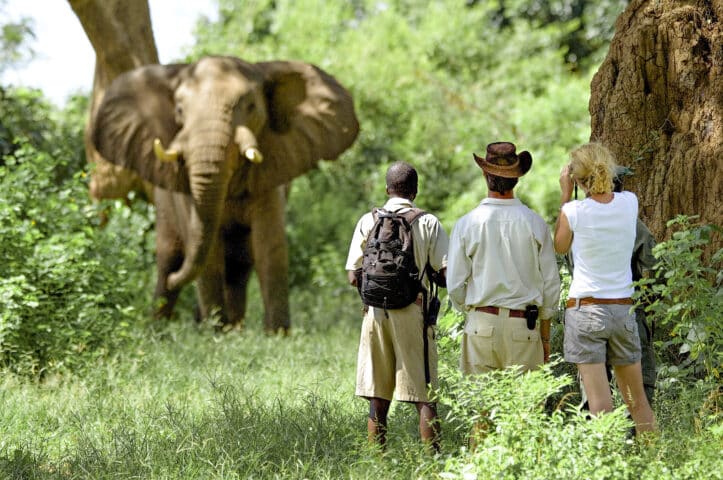
Extend Your Trip
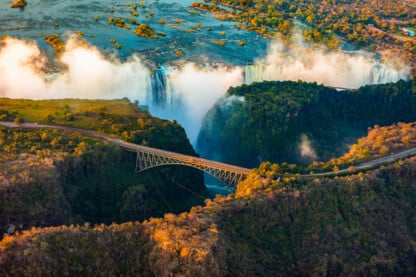
Victoria Falls Extension
Zimbabwe, Zambia
From $1,325
REVIEWS FROM OUR CLIENTS
This was an inspiring trip. I particularly enjoyed the walking part of the safari, which really gives you a taste of life in the African bush. The national park we visited is beautiful and remote and the accommodations are charming and well run.
Having experienced many 4WD game drives, I have to admit that I’ve become a walking safari fan. It’s a whole different type of experience, much more intimate.
Fabulous trip. Our cook on the mobile portion of the safari was amazing. Excellent food everywhere and a great itinerary.
I had a superb trip—not only the itinerary, locations, and experiences, but the staff at all venues were truly outstanding. Also, Jason Alfonsi is a real gem, a polished diamond!
Every aspect of the trip was fantastic. I had not really given thought to the food prior to leaving but was totally wowed by the quality, variety, and service. Our chef was amazing!
Memories from the Zambia Walking Safari will last a lifetime for me. The wildlife, the terrain, the staff, the accommodations, and our guide Jason Alfonsi were all tremendous. I guess the best way to describe my experience is that I can’t wait to return. Wherever we go next, Wilderness Travel will be our first choice.
Talk to an Expert
Our Africa Specialists know every detail about our Zambia safaris. They will be happy to answer any questions and help you choose the journey that’s right for you. Contact us to learn more or book your trip today!
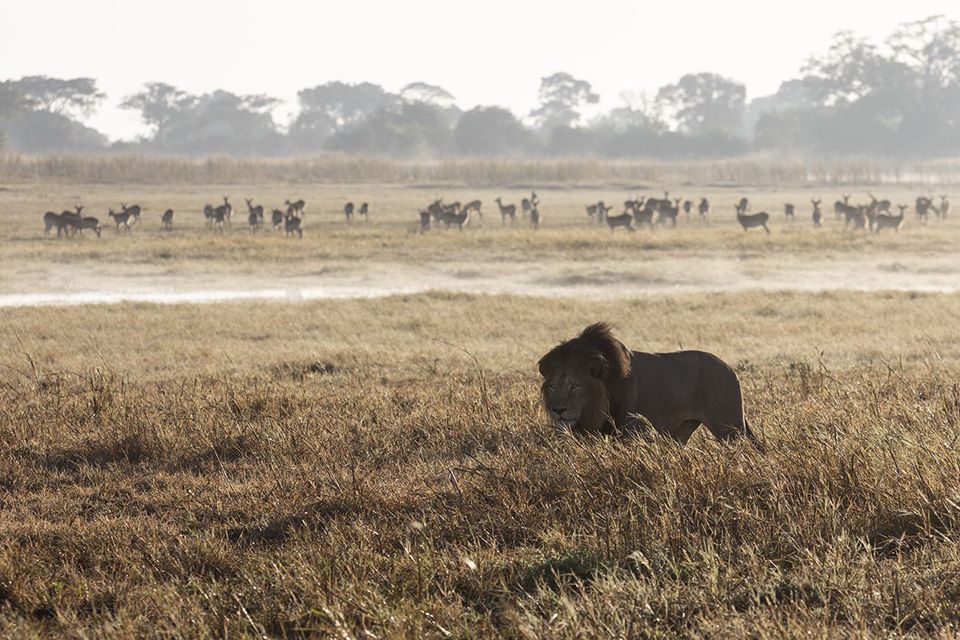
Discover Africa
From the mighty Victoria Falls to safaris in the remote wilds of Busanga Plains in Kafue National Park, endless adventure awaits in Zambia.
VAST & UNTOUCHED
Explore an untamed Zambia safari
Discover the real version of Africa.
A safari in Zambia will see you travel from Livingstone, the country’s adventure capital where the Zambezi and Victoria Falls – or Mosi-oa-Tunya – provide endless thrills, to the exceptionally remote Busanga Plains in northern Kafue National Park. At 5.5 million acres, Kafue is one of the largest and oldest protected regions in Africa, and it is here you’ll thrill to encountering wildlife in the most natural, wild way.
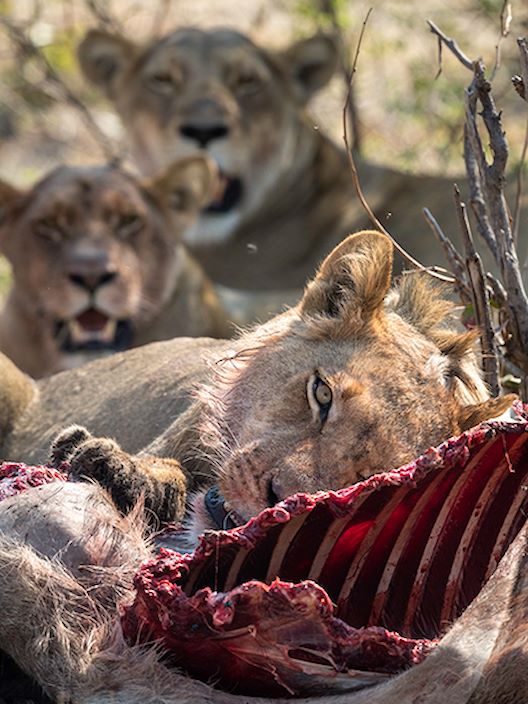
Discover the mighty Zambezi
The Zambezi River is the perfect starting point for a Zambian safari. Do as the crocodiles do, and bask in the warmth on our river bank/beach, in the comfort of a plush bean bag. Let the sounds of the rushing river lull you into a complete state of relaxation. Set upstream of Victoria Falls, it’s the ideal place to share a sundowner with family, the sky turning as pink as the gin in your hand.
WHAT YOU NEED TO KNOW
Zambia at a glance
Going off the beaten track comes with questions. When is the best season to view wildlife in Zambia? How cold does it get at night and what languages are spoken? To help you prepare for your journey, we have put together a few keys facts to encourage your adventurous spirit.
Zambia key facts
From the vast plains of Kafue National Park, to the Luangwa River, to adrenaline-fuelled Livingstone, a luxury Zambian safari has it all. Remote and untouched, Zambia’s wild areas are home to fascinating and rare wildlife – from prolific antelope sightings to unrivalled predator viewing. Explore one of Africa’s wildest and most remote destinations – adventure-filled and unforgettable.
POPULATION SIZE
18.9 Million
Zambian Kwacha (ZMK)
GEOGRAPHICAL SIZE
752,614 km²
BEST TIME TO GO
May to September
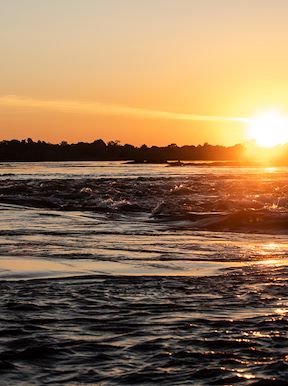
Perennial river
The magnificent Zambezi flows all year round.
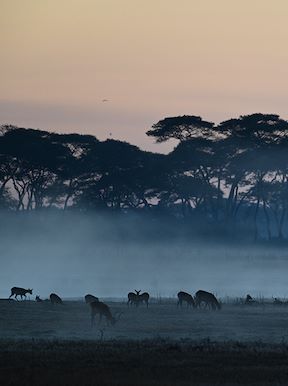
Seasonal floodplains
Grassland that fills with water in the rainy season.
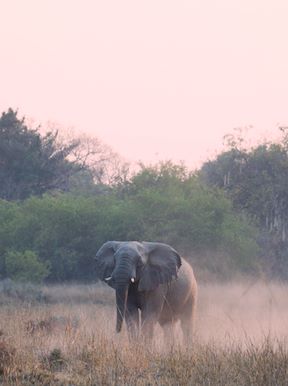
Miombo woodland
Sparse woodland forest in northern Zambia.
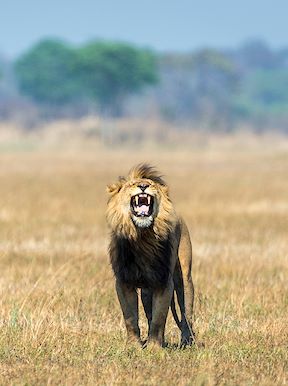
Seeing Africa’s largest predator is always a thrill.
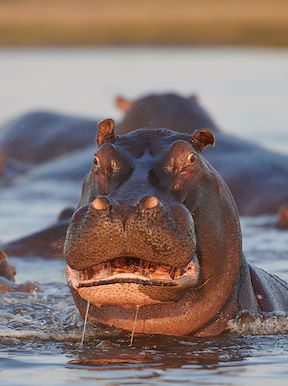
Hippopotamus
Fiercely territorial hippos can be seen in pods of fifty or more.
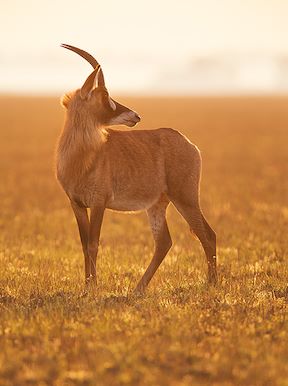
Roan antelope
Africa’s second largest antelope, the roan is a handsome inhabitant.
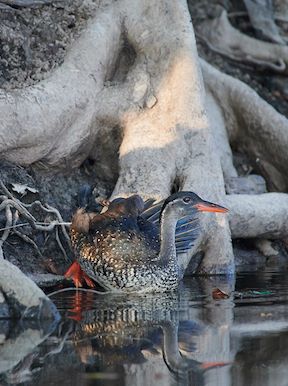
African finfoot
Though elusive, the finfoot’s orange bill and feet make it easy to spot.
Zambia’s climate is pleasant and warm, in the rainy season and in the later part of the dry season. While it is mostly subtropical, it can get cold in the northern parts of the country between May and August.
SUMMER SEASON
December to April
May to August
Zambia experiences
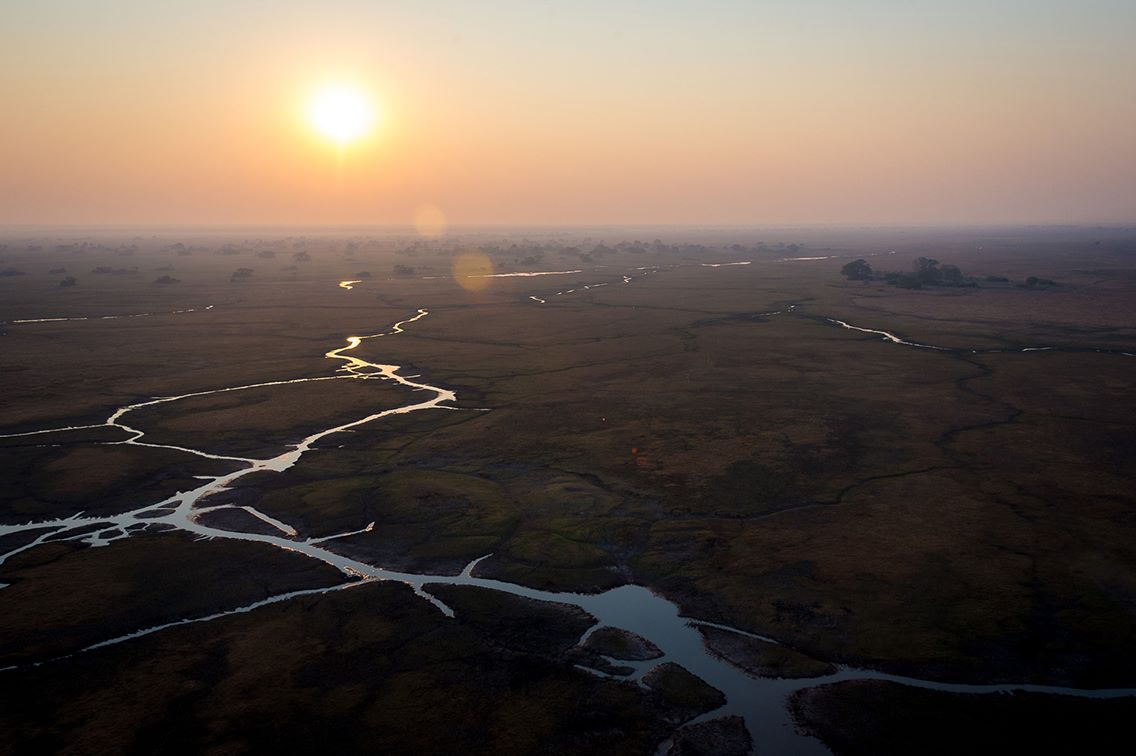
ZAMBIA JOURNEYS
See your safari fantasy come to life
When we say we’re there every step of the way, we mean it, literally. From planning the perfect circuit. Arranging transfers on Wilderness Air and going through customs. We’re with you on-the ground, at-your-side, 24/7, from start to finish. Ready to take the road less travelled? Contact your travel designer to plan an unforgettable safari.
Explore regions & camps in Zambia
We operate in two of Zambia’s wildlife havens: on the banks of the Zambezi with access to World Heritage Site Mosi-oa-Tunya, and within Kafue National Park, a premier Zambian safari destination. Situated within Mosi-oa-Tunya National Park, Toka Leya is a short drive from Livingstone, while seasonal camps Shumba and Busanga Bush Camp are located in Kafue, Zambia’s oldest and largest protected area.
What currency is used in Zambia?
Zambian Kwacha (ZKW)
What time zone is Zambia in?
Zambia shares the same time zone as the rest of Southern Africa, which is two hours ahead of Greenwich Mean Time (GMT) +2 hours, in the Central Africa Time Zone (CAT).
Can I use my credit card in Zambia?
Unfortunately not. Zambia does not have credit card facilities. This includes our Wilderness camps. However payment can be made in cash. Debit card transactions are permitted in Zambia.
What power socket do they use in Zambia?
The typical power sockets in Zambia are 230V and contain two round plugs or three round or rectangular prongs. If you are travelling from the UK or Europe, you may require an adapter for your devices, which our staff will be happy to provide for the duration of your stay.
What do I pack for a safari in Zambia?
Please remember that there may be luggage weight or size restrictions on your Zambia tour. Chat to your Travel Designer who can advise you best based on your personal itinerary. As a general rule of thumb, warm clothing is recommended for the cooler months, and light clothing for summer. Bright colours and white are not advisable.
When is a good time to visit Zambia?
There is no one specific time that is better than any other to safari in Zambia – however our camps in Kafue National Park’s Busanga Plains are operational only in the dry season, from June through to the end of October. The Victoria Falls are wonderful to see all year round, but are best viewed between February and May, when the water flow is at its highest volume after summer rains.
Is Victoria Falls in Zambia?
Is livingstone in zambia safe.
Being a small town, Livingstone is relatively safe. However visitors should be aware of petty crime, such as pick-pocketing. It is not advisable to walk around Livingstone at night. Better to get a taxi as there is a chance of encountering wild animals.
Do I need a visa to travel to Zambia?
Visas valid for 90 days can be obtained on arrival through any port of entry, or visitors can apply for visas online ahead of time. It is also possible to get a single entry or day visa to visit the Zambian side of Mosi-oa-Tunya if travelling from neighbouring Zimbabwe or Botswana.
Vaccinations
What is the covid protocol for travelling to zambia.
In line with the latest recommendations from leading authorities like the World Health Organisation, our protocols ensure safe environments and experiences throughout your stay with us in Zambia. Please check the latest travel advisory to ensure that you are prepared for all COVID travel requirements in Zambia or speak to your Travel Designer for updates.
Do I need a yellow fever vaccination to visit Zambia?
A yellow fever vaccination is only required if arriving in Zambia from a yellow fever-affected country.
Do I need to take malaria tablets when visiting Zambia?
Please consult with your Travel Designer or travel clinic a few weeks before your departure. Some courses of medication may need to be started in advance before your visit to Zambia?
Zambia featured stories

Wilderness Busanga Bush Camp newsletter – July 2024
We are hoping for early rains so as to shower our wild animals, and once again see the Busanga Plain...
Kennedy Lubinda

Celebrating the cats of Kafue on this World Lion Day
Join Wilderness in celebrating World Lion Day on 10 August and learn more about the famed lion pride...
Isaac Kalio
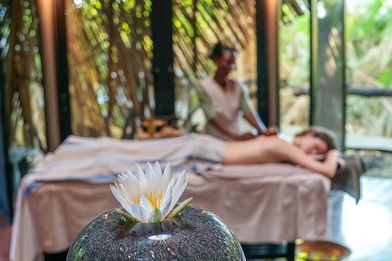
A wellness safari in Zambia & Botswana
A heart, mind, and soul safari to three ultra-relaxing camps; from the banks of the Zambezi to the w...
Lauren Dold
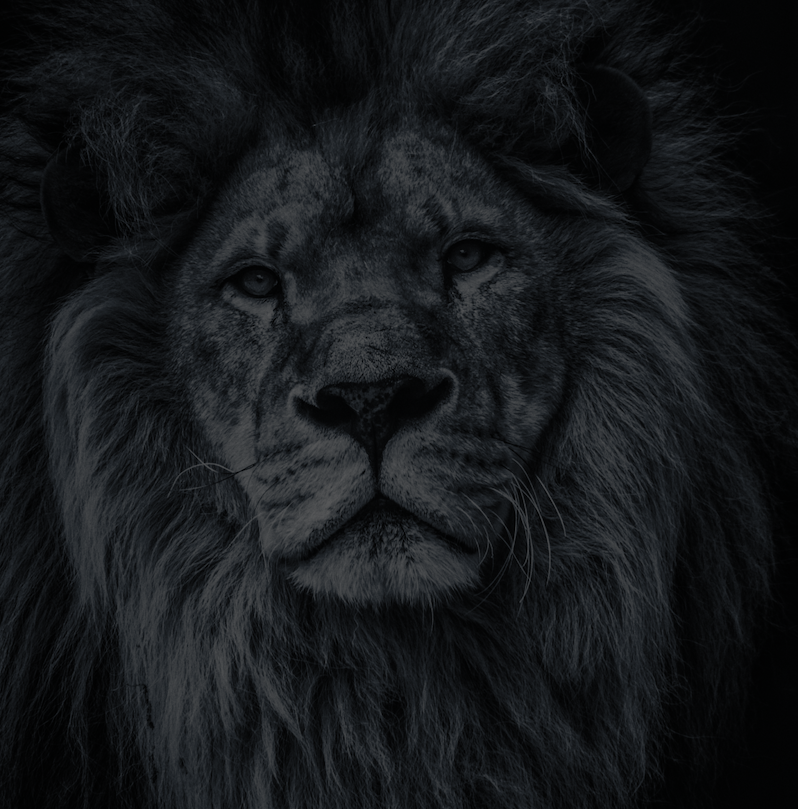
Let’s plan your next journey
When we say we’re there every step of the way, we mean it, literally. From planning the perfect circuit, to private inter-camp transfers on Wilderness Air, and easing you through Customs. We’re with you on the ground, at your side, 24-7, from start to finish. Ready to take the road less travelled? Contact our Travel Designers to plan an unforgettable journey.
Need some inspiration?
Be inspired by the latest news from Wilderness. Subscribe to our newsletter.

- +260 216 225015
- +260 964 410524
- [email protected]
Absolute Zambia Safaris
We specialize in bespoke and private guided safaris in Zambia and Southern Africa, including Malawi, Botswana, Namibia, South Africa, and Zimbabwe. We are your agent during the planning and execution of your custom safari trip to Zambia and beyond, and we are fully independent and self-sufficient.
- Where would you like to visit? Bengweulu Wetlands Botswana Kafue National Park Livingstone / Victoria Falls Liwonde National Park Lower Zambezi National Park Lusaka City Malawi Namibia North Luangwa National Park South Africa South Luangwa National Park Zambia Zimbabwe
- What kind of Safari? Canoe Classic Family Luxury Photography Walking
Tailor-Made Trips
Your itinerary will be 100% tailor-made and designed to your unique requirements.
5 Star Reviews
Highly rated on third party review sites such as Trip Advisor
Responsible Travel
Zambia and Southern Africa is a beautiful place & we want to do our bit to keep it that way.
Our Top Safari Destinations
Zambia is recognized as one of the most secure and friendliest countries in Africa combined with its perfect and personalized safari experience, make it a unique and memorable holiday for vacationists.
One of the famous the 7 Natural Wonders of the World is found in Zambia, the Victoria Falls, and some of Southern Africa’s most beautiful national parks. Which includes include North and South Luangwa, Lower Zambezi and Kafue.
- View Zambia Safaris
- Learn More About Zambia
- Watch Zambia Video
Botswana has a richness of natural beauty. From the Okavango Delta to saltpans of the Makgadikgidi and the awesome Kalahari grasslands – all are a treat for visitors.
Malawi has the most awesome scenery in all of Africa. The Lake Malawi is one of the most famous attractions of the country that you can enjoy when you book a safari.
A Namibia safari can not only allow you to experience the amazing wildlife of this country; you can also visit some of the great places like the Sossuvlei sand dunes.
South Africa
South Africa, without a doubt, is a rainbow nation with a rich diversity of landscape and wildlife. There is so much to see when you book a South Africa safari package.
The Victoria Falls, the Limpopo and the Zambezi rivers beckon you to a Zimbabwe safari. A vast variety of wildlife is available in the parks in Zimbabwe.
Swipe for more >
Featured Itineraries
13 days in zambia’s animal kingdom, the premier luxury zambia safari, best of zambezi & luangwa safari, ultimate south luangwa & victoria falls safari, zambia, unique bat migration safari in kasanka national park, zambia, discover zambia’s iconic south luangwa national park safari, the best of south luangwa luxury safari, the best of lower zambezi safari, breathtaking safari in lower zambezi, zambia, why choose absolute zambia safaris.
Absolute Zambia Safaris is a specialist in bespoke and private safaris in Zambia. Through our large safari operators, we proudly assist our guests in designing custom-made safaris.
Different Ways To Experience Safaris
We provide half-day and full-day canoe safaris, as well as multi-day canoe safaris, ranging from two to five days in length, with overnight stays.
We provide tours and travels services, along with the best safari tours to all the top destinations in Africa. We can provide private tours and safaris for our esteemed guests.
One of the most popular safaris that we offer is our Zambia Family safari. This is the typical perfect holiday trip where the entire family can enjoy the beauty of nature.
We provide all types of safari tours for our guests. Our Zambia walking safari is a unique experience that offers you an opportunity to walk in the wild and learn small things that you dont pay attention while on the 4x4 Safari. Our walking Safari are led by some of the best exprinced and knowledgable in africa accompanied by a wildlife game ranger.
Photography
Zambia and all other places in Africa are a haven for photography lovers. Nature photographers can get some of the most perfect photos during an African photography safari. Whether it is the beautiful landscape and scenery or the most beautiful animals in the world, a photographer can shoot them all on his camera.
Our Photography safari is a great experience. Whether you are an amateur photographer or a professional.
- View Photography Safaris
Get Inspired
Feedback from our previous clients.
Looking For A Tailor-Made Safari?
The team at Absolute Zambia Safaris is here to help! Book your initial consultation with us and we’ll help you choose the best safari that meets your requirements.
Memberships and Associations
Join Our Newsletter

- 1-800-990-4376
- Catalog Request
- SPECIALS SIGN-UP
- reserve a trip
- Costa Rica Ultimate Wildlife 14-day
- Costa Rica Ultimate Wildlife 9-Day
- Every Paddler's Dream Trip
- Browse All Trips
- South Africa
- Exploritories
- Award Winning Trips
- Custom Trips
- Family Trips
- Travel with Our Director
- WILDLIFE GALLERY
- Request Info
- Vietnam & Cambodia
- Insider's Asia
- Insider's Africa
- Small Ship Cruises
- Travel with our Director

Zambia Safaris

Zambia Award-Winning Wildlife Safaris
Zambia is one of Africa's least crowded and most wildlife-rich destinations. You can easily see the "Big 5" (Lion, Leopard, Elephant, Rhino and Cape Buffalo) without being part of an armada of jeeps chasing wildlife. It is one of the only places in Africa where you can combine a traditional jeep safari with more intimate and unique walking and canoeing safaris. It's also home to the second largest wildebeest migration in Africa. Take advantage of this amazing destination with our Zambia ecotourism trips.
Wild Planet Adventures offers a variety of Zambia safaris to meet individual budgets and interests. Our Ultimate Wildlife itinerary is our most comprehensive, and we're proud that it has been named one of the " 50 Tours of a Lifetime " by National Geographic Traveler . We also offer the option to design your own safari and pick the locations, length of stay, and price level that is right for you. If you don't see what you're looking for, please give us a call!
South Luangwa, Kafue & Mana Pools National Parks Discover the three premier parks of South Luangwa, Kafue, and Mana Pools. We've combined some of the most remote, least-traveled and most wildlife-rich sectors of these exciting parks in crafting the "Ultimate Wildlife" safari. Each park offers different eco-systems that are best explored through different activities (jeep, walking and canoe safaris), and feature different wildlife, so you enjoy a more diverse and comprehensive safari than a commercial safari.
The South Luangwa Valley is one of the last unspoilt wilderness areas and possibly the finest wildlife sanctuary in Africa, teeming with elephants, lions, cape buffalo, zebra and more.
Kafue National Park is one of the largest National Parks in Africa. It's wide open flood plains offer an incredible diversity of mammal species --including cheetah.
Mana Pools National Park - The climax of the trip is a world-class canoe safari on the beautiful Zambezi River where we'll float quietly past huge elephants and other feeding animals!
What Makes the "Ultimate" Wildlife Safari?
- Legendary Master Guides, who rely on advanced tracking skills, not radios.
- Un-Habituated Wildlife: Remote destinations where wildlife behavior remains "wild" and unchanged by human presence.
- Safaris by Jeep, Walking & Canoe for a more comprehensive, intimate and authentic and experience not available elsewhere in Africa.
- No Jeep Competition: You won't find 5-30 jeeps chasing a lion pride as is now common in most of Africa.
- 2 per row in Jeeps: For unobstructed wildlife observation.
- Fully Customizable: Choose the segments, length and price that's right for you or take the full 18-day "Ultimate Wildlife Safari".
- Extensions to Victoria Falls available - one of the "7 Natural Wonders of the World".
Zambia Award-Winning Wildlife Safaris with Wildlife Experts - Select Your Adventure:

Zambia - Ultimate Wildlife 18-Day Safari
Our most value-packed itinerary featuring an ensemble of Master Guides, brought together for the first time. It includes walking and jeep safaris in the remote Nsefu sector of South Luangwa National Park, jeep safaris in the classic vast plains and wetlands of Kafue National Park, and canoe safaris on the Zambezi River in the UNESCO World Heritage Site of Mana Pools, widely regarded as one of the best canoe safari's on earth. This is our signature wildlife adventure, with many of Wild Planet's special touches. Learn More>
2024 - $21,398 2012 - $4,398 2013 - $4,598 -->

Zambia - Ultimate Wildlife 15-Day Safari
Another option featuring walking safaris in the remote Nsefu sector of South Luangwa National Park with a master guide, plus jeep safaris on the vast Busanga Plains of Kafue National Park and canoe safaris on the Zambezi River in the UNESCO World Heritage Site of Mana Pools, widely regarded as one of the best canoe safari's on earth. Learn More>
2024 - $18,798 2012 - $4,398 2013 - $4,598 -->

Zambia - Ultimate Wildlife 12-Day Safari
A shorter version of our most popular itinerary emphasizing walking safaris in the remote Nsefu sector of South Luangwa National Park, plus canoe safari in Mana Pools National Park, with 2 master guides. Learn More>
2024 - $14,198 2012 - $4,398 2013 - $4,598 -->

Zambia - Ultimate Wildlife 10-Day Safari
Another option featuring walking safaris in the remote Nsefu sector of South Luangwa National Park with a master guide, plus jeep safaris on the vast Busanga Plains of Kafue National Park. Learn More>
2024 - $11,198 2012 - $4,398 2013 - $4,598 -->

Zambia - Ultimate Wildlife 7-Day Safari
Another option featuring walking safaris in the remote Nsefu sector of South Luangwa National Park with a master guide. Learn More>
2024 - $6,598 2012 - $4,398 2013 - $4,598 -->

Zambia - 4 Day Walking Safari with Legendary Master Guide Deb Tittle
Josh Cohen, Wild Planet’s Director, calls legendary master guide Deb Tittle “Hands-down the best guide I have worked with in Africa.” With over 22 years experience as both a guide and trainer of guides, Deb will track South Luangwa’s exceptional game with you in her own private concession, an extremely remote, road-less and undisturbed sector of the park. Learn More>
Not available for 2024, call for 2025. 2012 - $4,398 2013 - $4,598 -->

Zambia - Travel on Your Own
Choose your destinations, go whenever - and wherever - you want. Choose from any destination in the country and we can put your trip together for you. Gain access to our local, full-service office and our expert wildlife guides, vehicles, logistical support, and intimate knowledge of local accommodations, activities, and destination value. Allow us to customize a trip to meet your heart's desires! Learn More>
2012 - $4,398 2013 - $4,598 -->
Zambia Gallery
Featured guide.

- Travel Guides Plan your adventure
- Destinations Our favourite places
- Tours Book a trip
- Travel Companies Independent specialists
- Travel Guides
- Destinations
- Travel Companies
The best safari in Zambia
An expert guide to zambia's best safari parks, camps & lodges.
Sarah Kingdom
- Best safaris
- Need to know
South Luangwa National Park
North Luangwa National Park
Lower Zambezi National Park
Kafue National Park
Kasanka National Park
- Liuwa Plains National Park
Bangweulu Wetlands
- Mosi-oa-Tunya
I fell in love with Zambia after my first safari, at the tender age of 15. A few years later I returned for what was initially supposed to be a six-week holiday... 30 years later, I couldn’t imagine living anywhere else.
As a travel journalist and guidebook author specialising in Zambia safari and wildlife, I’ve visited pretty much all of the country’s 21 National Parks, as well as many of its transfrontier parks, wildlife reserves, game management areas, RAMSAR wetland sites, forest reserves and Important Birding Areas.
For my money, a safari in Zambia is as good or better than anywhere else in Africa. But in a country this vast and difficult to navigate, travelling here comes with some potential pitfalls. In the following pages I’ll explain some of my best Zambia safari recommendations, as well as some of the things you should know before you book. Happy travels!
Featured Zambia Safaris
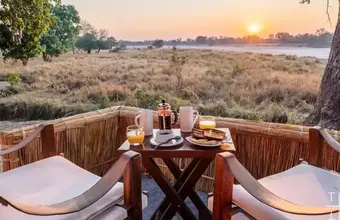
Best of Zambia Safari
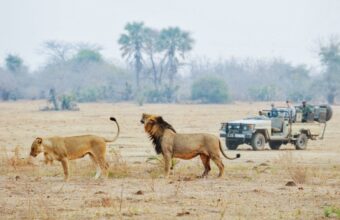
The Best Of Lower Zambezi
Four-day private safari of zambia's lower zambezi.
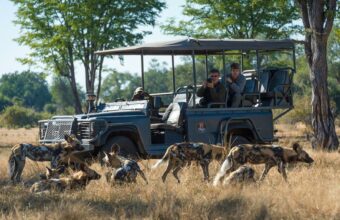
Zambia’s Premier Wildlife Safari
Wildlife safari in south luangwa national park.
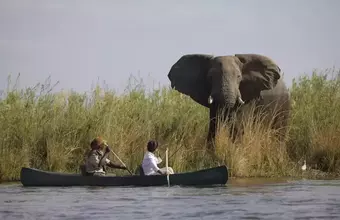
South Luangwa and Lower Zambezi Safari
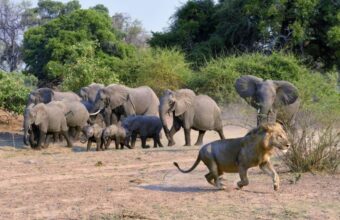
Zambia's Animal Kingdom
13 days safari in kafue national park and south luangwa national park.
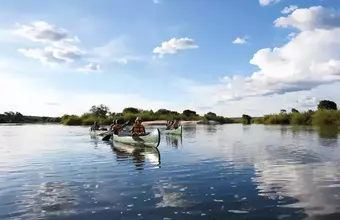
Luxury Zambia and Victoria Falls Journey
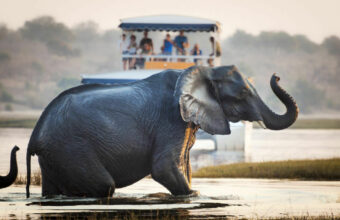
Ultimate African Taster
15 days from victoria falls to cape town.

Baboon standing guard in Luangwa
Zambia's best safaris
Our experts' recommended safari parks & camps.
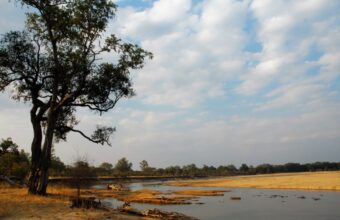
Walking safari in North Luangwa
North Luangwa is remote, hard to reach, and therefore blissfully quiet and crowd-free. A walking safari in North Luangwa is among my absolute favourite things to do anywhere in Zambia. Game drives are not permitted in the majority of the park and access is primarily by walking safari. You’ll leave the vehicle in camp, setting out on foot each day with your guide and an armed scout, to walk among elephants, antelope, zebra and even the occasional predator, always maintaining a safe distance! The last time I set out – always with a seasoned (and armed!) guide in the lead – we saw tracked elephants and antelope rustling in the bush. A word of caution though: this is no armchair safari. Much patience is needed, and of course you’ll need to be reasonably fit to hike in the Zambian heat. If your idea of a safari is racing from place to place in a jeep trying to tick off all the Big Five, this one probably isn’t for you.
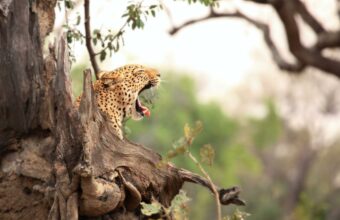
The best place for big cats
If it’s big cats you’re after, look no further than South Luangwa, nicknamed the Valley of the Leopards, with one of the densest populations of leopard anywhere. It's also home to lions and spotted hyena, along with an abundant wild dog population on team canine. Some of my most memorable leopard encounters have happened in South Luangwa. Watching as a leopard, completely unaware of our presence, descended from a tree, only spotting us once she’d reached the ground, was an encounter to remember. Leopards love to drag their kills up into trees for safekeeping, so don’t forget to look up from time to time when you’re out on a drive. My favourite way to see the wildlife in South Luangwa is on a walking safari. On a walking safari, you can see lions, leopards, elephants and learn about the flora of the park. It’s not all about big beasts however; a walking safari will allow you to get up close with a termite mound and learn about Zambia’s ecosystem.
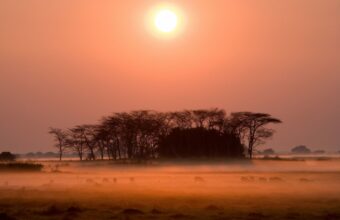
Where to see everything in one place
Often overlooked in favour of Zambia’s smaller parks, Kafue is a sleeping giant. One of Africa’s oldest and largest parks and one of its wildest, it’s a place of vast, remote landscapes, spectacular rivers, open plains, woodlands and stunning scenery. If you want to avoid too much domestic flying, Kafue National Park has everything you could want. You can spend at least a week here travelling from camp to camp. This is the only park in Zambia where I have been lucky enough to see both aardvark and pangolin – two very rare safari sightings! The Busanga Plains to the far north of the park are one of Kafue’s highlights. Accessible only during the dry season, I love heading out onto the plains early in the morning, to see puku and red lechwe, in their hundreds, visible in the early morning mist that cloaks the plain just before sunrise. Equally special, but seldom visited are the Nanzhila Plains in the park’s south. This is a superb place for bird watchers. For me, the star of Nanzhila is the beautiful black-cheeked lovebirds, endemic to Zambia and only found in a small area in the southwest of the country. If you have the time and an accommodating safari operator, try to include both the far north and the far south of Kafue into your trip. While Kafue doesn’t have the huge herds of game that can be found in some other Zambia safari parks, what it lacks in density it more than makes up for in diversity. There are at least 161 species of mammal, six cat species, and 22 species of antelope.
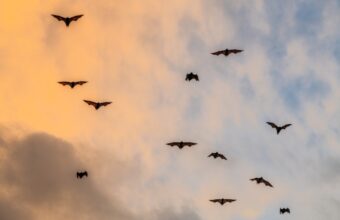
See the world's biggest mammal migration
You’ve heard about the famed wildebeest migration of East Africa, but for the biggest mammal migration on earth you can’t miss the spectacular fruit bats of Kasanka between October and December. I love standing high on the viewing platform overlooking the tiny bat forest at Kasanka and peering into trees that drip with thousands upon thousands of straw coloured fruit bats. As dusk falls, they begin to depart, flocking into the sky and filling the air with their chatter. Millions of bats dart in and out of the trees, like a swarm of overgrown bees, before flying over your head and off to spend the night looking for food. By the time they’re done it's almost too dark to see the ladder down from the hide, so don’t forget to bring a torch! Beyond the bats, Kasanka is home to one of Africa’s rarer antelopes, the shy, secretive, semi-aquatic sitatunga – the park is home to more than 500 of them, making it Africa’s densest and most visible population of sitatunga! The elusive Blue monkey and the little-known Kinda baboon also both call Kasanka home and it’s unlikely you’ll encounter either of these species anywhere else in Southern Africa.
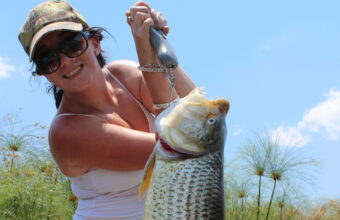
Fishing on the Lower Zambezi
I’m definitely no fisherman, but every now and again it’s nice to take a break from the safari jeep and get out on the water. Serious sport anglers come from all over the world to try their hand at the Zambezi’s famous tigerfish, so maybe skip one of the morning or afternoon game drives and try your hand at fishing. Tigerfish are too bony to eat and fishing in the Lower Zambezi National Park is strictly catch and release, but it’s still pretty exhilarating to reel one in, and they put up a heck of a fight! Even if you don’t catch anything, spending a few hours on the water is fantastic, and you’re bound to spot some wildlife on the river banks.
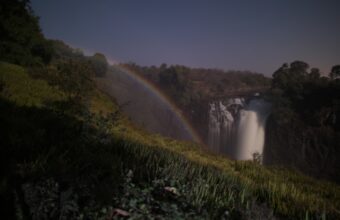
Victoria Falls
See a lunar rainbow at Victoria Falls
Lunar rainbows are formed by the light of the moon rather than the sun and are much fainter and more elusive than a regular rainbow. Victoria Falls is the only place in Africa, and one of only a handful of places in the world, where this incredible natural phenomenon occurs – and something surprisingly few people know about! You can see the lunar rainbow between April and July during the full moon. I find there’s something magical sitting at one of the vantage points and waiting for the moon to rise. They’re far less vibrant than a regular rainbow but lunar rainbows show up clearly in photos taken with a long exposure.
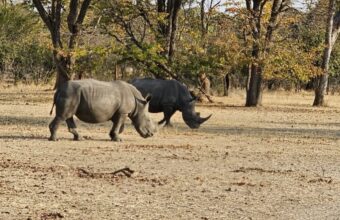
Mosi-oa-Tunya National Park
Walk with rhinos in Mosi-oa-Tunya National Park
I love strolling with these giants In Mosi-oa-Tunya National Park. Escorted by two armed rangers, you’ll walk in single file through the bush, maybe getting hit by branches or scratched by thorns, you’ll sweat and perhaps wonder if you’ll ever see the rhinos. But when you see them, it will all be worthwhile. The tour usually lasts for two hours, but sometimes you get lucky and find them within the first 10 minutes, either way, it’s definitely worth it!
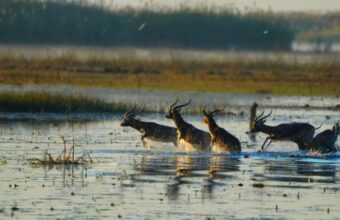
See the black lechwe in the Bangweulu Wetlands
Set your alarm and wake early to paddle by canoe through the papyrus of the Bangweulu swamps, to the floodplains. Stand on the causeway that runs through the middle of the floodplain, and as the sun comes up you’ll be surrounded by thousands of black lechwe, a type of endangered antelope that is endemic to this part of Zambia. Having come into the water overnight for safety, the lechwe are slowly heading towards the tree line, grazing on the semi aquatic grasses as they go. You need to get up early for this as once the sun has risen the lechwe will have all but disappeared, heading into the tree line where they will spend the day.
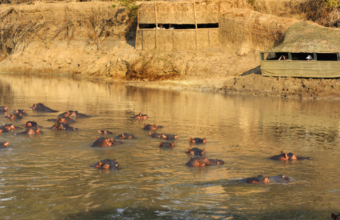
Kaingo Camp
My pick for South Luangua is probably Shenton Safaris' Kaingo Camp, which has a collection of incredible photographic hides and guides who are specialised in getting guests into the perfect position for great photos, both in the hides and out on drive.
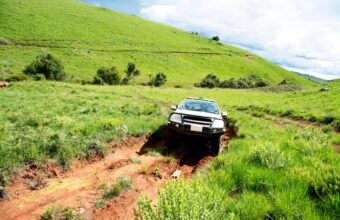
Don't miss Zambia’s hidden gems
You'd have a hard time calling anywhere in Zambia "touristy" but if you want to get truly off the beaten path there are some hidden gems to be found. Of all the country's national parks, Luambe, Lukusuzi, West Lunga, Sioma Ngwezi, and Nyika Plateau have wildlife, but are relatively undeveloped in terms of tourist infrastructure and accommodation. Isangano, Lavushi Manda, Lusenga Plain and Mweru Wantipa have little management, very few facilities, and limited wildlife populations. If you're very intrepid or a super keen birder and can find a specialist to make your travel arrangements, they may be worth considering. Lusaka National Park, just outside the capital, opened in 2015 and is the country’s newest park.
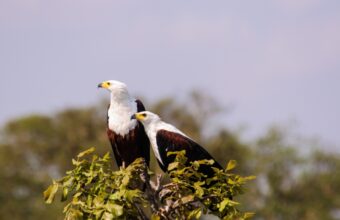
Liuwa Plain National Park
Birding in Liuwa Plain
The birdlife in Liuwa is extraordinary, and it's easy to spend hours watching the various comings and goings of white bellied bustards, crowned cranes, sooty chats, pink pelicans, fish eagles and more. Threatened waterbirds include slaty egrets and whiskered terns – Liuwa is the only breeding ground for these birds in Zambia. This is also a prime destination for migrating species and massive flocks of birds can be seen in the skies above Liuwa between May and July. Keep your eyes open for the Black-winged pratincoles, individually these might not be the most exotic of birds, but trust me: a flock of 100,000 swooping over the plains like a giant swarm of bees is pretty breath-taking! Don’t forget to pack your binoculars for birding at Liuwa.
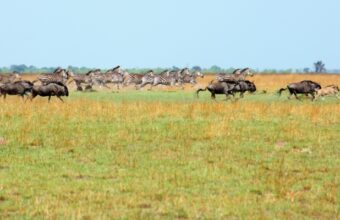
Wildebeest migration without the crowds
Liuwa Plain is home to the second largest wildebeest migration in Africa and, compared to the more famous wildebeest migration in East Africa, this spot is hardly known. Each year in November, with the start of the rainy season, massive herds of blue wildebeest, 45,000 strong, migrate to Liuwa Plains, often mingling with zebras along the way.
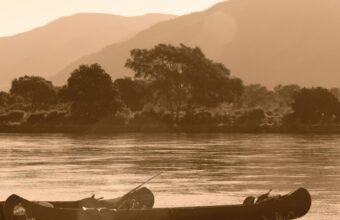
Canoe safaris in Lower Zambezi & Bangweulu
Seasoned safari-goers who are tired of the conventional game drive should ditch the 4X4 and get into a canoe for a watery safari in either Lower Zambezi National Park or the Bangweulu Wetlands. For me there is something timeless about travelling through these swamps. I find it a world away from racing around in a safari jeep. Your guide at the front of the canoe, long pole in hand, propelling you through narrow channels, between the thick reeds and papyrus. Silence, except for slight burbles and gurgles as you glide through the water. It’s one of my all-time highlights.
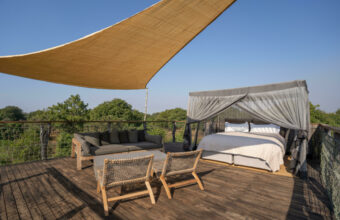
Chikunto Safari Lodge
Robert Zgozi
There’s some good accommodation in South Luangwa but one of my favourites is Chikunto Safari Lodge, located on a horseshoe bend in the Luangwa River near the Mfuwe entrance in the park’s southern edge. What makes this place really stand out is the six-metre high platform with panoramic views over the river and a private tented suite where you can camp out overnight under the stars. When I visited I found it totally breathtaking. It doesn’t come cheap, but I always recommend it for honeymooners or couples looking for something extra special.

featured zambia safaris
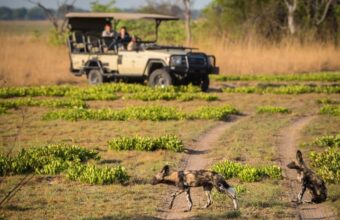
A Silent Safari in Zambia
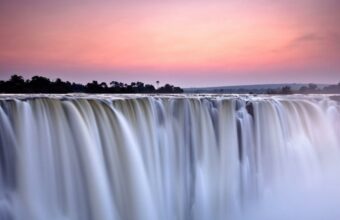
Victoria Falls and Zambia’s wildlife
Wildlife sanctuaries and powerful waterfalls.
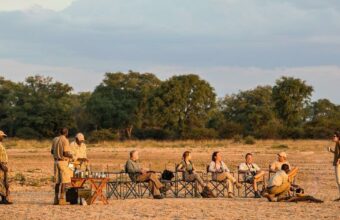
Discover Luangwa & Luambe National Parks
Safari lodges in zambia's national parks.
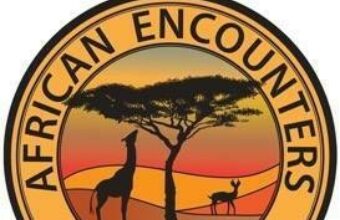
A lion in South Luangwa National Park
Zambia safari: Need to know
Everything you wish you'd know before you booked.
Journey distances and patchy infrastructure can pose a challenge, and it’s easier to fly between parks than drive, which pressures your budget and the environment. The country’s focus is skewed more to high cost/low volume tourism, so accommodation tends to be more on the expensive side, with less options for backpackers and those on a tight budget.
Think beyond the classic 'Big Five' safari
First-time safari goers are often fixated on seeing the so-called Big Five (lion, elephant, buffalo, rhino and leopard). This might seem like strange advice coming from a safari operator, but to be honest I think there are better places to see the Big Five elsewhere in Africa. Zambia is home to all five, but they're hard to find all together in any one park, and poaching has made the rhino populations especially threatened.
In my personal opinion, the real gems of a Zambia safari are the species and experiences that you can't easily find elsewhere on the continent. Zambia is especially fascinating for its wetlands which provide a precious ecosystem for numerous bird species, most notably the rare and bizarre-looking shoebill storks of the Bangweulu Wetlands.
Another unique aspect of a Zambia safari is the different range of safari types. In East Africa you can spend all day in a jeep chasing the Big Five, while in Zambia's Lower Zambezi National Park you can see lions, elephants, buffalo and leopards, hippos and crocodiles on a canoe safari. Zambia is also famous for its walking safaris, most notably South Luangwa, the birthplace of the walking safari. I can't think of any better way to explore the bush than on foot walking through big game country.
Getting around
You’ll almost certainly arrive at Lusaka, Zambia’s capital city. Lusaka International Airport is 22 kilometres from the city centre, where there are plenty of hotels and guest houses to choose from. Adjacent to the international terminal is the domestic terminal, where you can connect with flights to the main national parks.
Lusaka is the central point of Zambia and all major roads heading north, south, east and west pass through the city. Livingstone and Victoria Falls are 470 km away, so I highly recommend flying. Kafue National Park is located 591 km from Lusaka, if you wish to fly here a charter flight will be needed. South Luangwa National Park is 527 km from Lusaka but best accessed by plane, and there are both scheduled and charter flights on this route.
How to avoid (too much) flying
If you want to avoid too much domestic flying, I’d highly recommend South Luangwa National Park which pretty much has everything you’d want to see. Alternatively Kafue National Park has lots of diverse landscapes such as the Busanga swamps and floodplains, you can stay here for at least a week, travelling from lodge to lodge by road.
Driving in Zambia is a challenge. The distances between the various safari areas and national parks are huge and the roads are often poor. While many of the roads are getting an upgrade, in most cases the easiest is still to fly between parks in light aircraft. Many routes offer fixed schedules, but if you intend to travel away from the main parks, you’ll need to fly on a charter plane. When transferring from one camp to another, within the same national park, you’ll usually be transferred by 4WD (effectively like a bonus game drive). In some specialist walking camps in South Luangwa, you may be able to walk between the camps.
If you are intending to drive, avoid travelling after dark and be aware that potholes, pedestrians and animals occur at random and other drivers can be erratic. If you’re not driving a 4x4 vehicle, don’t drive.
If you book your trip as an organised tour, either private or group, all your transport logistics will be arranged for you.
Zambia safari pro tip
If you’re booking a safari tour that’s longer than six or seven days, your itinerary will likely include multiple national parks with domestic flights between them. A good question to ask your operator is whether these are scheduled flights via Lusaka, or if they’re direct flights between the national parks. Going via Lusaka each time significantly adds to the stress, time and environmental cost of your trip, try to book an itinerary with direct flights where possible.
- Southern Africa
North Luangwa is remote, hard to reach, and therefore blissfully quiet and crowd-free. A walking safari in North Luangwa is among my absolute favourite things to do anywhere in Zambia.
Game drives are not permitted in the majority of the park and access is primarily by walking safari. You’ll leave the vehicle in camp, setting out on foot each day with your guide and an armed scout, to walk among elephants, antelope, zebra and even the occasional predator, always maintaining a safe distance!
The last time I set out – always with a seasoned (and armed!) guide in the lead – we saw tracked elephants and antelope rustling in the bush.
A word of caution though: this is no armchair safari. Much patience is needed, and of course you’ll need to be reasonably fit to hike in the Zambian heat. If your idea of a safari is racing from place to place in a jeep trying to tick off all the Big Five, this one probably isn’t for you.
At a glance
Related guides.
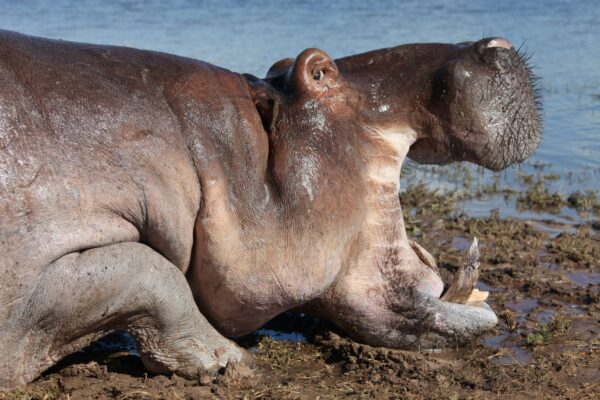
Safari In North Luangwa National Park
North Luangwa National Park is synonymous with walking safaris and is my favourite National Park in Zambia. Going on safari in North Luangwa is to glimpse the bush as it once was; wild and untouched.
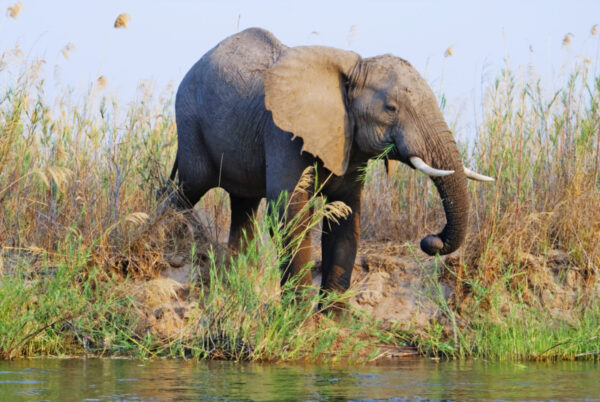
Safari in Lower Zambezi National Park
Mazuba Kapambwe
Lower Zambezi National Park is just over 4,000 square kilometres of unspoilt nature. A relatively undeveloped park, with no paved roads, it’s rare to encounter another safari vehicle.

Safari In Kafue National Park
The colossal Kafue National Park is Zambia’s oldest and largest national park, and one of the wildest in all of Africa. At 22,400 square kilometres, Kafue itself represents 36% of Zambia’s national park land.
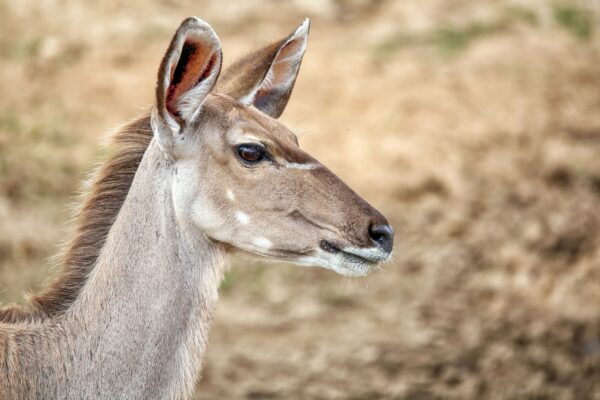
Safari in Kasanka National Park
Kasanka National Park is one of Zambia’s smallest national parks but, with an incredible 480 bird species and 114 mammals there’s a lot to see.

Safari in Liuwa Plains National Park
The 3,369 km² Liuwa Plains National Park in remote far west Zambia was once the traditional hunting ground of the Litunga (King) of the Lozi people. Liuwa Plain is home to the second largest wildebeest migration in Africa and, compared to the more famous

The Best Safaris In Africa
Stuart Butler
There is much more to Africa than safari, but there's no doubt the continent's natural heritage is one of the main draws for international and local tourists alike. For the uninitiated "safari" might mean viewing big land mammals from a 4x4, and while the Big Five game drives remain a cornerstone of the experience, these days there's so much more on offer.
Born and raised in Sydney, Australia, before moving to Africa at the age of 21, Sarah Kingdom is a mountain climber and guide, traveller, yoga teacher, trail runner, and mother of two. When she is not climbing or traveling she lives on a cattle ranch in central Zambia. She guides climbing and trekking trips worldwide, including taking climbers up Mount Kilimanjaro numerous times a year.
If it’s big cats you’re after, look no further than South Luangwa , nicknamed the Valley of the Leopards, with one of the densest populations of leopard anywhere. It's also home to lions and spotted hyena, along with an abundant wild dog population on team canine.
Some of my most memorable leopard encounters have happened in South Luangwa. Watching as a leopard, completely unaware of our presence, descended from a tree, only spotting us once she’d reached the ground, was an encounter to remember. Leopards love to drag their kills up into trees for safekeeping, so don’t forget to look up from time to time when you’re out on a drive.
My favourite way to see the wildlife in South Luangwa is on a walking safari. On a walking safari, you can see lions, leopards, elephants and learn about the flora of the park. It’s not all about big beasts however; a walking safari will allow you to get up close with a termite mound and learn about Zambia’s ecosystem.
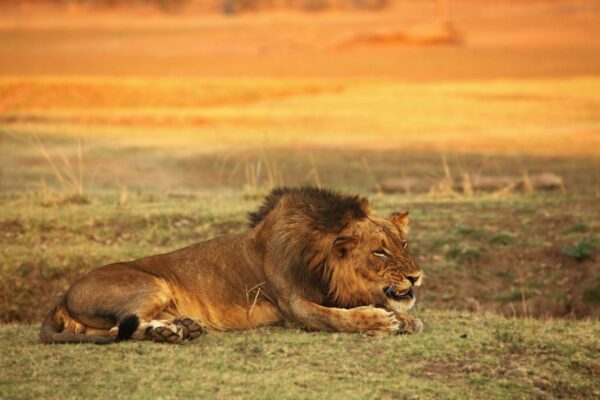
Safari In South Luangwa National Park
The 9,000 square kilometre South Luangwa National Park is one of Africa’s greatest safari destinations, although certainly not one of the most famous. Nicknamed the Valley of Leopards, the main predators here are leopard, lion, spotted hyena and wild dog – with the leopard and wild dog populations being amongst the densest on the continent.
Often overlooked in favour of Zambia’s smaller parks, Kafue is a sleeping giant. One of Africa’s oldest and largest parks and one of its wildest, it’s a place of vast, remote landscapes, spectacular rivers, open plains, woodlands and stunning scenery.
If you want to avoid too much domestic flying, Kafue National Park has everything you could want. You can spend at least a week here travelling from camp to camp.
This is the only park in Zambia where I have been lucky enough to see both aardvark and pangolin – two very rare safari sightings!
The Busanga Plains to the far north of the park are one of Kafue’s highlights. Accessible only during the dry season, I love heading out onto the plains early in the morning, to see puku and red lechwe, in their hundreds, visible in the early morning mist that cloaks the plain just before sunrise.
Equally special, but seldom visited are the Nanzhila Plains in the park’s south. This is a superb place for bird watchers. For me, the star of Nanzhila is the beautiful black-cheeked lovebirds, endemic to Zambia and only found in a small area in the southwest of the country. If you have the time and an accommodating safari operator, try to include both the far north and the far south of Kafue into your trip.
While Kafue doesn’t have the huge herds of game that can be found in some other Zambia safari parks, what it lacks in density it more than makes up for in diversity. There are at least 161 species of mammal, six cat species, and 22 species of antelope.
You’ve heard about the famed wildebeest migration of East Africa , but for the biggest mammal migration on earth you can’t miss the spectacular fruit bats of Kasanka between October and December.
I love standing high on the viewing platform overlooking the tiny bat forest at Kasanka and peering into trees that drip with thousands upon thousands of straw coloured fruit bats. As dusk falls, they begin to depart, flocking into the sky and filling the air with their chatter. Millions of bats dart in and out of the trees, like a swarm of overgrown bees, before flying over your head and off to spend the night looking for food. By the time they’re done it's almost too dark to see the ladder down from the hide, so don’t forget to bring a torch!
Beyond the bats, Kasanka is home to one of Africa’s rarer antelopes, the shy, secretive, semi-aquatic sitatunga – the park is home to more than 500 of them, making it Africa’s densest and most visible population of sitatunga! The elusive Blue monkey and the little-known Kinda baboon also both call Kasanka home and it’s unlikely you’ll encounter either of these species anywhere else in Southern Africa.
Physical Level
Duration (days).
Lunar rainbows are formed by the light of the moon rather than the sun and are much fainter and more elusive than a regular rainbow. Victoria Falls is the only place in Africa, and one of only a handful of places in the world, where this incredible natural phenomenon occurs – and something surprisingly few people know about!
You can see the lunar rainbow between April and July during the full moon. I find there’s something magical sitting at one of the vantage points and waiting for the moon to rise. They’re far less vibrant than a regular rainbow but lunar rainbows show up clearly in photos taken with a long exposure.
Safari in Mosi-oa-Tunya
Zambia is famous for the Victoria Falls, the greatest sheet of falling water on the planet, one of the Seven Natural Wonders of the World, and a natural border between Zambia and Zimbabwe.
Safari in the Bangweulu Wetlands
Bangweulu means ‘where the water meets the sky’, and I think it’s a perfect description of this extraordinary, community-owned and protected wetland in northeastern Zambia. For me there is something timeless about travelling through these swamps.
My pick for South Luangua is probably Shenton Safaris' Kaingo Camp, which has a collection of incredible photographic hides and guides who are specialised in getting guests into the perfect position for great photos, both in the hides and out on drive.
You'd have a hard time calling anywhere in Zambia "touristy" but if you want to get truly off the beaten path there are some hidden gems to be found.
Of all the country's national parks, Luambe, Lukusuzi, West Lunga, Sioma Ngwezi, and Nyika Plateau have wildlife, but are relatively undeveloped in terms of tourist infrastructure and accommodation.
Isangano, Lavushi Manda, Lusenga Plain and Mweru Wantipa have little management, very few facilities, and limited wildlife populations. If you're very intrepid or a super keen birder and can find a specialist to make your travel arrangements, they may be worth considering.
Lusaka National Park, just outside the capital, opened in 2015 and is the country’s newest park.
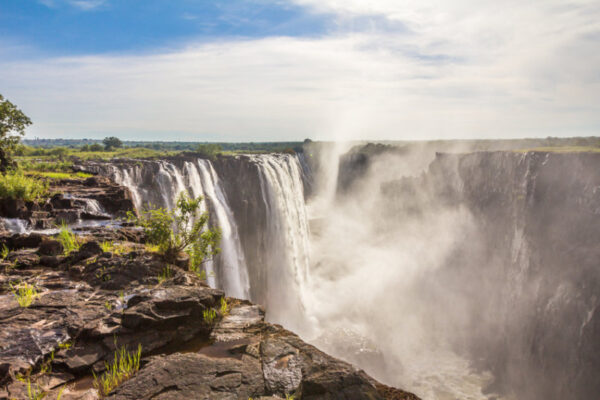
The best time to go on safari in Zambia
July to October is dry season and is peak safari season in Zambia, with visitor numbers at their highest. The vegetation has dried out, making it easier to spot animals and, as water sources dry up, wildlife tends to concentrate along rivers and permanent waterholes, making them easier to find.

Where To See The Big 5 In Africa
The "Big 5" safari beasts – lion, elephant, buffalo, leopard and rhino – were so named because they were the prize targets of colonial-era hunters. Fortunately, modern safari has become a force for wildlife conservation not destruction, and today's safari-goer is more likely to be shooting with a camera than a rifle (aside from the many trophy hunting reserves, which we resolutely do not cover in this guide).
The birdlife in Liuwa is extraordinary, and it's easy to spend hours watching the various comings and goings of white bellied bustards, crowned cranes, sooty chats, pink pelicans, fish eagles and more. Threatened waterbirds include slaty egrets and whiskered terns – Liuwa is the only breeding ground for these birds in Zambia. This is also a prime destination for migrating species and massive flocks of birds can be seen in the skies above Liuwa between May and July. Keep your eyes open for the Black-winged pratincoles, individually these might not be the most exotic of birds, but trust me: a flock of 100,000 swooping over the plains like a giant swarm of bees is pretty breath-taking! Don’t forget to pack your binoculars for birding at Liuwa.
Liuwa Plain is home to the second largest wildebeest migration in Africa and, compared to the more famous wildebeest migration in East Africa , this spot is hardly known. Each year in November, with the start of the rainy season, massive herds of blue wildebeest, 45,000 strong, migrate to Liuwa Plains, often mingling with zebras along the way.
Seasoned safari-goers who are tired of the conventional game drive should ditch the 4X4 and get into a canoe for a watery safari in either Lower Zambezi National Park or the Bangweulu Wetlands.
For me there is something timeless about travelling through these swamps. I find it a world away from racing around in a safari jeep. Your guide at the front of the canoe, long pole in hand, propelling you through narrow channels, between the thick reeds and papyrus. Silence, except for slight burbles and gurgles as you glide through the water. It’s one of my all-time highlights.
South Luangwa and Lower Zambezi safari
See both sides of zambia.
Robert has been organising safaris to Zambia for over 10 years. He is the founder and CEO of Absolute Zambia Safaris , a leading local safari operator.
About the author
Featured tours
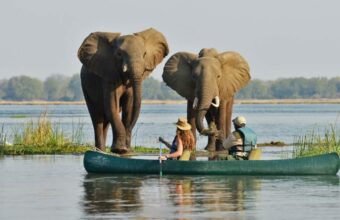
Zambezi Canoeing & Kafue National Park
Canoe, safari and boat cruise in kafue national park.
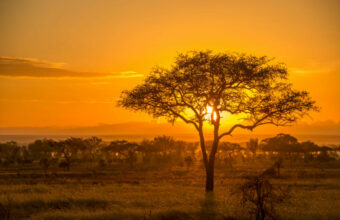
Botswana & Zambia Safari
Other guides you might like, safari in kenya, kenya's best safari reserves and camps, south africa safari, an expert guide to safaris in south africa.
Anthony Ham
Wildebeest migration safaris, an essential guide to planning a migration safari in tanzania and kenya.
Hans Cosmas Ngoteya
Safari in zambia, safari in tanzania, an expert guide to tanzania's best safari parks & camps, safari in botswana, an expert guide to botswana's best safari reserves, camps and experiences, where and how to see the big 5 on safari in africa, safari in africa, our travel writers' top africa safari picks, zimbabwe safaris, an expert guide to the best safari camps in zimbabwe, chimpanzee trekking, an expert guide to seeing chimpanzees in the wild.
Philip Briggs
Namibia safari, an expert guide to the best safaris in namibia.
Melanie van Zyl
Why horizon guides.

Impartial travel guides
Our guides are written by the leading experts in their destinations. We never take payment for positive coverage so you can count on us for impartial travel advice.

Expert itineraries
Suggested itineraries and routes to help you scratch beneath the surface, avoid the tourist traps, and plan an authentic, responsible and enjoyable journey.

Specialist advice
Get friendly, expert travel advice and custom itineraries from some of the world's best tour operators, with no spam, pressure or commitment to book.
Our guides are 100% impartial and are written by independent, professional travel journalists. We make money by charging carefully-screened travel companies to list their business on our website. Our advertisers have no influence on our editorial content and we never accept payment for positive coverage.
Read more about how we work and what we believe in here .
- Travel guides
- Work with us
Sitemap , Privacy Copyright © 2024 Horizon Guides
Zambia Safaris
10 best zambia safaris for 2024-2025, highlights of malawi and zambia, classic zambia safari adventure, zambia wildlife explorer, lower zambezi national park, kafue explorer, south luangwa national park, victoria falls at tongabezi lodge, kaza undercover, luxury botswana safari, kafue & lower zambezi snapshot, 8 best safari cruise trips to zambia for 2024-2025, 5 best luxury cruises, tours, and safaris in zambia for 2024-2025, 8 favorite zambia safari lodges for 2024-2025, shumba safari camp, the david livingstone safari lodge & spa, chindeni bushcamp, bilimungwe bushcamp, chamilandu bushcamp, kapamba bushcamp, kuyenda bushcamp, 6 best places to visit in zambia for 2024-2025.
- Victoria Falls
- Kafue National Park
Zambian Victoria Falls
- Livingstone, Zambia
African Safari Videos
Zambia Safari Guide & Travel Tips
Wildlife guide for zimbabwe and zambia.
- Zambezi National Park – Take a classic safari in a scarce-visited wildlife park, where you are sure to see buffalo, elephant, lion, leopard, and antelope on your daily excursions from your luxury bushcamp.
- South Luangwa National Park – In addition to the other animals you'll see on game drives, the rivers are home to healthy populations of hippos and crocodiles!
- Kuzuma Forest – Bird watching, guided bush walks, spa treatments, cultural tours, and fishing trips complement the game drives you can do here.
- Victoria Falls – Sharing a border with Zimbabwe, these impressive record-holding waterfalls are considered the most beautiful in the world, and are home to the renowned "Devil's Pool" on the very edge of the falls.
- Busanga Plains of Kafue – Another classic yet isolated destination for a safari adventure, where you'll see large herds of puku, red lechwe, and smaller groups of blue wildebeest and zebra.
Best Time to Do a Zambia Safari
Zambian culture.
- Busanga Bush Camp (Busanga Plains in Kafue National Park)
- Shumba Safari Camp (Busanga Plains in Kafue National Park)
- Toka Leya (right on the Zambezi River close to Victoria Falls)
- Sausage Tree Camp (Zambezi National Park)
- Kapamba Bushcamp (South Luangwa National Park)
- Fig Tree Bush Camp (overlooking the banks of the Shishamba River)
- Mukambi Plains Camp (Busanga Plains of the Kafue National Park)
- Mukambi Safari Lodge (Kafue National Park)
- Chindeni Bushcamp (South Luangwa National Park)
- Mfuwe Lodge (South Luangwa National Park)
Top Places to Visit in Zambia
Best time to go to zambia, zambia faq's, zambia travel faqs, zambia travel reviews & stories, our african adventure, november mfuwe lodge trip, top zambia travel destinations, zambia trips by departure date.
- 2024 Zambia trips (20)
- 2025 Zambia trips (17)
- 2026 Zambia trips (11)
- September 2024 (20)
- October 2024 (20)
- November 2024 (14)
- May 2025 (15)
- June 2025 (16)
- July 2025 (16)
- August 2025 (17)
- September 2025 (14)
- October 2025 (14)
Top Experiences in Zambia
- Zambia Wildlife & Safari Exploration (19)
- Zambia Land Tours (11)
- Zambia Cruises (8)
- Zambia River Cruises (8)
- Zambia Luxury (5)
- Zambia Cultural (5)
Zambia Trips by Duration
- 9 day trips (3)
- 13 day trips (4)
Zambia Trips by Activity
- Zambia wildlife viewing (19)
- Zambia village visits (11)
- Zambia wilderness lodge exploration (9)
- Zambia helicopter tours (4)
- Zambia land & sea exploration (4)
- Zambia camping (3)
- Zambia wine tasting (3)
Why Travel With Adventure Life
Recognized by.

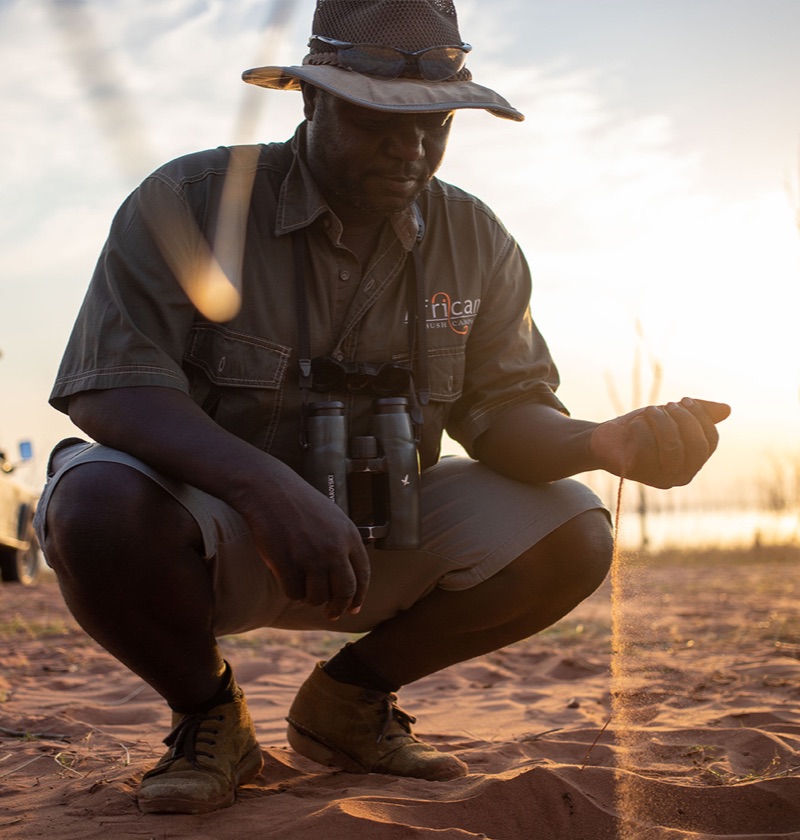
- In the Media
- ABC Foundation
- Our Ultimate Guides
- Live in Camp
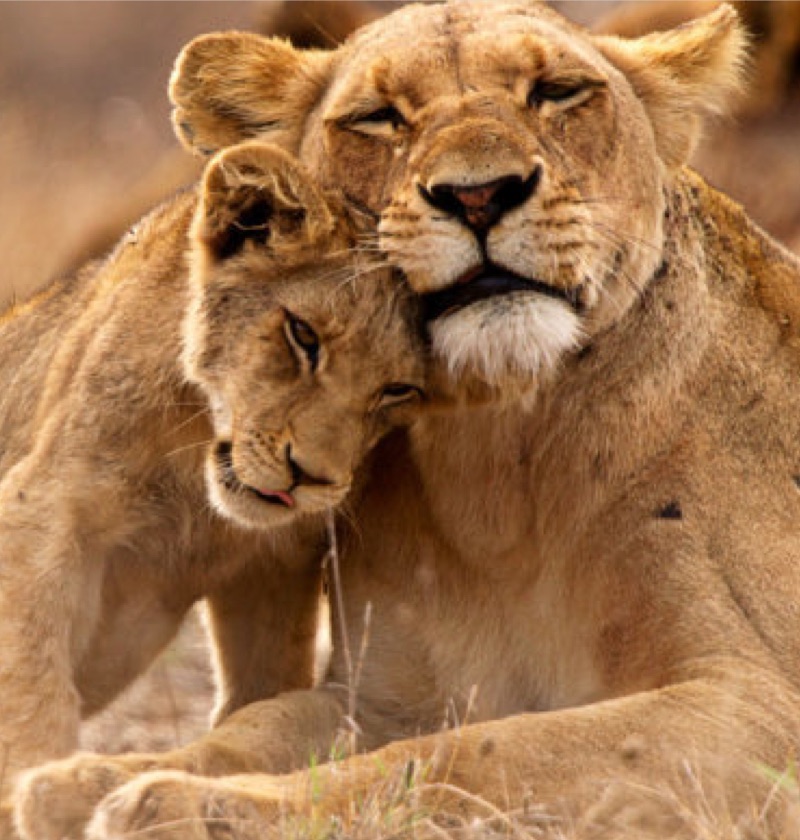
- Authentic Botswana
- Authentic Mana Pools
- Authentic Zimbabwe
- Emerald Season Botswana
- Heritage of Zimbabwe
- Icon Safari
Safari Experiences
- Luxury Okavango
- Luxury Zambezi
- Luxury Zambia
- Luxury Zimbabwe
- Magic of Three Countries
Impact Safaris
- 2025 Foundation Hosted Impact Safari
- Learner Development Safari
- Conservation Safari
- Women Empowerment Safari
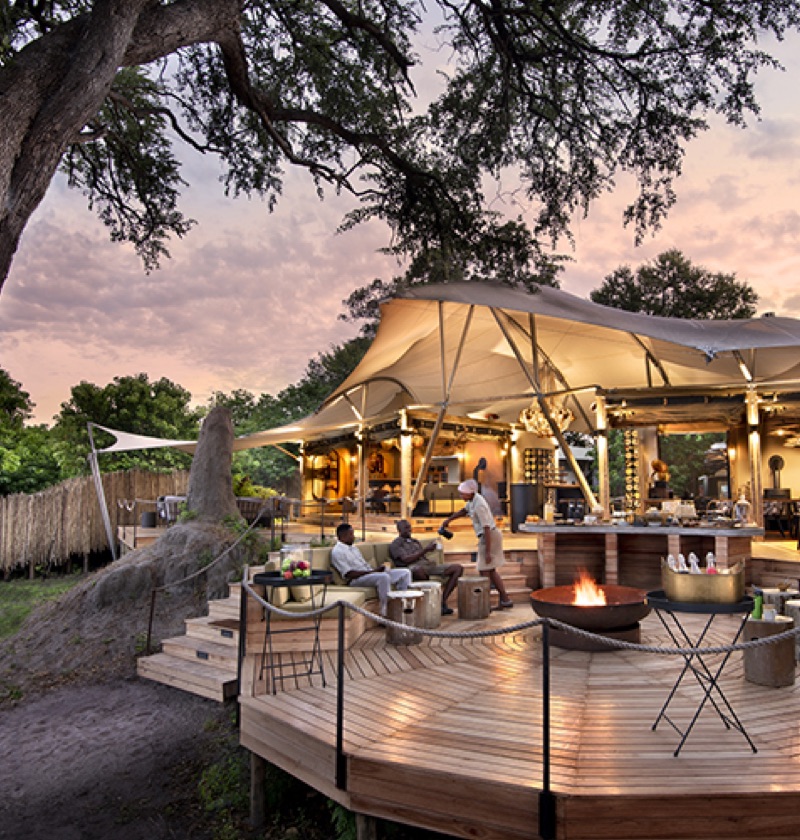
Expedition Experiences
- Zambezi Expeditions
- Somalisa Expeditions
- Linyanti Expeditions
- Kanga Expeditions
Signature Experiences
- Linyanti Bush Camp
- Somalisa Camp
- Nyamatusi Camp
- Somalisa Acacia
- Khwai Leadwood
- Khwai Lediba
- Nyamatusi Mahogany
- Linyanti Ebony
- Bumi Hills Safari Lodge
- Khayelitshe House
Icon Experiences
- Thorntree River Lodge
- Atzaró Okavango Camp
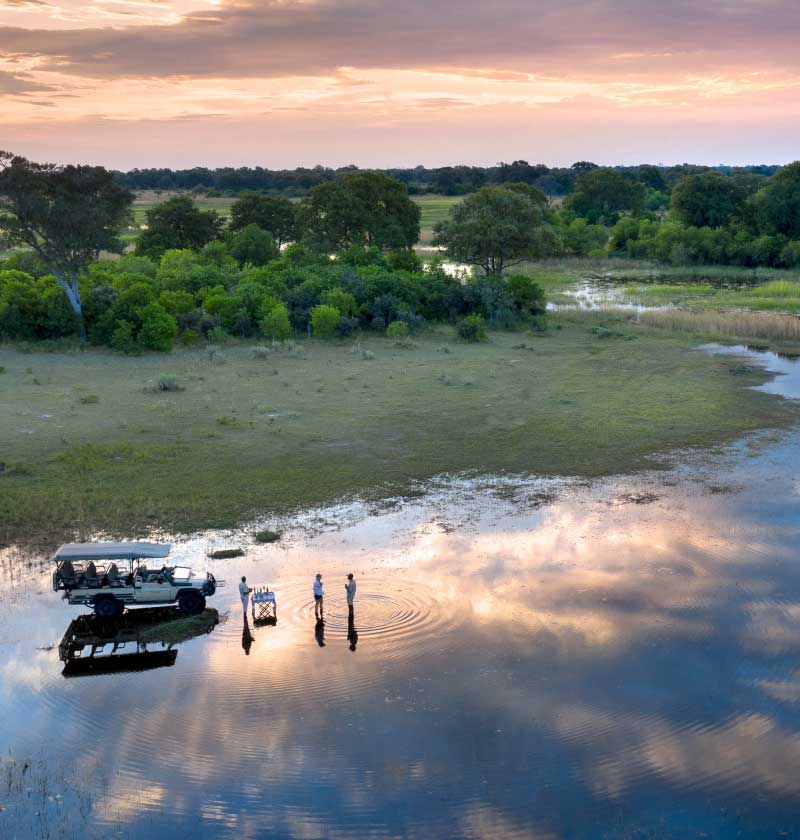
- Linyanti Wildlife Reserve
- Khwai Community Area
- Okavango Delta
- Lake Kariba & Matusadona
- Mana Pools National Park
- Hwange National Park
- Matobo National Park
- Victoria Falls
- Mosi-oa-Tunya National Park (Livingstone)
- Lower Zambezi
- Our Foundation
Get in Touch
Talk to a safari expert.

Top Safaris
Zambia safari: your guide to our intimate heartland, what you will learn about in this guide:.
- Why you should visit our intimate heartland in Zambia
Wildlife in Zambia
- Climate in Botswana
- Languages and Cultures in Zambia
- Our Signature Camps in Zambia
- What to Pack on your Zambia safari
Why Zambia?
Zambia is renowned for its glorious national parks, which make up one third of the country. It is home to the game-rich , south Luangwa, the calm lower Zambezi, and, of course, the iconic Victoria Falls— a vast curtain of thundering water located in the Mosi-oa-Tunya National Park , a UNESCO World Heritage Site .
Another one of Zambia’s draw cards , is its rich and diverse landscapes. Zambia has many vast, untouched areas, including mountain highlands, deep rift valleys, wetlands, and floodplains, just to name a few. The country is known for its hospitable nature. You’re in for a sure treat when meeting the locals and other travellers in search of adventure in this resourceful country.
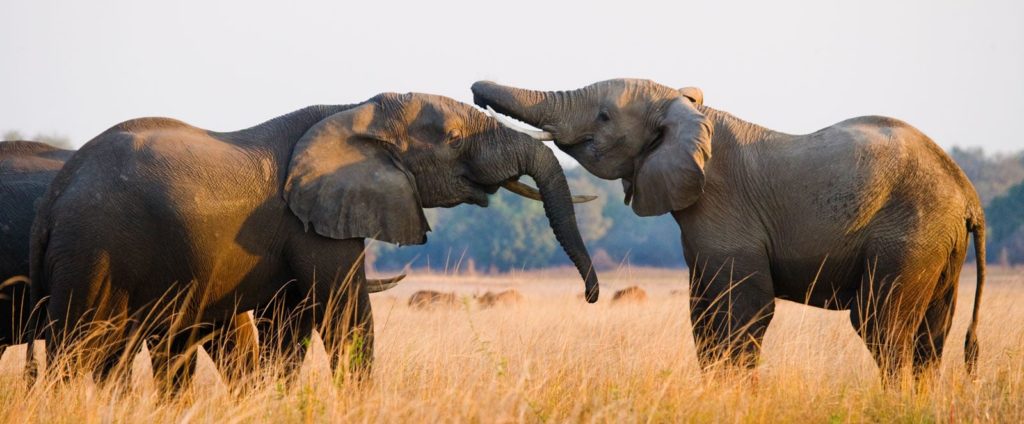
A typical Zambia safari includes a walking safari, a visit to the Victoria Falls , the wild Zambezi River, and, of course, the raw, untamed wilderness. For travellers who are passionate about wildlife, you will soon find that Zambia is a wildlife paradise. We suggest you pack your camera and some extra batteries. This country is filled with picturesque opportunities and memorable experiences.
At African Bush Camps, we’re passionate about Africa, its wildlife, and its resources, which include the communities surrounding our camps. We’ll gladly include cultural visits as part of your itinerary. This will give you an opportunity to experience much more on your trip and will give you a deeper insight into the communities that surround our beautiful camps.
Why Should You Visit Zambia?
- Experience one of the seven natural wonders of the world: Victoria Falls.
- Visit one of the continent’s best safari destinations.
- Explore the largest man-made lake in the world, Lake Kariba.
- Experience wildlife, right on your doorstep at Thorntree River Lodge.
Zambia is an excellent safari destination to view wildlife, Kafue, South Luangwa, and the Lower Zambezi are particularly fascinating. Leopard sightings are quite common, including wild dogs and cheetah, if you’re lucky. You can rest assured that you will find the Big Five in Zambia
Rhinos are more difficult to spot and are mostly restricted to Mosi-oa-Tunya and North Luangwa National Parks. Elephants, buffalo, and lions are common in most of the parks, although Kafue and South Luangwa are particularly well-known for their leopard sightings. Beyond the Big Five, you will find that Zambia is filled with fascinating rare and endangered species. This includes black lechwe and Crawshay’s zebra.

The second largest wildebeest migration in Africa takes place in November in the Liuwa Plain National Park. Kasanka National Park is home to 10 million fruit bats, which fly from October through December.
Zambia has a more pleasant climate than other tropical countries in Southern Africa. Its rivers and lakes are ideal for fishing, and the country has thriving populations of hippo and crocodiles.
Climate in Zambia
Zambia has a tropical climate characterized by distinct wet and dry seasons. Here’s an overview of the climate in Zambia:
Dry Season (May to October):
- The dry season in Zambia is considered the winter season.
- It is generally a cooler and drier period with lower rainfall.
- Daytime temperatures range from around 25°C (77°F) to 30°C (86°F) on average.
- Nights and early mornings can be cool, with temperatures dropping to around 10°C (50°F) in some regions.
- This season is ideal for wildlife viewing as animals congregate around water sources, making them easier to spot.
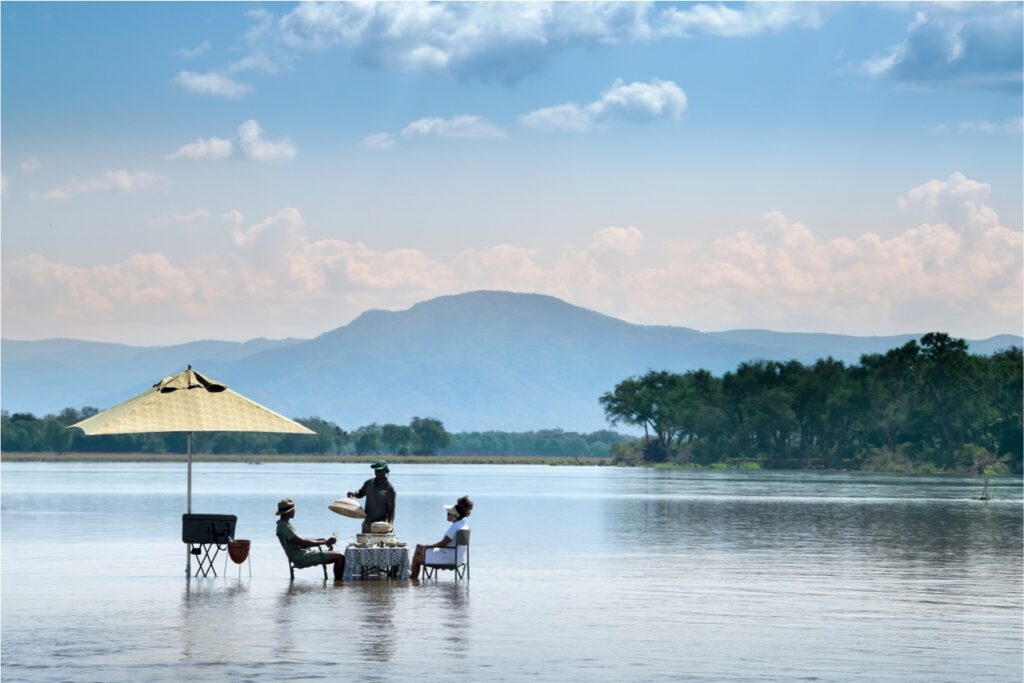
Wet Season (November to April):
- The wet season in Zambia coincides with the summer season.
- It is characterized by higher temperatures and increased rainfall.
- Daytime temperatures during this period range from around 25°C (77°F) to 35°C (95°F) on average.
- The humidity levels are higher, especially closer to the rivers and wetland areas.
- Rainfall varies across the country, with regions in the north and east receiving more precipitation than those in the south and west.
- The landscape turns lush and green during this time, and it’s the breeding season for many animals, offering great opportunities for birdwatching and witnessing newborn wildlife.
- It’s important to note that Zambia’s climate can vary across different regions and altitudes. The higher areas, such as the plateau regions, tend to be cooler than the lower-lying areas. Additionally, localized variations in rainfall patterns can occur.
Languages in Zambia
There are several languages that belong to the Bantu clan in Zambia. English is the official language, and the main language for business and education. Although there are 72 languages in Zambia, many of them could be considered dialects. While some of these languages have a long and rich history in Zambia, others, such as Lozi, are the result of migrations in the 18th and 19th centuries. All the vernacular languages of Zambia are part of the Bantu clan and are closely related.
Bemba, Nyanja, and Tonga are the most common indigenous languages in Zambia. These groups make up about 90% of Zambians.
Other indigenous languages include Ila, Mambwe, and Namwanga.
Imagine that over 70 languages have been identified as Zambian! It would be easy to believe that the country would become a nation of conflicts due to its diversity of languages.
The “One Zambia, One Nation” slogan, which was created by Dr. Kenneth Kaunda, the first president of Zambia, has contributed to the peace that Zambia has enjoyed.
The official language of Zambia, English, is another contributing factor. This choice makes it so that no one tribe feels superior to the others.
People from diverse tribal backgrounds have come together to form a friendly and gregarious atmosphere. This has allowed people to marry across tribal lines, something that was rare before.
Culture in Zambia
The modern culture of Zambia is a mixture of the values, norms, and spiritual traditions of over 70 different ethnic groups. Many of the tribes in Zambia arrived in the region through migratory waves some centuries ago. These tribes grew in number and moved on to establish new kingdoms and farm land.
Before being colonized, Zambia was home to a few free states. They had extensive economic connections with one another and the rest of the world via trade routes that connected them to the west and east coasts of Africa. Copper, ivory, and slaves were the main exports. They could be exchanged for jewellery, salt, textiles, and hardware.
Ethnically diverse people were brought together by economic interests during the colonial period. This, along with the clear influence of western standards, created a new culture that was not subject to any political directives.
Rural residents have maintained their traditional and indigenous values and customs. The government recognised the importance of culture in the development of a nation after independence in 1964 and began exploring the idea of a national identity.
The National Heritage Conservation Commission was one of the institutions created to preserve and promote Zambia’s culture. To encourage the expression of artistic talent, cultural villages and private museums were also established.
Where to Go
Our Zambia camps offer luxury and comfort, surrounded by sublime views from every angle.
Thorntree River Lodge is the perfectly positioned lodge from which to enjoy water activities on the iconic Zambezi River, while Lolebezi is set in the breathtaking, untouched wilds of the Lower Zambezi National Park .
Relax, reset and unwind while gazing at the silhouettes of the acacias against the flaming sunset, walking through the trees to spot some of Africa’s most impressive wildlife, and come back to world-class luxury in your room in the evenings.

Our Icon Camps in Zambia
Thorntree river lodge- haven of serenity.
The beautiful Thorntree River Lodge is located on the banks of the Zambezi River in the Mosi-Oa-Tunya National Park. Here, you will be able to unwind in the infinity pool, which seamlessly blends with the river horizon, for a moment of respite from a busy day in the bush. Thorntree River Lodge is a celebration of connection and community. Enjoy a refreshing sundowner while you experience the majestic African sunset from your deck. You may also enjoy one of our unique fine-dining experiences.
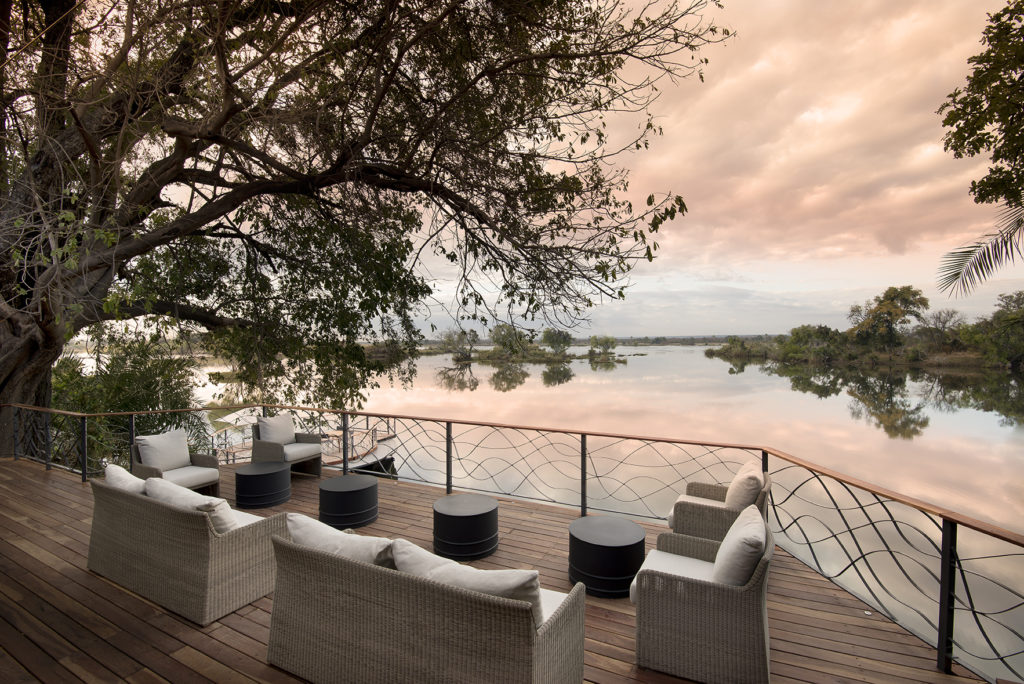
The lodge is located just 20 minutes downstream from Victoria Falls. It can be accessed via the international airports of Victoria Falls or Livingstone. Our famous kids’ club, the Ngwana Club, is open to all ages.
Thorntree River Lodge is a unique Zambia safari lodge that combines a peaceful riverside setting with an eco-conscious approach. This lodge is inspired by a mix of traditional African culture and contemporary influences. African Bush Camps’ mindful philosophy elevates your experience.
The Lodge is a peaceful base for exploring a variety of amazing activities. The shared areas offer stunning river views from their unique vantage points. The lounge flows seamlessly into the dining room, and the library has WIFI connectivity. The deck, which is located on the riverside, is home to a sunken Boma and an infinity swimming pool. Thorntree River Lodge also offers a spa and a gym that promote holistic wellness.
We offer daily excursions from our lodge in Livingstone, Zambia to the Zambian (and Zimbabwean) sides of the Victoria Falls. Private river cruises, cultural visits, and canoeing are all part of your stay. We can also book activities like bungee jumping, helicopter flips, and guided rainforest walks on your behalf.
Lolebezi – A Luxurious Experience on the Mighty Zambezi | Icon Camp
Lolebezi is the latest addition to the African Bush Camps family. The luxury safari lodge is being built in the eastern part of the Lower Zambezi National Park on 5 hectares of unspoiled protected wilderness.
Lolebezi offers travellers a unique, secluded, wilderness experience.

The lodge is being constructing on the banks of the Lower Zambezi, boasting in one kilometre of river frontage. Travellers can expect a immersive, world-class Zambian experience, which celebrates the location, wildlife and the Lolebezi’s luxurious, yet unpretentious design.
Atzaro Okavango Camp – Sustainable Luxury in the Heart of the Delta | Icon Camp
Experience sustainable luxury at Atzaro Okavango Camp , an exquisite safari destination located in the heart of Botswana’s Okavango Delta. Immerse yourself in the awe-inspiring landscape of this World Heritage wilderness, surrounded by lush palm islands and vibrant delta vegetation. Our eco-friendly oasis offers a unique blend of “savanna meets delta” adventures and unforgettable wildlife encounters, ensuring an unparalleled experience in the captivating beauty of the Okavango Delta.
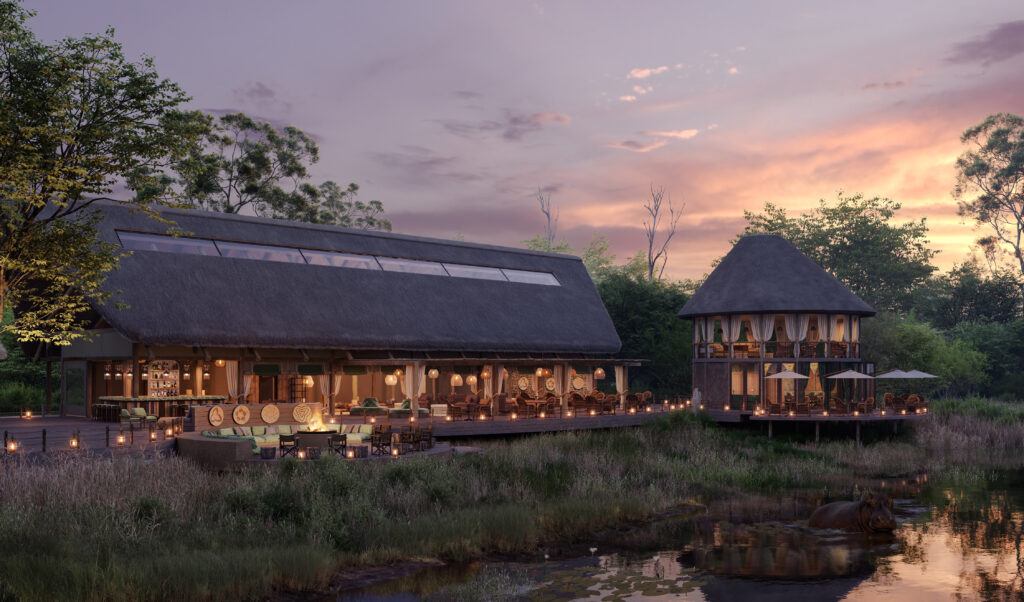
As our esteemed guest, you’ll have the opportunity to witness iconic African wildlife year-round, including elephants, buffalos, lions, leopards, giraffes, lechwes, and hippos. Whether you’re a safari enthusiast or a nature lover, our premier destination caters to your every need, providing a private and exclusive experience, regardless of the size of your travel group.
Thorntree River Lodge – A Haven of Serenity on the Banks of the Zambezi River
Faqs- frequently asked questions, what are the popular safari destinations in zambia.
Popular safari destinations in Zambia include South Luangwa National Park, Lower Zambezi National Park , Kafue National Park, and the Victoria Falls area. When is the best time to go on a safari in Zambia?
The dry season from May to October is generally considered the best time for safaris in Zambia. During this period, wildlife congregates around water sources, making it easier to spot animals.
What wildlife can I expect to see during a Zambia safari?
Zambia is known for its diverse wildlife, including elephants, lions, leopards, giraffes, zebras, hippos, crocodiles, and numerous antelope species. You may also spot rare species like wild dogs and endemic birds.
What types of safaris are available in Zambia?
Zambia offers various safari experiences, including game drives, walking safaris, canoe safaris, and boat safaris. Each provides a unique perspective on the wildlife and landscapes of Zambia.
Are there any safety considerations or precautions to keep in mind while on a safari in Zambia?
It is important to follow the instructions of your experienced guides, maintain a safe distance from animals, and avoid any sudden movements or loud noises. Malaria precautions should be taken, and travel insurance is recommended.
What are the accommodation options for a Zambia safari?
Accommodation options range from luxury lodges and tented camps to budget-friendly campsites. Many lodges offer all-inclusive safari packages, ensuring a comfortable and immersive experience.
How do I reach the safari destinations in Zambia?
The main entry point for international travelers is through Kenneth Kaunda International Airport in Lusaka, the capital city of Zambia. Domestic flights or road transfers are then used to reach the safari destinations.
Are there any cultural or etiquette considerations to be aware of during a Zambia safari?
Respecting local customs and traditions is important. It is customary to greet locals and ask for permission before taking photographs of people. Additionally, following any specific guidelines provided by your guides or camp staff is recommended for a respectful and enjoyable safari experience.
Can I combine a Zambia safari with a visit to Victoria Falls?
Yes, many visitors combine a safari in Zambia with a visit to the majestic Victoria Falls. It’s a popular itinerary option, allowing you to experience both the wildlife-rich parks and the awe-inspiring natural wonder.
Do I need a visa to visit Zambia for a safari?
Visitors from most countries will require a visa to enter Zambia. It is recommended to check the visa requirements well in advance and obtain the necessary documentation before your trip.
Enquire Now
Start Planning Your Safari
" * " indicates required fields
Please note that all our camps are exclusively all-inclusive experiences; all meals, activities, and accommodation are included in your safari. T&Cs apply.
Newsletter sign up
- &BEYOND LODGES
- South Africa
- Flying solo
- With my partner
- With my family
- Adventurous
- Responsible Travel
- Private Travel
- Slow Travel
- TRAVEL TRADE PORTAL
- MANAGE YOUR TRAVEL BOARD
- Indian Ocean Islands
- South America
- The Wild Coast
- Kafue National Park
- Liuwa Plains National Park
- Livingstone
- Lower Zambezi National Park
- South Luangwa National Park
Discover Zambia’s iconic destinations
Zambia is the undiscovered treasure trove of Africa. It shelters extraordinary natural beauty and is one of the most pristine and unspoiled wildlife havens on the continent.
It is easy to see why Zambia boasts one of the largest areas of land under protection as a national park in Africa. The thundering splendour of the Victoria Falls draws most visitors to this gentle and peaceful country.
Less frequented than Zimbabwe, many travellers prefer to see the falls from the Zambian side and some claim the views are even more spectacular.
Our favourite reasons to travel
From exceptional offers to not-to-be missed tours and experiences, here are our favourite reasons to explore zambia that matched your preferences, tailormake your stay.
Talk to one of our travel specialists to tailormake your stay to any of our destinations
Frequently asked questions
Stories to inspire, our selection of zambia stories from the bateleur magazine, our travel specialists, we're on hand to make your tailor-made adventures come true, i dream of travel that leaves our world a better place.
You’re just 5 easy (and fun) steps away from creating your ideal Travel Dream Board.
Step 1: Start with where
Step 2: Clarify what kind of traveller you are
Step 3: Tick off those grand bucket list experiences that will fire your imagination
Step 4: Log in to create and add to your Dream Board
Step 5: Share & start dreaming
Leaving our world a better place for years
Discover the impact legacy that your travel with &beyond is driving. just as the un’s sustainable development goals have been a touchstone for our vision 2020 group-operation sustainability audits, so they continue to guide and underpin our ambitiously scaled vision 2030 goals., privacy overview.

- Complete Kafue Safari
- Great Valleys of Zambia
- Great Zambian Circuit
- Zambezi Waterfalls, Kafue and Barotse Safari
- Northern Zambia Safari
- Tailor Made
The most experienced mobile safari team in Zambia
We run mobile safaris in the popular National Parks and hidden corners of Zambia.
Get close to nature
Safari like the good old days, have the freedom to explore, struggling to find the perfect safari, ready to experience a true zambian safari, the 3 advantages to choosing a mobile safari.
Why would you choose a mobile safari over a permament camp?
The nightly rate of your mobile safari tends to be lower than the permanent camps which means your budget goes further.
Mobile safaris take you into remarkable places that the normal tourist routes don’t reach. Your private adventure is not only unique by design but also very exclusive.
You will have a very personal and memorable time with our experienced team. The ZSC team take care of your every need. Camp setups, great meals, hot showers and ice cold drinks are the order of the day! Boasting excellent cuisine, great guiding and the best quality camping gear in the country. So, for those of you not opting for an accommodated tour, you will also be super comfortable in our mobile bush camp set up.
“The Zambia Safari Company organised our first safari in Zambia and we’ve been traveling with them ever since! Paul has a deep understanding of wildlife and Africa in general, his work with the community is inspiring, he’s excellent company and great fun to be with.”
– dr rick squires, nottingham uk, we offer 3 types of mobile safaris in zambia.
You can decide what type of mobile safari you want to experience
1. Pre-Set Routes
Choose from our 5 set mobile safari packages through Zambia.
2. Tailor Made Safaris
Let us create your own unique safari, tailored to your preferred destinations and wishes in Zambia. Exclusive & Private.
3. Semi-Permanent Bushcamps
Our bushcamps are setup in specific locations to witness a unique wildlife event.
Still not sure a mobile safari is the right option for you?
Card Accounts
Business Accounts
Other Accounts and Payments
Tools and Support
Personal Cards
Business Credit Cards
Corporate Programs
Personal Savings
Personal Checking and Loans
Business Banking
Book And Manage Travel
Travel Inspiration
Business Travel
Services and Support
Benefits and Offers
Manage Membership
Business Services
Checking & Payment Products
Funding Products
Merchant Services

Micato Safaris View Photos
Expert-led safaris combining beauty and extravagance..
Award-winning Micato Safaris offers all-inclusive luxury safaris and journeys throughout India and East and Southern Africa. Every safari is led by highly credentialed safari directors and driver-guides. Customized journeys are defined by Micato Safaris’ well-known personal warmth and treatment of each guest like a relative visiting from out of town. Each lodge and camp balances beauty with extravagance, from personal butlers and en-suite plunge pools to private verandahs overlooking the wilderness. And for every safari sold, Micato Safaris sends a child to school.
Featured In:
Micato Safaris’ African Tours: Memories to Last a Lifetime
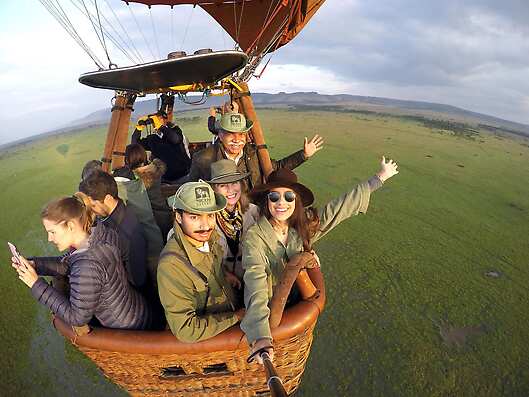
With Platinum Destinations® Vacations, Platinum Card® Members who book custom vacations through American Express Travel can get 2X Membership Rewards® points on eligible itineraries with participating providers.
Enjoy special offers on select cruises and custom vacations when you book through American Express Travel® by 7/16/24. Terms apply.
Platinum Card Members®, share a few details about your dream trip and we’ll contact you to plan the rest.
Venture to landmark cities and hidden gems alike aboard Seabourn’s fleet of sophisticated and intimate resorts at sea.
*Terms and Conditions
Cruise Privileges Program Cruise Privileges Program (“CPP”) benefits are valid only for new CPP bookings made with participating cruise lines through American Express Travel. CPP benefits are valid only for eligible U.S. Consumer and Business Platinum and Centurion ® Card Members (Delta SkyMiles ® Platinum Card Members are not eligible). CPP bookings must be made using the eligible Card. CPP benefits are non-transferable. Participating cruise lines and program benefits are subject to change. The benefits of an onboard credit and amenity are valid for new CPP bookings of at least five nights and require double occupancy; the eligible Card Member must be traveling on the itinerary booked; the total cost of the CPP booking must be paid using an American Express ® Card in the eligible Card Member's name. Onboard credits and amenities cannot be combined with other offers unless indicated; blackout dates, category and fare restrictions may apply. Onboard credits and amenities may not be available to residents outside of the 50 United States. Onboard credits and amenities apply per stateroom, with a three-stateroom limit per eligible Card Member, per cruise. For new CPP bookings with Celebrity Cruises, Norwegian Cruise Line, Holland America Line, Princess Cruises, and Royal Caribbean International, eligible Card Members receive an onboard credit (in USD) of: $100 for inside and outside staterooms, $200 for balcony, verandah, and mini-suite staterooms, and/or $300 for suites. For new CPP bookings with Cunard, eligible Card Members receive an onboard credit (in USD) of: $300 for all Queen Mary ocean-view staterooms category EF or higher, and/or Queen Victoria or Queen Elizabeth ocean-view staterooms category FA or higher. For new CPP bookings with Ama Waterways, Oceania, Regent, Azamara, Seabourn, Silversea, Uniworld, Windstar and Explora Journeys, eligible Card Members receive an onboard credit of US$300 for all stateroom categories. For new CPP bookings, Centurion Members receive an additional US$200 onboard credit on Explora Journeys, Regent Seven Seas Cruises, Seabourn, and Silversea. Onboard credits will be applied at checkout upon completion of the cruise; credit amounts in local currency may vary due to foreign exchange rates; credits are subject to cruise line terms and policies; credits cannot be used for casino charges, gratuities, or other similar charges. Any unused portion of a credit is non-refundable and is not redeemable for cash. Other restrictions may apply. Onboard amenities vary by participating cruise line and are not available on Silver Explorer, Silver Galapagos, and Silver Discoverer. Onboard credits and amenities are not available on Celebrity Cruises Galapagos sailings.
Extra Membership Rewards ® points: CPP-eligible Card Members that are Membership Rewards program-enrolled will receive one (1) extra Membership Reward ® point per eligible dollar spent on new CPP bookings made with participating cruise lines through American Express Travel; separate airfare and other charges associated with such bookings are not eligible. CPP bookings must be made using the eligible Card (described above). The extra points will be credited to the Card Member’s Membership Rewards account 8-12 weeks after completion of the CPP cruise. For more information visit membershiprewards.com/terms .
Platinum Destinations ® Vacations Platinum Destinations ® Vacations (“PDV”) benefits are valid only for new bookings made with participating suppliers through American Express Travel. Participating suppliers and PDV benefits are subject to change. Benefits cannot be combined with other offers unless indicated. Benefits are valid only for eligible U.S. Consumer and Business Platinum and Centurion ® Card Members (Delta SkyMiles ® Platinum Card Members are not eligible). PDV bookings must be made using the eligible Card and eligible Card Member must be traveling on the itinerary booked. PDV-eligible Card Members that are Membership Rewards program-enrolled will receive one (1) extra Membership Reward ® point per eligible dollar spent on PDV bookings; separate airfare and other charges associated with PDV bookings are not eligible. Extra points will be credited to the Card Member’s Membership Rewards account within 8-12 weeks after completion of the PDV travel. For more information visit membershiprewards.com/terms.
Membership Rewards Program Terms and Conditions for the Membership Rewards ® program apply. Visit membershiprewards.com/terms for more information. Participating partners and available rewards are subject to change without notice.
The value of Membership Rewards points varies according to how you choose to use them. To learn more, go to www.membershiprewards.com/pointsinfo .
American Express Travel Related Services Company, Inc. is acting solely as a sales agent for travel suppliers and is not responsible for the actions or inactions of such suppliers. Certain suppliers pay us commission and other incentives for reaching sales targets or other goals and may provide incentives to our Travel Consultants. For more information visit www.americanexpress.com/travelterms .
California CST#1022318; Washington UBI#600-469-694

National Geographic content straight to your inbox—sign up for our popular newsletters here

From conservation to community, here's how luxury safaris make a difference
Post-pandemic, the cost of a stay in a high-end lodge has soared, commonly reaching four figures per night. From conservation to community, here’s how it makes a difference.
Thirty years ago, when Beks Ndlovu was starting out as a guide near his village in Zimbabwe’s Hwange National Park, safaris were a different beast. Then, it was all functional camps offering back-to-nature simplicity for gnarly wildlife enthusiasts — more animal encounters than creature comforts. “It wasn’t so much about the nature of the accommodation as the experience — spending time in these remote places with your guide,” he says.
In the intervening years, what he calls the “luxury space” has surged in popularity, driven by changing customer tastes towards high-end, relaxing experiences. For the camps, “it’s become an arms race,” says Chris McIntyre, head of Expert Africa, which specialises in high-quality, tailor-made and sustainable safaris to Southern and East Africa. Spa treatments, infinity pools and world-class gastronomy are rapidly becoming the norm. “Comfort levels have continued to march upwards,” he says.
This has translated to soaring prices for safaris that — enshrined in a ‘high-price, low-density’ business model to protect the delicate ecosystems in which they operate — were already expensive. Now, spending more than £1,000 a night per person is not uncommon. Take the family for 10 days on a tailor-made trip to an exclusive camp in the likes of Botswana or Namibia and five-, even six-figure outlays are possible. “The prices have shot up and, post pandemic, we’re seeing that even more,” says McIntyre.
The demand is fuelled partly by the post-Covid migration towards open spaces and carpe-diem bucket-list endeavours; Africa — as the leading continent for wildlife tourism — has bounced back from the touristic carnage of recent years. It was the continent with the fastest tourism growth in 2023, according to the World Tourism Organization (UNWTO), with international arrivals at 96% of 2019 levels — the strongest recovery in the world. That translated to 66.4m international visitors, a figure the UNWTO predicts could hit 134m by 2030.
Back from the brink
With demand and prices locked in the same upwards trajectory, surely that’s a much-needed fillip for the conservation of the landscapes and wildlife that underpin the whole enterprise?
Certainly the need for intervention has never been greater: the past half-century has seen unprecedented harm wrought on global wildlife populations — depleted by an average of two-thirds since 1970 according to the WWF’s Living Planet Report of 2022. Sub-Saharan Africa has been at the sharp end, suffering significant declines in all its major mammals.

The alarming fragility was exemplified by the plight of the black rhino. With poaching helping to wipe out 96% of the population in just 25 years up to 1995, conservation efforts pulled the species back from the brink. Of course it’s not just poaching that poses a threat; habitat loss caused by agricultural expansion, deforestation and mining can be equally destructive, while the hunting of game for bushmeat is an enduring challenge. It’s the reason why conservation efforts on the part of safari organisations tend to focus as much on the education and empowerment of local communities as they do on the monitoring and protection of wildlife and habitat.
High-end safaris offer a vital source of funds for such efforts — though luxury camps are far from the money-printing machines some might imagine. The outlays, both initial and ongoing, are enormous. With zero economies of scale, everything from construction and transport to power and connectivity can be up to 50% higher than in urban areas. A workforce large enough to service the generous staff-to-guest ratios demanded must be fed and accommodated. There are lease and national park fees to pay, anti-poaching patrols to finance and a hefty marketing budget; when you’re immersed in the wilderness, there’s not much passing trade. “Everything carries a premium,” says Kate Hughes of Lepogo Lodges, a safari group operating in South Africa.
All of this has to be financed through a handful of guests staying each night. “With higher-end lodges, it’s all about exclusivity,” explains Dr Jennifer Lalley, co-founder of Natural Selection, a conservation-driven collection of 24 camps and lodges across Botswana, Namibia and South Africa.
Just having a safari camp that people visit has a positive benefit, according to Dr Lalley, particularly with the ongoing battle against poaching — poachers typically think twice about targeting areas with lots of potential witnesses. But, with travellers increasingly savvy when it comes to conservation credentials, a mere presence is no longer enough. A safari organisation needs to have tangible benefits on its environment, above the standard website bluster.
“There’s a lot of greenwashing out there,” says Dr Lalley. One common misdirection is to play up the number of local people employed or acres looked after. Both aspects are worthwhile, of course — “yet also just the costs of doing business,” she says. In other words, open a remote lodge, and you have no option but to employ locals to service it, and you also need a certain-sized area for your guests to enjoy. She urges would-be safari-goers to “find out who’s going the extra mile”.
African Bush Camps is an exemplar of this. Tormented by returning to areas in which he’d guided only to find deforestation and decimated wildlife, Ndlovu set up African Bush Camps in 2006. It’s a collection of 17 camps and lodges in Botswana, Zimbabwe and Zambia whose principal focus is not just conserving the land in which they operate but regenerating it.
Projects that the organisation’s foundation have funded include planting native fruit trees to offer shelter to wildlife and rewilding areas that have been used in the past for cattle grazing. ‘Human-wildlife co-existence’ initiatives have also been implemented, including helping villages protect livestock from predators to prevent retaliation killings. Rather than focusing on the superficial — making token financial donations, throwing a couple of solar panels on the roof and calling it a day — they go multiple steps further.
Choosing wisely
The type of protected land you visit can be just as important, according to Justin Francis, founder and CEO of Responsible Travel, which offers more than 400 safaris across a range of African destinations. He’s a strong advocate for conservancies. Unlike government-operated parks or reserves, these are owned by local communities who receive a consistent income in the form of a lease fee and have the deciding say in the tourism activity that goes on — thereby creating not just income but buy-in.
It’s a new concept but not a niche one. Roughly a fifth of Kenya’s land mass is protected in some shape or form, and just over half of that is made up of community wildlife conservancies — up from zero in a generation. Namibia, Uganda and Zambia are also embracing the principle. “Conservancies are the future,” says Francis.
Overtourism is a reality in wildlife tourism too, says Francis. He mentions Ngorongoro Crater in Tanzania, where hundreds of wildlife-viewing vehicles a day converge, disturbing hunting patterns and habitats. It’s safari as a destructive rather than conserving force, and the inference for the consumer is clear: seek the lesser-known.
Lepogo Lodges, a brace of camps in South Africa’s Limpopo province, certainly falls into that bracket. The camps are lavish, with prices to match. Noka Camp, with its tented villas and plunge pools, starts at ZAR 36,000 (£1,500) per couple per night.
“We created our lodges to be as luxurious as possible so we could charge a premium rate and raise as much money as we could,” says operations director Kate Hughes. Shameless profiteering? Hardly. Lepogo is 100% non-profit, ploughing everything beyond its operating costs into schemes designed to preserve and enhance the environment. It sponsored the reintroduction of the endangered cheetah onto the reserve, a totemic animal for the business (‘lepogo’ means ‘cheetah’ in Northern Sotho). Another initiative saw them provide local communities with efficient wood-burning stoves to reduce deforestation.

The amounts that can be raised are mind-boggling: a family booking 12-bed Noka Camp exclusively for eight days could yield up to £30,000 alone for Lepogo’s conservation efforts. “For us it’s a no-brainer,” says Hughes. “We need to leave a conservation legacy.”
Wolwedans, in southwestern Namibia, is another organisation with conservation on its mind and high-net-worth individuals in its sights. It was established in 1995 specifically to generate income for the 800sq-mile NamibRand Nature Reserve. “Profit was seen as a by-product not the purpose,” recalls owner Stephan Brückner.
This has since been expanded to a portfolio of five exclusive lodges and camps, which attracts a roster of A-listers and captains of industry and has netted N$30m (£1.3m) in park fees alone. The area’s emblematic oryx are now thriving, and affluent visitors have funded initiatives including a centre providing vocational training to young Namibians.
“Half of what is generated here goes back into the community and conservation,” says Brückner. “We owe it to our children.”
Brückner believes that it’s at the ultra-affluent end of the market that the conservation potential is greatest. “Wealthy people are happy to pay a premium if they know it’s a good cause. There’s huge potential.”
Wolwedans was a founding member of The Long Run in 2009 — a collective of more than 60 nature-based tourism businesses, a third of them safari camps or lodges, committed to driving sustainability. In their words, they provide a framework for members and partners to ‘embed sustainability’ into their business models, which in practice means everything from site visits and action plans to organising events and remote support. Together they help safeguard nearly 25m acres of land. The focus is on the ‘4Cs’ sustainability model: conservation, community, culture — but also commerce, because only stable businesses can offer the long-term support that’s so patently needed.
And the uncomfortable truth is that it is a need. A dependency has been created around wildlife tourism; outlaw the process and the devastation would be swift, according to McIntyre. There’d be no income, or incentive, to protect the wildernesses, or the creatures that roam those areas. Agriculture, logging, mining and hunters would all sweep in. “It would be curtains for a lot of the reserves and it would be curtains in terms of the animals,” says McIntyre.
It’s a dependency that was exposed by the touristic hiatus of the pandemic. “As long as people are coming to Africa, there’s cash flow for us to do these activities,” says Ndlovu. “But when people don’t travel for two, three years, like we saw in Covid, it’s very easy to write off all the good work.”
The solution, he says, is simple: put money aside to ensure conservation can continue in hard times. The principle inspired his organisation to start Africa Change Makers last year, a scheme where $10 is put into a ‘war chest’ for every guest per night. This year, it’s expected to net $300,000; if it goes on growing that could be $2–$3m a year in extra conservation capital, says Ndlovu.
“We as an industry need to protect ourselves so that we have a business after the next crisis,” he says. And, in Africa, that’s always just round the corner. At the time of writing, Zambia, Zimbabwe and Malawi had all declared national disasters following devastating drought. During such times, watering holes dry up, so wildlife dies out, and camps struggle as travellers are put off, while costs go in the opposite direction.
McIntyre is optimistic. “It’s often three steps forward, one step back,” he says. “But most of the industry now understands that you need to support conservation and development of local communities — or you won’t have an industry.”
And we can do our bit, says Dr Lalley. “If you ask whether safaris can help conservation efforts, then absolutely. Without a doubt,” she says. “But people have to choose wisely.”
Related Topics
- WILDLIFE CONSERVATION
- ENVIRONMENT AND CONSERVATION
You May Also Like

Here's how you can witness rhino conservation in action
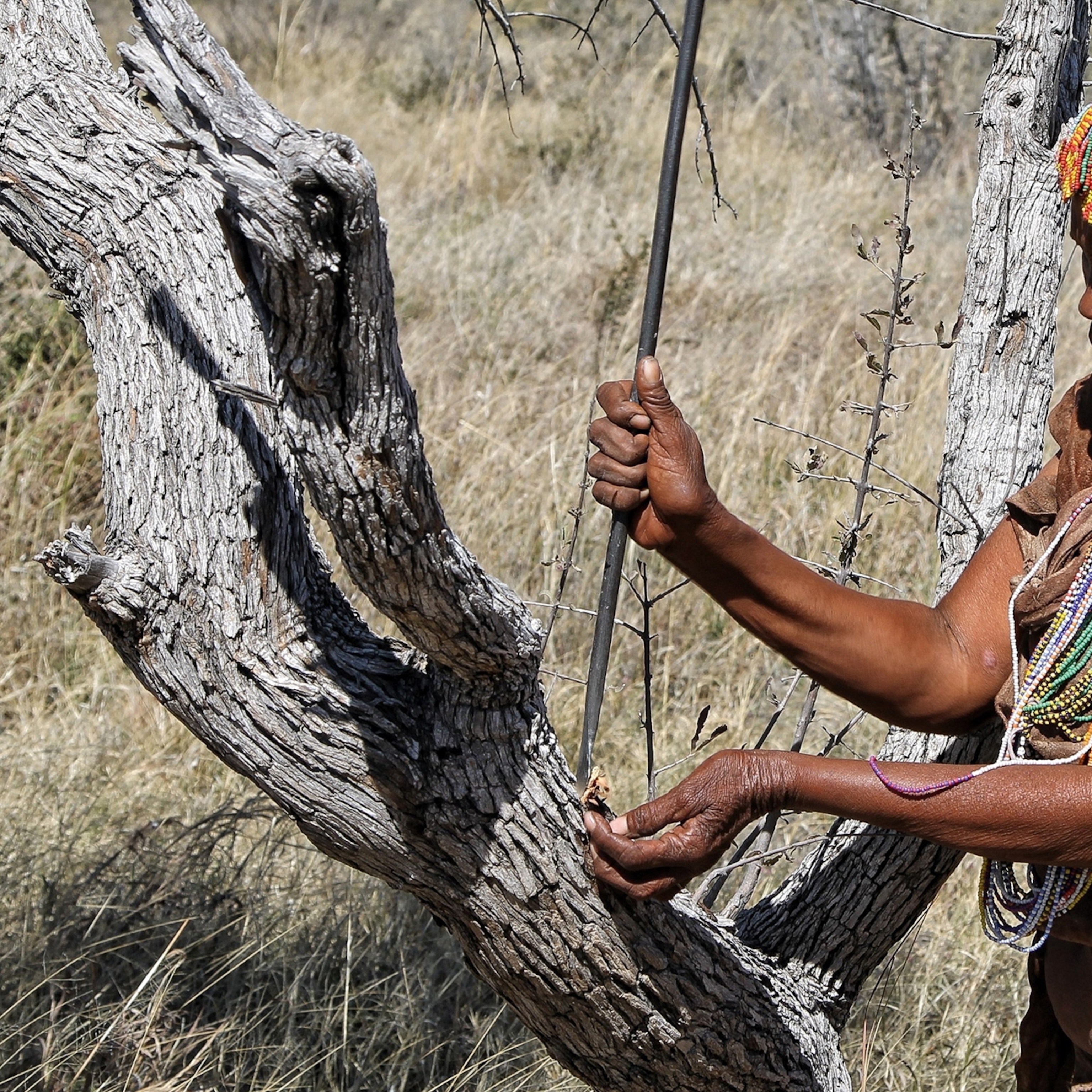
What it's like to go on a bushwalk in the Kalahari Desert
Become a subscriber and support our award-winning editorial features, videos, photography, and much more..
For as little as $2/mo.

Following in the footsteps of elephants on a journey through wild eastern Sri Lanka
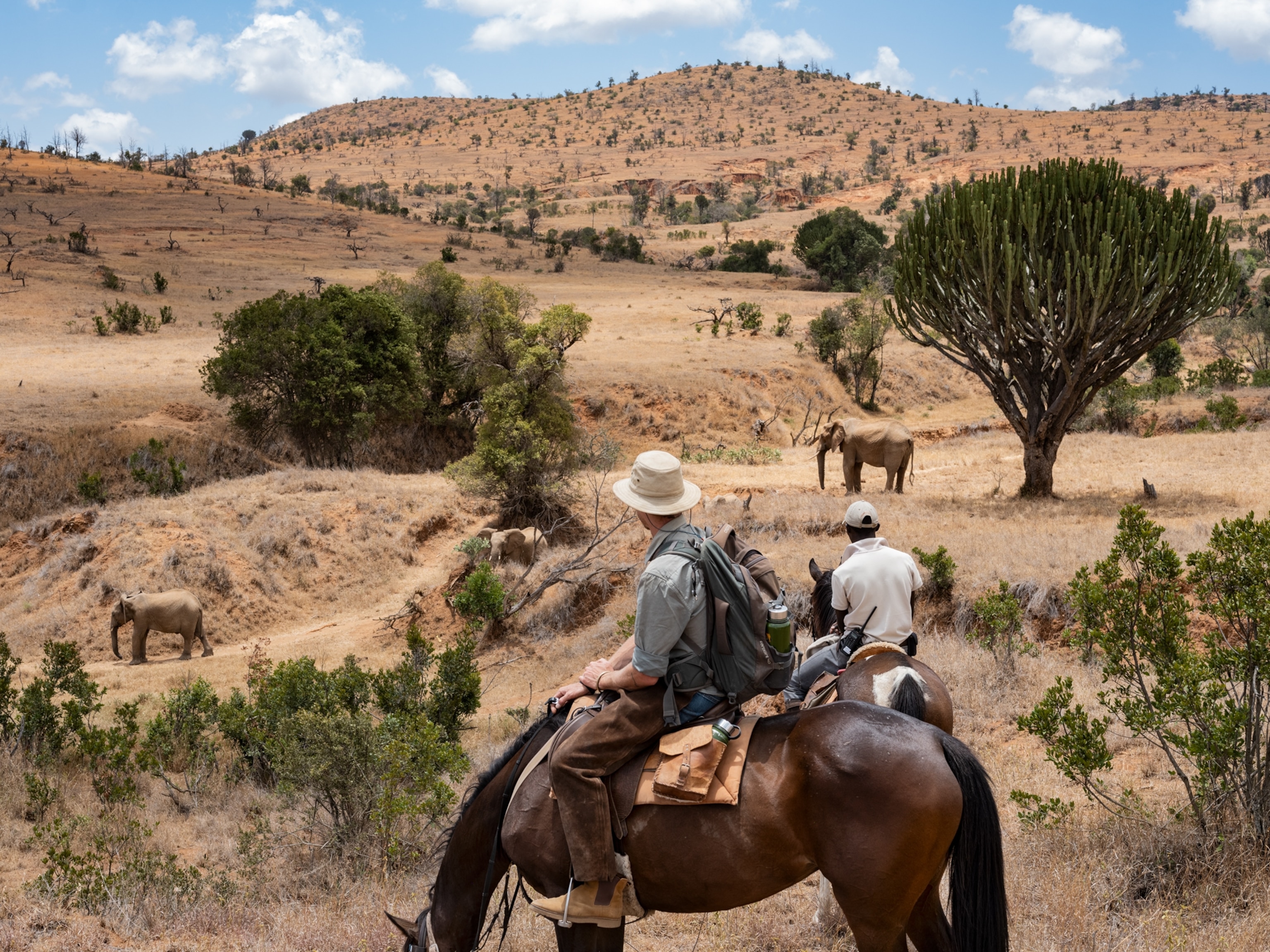
See Kenya’s wildlife in a different light: on horseback

How locals are protecting the wildlife of the Queen Elizabeth Conservation Area

Here are the best ways to get outdoors in all 50 states

The ultimate Andes road trip, from Chile to Bolivia
- Environment
- Paid Content
History & Culture
- History & Culture
- Terms of Use
- Privacy Policy
- Your US State Privacy Rights
- Children's Online Privacy Policy
- Interest-Based Ads
- About Nielsen Measurement
- Do Not Sell or Share My Personal Information
- Nat Geo Home
- Attend a Live Event
- Book a Trip
- Inspire Your Kids
- Shop Nat Geo
- Visit the D.C. Museum
- Learn About Our Impact
- Support Our Mission
- Advertise With Us
- Customer Service
- Renew Subscription
- Manage Your Subscription
- Work at Nat Geo
- Sign Up for Our Newsletters
- Contribute to Protect the Planet
Copyright © 1996-2015 National Geographic Society Copyright © 2015-2024 National Geographic Partners, LLC. All rights reserved

IMAGES
VIDEO
COMMENTS
Discover Victoria Falls, Livingstone, Zambia and Chobe national park in 5 Days Safari trip package takes nature lovers across…. 5. Chobe Full Day Trip. The hotel pick ups commerce around 07:00am, guest are transported by road from Livingstone for about 1hr drive to Kazungula…. 6. Full-day Safari Tour in Chobe.
Find and compare 160 Zambia safari tours offered by 28 tour operators. Explore the wildlife, waterfalls and culture of this wild and off-the-beaten-track country in southern Africa.
Explore Zambia's diverse wildlife, scenic rivers and iconic Victoria Falls with Expert Africa, a specialist safari operator. Choose from tailor-made holidays to South Luangwa, Lower Zambezi, Kafue and more.
Find and book the best Zambia safari tours for 2024/2025 with TourRadar. Compare prices, reviews, destinations, and operators for 19 Zambia tours and enjoy wildlife, culture, and adventure.
Discover 11 hand-picked accommodations across Zambia, from Lusaka to Kafue, Lower Zambezi, and South Luangwa. Enjoy scenic flights, game drives, walking safaris, and river cruises in this wildlife paradise.
Experience the rich wildlife heritage of Zambia at one of the few remaining owner-run operations in the country. Choose from four exclusive camps in Kafue, Lower Zambezi and North Luangwa National Parks and enjoy high quality guiding and conservation.
Explore Zambia's diverse and spectacular wildlife and scenery with various safari activities, such as canoeing, walking, guided and photographic safaris. Learn more about the different types of safaris, birding, and the best parks to visit.
10-Day Cape Town Sabi Sand Safari and Vic Falls Honeymoon. $8,036 to $9,187 pp (USD) South Africa & Zambia: Private tour Luxury Lodge & Hotel. You Visit: Cape Town (Start), Sabi Sabi GR (Sabi Sands), Victoria Falls, Livingstone (End) Discover Africa Safaris. 5.0 /5 - 470 Reviews.
A Luxury Zambia Safari. Zambia has several superb luxury tented camps and lodges located in some of Africa's most remote, unspoiled wildlife areas. Private, all-inclusive luxury packages are available from between $600 and $1200 a day, which is good value compared with luxury safaris in Botswana and South Africa.
Zambia is the birthplace of the walking safari and exploring the diverse ecosystem here on foot allows you to interact with African wildlife in a way that's impossible from a vehicle—tracking lion and leopard with an expert guide and feeling the earth rumble as waterbuck and impala leap through the bush.
Explore Zambia's wildlife, culture and natural wonders with Absolute Zambia Safaris, a leading safari operator in the country. Choose from a variety of itineraries, accommodation and activities to create your perfect Zambia safari experience.
Experience the wild beauty of Zambia with Wilderness, a leading safari operator in Africa. Explore the Victoria Falls, the Zambezi River, and the remote Busanga Plains in Kafue National Park.
Experience two of Zambia's most popular safari destinations: Lower Zambezi National Park and South Luangwa National Park. Enjoy game drives, walking safaris, boat cruises, canoeing, fishing, and more in this 9-day adventure.
Plan your dream safari in Zambia and Southern Africa with Absolute Zambia Safaris, a specialist in bespoke and private guided tours. Explore Zambia's top destinations, such as Victoria Falls, Luangwa Valley, and Lower Zambezi, and enjoy canoe, walking, and photography safaris.
Zambia - Ultimate Wildlife 12-Day Safari. A shorter version of our most popular itinerary emphasizing walking safaris in the remote Nsefu sector of South Luangwa National Park, plus canoe safari in Mana Pools National Park, with 2 master guides. Learn More>. 2024 - $14,198.
Learn from an expert how to plan your best safari in Zambia, from the best parks and lodges to the unique experiences and wildlife. Find out how to get around, what to expect, and what to avoid in this comprehensive guide.
Find the best Zambia safaris and Victoria Falls tours for 2024-2025. Explore the wildlife, rivers, and culture of Zambia with expert guides and luxury accommodations.
Find your ideal Zambia safari lodge or camp from this curated list of 19 options. Whether you want luxury, romance, adventure or wildlife, there is something for every traveller in this diverse destination.
Discover why Zambia is a wildlife paradise with diverse landscapes, rich cultures, and iconic attractions. Learn about the climate, languages, wildlife, and signature camps in this comprehensive guide by African Bush Camps.
Discover why Zambia is a magical safari destination with this ultimate guide. Learn about the best places to visit, when to go, what to do, and how to plan your trip with Go2Africa.
Zambia is the undiscovered treasure trove of Africa. It shelters extraordinary natural beauty and is one of the most pristine and unspoiled wildlife havens on the continent. It is easy to see why Zambia boasts one of the largest areas of land under protection as a national park in Africa.
Discover the best of Zambia's wildlife, culture and adventure with these curated itineraries. From walking safaris in South Luangwa to Victoria Falls and Lake Malawi, find your perfect Zambia safari with Go2Africa.
Experience a true Zambian safari with the most experienced mobile safari team in the country. Choose from pre-set routes, tailor made safaris or semi-permanent bushcamps and get close to nature, value for money and unique service.
Every safari is led by highly credentialed safari directors and driver-guides. Customized journeys are defined by Micato Safaris' well-known personal warmth and treatment of each guest like a relative visiting from out of town. ... South Africa, Botswana, Zambia. Expert-led Nature Wildlife Safari Hiking Expedition + More. Micato Safaris ...
Driven by changing customer tastes towards high-end luxury, safaris offering spa treatments, infinity pools and world-class gastronomy has become the norm. ... Namibia, Uganda and Zambia are also ...